Two Weeks in Japan: A Super Efficient Itinerary for 2024
Before you start to read this itinerary, there’s a very important question you have to ask yourself: Are you a “do it all, see it all” traveler? Or do you prefer to take things slow and steady? If the first describes you: perfect , you’re going to LOVE this itinerary for two weeks in Japan . If you you fall into the second camp, allow me to explain why you might still enjoy this whirlwind tour of Japan without getting overwhelmed…

Why visiting 12 locations in 14 days is completely doable in Japan
The key to see Japan in an affordable and efficient way is the Japan Rail Pass . This pass allows you to take unlimited super fast “bullet trains” between locations, which is critical in a country that is surprisingly big (150% the size of the UK!). Here’s why the bullet train makes it work:
- You can make it between huge stretches of Japan in relatively little time.
- The train is so comfortable, that traveling to your next destination feels relaxing .
- Every train station has coin lockers, where you can store your backpack while you explore a city and haven’t checked into your Airbnb or hotel yet. This means you can pop into a new place, store your stuff, and get going.
Let’s look at the awesome experiences packed into these two weeks, and then you can tell me if you think it’s crazy or kinda clever 😉
Recommended accommodation in Japan
I stayed a lot of places in Japan, but out of those can only recommend a few. Here are the two specific spots I stayed in that I absolutely loved during my time in Japan.
- Sumiyoshi Ryokan (Takayama) – Absolutely the best place we stayed in Japan . Such friendly hosts, amazing traditional Japanese ryokan, and it’s entrancing to see your in-room breakfast get cooked before your eyes. It does get completely sold out at times so booking in advance is advised!
- Nikko Backpackers Nikkoriso (Nikko) – Technically a hostel, we booked a private couples room, which was beautifully decorated. But what made this place special is that the hosts happened to recognize us at the train station and gave us a ride! That was so lucky and so kind.
- Airbnb or Booking.com (any large city: Tokyo, Osaka, Kyoto) – We mostly stayed in Airbnb in large cities. That said, It can be hard to find the location because of the complex Japanese address system, the fact that the addresses are often in Japanese and the hosts sometimes don’t speak much English, so be prepared to improvise 😉
Eating our in-room breakfast at a ryokan in Takayama, Sumiyoshi Ryokan , in the Japan Alps!
At least once during your trip in Japan, I do recommend staying in a ryokan , which is a traditional Japanese inn. You can read my entire post about staying in a Ryokan in Japan to learn what to expect and how to find a ryokan that fits your budget!
How to prepare for a trip to Japan
Here are a few ways I really recommend being prepared before you actually travel to Japan. In a lot of places you can “wing it”, but I think Japan really favors the prepared! Some things are a lot easier (or mandatory) to do before you land in the country.
- Buy a Japan Rail Pass , as they can only be purchased OUTSIDE the country . They’ll mail you a voucher which you can redeem in the airport. I later calculated that the JR Pass saved me more than $450 in train tickets. You can use this super helpful website to compare different Japan Rail Passes to see which one makes the most sense for your trip – both financially and in terms of the areas you want to visit.
- Plan your train travel with Hyperdia – Hyperdia is an amazing English-language timetable tool for Japanese trains. You can also use it to calculate whether the Japan Rail Pass will save you money based on your Japan itinerary by looking at the standard train costs.
- Get an offline-friendly Japan guidebook – It can be very useful in Japan to have a guide available offline. I personally don’t like to rely on my phone to get around! I tried 3 different travel guide books for planning my trip, and this travel guide book was the best one (and was just updated).
2 weeks in Japan
Here is what you’re going to see in this incredible two week Japan itinerary! One important thing to note is that this itinerary is optimized for seeing cherry blossoms in Hirosaki , in northern Japan. If you are not visiting during the later part of the cherry blossom season, you can swap out Hirosaki for another destination. I would’ve loved to spend more time in Osaka or Nikko, so those are great options for extending your trip!
Where to go for two weeks in Japan (especially during cherry blossom season!)
Day 1: Arrive in Tokyo
Day 2: take the train to kyoto, day 3: enjoy the highlights of kyoto, day 4: day trips to fushimi inari shrine & nara deer park, day 5: remember the history of hiroshima.
- Day 6: Miyajima, Himeji, Osaka
Day 7: Take the train to Takayam in the Japan Alps
Day 8: day trip to shirakawa-go, day 9: travel to aomori in northern japan, day 10: spend the day at the hirosaki cherry blossom festival, day 11: experience beautiful nikko.
- Day 12-13: Tokyo
- Day 14: Mt. Fuji
Today is about getting adjusted. About realizing: OMG I am in Japan right now , and my universe is in chaooooos! There’s no pressure to do anything in particular besides finding your hotel or Airbnb, try to order food in Japanese for the first time, and experience a
<a href="http://www.bbc.com/news/world-asia-38660860” onclick="ga(‘send’, ‘event’, ‘Affiliate Link’, ‘Click’, event.target.getAttribute(‘href’));”
target=”_blank">complicated Japanese toilet .
No pressure, right?
Tokyo’s Ginza , an upscale shopping district. Streets are lined with shops carrying Chanel and Prada. This area in the heart of Tokyo is very close to the Tsukiji fish market , where my top Tokyo restaurant recommendation is located!
That said, depending on when you arrive you might have some time to really spend exploring Tokyo. We’re going to come back to Tokyo at the end of the trip, so our first day is really just about getting faimiliar with the city. Here are a couple of ideas of things to do in Tokyo
Things to do in Tokyo for first-time visitors to Japan
- Go to Tokyo’s famous Robot Restaurant. It’s just one of those things that is “so Japan” you have to see it to believe it. During this 90-minute show robots in costumes sing and dance while you eat dinner and down Japanese beer. Book Robot restaurant tickets in advance because as weird as it sounds, this is a super popular thing to do.
- Enter an immersive digital art museum. This limited, interactive art show is one of the most popular things to do in Tokyo. There may literally not be a better place in the city for instagram photos than this. Book tickets to the teamLab Borderless Digital Art Museum (children 3 years old and younger can enter free!).
- See Tokyo by night from its tallest building, Tokyo Skytree. Last admission is at 9:00PM, and you can even buy skip the line tickets before you go. We didn’t have skip-the-line tickets and ended up waiting almost an hour to get to the top. If you want to make it even more memorable, you can have dinner overlooking Tokyo at the Skytree’s Panorama restaurant 😱
- Just explore your neighborhood. It’s pretty much guaranteed that no matter where you stay, there’s going to be an awesome point of interest right in your vicinity. Go outside, pop into a totally overwhelming electronics store, accidentally go into the “adult” section of the comics shop , pass by noisy pachinko parlors. There is nothing like people-watching in Japan.
- Get your first sushi meal! I had the best sushi of my life at Sushi Zanmai (すしざんまい 本店) which is located in the super famous Tsukiji fish market . You can also try out conveyer-belt sushi , which is an experience of its own. Indulge in some sake while you’re at it!

The delicious, unique, and sometimes strange regional dishes and street foods of Japan that you simply won't find anywhere else.
After your first night in a probably miniscule Japanese hotel, the next morning is time to hit the road for Kyoto, where we’ll spend three nights!
Kyoto is considered the cultural capital of Japan. Why not? It was Japan’s official capital for nearly 700 years. Here you’re going to get a real taste for what traditional Japan was like, by visiting shrines and temples erected hundreds of years ago (or more!). Besides architecture, Kyoto also has an incredible food scene. Here is where you can try Japan’s famous multi-course meal, called kaiseki .
But we’ll get to all that later!
For now, store your stuff in a coin locker at the Kyoto train station and catch the bus or train to the Saga-Arashiyama Station . Getting from there to our first stop, Tenryu-Ji is as easy as following the flow of people. After that, we’ll visit the neighboring Arashiyama bamboo forest . The final stop of the day is the super shiny Golden Pavillion .
For more details, you can read my in-depth Kyoto itinerary , but the main points are all mentioned here in this post!
Get ready to start taking off your shoes! Every shrine or temple you visit will require that you remove your shoes to enter. Luckily these places have soft wooden or tatami floors, so removing your shoes feels like a relief after long days of walking. And don’t worry – no one will steal your shoes. This is Japan ✌️
Here you’ll wander around the shrine. Starting with the building and its many exterior halls. Afterwards, venturing into the zen garden, which is the real star. There are many beautiful plants and flowers, such as the Japanese wisteria, which you never see outside Japan. They’re all labeled in English and Japanese. It was also here that I saw my first cherry blossom tree in Japan! Even though we were way too late for cherry blossoms in Kyoto, this late bloomer stuck around. It was pretty special to see it just chillin’ in the garden.
Tenryu-Ji is conveniently located right next to the Arashiyama bamboo forest . You can simply follow the signs and you’ll find yourself at its entrance.
Bamboo Forest
Let me be the first to tell you: this bamboo forest is kinda small . At least, I was expecting something much more massive! That said, it’s clearly one of the essential experiences to have in Kyoto so I wouldn’t pass it up. You’ll walk through in 10-15 minutes (depending on how determined you are to take a photo with no people in them). Be sure to bring a wide-angle camera lens in order to really capture the super tall bamboo. I was severely lacking one and my photos reveal that!
From the Bamboo forest, take the bus to the Golden Pavillion (Kinkaku-ji) . The bus ride takes a little under an hour and involves a transfer, but you’ll get to see a bit of the city of Kyoto on the way!
Golden Pavillion
The Golden Pavillion was probably the place where I realized: holey moley, there are a LOT of tourists in Japan . It was so incredibly crowded, and getting a decent view of the pavillion was pretty difficult! People just tend to bunch up at the best photo spots, taking what feels like a dozen pictures, and then sticking around to chat!
That said, the pavillion is obviously super impressive and beautiful. Reflected in the lake, it’s no wonder this is securely in the top 3 things to see in Kyoto! From the vantage point of the photo, you can wander around the pavillion’s surrounding gardens.
I also have to say that this is the place where I had my first ever Japanese-flavored ice cream . Gernot had the green matcha, and I took the black sesame. It was actually some of the best ice cream of the trip, so even though it’s expensive and touristy, it was perfect!
Which brings me to another thing about Japan: walking and eating is considered grossly uncivilized in Japan. We realized this was true, for the first time, when everyone was sitting in a room to eat their ice cream instead of walking around.
After the pavillion, it’s time to come back to the train station, grab your stuff, and check into the hotel or Airbnb where you’re staying. At this point, it’s well and duly time for dinner! Kyoto is famous for haute cuisine , so you can get an extremely fancy multi-course meal in Kyoto.
Enjoying the photos? Follow along on Instagram!
Follow @notanomadblog for beautiful travel photography and stories of our journeys
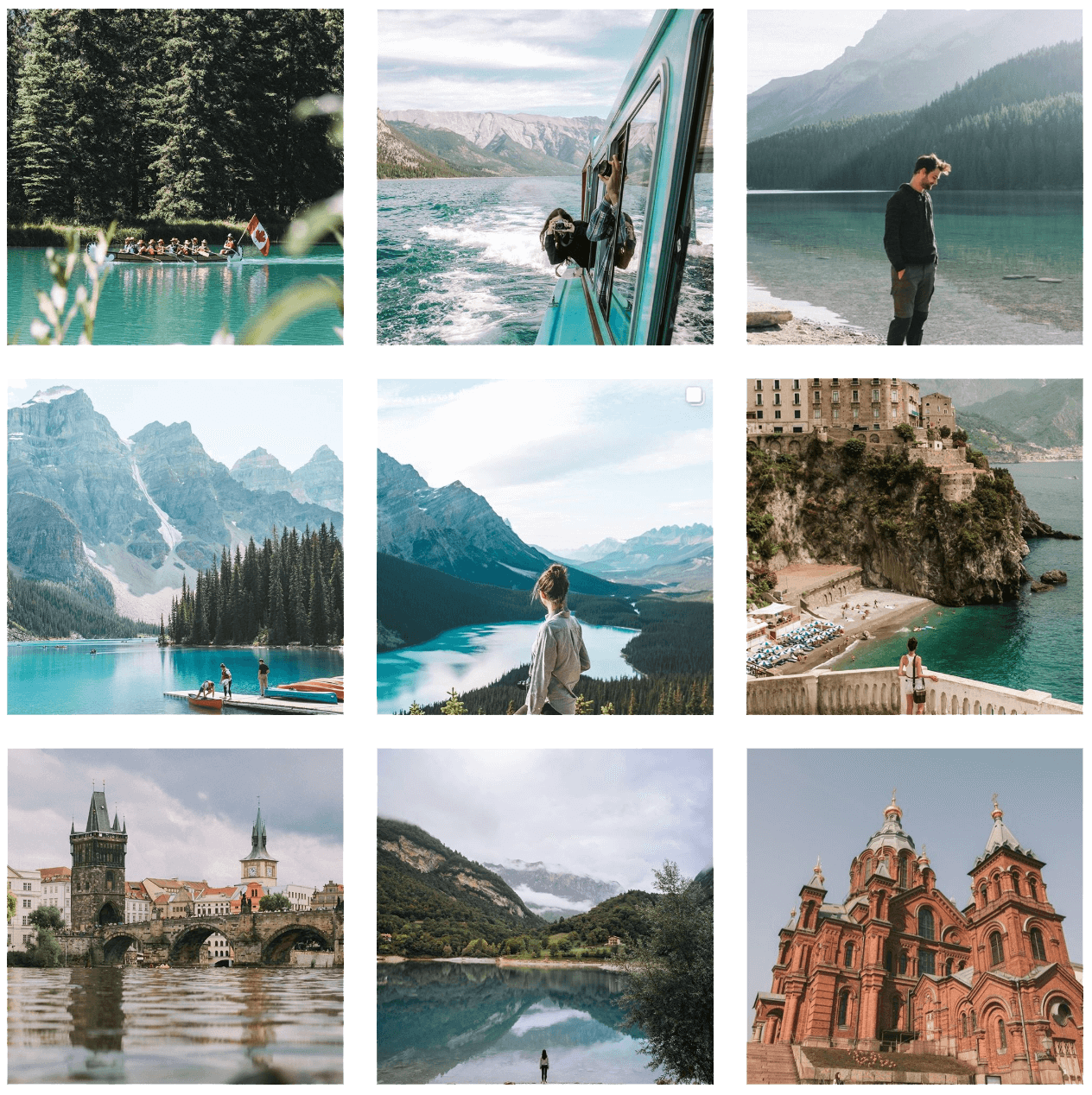
Follow on Instagram
Today is the main day to discover Kyoto, so be sure to start early! Your most efficient path would be to start your morning at the Nishiki Market , take the bus to Gion , and then spend the day in East Kyoto in the Higashiyama area. After following that path and seeing tons of temples, shrines, and beautiful streets, you’ll end up close to Philosopher's Path , where you can walk a long the stream and enjoy some solitude!
Nishiki Market
If you’re set on trying all the weird foods you can find in Japan, Nishiki Market is an absolute goldmine. This relatively small market hall spans several streets, and offers snacks and produce which you can pick up to sample some traditional Japanese food. Here is where I tried tako tamago , the infamous candied baby octopus stuffed with a quail egg. It’s not for the faint of heart, but it’s the only place I saw it while in Japan!
Gion is Kyoto’s famous geisha district . This is really the epicenter of geisha culture in Japan, and the place which has the most traditional rules regarding who can become a geisha. Outside Kyoto, there have been very few non-Japanese geisha, whereas in Kyoto it is completely not allowed.
Can you see the geisha (or more likely, geisha-in-training) hustle down the street in her red kimono?
From Gion, we’ll walk towards the world famous hub of Kyoto’s best-known shrines and temples: Higashiyama . Southern Higashiyama is the place to be for the very best the area has to offer!
Higashiyama
Chances are if you’ve looked up photos of Kyoto, you’ve seen mostly pictures of Higashiyama. The rest of the city is very modern and, I must say, not so beautiful in comparison to the historic Higashiyama district.
- Sannenzaka and Ninenzaka – The two most beautiful streets in Higashiyama. The former is the location of the famous stairs. Most of the houses have been converted into souvenir shops. It can get pretty crowded at mid-day, so come either first thing in the morning or around dusk for a less cramped experience.
Besides the beautiful streets, there are loads of shrines and temples for you to visit. Here are a selection of my favorites:
- Kyomizu-dera – This area is one of the busiest and best known in Kyoto for a reason. The view out over a sea of trees is hard to match – and in cherry blossom season, they’re also in bloom.
- Kodai-ji – This place has got a yuuuge zen garden. Come here for one of the nicest zen gardens you can find in Kyoto.
- Shoren-in – An oft-skipped but totally majestic Buddhist temple at the end of the Higashiyama route. Not crowded, gorgeous gardens, many winding corridors for you to explore. This place will make you want to live in your own Japanese villa one day! Read more about Shoren-in
After Shoren-in, you can walk to the Philosopher’s Path (2.3 km, found on Google Maps as Tetsugaku-no-michi ). This path along a narrow river is lined with cherry blossom trees in Spring. If you decide to talk this walk, you’ll end up near the Silver Pavillion . If you’ve still got energy, you can check it out! Otherwise, I recommend grabbing dinner at Asian Cample Foods Goya for a taste of delicious Okinawan food .
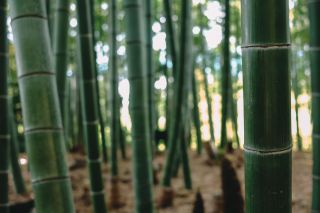
Here are the best things to do in Kyoto that deserve a place on your two or three-day itinerary. From world-famous food to ancient temples and interesting day trips.
Imagine this: a capital city full of thousands of docile, free-ranging deer. If this sounds like your idea of paradise, you can’t miss Nara, Japan .
But first, it’s time to visit one of Japan’s most famous landmarks.
Fushimi Inari Shrine
These dizzying rows of red Torii are a photographer’s dream: if you can manage to capture an empty shot. I saw some of the thickest crowds of the whole trip when visiting these shrines, so be sure to give yourself some extra time if you want to focus on photos!
To get here, you’ll need to take the JR Line from Kyoto to Inari . After your time at the shrine, pop back on the train and continue to Nara.
The very first capital of Japan, Nara is humble by today’s standards. The city center is small, and the population a mere 360,000 inhabitants. But don’t let that fool you: Nara has some of the most unique experiences to offer on the Japanese itinerary:
- Todai-ji – The world’s largest wooden building. Inside, a massive Buddha. You can try to climb through its nostril (a sign of good fortune).
- Isui-en – One of the best gardens we saw in Japan. That, plus a personal tour from a member of the staff, made the story behind the garden really come alive.
- Nara Park – Over 1,200 free roaming deer. Keep your map close, they will eat anything. Note that if you buy biscuits in Nara, those are for the deer , not you.
Sadly my camera died in Nara so I have very few photos to share. You’ll have to see for yourself!
Left, Isui-en Garden, Right, Deer 😂
Plan a solid half-day for Nara, if not more. We spent a lot of time walking around Nara Park, there is a lot to explore and hiking paths if you want to speak more time walking around!
Spend your last night in Kyoto and wake up early to catch the train down to the southernmost post on our itinerary: Hiroshima .
I will start by saying that Hiroshima is simply not a beautiful city. It was hastily rebuilt after the tragic events of World War II and the destruction of the atomic bomb. As a result, you won’t find charming alleys or old merchant districts. Instead, you come to Hiroshima to get a glimpse into the lives of the people who both died and survived as a result of the bomb, and the effects it’s had on the community.
The Atomic Bomb Dome
This is the singular building that was left standing after the atomic bomb devastated Hiroshima. You should absolutely visit the Hiroshima Peace Memorial Museum . The museum really toes the line between giving a realistic look at the consquences of the bomb, while also shielding you away from some of the more gruesome details (meaning, it is still suitable for children).
Hiroshima Castle
This is the first castle on our trip to Japan, and to be honest, it’s a bit underwhelming. The interior has been completely gutted to turn into a museum (on the up-side: you can get your photo taken in a samurai outfit!). Don’t worry, we’ll end up at the mother of all Japanese castles later.
Here are some more ideas for things to do while you’re in Hiroshima, after you’ve visited the museum, the Peace Park, and seen the flame that remains lit until the last nuclear weapons on earth are destroyed.
Things to do in Hiroshima
- Hiroshima is the birthplace of
<a href=”/regional-cuisine-street-food-to-try-in-japan/#okonomiyaki” onclick="ga(‘send’, ‘event’, ‘Affiliate Link’, ‘Click’, event.target.getAttribute(‘href’));”
target=”_blank">Okonomiyaki , and the city does it like nowhere else. Combine that with
<a href=”/regional-cuisine-street-food-to-try-in-japan/#oysters” onclick="ga(‘send’, ‘event’, ‘Affiliate Link’, ‘Click’, event.target.getAttribute(‘href’));”
target=”_blank">oysters
and you’re eating the most quintessential regional dish. Be sure to visit Okonomi-mura (Okonomiyaki Village) for the epicenter of Oko-eating in the city.
- Hiroshima is also famous for its nightlife. If you’re looking for a wild night, Hiroshima might just be the place to have it.
- Mitaki-dera is a very special and unique shrine in the northwest of Hiroshima.
- Ride the vintage tram. Hiroshima prides itself on having a super old-fashioned tram system, complete with cars from the 70s! Blast from the past, yoo.
Spend the night in Hiroshima and wake up early, we’re going to Miyajima!
Day 6: Miyajima, Himeji, & Osaka
This is our crazy day. Start in Hiroshima, take the JR Ferry to Miyajima. Spend some time on the island, catch the ferry back, connect to a train to Himeji. Spend the rest of the day exploring the castle and grounds until it closes. Wind up in Osaka to start binging on street food.
Are you ready?
I’ll start with this preface: If you’re not set on exploring Hiroshima by night, I’d encourage you to spend the night on Miyajima instead. This island in Hiroshima bay is home to one of the top 3 national sights in Japan, and is one of the most visited locations in the entire country. You can beat the first boat ride in and have a Miyajima at sunrise all to yourself!
Things to know about visiting Miyajima
I’ve already written a bit about things to do on Miyajima besides seeing the shrine so I won’t duplicate the information here. Here is a quick summary of things you need to know when visiting Miyajima:
- Don’t take the “scenic boat ride” around Hiroshima’s harbor, just go for the JR Ferry. As I mentioned, Hiroshima is not very scenic and its harbor is no exception. It costs more and takes longer.
- Take the ropeline to the top of the mountain for a view over the bay. Along the way you’ll see many treasures ^__^
- If you’re collecting souvenirs, buy a rice paddle in Miyajima. It’s the essential Miyajima souvenir!
- Skip paying to go out onto the dock in front of the shrine – the best photos can be taken from the shore anyways, and you can just walk around to the other side without paying.
- Be sure to plan your visit in tune with high tide! At low tide, the water recedes and you miss the “floating Torii ” illusion.
Did I mention there are also deer on Miyajima? They’re more aggressive than the Nara variety. Guard your map!
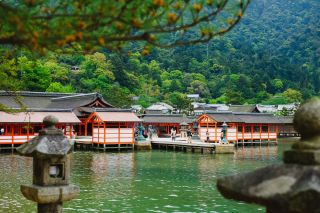
Anyone and everyone who goes to Japan has probably seen the famous floating Torii on Miyajima Island – but far fewer see Mt. Misen for sweeping views over Hiroshima bay.
After taking the ferry back from Miyajima to the mainland (you want the Hiroden-miyajima-guchi station ), hop on the train to Himeji. We’ll spend the rest of the day here until the castle closes at 5PM. Upon arrival, lock your backpack in a coin locker and catch the bus to the castle from the train station.
For the uninitiated: Himeji Castle is perhaps Japan’s most famous and best-preserved castle. It’s meant to resemble a bird in flight, and is known as the “White Heron Castle.” It has survived extensive bombing of the surrounding city during World War II as well as a massive earthquake in the mid-nineties. Himeji is here to stay.
If you have time, there are also samurai quarters to explore in the vicinity. You can buy a combination ticket for the castle and the quarters at the entrance. Unfortunately we couldn’t make time to see those before leaving, but they’re reportedly really interesting.
Important! Check the train times to make sure you’ll be able to catch a train to Osaka shortly after the castle closes.
If there’s one place I feel I didn’t get enough time, I’d have to say it was Osaka. It’s got such a cool, alternative vibe when compared to high-heels-and-Prada Tokyo. It’s most famous for its street food, and it considered the foodie capital of Japan . If you’re here to eat everything in sight, Osaka is a wonderfully dangerous place to end up.
Where to stay in Osaka
If you have just one night in Osaka, there’s no other place to stay than Dotonbori . The neighborhood’s eponymous street is THE definition of the loud and chaotic Japan. The first thing that happens as you approach is that you smell SO much food. Street vendors cook takoyaki in giant, metal trays filled with fried balls of dough and minced squid. If you don’t come hungry to this street, you are making a huge mistake!
Besides food, this street is also famous for its moving, animal billboards. Cows, crabs, and pufferfish are just a few of the giant electonic puppets looming over the heads of pedestrians.
Things to do in Osaka
- See the famous Glico Man sign at Ebusu-bashi bridge. This is perhaps the most recognizable landmark in Osaka (that’s right: a giant illminated sign).
- Go to the Osaka Castle , one of the prettiest in Japan with its teal and gold coloring.
- Eat Honetsuki-dori ! This was one of my most memorable meals in Japan. You basically get two choices of chicken (young chicken or old chicken) and then you can choose from sides, which are mostly also chicken.
- As mentioned, eat the takoyaki!
- If you’re feeling adventurous (and spendy), you can splurge on a plate of Fugu (pufferfish, which can be deadly if not cooked by a licensed expert).
- Osaka also has a huge aquarium, which you can visit if you decide to spend more than a night in this city.
Don’t get too comfortable: after a lazy breakfast and a sobering view of Osaka by day, it’s off for a culture shock on top of your existing culture shock. We go from always-on Osaka to sleepy Takayama in the Japan alps.
You read me right: Japan has got its very own range of alps. It contains three mountain ranges: Akaishi mountains, Kiso mountains, and Hida mountains. We’re going to the latter, to the Hida region.
Absolutely do not forget to book the Wide View train for your ride through the mountains! You’ll get a train with enormous glass windows, perfect for day dreaming about your imaginary life in the Japanese countryside a la My neighbor Totoro .
For us, Takayama seemed the perfect place to check in to a traditional Japanese inn, called Ryokan . This has got to be one of the top experiences to try in Japan , and if you’re not in a big city like Kyoto, you can do it for a bit of a better price.
Why you should stay in a Ryokan in Japan
- You get to dress up in Japanese dress. You can put on a Yakuta (a summer kimono) while you eat your delicious, amazing, unidentifiable Japanese breakfast.
- Experience Japanese hospitality. Our hosts were so kind and hilarious. At times it was a challenge to communicate, but with patience and humor anything is possible.
- Onsen minus public nudity. If you aren’t familiar with the Japanese concept of onsen , it’s basically a super hot public bath where head-to-toe nudity is mandatory. You shower off before getting in, and they’re divided by gender. Our ryokan had a private onsen you could visit with your partner. It’s awesomeeee.
Be sure to consider Sumiyoshi Ryokan when you go to Takayama! Room rates start around 150 EUR so it’s not cheap, but it’s absolutely going to be the most memorable place you stay on your trip!
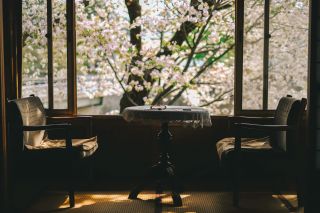
Staying in a Ryokan in Japan is supposed to be one of the top ways to experience authentic Japanese culture. But is it worth all the extra money, which can run up to a thousand dollars per night? Let's see!
All checked in and cozy? Here are some ideas of what to do during your time in Takayama.
Things to do in Takayama
- Stroll around the Edo-era merchant district . The houses are very well preserved, although many have been converted into souvenir shops.
- Try Hida beef , the local variant similar to Kobe beef. You can go to various grill-your-own joints for a fancy experience, or get a skewer for a couple bucks at the morning market.
- Visit the morning market for handcrafted souvenirs. There are two markets, but the one along the river is far better for souviners. You can get wooden carvings made from the Japanese Yew, chopsticks in all configurations and price ranges, and of course a lot to eat.
- Indulge in a box or two of sake! Takayama has a prominent sake industry, and you can recognize sake spots around town by the dried cedar balls that hang in front of the front door.
- Buy your Japanese souvenirs, period. This is where we bought our one serious souvenir from Japan, which is a gorgeous black and gold teapot. It cost around 80 EUR (which is a pretty standard price for teapots, believe it or not!)
- Visit “Little Kyoto”. Now that you’ve been to Kyoto, you’ll realize: Takayama’s temple district is nothing like that of sprawling Higashiyama in Kyoto, but there is one distinct difference: you have the place to yourself.
Enjoy breakfast in your Ryokan , check out the morning market, and in the early afternoon, hop on a bus to Shirakawa-go.
Shirakawa-go, is one of the tiny tiny villages where people still live in thatch-roof houses. Every 30-40 years the roofs are replaced by 200 community members and volunteers working quickly over two days. The town itself is a UNESCO World Heritage site, and you can go inside several of the thatched houses and learn more about life in the village.
What to know before visiting Shirakawa-go
- Shirakawa-go is visited by massive tourist crowds. No one in the blogosphere seems to admit this, but it’s a simple fact: Shirakawa-go experiences hit-and-run by tons of tourist groups.
- That said, your best option is to spend the night in Shirakawa-go in order to get a more authentic and private experience.
- Shirakawa-go’s scenic overlook is not accessible in winter. If you’re traveling to Japan in Winter, the location where you can see the entire valley at once is not accessible when the path is snowed in.
After visiting Shirakawa-go, spend your last night in Takayama. Enjoy breakfast the next morning, because it’s time to hit the road and head north.
I will start with this: If you’re not visiting Hirosaki during cherry blossom season, I’m not sure it’s worth it . The town itself is pretty lackluster, and it’s the park filled with 2,500 cherry blossoms which makes this location truly spectacular and yet under-the-radar for western visitors.
That said, Hirosaki is probably one of the few places where we really felt like we weren’t just one of thousands of western tourists. Almost everyone in the city was either Japanese, or traveling to Japan from a neighboring country in Asia. For that reason, it was really cool to visit somewhere that felt a little undiscovered by people like us.
The trip from Takayama to Hirosaki takes about 8 hours, so most likely, you’ll arrive in the early evening, with enough time to see Hirosaki’s cherry blossoms illuminated by night.
After spending the night in the park, grab dinner at
<a href="http://www.kadare.info” class="place” onclick="ga(‘send’, ‘event’, ‘Affiliate Link’, ‘Click’, event.target.getAttribute(‘href’));”
target=”_blank">Kadare Yokochō . This food hall is a favorite with locals, and offers a ton of options. You can read more about what to try here in my guide to Hirosaki.
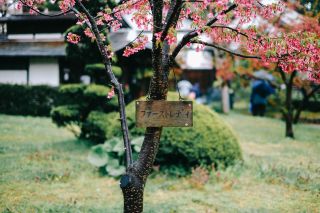
Few Western visitors ever experience northern Japan, but Hirosaki's immense Castle Park bursting with blossoms, bridges, and moats is an unbeatable reason to come north during Cherry Blossom Season. It's even illuminated at night. Come see for yourself!
The next day, it’s time to enjoy the park in all it’s bright and blooming glory. The park is overflowing with flowers, idyllic Japanese-style bridges, petal-filled moats, and one of the coolest sights: Sakura Tunnel .
I imagine this place also looks spectacular in Autumn, but I can only tell you: it’s gorgeous in Spring, and perfect if you’re making a late Spring trip, where the cherry blossoms in more southerly locations will have already gone.
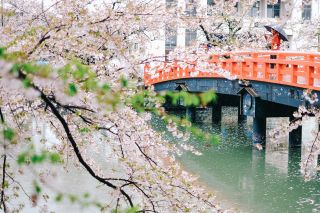
Catching a glimpse of sakura in Japan is more than a matter of timing and luck. When and where to see cherry blossoms all throughout Spring!
Tonight, take the train to Nikko, Japan, a town a short way from Tokyo but packed full of historic locations and natural wonders!
I made a critical mistake when coming to Nikko. I came during Golden Week, which happens at the beginning of May. During this time, the entire country of Japan is basically on vacation, and of course, where do they go on vacation: why, Nikko!
And it’s no wonder: Nikko was once a favorite retreat for the emperor, once he had moved his residence from Nara to Tokyo. As a result, Nikko has some of the most concentrated famous sights in Japan. In fact, a huge swath is a designated UNESCO World Heritage Site. For a small town, this place has got a lot going on.
Things to do in Nikko (AKA more shrines 😄)
- Shin-kyo – The most famous bridge in Nikko (pictured above). There’s a fee if you want to cross it, but perfectly good photos can be taken fo’ free.
- Tosho-gu – This group of buildings that comprise the Tosho-gu shrine comprise several buildings. Each structure offers something different. Here are a few of them:
- Yomeimon (Gate of Sunlight) – Perhaps the climax of Nikko’s temple district, this gate is unique because it’s just so gaudy . Gold everywhere, super ornate. The only problem is that it’s currently under rennovation until March 2019.
- Naikiryu (Crying Dragon) – Enter the Yakushi Hall at Tosho-gu and see, painted on the ceiling, an enormous dragon. It’s believed that the sound of wooden blocks clapping together in this room sound like the dragon is crying (depends on how imaginative you are if you ask me!)
- Kegon Waterfall – I didn’t have time to see this myself, but if you stay a little longer in Nikko, you can take the trip here. Nikko has a few other waterfalls, but Kegon is easily the most popular.
Now, after all of this, I was honestly left pretty overwhelmed by Nikko. 99% because the crowds were so dense, it was totally uncomfortable to view some of these places. The other 1% was probably actually being underwhelmed because of some of the construction that covered the coolest structure, Yomeimon .
Actually, I wanted to LEAVE. Luckily, Nikko still had something waiting for me…
Kanmangafuchi Abyss
After a tasty and expensive slice of cheesecake and coffee at Nikko Coffee , we embarked on a walk to the Kanmangafuchi Abyss . This natural canyon in Nikko is like the polar opposite of Tosho-gu . Somehow no one else knew that there was this natural treasure just a kilometer away from the popular shrines. It turned out to be one of the most beautiful places in Japan .
On your way in, these statues line the path to the gorge. It’s said that it’s not possible to count the name number of Bake-jizo on your way in as on your way out. You’ll just have to try for yourself! (Spoiler: I failed, but I don’t blame any inanimate objects for that).
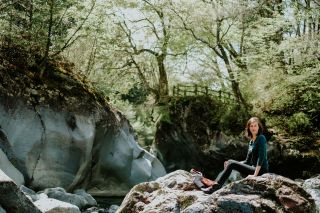
With UNESCO World Heritage sites galore, Nikko is a popular day trip from Tokyo. But the best part of Nikko just a little over a kilometer away from the most popular shrines, in a small gorge with its own shrines, whirlpools, and waterfalls called Kanmangafuchi Abyss.
Enjoy your time in Nikko, because after this it’s back to the big city! Pick up your stuff from the hostel, hop on a train, we’re going to Tokyo…but for real this time.
Day 12 and 13: Time for Tokyo
A lot of people who come to Japan spend a lot of time in Tokyo. I mean, it makes sense: it’s got the most restaurants per capita in the world, you could spend a lifetime exploring every conceivable experience this city can offer. That said, I didn’t try to do Tokyo hardcore. For one, I actually visited friends while here, which tends to make everything a little less go-go-go. On the other hand, there is just so much there, your chances of “making a dent in Tokyo” are miniscule, so why try!
Ideas for what to do in Tokyo
- Ascend the Tokyo Skytree. If you’re scared of heights (like me), this place is going to make you SO NERVOUS. The highest point in the city, on a clear day you can see Mt. Fuji which is 100 kilometers away.
- See the faithful Hachiko statue at Shibuya station. Perhaps you’ve heard the story of the faithful dog that waits for years at the train station, even 9 years after his owner has passed. If you want to see this world famous symbol, head here – also a popular meeting place!
- Take a walk through the Yoyogi Park. You’ll see buskers, groups of friends, maybe even the famous
<a href="https://www.youtube.com/watch?v=BLl9GERTMYg” onclick="ga(‘send’, ‘event’, ‘Affiliate Link’, ‘Click’, event.target.getAttribute(‘href’));”
target=”_blank">Tokyo rockabilly dancers .
- See the Shibuya Crossing. One of the most famous sights in Tokyo, this crosswalk is the busiest in the whole world. If you’re in the area, be sure to check it out – you can get a view over it from a 2-storey Starbucks across the street.
- Visit the Tokyo National Museum. Learn more about the culture and history associated with Japan in this museum. It’s got art, statues, scrolls, outfits, armor, pottery – so many things you can see develop over time with the Japanese people.
- Eat a meal at the Tsukiji Fish Market . If you missed it on your first night, now’s the time to come back! Wake up at the crack of dawn to see the daily haul of tuna, or come by in the evening to grab some dinner.
- If you haven’t gotten enough of shrines, check out Meiji Shrine. Easily the most popular shrine in Tokyo! Unlike so many shrines, admission here is free.
- Do some luxury shopping in Ginza. Essentially every world famous fashion brand has a flagship store in this shopping district. If you’re a luxury traveler, this might be the perfect place to pick up your Tokyo souvenir.
- Go to Harajuku and feel extra ordinary. This area has some of the most eccentric people you’ll see in the city, with the very best outfits and hairstyles. It’s a must-see area if you love people-watching!
- Stock up on electronics in Akihabara. Known affectionately as Electric Town, Akihabara is a bright and loud neighborhood and home to the largest electronics store in the world, Yodobashi Akiba .
- Got more time in Tokyo? Find more things to do in this Tokyo 5-day itinerary or go to one of many amazing day trips from Tokyo .
After your last day in Tokyo, take the train to Kawaguchi-ko and sleep at the base of Mt. Fuji. Wake up early the next morning to enjoy the mountain!
Day 14: Spend the day at Mt. Fuji and fly home in the evening
It’s the last day, you can do it! Get up as early as you can muster to see Mt. Fuji in the morning light, reflected in Lake Kawaguchi. Conventional wisdom states that your best viewing of Mt. Fuji happens first thing in the morning, but for us, the mountain became more visible as the day went on. By the end of the day, it was clear and big and blue.
I’ve gone in-depth about the best places to view Mt. Fuji , especially if you’re going in Spring, but one thing I can’t help but mention here is the Pink Moss Festival ! You can take a bus here from the main station in Kawaguchi-ko, and travel to a spot closer to the mountain that is just covered in pink flowers.
In terms of booking tickets to the festival, I just happened to discover it thanks to a brochure in my hotel. Check the website for admission tickets. There’s also tons of different ways to get to the location by bus, just check on the website’s “Access” page.
In 2019, the Pink Moss Festival is happening from April 13th - May 26th ! That means you can still visit this year if you’ll be arriving between now and the end of May.
How cute is this? There’s even a mini-Fuji made out of flowers! After you’ve had your fill of flowers and too-perfect shots of Mt. Fuji, take a bus back to down and spend any free time you have walking around the lake and walking around town. Get your last matcha ice cream or any last-minute Fuji-themed souvenir.
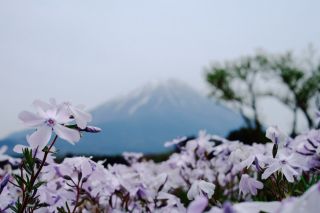
Spring is one of the best, most magical times to see Mt. Fuji of the whole year. Here are several vantage points that offer the most impressive view of "Fuji-san", plus tips on predicting Mt. Fuji's visibility.
Alas! It’s time to take the train back to Tokyo, transfer to transport that’ll take you to your airport, and start the long journey home.
And that’s a wrap!
Have you ever been to Japan? Or are you planning a trip RIGHT NOW? Would love to know about anywhere I missed in my itinerary or what you would do differently! Leave a comment with your thoughts!
Did you find this post useful? Pin this post for later!

About the author
Hi there! I'm Monica, an American expat living in Germany for over six years and using every opportunity to explore the world from my homebase in Berlin. My goal is to capture my memories in photos and posts that show how easy it is to start from scratch and travel the world by working abroad.
Follow along on Instagram , Twitter , Bloglovin , & Facebook .
You might also like...

Is it really worth staying in a Ryokan in Japan?
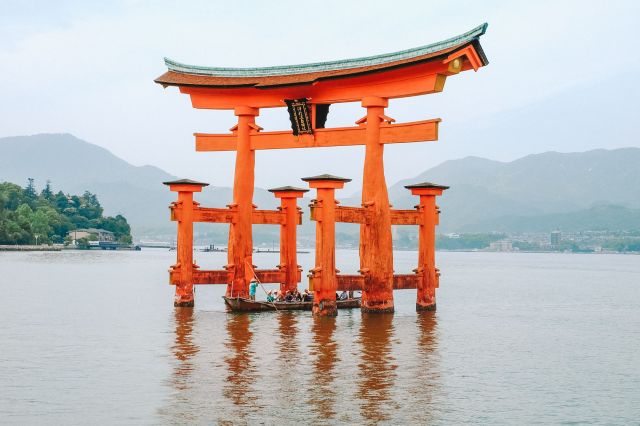
15 beautiful places you must visit in Japan
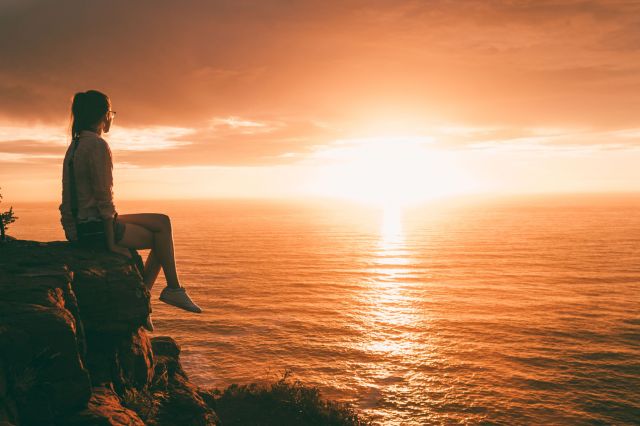
A Super Efficient 2-week South Africa Itinerary

The Ultimate Two Weeks in Japan Itinerary: Where to Visit

For the first-timer, spending two weeks in Japan is the ultimate way to go. This Japan itinerary will break down exactly where to visit in Japan and how long to stay. Japan is a special place for me. After visiting for my third time this last year, it has become easily my number one destination in Asia.

Japan is wildly different from anything here in the U.S. Their culture has preserved the arts and historic components of society. Meanwhile, it has integrated technology and processes that drive their community forward. I’ve never seen anything quite like it — an incredible blend of the old world and the new world. Japan has a wonderful way of drawing you in and showing you a new way to live.
So if you’ve booked yourself a two-week trip to Japan, here’s everything you need to know about where to visit and why.
Why You Should Spend Two Weeks in Japan
How long you spend in Japan is entirely up to you. I would vote to do two weeks for a few reasons especially if it’s your first time. The first is that it allows you to get off the main path that most tourists will visit. All of those cities like Osaka, Kyoto, and Tokyo are wonderful. However, there are some other hidden gems of places to go. Spending two weeks gives you the right amount of time to truly digest it all. You can blend the perfect trip of highlighted cities and some other experiences that will take you by surprise. There are several world heritage sites you won’t want to miss as well along the way.

On our first trip to Japan, we booked in over two weeks and we felt we had really gotten a taste of the country. By the end of the trip, we were ready to go home. Our most recent trip was around 12 nights long and we felt we could have stayed the full two weeks. So my suggestion based on experience is that two weeks is the golden number.

What will be in this two-week itinerary in Japan post:
- A sample itinerary.
- Information on accommodations and dining.
- Sources for more detailed guides.
- What to Know About Transportation and the JR Rail Pass
Short on Time? Here’s How I Would Spend 2 Weeks in Japan:
Before arrival.
- Purchase a JR Rail Pass , for unlimited train travel while in Japan
Stop 1: Tokyo — 3 nights
- Shibuya Hotel En , for the best centrally-located hotel
- Shibuya Granbell Hotel , for the best Shibuya Station hotel
- Keio Plaza Hotel , for the best Shinjuku hotel
Stop 2: Kiso Valley — 2 nights
- Magome Chaya , for the best Magome hotel
- Ooedo Onsen Monogatari Hotel Kisoji , for the best hotel near Tsumago
- Japanese Guesthouses , for the best intimate stays in the Kiso Valley
Stop 3: Kyoto — 4 nights
- Kyoto Hotel Okura , for the best downtown hotel
- Yuzuya Ryokan , for the best ryokan hotel
- Hotel Mystays Kyoto Shijo , for the best budget hotel
Stop 4: Onsen Experience — 2 nights
- Gora Kadan , for the best modern onsen hotel
- Yaeikane , for the best traditional onsen hotel
Stop 5: Tokyo — 2 nights
The ultimate two weeks in japan itinerary, stop 1: tokyo — 3 nights.

Tokyo Highlights
Starting in Tokyo is a wonderful immersion into Japan. I’d recommend flying into Narita Airport as it has a fast train into the heart of the city. Your first day or night will give you time to adjust to the changes. There are wonderful highlights to visit in Tokyo including incredible museums, neighborhoods, markets, and restaurants. You get an opportunity to experience Japan’s sprawling city.
A few favorites for me include spending a morning at Tsukiji Fish Market. It is certainly sensory overload but out of this world. One new thing we did this last trip was going to teamLab Borderless afterward since they’re both on the outskirts of town. It was a wonderful way to spend a day.

There are other day trips you can do as well like to the Fuji Five Lakes, so if you want a break from the city you can consider this. Overall starting your time in Tokyo is the most convenient for getting adjusted and from there you can continue on to your next destination with the extensive train routes.
Helpful Tokyo Guides to Plan Your Trip
- For creative things to do: The Alternative Guide to Tokyo
- Most recent coffee guide: A Guide to the Coolest Coffee Shops in Tokyo
- Back-up coffee guide: 7 Coffee Shops Not to Miss in Tokyo
- General travel guide: The First-Timer’s Guide to Tokyo
Where to Stay in Tokyo
I personally love to stay in Shibuya as it’s the best-located neighborhood to explore. A few recommended hotels:
Stop 2: Kiso Valley — 2 Nights

Kiso Valley Highlights
If there is one recommendation for getting out of the major cities, it’s to go visit the mystical Kiso Valley. It’s famed for the Nakasendo Trail where you can hike between the small towns of Tsumago and Magome. These two towns are historic and contain old-world buildings telling of Japan’s past.
Whether you’re looking to slow down, get some time in nature, or do something a bit more traditional like stay in a ryokan, the Kiso Valley is it. It does take some patience and time to plan this part of a trip to Japan as it’s only ryokans available in the towns. You can reach it by train from Tokyo with a few transfers and a final bus ride into Tsumago.
Need A Japan Rail Pass? This Is Where I Book Mine

Two nights is wonderful here and a welcomed reprieve from city life. This is mostly why I’d recommend doing it between Tokyo and Kyoto and you can easily follow the train routes.
Helpful Kiso Valley Guides to Plan Your Trip
- My personal experience : Visiting the Kiso Valley
Sample Train Route from Tokyo to Tsumago
You will need to bus from Nagiso to Tsumago, see schedule here

Where to Stay in Kiso Valley
I’d recommend staying in Tsumago or Magome which sit on either end of the Nakasendo Trail. Here are my top picks of where to stay in the Kiso Valley:
Stop 3: Kyoto — 4 Nights

Kyoto Highlights
Oh Kyoto, this city forever has my heart. Whether you come for the famed cherry blossom season that transforms the city or to explore the UNESCO World Heritage sites, it’s wonderful. Kyoto is a special place in Japan and a must on the first trip.
A few highlights for me are the Arashiyama bamboo grove in the early hours before the crowds. I’ve done it twice and each time it has been worth the early wake-up call to catch sunrise there. The red Torii gates of Fushimi Inari Shrine are another wonderful highlight as well. Fushimi Inari Taisha (full name) is not a world heritage site but nonetheless incredible.

You could easily spend 4 nights in Kyoto mostly because there is so much to do there. One way you can get out of the city is a day trip to Nara as well, utilizing the central train station. I’d recommend reading the extensive guides below to plan your days in Kyoto as there is a lot to do. That’s why I’d allot four nights in this city alone.
Helpful Kyoto Guides to Plan Your Trip
- Accommodation advice : Where to Stay in Kyoto By Neighborhood
- Temple and shrine guide : A Guide to the Best Temples & Shrines in Kyoto
- Local artisan shops: 7 Local Shops Not to Miss in Kyoto
- For photography: Best Photography Locations in Kyoto
- Where to eat: 20 Best Restaurants in Kyoto
- Where to get coffee: 7 Coffee Shops Not to Miss in Kyoto
- The overall guide: The Ultimate Guide to Kyoto
Sample Train Route from Tsumago to Kyoto
You will need to bus from Tsumago to Nagiso, see schedule here

Where to Stay in Kyoto
I have an entire post on where to stay in Kyoto and it is broken into the neighborhoods. The city is very diverse so I’d recommend giving it a read before making a choice on where you stay. The accommodation location in Kyoto makes a huge difference in your experience in the city.
Here’s my short list of best hotels in Kyoto:
Stop 4: Onsen Experience — 2 Nights

Onsen Experience Highlights
A traditional experience in Japan is to go stay and enjoy the healing waters of an onsen. It’s truly Japanese in the sense of slowing down and restoring the body. After all the travel, I love to schedule this towards the end of the trip which is why I’ve placed it after four nights in Kyoto where you’ll walk a lot.
Since you’ll need to make your way back toward Tokyo eventually, you can choose a few locations. The more commonly visited area is Hakone which is filled with onsen ryokans. You can even get a day pass to the onsens and buy the Hakone Free Pass to visit the nearby sights. This is just one option if the area of Hakone is of interest.
We decided to spend a few more hours on a train and make our way towards the onsen region of the Yakushiyma mountains where the Yamashiro Onsen is. We splurged on two nights at Beniya Mukayu. It’s the single most expensive hotel we’ve paid for but in return received the best stay and a lot included. The hotel stay included daily breakfast and dinner, and our room had a private onsen. The food was exquisite, each meal several courses long with fine ingredients. Again this is a splurge experience but I’d say is well worth it.
You could choose to stay in this region (there are other onsen ryokans and hotels) as well. You’ll have to account for a few more transfers to get back to Tokyo but it is totally doable.
Helpful Onsen Guides to Plan Your Trip
- Our onsen experience : Staying at an Onsen in Japan’s Countryside
Sample Train Route from Kyoto to KagaOnsen
Local hotels pickup at the train station.

Where to Stay: Best Onsen Hotels
In Hakone, some of the top-rated onsen hotels include:
- Hakone Airu , for the best Balinese onsen hotel
Check out 224 more hotel options in Hakone here.
For onsen hotels near the Beniya Mukayu in Kaga, see this page for the city of Kaga and over 40 options.
Stop 5: Tokyo — 2 Nights

We always tack on two more nights in Tokyo before leaving Japan. One reason is that we want to be in the city at least the night before our flight and the second is, there’s always something we didn’t get to. If you’re there for cherry blossom season, then definitely make an extra stop as the blooms could have changed.
I love eating once more at our favorite yakitori restaurant, strolling the gardens and shrines of Yoyogi Park, and soaking in the city’s energy. It’s a special city and one I always look forward to going back to.
- The Alternative Guide to Tokyo
- A Guide to the Coolest Coffee Shops in Tokyo
- 7 Coffee Shops Not t o Miss in Tokyo
- The First-Timer’s Guide to Tokyo
Sample Train Route from KagaOnsen to Tokyo

Before leaving Tokyo to go back to the airport, I’d recommend booking a hotel near the main train station like Shibuya for easy, direct access. Here are my top picks for best hotels when returning to Tokyo:
Planning for Transportation in Japan

One of the most overwhelming parts of Japan is sorting out whether or not you need a Japan Rail Pass and the train systems. The rail pass and Japan Rail are incredibly easy to use and convenient pending a few factors. I have an entire blog post dedicated to transportation in Japan which goes into great detail on all of the factors to consider.
The JR Rail Pass is essentially a joint pass for the majority of the JR Company trains in Japan. Passes are available by either a 7, 14, or 21-day period. If you do a quick tally of individual ticket prices (especially between Tokyo, Osaka, Kyoto, and other regions) it will be worth it. You can use it on the JR lines in Tokyo and Kyoto which connect you between neighborhoods. You can purchase it through this link and it must be done so before arrival (give a few weeks to receive the pass). One other benefit is the ability to reserve seats on certain trains.
*You’ll find each train station easy to navigate and the famed bullet train really is wonderful. Trains in Japan are timely so be prepared to arrive ahead of time.
Other Destinations to Consider for Your Two-Week Japan Itinerary
There are several other destinations you can consider as even Hakone mentioned above. One popular other destination is Hiroshima which is home to the Hiroshima Peace Memorial and Peace Memorial Park. I know so many people love to visit as the Peace Memorial Museum is incredibly special. A few other destinations to consider are:
- The Alpine Route
- Miyajima Island
- Osaka (wonderful for a few days in a different city)
Get Travel Insurance Here
I always recommend travel insurance for international travel. Especially when you’re headed overseas for an extended time. I often use World Nomads , they’ve reimbursed me personally on a few occasions for trip delays and cancellations.
Want to create your own travel itinerary?
Save this post for later on pinterest.

PS — Are You Booking a Trip Soon? Use My Booking Checklist!
These are the sites I use most to book my own trips. Using the links below is a great way to support Bon Traveler’s travel journalism at no extra cost to you . If you need help organizing your itinerary, get my free travel itinerary template here .
1. Book Your Flights
Use Skyscanner to find the best flights. It searches 100s of airlines and websites across the globe to ensure you’re not missing out on any route options or deals.
2. Book Your Accommodations
Use Booking.com for hotels and guest houses. They have the biggest inventory and consistently offer the best rates.
3. Book Your Tours & Experiences
Use Viator or Get Your Guide to find the best tours and experiences. They are my favorite tour search engines. I always check both as their inventory varies depending on the destination.
4. Book Your Car
Use Discover Cars or Rentalcars.com to find the best car rental deals. I recommend comparing rental agency reviews on Google to ensure you are booking with the best company in that destination, as the reviews are often more accurate than the car rental search engines.
5. Don’t Forget Airport Lounge Access
Get a Priority Pass membership to gain access to 1,400+ VIP lounges and airport experiences worldwide. The Priority Pass app is the first thing I check when I have a layover. I’ve been a member for over a decade, and having a comfortable place to relax before and between flights makes air travel so much more enjoyable.
6. Don’t Forget Travel Insurance
I never leave the country without travel insurance. It provides comprehensive protection in case anything goes wrong (ie. illness, injury, theft, and cancelations, etc.). I use it frequently for my travels to stay protected.
My favorite companies that offer the best coverage and rates are:
- World Nomads (best for all-around)
- Safety Wing (best for frequent travelers)
Xx, Jessica
Related Posts

The Ultimate 10 Days in Portugal Itinerary
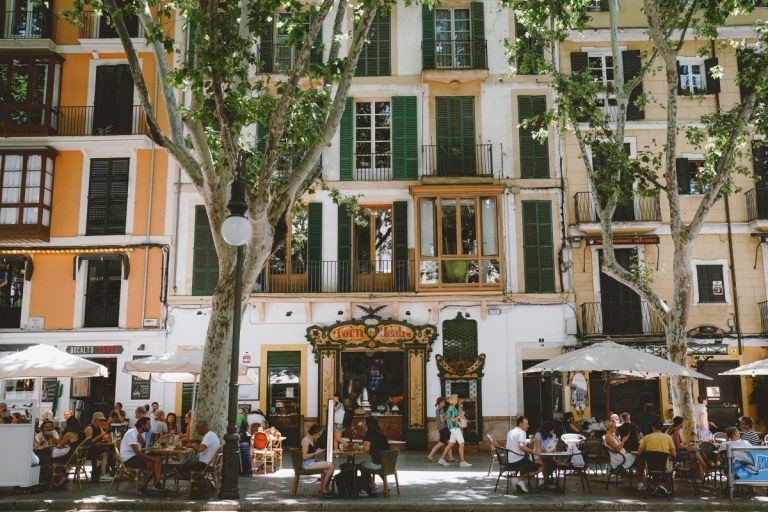
Best Things to Do in Palma de Mallorca: City Guide

Your Ultimate Travel Guide to Visiting Coronado Island
Yes yes yes. Japan is at the absolute top of my list of dream places to visit and I’m saving this guide.
Thank you! I loved this guide, super helpful: concise, informative and an easy read. Loved your photos too!
Write A Comment Cancel Reply
Save my name, email, and website in this browser for the next time I comment.
- Cayman Islands
- Dominican Republic
- Puerto Rico
- South Dakota
- Washington DC
- Czech Republic
- Netherlands
- Switzerland
- French Polynesia
- Travel Tips
- Family Travel
- Accommodations
- Packing Lists
- Photography Tips
- Northern California Guide
- San Francisco
- Lightroom Presets
- Rent Our Home For Photoshoots
- California Map
Type above and press Enter to search. Press Esc to cancel.
2 Week Japan Itinerary in 2024: Efficient Guide For First Time Visitors
This page may contain affiliate links which earn us a commission at no extra cost to you to support the site. Thank you!
Are you planning to visit Japan for two weeks? This efficient and easy-to-follow two week Japan itinerary shows you how to make the most of your first visit to the land of the rising sun.
As you can probably tell from my travel blog, Japan is my all-time favourite destination. Ever since I was 13 years old, it was my dream to visit it. When I was finally able to visit it, 10 years later, it turned out to be even better than expected.
After my first trip to Japan, it was only a matter of time before I returned. And again. And again. Planning that first trip, however, was a little stressful. I wanted to make the most out of it because I had no idea if (or when) I would get this chance again.
Are you in the same boat? Do not worry, I’ve got you covered! I crafted this two-week Japan itinerary for those who are visiting Japan for the first time and want to make the most of their time there.
Let’s dive in.
Looking for More Japan Guides?
- Day 3 – Tokyo
Kamakura & Enoshima Day Trip
What to do in kyoto, what to do in himeji, miyajima (day 14).
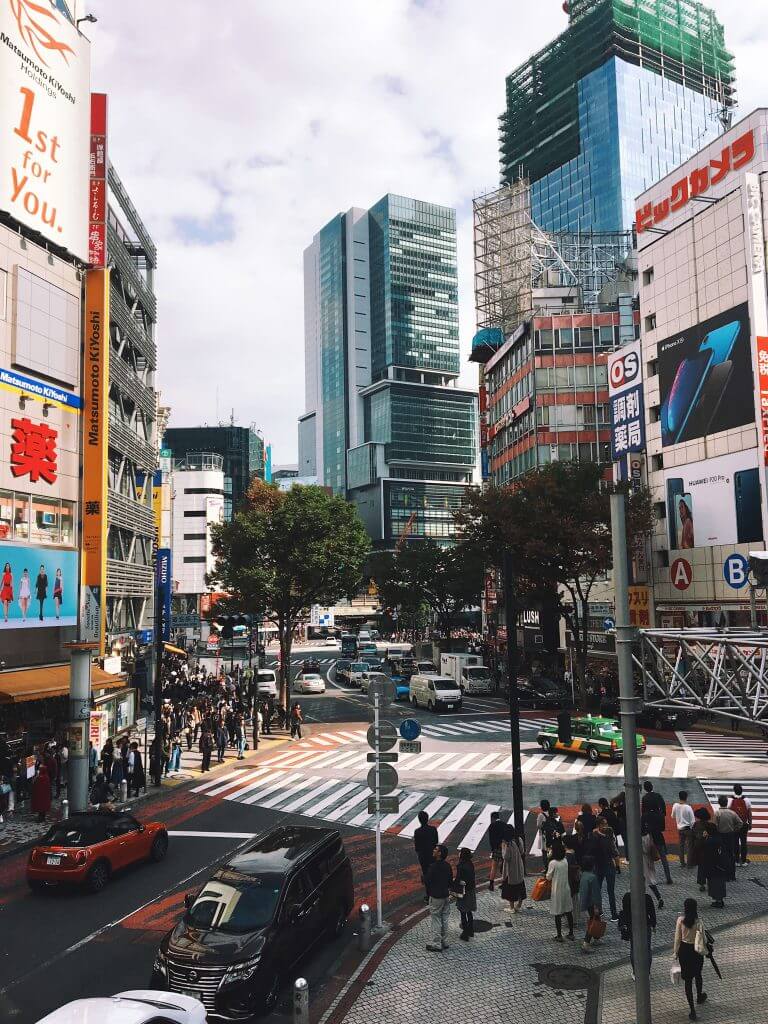
Two Weeks in Japan Overview & Map
Spending two weeks in Japan is the perfect amount of time when you’re visiting for the first time . It’s exactly how long I spent in Japan during my very first trip. After having returned to Japan multiple times since then, I’ve perfected this itinerary to help you avoid any mistakes I’ve made.
This itinerary loosely follows the famous Golden Route , along with some personal alterations I think are 100% worth it. If you follow this guide, it will take you to Tokyo (3 days), Mount Fuji (1 day), Hakone, Nikko or Kamakura (2 days), Kyoto (3 days), Osaka (1 day), Nara (1 day), Himeji (1 day), Hiroshima (1 day) and Miyajima (1 day).
While there are quite a few places included in this itinerary, you don’t have to drag your luggage around every day. In the next section, I recommend the cities you should book your hotels in (including some of my favourite hotels and areas). Since you can visit most of the locations on a day trip, you only have to change hotels a couple of times .
Two weeks give you a great first impression of this beautiful country without having to rush. Below, you can find a map of the points of interest in this itinerary – if you download Google Maps , you can even use the interactive map during your trip to not miss out on anything mentioned in this guide.
Along with all the highlights mentioned in this itinerary, the Google Maps below includes some of my favourite photo spots , coffee shops , restaurants and stores to check out during your trip.
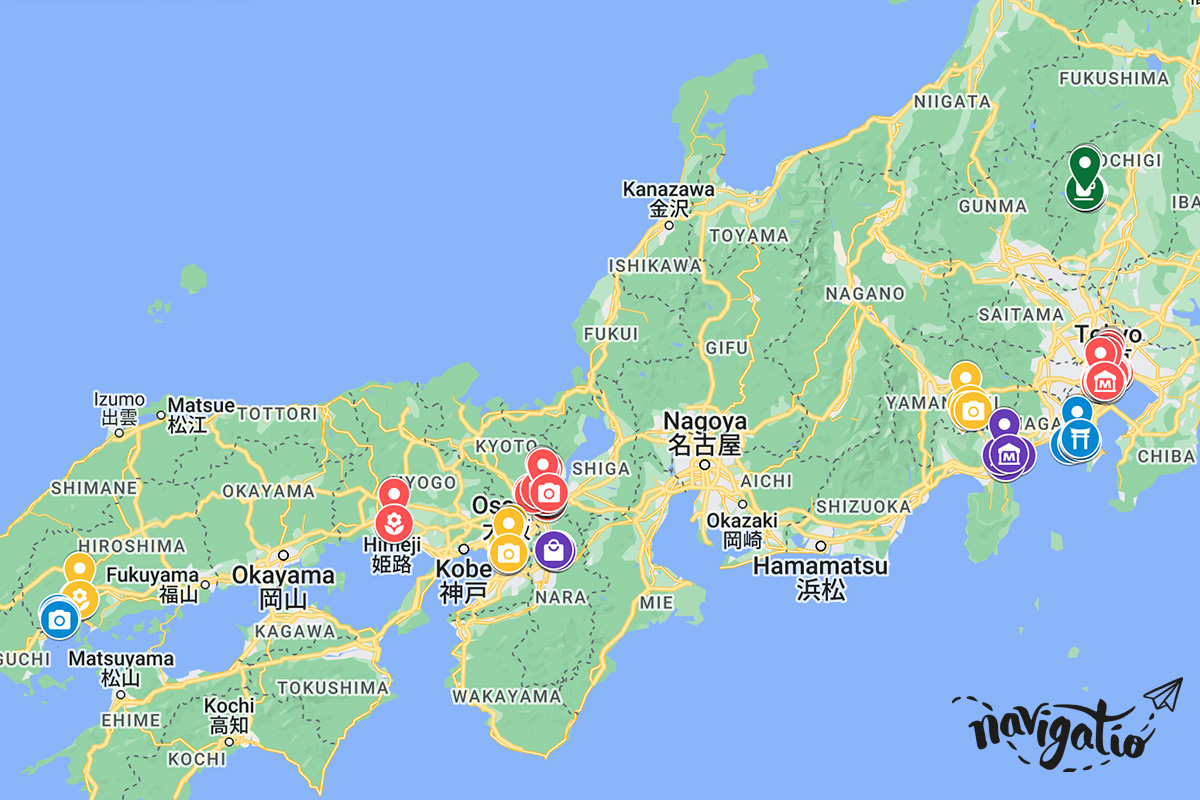
Where to Stay in Japan for Two Weeks
To avoid having to drag your luggage around every single day during your two weeks in Japan, it’s best to book a few “home” bases and take day trips from there. Public transport in Japan is very reliable and easy to use, so let’s make the most of it.
On top of that, the locations in this itinerary are very well connected – I’ll highlight any discount passes for public transport you can buy to make your day trips even easier to navigate.
To make the most of your holiday to Japan, I recommend booking accommodation in the following places for the set days:
If you want some more ideas for your itinerary, check out the following guides:
- Are two weeks in Japan not enough for you? Check out my 3 week Japan itinerary to add another week to your trip.
- If two weeks is a bit too long, my 10 day Japan itinerary gives you a compressed version of this two week Japan itinerary.
- Want to see a more unique side of Japan? Our 7-day Kyushu itinerary shows you a whole different side of Japan.
- And what about the costs? I’ve broken down the cost of this two-week trip to Japan – it includes everything from flights to souvenirs, down to the penny!
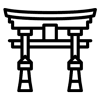
Stay connected to the internet during your trip to Japan (essential for using Google Maps & Translate!) with a Pocket WiFi. Use code THENAVIGATIO15 for 15% off Ninja WiFi Pocket WiFi .
Two Week Japan Itinerary
Here is my two week Japan itinerary – feel free to copy it completely or make any changes to match your travel style:
Tokyo (Day 1 – 3)
We start our Japan itinerary in the capital city: Tokyo . Most international travellers arrive at one of Tokyo’s two airports – Haneda or Narita . This makes it a great place to start your Japan trip.
From both airports, you can take public transport, hire an airport transfer or get a taxi. Even though it may seem a bit intimidating, using public transport is probably your best bet. It’s much cheaper and really not that difficult!
It’s a good idea to pick up a Suica or Pasmo card at the airport train station (or add it to your iPhone as it’s one of the best Japan travel apps out there). These passes are pre-paid e-money cards that let you use public transport all across Japan. They’re essential for travelling around in the big cities.
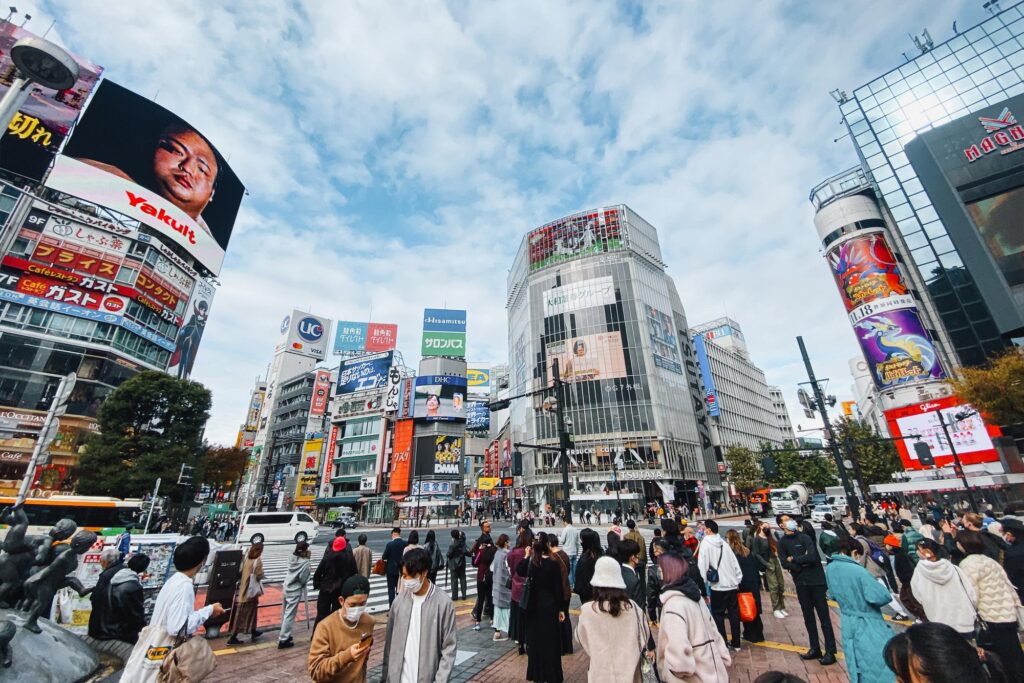
Since the first six days of this trip are in and around Tokyo, it’s best to book your hotel in Tokyo for the first six days . To avoid having to carry suitcases around, it’s much easier to stay in the same hotel – you can then bring a backpack on any day trips you plan to take.
As Tokyo is one of the largest and busiest cities in the world, it may be a little overwhelming to choose where to stay. For first-time visitors, Minato, Asakusa or Roppongi are good choices.
Our guide on where to stay in Tokyo includes an even more in-depth breakdown for different types of travellers, but here are my recommendations for first-time visitors:
Day 1 – Tokyo
Tokyo is such a big city, you could easily spend a month here and not get bored. But since we want to make the most of our two weeks in Japan, I planned the following three days in Tokyo for you.
The start of this itinerary gives you a great first impression of Tokyo, allowing you to explore most of the main highlights of this beautiful city! Here is what I recommend you to do on the first day in Tokyo:
- Visit Meiji Shrine: This beautiful shrine can be found in one of the biggest parks in Tokyo. A giant wooden torii gate welcomes you near Harajuku Station, guiding you through a forest of over 100,000 trees towards the shrine. You can also find the iconic wall of over 200 traditional sake barrels here.
- Shop in Harajuku: Near Meiji Shrine lays Takeshita Street, one of Harajuku’s most popular shopping streets. Keep walking to get to Omotesando for even more stores – you may even see some people dressed up in Harajuku-style fashion.
- Try Purikura: Unlike the basic photo boots you find in the West that you can use to take plain passport pictures, Japan has Purikura! These kawaii photo boots let you take pictures with cute filters – afterwards, you can edit them and add stickers, text and more. The photos are printed and you can take them home as the perfect Japan keepsake.
- Walk across Shibuya Crossing: Shibuya is only a short metro ride (or 15-minute walk) from Harajuku and is home to the famous Shibuya Crossing. Named the busiest crossing in the world, it’s a popular sight to visit in Tokyo. Visit L’Occitane Cafe, Cé La Vi or the Starbucks ( temporarily closed for renovation ) for a drink and a view over this iconic spot.
- Hachiko Statue: Just outside of Shibuya Station, you can find Hachiko Statue. This famous dog was given a statue after he waited for his owner to return to Shibuya station for years.
- Enjoy Tokyo from above at Shibuya Sky: For one of the best views in Tokyo, head over to Shibuya Sky. This 360-degree open-air observation deck is quite popular so make sure you book tickets in advance (around 30 minutes before sunset is the best time to go, in my opinion). On a clear day, you can even see Mount Fuji in the distance.
- Get food and drinks in Shibuya Centre Gai: Exploring Shibuya Centre Gai is one of the best things to do in Tokyo at night . This narrow street in Shibuya is a popular place for people to shop, eat and drink. Head over here after enjoying the views from Shibuya Sky – just in time to grab some dinner and even a drink or two at one of the many izakayas.
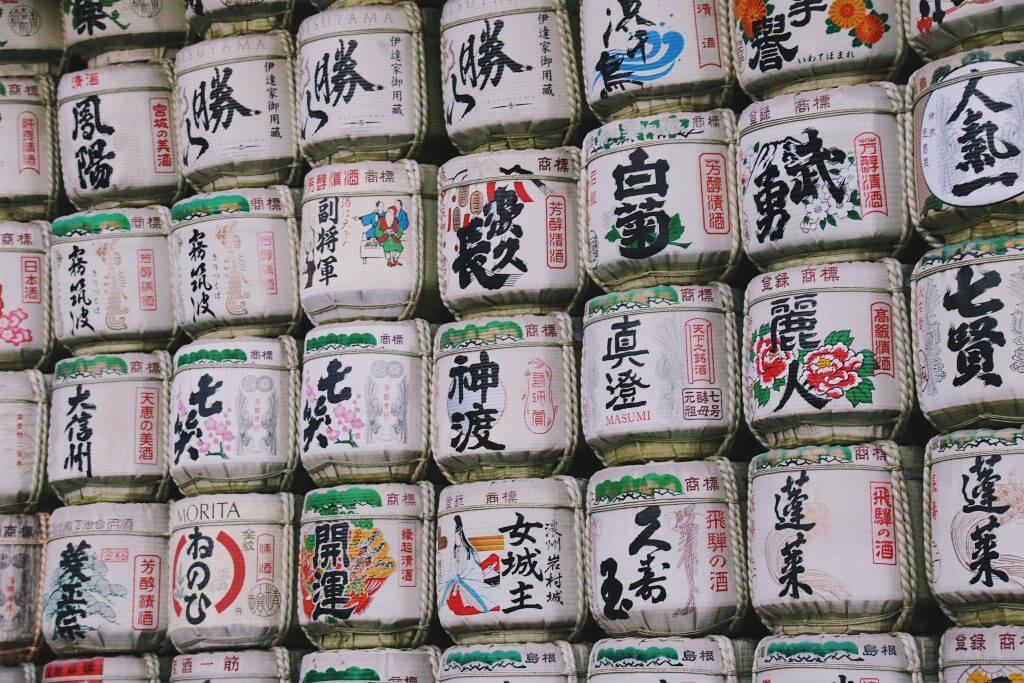
Day 2 – Tokyo
On our second day in Tokyo, we visit Asakusa, Ueno and Akihabara. It’s quite a contrast going from one of the most traditional parts of Tokyo (Asakusa) to a part that literally goes by the nickname “ Electric Town “, but it gives you a chance to see quite a few of Tokyo’s main sights:
- Explore Senso-ji Temple: Senso-ji Temple is the oldest temple in Tokyo, dating back to the year 645. The temple grounds are covered with the most beautiful buildings and gardens, making it one of the best landmarks in Japan .
- Try o-mikuji: This Japanese form of fortune-telling can often be done at temples in Japan, and Senso-ji is no exception. It’s very simple: you pay 100 yen and shake the wooden box until a stick falls out. The stick has a number written on it. The number will correspond with your fortune, from “very fortunate” to “a great curse”.
- Shop on Nakamise Street: Just outside the main temple, you can find Nakamise Street. This 200-meter-long street is filled with independent vendors selling souvenirs and snacks.
- Visit Ueno Park: Ueno Park is one of the best places in Tokyo to enjoy cherry blossoms. If you’re visiting Japan in late March or early April , make sure to add this to your itinerary. But even outside of cherry blossom season, you can find some great museums here.
- Have lunch or shop in Ueno Ameyoko: This lively, open-air market is perfect for some shopping or a quick lunch. The atmosphere is amazing and definitely worth a visit while you’re in the area.
- Explore Akihabara: Also known as “ Electric Town ”, Akihabara is the place for any anime or video game fan. It’s filled with stores selling retro video games , anime figures and more. If you’re a pop-culture fan, make sure to spend some time exploring this area (and have enough room in your suitcase!). I highlighted my favourite retro game shops on the interactive map for this guide.
- Play in the arcades: Akihabara is also home to countless arcades. Japan has its fair share of arcades, and they’re super fun to try yourself. Make sure to go beyond the first floor though. The crane machines, which you can normally find on the first floor, are fun, but the better (less cash-gabby) games are found upstairs.
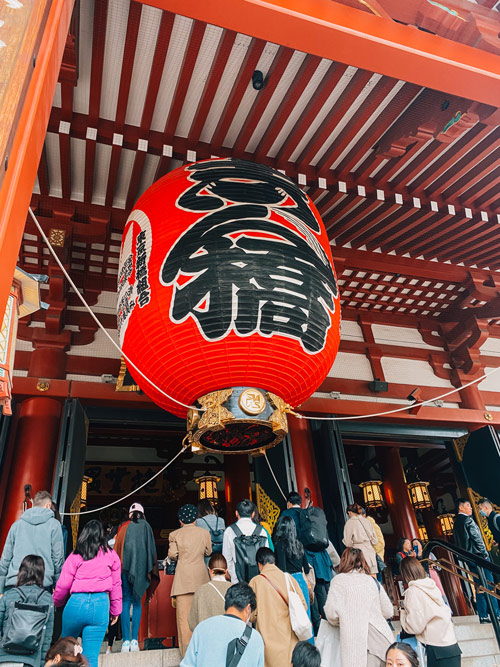
Day 3 – Tokyo
As we arrive at our last day in Japan’s capital city, we tick off a few more highlights before we start venturing outside of Tokyo. Here is what I recommend you to check out on your third day in Japan:
- Visit Tokyo Imperial Palace: Tokyo became Japan’s capital in 1868, when the Emperor moved to Tokyo. The current Imperial Palace is built on the grounds of Edo Castle – a must-visit when in Tokyo. When visiting, a guided tour is recommended, as you can’t access some of the grounds without one.
- Explore the Zōjō-ji Temple grounds: While heading towards Tokyo Tower, the next stop on this itinerary, make a quick stop at Zōjō-ji Temple. It’s a beautiful temple with great views of Tokyo Tower.
- Snap a picture of Tokyo Tower: One of the most iconic landmarks in Tokyo has to be Tokyo Tower. While I don’t recommend paying to go all the way to the top (there are much better views in Roppongi, where you can actually see Tokyo Tower as part of the skyline!), there are some great photo spots nearby.
- Visit one of Roppongi’s museums/art galleries: Roppongi is home to many art galleries and museums. The famous Roppongi Art Triangle includes three of the best ones: Mori Art Museum, the National Art Gallery and the Suntory Museum of Art. If you only have time for one, I’d suggest checking out Mori Art Museum as you’ll also be treated to one of the best views of Tokyo Tower here. 21 21 Design Sight is another museum to check out – it focuses on Japanese modern design.
- Try Karaoke: After dinner, you can check out one of the many karaoke parlours in this area of Tokyo. Karaoke in Japan is a bit different from what you’re probably used to, as you can rent an individual booth to sing songs – plus, you can order drinks to your booth.
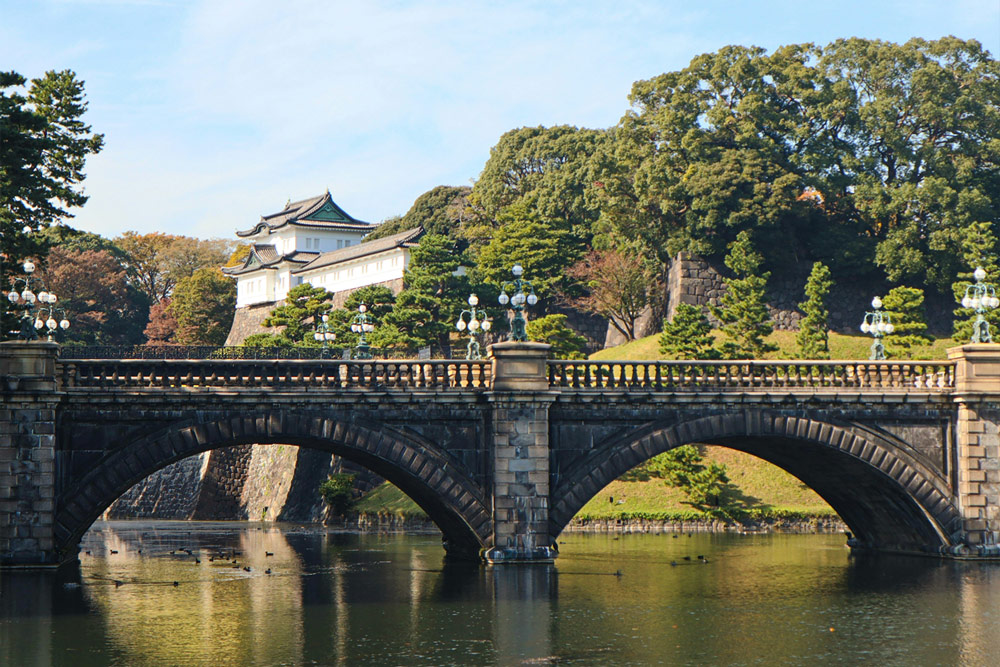
Mount Fuji (Day 4)
If there’s one thing Japan is famous for , it’s the majestic Mount Fuji. And no trip to Japan is complete without paying a visit to this sacred volcano.
It’s possible to climb Mount Fuji during hiking season (July to September), but beware that this can take up to 10 hours to complete. For a day trip to Mount Fuji from Tokyo, it’s much better to enjoy the surrounding areas of Mount Fuji and take in the views.
The best way to see Mount Fuji is by taking a bus or train to Lake Kawaguchiko. From there, you can explore the area further. I’ve added some of the best photo spots to capture Mount Fuji to the Google Maps for this itinerary.
Alternatively, you can book a fully guided day tour from Tokyo . While it’s cheaper to DIY a trip to Mount Fuji, with a guided tour, you’ll be sure to see all the main points of interest.

Mount Fuji tends to hide in the clouds quite often! Since it’s tricky to plan a clear day ahead of schedule, you may want to keep an eye on the weather when you’re IN Japan and swap some of the days around when staying in Tokyo.
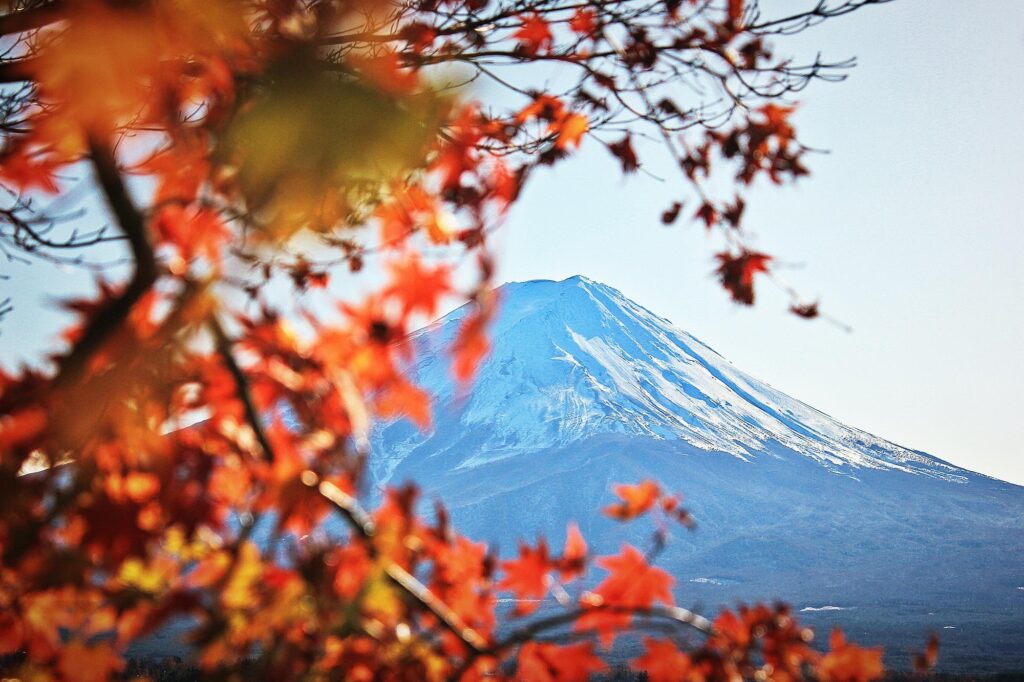
Hakone, Nikko or Kamakura (Day 5 – 6)
During the next two days in this Japan itinerary, you have some choices. There is a lot to explore near Tokyo, so I wanted to give you the opportunity to pick two day trip destinations that match your interests best.
Some of the best day trips from Tokyo include Kamakura , Hakone and Nikko . Below, I’ve broken down the best things to do when taking a day trip to all three of them. Have a read-through and see which ones stick out to you best so you can add them to your own itinerary.
Hakone Day Trip
Hakone is a personal favourite of mine. Not only is it home to incredible views of Mount Fuji, some of the best onsens in Japan and beautiful shrines, but I also got engaged here to the love of my life!
From Tokyo, it takes around 1–1.5 hours to get to Hakone. This makes it a great day trip from the busy metropolitan city – and a chance to see a different side of Japan.
When taking a day trip from Tokyo, you should look into getting the Hakone Free Pass . This discount pass includes a return journey from Shinjuku to Hakone, free public transport in the Hakone area (including the pirate ship and ropeway) and multiple discounts. It’s a money AND time saver, win-win!
When taking a day trip to Hakone , here are some of the best things to do:
- Soak in an onsen: Onsens are Japanese hot springs and Hakone is one of the best hot spring towns in Japan. Do keep in mind that most onsens require you to bathe naked and separate men and women.
- Hakone Shrine: One of the must-visit places in Hakone is the shrine that shares the town’s name. This beautiful shrine has a huge torii gate looking out over Lake Ashi. There is usually a bit of a waiting time for taking photos though – I waited around 30 minutes for mine.
- Visit Owakudani (Boiling Valley): From Hakone, you can take a gondola up the mountain near the town. At the top, you can find Owakundani, also known as the Boiling Valley. The volcano erupted 3,000 years ago, but the impact is still very much noticeable.
- Eat a black egg: When visiting Owakundani, make your way to the volcanic zone and eat a black egg. The eggs are boiled in the volcanic water and the minerals inside give the egg its black colour. It’s totally safe to eat and legend says eating one will prolong your life by seven years – worth a shot ;).
For a more detailed breakdown and travel route, check my one day Hakone itinerary .
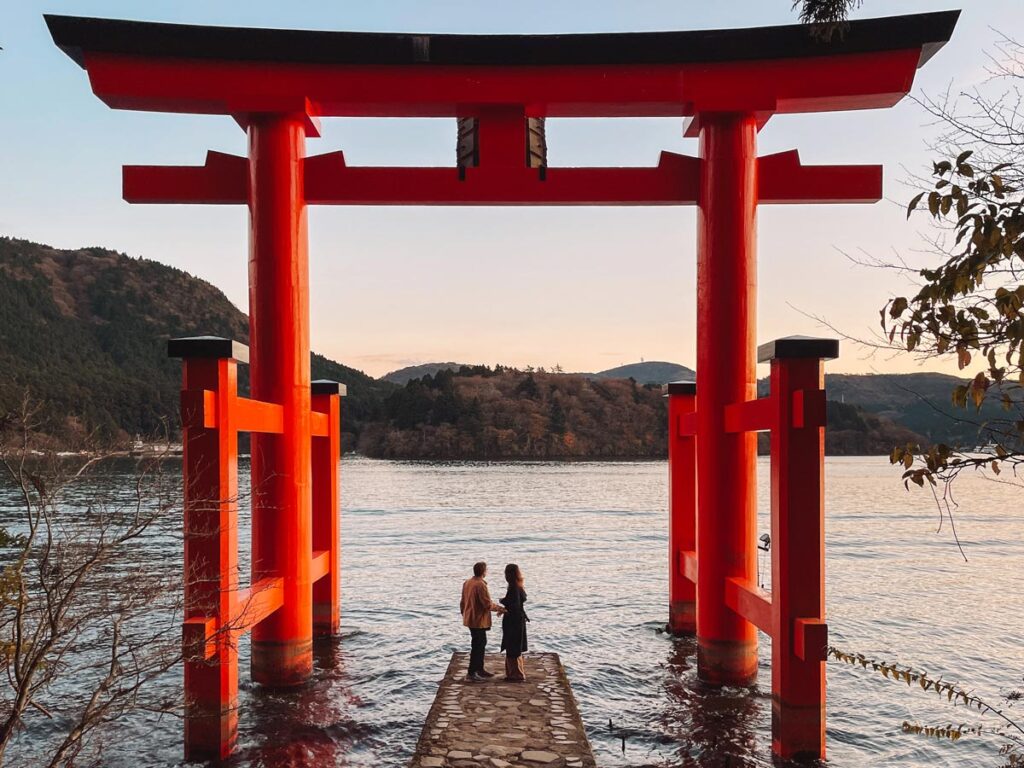
Hakone is also a great place to stay overnight, as it’s home to many Japanese hot spring hotels. Our guide on where to stay in Hakone has some of the best ones (including hotels with Mount Fuji views!).
Nikko Day Trip
Nikko is a little bit further from Tokyo compared to Hakone ( around 2–3 hours ), but it remains one of the best trips to take from the capital. This mountain town is filled with history and is surrounded by beautiful nature.
If you’re planning to visit Nikko for the day, it’s worth getting the Nikko World Heritage Area Pass . Similarly to the Hakone Free Pass, this pass includes a return ticket from Tokyo to Nikko and free public transport inside the Nikko area. Since the pass itself is cheaper than a return train ticket, you’ll be saving money.
For your Nikko day trip, you want to check out the following sights:
- Shinkyo Bridge: From the train station, it takes about 5 minutes by bus to get to Shinkyo Bridge. This nearly 400-year-old bridge is the gateway to the majority of shrines and temples you can find in Nikko and a perfect place to start your day.
- Rinnoji Temple: This temple was founded in the 8th century by a Buddhist monk who brought Buddhism to the city. Nowadays, Tendai monks train in this UNESCO World Heritage site.
- Toshogu Temple: This is by far Nikko’s most notable temple. Toshogu Temple is the last resting place of Tokugawa Ieyasu. The temple is beautifully decorated and is a real treat to visit.
- Kanmangafuchi Abyss: Many years ago, Mount Nantai erupted and created this valley. Here, you can find 74 statues wearing red crocheted hats and bibs. Legend says the number of statues changes every time you count them.
Check our one day Nikko itinerary for a more detailed breakdown of how to spend the day here.

Since it does take a while to get to Nikko, you may want to spend two days here instead of going on another day trip from Tokyo. If you do, check out the best ryokans in Nikko for an unforgettable stay.
Kamakura and Enoshima are two seaside towns near each other, around one hour from Tokyo. They make for a very popular day trip destination – allowing visitors to enjoy the many temples, beaches and hydrangea flowers.
Like Hakone and Nikko, Kamakura and Enoshima have a Freepass that you can use to save money. The Enoshima-Kamakura Freepass includes a return ticket from Shinjuku, unlimited train rides in the area and discounts for participating facilities.
If you’re choosing Kamakura and Enoshima for your day trip, check out the following sights:
- Explore Enoshima: Enoshima is a small island near Kamakura. Give yourself 2–3 hours in the morning to explore it, including Enoshima-jinja, Samuel Cocking Garden and Nakamise Street.
- Visit the Great Buddha of Kamakura: One of the most famous landmarks in Kamakura is the Kamakura Daibutsu. It was built in the 13th century and reaches over 13 meters in height.
- Stroll around Komachi Street: This area lies next to Kamakura Station and is filled with restaurants, cafes and shops. Perfect if you’re after any local specialities and souvenirs.
Our full Kamakura and Enoshima day trip itinerary includes even more information on what route we suggest you follow.
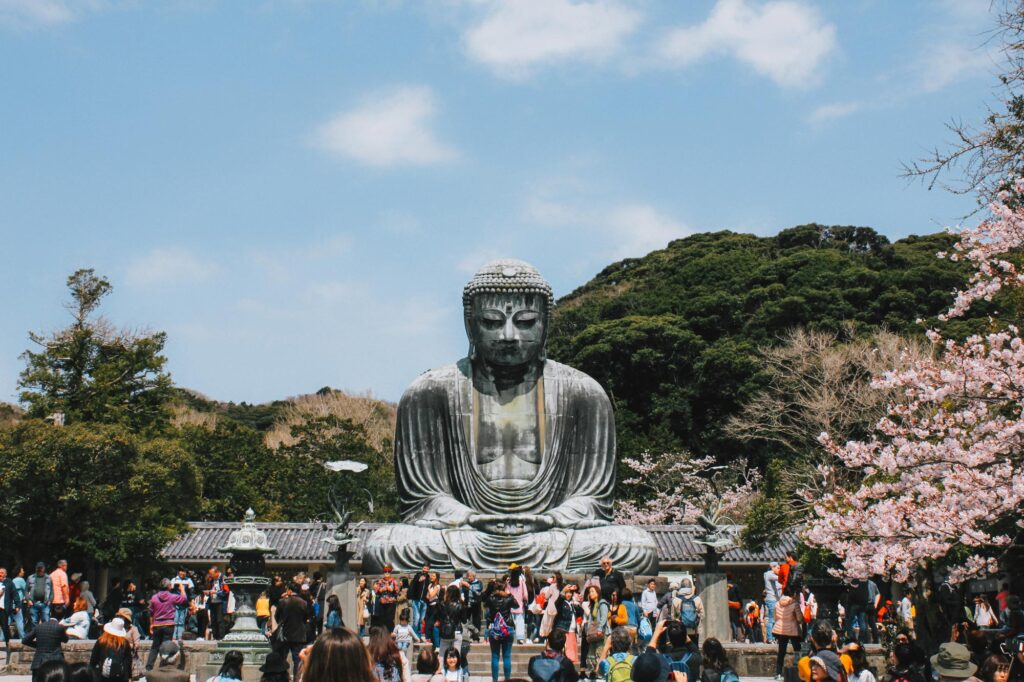
Kyoto (Day 7 – 9)
After spending six wonderful days in and around Tokyo, it’s time to head towards Kyoto. Kyoto is known to be the cultural capital of Japan, filled with shrines, temples and old Geisha districts.
For accommodation, you have two options :
- You can either decide to stay in Kyoto for five nights
- Or stay in Kyoto for three nights and in Osaka for two.
The accommodation choices won’t impact the places you’ll visit when following this itinerary. However, staying in Osaka has a completely different atmosphere compared to Kyoto (and it’s often a bit cheaper too), so you may want the best of both worlds. I have a full Kyoto and Osaka comparison so you can decide what’s best for your trip.
Either way, you’ll have to stay in Kyoto for a few nights. We have a full guide on where to stay in Kyoto , but here are my favourite recommendations for first-time visitors:
How to get to Kyoto
The easiest and fastest way to get from Tokyo to Kyoto is by riding the Shinkansen, or bullet train. This takes about two hours and 15 minutes .
You can use the JR Pass on this ride. But since the price increase of the Japan Rail Pass in October 2023, it’s not the most cost-effective pass to buy if you’re following this two week Japan itinerary.
It’s cheaper to buy individual tickets for the Shinkansen. You can do so at the train station on the day of your trip. It’s also possible to buy them online in advance if you prefer to have all your tickets pre-booked.
On Day 7 of this itinerary, you can take the Shinkansen from Tokyo to Kyoto. This should take just over two hours, but since the first week of this trip has been pretty full, you may want to take it easy today.
Make sure you get to Kyoto safely and check into your hotel. You can then spend the rest of the day going for a little wander around. I’ve marked a few extra sights on the map that you can check out if you have spare time.
Doing this will still give you two full days to explore Kyoto, which is more than enough time to see some of the city’s best highlights. I have a more detailed 2-day Kyoto itinerary if you want a complete breakdown of the days (including a walking route through the geisha districts). Here is a quick overview of the best things to do in Kyoto:
- Fushimi Inari Taisha: Fushimi Inari Taisha is a famous shrine with thousands of torii gates lined up towards the top of Mount Inari. This is my personal favourite spot in Kyoto – even though it’s a busy touristy spot, I can’t get enough of it. The full hike up and down the mountain takes around 2–3 hours and it’s best to visit as early as possible to avoid the crowds.
- Geisha District: Kyoto is famous for the old Geisha districts Higashiyama and Gion. In these areas, you can find countless temples (including the stunning Kiyomizudera Temple), old tea shops and real Geishas. While it’s quite touristy, it’s still a must-visit when spending time in Kyoto. My 2-day Kyoto itinerary has a free walking route you can use to explore these areas.
- Kinkaku-ji Temple: Another famous site to visit is the Golden Pavilion in Kyoto . It’s a little out of the way, so you’ll have to set either a full morning or afternoon aside for it, but it’s a beautiful zen temple in a lovely garden. It is one of Kyoto’s 17 UNESCO World Heritage Sites.
- Arashiyama Bamboo Grove: Arashiyama Bamboo Grove is located in West Kyoto and is probably one of the most photographed spots in the city. This beautiful bamboo grove is open 24/7 and it’s free to visit. It’s a good idea to block out a full morning or afternoon to visit this area of Kyoto.
- Wear a Kimono: While you can wear a kimono in most places in Japan, Kyoto is one of the best places for it as it’s such a traditional city. You can hire a kimono for a few hours or a full day, and professional dressers will help you put it on. And don’t worry, wearing a kimono respectfully isn’t cultural appropriation !
- Dine on Pontocho: During one of your evenings in Kyoto (probably best after visiting the Geisha districts as it’s nearby), head over to Pontocho. This atmospheric alleyway is a great place to get dinner. Even if you can’t find a seat, it’s still worth walking through it – it’s stunning.
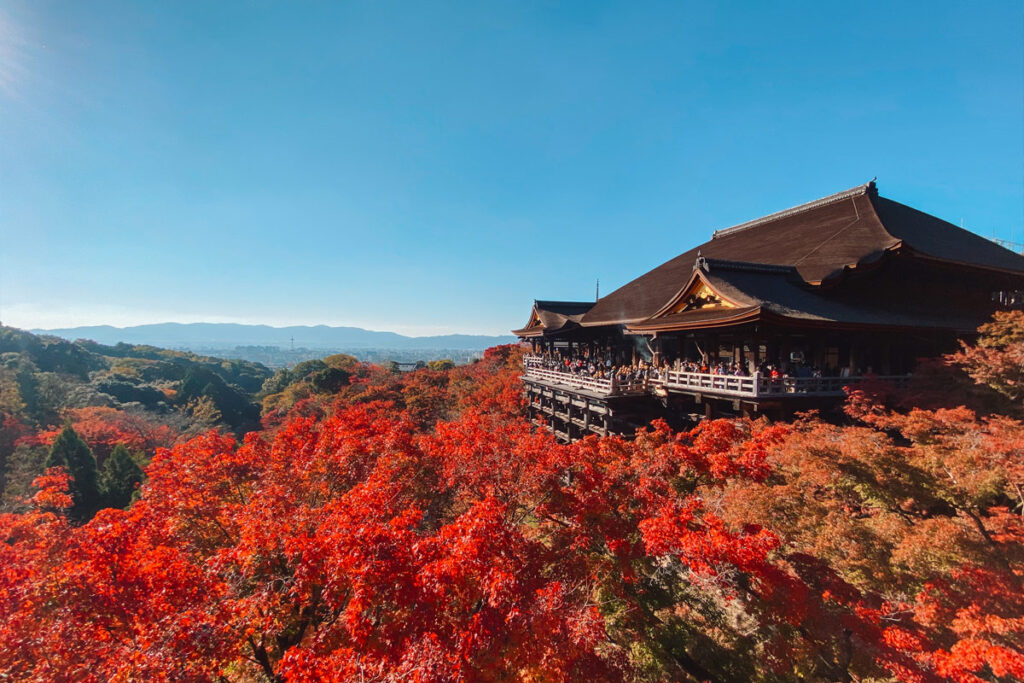
Osaka (Day 10)
On Day 10, we take a day trip to Osaka. Osaka is known as the kitchen of the nation – with some of the best street food in the whole country. While some people choose to skip Osaka, it’s one of my favourite cities in Japan. The people are so friendly and there are some fantastic sights to see.
From Kyoto, you can get to Osaka within 15 minutes by Shinkansen, or around 30–40 minutes by train. Once you get there, here are some must-see sights:
- Osaka Castle: Osaka Castle is one of the most famous highlights of the city. It played a huge role in unifying the country back in the 16th century, and you can learn all about its history in the museum inside. Seeing the castle and walking around the beautiful gardens is a must when in Osaka.
- Shinsekai: This district in Osaka was developed during the National Industrial Explosion. The iconic Tsutenkaku Tower in this part of Osaka is modelled after the Eiffel Tower in Paris. You can get some of the best food in the city here – so it’s a great place to stop for lunch or dinner.
- Namba Shrine: This shrine has a 12-meter tall lion-head-shaped building. Legend says the lion’s head swallows the evil spirits that surround visitors – plus it’s completely free to visit.
- Nipponbashi Den-Den Town: If you’re after any retro video games while in Japan , Den-Den Town in Osaka is a good place to go hunting for them.
- Dotonbori: In the Minami District, you can find Dotonbori. This is the heart of Osaka’s nightlife . Neon signs, music and the smell of freshly cooked street food – Dotonbori is where it’s at. Near Dotonbori, you can also find the Glico Man sign.
I have a more detailed one day Osaka itinerary that includes a full breakdown and walking route.
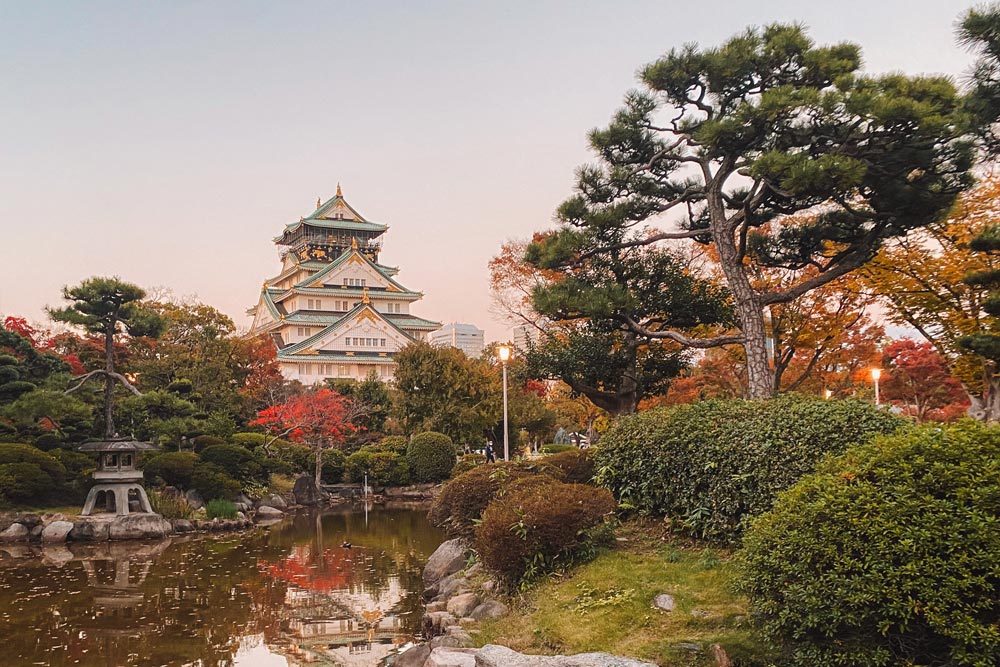
Osaka isn’t far from Kyoto, but because it has a completely different atmosphere you may want to choose to stay here for a couple of nights too. If you’re big on nightlife, for example, Osaka has way more to offer than Kyoto.
My in-depth guide on where to stay in Osaka includes all my favourite areas and hotels in the city, but here’s a quick overview of my top three:
We have a full guide comparing Kyoto and Osaka as bases, so have a read to make sure you know your options.

If you’re planning on visiting Universal Studios Japan (which is located in Osaka), you can choose to replace one of the days in Kyoto, Osaka or Nara as they’re all near each other.
Nara (Day 11)
Day 11 is a day trip to Nara. Nara used to be the capital of Japan in the 8th century and its history still shines through today – there are some beautiful shrines and temples.
From Kyoto, you can get to Nara via the JR Nara Line or the Kintetsu Line. It takes between 35–70 minutes. If you’re using the JR Pass , it’s best to look out for the Rapid service, as it’s nearly 25 minutes faster. Without the JR Pass, the Kintetsu Line is a cheaper and faster choice.
From Osaka, you can use the JR Yamatoji Line and the Kintetsu Nara Line to get to Nara. This takes between 35–50 minutes.
When spending a day in Nara, make sure to check out the following sights:
- Nara Deer Park: Nara is famous for its deer park, where more than 1,200 Sika deer roam around freely. They’ll even bow to visitors and beg for the special deer crackers that are sold around the park.
- Isuien Garden: Apart from its beautiful park, Nara also has some stunning gardens. Isuien Garden is one of them. Located near Kofuku-ji temple, Isuien Garden is the perfect example of a Japanese zen garden. There is an entrance fee, but it’s more than worth it.
- Todai-ji Temple: Todai-ji Temple is the largest wooden structure in the world, dating back to 752. Inside, you can find the largest Daibutsu (bronze Buddha statue). The size of the building is mind-blowing!
- Kasuga-Taisha: This temple is another UNESCO World Heritage Site and it’s known for the 3,000 stone lanterns that are lined up towards the entrance.
My one day Nara itinerary includes a full walking route you can follow, along with some more information on how to get to Nara from both Osaka and Kyoto.

Himeji (Day 12)
With the end of our two weeks in Japan coming closer, it’s time to pack up your suitcase again and move towards the last hotel. It’s best to book a hotel in Hiroshima for the remainder of your stay in Japan (or one last night in Osaka or Tokyo, depending on when and where your return flight departs from).
On the way towards Hiroshima, make a stop at Himeji . Known for its beautiful castle, Himeji is the perfect place to add to your two week Japan itinerary as it’s conveniently located on the way to Hiroshima.
You can store your luggage in one of the lockers at the station in Himeji. That way, you won’t have to carry them around all day.
For your day in Himeji, here are some sights to check out:
- Visit Himeji Castle: Himeji’s pride and joy, Himeji Castle, has to be on your list of places to visit here. Its history dates back to 1333. While it wasn’t completed until the early Edo Period, it’s one of the very few castles in Japan to never have been burned down or destroyed during earthquakes.
- Explore Himeyama Park: Next to the castle, you can find a beautiful park filled with small shrines, a pond and a castle moat with koi carp.
- Stroll through Kōko-en Garden: Featuring nine different Japanese-style gardens, this place can’t be missed during a visit to Himeji. Inside the park, you can also find a tea house. You can buy a combined ticket for Himeji Castle and Kōko-en Garden to save some money.
Our guide on how to spend one day in Himeji has some more information on what to see, how to get there and what route to follow to make the most of your time here.
After some time in Himeji, pick up your suitcases and continue your train journey to Hiroshima. This is where you’ll stay for the next few nights.

Hiroshima (Day 13)
As Hiroshima is your base for your last few days in Japan, today we’re taking some time to explore it. Hiroshima, of course, is mostly known by people through the atomic bombing on August 6, 1945. Luckily, it has rebuilt itself to be a bustling city – one that welcomes hundreds of thousands of tourists every year.
When spending the day here, this is what I recommend you to check out:
- Pay your respects at the Hiroshima Peace Memorial Museum: In the heart of the city, you can find the Hiroshima Peace Memorial Museum. It’s a place to remember the victims of the atomic bombing of 1945.
- See the Atomic Bomb Dome: This famous structure was one of the few buildings that miraculously survived the bombing. It has since become a symbol of hope.
- Visit the Hiroshima Orizuru Tower: On the 12th floor of this building, you can find an incredible view of the Peace Memorial Park and the Atomic Bomb Dome.
- Explore Hiroshima Castle: Also known as Carp Castle, Hiroshima Castle is a beautiful building to visit – as is the island it stands upon.
- Visit Hiroshima Gokoku Shrine: From Hiroshima Castle, Gokoku Shrine is only a 5-minute walk. The huge stone torii gate surely makes an impression.
Our guide on how to spend a day in Hiroshima has more information to make the most of your time here.
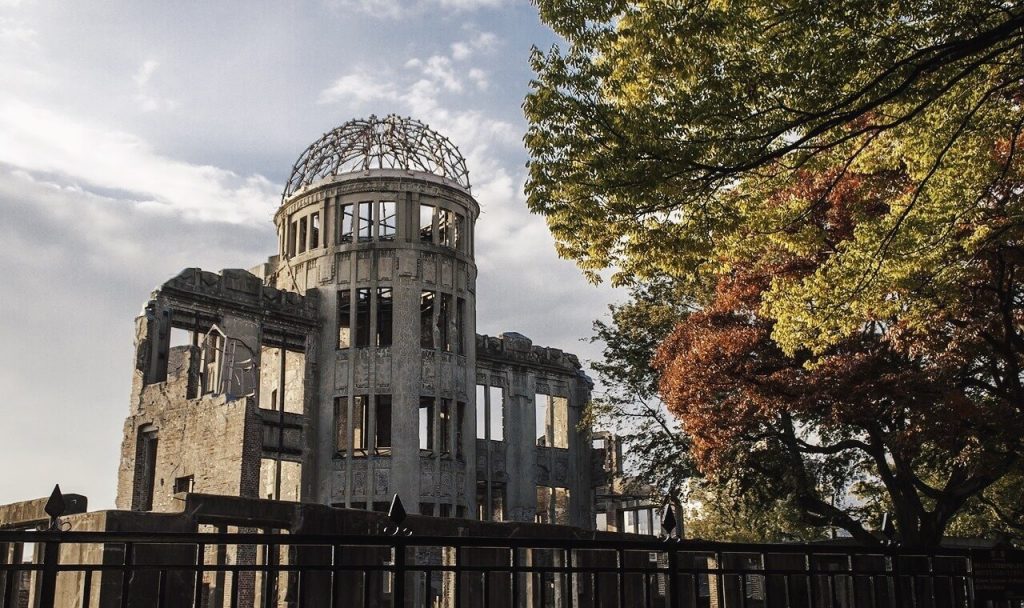
On our last day in Japan, we take a day trip to Miyajima from Hiroshima. From Hiroshima Station, it only takes about 30 minutes to get to Miyajimaguchi Station on the JR Sanyo Line.
- Climb the staircase to Senjōkaku Pavilion: A short hike up this hill will reward you with a beautiful view over the Seto Inland Sea. You can also find the Five-Stories Pagoda of Miyajima here, along with Senjōkaku Pavilion.
- Explore Itsukushima Shrine: Famous for the red floating torii gate, this shrine is one of the most famous landmarks in Japan. You can visit the Treasure Hall and admire the Grand Torii Gate from the main hall.
- Enjoy the view from Mt. Misen: Take the Miyajima Ropeway up to Shishiiwa Station and walk towards the Mt. Misen Observatory. While the trial is a little steep, the view is very rewarding.
- Try a Momiji Manjū : Miyajima’s speciality, Momiji Manjū, are small pastries in the shape of a maple leaf. They’re usually filled with red bean paste – delicious!
Check out our full guide on how to spend one day in Miyajima for more in-depth information.

As this is the last stop on our Japan itinerary, you can make your way back to the airport for your return flight.
If you have the option to fly back home from Osaka , that will save you a long journey back to Tokyo (and since the Shinkansen isn’t exactly cheap, you’ll probably save quite a bit of money too). From Hiroshima, it’s about 1.5 hours to Osaka on the Shinkansen, compared to nearly 5 hours to Tokyo.
Is 2 Weeks Enough to See Japan?
Two weeks is enough time to see some of Japan’s main highlights. In this two week Japan itinerary, you’ll visit Tokyo, Hakone, Kyoto, Osaka, Nara, Himeji, Hiroshima and Miyajima – it’s the perfect amount of time when you’re visiting Japan for the first time.
If you’d like to spend more time in Japan, please check out my 3 week Japan itinerary . However, if you only have two weeks, it’s still more than enough to get a perfect first impression of Japan. Don’t be alarmed if you’ll be looking at flights back to Japan as soon as you return home though!
Do You Need a JR Pass for 2 Weeks in Japan?
No, for this two week Japan itinerary, you don’t need a JR Pass . It’s cheaper to buy individual tickets for the Shinkansen and use a Suica/Pasmo card for travel inside the cities.
Up until October 2023, the JR Pass was a great way to save money on a trip like the one in this guide. However, the prices of the pass have increased by nearly 70% in October 2023, making it hard to keep recommending them.
Since this itinerary is spread over two weeks, and you won’t be using the Shinkansen too often, buying individual tickets is a cheaper option.
You can buy tickets for the Shinkansen at the station on the day of your trip. Just use the ticket machine or head to the JR office to get help from a member of staff. If you’re travelling with suitcases, make sure to let someone know so they can seat you somewhere with storage.
If you prefer pre-booking your tickets, you can do so on Klook .
How Much Money Do You Need for 2 Weeks in Japan?
You can make your trip to Japan as cheap or as expensive as you’d like. To give you a bit of guidance, we spent around £2,100 per person for this two week trip. This includes flights, hotels, food, souvenirs, all activities and any extras. I have a full breakdown of the cost of going to Japan on my blog too.
However, since flights and the JR Pass have increased significantly in price, it’s better to budget around £2,500 per person for a two week mid-range Japan trip .
Conclusion – Two Weeks in Japan
And that concludes my recommended two-week Japan itinerary. While there is so much more to see and do in Japan, this itinerary gives you a great first impression of what Japan is all about. Don’t be surprised if you’re leaving after two weeks wanting more – that’s how I started my own Japan obsession!
If you have a little more time to visit Japan (or want some other ideas of what to include in your itinerary), my 3 week Japan itinerary includes some more places to explore. Alternatively, you can continue travelling to Fukuoka from Hiroshima and add a week in Kyushu to your Japan travel plans.
But for now – happy travel planning and I hope you have the most amazing time in Japan!
Nele (Nay-la) graduated from Manchester Metropolitan University with an English and Creative Writing Degree and has lived in the UK for nearly 10 years. She has had an interest in Japan and its culture for as long as she can remember. Since her first trip in 2018 surpassed all expectations, she has continued to return to Japan to explore more of all it has got to offer. You can read her full story here .
View all posts
38 thoughts on “2 Week Japan Itinerary in 2024: Efficient Guide For First Time Visitors”
This is really helpful! Now I’m more than excited to go to Japan! 💕
Very enjoyable read and lovely photography for a fabulous itinerary. We’ve hit Japan a few times on flying visits (most recently Kagoshima and Okinawa a few months back) but have never hit any of the places you got to see; not even Tokyo yet. A longer stay with the sort of things you got up is certainly on our travel list, although it’s a very long list and keeps getting things added to it.
This is my dream trip! You’re so lucky and it looks absolutely incredible! I will get there one day ❤️
Now I want to go to Japan! This looks amazing. Pictures are perfect! Well done.
Beautiful photos!
Girl. This post was such a DELIGHT! Wow! Beautifully organised and put together and guess what – I bookmarked it immediately because Japan IS on my travel wish list and I know I will definitely find this blog post of yours super handy one day. I really enjoyed it. I am lost for words when it comes to commenting on something particular – there’s just SO MUCH! 😀 Amazing travel diary blog post! xox Nadia
What an incredible trip! Japan is at the top of my Travel bucket list, we are hoping to go for our honeymoon next year so this has given me so much inspiration. love you photos xx
Violethollow.com
This is such a great informative post! Your pictures are fabulous too, really bringing the place to life. I like how you gave a mix of shopping in the city and visiting the various temples. Japan is a place I would love to experience, and I feel like I have been there from reading your post! What was your favourite part of the trip? You really packed a lot in! There is so much to comment on…the crepes look amazing, how cool that you are able to rent a kimono too!
Thanks for sharing this great post!
Aimsy xoxo https://www.aimsysantics.co.uk
The layout of this post is EPIC. I’m in awe of your talent when it comes to content creation. The photos are beautiful too. Gosh I would love to go to Japan one day, I will be referring back to this post for sure 🙂
Rach | https://rachaelhope.co.uk/
Oh wow! What an epic post! Japan is definitely on my bucket list and it’s amazing how much you managed to fit in. Beautiful photos as well!
Francesca Andrews
I don’t even know where to start, this trip sounds like an absolute dream. All of the photos are incredible and can only imagine how much better it was in person. Such amazing experiences!! x
I am so incredibly jealous. Japan is on my bucket list for years and reading through your post makes me wanna go even more. The Osaka castle is ao beautiful. And I am very impressed with the pocket wifi 😅
Woahhh! Lol just wow 😲 your trip was jam packed with fun! Like I’m trying to wrap my head around how you got to go so many places lol, talk about great planning. Omg I was reading completely spazzed when I realized you got to go to the Pokémon center and Disney Sea! 😱😱😱 Also Nara looks super beautiful…All your pics are stunning and look like they truly capture the beauty of Japan! Great post hun 💕💕✈️
I have always wanted to go to Japan and it’s firmly on my to-travel list! This post is fantastic and should I book a trip to Japan any time soon, I will be bearing it in mind!
Melanie || melaniewithanie
Wow, what an incredible trip! You managed to fit so much in too, you must have done a tonne of planning! I haven’t made it to Japan yet but I definitely hope to one day xx
Wow!! So dope!! Seems like an elaborate and fun and organized trip! I cannot wait to explore japan in the guture❤️❤️😍😍
Yessss all these spots you went to are great! I hope to one day get the kimono experience as well, it’s ridiculous I’ve been to Kyoto twice now and never had the time for it despite of it.
When I was younger Japan wasn’t really on my bucket list but after a mixture of reading your post, being wow’d by the imagery and following a old school friends journey back-packing Japan.. I really am being to get the tingles to want to go! This post was honestly amazing and the images you’ve captured are fantastic!
Omg this is an amazing post!! This sounds like my perfect holiday, it has made me extra excited to go to Japan and I will come back and check this post when planning my itinerary.
Thank you so much for this Nele! I was anxious about planning our own itinerary to Japan next year but this seems totally doable. I’m going to use this as a template!
One question, I was nervous that you can’t book train travel in advance – did you have any issues at all?
So glad you like the post! We booked the JR passes in advance, but there’s no need to book any of the trains in advance 🙂 You can reserve a seat at the train station before getting on the next train, which is super super easy! Transport in Japan is top notch, we had no problems with it whatsoever and we don’t speak much Japanese 🙂
Hi! Did you get the 7 day pass and just use for the week you were away from Tokyo or did you get the full 14 day pass for the JR? I am debating which to get for this same type of itinerary 🙂 Thank you!! Love the post!
Hi Kim! So glad you enjoyed the post 🙂 We got it for only 7 days, so it fitted perfectly for the days we travelled to Kyoto, Osaka and Nara – and we just paid for little trips in Tokyo and it saved us so much money! Would 100% recommend doing that if you’re looking on saving some money 🙂
This is such a great itinirary! I only got to spend 10 days in Japan but to be honest it was more than enough. Honestly Japan is one of the best countries I’ve visited! I definitely want to go back haha xx
10 days in Japan sound amazing – what cities did you visit? I totally agree, Japan is so far my favourite country – really hope to go back soon!
I felt like I was on the trip with you! Thank you for the info and awesome pictures!
So glad you liked it! Thanks for the comment ^_^
I absolutely LOVE this list. It’s a mega list of things everyone should do their first time in Japan on a two-week stay. Simply amazing with beautiful photos to boot!
In Asian Spaces | https://inasianspaces.com/
Gundam looks cool!
Japan always looks amazing! I would really really love to visit some day x
This is such an amazing and in-depth post! it sounds like you managed to fit in a lot of amazing things during your time there. Absolutely love the photos! x
https://www.femaleoriginal.com
Japan is so high on my list! Such a fantastic and detailed itinerary. The crepe looks super yummy! And what an amazing view of Mt. Fuji! I will definitely use this itinerary when I plan the Japan trip. 🙂
Japan is on my bucket list, one day, one day i will go there, the photos are stunning
Argh I’m dying to visit Japan, and have done for years! It’s such an amazing country and I can’t wait to explore all the quirky spots one day 😀
Shannon x http://www.shanylou.co.uk uk based travel + lifestyle blogger
Me and my husband are going to Japan in June! And I’m using this blog as my guide as I make plans for our trip, and I actually copied the exact itinerary since it has everything we wanna see in Japan. Such a life saver, and also we will be using all the links in this blog to get what we need. Thank you so much Nele!
Hey Alexis! It makes me so happy to hear that the itinerary is helpful ^_^ I hope you and your husband have the most amazing time in Japan next June – if you need any more help planning or if you have any questions, please feel free to send me a message! <3 And thank you so much for using the links in this post, that helps me massively! Much love, Nele
Japan is on my to visit list and honestly this is so gorgeous! It looks like you have had the best time!
Love, Amie ❤ The Curvaceous Vegan
This is really helpful! This is pretty much the exact itinerary we’ve got planned, except we are planning a day to Hiroshima too. How long did you spend in Nara?
Leave a Comment Cancel reply
This site uses Akismet to reduce spam. Learn how your comment data is processed .
Must-Read Articles

50+ Best Things To Do In Japan

Is The Japan Rail Pass Worth it?

The Perfect Three Week Japan Itinerary
Japan Travel Tips Group

The Japan Travel Newsletter
Sign up to get inspired! Receive insider tips, special discounts and more to plan your perfect Japan trip.
You have successfully joined our subscriber list.
japan travel Blog
Tokyo Kyoto Osaka Hiroshima Hakone Kobe Nikko Nara Kyushu All Japan Content
Plan Your Trip
Best Things To Do Japan Rail Pass 2 Week Itinerary 3 Week Itinerary Accommodation Japanese Phrases
About The Navigatio Work With Us

Ultimate 2 week Japan Itinerary (2024) The Best Places
Planning a 2 week Japan itinerary? Here’s our ultimate guide on how to spend the best 2 weeks in Japan on a budget. This will be the trip of a lifetime and there are so many amazing places to explore in this beloved country.
In this Japan 2 week itinerary, we’ve included how to get around the country, the best places to stay and what to do in each destination! Find out the best things to do in Japan!
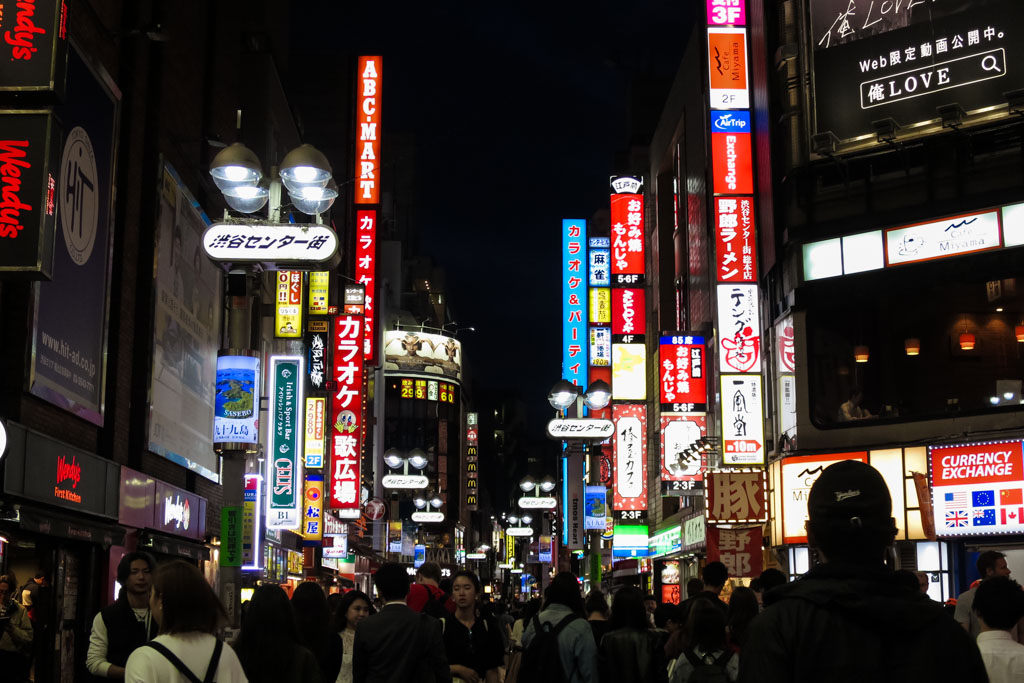
Japan is an island country in East Asia on many people’s bucket lists ( for good reason )! It’s known for having the tastiest sushi, amazing anime, wonderful culture and it’s also one of the leading countries in the world of games.
It’s also a country filled will beautiful shrines, illuminating neon lights, amazing hikes and incredible cities. There is so much to Japan that makes it a truly impressive country to explore and there are so many beautiful places to discover all year round.
We absolutely loved our time in Japan and instantly fell in love! With 2 weeks in Japan, you can discover some of the best places to visit whilst eating delicious Japanese cuisine, singing your heart out at Karaoke or simply admiring everything that Japan has to offer.
This post may contain affiliate links. We will receive a small commission if you make a purchase using these links, at no additional cost to you .
Quick Tips for a 2 Week Japan Itinerary
Table of Contents (Skip to a section!)
- Currency – Japanese Yen (compare to your own currency here )
- Language – Japanese (日本語)
- Cuisine – Japanese Cuisine (sushi, rice, curry, tempura & ramen)
- Apps – GoogleMaps & GoogleTranslate
- Transport Card – Suica / Pasmo ( top-up cards to use public transport around Japan )
- Japan Power Voltage – Plugs A & B (100 V)
- Transport – Public transport, night buses or Shinkansens – Find JR Rail Passes here !
- Klook Pass Greater Tokyo – Find tickets on Klook !
Wifi / Simcard options for Japan
E-Sim – A great option if you don’t need a Japanese number! E-Sims are easy to install as you can install the sim using your phone settings ( don’t worry it has instructions )! Here’s a 12 Day E-Sim . (£9.50 for 12 days)
Portable Wifi – The best way to always have wifi for all your gadgets. Find a portable Wifi on Klook here ! (£30 for 1 week) Pick up at the airport.
Finding Wi-Fi – Connect to free wifi around Japanese cities – Starbucks, Mcdonalds, convenience stores, airports, train stations and more!
We also recommend having a portable charger so you can charge your phone whenever it’s low and still be able to use wifi We recommend this one – Anker Power Bank .
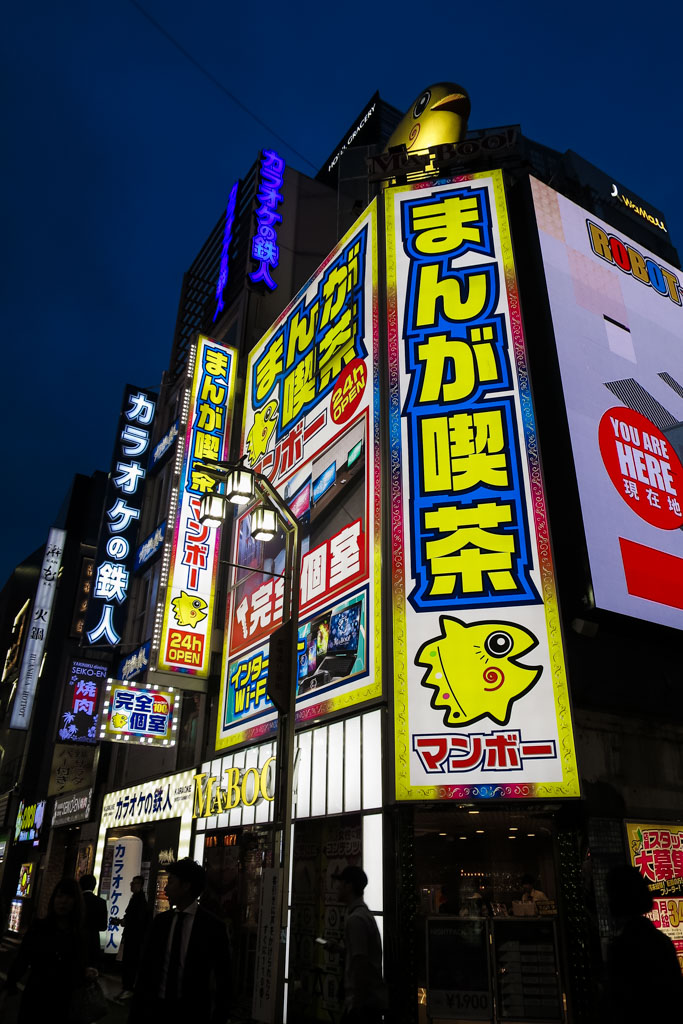
Best time to visit Japan
The best time to visit Japan is around March – May (the Spring season) and September – November (the Fall season)! These are the best temperatures for visitors and the weather should be great for 2 weeks in Japan. However, it is totally possible to visit Japan all year round and experience the benefits of each season!
- Spring – The most popular time to visit Japan due to the cherry blossom season!
- Summer – The best time to visit the north (Hokkaido) as typhoon season begins across Japan!
- Fall – The fall leaves bring a lot of visitors to parks during this season and the rainy season stops!
- Winter – Perfect for skiing & snowboarding in the north and admiring Mt Fuji in the snow.
Okinawa (a Japanese island below the mainland) has a subtropical climate throughout the year!
How to get around Japan
Japan feels like a futuristic country with its bullet trains and amazing public transport system. It’s easy to get from A to B when travelling in Japan. Whether you have a JR Pass or need to book transport separately, here are some of the best websites to get you prepared for your 2 week Japan itinerary!
Trains – The fastest way to get around Japan ( Book JR tickets here or get the JR Rail Pass !
Buses – An alternative to trains as they’re more budget-friendly and can travel overnight! ( Willer Express Bus Website )
Flights – Flights around the country can save you lots of time – Check Skyscanner for flight times and prices !
The JR Pass
The Japanese Rail Pass gives travellers the opportunity to have unlimited travel for a certain period of time (7, 17 or 21 days) – which means you can catch as many shinkansen (bullet) trains as you want! They’re easy to use and also valid on all JR lines. Book your JR Pass on Klook here !
For this 2 week Japan itinerary, we did not use a JR Pass and instead used Willer Express buses to get around the country as we did our Japan itinerary on a budget. If you’re flying in and out of Japan using different airports you may find that the JR Pass doesn’t save you any money.
If you do get a JR Pass – make sure to activate it when you leave Tokyo instead of at the beginning of your trip.
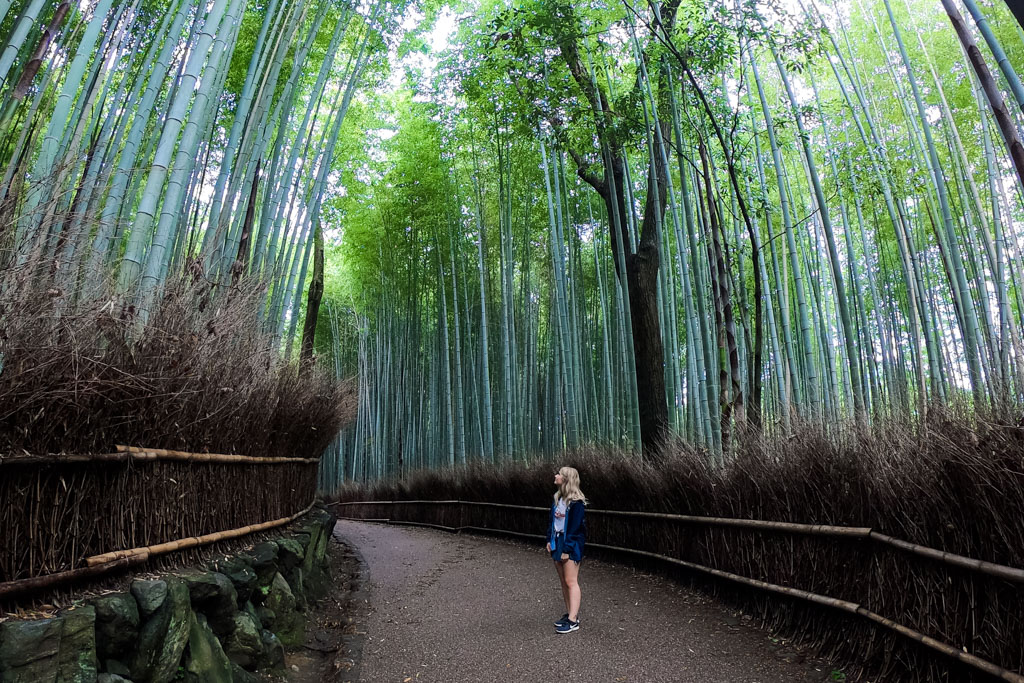
2 Week Japan Itinerary
Here’s our ultimate 2 weeks in Japan itinerary on a budget with tips on how to get to each destination.
Day 1 – 5 | Tokyo
The best way to kick off your 2 weeks in Japan itinerary is to explore the famous Tokyo. Tokyo is Japan’s capital city and with over 37 million people living there – it’s also the largest and most populated city in the world!
How to get to Tokyo
Tokyo has two international airports ( Narita and Haneda ) and both of these are connected to amazing public transport links. There are a few ways to get from the airports to the city centre.
How to get from Narita Airport to the city centre – The cheapest way is to catch a regular train on the Keisei Line , which takes around 80-120 minutes. There are also speedy trains on the same line that can get you to the city in less than 1 hour for a little more money. Another way is to catch a limousine bus which you can book in advance – Book Narita airport transfer in advance here !
How to get from Haneda Airport to the city centre – Catch the Tokyo Monorail or train (Keikyu Line) into the city centre.
What to do in Tokyo
This 2 week Japan itinerary gives you around 4-5 days to spend in Tokyo which is an amazing amount of time as there are so many things to do in Toyko! We’re going to list all the best things to do in Tokyo on a first trip and you can mix them up over your 5 days.

Discover Shinjuku
Shinjuku is one of the best areas to spend your first day in Japan – exploring the unique shops, and interesting streets and watching the hustle and bustle of Tokyo life. Check out the popular street – Omoide Yokocho (also known as piss alley)!
As well as shops, you’ll also find some great Japanese restaurants here and it’s also home to the famous Robot restaurant. Look out for Godzilla’s head above the Toho building and make sure to visit at night too!
Head to Harajuku
From Shinjuku, head to Harajuku and browse down the popular Takeshita Street ! You’ll find a Daiso here which is actually a great place to buy any budget-friendly souvenirs! Takeshita Street can get pretty hectic and we were told off for taking photos of a shop here (oops!) but it’s worth a visit in Japan!
- Warner Bros. Studio Tour Tokyo – The Making of Harry Potter – Klook is the best place to get discounts on these tickets – Find more details here !

Walk around Yoyogi Park
Whilst you’re in the area, take the afternoon to check out Yoyogi Park and Meiji Jingu. The park is beautiful, especially in the Spring and Fall seasons.
Visit Shibuya
Next, it’s time to explore Shibuya – another must-visit area during your 2 weeks in Japan. Shibuya is home to one of the busiest road crossings in the world and there’s a Starbucks that gives a great view ( location here )! Head to the Hachiko Memorial Statue and you’ll be sure to find the crossing next to all the popular shops.
See the view from the Metropolitan Government Building
Head to the Metropolitan Government Building for a free view of the city! It’s one of the best spots to see Tokyo from above and it’s all for free.

Explore Asakusa
Exploring Asakusa is one of the best things to do in Japan and it’s definitely a busy place to be! If you have the chance make sure you visit in the daytime and night as Tokyo lights up in the dark. Browse around Nakamise Shopping Street and find the many temples in the area.
Spend a morning doing a Tokyo Kimono Experience with Japanese Hairstyling – Find tickets on Klook here .
Admire Senso-ji Temple
Walk through the Asakusa district and find the famous Senso-ji Temple – one of the most visited Buddhist temples in Japan. It’s also the oldest temple in Tokyo, so it should definitely be added to your 2 week Japan itinerary.
The beautifully bright red Senso-ji Temple was originally built to honour Kannon (the goddess of mercy) and it lies in the same area as the Five-Storied Pagoda and Hozomon Gate . All of these are worth checking out! Entry is free to visit the temple and the surrounding area.

Visit Tokyo Skytree
Tokyo Skytree is easy to spot from Asakusa and a short walk will get you to the base of the impressive tower! It’s the world’s tallest freestanding broadcasting tower that has an observation deck! Find tickets to get to the top on Klook here or GetYourGuide here ! Here’s the location .
Get lost in Akihabara
Akihabara is the best place to be if you like manga and games. It’s one of the coolest neighbourhoods in Tokyo and definitely earns a spot on this 2 weeks in Japan itinerary. You’ll find the big Sega building and many electronic shops and it’s literally a paradise for manga, anime and video game fans!
Walk around Ginza
Ginza is known as the upmarket shopping district in Tokyo with fancier shops and a higher level of class. It’s an interesting area to walk around in Japan and it was actually where our hostel was based (DJ Ginza Hostel) which is sadly now closed.
Spend the day at Disney Sea
There is only one Disney Sea in the world and it’s right here in Tokyo! Take a day to discover the magical world of Disney and have fun on all the rides! It’s very popular for Japanese couples or groups to wear matching clothing and it’s such a wonderful experience during your 2 weeks in Japan!
There’s also a Disneyland Tokyo – Book your tickets in advance here and a Sanrio Puroland Tokyo !

More things to do in Tokyo
- Wander around Ueno Park
- Get lost in TeamLab Borderless – Book tickets here !
- Explore a themed cafe
- Warner Bros. Studio Tour Tokyo – The Making of Harry Potter
- Admire Tokyo Tower – Book tickets here
- Find the Unicorn Gundam Statue & Odaiba Statue of Liberty
- Day Trip to Hakone (Mt Fuji) – Find tickets here !
- Indulge in a Japanese Sushi Making Class – book here !
At the end of Day 5 on your 2 week Japan itinerary – head to Shinjuku Expressway Bus Terminal to catch as it’s time to catch a night bus* to Kyoto.
*This part of the itinerary is up to you – we chose to catch a night bus to be more time efficient and save some extra money on accommodation. The Shinkansen (bullet train) is amazing here so if you want to take a train, it will take less than 3 hours to get from Tokyo to Kyoto! Book your JR Pass and JR tickets here !
Where to stay in Tokyo
Tokyo is a big city with many different neighbourhoods to explore! The best places to stay in Tokyo are Shinjuku , Ginza , Shibuya and the Tokyo Station Area. If you’re staying a little out of the city centre – make sure you’re near some good transport links! Here are a few places we recommend:
Nui. Hostel $ – Great place to meet travellers & budget accommodation in Tokyo – Find the link here !
Imano Tokyo Hostel $ – Another budget destination, close to Shinjuku – Find the link here !
Sotetsu Fresa Inn Higashi Shinjuku $$ – Private rooms in the heart of Shinjuku – Find the link here !
The Prince Park Tower Tokyo $$$ – Luxury spot overlooking the city & Tokyo Tower – Find the link here !

Check out our Ultimate 2 week South Korea Itinerary: Best Places (2024) !
Day 6 – 9 | Kyoto
The next stop on your 2 week Japan itinerary is Kyoto – a city filled with shrines, forests and beautiful traditional streets. Kyoto is much smaller than Tokyo and it feels a lot more relaxed. It actually used to be the capital of Japan!
We’re going to show you the best things to do in Kyoto and a few places you can add to your Japan 2 weeks itinerary.
How to get to Kyoto from Tokyo
The best way to get from Tokyo to Kyoto is by train or bus, it’s really easy with a JR Pass .
Train – Book your train ticket in advance to avoid tickets selling out and head to Tokyo Station . The journey will take around 2 to 3 hours and you’ll arrive at Kyoto Station .
Bus – We took a night bus from Tokyo to Kyoto and it was so comfy! We booked our tickets on Willer Express and our bus left at 22:35 ( Shinjuku Expressway Bus Terminal ) and arrived at 07:05 ( Gion-Shijyo Station ) which means we got a full night’s sleep.
What to do in Kyoto
On your 2 week Japan itinerary, you’ll find loads of lovely things to do in Kyoto. It’s home to the famous red torii gates at the Fushimi Inari Taisha Shrine and also the popular bamboo forest. It’s a beautiful city surrounded by mountainous hills filled with traditional houses.
Visit the Fushimi Inari-Taisha Shrine
This is one of the popular spots on your 2 week Japan itinerary! The Fushimi Inari Shrine is famous for its 10,000 torii gates leading up to the summit of a mountain. It takes around 2-3 hours to walk the whole length, although you can turn around at any point.
Fushimi Inari Taisha is the chief shrine of Inari (the god of rice & sake). The torii gates here are from the Shinto religion and represent the border between two worlds.
We highly recommend visiting the Fushimi Inari-Taisha Shrine as early as you can make it. Any time around 6-7am will be great as you can beat the crowds and do the hike without crowds.

Admire Kinkakuji Temple (The Golden Pavilion)
Another beautiful place to visit on your Japan 2 week itinerary is the Kinkakuji Temple (also known as the Golden Pavilion). The temple is in the heart of Kyoto, on the side of a lake covered by trees.
Here’s the location of Kinkajui Temple and the price to enter is 400 yen (you can find out on their website ).
Browse around Pontocho
On your first evening in Kyoto head to the area of Pontocho for some dinner! There’s a popular narrow street called Pontocho Alley and this is where the main atmosphere is! Grab a bowl of udon, or ramen or try some famous Japanese sushi.
Explore Gion
It’s time to explore Kyoto’s traditional area of Gion ! Gion is known to be the Geisha district of Kyoto and it’s popular to see Japanese people and visitors wearing kimonos around these streets. It may be hard to see a real Geisha, although they do live here!
There are also many more restaurants here for the rest of your Kyoto trip and great sake bars! Take a guided night walk in Kyoto’s Geisha District here !

Visit Ginkaku-ji
Ginkaku-Ji is a silver Buddhist temple in Kyoto surrounded by gorgeous gardens! It’s definitely worth a visit when you’re in Kyoto as it’s different to the famous gold Kinkakuji Temple. The price is 500 yen to enter the park.
Explore Arashiyama Bamboo Forest
On your final day in Kyoto, wake up early and visit the famous Arashiyama Bamboo Forest . It’s another beautiful place to visit on your 2 week Japan itinerary and easy to get to by public transport. The bamboo trees are incredibly tall and tower over the main pathway. It can get really busy here!
Arashiyama is also a lovely area of Kyoto to walk around after visiting the bamboo forest. There are a few cafes and places to buy mochi!
Check out this – Kyoto: All-Inclusive 3-Hour Food and Culture Tour in Gion !
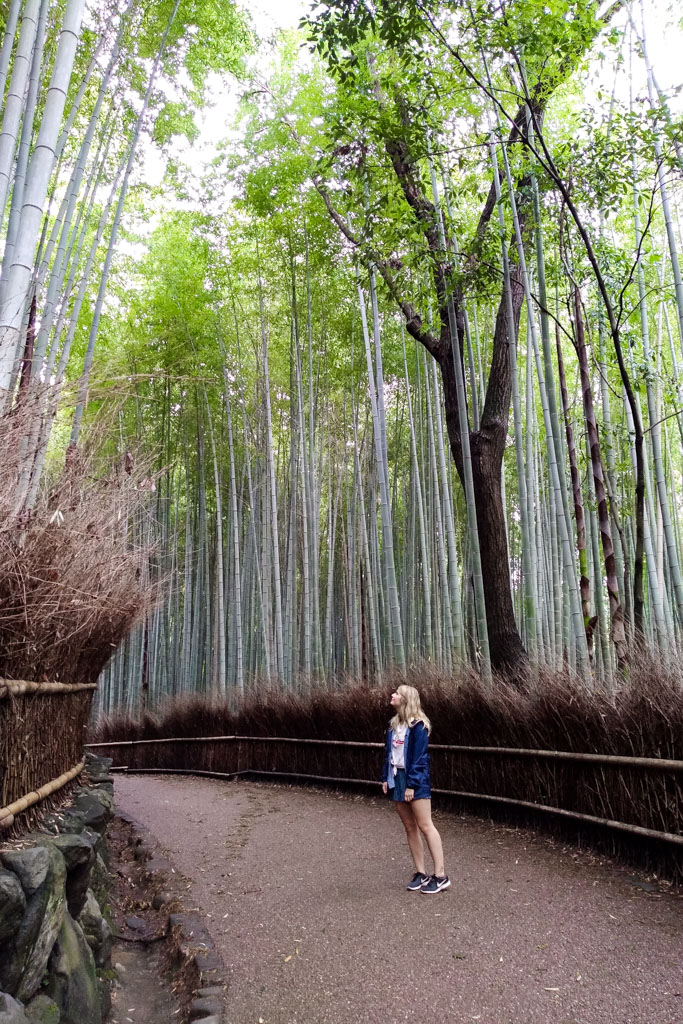
Where to stay in Kyoto
The best area to stay in Kyoto is near Downtown Kawaramachi or Kyoto Station . Kyoto is a lot smaller than Tokyo and you’ll be using local trains and buses to get around the city so it’s good to be well-connected! Here are a few places we recommend:
Len Kyoto $ – The sister hostel of Nui in Tokyo, great location – Find the link here !
Hotel Resol Kyoto Kawaramachi Sanjo $$ – Private rooms in the heart of Kyoto – Find the link here !
Hotel Elcient Kyoto $$ – Private but small rooms next to Kyoto Train Station – Find the link here !
Day 9 – 11 | Hiroshima
Further down south is Hiroshima, another spot to add to your 2 week Japan itinerary. Hiroshima is sadly known for being ruined by an atomic bomb during World War II in 1945. The city is a big piece of history for Japan and it’s possible to visit the ruins in the park.
On a lighter note, it’s known for being close to the famous Miyajima island! Let’s explore Hiroshima on your 2 weeks in Japan itinerary!
How to get to Hiroshima from Kyoto
Similar to before, the best way to get to Hiroshima from Kyoto is by train and bus. The train is always going to be the quickest option and is included in your JR Pass .
Train – The train to Hiroshima will take under 2 hours from Kyoto and the scenery is beautiful! (Book your train ticket in advance to secure a space). Head to Kyoto Station and arrive at Hiroshima station .
Bus – If you’re on a budget, Willer Express buses are a great way to get around the country and this was our favourite train ride in Japan! We took a bus at 06:50 from Kyoto Station and arrived at 14:00 into Hiroshima Station .
Here are 6 Best Tips to Travel Japan on a Budget – Cost of Travel in Japan !

What to do in Hiroshima
Visiting Hiroshima was another highlight of our 2 weeks in Japan and it was where we fell in love with Okonomiyaki! Here are a few things you can get up when visiting the city for 2 or 3 days.
Visit Hiroshima Peace Memorial Park
One of the best things to do when you arrive in Hiroshima is to head to the Peace Memorial Park. It’s in the heart of the city and cannot be missed! The park is a memorial to the 1945 event of the tragic atomic bomb during World War II.
You will also find the Hiroshima Peace Memorial Museum, Pond of Peace, Clock Tower of Peace and more in the park.
If you want to find out more information about the history here, check out this Hiroshima Cycling Peace Tour with a Local Guide !
See the Atomic Bomb Dome
The war memorial that stands out the most in the park is the ruins of a hall that was destroyed by the atomic bomb. It’s named the Atomic Bomb Dome and can be admired from a distance or up close. It’s so scary to think about what happened here less than 100 years ago. ( location here )
Start your day with an Early Morning Trekking Tour with a tea ceremony – Find out more here !

Explore Hiroshima Castle
After visiting some important sites in Hiroshima, it’s time to see the beautiful Hiroshima Castle on your Japan 2 week itinerary. The castle has lots of nature around including a Koi pond!
Like many buildings in Hiroshima, it was completely destroyed and has since been rebuilt, which is very impressive. It’s free to enter the grounds but a small cost to go inside the castle.
Eat okonomiyaki
For dinner we highly recommend you check out Okonomimura ! It’s a big food hall with many small restaurants serving the famous okonomiyaki and more! It’s the best place to find Okonomiyaki in Japan, as this is where the dish originates from!
Okonomiyaki is grilled cabbage and egg with any toppings and a delicious sauce! Okonomiyaki translates to ‘what you like’, so there are many different variations. You can eat it right off the hot plate! Here’s the location !

Take a trip to Miyajima Island
During your 2 week Japan itinerary, you must visit Miyajima Island! It’s another one of our favourite things to do in Japan as the natural beauty of the island and its surroundings are amazing! If you have more than one day there’s actually a lot to do on the island including hiking and temple visiting.
How to get there? Catch a tram or train to Miyajimaguchi Station and from there you can get a ferry over to the island. Here’s a few ways you can spend your time:
- See the Itsukushima Floating Torii Gate (low tide and high tide)
- Say hi to the local wild deer
- Explore the markets
- Visit Daishō-in Temple (Buddhist temple complex)
- Hike Mount Misen
- Cultural Experience in a Kimono

Where to stay in Hiroshima
The best area to stay in Hiroshima is near downtown . You’ll be close to all the main things to do and it’s super easy to get transport to Miyajima island.
Santiago Guesthouse $ – Hostel in the heart of Hiroshima with lovely kitchen space – Find the link here !
The Evergreen Hostel $ – Cosy hostel in Kyoto & a great way to meet travellers – Find the link here !
The Knot Hiroshima $$ – Private rooms in Hiroshima with a rooftop view – Find the link here !
Day 11 – 14 | Osaka
For the last few days of your 2 weeks in Japan, it’s time to base yourself in Osaka to explore the city and surrounding areas. Osaka is an energetic city only a few hours away from Tokyo, it’s known for having outgoing locals and lively, trendy areas with amazing Japanese cuisine all around!
How to get to Osaka from Hiroshima
The best way to get to Osaka from Hiroshima is by train or bus. (Get your JR Pass here) If you don’t have a JR Pass, these trains won’t cost too much compared to the Tokyo to Osaka journeys as the distance isn’t as long.
Train – The train from Hiroshima to Osaka only takes 1.5 hours! Go to Hiroshima station and you’ll arrive at Shin-Osaka Station . Book your train ticket in advance to secure a space)
Bus – We took a Willer Express bus at 16:45 from Hiroshima station and arrived at 22:10 in Osaka Umeda . As we’ve said before, the buses are very comfy in Japan and a budget-friendly way to get around the country.

What to do in Osaka
Osaka has many interesting things to do including amazing day trip options. We’ll show you how to spend 3 days in the multicultural city of Osaka!
Go on a welcome tour when you first arrive in Osaka – Welcome to Osaka: Private Tour with a Local Host !
Walk around Namba
Namba is the main area of Osaka with a high-energy atmosphere filled with funky shops, bright colourful signs and so much food! It’s also where a number of the best places to visit are in Osaka. You have to visit Namba both the day and the night for a totally different experience.
- Shinsaibashi-suji Shopping Street
- Dotonbori Glico Sign (take photos from the side of the bridge!)
- Ebisu Tower Ferris wheel
- Namba Yasaka Jinja (Shinto Shrine)
Visit Nipponbashi Denden Town
Denden Town is similar to Harajuku or Akihabara in Tokyo with electronic shops, manga, anime and games. It’s a really fun area right next to Namba and definitely worth checking out!

Browse Kuromon Market
This is one of the best markets in Osaka for food and souvenirs. Take a walk through the markets and get tempted by the smell of melon pans and unique Japanese delights! Here’s the location !
Admire Osaka Castle
Visiting Osaka Castle is a highlight of this 2 week Japan itinerary as both the gardens and castle are beautiful. The castle is surrounded by water and the park is filled with nature – it’s especially beautiful during Spring and Fall. We sat on the stones near the castle during sunset and it’s the perfect way to watch the sunset in Osaka.

Try the street food in Dotonbori
If you haven’t tried takoyaki yet during your 2 weeks in Japan – now is your chance to do so. Osaka is known as Japan’s food capital and there are so many options for Japanese food here.
Visit Nara (Day Trip)
Nara is a popular destination to visit in Japan and should be included on your Japan 2 week itinerary! The small city has a park filled with local free-roaming deer and it’s possible to feed them deer biscuits.
There are also beautiful temples and lovely streets of gifts and souvenirs – we watched mochi being made in one of the shops! Nara is only a 30-minute train ride from Osaka so it’s the perfect day trip or even afternoon trip if you’re running short on time.

Take a trip to Universal Studios Japan
If you love theme parks, then Universal Studios should be added to your 2 week Japan itinerary. Along with Disneyland and Sea (in Tokyo), Universal Studios is one of the most popular theme parks in Japan. The experience of theme parks is amazing with shows, themed restaurants and some of the best rides.
As huge Nintendo fans, we are so excited to visit Universal Studios in Japan one day to see Super Nintendo World which opened in 2021. Book your tickets on Klook here !
Check Kobe (Day Trip)
Kobe is another day trip option from Osaka during your 2 weeks in Japan. It’s known for Kobe Beef, Nunobiki waterfall and its lovely china town. As it only takes 30 minutes to get there, it’s possible to visit in one afternoon or morning. Although if you want to explore the mountainous hills you can spend all day!
More things to do in Osaka:
- Play arcade games at a Japanese Gesen (game centre)
- Visit the Umeda Sky Building
- Go on a food tour!
- Go on the Umeda Ferris Wheel
- Visit Tsutenkaku Tower
- Visit the Cup Noodles Ramen Museum (northwest of Osaka)
- Visit Kyoto on a day trip (if you haven’t visited yet)

Where to stay in Osaka
The best areas to stay in Osaka are Namba and Umeda and anywhere near good transport links!
Hostel Q $ – Budget rooms in the heart of Osaka city – Find the link here !
The Bridge Hotel Shinsaibashi $$ – Private rooms in Osaka, close to the main area – Find the link here !
2 Weeks in Japan Itinerary Breakdown
Day 1-5 | Tokyo / Day 6-9 | Kyoto / Day 9-11 | Hiroshima / Day 11-14 | Osaka
If you have a return flight from Tokyo make sure you have time to get back to Tokyo from Osaka. The best way to get from Osaka to Tokyo is by flight, train or night bus. The train is the best option if you have a JR Pass !
Other Places To Visit in Japan
- Yokohama – the second largest city in Japan, next to the water near Tokyo!
- Fukuoka – is known for its ancient temples and its close links to South Korea!
- Okinawa – a nature-filled tropical island south of mainland Japan!
- Hokkaido – the north of Japan featuring amazing hikes and Sapporo city!
- Hakone – visit the base of Mt Fuji on a day trip from Tokyo!
How do I plan a 2 week trip to Japan?
After figuring out your 2 week Japan itinerary – it’s time to start planning the rest of your trip! Here’s a list of links you might find helpful when booking your transport, accommodation & activities!
- Check if you need a visa
- Check for any national holidays on your date of visit in 2024 ( check here )
- Book your flights – check Skyscanner prices here
- Get Travel Insurance – Find out more here!
- Book your accommodation on Hostelworld here or Booking.com here
- Book a JR Pass – Book your JR Pass on Klook here !
- Book buses in Japan here – Willer Express Bus Website
- Find a portable Wifi on Klook here !
- Book any must-visit activities such as Universal Studios or Museums

Should I get a JR Pass?
Yes – If you have return tickets to Tokyo and you want to experience Japanese bullet trains then yes, the JR Pass will work out great for you! Book your JR Pass on Klook here !
No – If you’re on a budget during your 2 weeks in Japan then no, you shouldn’t get a JR Pass . In this Japan itinerary, we’ve shown you how to get around the country by bus journeys which is cheaper than bullet trains and the JR Pass .
Activities to book in Japan
- Tokyo – TeamLab Borderless – Book tickets here !
- Tokyo Tower – Book tickets here
- Sushi Making Class – Book here !
- Kyoto – Guided night walk in Kyoto’s Geisha District
- Hiroshima – Early Morning Trekking Tour with a tea ceremony – Find out more here !
- Osaka – Go on a food tour – Book here!
- Visit Kyoto on a day trip from Osaka – Book here!
Vegan in Japan Tips
Japanese food is loved all around the world and is some people’s favourite cuisine. We first visited Japan as vegetarians and realised we were going to struggle if we didn’t do our research.
Thankfully we found a lot of options on Happy Cow and survived using Google Translate on ingredients in shops. Here are a few helpful recommendations for your 2 weeks in Japan:
- Curry House Ichibanya will be a lifesaver (plant-based Japanese curry menu all around the country)
- Have a look at the IsitVeganJapan website !
- Pretty much every ramen is made with bone broth (unless specified)
- Use the HappyCow app
- Join Vegan in Japan Facebook Groups
- Visit T’s Tan Tan in Tokyo
- Bring your own cereal bars, oats and snacks

Are 2 weeks enough to visit Japan?
Yes! 2 weeks in Japan will give you the opportunity to plan the perfect first-time trip and discover your favourite areas. If you love big cities, you’ll want to spend 2 weeks in Tokyo alone. When we visit Japan in the future, we’d love to visit Hokkaido in the winter and the tropical island of Okinawa.
There are so many things to do in Japan that you’ll always want to come back for more. With two weeks in Japan, you can visit some of the main highlights and we’ve covered the best places to visit on this 2 week Japan itinerary.
Planning a 1 week Japan Itinerary
If you have return tickets to and from Tokyo, get a 7 day JR Pass to save time, spend 3 days in Tokyo and head to Kyoto for 2 days, then finish with 2 days in Osaka with an afternoon in Nara before making your way back to Tokyo on your last day ready to catch a flight back.
How much does a 2 week to Japan cost?
We visited for a total of 16 days on a budget and spent around £1,225 for two people. We stayed in hostels, took buses & night buses instead of intercity trains and cooked some of our own food. However, we did visit a lot in Japan over 2 weeks and even went to Disney Sea! Here are our costs:
- SHORT BREAKDOWN (16 days of travel in Japan for 2 people)
- Accommodation Costs – 56,882¥ (£380)
- Transportation Costs – 46,150¥ (£308)
- Food Costs – 51,289¥ (£343)
- Activities, Shopping & Laundry Costs – 29,086¥ (£194)
- = 183,407¥ (£1,225)

What to pack for 2 weeks in Japan?
Depending on the season you’re going to visit, you’ll want to bring clothes suited for the season plus good footwear. Here are a few travel essentials we highly recommend!
- Stainless Steel Water Bottle – Japan has clean drinking water, so you don’t need plastic bottles!
- Worldwide Travel Adaptor – The ultimate travel companion!
- Amazon Basics Packing Cubes – The best way to pack suitcases and backpacks.
- Anker Power Bank – Never let your phone run out of battery.
- Rain Mac in a Bag – It can often rain in Japan, so it’s good to be prepared with a lightweight jacket.
- Joby GorillaPod 3K Pro Kit – We have a Joby GorillaPod and use it for our Sony A600 ! There’s also a Joby Phone Tripod if you don’t use a camera.
More Japan travel guides:
- 6 Best Tips to Travel Japan on a Budget – Cost of Travel in Japan
- Ultimate 2 week South Korea Itinerary: Best Places
- Also check out our South Korea Guides !
That’s the end of our Ultimate 2 week Japan Itinerary: The Best Places! Have an amazing trip to Japan and if you need any more help planning – send us a message on Instagram (@thesunrisedreamers) or leave a comment below!
LIKE THIS POST? PIN IT FOR LATER & SHARE IT WITH OTHERS!

Don’t forget about Travel Insurance! – SafetyWing Nomad Insurance
SafetyWing is a totally flexible monthly-rolling travel insurance to help you stay safe on your trip anywhere in the world. Find out more here!
Interesting Fact: There is 1 vending machine for every 24 people.
Amy & Dan are the founders of The Sunrise Dreamers. They are travellers from the UK who have been on the road since 2017 whilst living in places like England, Canada, Thailand and the Canary Islands. They share their knowledge of travelling the world with detailed travel guides and tips. They're experts in vegan travel and show their audience how to travel on a budget.
Similar Posts

Moalboal Itinerary: The Best Things To Do (2024)
Planning a Moalboal itinerary in 2024? You’re in the right place! Moalboal is the best place to base yourself to…

3 Day Koh Samui Itinerary: The Best Koh Samui Guide
Wondering how to spend 3 days in Koh Samui? We’ll show you the best things to do on this beautiful…
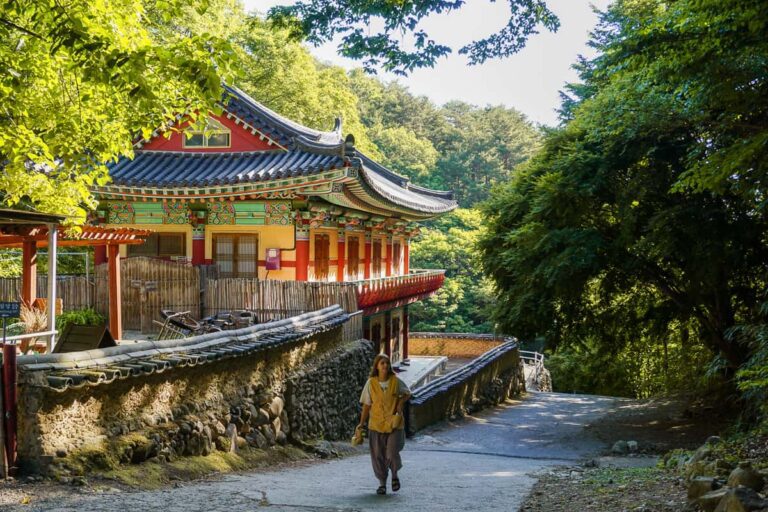
25+ Best South Korea Travel Tips: What to Know
Looking for some South Korea Travel Tips? We’re here to tell you all the best things to know before visiting…

Incredible 10 Day South Coast Sri Lanka Itinerary
At the very bottom of Sri Lanka is the beautiful South Coast – filled with small coastal towns and some…

What to do in Colombo: 7 Amazing Places to Visit in 2024
Are you wondering what to do in Colombo? Sri Lanka’s busy capital city is filled with beautiful temples, hidden foodie…

The Best El Nido Itinerary: 3 Days in El Nido
Are you planning a 3 Day El Nido itinerary? Here’s our in-depth travel guide to help you plan your trip…
One Comment
Love the Fushimi Inari-Taisha Shrine and the Bamboo. I’d love to go to see the Cherry Blossom also 🌸 great travel tips and so much to see! <3
Leave a Reply Cancel reply
Your email address will not be published. Required fields are marked *
Save my name, email, and website in this browser for the next time I comment.
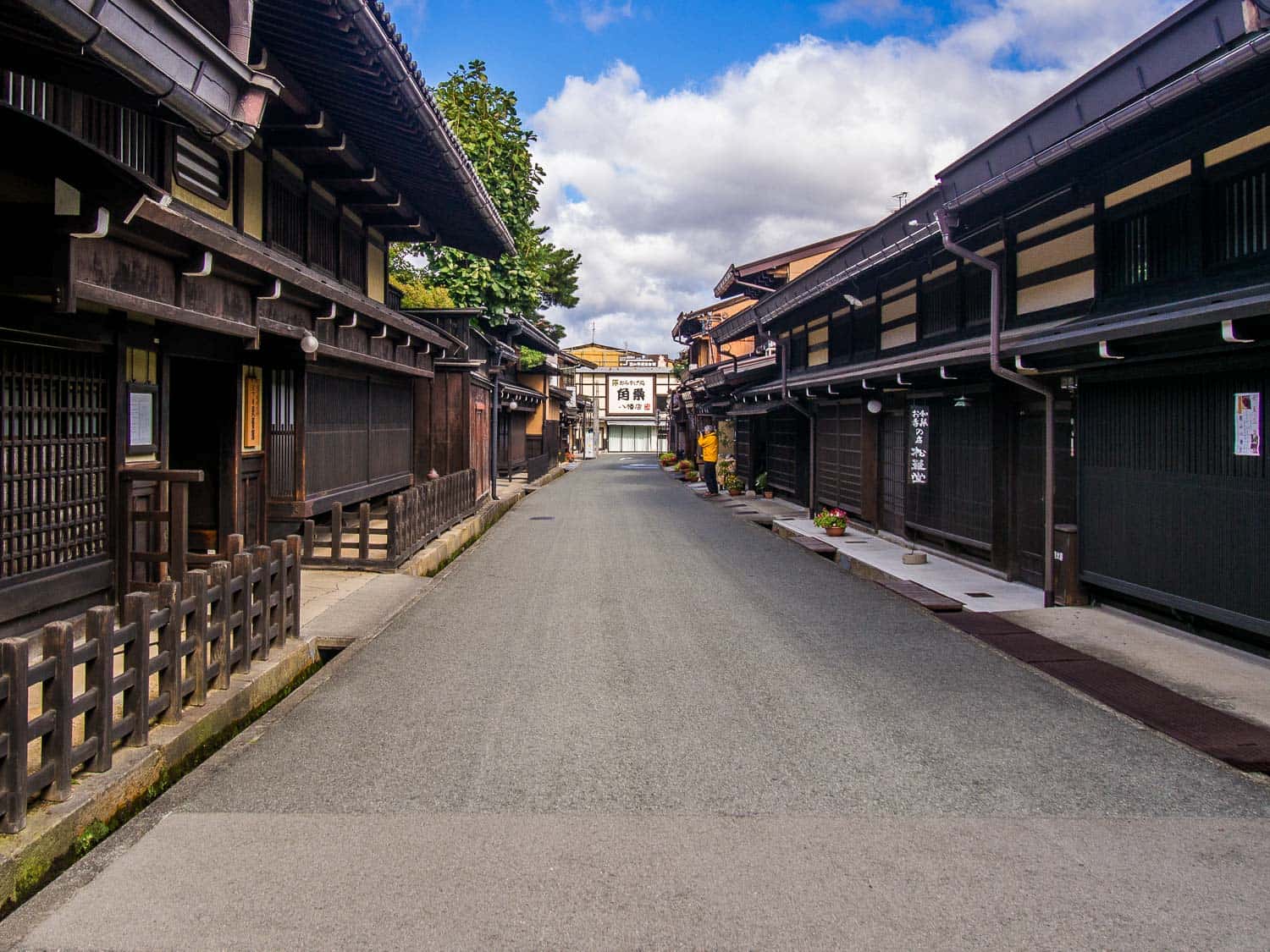
2 Weeks in Japan: The Perfect Itinerary for First Time Visitors
This page contains affiliate links. Please read our disclosure for more info.
During our two weeks in Japan we experienced as much as possible of what the country has to offer.
From the neon lights of Tokyo to the wooden teahouses of Kanazawa; from driving go-karts dressed as Mario characters to the solemn and tranquil tea ceremony; from steaming bowls of cheap ramen to exquisite kaiseki cuisine; from temples, mountains and rice paddies to bullet trains, skyscrapers and arcades.
We fell in love with the country even more than on our first visit.
In this detailed Japan 2 week itinerary, I share exactly where we went, how we got there, where we stayed and ate, how much it all cost, and a map of our route.
This trip is ideal for first-time visitors to Japan as it covers the highlights (modern Tokyo, traditional Kyoto, stunning Mount Fuji) as well as some less-visited gems.
It also works well for return visitors like us who want to revisit their favourite spots and make some new discoveries.
Video: Japan Highlights
Our japan itinerary, japan two week itinerary map, getting around japan, days 1 – 5 tokyo, day 6 nikko, day 7 hakone, days 8 – 9 takayama, days 10 – 11 kanazawa, days 12 – 16 kyoto, alternative japan destinations, two weeks in japan budget, japan travel resources, japan travel blog posts.
Watch our video for ideas on how to spend two weeks in Japan.
Back to Contents
- Tokyo – 5 nights (stay in an apartment in Shinjuku )
- Nikko – 1 night (stay at Nikko Park Lodge Tobu Station )
- Hakone – 1 night (stay in a traditional room at Hotel Musashiya )
- Takayama – 2 nights (stay at Super Hotel Hida Takayama )
- Kanazawa – 2 nights (stay at Smile Hotel Kanazawa)
- Tokyo – 5 nights (I recommend Kyoto instead for most people)
Our trip was at the end of September until mid-October and was actually for 16 nights, but you could easily cut this down to 14 days in Japan by spending less time in Tokyo.
Our Japan itinerary included five nights in Tokyo, six nights travelling with a 7 Day Japan Rail Pass , and ended with five more nights in Tokyo.
We spent over three weeks in Kyoto on our first trip so we didn’t visit this time, but if you are new to Japan, I highly recommend substituting the second Tokyo stay with Kyoto as it really is a must-see.
See my detailed guide to the best things to do in Kyoto for lots of tips.
There are so many amazing places to visit in Japan . At the end of this post I have included other suggested destinations if you decide to get a 14 Day Rail Pass for your two weeks in Japan and add more places to your itinerary and reduce the time spent in Tokyo or Kyoto.
As Japan is expensive and there is so much to do, we moved at a much quicker pace than usual.
The week travelling with a rail pass was especially exhausting and we could easily have added an extra night (or two) to everywhere we visited.
That said, we don’t regret our itinerary as we had an amazing time and loved everywhere we visited.
This map shows our 2 week Japan itinerary with blue markers and other potential destinations to consider with red markers.
Trains are the best way to get around Japan and we travelled with a 7 day Japan Rail Pass .
Although the passes seem expensive (a 7 day pass is $214) they will usually save you money if you are travelling to many places, especially if you take the fast bullet trains (which are one of the best things to do in Japan ). We saved $150 per person for this itinerary!
You can use the Navitime website to find train times and costs and compare these to the cost of a pass.
If the cost is close, get the pass as it’s much easier being able to hop on and off trains when you like and not worry about purchasing tickets.
You need to book Japan Rail Passes in advance before you arrive in Japan. You’ll receive an exchange order in the mail that you then exchange for the pass in Japan.
We booked ours with JRailPass.com who deliver anywhere in the world, including to your first Japan hotel if you’ve left it to the last minute. We got ours delivered to a hotel in Bali.
See my detailed guide on how to calculate whether a Japan Rail Pass is worth it including everything you need to know to use the pass.
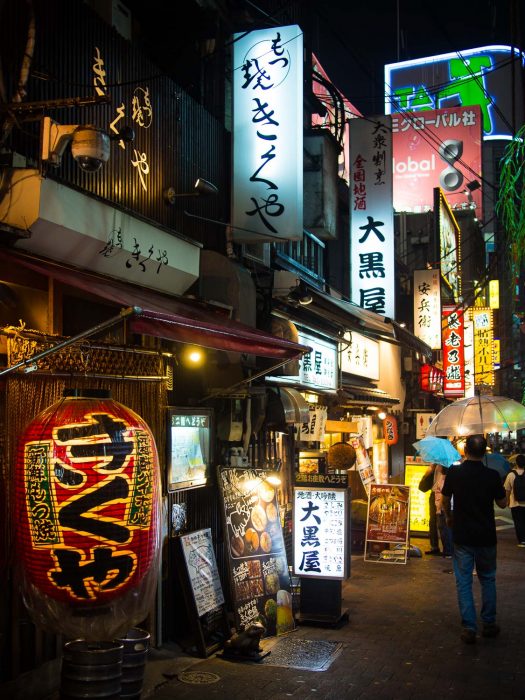
It’s easy to spend five days in Tokyo, but if time is limited you could reduce your stay to three.
It’s a huge sprawling city so it’s best to focus your explorations on neighbourhoods.
Here are some of my recommendations and you can see my guide to the coolest things to do in Tokyo for more details.
Shinjuku Day
- Shop in huge electronics stores like BIC Camera and the food basements of department stores like Takashimaya.
- Stroll around the beautiful Shinjuku Gyoen National Garden (having a picnic here is one of our favourite things to do in Shinjuku ).
Shinjuku Night
- Eat in a tiny restaurant on atmospheric Memory Lane.
- See the skyline view from the free Tokyo Metropolitan Government Building (or Lost in Translation fans might want to pay for a drink at the NY Bar at the Park Hyatt Hotel).
- Bar hop on the Golden Gai and perhaps join a Shinjuku bar hopping tour to explore with a guide.
Shibuya and Harajuku
- Walk across the famous Shibuya Crossing.
- Gawp at the crazy fashions of Takeshita Street.
- Enjoy stunning ukiyo-e woodblock prints at the Ota Memorial Museum of Art.
- Visit the Meiji Shrine in Yoyogi Park.
- Step back into old Japan and get your fortune told at Sensoji Temple.
- Enjoy a meal in a traditional restaurant (we had a 12-course vegetarian feast at Bon ).
Rest of Tokyo
- Spend a day at the magical DisneySea or Tokyo Disneyland parks.
- Visit the Ghibli Museum if you are a Studio Ghibli fan (tickets must be booked on 10th of the month for the following month).
- Immerse yourself in the colourful digital art museum, TeamLab Planets .
- Take a fun go-karting tour driving the Tokyo streets dressed as your favourite character!
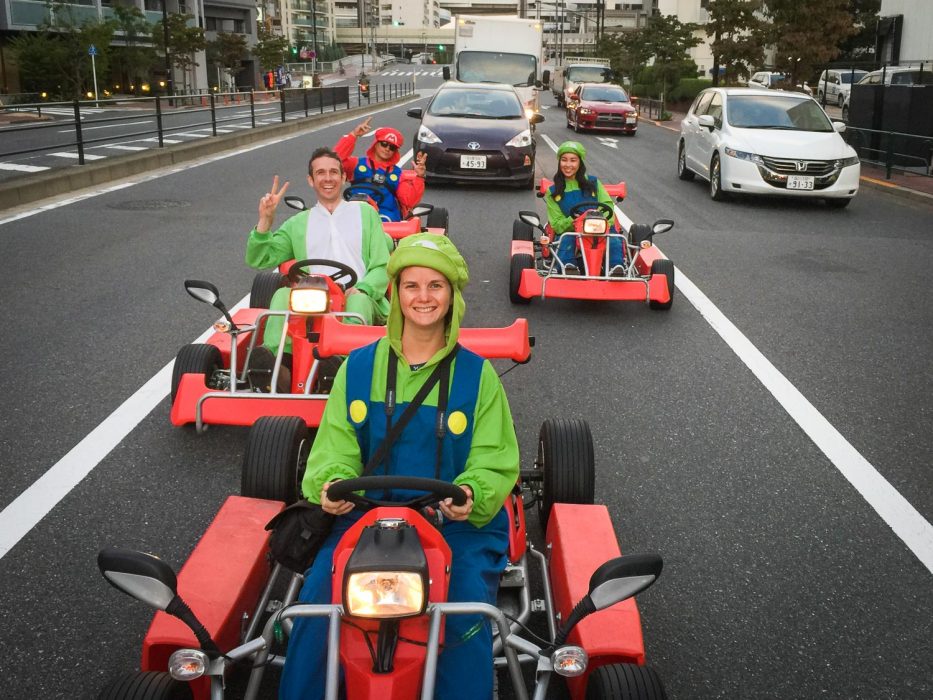
Tokyo Transport
The Narita Express train is the easiest way to get from Narita airport to Shinjuku, Shibuya and Tokyo stations.
It costs 3250 yen ($23) and takes 87 mins to Shinjuku. You must have a seat reservation but you can get this when you buy the ticket from the machine or counter in the airport station.
The Japan Rail Pass is valid on this line, but if you are following this itinerary with a 7 day pass you won’t want to activate it until the day you leave Tokyo.
Buy a Suica card to use as a ticket on all trains and metro lines in Tokyo. You can also use it for lockers, vending machines, and even in many shops.
If you return it at the end of your stay you’ll get the 500 yen deposit back. You can also use the card for local transport in Kyoto (and other Japanese cities), but you can’t get a refund there.
If you will be using a Japan Rail Pass during your stay, make sure you swap your exchange order for a pass and activate it at one of the JR offices in train stations. You can’t change the start date once you have done this.
Where to Stay in Tokyo
Shinjuku is our favourite area to stay in Tokyo as it has excellent transport links, good food, and many of the attractions above are in walking distance.
Shibuya is another convenient base, but we found it too crowded.
We stayed in a studio apartment a 10-minute walk from Shinjuku Station. It was small (everywhere is in Tokyo) but comfortable and well-equipped with fast WiFi and a washing machine.
Search for apartments in Shinjuku on Vrbo .
If you are looking for luxury, the Park Hyatt has a great location in Shinjuku and fantastic views. It’s where the film Lost in Translation was filmed.
Search for more hotels in Tokyo here .
Where to Eat in Tokyo
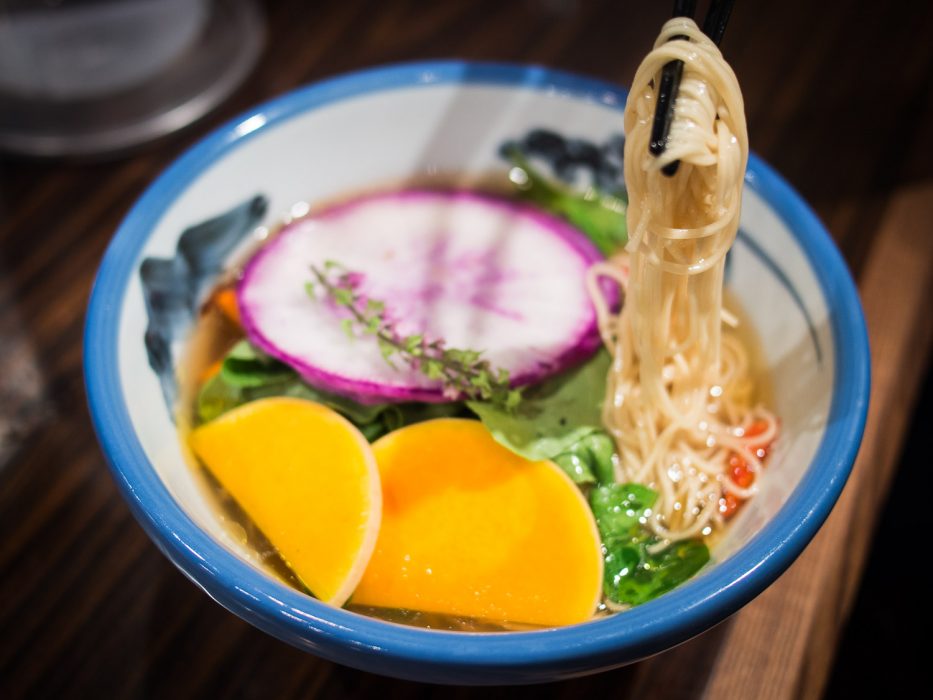
There is so much amazing food in Tokyo from cheap eats to fine dining. Even as vegetarians we ate really well with some planning.
See my post on our favourite Tokyo vegetarian restaurants . The highlight was Bon which serves exquisite multi-course Zen Buddhist cuisine in private tatami rooms—it’s an experience more than just a meal.
We Have More Japan For You!
Thank you for subscribing! You should receive an email from us very soon. Click on the link in the email to confirm your subscription.
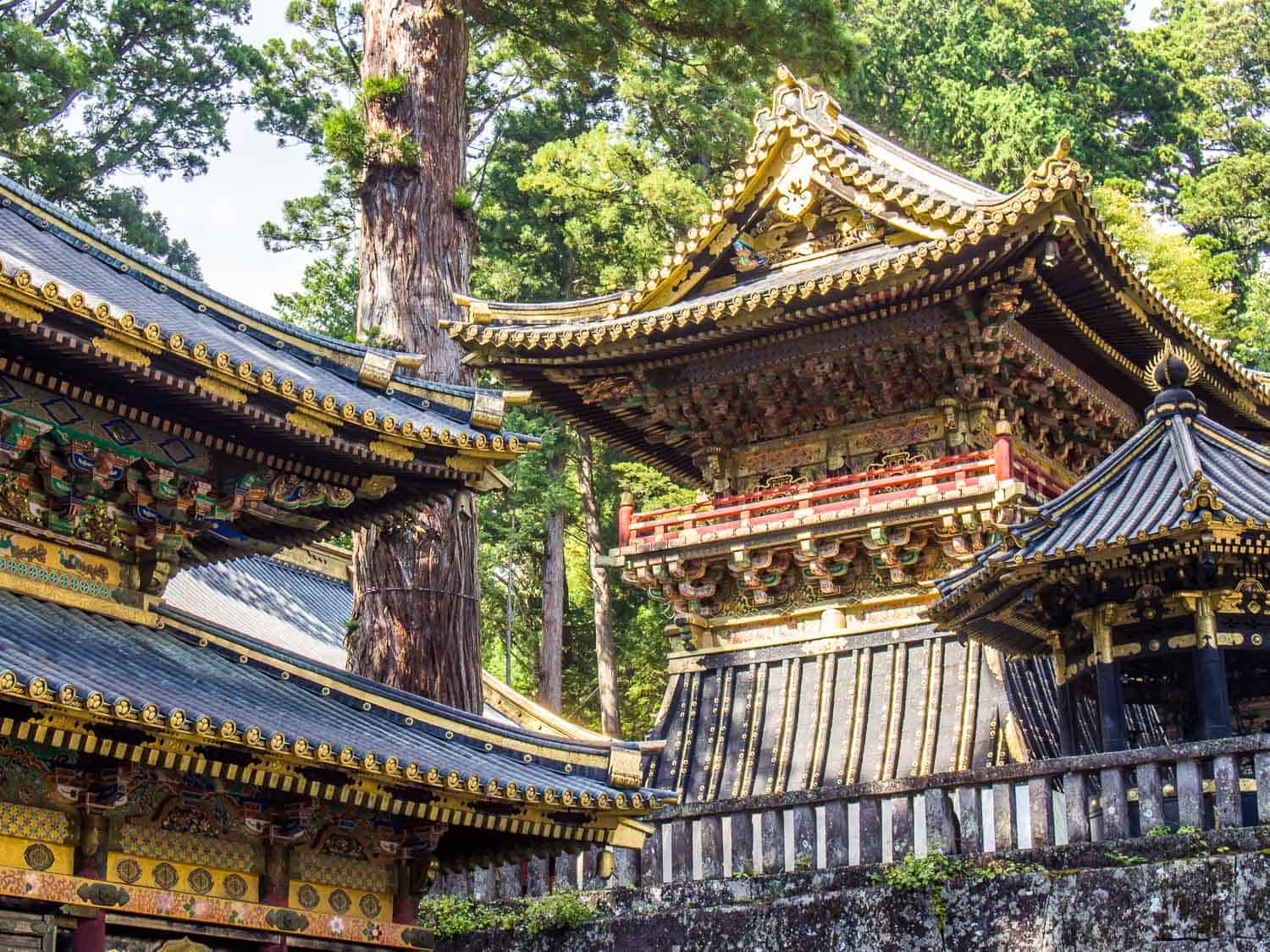
On Day 6 we activated our Japan Rail Pass and headed off early to Nikko, a temple town in the mountains a few hours north of Tokyo.
Many people visit on a day trip from Tokyo, but as it’s a fairly long trip we decided to stay the night.
The air felt cool and fresh and it was lovely to see mountains after Tokyo’s concrete jungle.
From the train stations, it’s a 30-minute walk along the main road to the bright red Shinkyo bridge and the temples start up the forest-covered hill just beyond.
Nikko’s shrines and temples are a UNESCO world heritage site.
Toshogu Shrine is the most famous Nikko attraction and is the final resting place of Tokugawa Ieyasu, the founder of the Tokugawa Shogunate that ruled Japan for over 250 years until 1868.
It’s one of the most stunning temples I’ve ever visited with more than a dozen intricately decorated red and gold buildings amongst huge cedar trees (some over one thousand years old).
But on a Sunday it was overwhelmingly busy and we didn’t stay long.
Luckily Nikko has many other shrines to explore that are much quieter than Toshogu.
Although they are less spectacular we had a more enjoyable experience at Futarasan-jinja shrine , Taiyuinbyo temple , and up the mountain at Takino shrine .
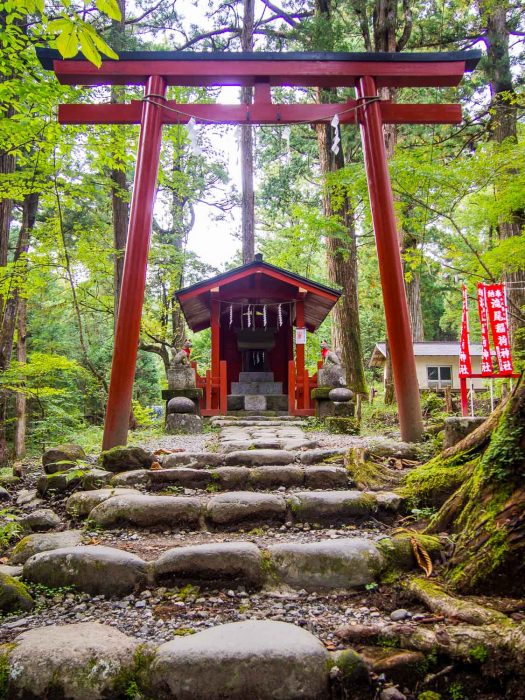
Although half a day at the temples was enough for us, it would have been better to visit Toshogu first thing in the morning before the day-trippers arrived.
With more time we could also have done some nearby hikes.
Nikko Transport
Nikko has two train stations that are a few minutes walk from each other.
Tobu Nikko Station is served by Tobu Railway trains and Japan Rail Passes can’t be used on this line, so with a rail pass you’ll arrive at the JR Nikko station. There are lockers at both stations where you can leave luggage.
From Tokyo, I recommend getting the bullet train from Tokyo Station to Utsunomiya then changing for the local train to Nikko—there were even friendly staff at Utsunomiya showing us where to go. The whole journey takes about two hours.
Don’t make the mistake we did on the way there and take the JR Shonan-Shinjuku line from Shinjuku to Utsunomiya. This is a local line so is busy and not very comfortable for the long trip. It took us three hours to get to Nikko.
The Nikko train stations are about a 30-minute walk from the temple area or you can take the bus. We walked everywhere.
I recommend picking up a tourist map from the train station as not all the temple signs are in English.
Where to Stay in Nikko
We stayed at budget-friendly Nikko Park Lodge Tobu Station which has a convenient location close to the train stations.
We chose the most expensive triple room with private bathroom, but there are cheaper rooms with shared bathroom.
The decor was rather dated, but the bed was comfortable and it was spacious by Japanese standards with a double bed, single bed, armchair, and kitchenette (although no plates or pans were provided).
Breakfast costs extra but there’s a big supermarket close by.
Search for more accommodation in Nikko here .
Where to Eat in Nikko
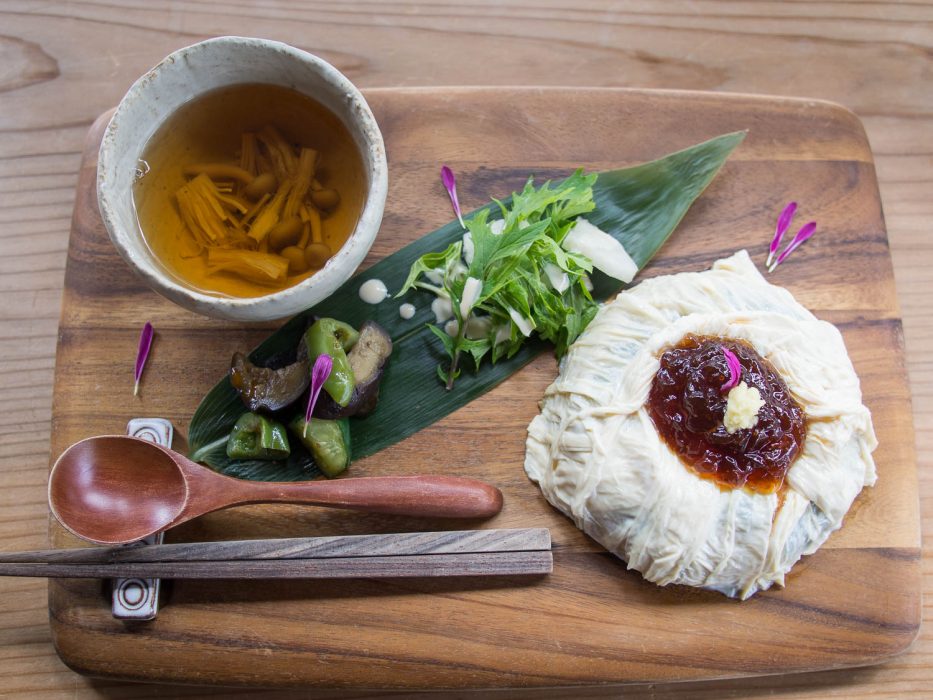
We had lunch at Yasai Cafe Meguri , a vegan cafe in an old art gallery with a beautiful painted ceiling.
It’s on the main road not far from the temples—look for the sign that says “Oriental Fine Arts & Curios”. It gets rave reviews and is often fully booked, although at 11.30 am we had no problems getting in.
We each had one of the two lunch sets that come with miso soup, salad, and a few vegetables—Simon had avocado, tomato and seaweed on rice and I had the local speciality yuba (tofu skin) stuffed with rice. It was nice and healthy but not outstanding.
Many restaurants in Nikko close in the evening so Komekichi Kozushi (now called Yonekichi Akira Sushi I believe) was a great find just a few minutes walk from our hotel (and the train stations).
This small family-run sushi place has two tables, counter seating and a tatami room where we ate.
It was the first sushi place we found in Japan that had plenty of vegetarian options on the English menu including pickled plum, pickled vegetables, natto, cucumber, and egg.
They even have an English guide to sushi etiquette, so you don’t make a faux pas like dipping the rice end of your sushi in soy sauce.
We loved the pickled vegetable sushi and especially the inari zushi—tofu stuffed with rice. It was excellent value.
For a snack, try dango, grilled rice balls on a stick brushed with miso or soy, which are sold at a few stands on Nikko’s main road.
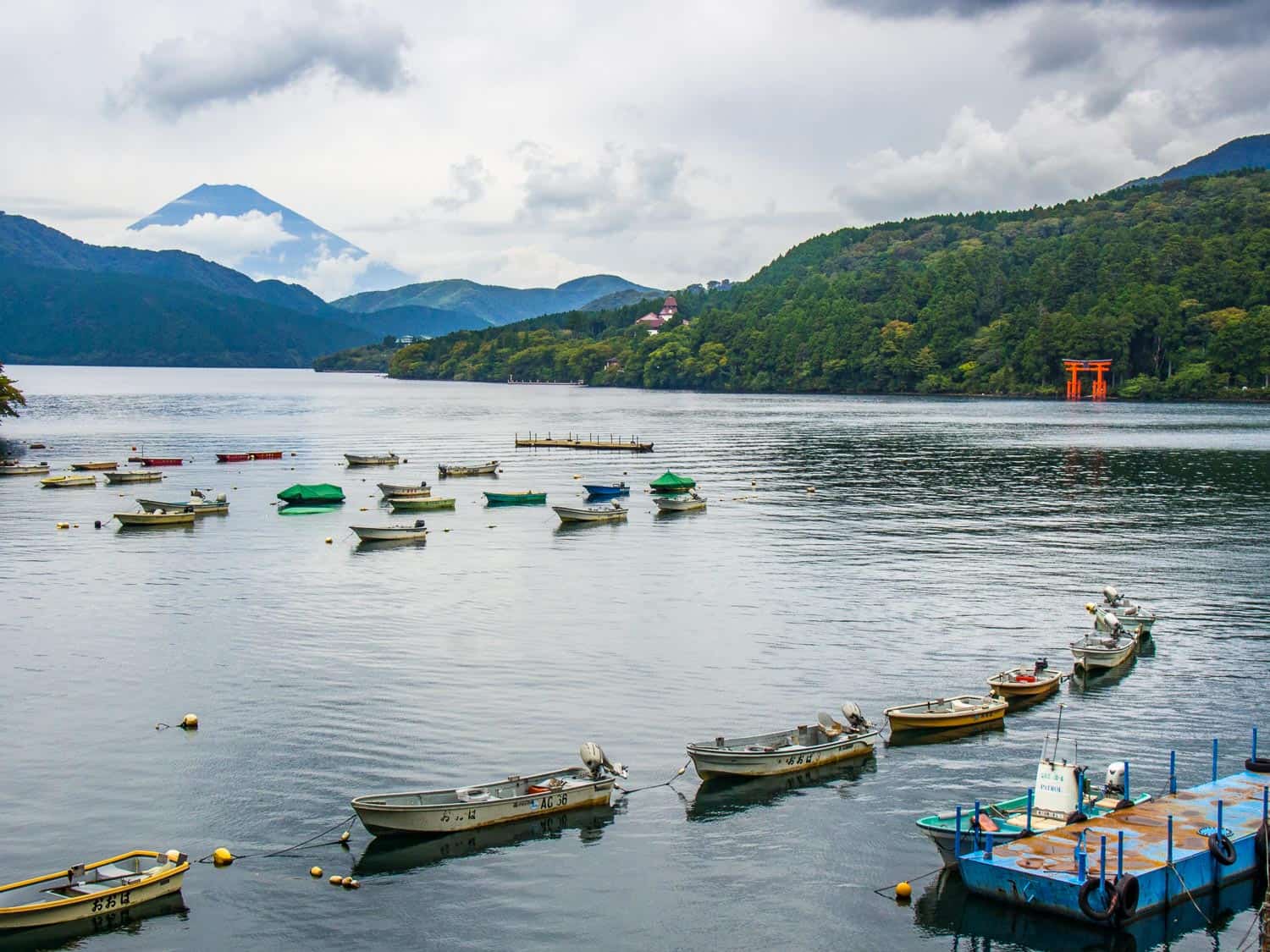
Hakone is an area encompassing Lake Ashi and the mountains around Gora.
It’s known for its views of Mount Fuji, hot springs, and the unique loop that takes you to all the sights on different forms of transport.
We began at midday by Lake Ashi in Moto Hakone where we were staying. It was a cloudy day so our hopes of seeing the reclusive Mount Fuji were dashed, but as we walked along the lake the iconic mountain appeared through the clouds.
It lived up to our expectations and the fact that it kept disappearing and reappearing through the day only made the sight more special.
We hopped on the pirate ship (yes, really!) to head across the lake for more views of Mount Fuji and the surrounding mountains.
At Togendai we switched to the ropeway (cable car) which took us up the mountain to Owakudani . We were delighted to see Mount Fuji on the way up and from the top.
Owakudani is an active volcanic valley so steam and a bad smell rise from the yellow earth.
The Japanese love the black eggs that are cooked in the hot sulphur springs, but we passed.
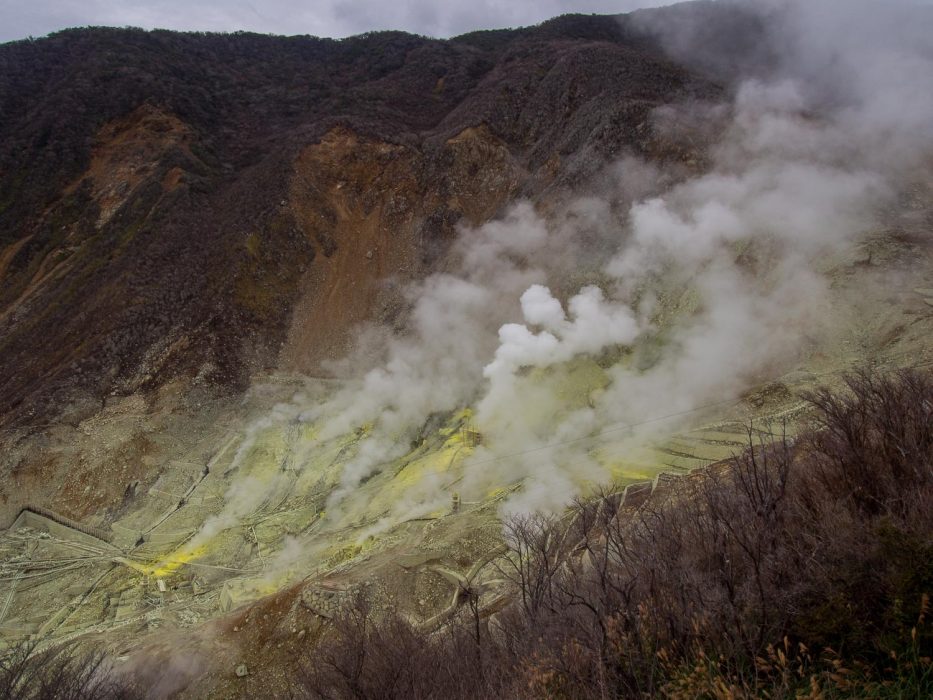
From Owakudani you can continue on the cable car to Sounzan then down to Gora, but from there we would have had to take the bus back to Moto Hakone, so it made more sense for us to return the way we came and keep enjoying the Fuji views.
We got off the boat a stop early at Hakone Machi and walked the 2 km back to our hotel which took us through the ancient Cedar Avenue .
We spent the rest of the afternoon soaking in an onsen and enjoying our wonderful ryokan room at Hotel Musashiya .
In the morning we walked through the mist and drizzle to the nearby Hakone-jinja shrine with its large red torii gate overlooking the lake.
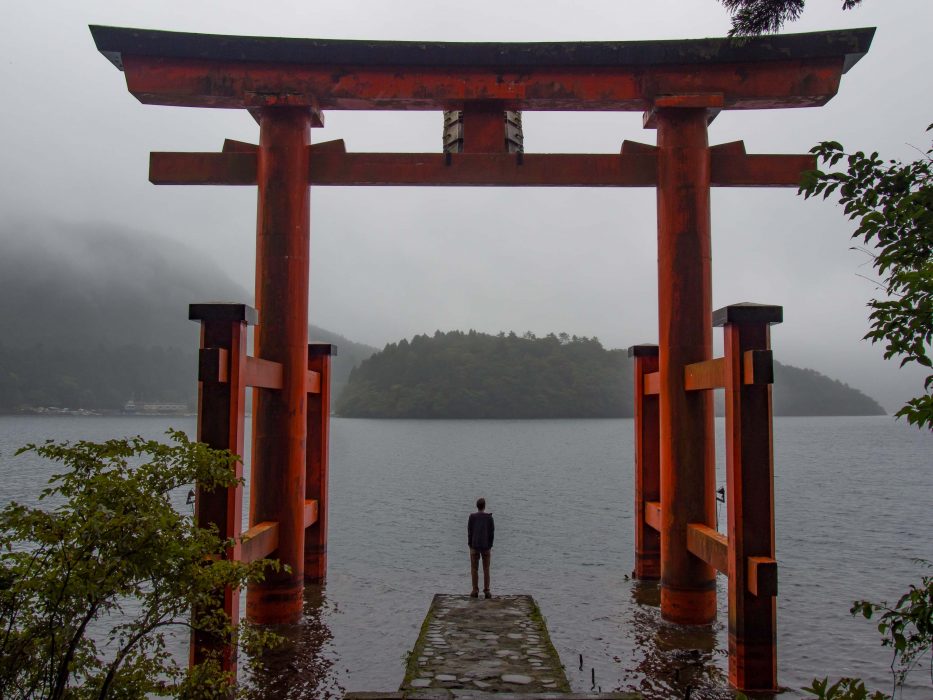
On our way back to Odawara station we continued with the loop by taking the bus to the Ninotaira Iriguchi stop and walking to the Hakone Open Air Museum .
This is a highlight of the area with outdoor sculptures, unusual art installations, a Picasso gallery, and even a free hot spring foot bath. There are lockers for luggage.
From the nearby Chokokuno-Mori station we took the Tozan mountain railway on a winding track through the forest to Hakone Yumoto where we switched trains to Odawara.
Although we managed to complete most of the Hakone loop in 24 hours, we would have loved to stay an extra night and have more time to enjoy our beautiful ryokan.
Hakone Transport
To get to Hakone from Nikko we had to backtrack through Tokyo so it was an exhausting morning of travel.
We left at 7.30 am and took the local train to Utsunomiya, the bullet train from there to Tokyo, and another bullet train to Odawara.
In Odawara train station, we bought a Hakone Free Pass at the Odakyu Sightseeing Service Centre. The pass costs 5000 yen ($35), is valid for two days, and can be used on the buses, pirate ship, cable car, and mountain railway.
As we were staying in Moto Hakone, we took the H bus there from Odawara which took about an hour on a windy mountain road and arrived around 11 am.
Where to Stay in Hakone
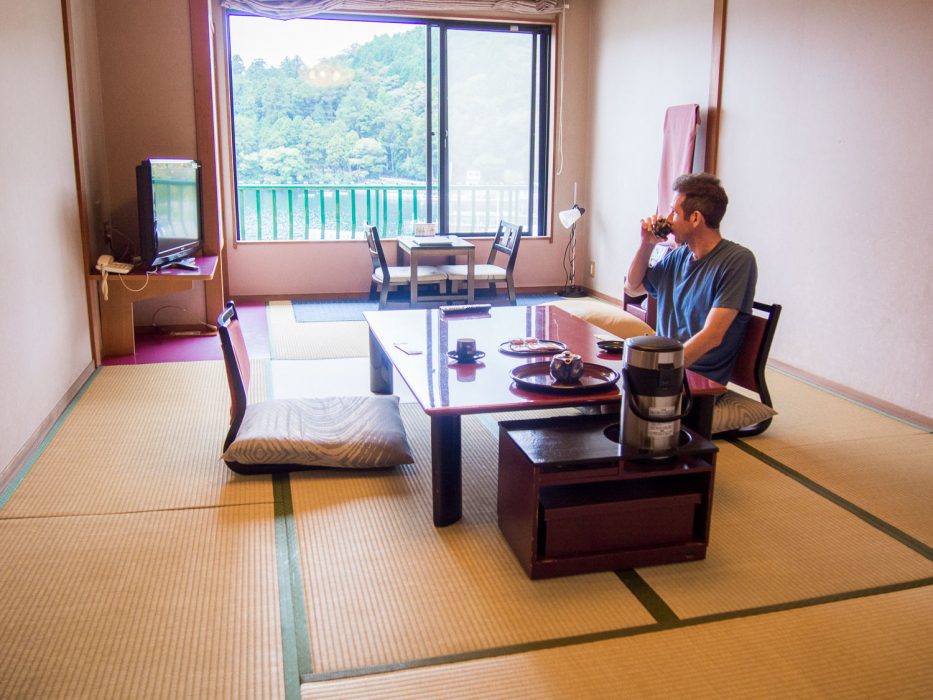
As Hakone is a large area it can be confusing deciding which town to stay in. The most important thing is to stay somewhere with good transport links.
We decided to stay by Lake Ashi to have a second chance of seeing Mount Fuji in the morning.
We stayed in a ryokan (traditional inn) called Hotel Musashiya on the shores of Lake Ashi in Moto Hakone.
Although it looks like a modern hotel from the outside, the minimalist tatami rooms are traditional with futon beds (that are cleared away during the day), a low table and chairs, and unusually, a small ensuite bathroom.
We had a gorgeous view of Lake Ashi from our room and there are also lake views from the onsens (hot spring baths) and lounge (where there’s WiFi).
In typical Japanese style, the onsens are public with outdoor and indoor baths for men and women.
Once I got over my fear of public nudity, it was a wonderfully relaxing experience to soak in the hot water and I felt blissed out our whole stay.
Hotel Musashiya was by far our favourite place we stayed on this Japan trip and I highly recommend it.
You can search for more hotels in Hakone here.
Where to Eat in Hakone
Vegetarian options are limited in Hakone.
When we arrived in Moto Hakone we had a quick lunch at Bakery and Table —you can choose from a number of rolls (stuffed with cheese, potato, etc) and pastries and take them upstairs to eat overlooking Lake Ashi.
Dinner and breakfast were included at Hotel Musashiya and they were happy to cater for vegetarians.
Dinner was served in our room and was a real feast—tempura, rice, miso soup, yuba, pickles, vegetable and tofu hotpot, eggplant and mushrooms in a delicious sauce, Caprese salad, matcha pudding, and plum wine.
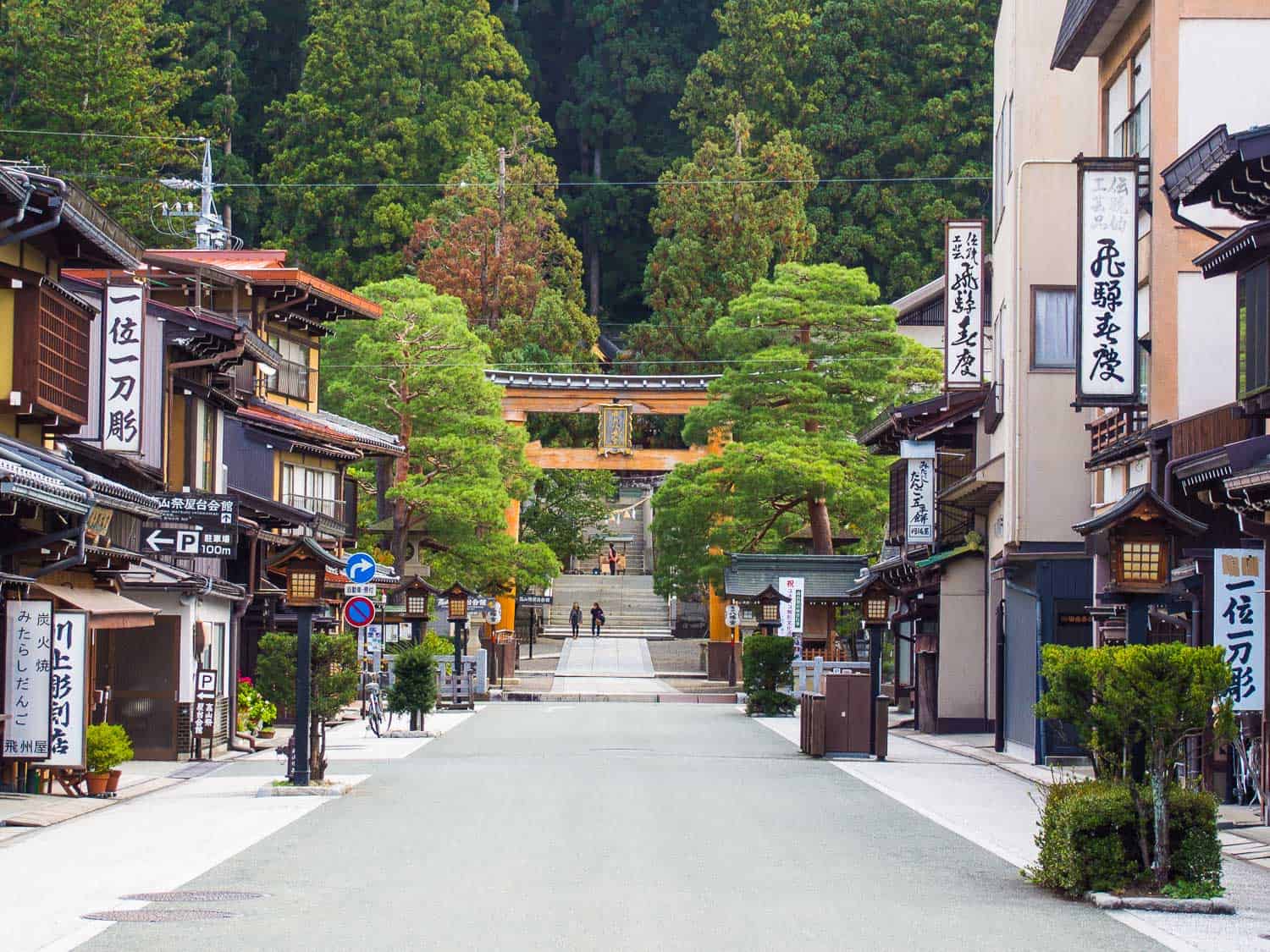
Takayama is one of my favourite places in Japan.
It’s a small town on the edge of the Japan Alps with a beautifully preserved historic centre of wooden houses, temples, neatly shaped trees, and bright red bridges over the river.
There’s so much to do in the area we could easily have spent longer than two nights here (a theme of our trip!).
Our highlights included:
- Wandering the old town in the early morning before the crowds arrived.
- Buying delicious apples and pears from the morning markets .
- Admiring the extravagant, colourful floats at the Festival Floats Exhibition Hall .
- Visiting the Hida Folk Village , a display of traditional thatched houses from the area.
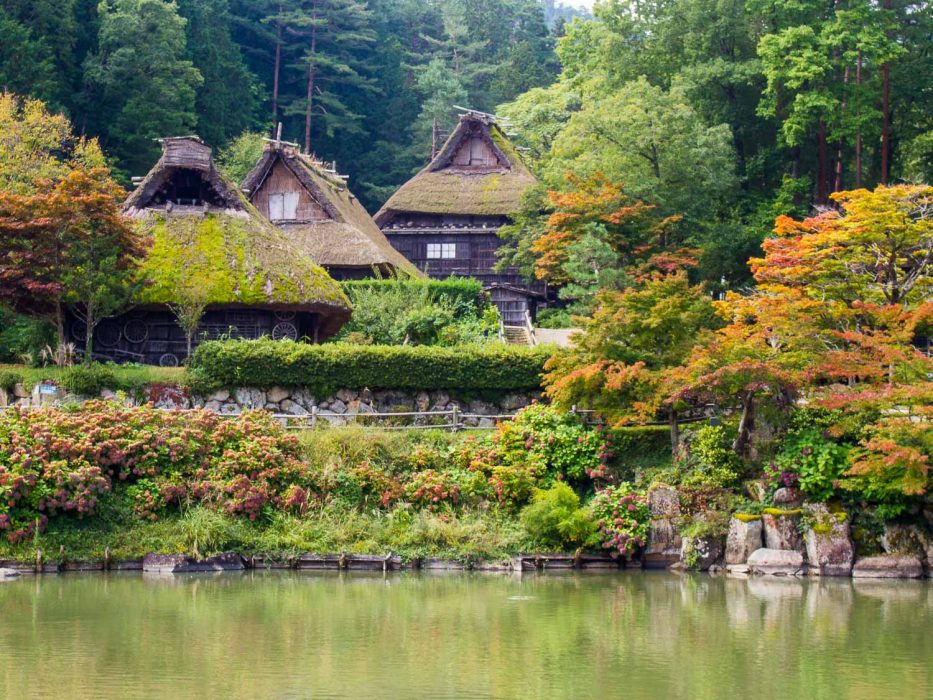
We also spent an afternoon in nearby Hida Furukawa , an adorable town that’s well worth a visit.
We did an excellent (and easy) cycling tour with Satoyama Experience where we biked through the beautiful countryside past rice fields and idyllic villages and learnt about the traditions of the area.
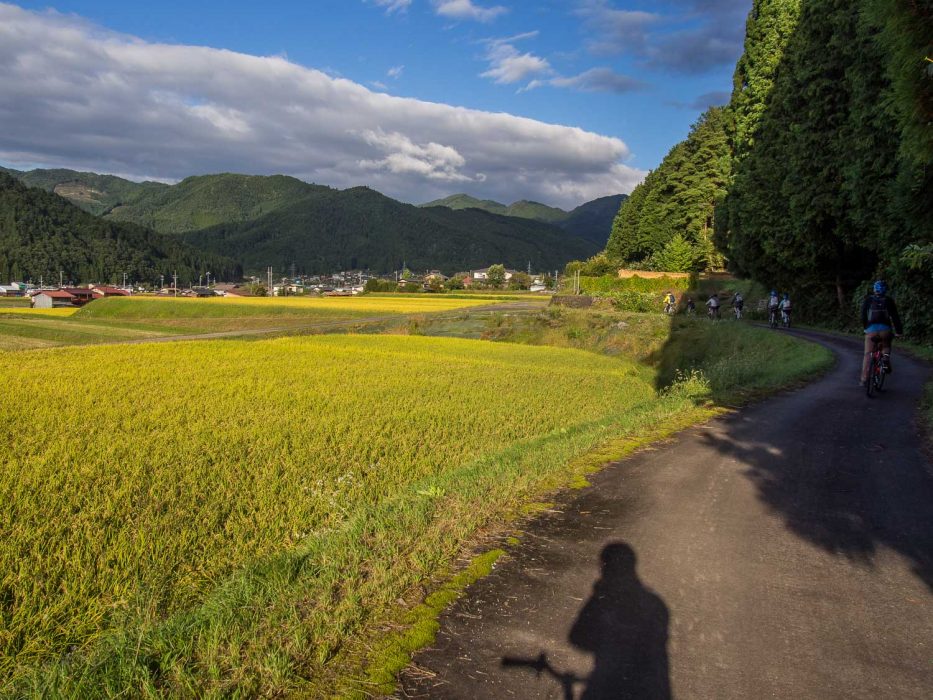
Takayama Transport
From Hakone to Takayama we took the 2.08 pm bullet train from Odawara to Nagoya then changed to the Limited Express Wide View Hida train to Takayama, which has large windows to take advantage of the beautiful river and mountain views.
We arrived in Takayama just after 6 pm.
Takayama is a small town so we walked everywhere except when we took the 15-minute train ride to Hide Furukawa for our cycling trip.
Where to Stay in Takayama
We stayed at Super Hotel Hida Takayama , a business hotel close to the station and a 10-minute walk from the old town.
Our room was tiny but had everything we needed—ensuite, desk, fridge, kettle, WiFi, and free breakfast buffet.
There’s even an onsen, but we didn’t have time to use it.
Takayama is ideal for experiencing a traditional inn or ryokan. If we had the budget we would have stayed somewhere more atmospheric like the highly rated Oyado Koto No Yume .
See the full range of accommodation in Takayama here .
Where to Eat in Takayama
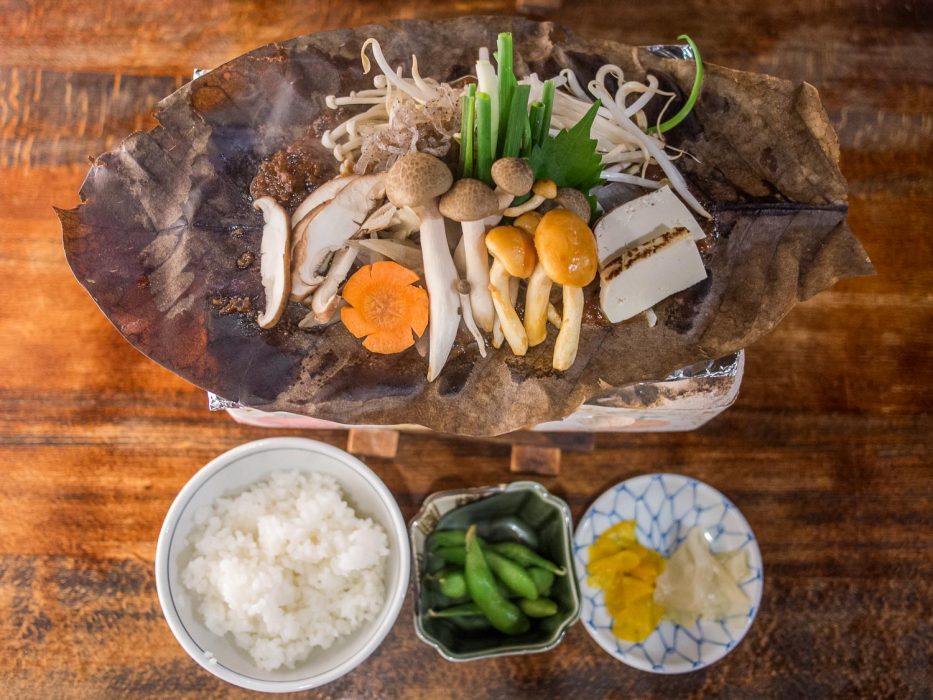
Our favourite place to eat in Takayama was Heianraku , a tiny restaurant run by the friendliest lady we’ve ever met!
There’s a multiple page vegetarian section on the menu with a mix of Chinese and Japanese dishes including local specialities like the delicious Hida miso ramen.
The chile tofu and vegetable gyoza were also excellent, and don’t miss their homemade plum wine.
Suzuya is a good place to try local specialities. They do a tasty vegetarian version of hoba miso where vegetables and tofu are cooked at your table on a large magnolia leaf spread with miso paste.
Fukutaro is a cute cafe that makes excellent gohei mochi , mashed rice grilled on a skewer with sesame sauce.
Mitarashi-dango is another local dish to try—small, almost creamy rice balls grilled with soy. The Jinya Dango stand near Jinya Mae market makes the best in town.
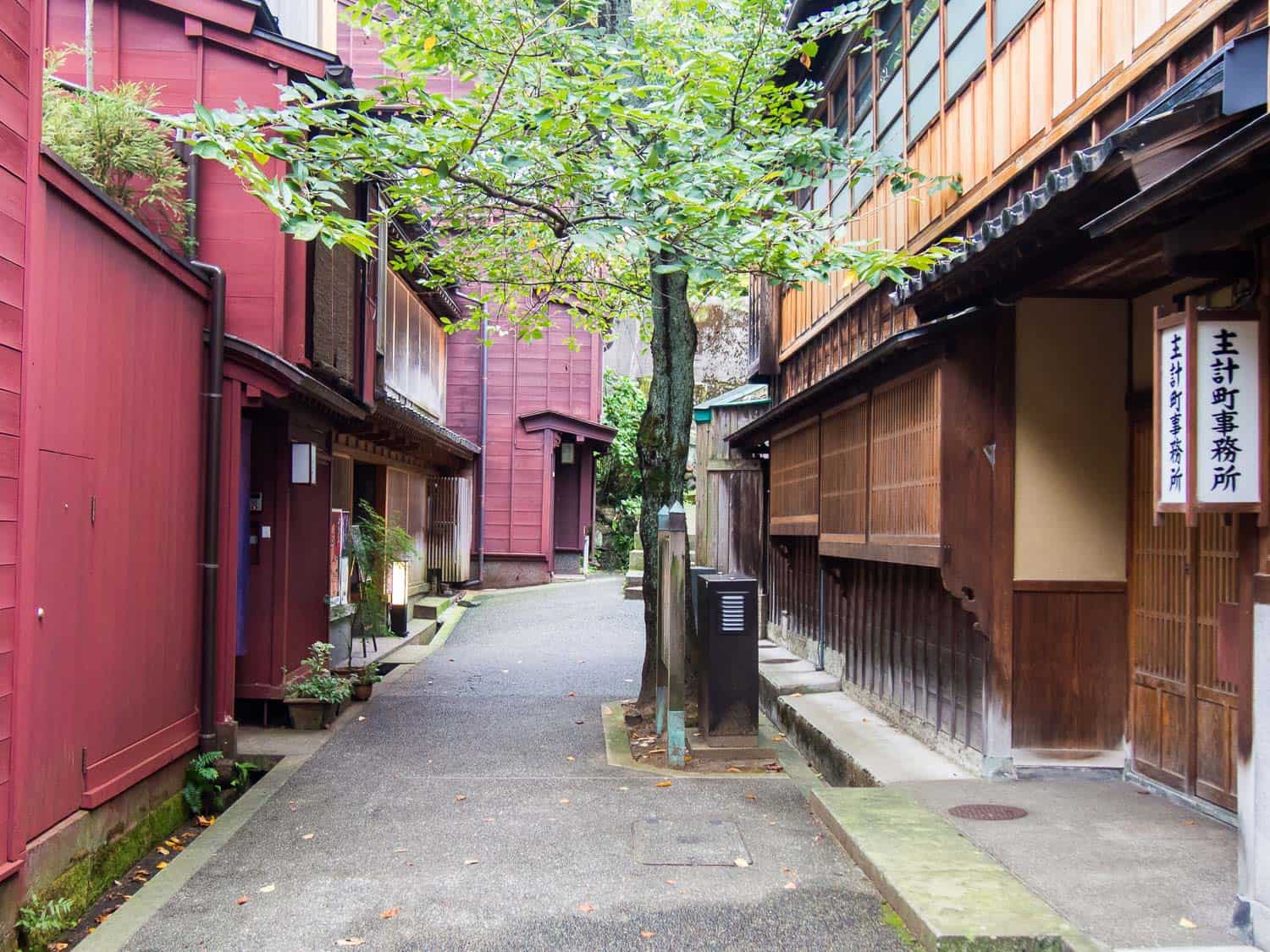
At first glimpse Kanazawa seems like another Japanese concrete city, but when you begin to explore you’ll discover some of the most beautiful gardens in the country as well as three geisha districts with preserved wooden buildings.
Higashi Chaya is the largest geisha area where geisha used to perform and entertain guests in the wooden teahouses dating back to 1820.
It’s beautiful but crowded with tourists and souvenir shops. We preferred the quieter geisha areas of Kazuemachi and Nishi Chaya .
Kenroku-en Garden is one of the top three gardens in Japan. It’s known to get crowded but we had it almost to ourselves at 7.30 am. The gardens are lovely but they would be better in the spring or autumn.
I actually preferred the tiny but exquisite Gyokusen-en Gardens which has all the classic Japanese garden elements in a small package—moss covered rocks, stone lanterns, carp-filled ponds, a wooden teahouse, and maple trees beginning to turn red.
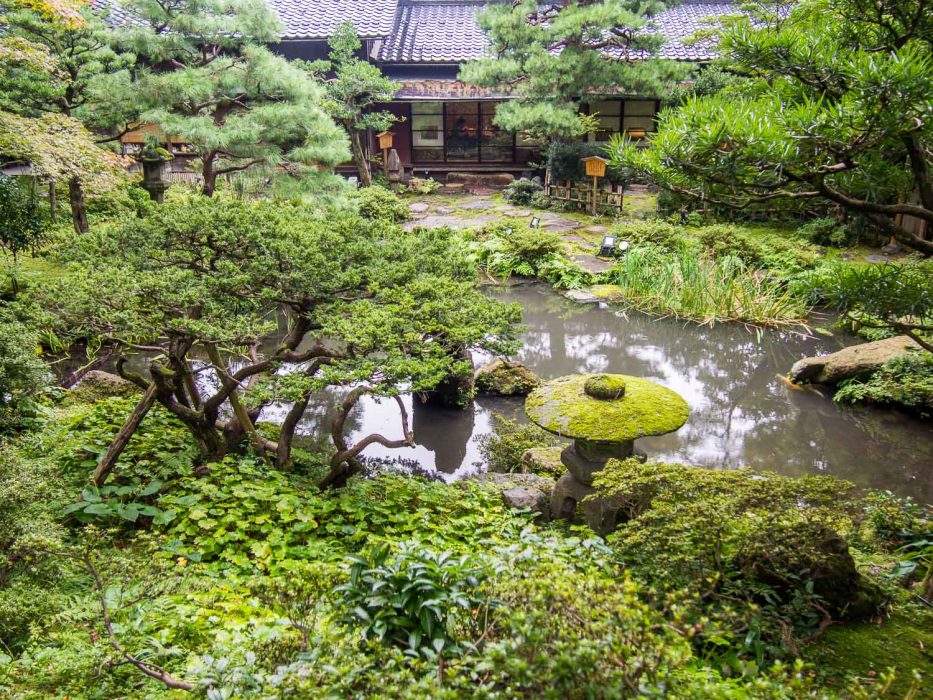
One of the highlights of our trip was the tea ceremony with did with Ms Nishida who is from the fifth generation of the family who owns the gardens.
Wearing an elegant kimono she took us through the rituals of the ceremony, starting with washing our hands and mouths to purify ourselves.
In the tatami room we were served a sweet mochi (rice cake) while she carefully prepared the bright green matcha tea by whisking the powder with hot water in a small bowl.
We learnt the phrases to say to our host and other guests before drinking the tea and how to examine the tea bowl afterwards to appreciate every detail. We then made our own tea for each other.
It was a calming experience and fascinating insight into Japanese culture.
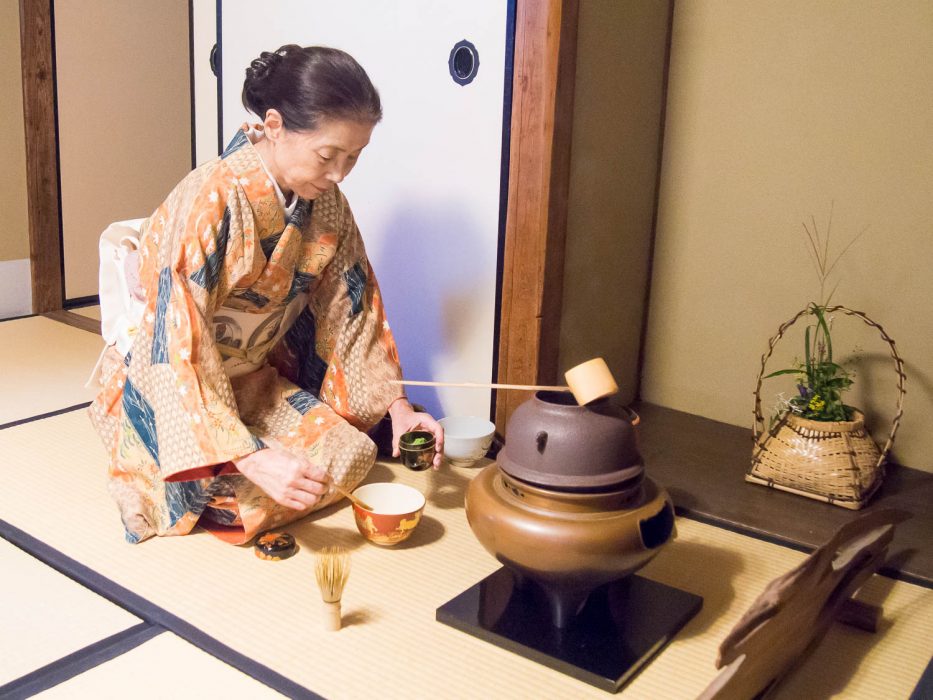
To book the tea ceremony call the gardens or email [email protected] at least three days in advance (response by email is slow). It costs 3000 yen ($21) including entrance to the gardens.
Kanazawa Transport
After spending the morning in Takayama we took the 1.15 pm train to Toyama—another beautiful journey past mountains, rivers, and rice fields—where we switched to the bullet train to Kanazawa. The journey took two hours.
Kanazawa is a large city so we had to take a 10-minute bus ride from the train station to the Katamachi area where we were staying.
From there we could walk to all the main attractions.
Where to Stay in Kanazawa
Smile Hotel Kanazawa was the cheapest ensuite room I found in the centre of Kanazawa.
It’s a standard business hotel with all the usual facilities but our room was larger than in Takayama (with access to the bed on both sides!). The location was convenient as it was a 15 to 30 minute walk to all the sights.
Find more hotels in Kanazawa here .
Where to Eat in Kanazawa
We struggled to find Japanese vegetarian food in Kanazawa so ended up eating Western food.
Slow Luck is a tiny place with four tables run by two young Japanese guys. They make creative, Italian-influenced dishes using organic farm vegetables.
There’s a vegetarian section of the menu and they give you a survey to fill in with what you can’t eat.
The food was amazing including grilled vegetables with a wonderful basil dip and a thin, crispy pizza topped with pesto, potato, and mascarpone cheese that was so good we ordered another one.
Oriental Brewing in the Higashi Chaya area serves craft beer brewed in-house and excellent beer yeast french fries. The pizzas looked good too.
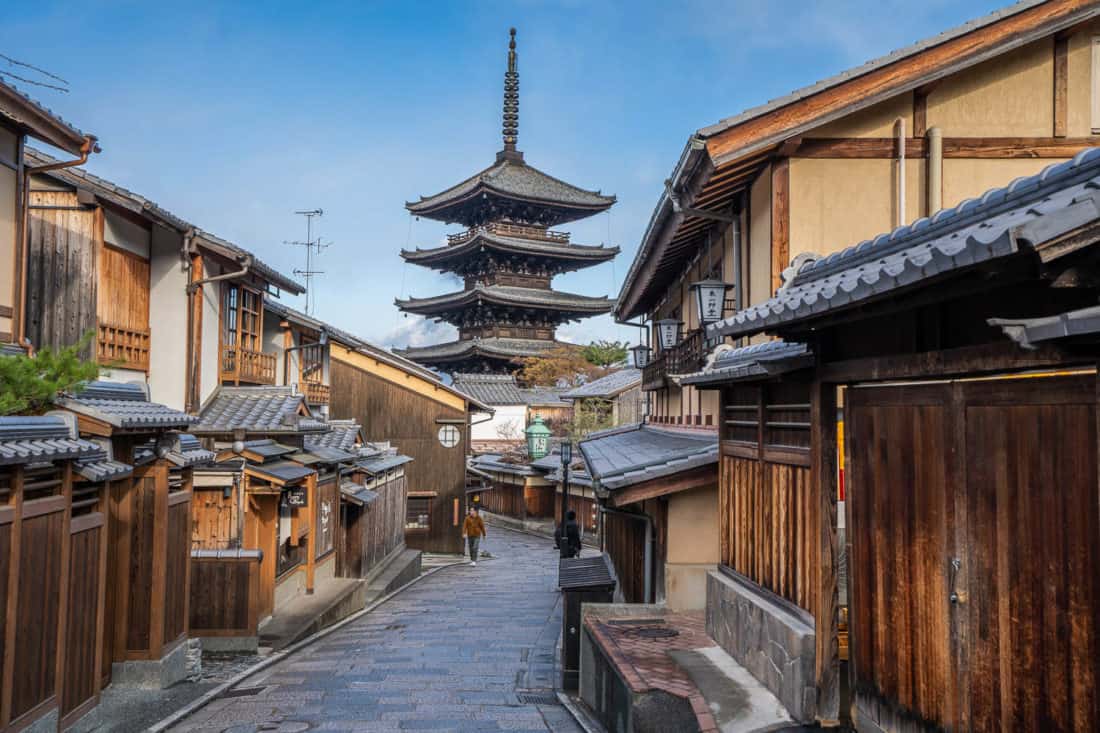
Although we returned to Tokyo (2.5 hours from Kanazawa), I recommend spending the last 3-5 days of your trip in Kyoto, our favourite city in Japan.
There are so many beautiful temples and traditional streets to explore.
It’s 2.5 hours from Kanazawa to Kyoto on the Thunderbird Limited Express train.
After your stay, you could then fly out from nearby Kansai International Airport near Osaka (easily reached by train from Kyoto) or take the bullet train back to Tokyo (2 hours 40 minutes).
Since we travelled this two week Japan itinerary, we returned to Kyoto for a month-long stay and we loved it even more than on our first visit (despite the increase in tourists).
See our Kyoto guides to help plan your stay:
- 26 Unforgettable Things to Do in Kyoto
- 14 Stunning Places to See the Kyoto Cherry Blossoms (if you are visiting in late-March/early-April)
- 16 Best Vegetarian Restaurants in Kyoto
- 14 Best Day Trips from Kyoto
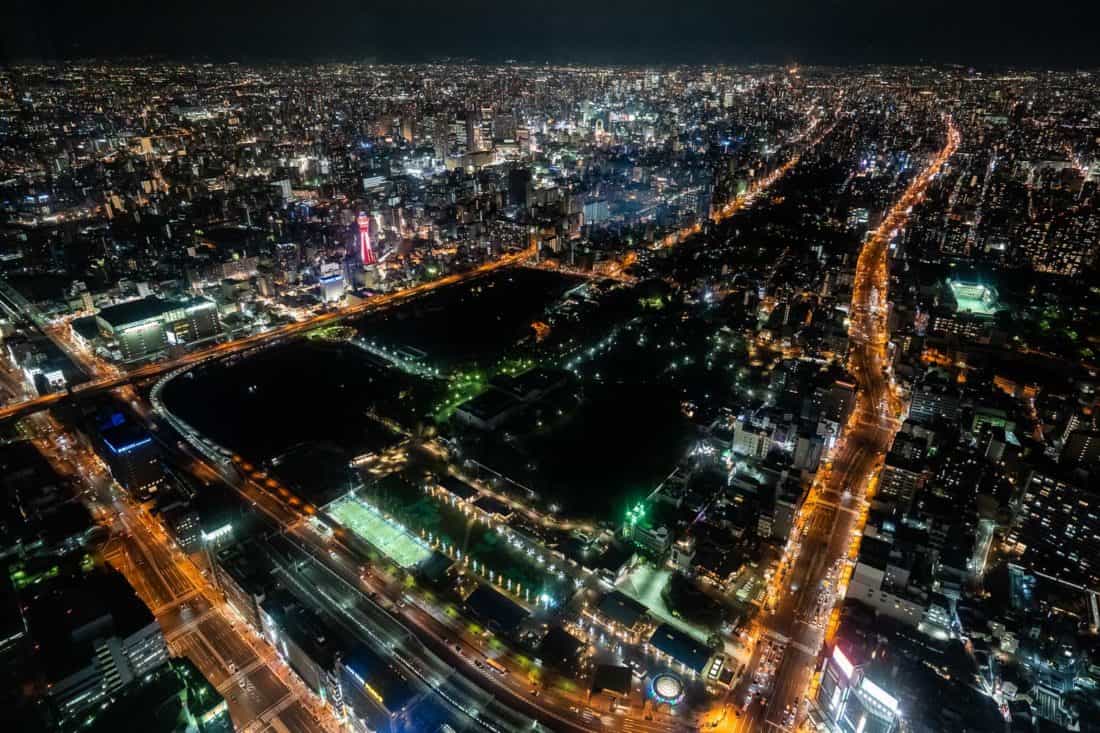
If you have more time or decide to get a 14 Day Japan Rail Pass and spend more time travelling and less in Tokyo, you could consider these destinations that we enjoyed on our last trip:
- Osaka – A fun city with delicious food, the vibrant Dotonburi area, and the Universal Studios Japan theme park (featuring Harry Potter World). You could visit as a day trip from Kyoto or add on a night before flying out from Kansai airport.
- Kinosaki Onsen – Take a break from sightseeing in this beautiful hot spring town, wander around in a kimono, and relax in one of the seven public onsen. Read our Kinosaki Onsen post for everything you need to know including onsen etiquette.
- Nara – Beautiful temples that are an easy day trip from Kyoto .
- Koya-san – A temple town in the mountains a few hours from Osaka where you can stay the night in a Zen Buddhist temple .
- Tsumago – A picture-perfect traditional village of wooden houses in the Kiso Valley.
- Hiroshima – To see the moving Peace Memorial Park and Museum.
- Okayama – Get off the beaten track and use this affordable city as a base for exploring the area. I especially recommend it in cherry blossom season. See my Okayama Japan travel guide for more details.
- Kawaguchiko – The views of Mount Fuji are even better here than in Hakone, but it’s trickier to add into this itinerary.
See our posts on 16 Unmissable Places to Visit in Japan and 54 Top Things to Do in Japan for more ideas.
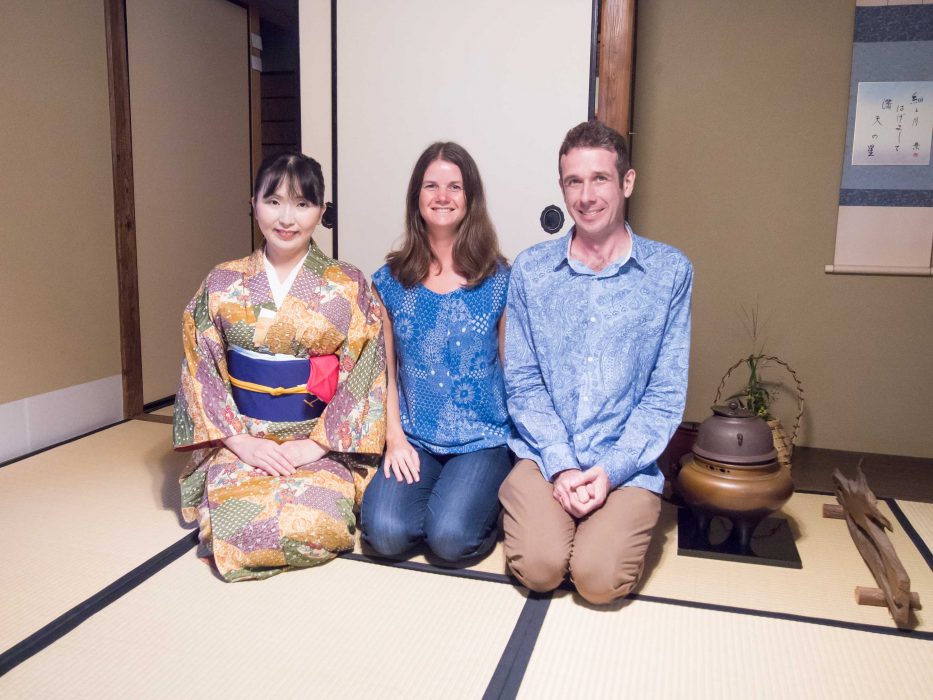
Although this Japan trip budget was from 2017, I don’t think prices have gone up much. The British pound and especially the US dollar is much stronger against the Japanese yen now so you get more for your money.
As I updated the prices in this post, I found that the USD cost had actually gone down significantly.
We spent £180 ($238) a day for two people staying in mid-range accommodation with private bathrooms and one splurge on a lovely ryokan in Hakone. Our average cost of accommodation was £65 ($87) a night.
We ate out for all our meals and spent £42 ($55) a day on food. Most meals were around $20 but we had a few expensive meals like Bon in Tokyo.
We travelled with a rail pass for a week and by trains and metro in Tokyo and averaged £38 ($50) a day on transport. We did plenty of activities and spent £24 ($32) a day on entertainment.
You could certainly travel in Japan for less by staying in rooms with shared bathrooms (or in hostel dorm rooms), cooking for yourself (or eating in the cheap ramen joints), focusing on free activities, and travelling at a slower pace to reduce transport costs.
You can also see our post on how much it costs to travel in Japan from our first trip in 2011. We averaged £140 ($183) a day on a two week trip with one week in Tokyo and one week travelling around with a rail pass.
We were more budget conscious on that trip but still had splurges like ryokan and temple stays and two days at Tokyo Disney.
- Japan Rail Pass – Make sure you order your pass online before you go to Japan.
- Travel Insurance – Essential in case anything goes wrong as Japanese healthcare is expensive. We used True Traveller —they are the best deal we’ve found for UK residents. SafetyWing is another affordable option that’s available worldwide.
- Guide Book – We used Lonely Planet Japan .
- Accommodation – We recommend Vrbo for apartments in Tokyo and Kyoto and Booking.com for hotels everywhere else.
- SIM card – We bought a Umobile data SIM card from a vending machine at Narita airport. Lately we’ve been using Airalo eSIMs which are much easier as they don’t require a physical SIM and you can set it up before you arrive. Check out the Japan eSIMs on Airalo .
This two week Japan itinerary is the perfect introduction to the country for first-timers, and it’s also ideal for second-time visitors like us who want to revisit Tokyo and/or Kyoto as well as explore some new places.
We hope you enjoy this weird and wonderful country as much as we did!
Explore more of our guides to Japan.
- Planning a Trip to Japan: Dos and Don’ts
- 16 Unmissable Places to Visit in Japan
- 54 Unforgettable Things to Do in Japan
- Where to Stay in Japan: The Ultimate Guide to Accommodation
- Is a Japan Rail Pass Worth It?
- Vegetarian Survival Guide to Japan
- 23 Cool Things to Do in Tokyo
If you liked this post, pin it!
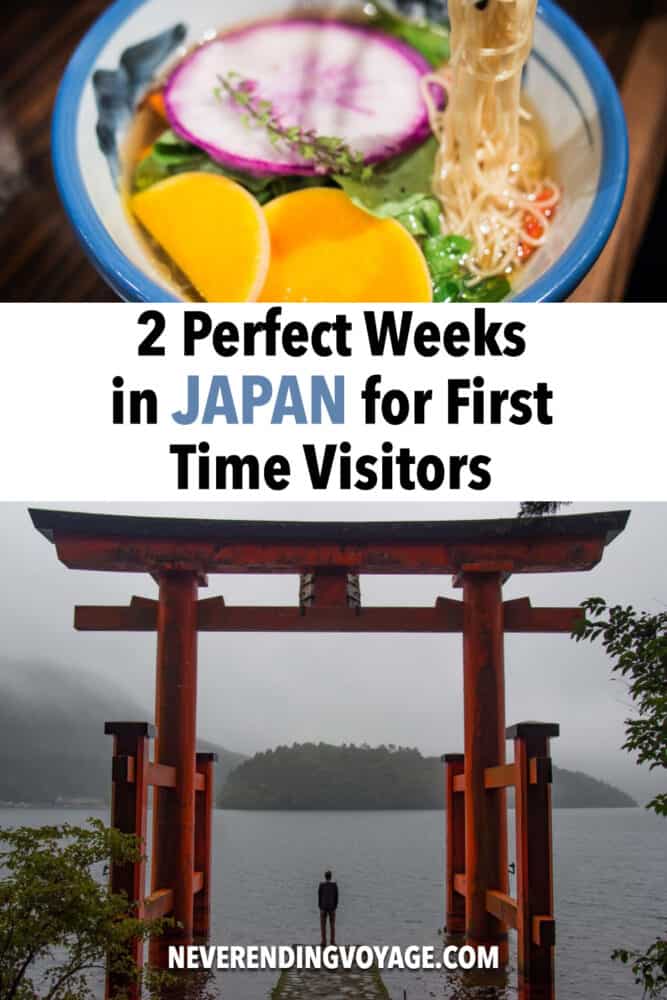
70 Comments
Do you have any other recommendation’s on where to stay in Hakone that is still convenient for the itinerary you did? I tried doing Hotel Musashiya, but the website/google says it is permanently closed… Thank you for this blog! My husband and I are planning a trip for next year and your blog is really helping me out!
Reply ↓
Oh that’s a shame – it looks like they closed last month. I don’t have any specific recommendations – I would search for Moto Hakone in Booking.com and see where comes up. Anywhere in walking distance of Hakone shrine would be great. Enjoy Japan!
Marvelous information and loved the links to the different things you mention. Thank you for taking the time to put it together. I’m planning to go this year and have questions weather to go with a travel company or go on my own. How difficult is it to get around on your own without knowing japanese. Are there any local tour guides you would recommend?
We’ve never used tour guides (except for a few specific activities) and have managed to get around fine without Japanese. Sometimes there are challenges and confusion but the Japanese people are very helpful and Google Translate is handy! Plus signs are in English in train stations these days. I hope you enjoy Japan however you choose to travel there! Erin
As everyobe says – amazing blog thank you. Im looking at following it for a family trip (with teenagers), and replacing the second Tokyo visit for Kyoto as you suggest. Would you recommend flying in and out from Tokyo (direct flights to and from London)? I guess that would mean a train back to Toyko at the end of our trip… is that the most sensible option do you think? Secondly, are there any nice beach locations you recommend that we may beable to include? Thanks so much Sam
Hi Sam, It would be more convenient to fly into Tokyo and out of Kansai/Osaka airport, but there aren’t direct flights from Kansai to London.
It’s only 2hrs 15 minutes on the fastest Nozomi train from Kyoto to Tokyo, so it’s not too hard at the end of your trip (although you may need a night in Tokyo before a morning flight). That’s exactly what we did before travelling back to London last month.
We actually haven’t spent any time at the beach in Japan but Kamakura is an easy day trip from Tokyo.
Have a wonderful time in Japan! Erin
I’m literally at the start of thinking about planning a trip to Japan for my partners 40th in 2025 and this itinerary sounds perfect and has really inspired me!! I’m going to need to start a savings pot for this holiday but can you tell me how much you spent overall? How much were flights? And did you book and pay for everything separately?
Would really appreciate a jump start to my plans!
Thanks in adavance
I don’t know the overall cost and our flight costs wouldn’t be useful as we travel to Japan one way from various places around the world (most recently from Cairns, Australia for example). You can check sites like Kiwi for flight costs (although I prefer to book direct with the airlines).
We do always book and pay for everything separately. I have updated our Planning a trip to Japan post with what we booked in advance and when for our latest trip.
Good luck with the planning!
Hi Erin, Thanks for putting this information out there – it is so helpful as I start to plan our Japan family holiday. A problem we have though, is that our children have sensory issues and would absolutely refuse to eat most of the traditional / everyday food Japan has to offer. How easy is it to come across western-style food options in the places that you mention in your first-timer 2 week itinerary?
You’ll be fine in the bigger cities as there are McDonalds, Starbucks, and lots of Italian restaurants if they like pizza/pasta. The smaller towns like Nikko and Hakone will be more challenging. I would look at Google Maps for towns like that and search for food that your kids like (burgers etc) and see if anything comes up.
You could also try convenience stores which are known for their surprisingly decent food in Japan. As vegetarians we stick to plain rice balls, but there are also sandwiches, pot noodles, and a hot counter with stuff like fried chicken and fries.
Bakeries are another good option – you often find them near train stations.
Mos Burger is a Japanese burger chain that could maybe work.
Hi Erin, what a wonderful piece of work. The information is so useful for my planned 2 week trip next late September. I have a question or 2. This will be our 2nd visit. First time it was Kyoto 3 nights and Tokyo 5 (Rugby world cup). We are foodies and part of our return trip will be this focus along with all the natural wonders of this country. I was particularly interested in your comments of having a base and doing day trips rather than lots of mini stays. Initially i planned 5 nights Tokyo, 1 overnight Onsen stops on way to Takayama 2 nights and Kanazawa 1, then skipping Kyoto to see Osaka Hiroshima and Mayajima…but what a shame to miss a bit more of Kyoto? so maybe no Onsen on way and just do 4 stays in Tokyo- but day trip to Onsen, then Takayama and Kanazawa, and finally Kyoto with day trips to Osaka, and Hiroshima and Mayajima. Do you think that makes more sense and is quite do able, probably offering a more chilled experience?
Kyoto is our favourite place in Japan and even with repeat extended visits, we still never run out of places to see.
It is a good base for day trips too. Definitely Osaka (maybe go afternoon/evening so you can enjoy dinner and the lights at night). Hiroshima/Miyajima is a much longer day trip but it is doable if you get an early start.
You could maybe look for a ryokan with an onsen in Takayama to have that experience there.
What would you suggest for a three weeks in October?
Hi Julie, October is a great time everywhere. It depends how much you want to move around. You could follow this itinerary and add more time in various places, especially Kyoto.
If you want to add some extra places, you could head further south to Hiroshima and Miyajima.
Or if you want to see some autumn colour, it’s too early for Kyoto and Tokyo, so you’ll need to head further north or up into the mountains.
Options that are easy to add onto this itinerary are Kamikochi (a mountain town near Takayama) or the Nikko area (take the bus from Nikko town to Chuzenji Onsen/Kegon Falls or Yumoto Onsen).
thank you so much for the clear explanation. I really appreciate it. Can you guys tell me how much money will needed for all of these travels above ?
You can see the budget section in the post for a rough idea.
Hi! This is super informative for our upcoming first-time visit to Japan. Do you think it’s okay to visit Osaka as a day trip or should we stay overnight? Tentative: 5 nights Tokyo, 2 nights Takayama, 1 night Kanazawa, 3 nights Kyoto and 3 nights Tokyo. We’re flying in/out of Tokyo and hoping to get by with 7 day JR pass. Also, wanted to visit Hakone, but not enough nights – or I suppose we could do as day trip from Tokyo-and pay separately? i.e. not part of JR pass?
Honestly, I’d be tempted to skip Osaka. It makes most sense to do a day trip from Kyoto, but you only have 3 nights in Kyoto and there’s so much to do there. Plus Osaka is more similar to Tokyo, where you have plenty of time.
You can do Hakone as a day trip from Tokyo and pay separately. You can’t use the JR pass from Odawara (where you change to get to Hakone) anyway and you can buy the Hakone Free Pass with the option to include the train from Shinjuku: https://www.odakyu.jp/english/passes/hakone/
Have a wonderful trip!
Thank you! This is so helpful!
This site is amazing. I have written down so much. I have so much that we want to do in 2 weeks and was wondering if you could suggest the best way to go about it. Tokyo Disneyland Kyoto Universal studios Hiroshima
We have two kids who do not want to miss these things.
A possible itinerary would be Tokyo (including Disney) – Kyoto – Hiroshima – Osaka (for Universal). You can get the train everywhere. If you can fly into Tokyo and out of Osaka that would be ideal or you can just get the train back from Osaka to Tokyo.
For Disney, if you just want one day in the parks you can do a day trip from Tokyo. If you want to visit both parks in two days, it might be easier to spend a couple of nights close to the park before moving on to Kyoto. We’ve done it both ways and like staying near the park to avoid a busy early morning commute, but changing hotels is the downside.
What an amazing guide! Do you think these prices are still pretty accurate united states dollar wise? When was your trip in which you spent around $238 a day? Also I am allergic to wheat/gluten, eggs, and dairy so eat vegan and gluten free… maybe some fish here and there. Is it hard to eat gluten free in Japan?
That trip was about 4 years ago. If anything you get much more dollar to the yen these days so I don’t think prices will have gone up too much. Of course, it’s difficult to say what will happen when the borders finally reopen. Prices (for hotels etc) may go up if there’s a lot of pent up demand.
I’m afraid I’m not sure about gluten free eating in Japan.
After trawling through so many sites I found your guide absolutely marvellous. So many great tips, and a true travellers experience. I will be travelling on my own, it’ll be my first time to Japan so your advice has been really helpful. I don’t want to miss out on anything so I’ll make sure I take on board all your recommendations. I didn’t have any idea how long to stay in Japan so I’ll base it on 2 weeks as I’ll be travelling on to other countries afterwards. Thank you for taking the time to share all your knowledge, I’ve found it really helpful
Hi Lisa, Thanks for the kind words! 2 weeks is a great introduction to Japan, although if you’re like us, it’s never enough!
Hi Erin Again thank you for your very informative blog! We’re travelling to Japan in April (my daughter and I) and was hoping you could suggest some accommodation preferably hotels near transport. I have yet decided whether to purchase a JR rail pass. We will be in Tokyo then (as per your suggestion) Kawaguchiko and from there to Kyoto then Osaka Thank you Maria
Hotel Sunroute Plaza is close to Shinjuku Station in Tokyo.
We liked Kawaguchiko Lakeside Hotel . It’s a longish walk from the train station but near a bus station and the hotel will pick you up from the station.
You can’t get any closer to the train station in Kyoto than Hotel Granvia although we prefer to get a taxi to Gion and stay there.
There’s also a Hotel Granvia in Osaka Station .
Enjoy Japan!
This is the first Japan travel website I have found whee I found myself agreeing with pretty much all of your recommendations, not just for which cities and towns to visit but what to do in those cities and cities. Amazing. One clarification – there is no bullet train from Kanazawa to Kyoto. Not yet, anyway, although it is being built. I suspect you were thinking of the Thunderbird train instead.
Thanks very much Steve! I’ve updated the post now as you’re right – it’s the Thunderbird train not a bullet train from Kanazawa to Kyoto.
Thank you for putting together this information, it is very valuable for planning our next trip to Japan.
Thanks Kyle! I’m glad it helped and have a wonderful trip!
Hi guys, such valuable information. Thank you! I am hoping you could help me make a decision on which places to visit, if I am planning to visit Japan for 10 days. I was going through your blog and every place listed in the 2 weeks trip to Japan seems unmissable. Can you please suggest, places to visit for 10 days. I will be travelling with elderly people (80’s) and vegetarians. Looking forward to your suggestions. Thank you!
I would recommend Tokyo, Hakone, Takayama and Kyoto. You’ll have an amazing time wherever you go! Enjoy!
Absolutely LOVING your Japan guides. I have already taken your advice and booked Shinjuku in Tokyo and adding extra time in Kyoto. I stumbled upon your site when looking for vegetarian food in Japan, I have a feeling you will be a life savers. I will be there in mid-December, do you have any extra tips for things to see in winter, in addition to the above? thanks
I’m so glad you’ve found them useful, Sudeep!
Winter is great for onsens so you might want to consider visiting an onsen town like Kinosaki Onsen: https://www.neverendingvoyage.com/kinosaki-onsen-japan/
If not, Kurama onsen in the mountains near Kyoto is supposed to be nice and you can easily visit on a half day trip. It’d be nice after hiking from Kibune. More details in this post: https://www.neverendingvoyage.com/things-to-do-in-kyoto-japan/ (we did the hike in the summer so didn’t use the onsen).
Have an amazing trip! Erin
My wife and I will be going to Japan next year, and were thinking about going the last week of September and the first week of October like you did. With that being said, how was the weather?
It was pretty hot in Tokyo (made 25ºC) and cooler at higher elevations like in Takayama (especially at night when it got pretty chilly). We had some rain, some sunny days. Layers are the way to go as you’ll need to be prepared for everything! It depends where you go though – Tokyo and Kyoto should be warm but norther north or higher up will be colder.
It’s a quieter time of year so I think it’s a good time to visit. Enjoy!
Wow, my husband and I are planning 3 weeks travelling around Japan in March/April 2020 and I am so glad I found your report. My husband worked in Tokyo for 3 weeks and managed a few weekends out sightseeing but had always talked about going back. We are only in the initial stages of planning but this is really helpful especially as I am pescatarian and although my hubby eats meat, he is the chef at home so cooks veggie and fish (we don’t buy meat) and if he fancies meat he eats this when we are out. We are in our early 50’s but love to walk and cycle around and don’t like package deals or organised tours. We live in Greece so have sun and beaches for 9 months of the year so our holidays are based around food, culture, sightseeing and new experiences. Great tips on travelling light, I hadn’t even thought about a big suitcase and moving from hotel to hotel, the JR pass in advance and veggie cards to take and learning a few words, we have the whole Winter to learn (Greeks hard enough though!) The colours and the food look amazing, we are so looking forward to 3 weeks of planning. A big thank you from us ….. India next so we will be back ….
Spring is a wonderful time of year for Japan so I’m sure you’ll have an amazing time. I have some more posts coming soon about our spring trip, especially using Okayama as a base for some more off-the-beaten track locations. I mentioned a few in this post: https://www.neverendingvoyage.com/kyoto-cherry-blossoms/
You’ll be fine as a pescatarian in Japan as there are plenty of fish-based dishes.
Erin, I rarely… And I do mean rarely – ever make comments in regards to travel blogs. I honestly am so impressed with the amount of information and meticulous detail that you have included on Japan. The content is compelling enough to keep me engaged throughout the entire peace. I can honestly say it is the best that I have ever seen. I hope that your sponsorship/advertisers understand what true value you are offering to people and comfort when it comes to making decisions, saving money, and more. You truly are a master in the field of travel blogging. I wish you all the best in your future travels and blogging, I will definitely be reading.
Thank you Geoff for your very kind words – that means a lot!
This is great inspiration for a first timer to Japan. I will be using it lots for plan my trip next March. Thanks!
Thank you so much for all this write up about you Japan trip. Really a great read! We as family of four are planning to see Japan this last week of October thru the first week of November, hoping to see the splendor of the season of fall in that region. Anxious about this trip, your blog has made my planning a lot easier. Thank you!
Have a wonderful time in Japan, Noel!
Hi Erin. I am hoping to plan a 2 week tour in Japan in April 2021 for my Dragon boat team of 25 women. Would you still suggest your itinerary for such a large group? I am in the initial stages of planning and I am open to any hints that you can offer. Thx so much. Gloria
I would say it’s possible. Maybe skip Nikko though to reduce the number of one night stays. I imagine travel days might be a bit complicated with a big group so consider visiting fewer places and staying for longer. You could also visit Nikko as a day trip from Tokyo. Good luck with the planning!
What is the cost of this two week trip? My cousin and I are saving up to go to Japan for two weeks next June.
See the budget section of this post :)
Hi, This is a very good and exhaustive writeup . Thanks again. This helped me streamline my itineraries better. I have one concern though and it is on the AirBnB accomodation. Is it OK for you to suggest the best way to choose one here? I am also looking out in Shinjuku area.
The way I find somewhere on Airbnb is to type Shinjuku Tokyo into the search bar then choose homes, your dates, number of guests, home type (entire place) and then use filters to narrow things down (for example we like to have wifi, kitchen, washer, and air conditioning in the summer).
I then use the map view to zoom in to around the Shinjuku station area and see what’s available. If there aren’t any you like them remove a filter or widen the area of the map. I recommend choosing a place that has at least 5 reviews. Feel free to message a host if you have any questions before you book.
Good luck with it! Erin
Hi, we are a family of 4 and planning to visit next Nov 2019. Thank you for sharing your journey it sounds and looked amazing. Hope to follow some of your trips but not planning to stay 2 weeks.
So just wanted to thank both of you for sharing your experiences and photos. I now have an idea what to expect and cost wise as well.
Thank you All the way from New Zealand
Thanks for the feedback Sharlene and have an amazing time in Japan!
Your series of posts about Japan is amazing! The details you include are definitely invaluable. I am in the very preliminary stages of planning a 2?-week vacation there (my wife and daughter pester me weekly, if not daily, to go; I was born in Kyoto, been back once, but don’t remember much of it, besides the food).
I do have some questions for you, hope you don’t mind:
how did you figure out the “little things” (for example, As we were staying in Moto Hakone we took the H bus there from Odawara; On our way back to Odawara station we continued with the loop by taking the bus to the Ninotaira Iriguchi stop and walking to the Hakone Open Air Museum). did you plan these in advance? did you ask locals? you just stumbled up on these?
I presume you don’t speak fluent Japanese (forgive me, if you do), but were you able to get assistance, if you needed? Between my wife, my daughter, and myself, we may be able to get by, but I’m curious.
Did you encounter many situation when your JR pass couldn’t be used?
Thanks again for taking the time to write and post your experiences.
Hi Charles I’m so glad you’ve found the posts useful.
I figure out the little things by doing a lot of research online in advance. So for Hakone I studied the Hakone free pass map and found the bus timetable and map. I’m sure we could have also asked our hotel but I like to be prepared!
I only speak a few words of Japanese but we managed to get by fine. On our last visit we noticed that many more locals spoke English than on our previous trip. People are really helpful – when we look confused at a train ticket machine at the airport, for example, a young Japanese guy approached us to help (he spoke English). Google translate is also really useful – we used the camera feature a lot to translate food labels (as we’re vegetarian we have to be more careful). It’s definitely worth getting a SIM card for your phone so you can translate things and use Google Maps to get around (we never needed to ask for directions).
On our last two trips we couldn’t use our rail pass to get to Mount Koya and in Hakone (where we bought the pass at Odawara). We also had to get a slower train from Tokyo to Nikko. It still worked out good value for us even paying for the extra tickets.
I hope you do make it to Japan! Erin
I love al the info you have about Japan. I am super excited as I am planing in visiting 2020 spring time. I will be traveling along for 3 or 4 weeks. If anyone has recommendations or any helpful advice about places I should visit, please leave me a message. thank you
We’re in Japan right now. Spring is a lovely time to be here – don’t miss Kyoto as the cherry blossoms are amazing. I’ll be writing more about spring/cherry blossom season travel in the next few months so look out for those posts (or sign up to our newsletter https://www.neverendingvoyage.com/newsletter/ ).
Wow, this article is fantastic! I’m currently planning my trip to Japan for the 2020 Olympics, which will knock off 2 items from my bucket list! :). Thanks for sharing your adventure. I will surely take notes and consider your recommendations.
I’m glad you enjoyed it and hope you make it for the Olympics!
Amazing website and all the links is helping me plan our trip to Japan this summer. We only have booked our tickets, its time to fast track on booking accommodation. Cant wait to see the beauty of Japan!
I’m really glad you found it useful. Have an amazing trip to wonderful Japan!
Thank you ! I find this very interesting and useful for my up coming trip to Japan in summer 2018. This will help me plan my family trip to Japan without having to pay so much to the travel agency. Thank you again and i m very much appreciate the sharing of your Japan trip.
Please let me know Anita if you have any questions and good luck with the planning!
Hi . Been searching for travel tips going to Japan and Im so glad I found your blog. Will surely follow your suggestions. Cant wait to go to Japan next year. Booking our trip now while its cheaper. Thanks for all your insights, really helps. More power and more traveling.
I’m glad you found it useful and have an amazing trip to Japan!
Japan seems to one of the world’s hottest travel destinations at present. I’ve been just once and would love to return. Thanks for the handy advice.
Tourism numbers have been growing at a rapid rate there. I’m not surprised as it’s a fascinating country. We’re already planning our third trip!
Nice interesting post, thank you for sharing it ! Japan is such a beautiful and awesome country.
Thank you. It is an amazing place.
I’ve been wanting to go to Japan for years now, but it’s always been just a bit too far out of the way on our travels. I’ve seen videos of the maricart tours before and they look fun. I’ve never heard of tofu skin – was it good?
I can’t recommend it enough Rhonda. My biggest regret is that we waited six years to return – put off by the cost. It is absolutely worth some effort to get there as it’s such a unique place.
Japan does tofu like nowhere else -there are actually tofu speciality restaurants (not vegetarian either). The tofu skin has a pretty subtle flavour but I like it.
Leave a Reply Cancel reply
Required fields are marked *. Your email address will not be published. By clicking the Submit button, you give consent for us to store your information for the purposes of displaying your comment and you accept the terms of our Privacy Policy .
This site uses Akismet to reduce spam. Learn how your comment data is processed .

- 2 Weeks for Couple
- 2 Weeks for Family
- Thailand Lantern Festival
- Indonesia(Bali)
- South Korea
- China (HK, Taiwan)
- Itinerary Ideas
- Asia Highlights Travel Reviews
- Thailand Travel Reviews
- Vietnam Travel Reviews
- Cambodia Travel Reviews
- Japan Travel Reviews
- Myanmar Travel Reviews
- China Travel Reviews

2 Weeks in Japan:Top 5 Itineraries for First Visit 2024/2025
Most first-timers to Japan typically spend 8–12 days exploring the country, but spending 2 weeks in Japan would allow you to have a deeper and more comprehensive experience.
One week is perfect for exploring the essence of Japan in Tokyo, Kyoto, and Osaka, and then you could dedicate another week to another region , such as Hokkaido, traditional villages in central Japan, or the southern islands. You could also choose to spend a week in Japan and another week exploring the highlights of a neighboring country such as South Korea or China.
In this article, we've carefully selected five 2-week Japan itinerary suggestions to help you create a stress-free and beautiful journey. Each itinerary would be customized for iconic scenery if you choose to travel with us in the cherry blossom season (March to April), and we would, of course, customize the itinerary based on your preferences at any time of the year.
- Itinerary 1: For Families with Teenagers
- Itinerary 2: Essence of Japan with Yokohama
- Itinerary 3: Japan with Hokkaido's Ainu Aboriginal Culture
- Itinerary 4: Explore Japan and South Korea
Itinerary 5: Classic Japan and China
How much does 2 weeks in japan cost.
Discover real reviews of Highlights Travel Family 's best-rated service across trusted platforms.
Itinerary 1: For Families with Teenagers, Featuring Hands-On Activities
- 3 nights in Tokyo
- 1 night in Takayama
- 1 night in Kanazawa
- 2 nights in Kyoto (side trip to Nara)
- 1 night in Hiroshima
- 4 nights in Osaka
This 2-week Japan itinerary is excellent for families with teenagers. It satiates kids' love for anime, offers plenty of family-friendly activities that both children and adults could enjoy, visits unique traditional villages, explores Hiroshima, and you won't have to change hotels frequently.
Start your journey from vibrant Tokyo. There are abundant experiences you could enjoy with your kids, such as discover the most beloved Pokémon Center, indulge in interactive experiences at high-tech museums like teamLab Borderless, and make a bowl of delicious ramen with the help of a skilled chef at one of the best ramen shops.
Then, take a comfortable ride on the Shinkansen to delve into the picturesque towns of Takayama, Shirakawa, and Kanazawa. You could taste Hida beef, which melts in your mouth, admire the traditional farmhouses characterized by their steep thatched roofs resembling 'praying hands', and witness the transformation of chopsticks or porcelain into golden masterpieces under your craftsmanship.
Continue your trip in Kyoto. Don't forget wear kimonos to wander through ancient shrines, feed friendly deer in Nara, and spend a night at a Japanese-style ryokan (traditional inn) with a family room (accommodating 3–5 people).
A ryokan typically has 5–15 rooms and they are easily fully booked, so you're advised to book at least 3 months in advance to ensure a wider range of options. Our Japan travel advisors would help you to select a family-friendly ryokan based on your preferences .
Hiroshima was the first city to be hit by an atomic bomb. Visit the site of the bombing and explore the museum. You could see the collection of items left behind after the attack and appreciate the importance of post-war peace.
Complete your trip in Osaka. Your whole family could try on ninja outfits to learn about the weapons and techniques with a ninja master, spend a day fully immersed in the magic world of Mario at Super Nintendo World, and experience unique ukiyo-e printmaking.
If you have other requirements , our Japan travel advisors can make it happen.
Itinerary 2: Essence of Japan with Biking in Yokohama
- 4 nights in Tokyo (side trip to Mount Fuji)
- 1 night in Yokohama
- 3 nights in Kyoto (side trip to Nara)
With this 2-week Japan itinerary, you could cover the major highlights in Tokyo, Kyoto, and Osaka at a leisurely pace. Enjoy a panoramic view of Mount Fuji by cable car, experience a memorable night at a traditional ryokan, feed deer in Nara, and try your hand at ukiyo-e printmaking for a unique souvenir.
Yokohama offers a fantastic opportunity to explore the city's sights by bike. It's extremely attractive during the cherry blossom season (March to April) when you could enjoy the cherry blossoms lining the flat roads. The spring winds carry the petals and drop them on you, creating a delightful experience.
Itinerary 3: Archetypal Japan with Hokkaido's Ainu Aboriginal Culture
- 2 nights in Kyoto
- 1 night in Osaka
- 3 nights in Sapporo (side trip to Otaru)
- 2 nights in Noboribetsu
- 1 night in Hakodate
In this 2-week Japan itinerary, you could spend 1 week experiencing the main attractions and authentic activities in Tokyo, Kyoto, and Osaka. You would visit traditional shrines, sample various Japanese cuisines, stay at a ryokan, and participate in unique Japanese experiences.
Spend another week in Hokkaido, the northern island of Japan. Hokkaido is home to the Ainu, the indigenous culture that has greatly influenced the region's history and culture. You could explore Ainu tools and weapons to gain an insight into the Ainu way of life at Historical Village of Hokkaido in the main city of Sapporo.
If you're looking for a more immersive experience, visit Noboribetsu, which boasts an Ainu village offering traditional performances, authentic Ainu cuisine, and engaging activities showcasing their traditional handicrafts.
Itinerary 4: Explore the Highlights of Japan and South Korea
- 3 nights in Seoul, South Korea
- 3 nights in Busan
- 2 nights in Osaka, Japan
- 2 nights in Hakone
Japan and South Korea are popular for their anime and K-pop cultures respectively, making them dreamy destinations for many kids. With this 2-week itinerary, you could cover the major highlights of both countries and expect abundant family-friendly experiences.
To get more awe-inspiring moments, you're highly recommended to warm up to oriental culture in South Korea and then travel to Japan, as Japan provides more hidden gems for you to unveil.
In South Korea, dance with your teenage kids at a fun-filled K-pop dancing class guided by a professional choreographer, explore the DMZ's tunnel to uncover wartime stories, wear a hanbok to wander through the history-filled Gyeongbokgung Palace and feel like you've traveled back in time, sample Korean snacks at a vibrant local market, and feed seagulls on a sandy beach.
In Japan, you could take the Shinkansen to explore various cities efficiently, immerse yourself in an exciting ninja adventure with your family donning ninja outfits, feed deer in Nara, relax in a traditional ryokan with an onsen (hot spring bath), make sushi as your lunch, and enjoy desserts at an anime café themed with your kids' beloved cartoon characters.
You can just tell us your preferences and requirements and our Japan travel consultant will customize a tour for you.
- 3 nights in Tokyo, Japan
- 3 nights in Kyoto
- 3 nights in Beijing, China
- 2 nights in Xi'an
- 2 nights in Shanghai
This 2-week Japan and China itinerary allows you to explore the best of the 'golden triangle' cities of both countries. Traveling to Japan first and then to China would give you a progressive adaption and understanding of Eastern culture. China offers more famous historical buildings than Japan and is one of the main origins of oriental culture.
In Japan, you could explore the perfect blend of historical and modern in Tokyo, stay at a Japanese-style ryokan with an onsen in Hakone, and immerse yourself in the culture-rich city of Kyoto. You could experience the best of Japan in these cities.
China owns many historical buildings that would make you appreciate the charm of its 5,000 years of history. Explore the best-preserved Forbidden City and the Great Wall in Beijing, visit the impressive Terracotta Army and create your own terracotta warriors at a cave-dwelling in Xi'an, and enjoy the charming night views from the Bund in Shanghai.
US$350–500 per person per day is the typical cost for a private tour with 4-star hotels, based on a family of 3–5 people. This includes a private guide, private car, full-day itinerary, tickets for attractions, all intercity transport within Japan, and handpicked 4-star hotels. Therefore, the total cost for 2 weeks in Japan is about US$4,900–7,000 per person (international flights are not included).
Why Asia Highlights (10,000+ reviews & 98.8% 5-star rating)
- Save Your Time:
- Less research, more enjoyment!
- Real-time 1V1 expert planning
- Maximize Your Flexibility:
- Personal local guide and ride
- Explore at your own pace
- Celebrate Your Journeys:
- Specially-crafted family adventures
- Celebrate milestones with style!
Get Inspired with Some Popular Itineraries
At Asia Highlights, we create your kind of journey — your dates, your destinations, at your pace. You can have any trip tailor made for your travel.
More Travel Ideas and Inspiration
Sign up to our newsletter.
Be the first to receive exciting updates, exclusive promotions, and valuable travel tips from our team of experts.
Why Asia Highlights
Where can we take you today.
- Middle East
- African Safari
- Travel Agents
- Loyalty Program
- Our Differences
- Privacy Policy
Address: Building 6, Chuangyi Business Park, 70 Qilidian Road, Guilin, Guangxi, 541004, China

How to Spend Two Weeks in Japan: An Itinerary for First-Time Visitors
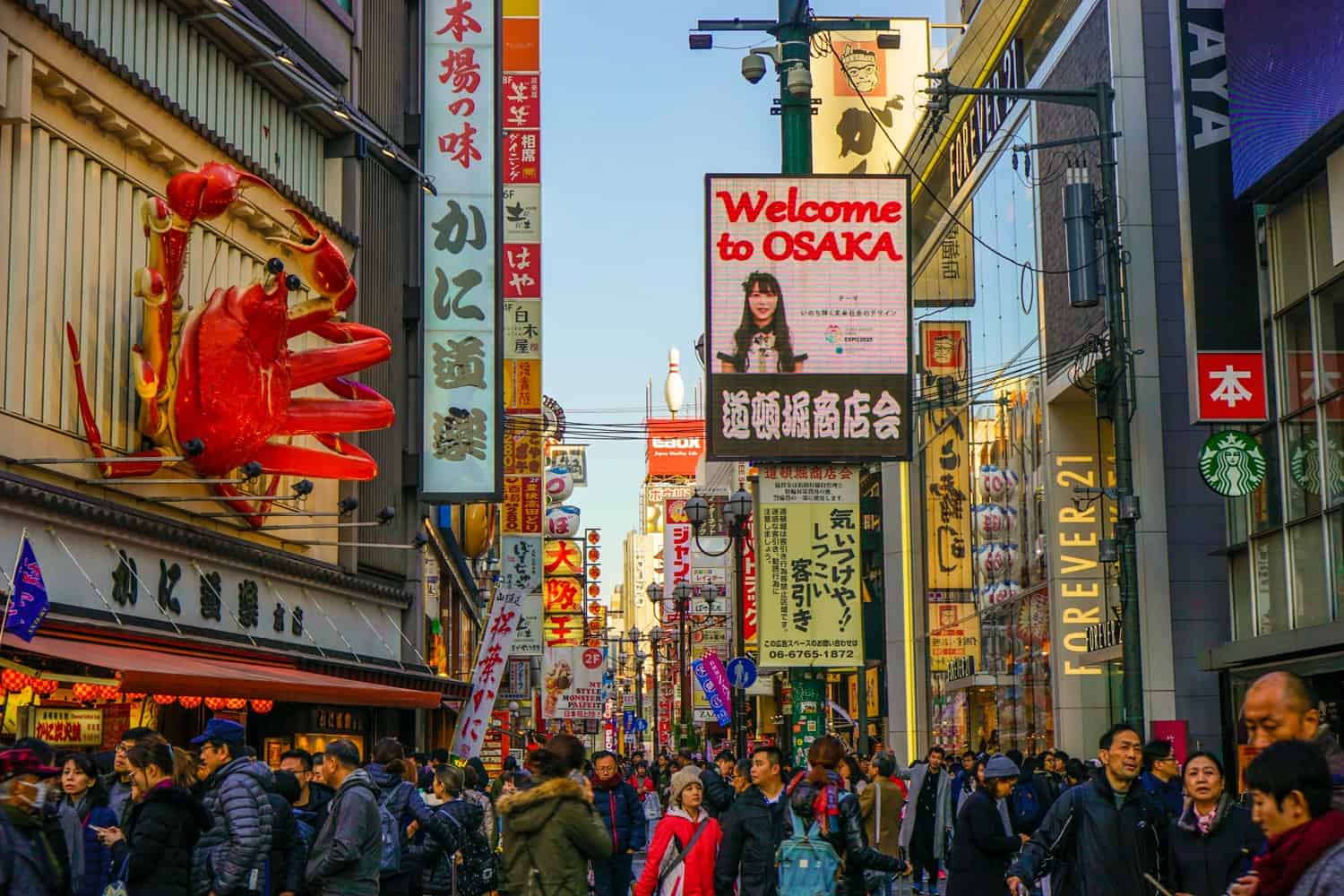
Two weeks is the perfect amount of time for your first trip to Japan.
You’ll be able to explore this wonderful country from the mountains to the sea, wandering through chaotic neon-lined streets and serene Zen temples, soaking in onsens and filling yourself with more ramen and sushi than you ever thought possible.
For your first visit in Japan, I recommend kicking things off in Tokyo (4 nights) before heading to Hakone (1 night), Yudanaka (1 night), Kanazawa (2 nights), Takayama (1 night), Kyoto (3 nights), Hiroshima (1 night), and Osaka (2 nights). You’ll experience a perfect blend of cities and nature, and leave craving a return visit to do it all over again.
Here’s how these destinations look on the map:
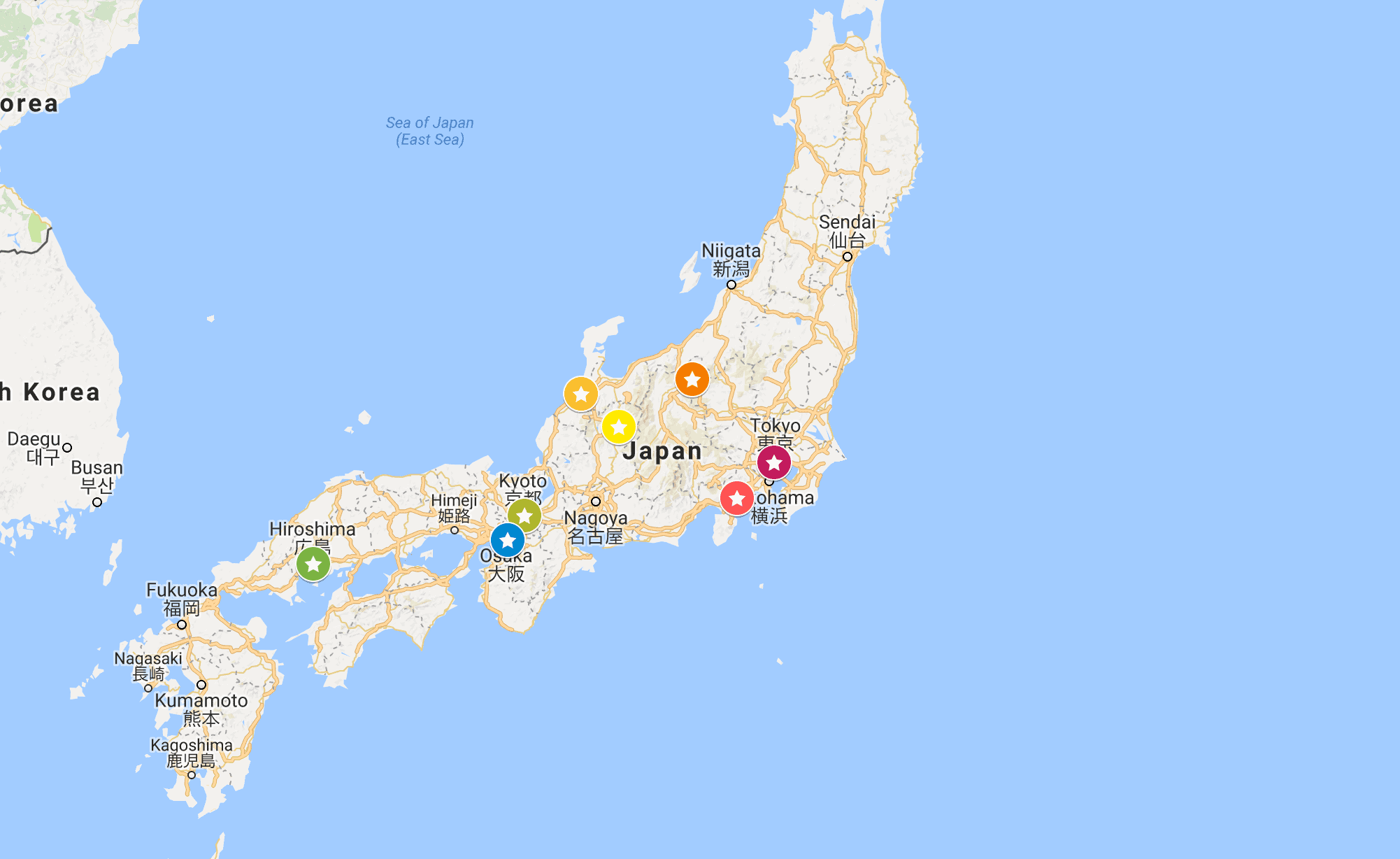
Day One: Arrive in Tokyo and Get Your Bearings
If you’ve come from afar, this is likely going to be a hectic day that passes in a haze of jet-lag. It’s best to take things easy on yourself during your first day in this chaotic city, and spend your time exploring the touristy parts of Shibuya
Make sure to walk across the iconic Shibuya Crossing on your first day, then head to the nearby Starbucks for a kickass view from above. Tower Records is fun to visit for a hefty dose of nostalgia, and if you discover you’ve forgotten to pack anything in your luggage, this is the perfect area for shopping. I may have spent this first day replacing my well-worn travel closet with Japanese versions.
Where to stay in Tokyo: It’s your first day in Japan! And so, it makes sense to really throw yourself into the local experience. That’s why we decided to stay at this lovely onsen-ryokan in Shinjuku. (Whenever readers ask me which neighbourhood to choose in Tokyo, I always recommend Shinjuku or Shibuya.) The reason why I loved this specific property, though, is because it’s a ryokan (traditional Japanese Inn) that also has an onsen (hot pool). It’s a great way to jump immediately into all things Japanese.
And it was wonderful; one of my favourite hotels in the country. The rooms were small and cosy, and felt super-traditional and calming. The views over Tokyo at night from the window were incredible. And the rooftop onsen? With free popsicles afterwards? So good. It’s located in a quieter neighbourhood, but still only a 10-minute walk to the subway. I really recommend this one!
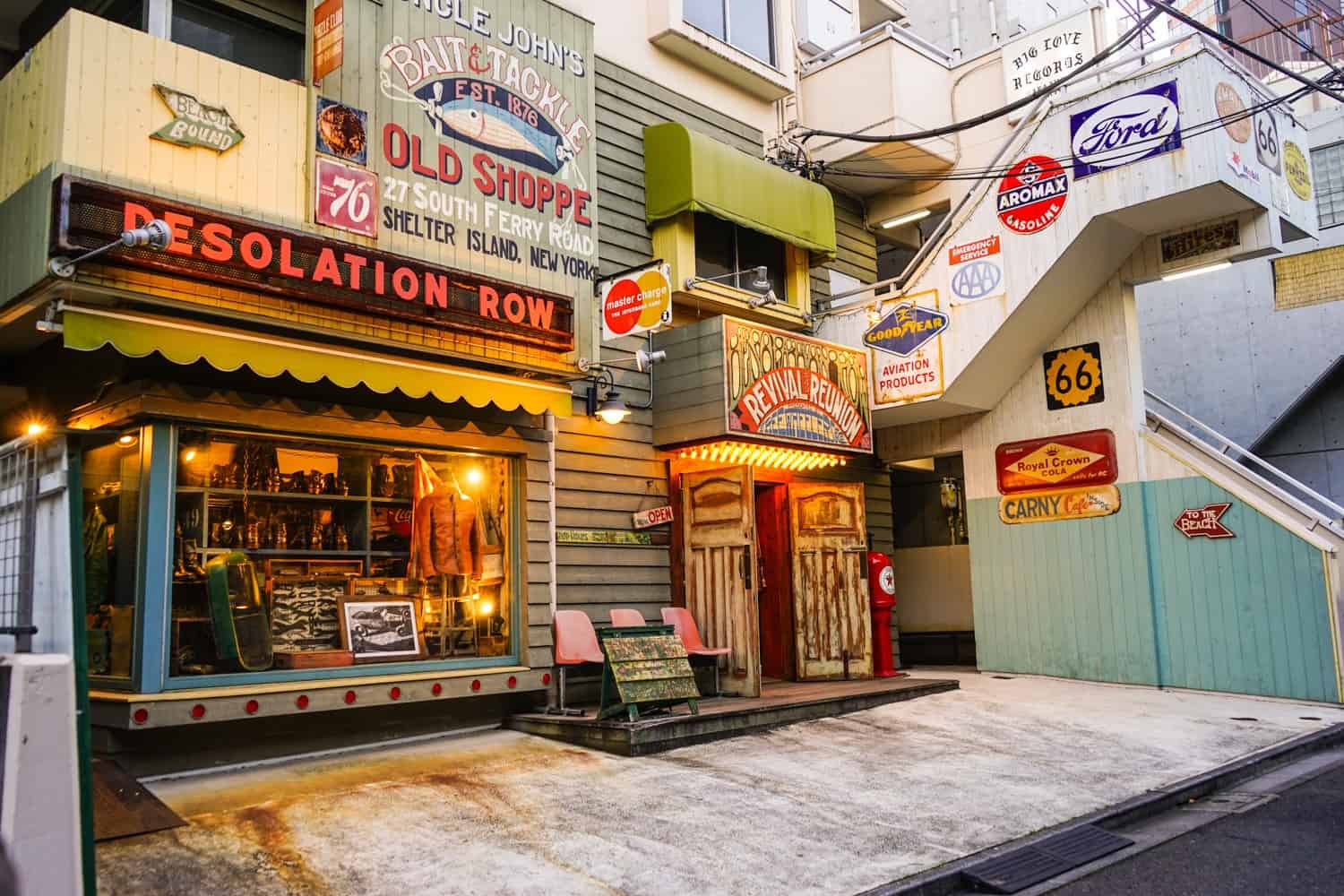
Day Two: Explore Harajuku and Shinjuku on Foot
Kick off your day with a hipster breakfast and latte in Harajuku. You’re going to adore this cool as hell neighbourhood , and want to spend an entire day cafe-hopping my way around the area. I recommend eating at Mr Farmer for a fun brunch, and loved Deus Ex Machina cafe for a morning caffeine kick.
There’s tons to do in Harajuku, so you’ll likely spend much of your second day in Tokyo walking, taking photos, and people-watching. I went to an ethically dubious hedgehog cafe , gawped at the unique fashion stores, fell in love with the Big Love Records store, and snacked on excellent gyozas at Gyoza Lou.
In late-afternoon, make your way back over to Shinjuku to head up to the top of the Tokyo Metropolitan Government Building. It offers one of the best free views in the city, and is worth visiting at sunset to watch the city slowly light up.
Round off your evening with one of my personal highlights from my time in Tokyo: yakitori and cold beer on Piss Alley, followed by bar-hopping around the charismatic Golden Gai bar district. This was so much fun!
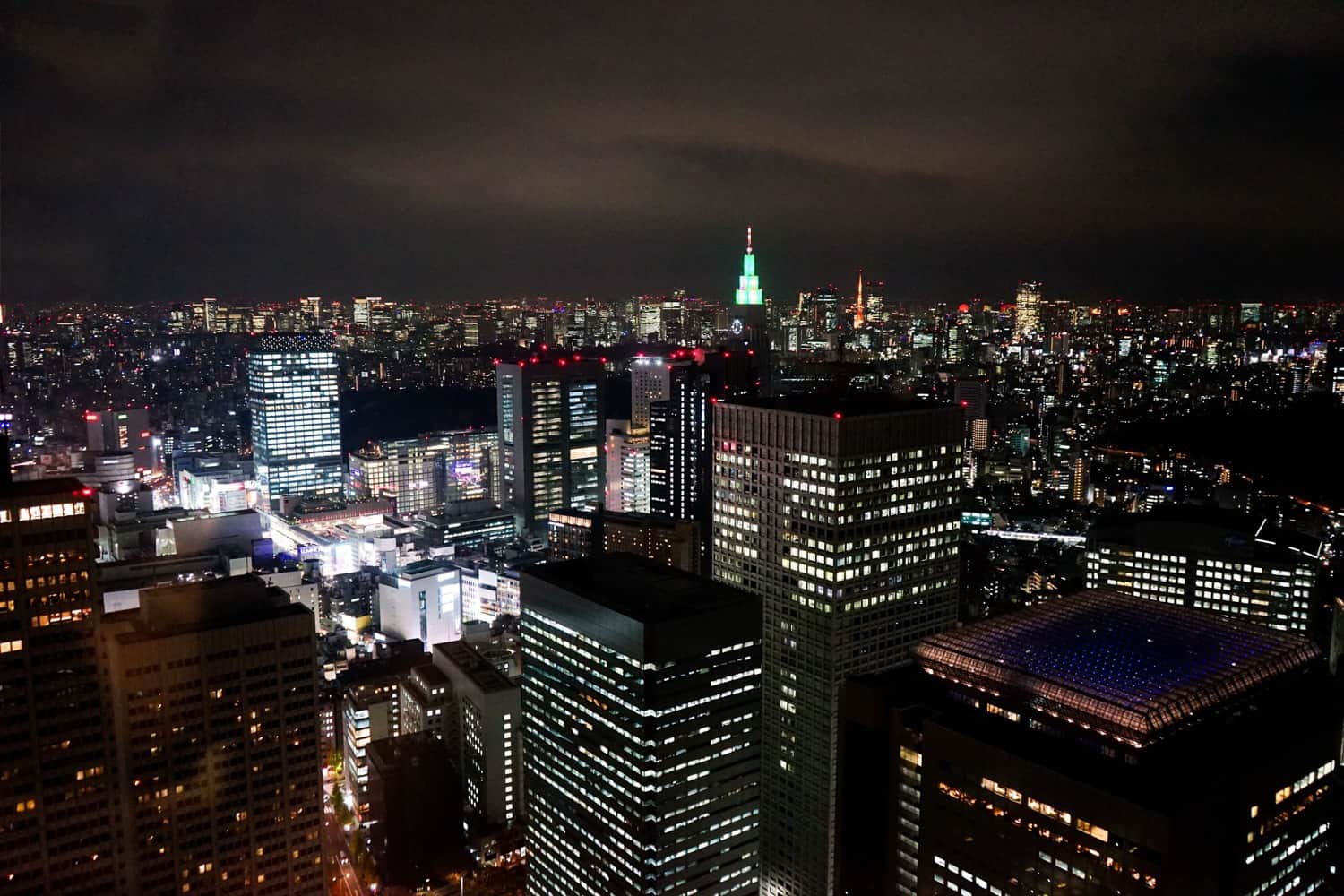
Day Three: Head Over to Central Tokyo
Start your day at Tokyo’s Imperial Palace, and spend your morning wandering around the grounds and gardens. This is a wonderful area of the city and you can easily spend several hours exploring, especially in the beautiful East Gardens.
After grabbing lunch, opt for a laid back afternoon walking the streets of high-end Ginza to see a different side of the city. Ginza may be known for its luxury shopping opportunities, but Ginza Crossing, Itōya Stationary Store, Hamarikyu Gardens are all free to see.
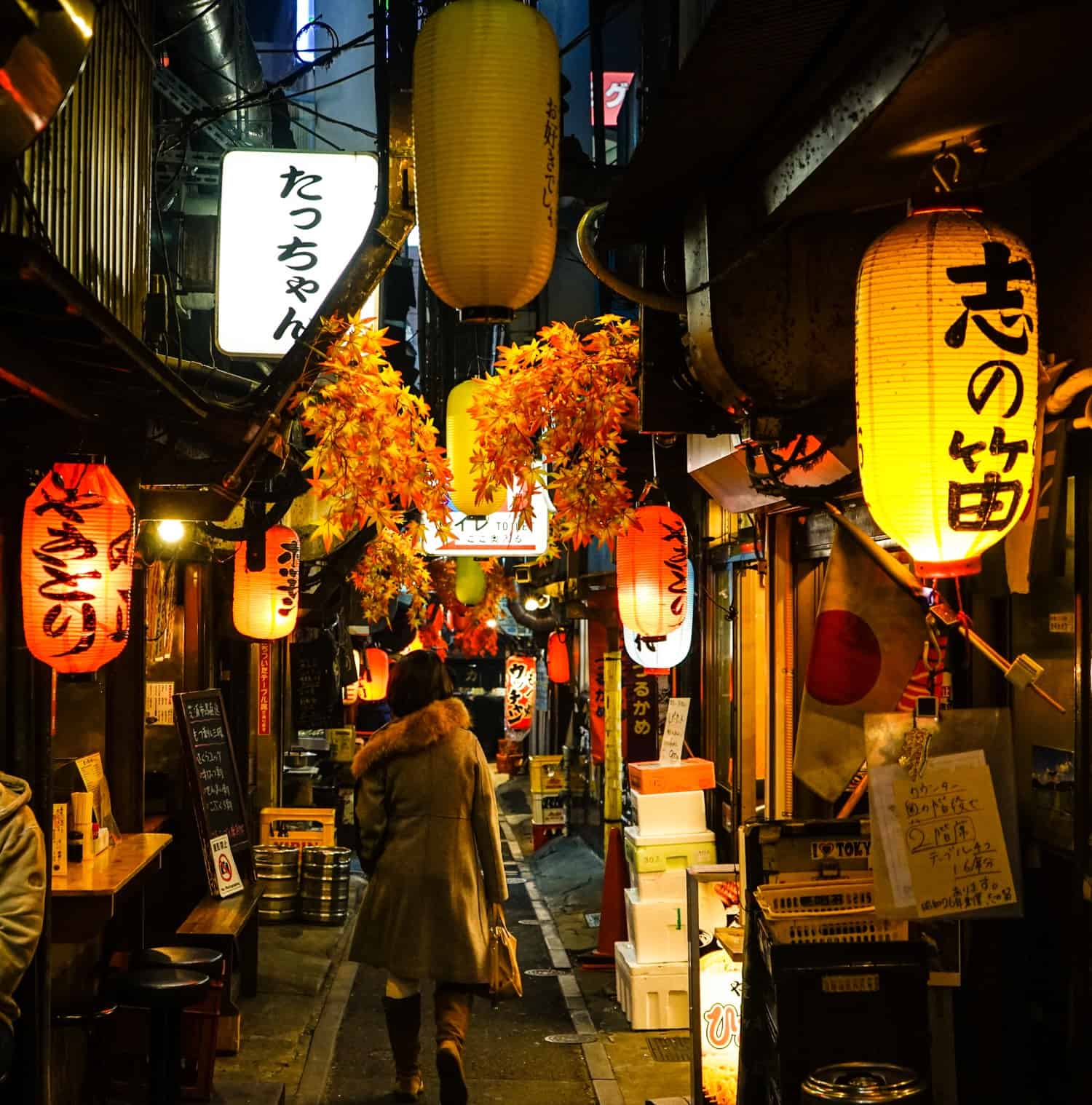
Day Four: Get Your Geek On in Akihabara
The jet lag should be wearing off by about now, so how about a hefty dose of culture shock?
Kick off your final morning in Tokyo by heading to Asakusa to check out the famous Senso-ji Temple. It’s one of the most photographed spots in the city, so you’ll want to get there early. Once the crowds start to arrive, wander over to Ueno Park to spend a couple of hours walking the trails and sitting on benches beside the pretty lake.
Akihabara used to be Tokyo’s electronics district and while you can still find plentiful technology stores there — Dave bought a new shaver there! — it’s now also the home of manga madness . In short, this neighbourhood is bright, noisy, and jam-packed with comic book stores. It’s the perfect place to spend an afternoon people-watching, experiencing culture shock, and pondering how it’s possible for so much neon to exist in one place.
There’s tons to do here: you could jump on an afternoon walking tour that takes you to all of the hidden gems and big-name anime-themed attractions in the neighbourhood. You could visit one of the infamous maid cafes, or you could hit up Super Potato to dive into the vintage gaming classics of the 80s and 90s; some of the games aren’t for sale anywhere else in the world! And if you want to go all in on the madness, you could sign up for a themed go-karting tour through the streets of Akihabara, dressed as a character from a Nintendo game. Yes, really.
This part of the city is exactly what you’re imagining when you think of Tokyo.
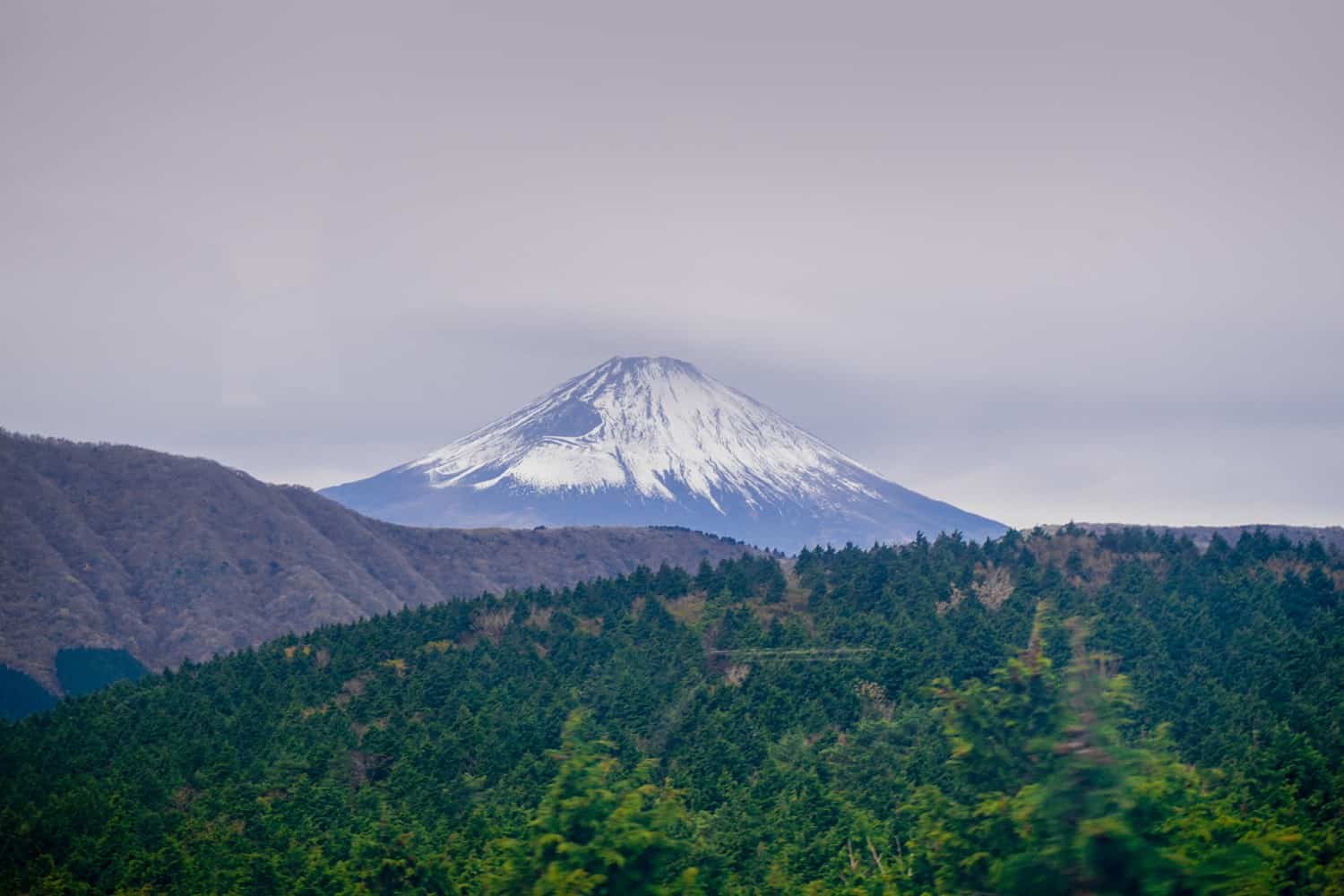
Day Five: Check Out Mount Fuji from Hakone
If seeing Mount Fuji is high on your wishlist, you’ll want to take a trip out to Hakone. I spent the night there in order to see as much as possible, but you could also do it as a day trip from Tokyo ( there are day trip tours ) if you’re short on time. Check availability for those day trips using the widget below:
If you’re aiming to climb this active volcano, keep in mind you can usually only do so between July and August, and also remember it’s rare to find yourself in front of Mount Fuji with bright blue skies. Prepare for clouds in the hopes of being surprised — December offers the best chances of seeing the mountain with pristine blue behind it.
The best and cheapest way to see Hakone is by purchasing the Hakone Free Pass , which gives you unlimited rides on all the transportation options over two days. You’ll start by taking the train from Hakone-Yumoto to Gora, then jumping on the cable car to Sounzen. From there, you’ll board a ropeway to Owakudani where you can check out the volcanic activity and sample some sulphuric eggs, and then continue on the ropeway to Togendai.
Next up: a pirate ship! Yes, really. You’ll be able to grab a ride on the boat that sails across Lake Ashi from Togendai to Hakone-machi, and then walk around the lake to Moto Hakone. From there, you’ll be able to jump on a bus to the starting point! It’s an easy circular journey that’ll expose you to pretty views of Mount Fuji and the surrounding area.
If you have extra time and love checking out quirky sights when you travel, head to Yunessun Spa Resort, which was my one big Hakone oversight. There, you’ll be able to bathe in hot pools filled with sake, coffee, red wine, and even ramen .
Where to stay in Hakone: We opted for a private room in a lovely guesthouse , with a tatami mat floor to sleep on and a private onsen on-site. It ended up being another one of our favourite stays in Japan! The staff were lovely and there was a restaurant/bar that served up surprisingly fantastic pizzas. It had a cosy and chilled-out atmosphere, with great food and wine, and lots of blankets to snuggle up with as we ate. It was also worth staying here just to experience the private onsen — we got to go in as a couple!
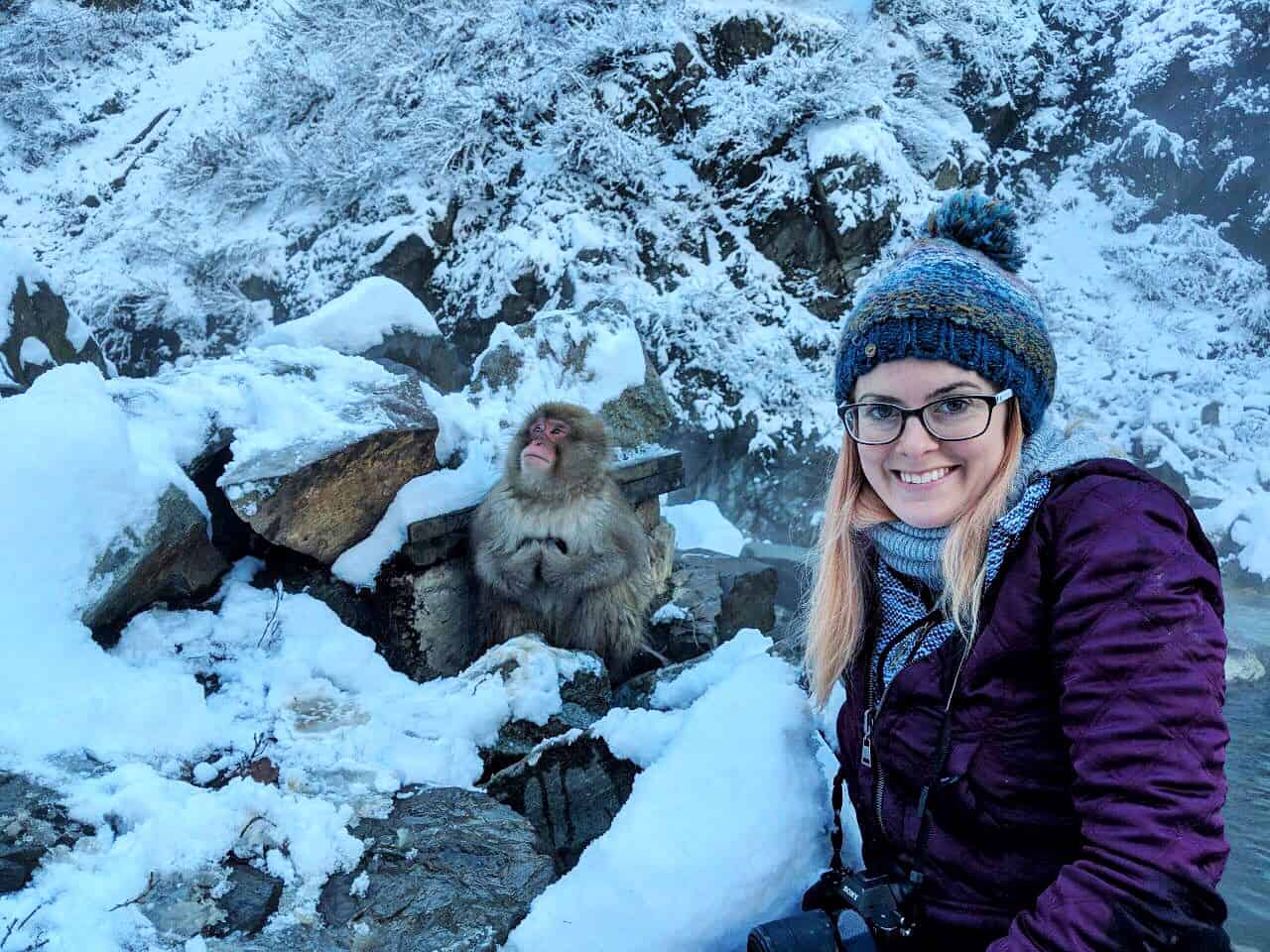
Day Six: See the Snow Monkeys in Yudanaka (Optional)
It makes little logical sense to head from Hakone all the way to Yudanaka, as it involves four trains, some with tight changes, and half a day of travel, but if it’s winter and you’ve always dreamed of seeing Japan’s famous snow monkeys, this might be worth the detour for you.
Just keep in mind that the experience isn’t as organic as it’s touted to be online, and felt a bit like a zoo to me. You can read my report from my time at Jigokudani Monkey Park , along with some recommendations for making the most out of your visit if you do decide to go. If you’re visiting outside of winter, don’t bother going — the monkeys won’t be in the hot pools and the surrounding area is pretty ugly.
If you do decide to skip Yudanaka, I’d add an extra day to Tokyo, Kyoto, or Osaka in its place.
Where to stay in Yudanaka: In Yudanaka, we splurged on a stay in a cosy ryokan , which is something you have to experience at least once in Japan. With prices often reaching as high as $300 a night for the experience, I was thrilled when I stumbled across a more budget option in Yudanaka. It was run by an adorable Japanese couple, and their house came with a private onsen, return transport to the snow monkeys, and one of the most extravagant meals of my life. A kaiseki is a multi-course meal that will see you eating roughly a week’s worth of food (maybe an exaggeration) in a single night, sampling fresh, local Japanese cuisine. It was delicious, and I adored having no idea what anything was. I highly recommend the experience, although being presented with a seven course meal for breakfast had me on the verge of tears the morning after.
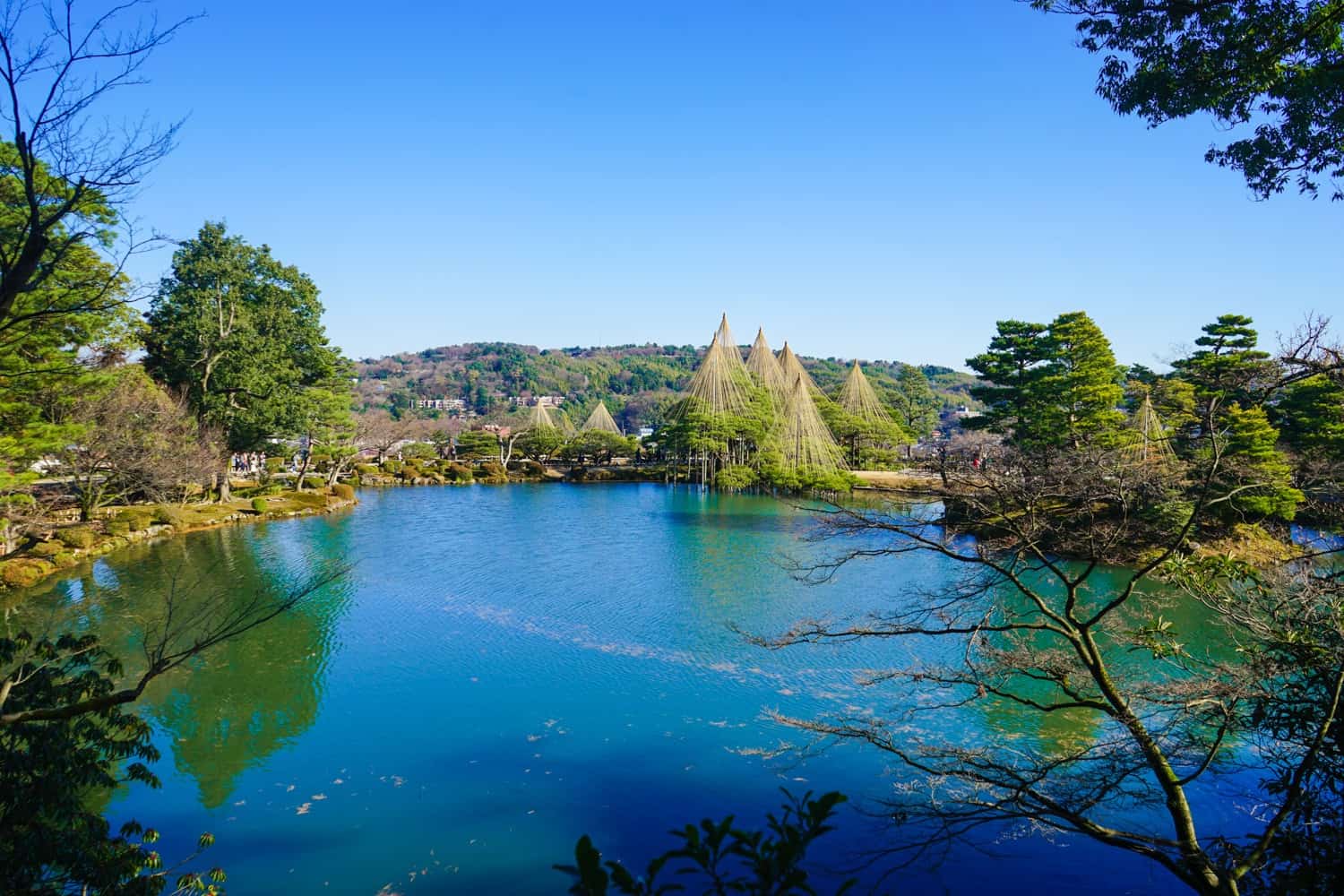
Day Seven: Sushi, Architecture, and Gardens in Kanazawa
I love Kanazawa! I added it to my itinerary because so many of my friends told me it was their favourite place in Japan and I came away having fallen head over heels in love with it, too. This lovely city on the coast is one of the more chilled-out spots in the country, where you can take things slow and enjoy where you are, rather than rushing around and trying to see as much as possible.
Odds are, you’ll be travelling a fair distance to get to Kanazawa (it’s about three hours on public transport from either Tokyo or Yudanaka), so you likely won’t get into the city until the afternoon. That’s no big deal because there’s not a huge pressure to sightsee here.
There are three main standouts when it comes to Kanazawa — the sushi, the history, and the gardens — and as long as you get to experience all three, you’ll be doing great. In fact, odds are, you’ll be able to see them all today.
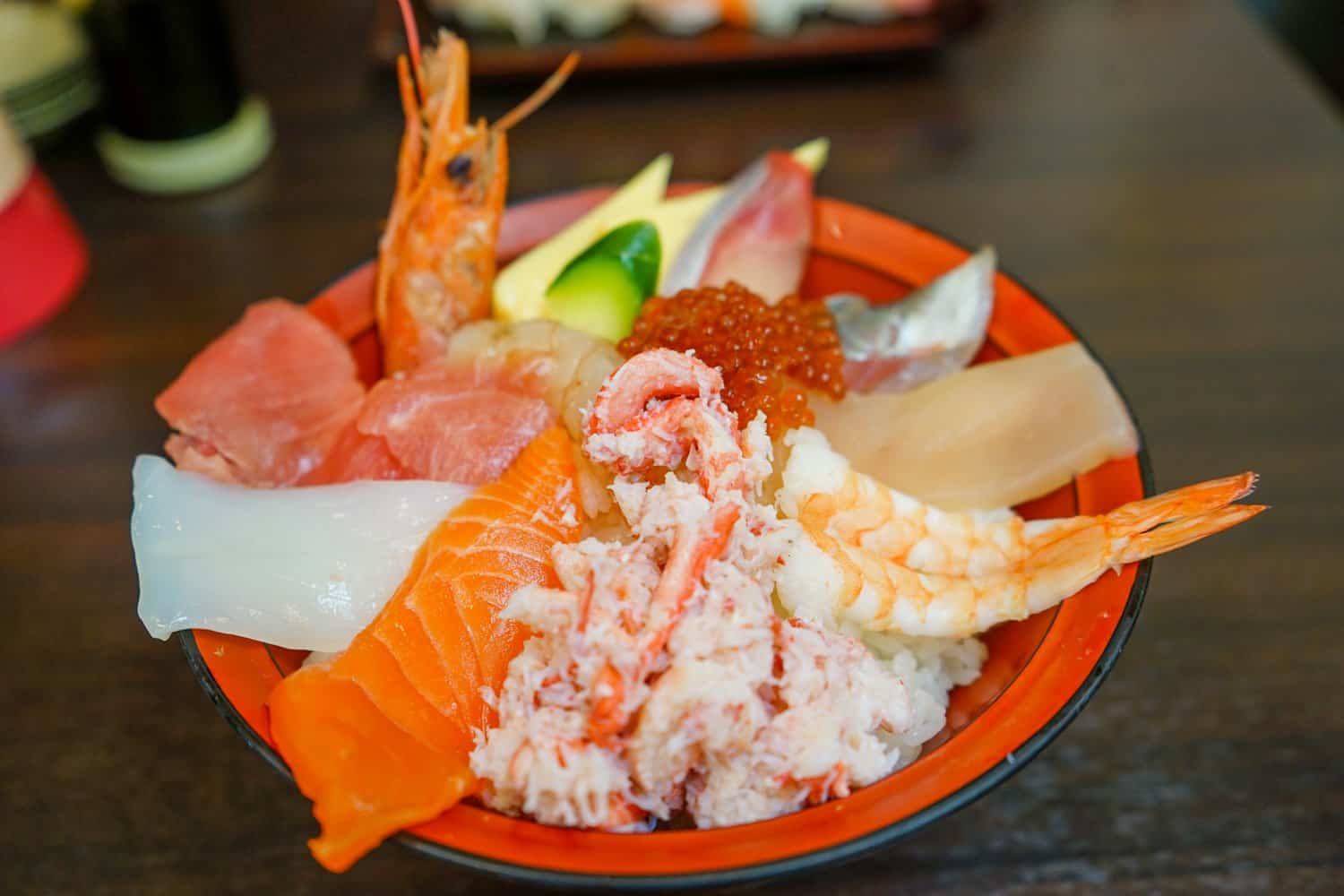
If at all possible, try to time your arrival in Kanazawa with lunch. One of my favourite meals in Japan was at the fabulous Omicho Market, which is famous for its sushi, sashimi, and high-quality fresh seafood.
The market is less touristy than the chaotic Tsukiji Market in Tokyo, and that means more locals, cheaper prices, and just-as-fantastic seafood. Wander the stalls taking photos, choose a restaurant that’s packed with locals, then sample some of the freshest sashimi you’ll ever encounter. Let’s just say I don’t plan on opting for sashimi outside of Japan very often after this experience!
After lunch, kick off your sightseeing in Kanazawa by heading to its most famous attraction: Kenruko-en Gardens. It’s one of the top three gardens in Japan and makes for a perfect way to soak up the relaxed vibes. You could see the entire park in half an hour, but most people opt to go slow and spend a full hour there. Somehow, Dave and I managed to fill a whole two hours in the park, sitting beside the pond, admiring the trees, and wandering down every pathway we could find.
To round off you afternoon explorations, pop over to the nearby Kanazawa Castle for a deep dive into Japanese history and architecture, before venturing out for some more delicious seafood in the evening.
Where to stay in Kanazawa: Kanazawa is home to some seriously cool accommodation! We had a hard time choosing where to stay because every property looked so cosy and inviting. In the end, we settled on this minimalist, modern set-up — it was great value for money relative to most other places we stayed in Japan, especially when you consider it’s only been open a year. It’s in a great location, right outside Omicho Market, where you’ll sample the best sushi of your life. Also within walking distance is Kanazawa Castle and Kenroku-en Garden, so you’re really staying in the heart of it all. I recommend signing up for the traditional Japanese breakfast, as you’ll likely not have had anything else like it before! There’s also an onsen and laundry facilities (always appreciated mid-trip!), and the staff were so sweet and kind.
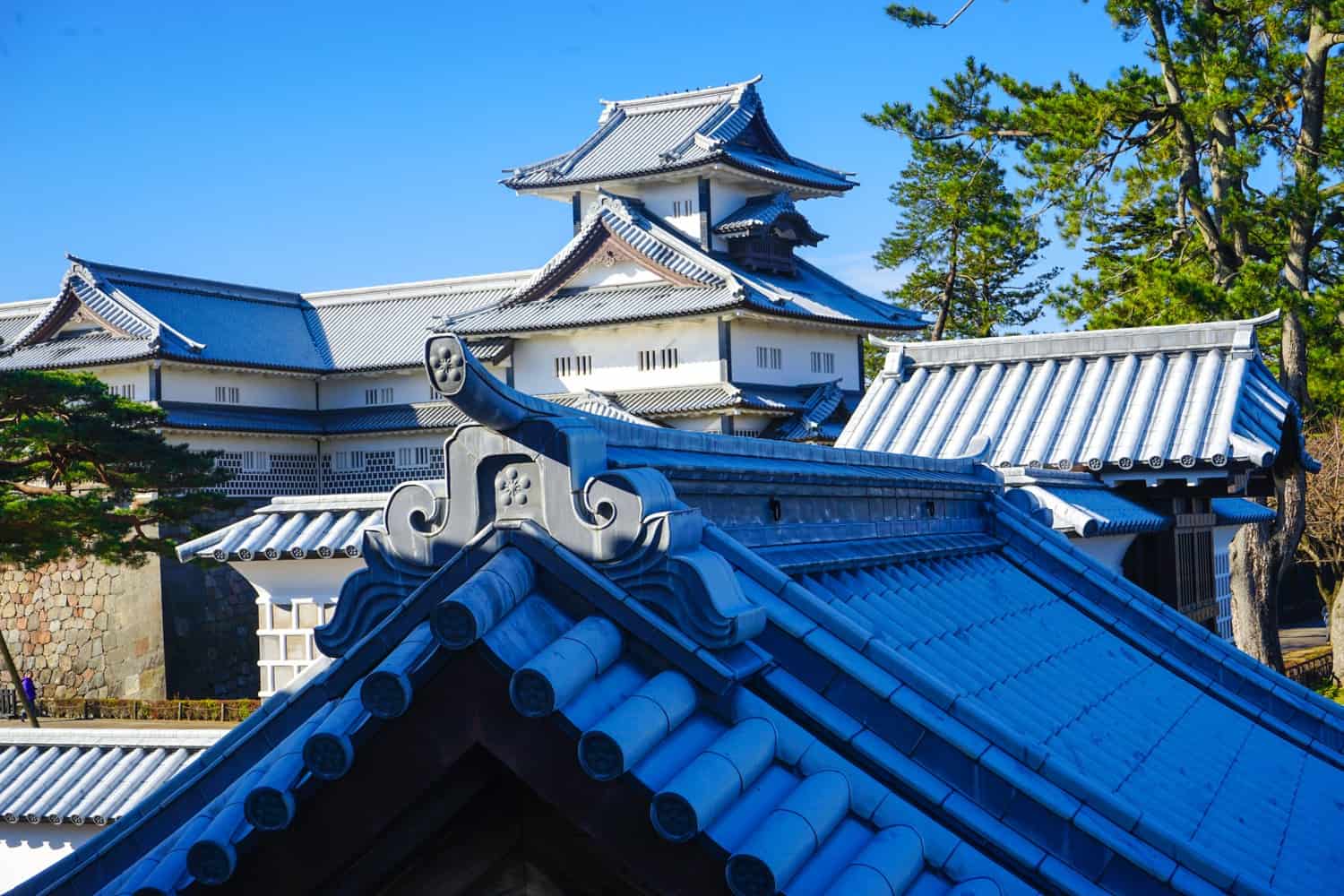
Day Eight: Go District-Exploring in Kanazawa
For your second day in Kanazawa, get ready to get your history on by spending some time in the well-preserved teahouse, geisha, and samurai districts.
Higashi Chaya District is the largest and more famous geisha district, dating back to the 1820’s, and is full of pretty buildings, teahouses, and gold leaf galleries. Make sure to take a look around Ochaya Shima, an old geisha house that’s been preserved as a museum and is fascinating to walk around.
If the crowds at Higashi Chaya get too much for you, spend some time around the nearby Nishi Chaya and Kazue-machi districts, which are less crowded. Nagamachi Bukeyashiki District is where middle-class samurai families used to live and is now home to canals, cobblestone streets, and mud walls surrounding former samurai houses.
Spend the afternoon wandering alongside Kanazawa’s river as a lowkey way to round off your time in the city.
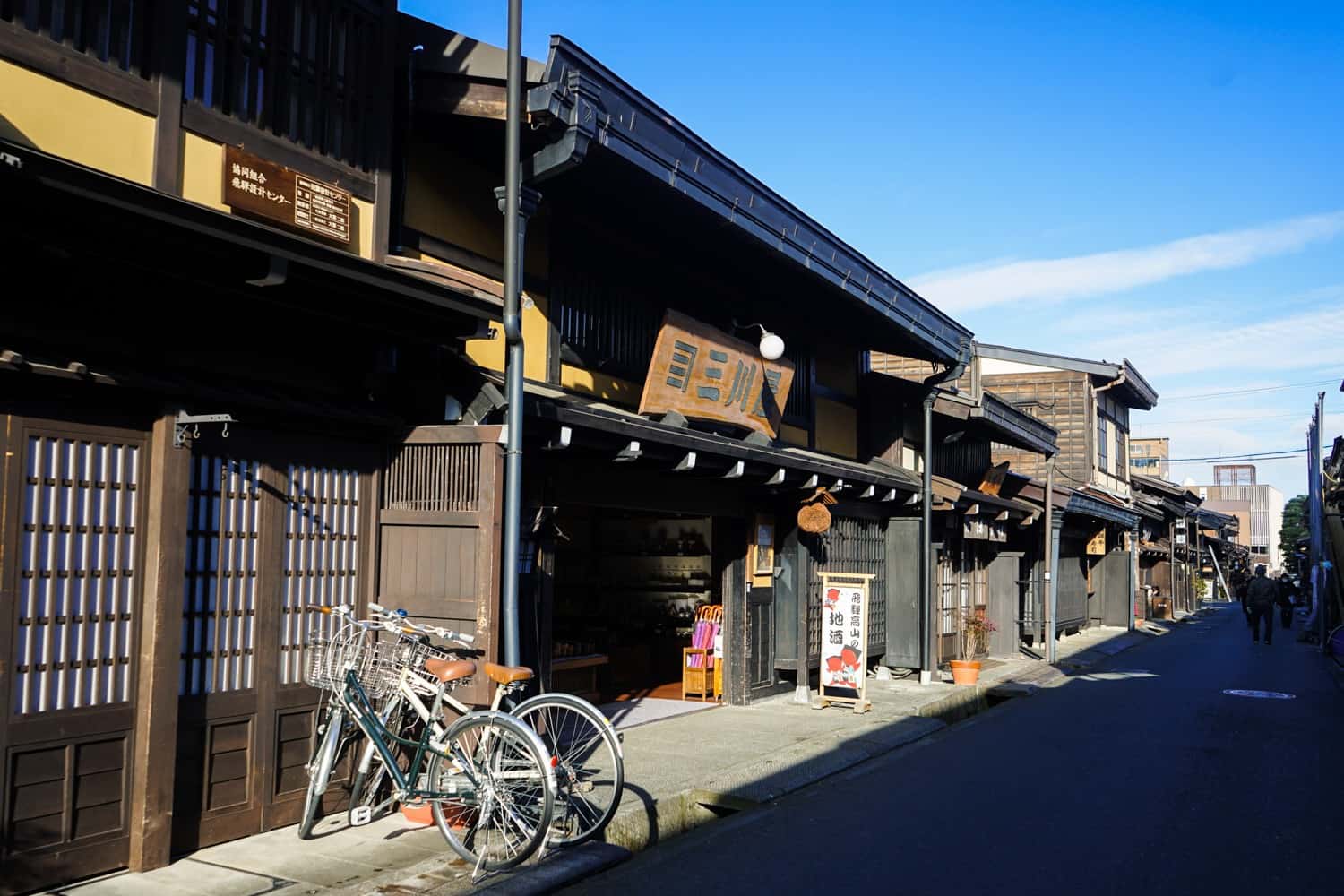
Day Nine: Step Back in Time in Takayama
Takayama, in the Japanese Alps, is a relaxed mountain town with beautiful traditional buildings, famous sake, and delicious Hida beef.
Spend your morning exploring the old wooden houses and hillside shrines, while making it a priority to check out one of the town’s cosy cafes for a soothing cup of green tea.
In the afternoon, head to the Hida Folk Village — an open-air museum showcasing 30 traditional farmhouses in the architectural style of the Hida region. If you were feeling particularly ambitious, you could attempt to squeeze in a half-day trip to UNESCO World Heritage Site Shirakawa-go, where you’ll find a secluded village full of traditional gassho-style homes with steep thatched roofs that keeps the snow off in colder months.
Make sure to squeeze in some sake-tasting and Hide beef-sampling during your evening in Takayama.
While Takayama is small and easily explored, there’s tons to do in the surrounding area, so you could easily swap your itinerary around in order to spend two nights here and one in Kanazawa.
Where to stay in Takayama: In Takayama, we stayed in a small, locally-run guesthouse in the centre of town. It felt like particularly good value for Japan, as it was one of the few places we stayed that you could describe as spacious! It even had a kitchen and washing machine. The beds were comfortable and the hotel was within walking distance of everywhere, including the train station. It was quiet, the staff were lovely, and overall, it made for a comfortable stay!
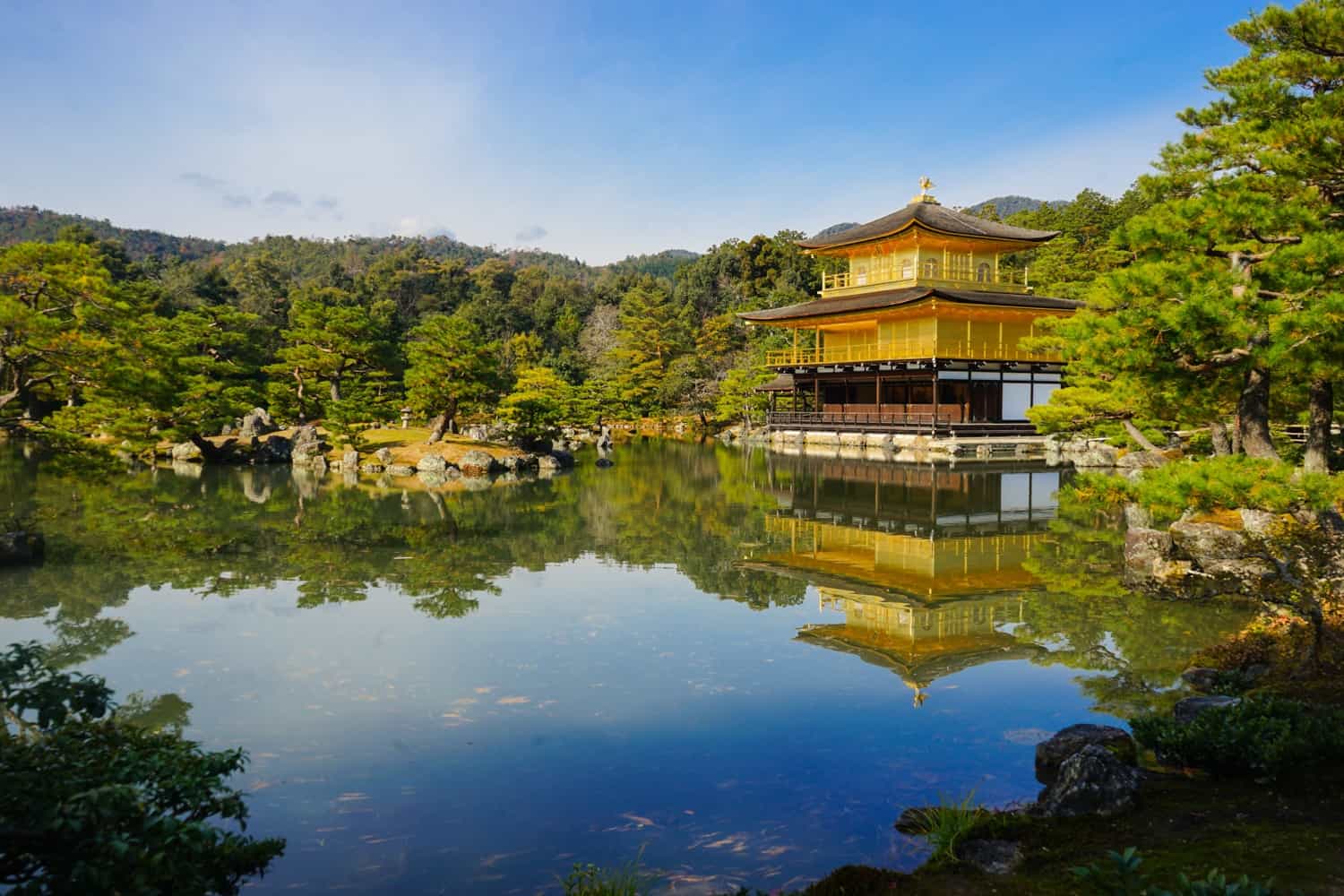
Day 10: Check Out the Highlights of Northern Kyoto
Kyoto! This will likely be one of the highlights from your trip to Japan — as long as you’re prepared for the number of tourists to be intense at times.
The busiest time to travel is the first week of April when cherry blossom season rolls around and you’ll be looking at extreme prices and enormous crowds if you decide to visit then. In mid-November, the autumn foliage hits its peak, and it’ll be almost as crowded. In general, summer and winter are the least overwhelming months in Kyoto, although mid-August and the week around New Year’s Day are popular with local tourists.
Aim to spend your first day in the city hitting up the highlights of Arashiyama, in Northern Kyoto. Make the Bamboo Grove your first stop, as the later in the day you leave it to visit, the more people you’ll have to contend with. Unless you can get there right as the sun rises, dismiss your dreams of having the entire spot all to yourself. Still, it’s a beautiful place, whether it’s overrun with tourists or not.
Tenryu-ji Zen temple, at the entrance to Arashiyama Bamboo Grove is worth a look and worth the entrance fee for some respite from the noise, and it’s home to one of my favourite gardens in Japan.
After grabbing some lunch in Arashiyama, head over to Kinkaku-ji temple — one of Japan’s most iconic buildings. Otherwise known as the Golden Pavilion, this is a must-see while you’re in Kyoto, and I bet you won’t be able to stop taking photos of its glistening reflection in the water. It’s likely to be the most crowded place you visit in all of Japan, but it’s still easy to snap shots without other people in view.
Where to stay in Kyoto: In Kyoto, we stayed in a cosy hotel in the heart of town — we loved this place so much in 2017 that when we returned to Japan this year, we knew we’d have to stay there again! The property was in a fantastic location for exploring Kyoto and the bathrooms were nicer than anywhere else we stayed. It’s one of the top-rated guesthouses in the city — while also being one of the cheapest — so when you take that into consideration, I’m convinced you won’t find anywhere better to stay in Kyoto.
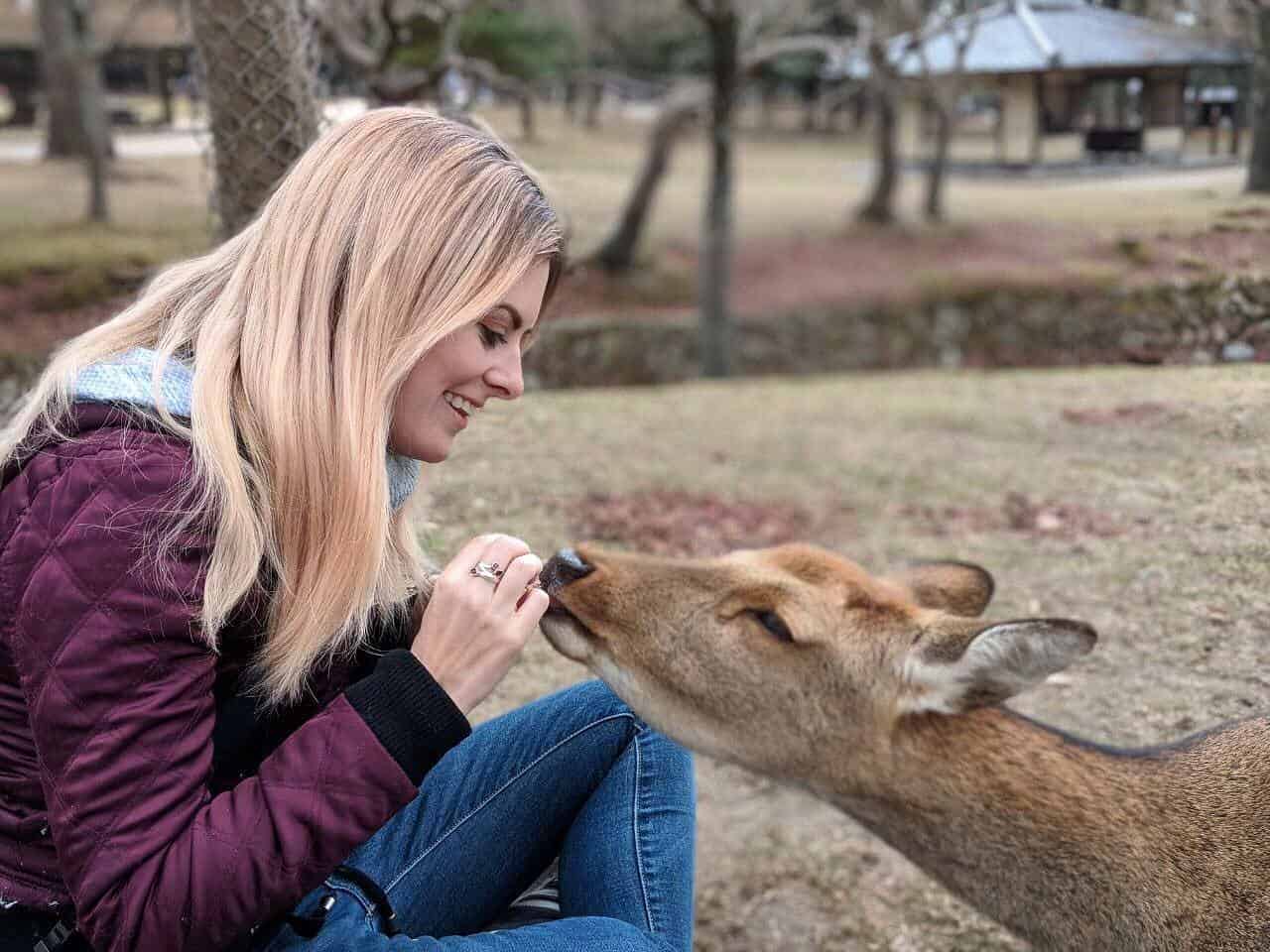
Day 11: A Day Trip to Deer-Filled Nara
The undisputed highlight from my time in Japan was the day I spent playing with deer in Nara. If you want to know what my idea of paradise looks like, it’s fairly identical to that photo above.
Nara was the first capital city in Japan, so there are lots of shrines and historical activities to explore while you’re there.
You could spend the entire day squealing over the wild deer that have made Nara their home. With over 1,000 of them inhabiting the city, you’ll find them everywhere. In the parks, outside the temples, wandering into shops, queuing for a bus — these deer are viewed as sacred by locals and are protected as national treasures. You can buy snacks from vendors around the city and feed them if you like — it’s a lot of fun, especially when they bow to greet you!
If I was going to do this day trip again, I’d book a morning half-day tour that takes you to all of the important temples, shrines, and historical monuments in Nara. Then , I’d spend the entire afternoon just hanging out with the deer and marvelling at how calming they are. (I got so excited about the deer that I spent all day posing with them and didn’t see any of the important parts of Nara!)
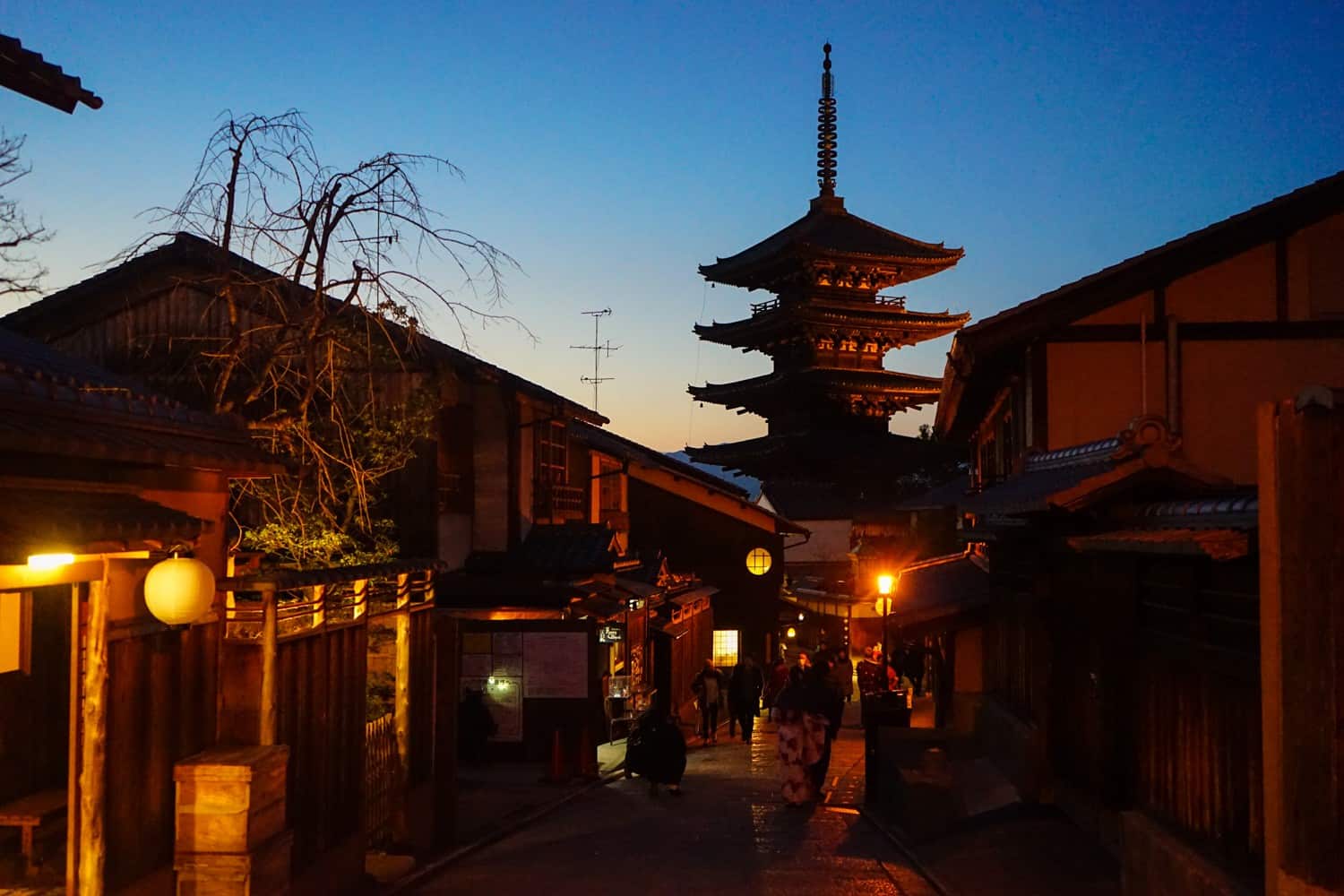
Day 12: Geishas and Shrines in Kyoto
For your final day in Kyoto, plan to spend your time hunting down geishas, wandering through the historic district, and hiking through the Fushimi Inari Taisha shrine’s thousands of red torii gates.
Kick off your day in the historic Higashiyama district, one of the best-preserved parts of Kyoto. Stroll through the narrow lanes, take photos of the old wooden buildings, and stop at traditional stores to stock up on souvenirs.
Roughly an hour before sunset, head to Fushimi Inari Taisha to get some exercise in. I recommend walking the entire four kilometre climb up the mountain for one specific reason. Sure, you’ll get the gist of the shrine within the first couple of minutes, but the further you walk, the less people you’ll encounter. By the time you reach the top, you’ll have those famous torii gates all to ourselves. By going around sunrise or sunset, you maximise your chances of finding solitude.
Next up: the district of Gion! It’s the birthplace of geisha culture and as such, many tourists head there in search of a glimpse of a working maiko or geisha. Make sure you head there in the evening after climbing through the torii gates.
Day 13: Hiroshima and Miyajima Island
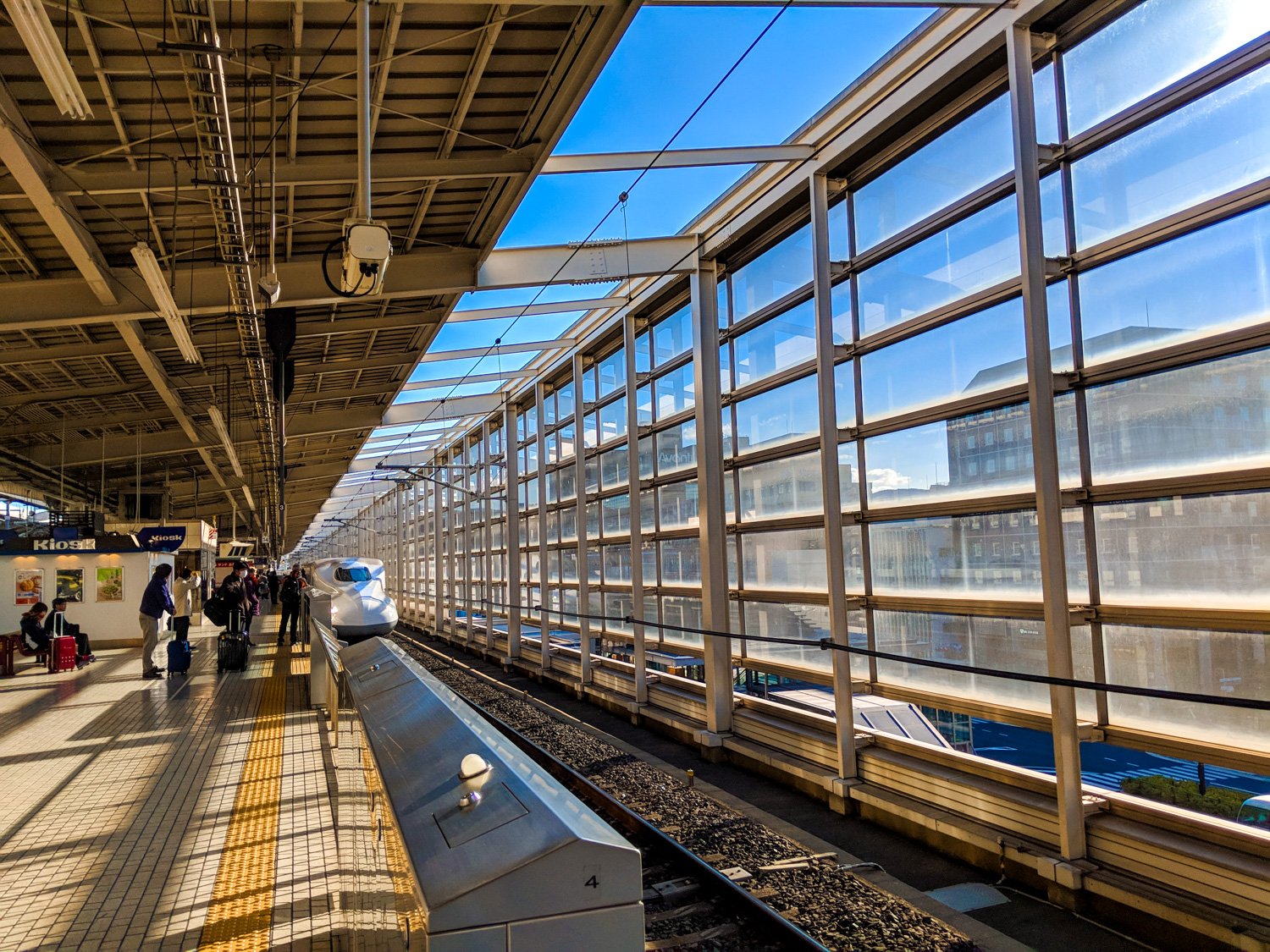
Get your day started early because we’ve got a lot of ground to cover. You’ll be heading to Hiroshima today and the best way to get there is via the Shinkansen bullet train. There’s plenty of departures running throughout the day, so there’s no need to panic about getting to Kyoto Station at a certain time. However, it does take slightly over 90 minutes to get there, and we’ll only have one day to explore, so earlier is better!
Some visitors to Japan wonder if it’s necessary to go to Hiroshima; let’s just say it’s not the most cheerful of travel experiences! However, in my opinion, Hiroshima is so important to visit. Not only will you get to fully educate yourself on the horrors that took place here, but you’ll also be able to witness the city’s incredible strength and resilience.
Hiroshima in 2024 is so much more than its past. It’s a vibrant, modern — even hipster — city with excellent food and warm locals. It’s inspiring to witness first-hand how the destination has grown and evolved over the past 80 years. You’ll get a lot out of your visit, I think — I certainly did.
I recommend aiming for the Nozomi 77 Shinkansen, which leaves from Kyoto Station at 7:40 a.m. With no changes along the route, it gets you to Hiroshima by 9:20 a.m.
You can use Google Maps’ public transport information to get from your Kyoto hotel to Kyoto station via the bus — or take an Uber — and rather than having breakfast in a cafe, I recommend grabbing some snacks from a 7-11 at the station to help save on time.
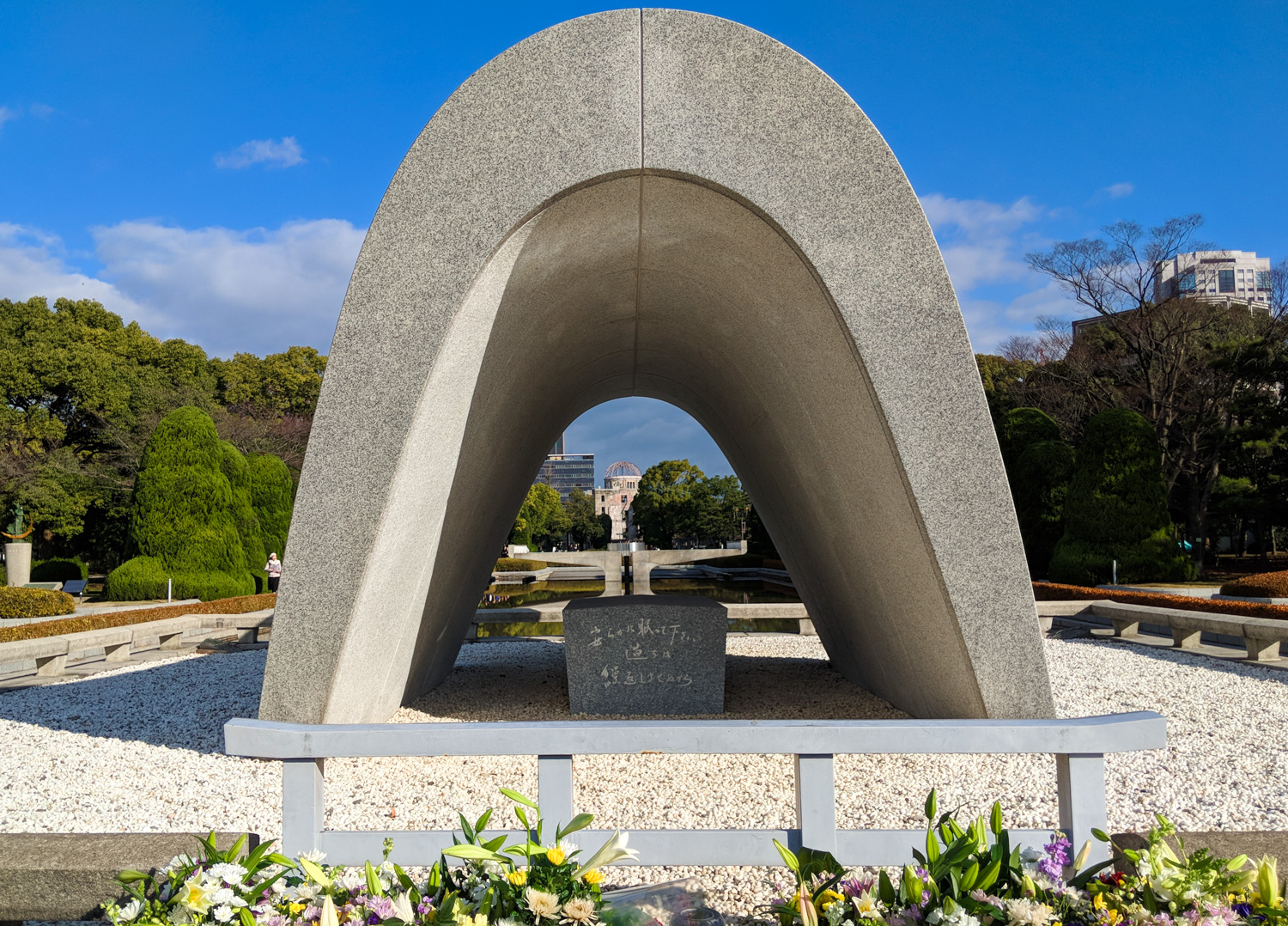
Hiroshima’s train station is located roughly three km, or two miles, from the city’s main landmarks, so I don’t recommend leaving your luggage in the station while you explore. Instead, do as I did and venture first to your hotel to drop your bags; your accommodation should be close to the centre of town. I stayed in this capsule hotel — my first time in one! — and loved it. It was just a three minute walk to Peace Memorial Park, which is where our explorations begin.
Start off by giving yourself several hours to wander the Hiroshima Peace Memorial Museum. It’s undeniably intense and a difficult place to visit, but you need to go in order to fully understand what took place in this city.
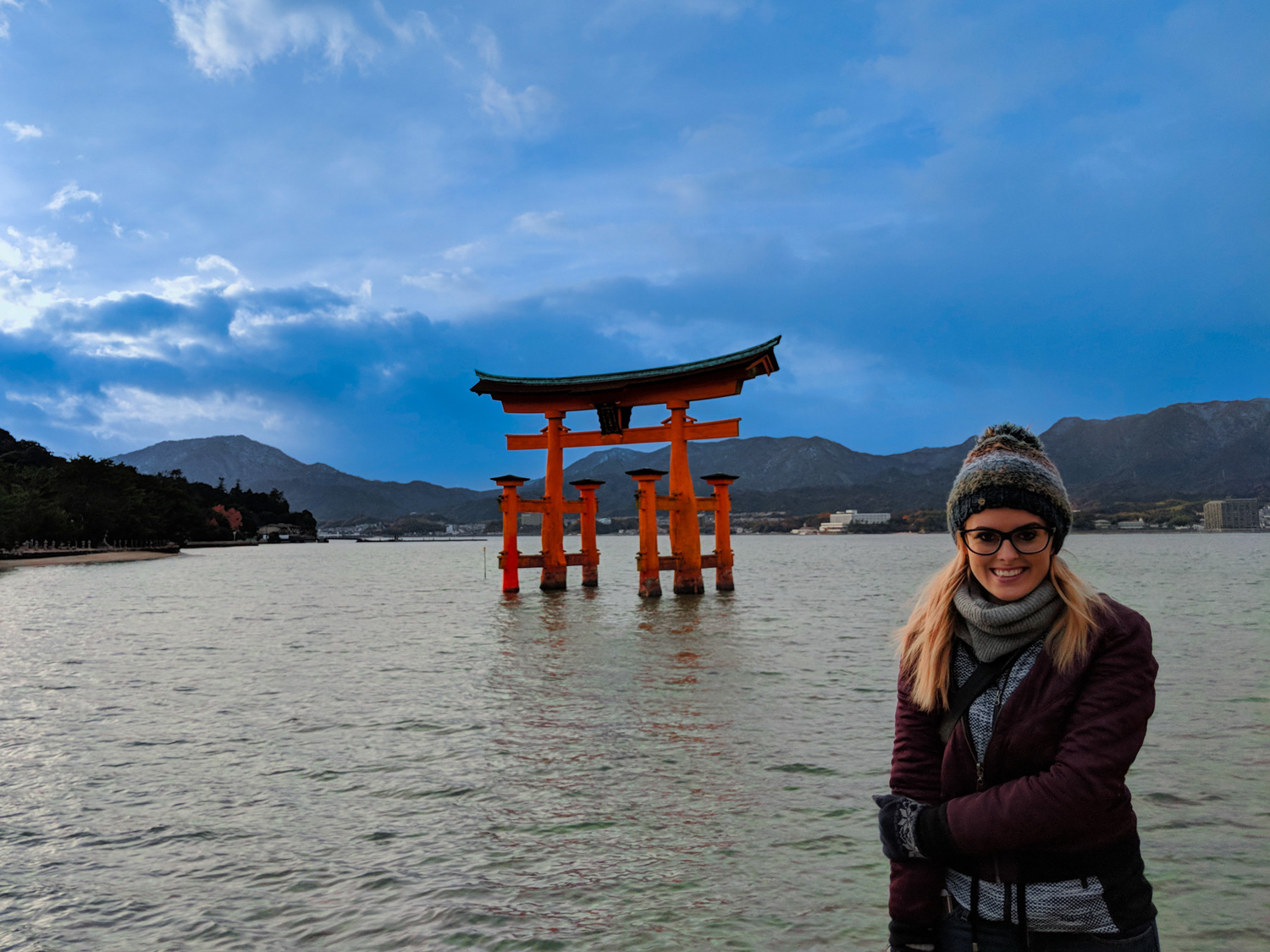
After a quick lunch in Hiroshima, hit the rails and take the train and ferry out to nearby Miyajima Island. It’s a place for respite after a heavy morning of sightseeing, and while you’re there, you can swoon over the wild deer that roam the island, snack on street food, and take selfies in front of the famous Great Torii of the Itsukushima Shrine — you’ll probably have seen this in Japan guidebooks. Most visitors love the laid back vibe of Miyajima.
Head back to Hiroshima for dinner and tuck into a delicious plate of okonomiyaki. Hiroshima’s version of this savoury Japanese pancake is filled with yakisoba noodles, and is the ultimate in comfort food. Definitely make sure to try this while you’re in town so that you can compare it to the Osakan version at your next stop.
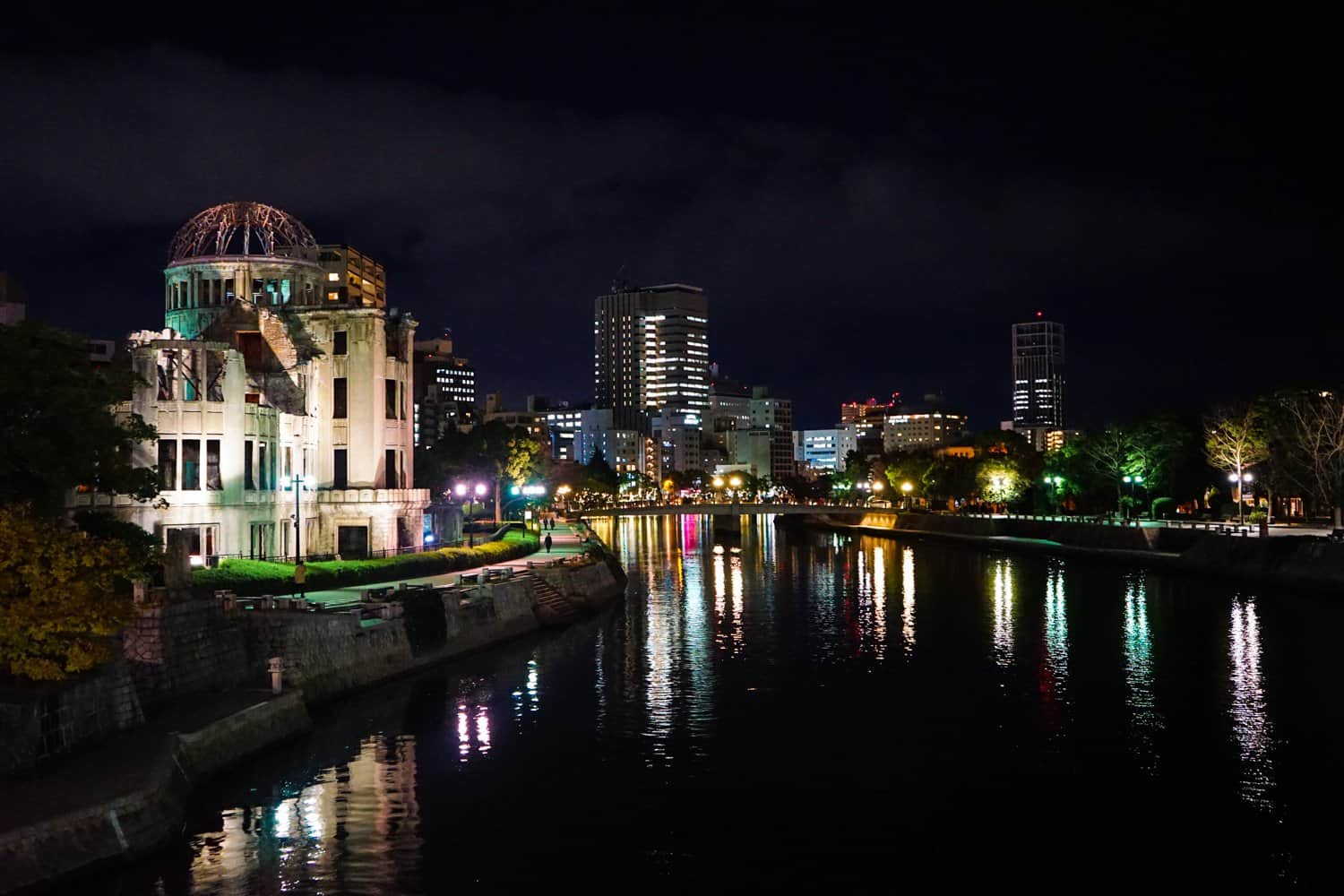
Where to stay in Hiroshima: In Hiroshima, we opted for a capsule-style hostel because I didn’t want to leave the country without trying one. Fortunately, we found ourselves in a room with only two other people staying there, so our capsule room with 20-odd beds was light on snorers. The owner of this place was ridiculously lovely, and it was in walking distance of all of the attractions. Really great bathrooms, a fun common area, and a cheap price. I would have stayed another night!
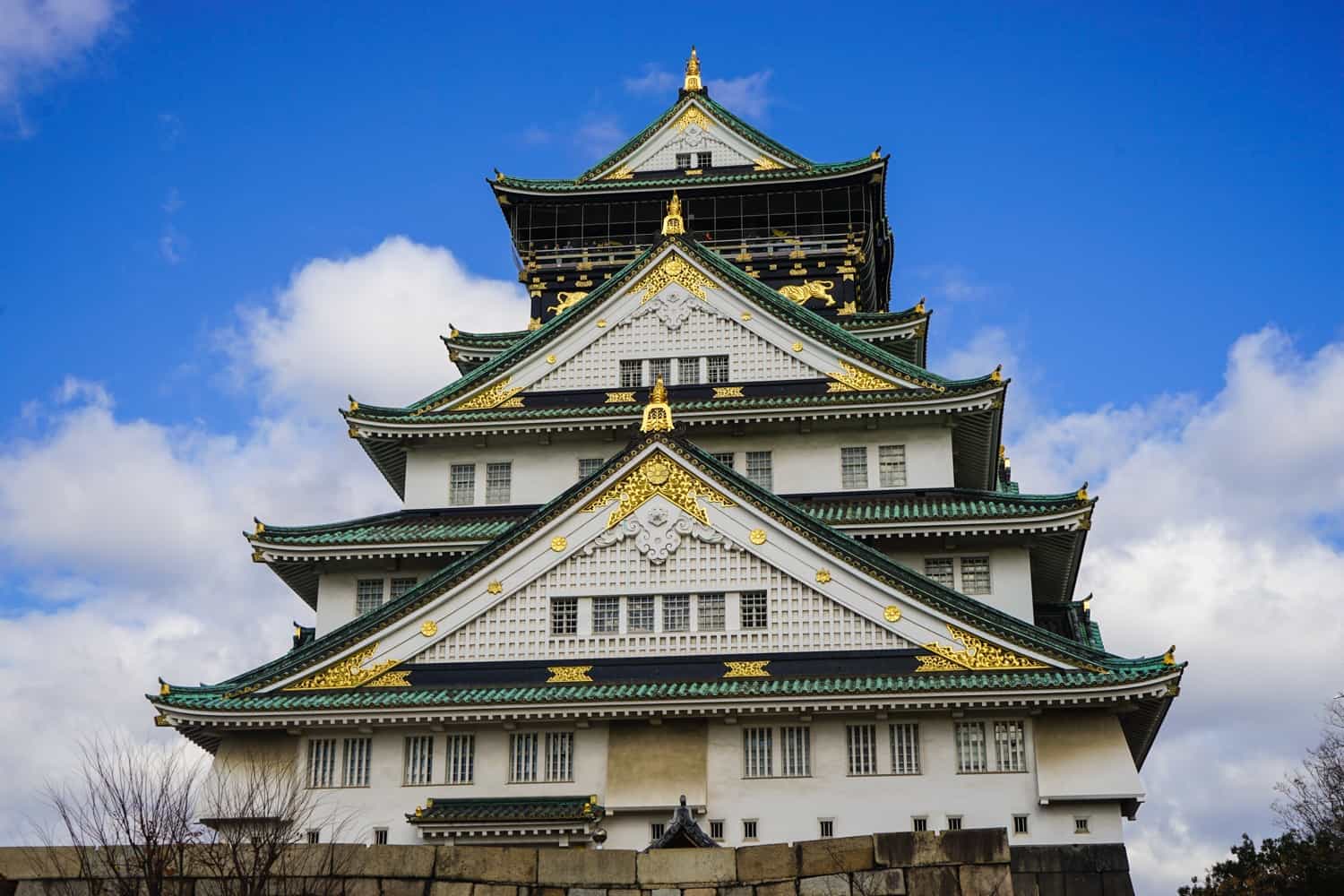
Day 14: Start Eating Everything in Osaka
Wake up bright and early on day 14 and spend a couple of hours wandering through Hiroshima before checking out of your hotel and heading to Osaka. I used this time to stroll through Shukkei-en Garden, visit the Children’s Peace Monument, and take one final wander through Peace Memorial Park.
Onwards! Osaka ended up being my favourite city in Japan, and that’s primarily because it’s where you go to eat . I had one of the best meals of my life in Osaka, and every single thing I ate felt like it was on the verge of life-changing. Dramatic? Always. But man, I love the food in Japan.
After grabbing some lunch, head straight to the city’s most famous attraction: Osaka Castle. If you’re tight on cash, you don’t need to pay to head into the interior, but it does have a pretty great view over the city from the top floor. It’s one of the prettiest castles in Japan, so even sitting outside and taking photos of the shimmering specks of gold feels like a worthwhile activity.
Spend your first evening exploring Dotonbori by night. This vibrant, bustling neighbourhood, and the flashing lights at night are exactly what you’re picturing Japan to be like. Head to Hanamaruken Namba Houzenji for a bowl of pork rib ramen for dinner because it was one of the best meals of my life.
If you’re as much of a foodie as I am, you might want to opt to take this three-hour walking food tour of Osaka while you’re in town. You’ll get to sample 10 of the best local dishes, like takoyaki and yakitori, and two local drinks. The tour covers a whole range of eating establishments, leading you from a street stall to a market, introducing you to a classic Japanese restaurant and izakaya, and finishing off with a secret local hangout.
Where to stay in Osaka: I rounded off my time in Japan with a little bit of a treat, opting for this four-star hotel that offered a ton of freebies. It’s all about the onsen here — it’s open all day and is simply beautiful. After you’ve finished your daily bathe, there’s free ice cream to eat, free comics to read, massage chairs to relax in, and even free ramen to slurp on. Yes, really! It was in a great location for Osaka — just a couple of blocks from the nearest metro station. The decor was calming and traditional; the perfect way to say goodbye to Japan.
Day 15: More Osaka Exploring
If you’re flying out of Tokyo, you’ll likely want to head back to the capital today, but if, like me, you’re flying out of Osaka, you have another day to eat, eat, eat!
Spend your morning in northern Osaka, exploring the area around the Umeda Sky Building. Consisting of two 40-floor skyscrapers connected at the top by the world’s highest escalator, it offers an excellent view of the city and is one of Osaka’s most recognisable landmarks. If you’re into your technology, I recommend spending the rest of your morning marvelling at the enormous Yodobashi Umeda electronics store. You could easily spend an entire day getting lost inside there!
Head to nearby Nakazakicho for the afternoon, which is Osaka’s hipster neighbourhood, and so much fun to explore. There’s lots to keep you busy here, from vintage clothing stores to adorable cafes to craft beer to homemade organic granola, because of course.
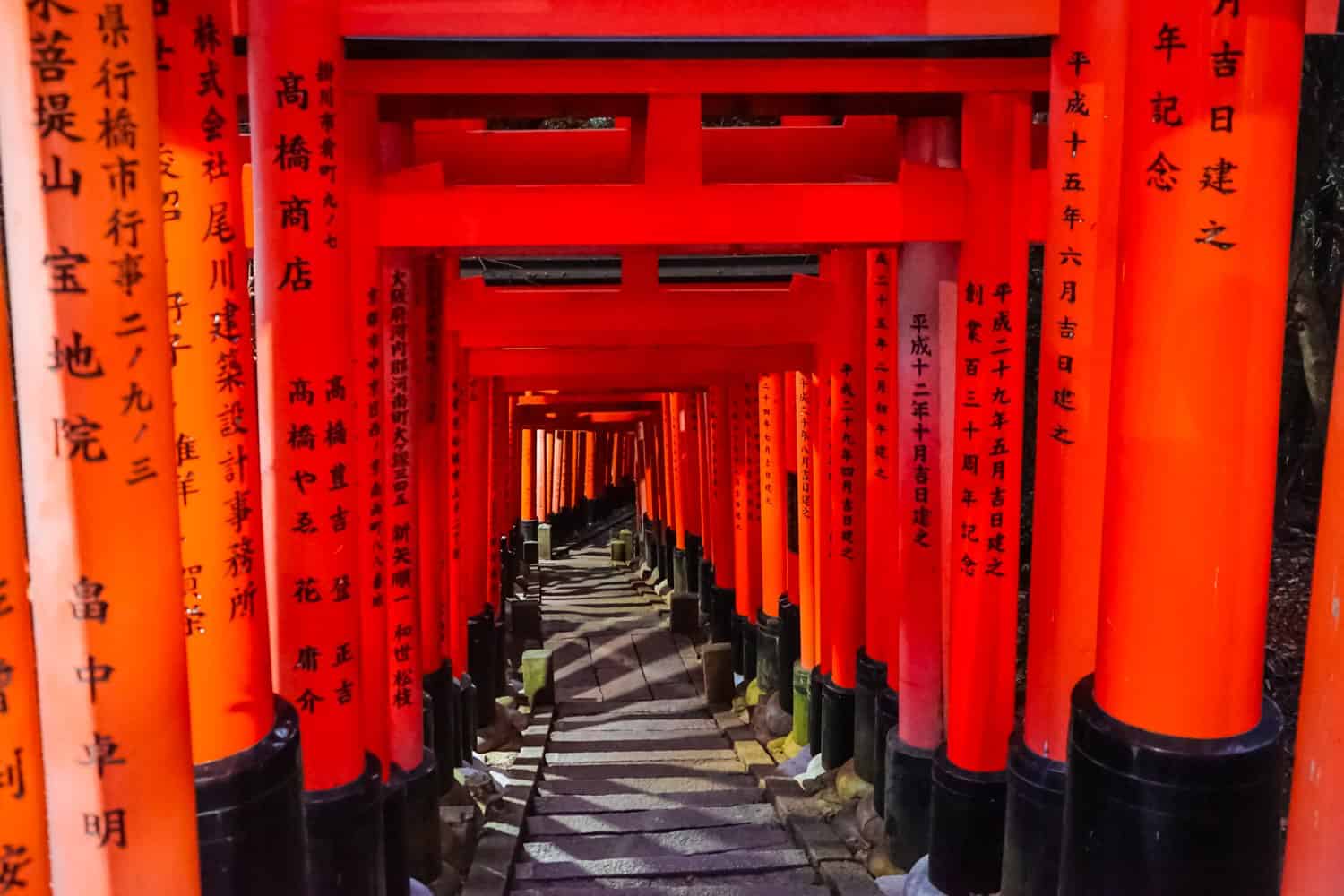
And That’s How to Spend Two Weeks in Japan!
This itinerary is perfect for a first-time visitor to Japan. It won’t feel too rushed, there’ll be a good mix of cities and nature, and you’ll undoubtedly leave with a dream of returning for a second visit.
There isn’t too much I’d suggest in terms of alternations: I’d probably suggest skipping out on the snow monkeys and giving yourself an extra day in Takayama instead. You might want to trade a day in Tokyo for a day trip to Nikko, or potentially take a half-day trip from Osaka to Kobe, but that would really be it.
Now, book those plane tickets and start counting down the days until you touchdown in Tokyo!
If you’ve been to Japan before, what would you have done differently?
Related Articles on Japan 🇯🇵 What’s it Like to Travel in Japan? 💴 The Cost of Travel in Japan: My Budget Breakdown 🍣 15 Weird and Wonderful Things to Eat in Japan 🎌 23 Incredible Things to Do in Osaka, Japan 😎 Hipster Harajuku: The Coolest Neighbourhood in Tokyo 🦔 Should You Go to a Hedgehog Cafe? My Experience in Japan 🐒 Why Seeing the Snow Monkeys in Japan Sucked
Lauren Juliff
Lauren Juliff is a published author and travel expert who founded Never Ending Footsteps in 2011. She has spent over 12 years travelling the world, sharing in-depth advice from more than 100 countries across six continents. Lauren's travel advice has been featured in publications like the BBC, Wall Street Journal, USA Today, and Cosmopolitan, and her work is read by 200,000 readers each month. Her travel memoir can be found in bookstores across the planet.
Related Posts

How to Spend One Week in Mauritius: An Itinerary for First-Time Visitors

The Cost of Travel in South Korea: My 2024 Budget Breakdown

How to Spend Two Weeks in Belize: An Itinerary for First-time Visitors

How to Spend Three Magnificent Days in Tbilisi, Georgia: A 2023 Itinerary

How to Spend Three Perfect Days in Delhi: An In-Depth Itinerary
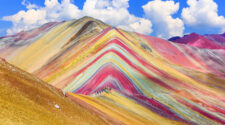
How to Spend Three Magical Days in Cusco, Peru: A 2023 Itinerary
85 comments.
Hi Lauren, Great write up. Just curious what was the final cost of your trip minus the flight costs. Planning on going next year and want a gauge on how much I will need. Don’t worry about costing it down to make it more appealing. :)
Thanks, Jon
I published a detailed budget breakdown last week. Here’s the link: https://www.neverendingfootsteps.com/cost-of-travel-japan-budget/ worked out to just under $100 a day. Would never lie about my expenses to make a place seem more appealing, by the way! I pride myself on my transparency.
Thanks Lauren, Didn’t mean to offend. Just meant to include things like food, activities, travel, etc so I can get a good picture. New to your site, didn’t know you posted a budget.
No worries!
Where did u stay in Yudanka?
It’s linked in this post: https://www.booking.com/hotel/jp/yasuragi.html?aid=1514105&no_rooms=1&group_adults=2&room1=A%2CA
If you ever make it to Okinawa, please visit the Pineapple Farm and try pineapple chocolate!! My family lived there for a couple years when I was younger and whenever coworkers of my siblings are stationed over there (in the military), I always ask them to bring me back pineapple chocolate – so delicious!!
Oooh, would love to go to Okinawa! I met a couple who live there while I was on my Great Barrier Reef tour last year and they really sold it to me :-)
Thanks Lauren. This perfect. I am planning on visiting Japan mid April 2019 and hopefully will see the cherry blossoms in bloom. Your itinerary sounds fantastic so I will definitely use it to plan my trip.
Ah, the cherry blossoms look amazing! You’ll have such a great trip :-)
Love this post! I’m hoping to go to Japan within the next few years :) Did you find it difficult to communicate while there?
Not at all! I was expecting a higher language barrier, but we didn’t struggle to communicate. There were a couple of restaurants and train stations where the locals couldn’t speak any English, but miming helped us a lot.
Japan is one of my top dream destinations! Hoping to head there next year. I am bookmarking this itinerary for future reference. This is so, so helpful – along with your Japan budget breakdown! Thanks for the awesome resources :)
Thank you for reading! :-)
Wonderful thank you for this fantastic post.! We are heading to Japan (first time visit) in 10 days time for 2 weeks ? super excited! I have done heaps of research and read lots of blogs etc and we have pretty much got the same route planned. Just a few wee differences…. we are skipping the snow monkeys but visiting Matsumoto and the Alpine Route instead. Thank you once again for your recommendations and sharing your knowledge with us ?
Sounds like a pretty perfect route to me! You’re going to have an incredible trip and eat SO WELL. :-)
*runs to pinterest pins* Thanks for all the information! Will def use this to plan my stay in Japan xx
Yay! Hope you have an amazing trip :-)
As you experienced, Japan has a terrible stance on the ethical treatment of animals. As I’m also sure you know, Japan is one of only three nations- the others being Iceland & Norway- that still engage in the slaughter of whales (Iceland’s began last week). For that reason, I would never set foot in those countries.
I’m not a fan of travel boycotts, but to each their own! If I didn’t visit countries that slaughtered whales, I’d feel as though I’d have to extend the same rule to countries that slaughter chickens, cows, pigs… and then I’d have nowhere left to visit.
Hey LAUREN! you are such an amazing writer. I loved this post. you represent Japan very well. after reading this blog, I am planning to take a trip to Japan in my coming holidays. thank you for this great piece of information.
Thank you so much! I hope you make it there and have a wonderful trip!
This itinerary sounds amazing! I spent a month in Tokyo back in 2014 working for a language program. It was an amazing month but sadly I didn’t get to explore around Japan as much as I would have liked to. We’re headed back in January but only for a 2 day layover. So will definitely look into your Tokyo suggestions. And have pinned this for later when I return to Japan and get to explore more!
Hi Lauren, I really enjoyed while reading your blog. Yes I totally agree with NISHA, Your are such a amazing writer.
I have been to Japan three times and I have to say this is the definition of a perfect trip around Japan! You hit all the major sites, saw a little bit of everything, and seemed to have a great trip. Now it’s time to start planning trip two, eh?
Thanks so much, Marie! I’d love to return during spring or autumn for my next visit.
I love the level of detail you included in this, Lauren. I have a week in Japan booked for October and I’m struggling to narrow down where to go. I know it isn’t really enough time to see much! Do you have any suggestions? Can I fit in Tokyo, Kyoto, and Osaka? And maybe Hiroshima?
Did you use the street vending machines?
They sell everything and are everywhere
I loved the soiled females panties machine the best :-)
Yeah, but only for drinks.
i can’t wait to head to Japan and replicate your itinerary exactly. Apart from the snow monkeys, as I don’t want to visit in winter anyway. Thanks for the useful post!
No problem! So happy to hear you found it useful :-)
The first time I went, we also visited Miyajima Island from Hiroshima… since then, we’ve (twice) stayed on the island for three nights. Totally worth it, as you might guess! Things do close early, but it’s lovely and the hike up Mt. Misen is great.
Ah, lovely! I’ll have to make sure I opt to spend more time there on a future visit :-)
Awesome tips! Will be headed to Tokyo for a week in a few months and this would really come in handy! I wanna try your Google Maps trick for food. I’ve always just researched a lot before I went but your trick seems like a lot of fun
Yeah! It’s mostly due to laziness on my part, but as long as I choose a place with high ratings, I’m very rarely disappointed :-)
Hi Lauren, We love Japan also but on our first trip (we live close by in Australia), we spent two weeks in Kyoto, venturing to Osaka, Nara and Lake Biwa from there. Next time we will want to go further afield and see much more, so I think your itinerary will serve us well for that trip. My husband isn’t keen to see the snow monkeys, so I was interested to hear that you weren’t that impressed. We will possibly switch out the 3 days in Kyoto for somewhere else, maybe Osaka so we can eat up big!
Hi Lauren, we are planning a two week trip June-July next year, two adults and my 11 yo daughter, who is just as keen as us to see Japan, being an amine fan and loving all things kitsch Japanese. You itinerary sounds perfect for us and will take you advice and skip the monkish but perhaps squeeze in Okinawa?
Does your itinerary include some rural Japan? I think you referred to a bathhouse, but we were thinking something up in the hills, very basic and authentic. Perhaps something like a short pilgrimage? Any ideas.?
Thanks so much for your great writing. I’m going to follow you!LUISA
Great post! planning on going to japan on March and your tips and itinerary will definitely help!!
Did you travel by yourself? did you meet other travelers? I’ll be going on a solo trip and I’m worried it might get lonely… any tips?
Super helpful post, thank you! My husband and I will be visiting Japan for the first time in mid-March for about two weeks. We’d like a mix of city/modern and nature and old Japan and crafts, and good food! Does this itinerary make sense? Day 1: Late afternoon arrival in Tokyo Day 2: Tokyo Day 3: Tokyo Day 4: Morning trains to Takayama Day 5: Takayama Day 6: Morning train to Kyoto Day 7: Kyoto Day 8: Kyoto Day 9: Day trip to Nara Day 10: Kyoto Day 11: Morning train to Hakone, do the loop that afternoon and stay overnight at an ryokan/onsen Day 12: train to Tokyo, stay one last night Day 12: Fly home
That sounds like a perfect itinerary to me! :-)
Hi! I just found your blog and I have to say that these Japan posts are incredible. There’s ample material online on Japan, but in the modern day of clickbait and 140 character statements, I actually sat and read each and every one of your posts from start to finish. Thank you for the time, effort, and for conveying your journey so eloquently. You’re helping me plan the honeymoon of a lifetime : ).
Quick question for you – what time of year did you go? Seems like November or December based on your snow monkey post. We were looking at mid to late November. Thank you!
Wow, that’s such a compliment! Thank you so much, Nikki :-) We went in early December.
Great post! I’m aiming to visit Japan in March and I’m going to follow your itinerary exactly.
Awesome! I hope you have the best time in Japan :-)
Hi and Happy New Year Lauren! I plan to take my nice and nephew who are 18 yrs. old to Japan. Based on their age, what 2 or 3 cities do you think offer the most for them during a week in Japan? They might get bored with too many temples. Are there any physical activities/experiences that you could recommend? For example, in Hawaii we went diving with the fish with an underwater scooter. Thanks for your time and thanks for your insight!
Hi Lauren, Your posts on Japan have been very helpful! :-) Thank you for sharing. We are planning to make a trip out to Japan and was wondering what you thought of the following itinerary.
D1/D2: Traveling to Tokyo from the US (we are staying in Shinjuku) D3-D4: Tokyo (East side one day and West side another day) D5: Visit Studio Ghibli in AM and then take train to Kyoto (we are staying in Gion) D6-D9: Kyoto (planning for one full day for Hiroshima/Miyajima and a half day in Osaka) D10: Leave Kyoto early for Takayama – visit Shirakawago for the illumination event D11: Explore Takayama in the morning and take train in afternoon to Nozawa Onsen D12: Nozawa Onsen (ski day!) D13: Nozawa Onsen (ski day!) D14: Nozawa Onsen (ski day vs. Snow monkey vs. head to Tokyo early vs. something local?) – travel to Tokyo in evening D15: Flight back to US from Tokyo in the evening
I am wondering what your thoughts are on our stopover at Takayama/Shirakawago. I was torn between getting tickets for the the illumination event vs. just visiting Shirakawago the next morning. I thought it would make the next day very rushed looking at the train time table since we would need to catch a train at 2 or 3PM in Takayama.
Also, I was very disheartened to read about your post about the snow monkeys. I wonder if you think it’s truly worth it. Our hotel in nozawa onsen has a bus that leaves at 9AM, reaches the park at 10AM and then returns to the hotel around 4PM. It will basically eat up the whole day. We weren’t technically planning on skiing 3D in a row but since the northeast has yet to have any significant powder snow… we are wondering whether we should stick to the resort and enjoy the real snow while we can.
Most itineraries such as yours sometimes include day trips from Tokyo to Hakone or Nikko. I feel like there is so much to see already in Tokyo that making a day trip out there will just take away from the other experiences. I know everything is a trade off with limited schedules. But I was wondering if you had any thoughts on whether Hakone/Fuji 5 lakes is particularly worth visiting in the winter? (we are going in February).
Finally, when you were in Japan did you go to a tea ceremony? All the guidebooks I have read mentioned it but I am wondering if it’s a tourist trap.
Thank you so much for taking the time to read this!
Hi, Thanks for such a good piece! Just wondered why you chose to do Kyoto-Hiroshima-Osaka in that order? If there was any particular reason? Thanks again :)
I had flights out of Osaka, so needed to finish up there. No reason why you couldn’t switch the destinations around if you wanted to! :-)
Hi Lauren, great post! I have just started on working on my itinerary for May-June. Where did you stay at Hakone?
Hi Kris! I list all of the accommodation I stayed in along with a mini-review of each in my Japan budget guide here: https://www.neverendingfootsteps.com/cost-of-travel-japan-budget/ In Hakone, I stayed in Hakone Tent and loved it — they had a private onsen for guests to use!
I just wanted to commend you on a couple of brilliant blog posts detailing Japan. I read both this and your breakdown of costs, prior to my trip last month, and found them extremely useful. I even stayed in the capsule-style hostel (somewhat akin to a kennel for adults) in Hiroshima – what an incredible location that was!
Thank you so much, Guy! That means a lot. I’m so glad to hear you had a wonderful trip!
Japan is something magical. Never felt so peaceful and safe as in this country. As soon as you leave Japan, you want to come back again! …to feed shikas in Nara! :D Can’t stop exploring this beautiful corner of the World! :) Thank you Lauren!!!
Hi there! Thanks for sharing your itinerary, it might inspire ours too. I was just wondering, did you travel with a backpack or a suitcase? In such a crammed holiday, I would be thinking backpack for practicality, but I know already that I want my suitcase there with me, to fill it to the brim with things to bring back from that land of dreams…
I have the feeling I’ll have more reading to do on your blog to try and find out more on, say, hedgehogs cafés and such ;)
I travelled with my 40 litre Osprey Farpoint backpack :-)
Ah right I see, that does seem more practical :)
Absolutely amazing post, and consider this bookmarked! It was a great explanation of fantastic places in Japan. This blog is helpful for 1st-time visiter to visit in Japan. Thanks for Sharing.
Hi Lauren! I’ve been having trouble finding the official link to the JR Rail pass, do you know which is the valid and proper cost? I’m afraid of paying so much and having it not be valid!
Thank you so much!
http://www.japanrailpass.net/en/ is the official site, but you can’t buy passes from them — you have to use one of the authorised sellers. I used the site I linked to in this post and it wasn’t any more expensive than anywhere else.
Thanks for sharing this! I’ve built out an itinerary and was hoping you could take a look. Is this too heavy on Tokyo vs. Kyoto?
Oct. 11 – 17: Tokyo Oct. 17 – 21: Kyoto (including day trip To Fushimi Inari/Uji/Nara) Oct. 21 – 23: Osaka (including day trip to Kobe) Oct. 23 – 24: Hakone Oct. 24 – 25: Return to Tokyo for 1 night + depart next day
Thanks for the great advice, we are going for blossom season this year and will be certain to use a lot of it!
I had one question if I may. It seems quite difficult/confusing to get to Takayama or Kanazawa from Hakone. Do you mind please letting me know how you went about it please as both places look great and would be a shame to miss out!
Thanks Lauren
I’d go back to Tokyo and then onwards to Kanazawa. You could break up the journey by spending a night in Matsumoto or Nagano if you don’t want such a long train ride. Hyperdia is the best app for figuring out which trains to take.
Great, thanks!
Google maps can now navigate all up to par with Hyperdia, even subway connections down to minutes. Give it a try first, I find some of the Japan based apps not as intuitive.
Thanks for sharing that tip, Howard!
Hi, what month did you travel in? Trying to work out whether it’s best to go in December or April!
I was there in December. The pros were fewer crowds and lower prices, but it was really, really cold. In April, the weather will be nicer but it’ll be crowded as hell and very expensive.
Lauren, My wife and I have a similar trip coming up. We bought the rail pass and are so excited to travel up and down japan. I have a question about baggage? For a two week trip that is going to utilize 95% public transport, and no lack of souvenirs, how do you manage your bags?
Thank you so much for all your great insights!
Thank God the Japanese have respect for public transportation, because, in a city like Tokyo, cars on the streets during rush hours would be Hell on Sundays. We had the luck to experience being on the moring train with suitcases, children going to school, commuters, and workers wondering what wrong with these people? Rush hour in Tokyo is such a great study of people working as a unit.
Hi Lauren! Thank you for your post is very inspiring. I know that it has happend almost one year from the post but I was wondering if you could remember the train combinations to arrive to Yudanaka. Thank you in advance, Sara from Spain
Hi! Can I ask how much this trip cost? It would be nice to know roughly how much I need to save.
Yep! I’ve got a detailed breakdown of every Yen I spent here: https://www.neverendingfootsteps.com/cost-of-travel-japan-budget/
I have plans to travel from Tokyo to Sapporo. Any advice please? Thanks
What would you like advice on specifically?
We’re planning a trip with our boys (7,7 and 8) in October and wilst we are worried about the costs – it’s great to see there’s also budget options without being in dorms:-).
We are thinking of visiting South Korea in the same trip – and have seen only a few posts there from your hand. Does it suck there since you didn’t blog so much from there?
I was wondering if SK is worth the trip at all? It’s cheaper than Japan and kind of similar and “just around the corner” from Japan.
We plan to begin in Tokyo and then take the trip all the way through to lastly take a ferry to Busan (SK). And stay for a month.
Thanks for a fab blog – I hope you get to travel soon:-)
Hello and thank you so very much for your “How to spend two weeks in Japan” ! We are using your itinerary as a basis to tailor our first trip to this amazing country. You mention staying in Shibuya whilst in Tokyo. I’ve checked out the Airbnbs and most seem to be Shinjuku City. Is that close enough to Shibuya? Hard to tell from the map – and obviously, haven’t got a clue if it would be a good “substitute” for Shibuya. Any suggestions, much appreciated. Thanks once again. Ana
Hi Ana! Yep, Shinjuku would be just as great. Shibuya and Shinjuku are about a half an hour walk from each other, so not too far. And Shinjuku is just as wonderful to stay in! If you can’t find anything in Shibuya, then I’d definitely be happy to go with Shinjuku.
Hi. Love your post and it’ll be my guide for my upcoming Japan trip. Can you please confirm the name of the hotel in Kanazawa? Everytime I click the link, a new hotel pops up.
Hi Keshav! Unfortunately, it looks like the hotel I stayed in is temporarily closed! I’d take a look at Kanazawa Guesthouse Stella as an alternative option: https://www.booking.com/hotel/jp/kanazawa-guesthouse-stella.en-gb.html well-rated and good value for money!
Hi! With little time for planning, me and my husband followed your itinerary, and we had a great time, so I just wanted to thank you for your blog. We actually did it backwards, from Osaka to Tokyo, and I’m glad we did it this way, as Tokyo is so different from the rest of Japan. Takayama (cool, mountainous, so many temples!) and Itsukushima (Miyajima Island – deer, tasty food, water floating temple!) were my highlights. Unfortunately I was ill in Kyoto and missed a lot, so I’ll have to go back one day. My husband loved Kanazawa, the sushi was SO good there. Anyway, thanks to you we had an AMAZING holiday, and we feel we did Japan justice in only 2 weeks.
Hi Lauren. Love your post. My wife and I will be traveling to Japan in March. We have a couple of days we are still planning. Would it make sense to take the train down to Fukuoka and Nagasaki from Hiroshima? From there we would be going up to Kanazawa. It would involve some long train rides. Just don’t know if it we are spreading ourselves too thin. (Our loop is Tokyo – 2 days – Kyoto – 5 days- Hiroshima – 1 day – Nagasaki/Fukuoka – 2 days – Kanazawa – 2 days – Hakone – 2 days- Tokyo – 2 days.) Thanks.
Personally, I wouldn’t add Fukuoka or Nagasaki to your itinerary. I think it’s too much distance over the time you have — especially Nagasaki to Kanazawa, which would involve sitting on a train for pretty much an entire day. Somewhere like Osaka would make more sense for that part of your itinerary. Either replacing Nagasaki/Fukuoka with Osaka or Kanazawa with Osaka.
I’d also maybe consider moving a day from Kyoto to somewhere else in your itinerary, too. You don’t really need five nights there to see everything, whereas you could be very jet lagged when you arrive (the jet lag is particularly brutal when travelling from the US or Europe) and appreciate having an extra day at the start in Tokyo.
If it was me, I’d do Tokyo (3 days) – Kyoto (4 days) – Hiroshima (1 day) – Osaka (2 days) – Kanazawa (2 days) – Hakone (2 days) – Tokyo (2 days). Or: Tokyo (3 days) – Kyoto (4 days) – Hiroshima (1 day) – Nagasaki/Fukuoka (2 days) – Osaka (2 days) – Hakone (2 days) – Tokyo (2 days).
Thanks, Lauren. I appreciate your feedback. I’ll let you know what we decide. We leave for Tokyo on Monday!
Best regards, Rob
No problem! Have an amazing trip — I can’t wait to hear all about it!
Leave a reply Cancel reply
Your email address will not be published. Required fields are marked *
Meet Lauren Juliff

- Switzerland
- The Netherlands
- National Parks
- Affording Travel
- Photography
- Responsible Travel
- Worldschool
- Wanderlust Guides
- Travel Planning
- Work with Us
Asia , Japan , Travel
Two weeks in japan – the best japan itinerary for first-timers.
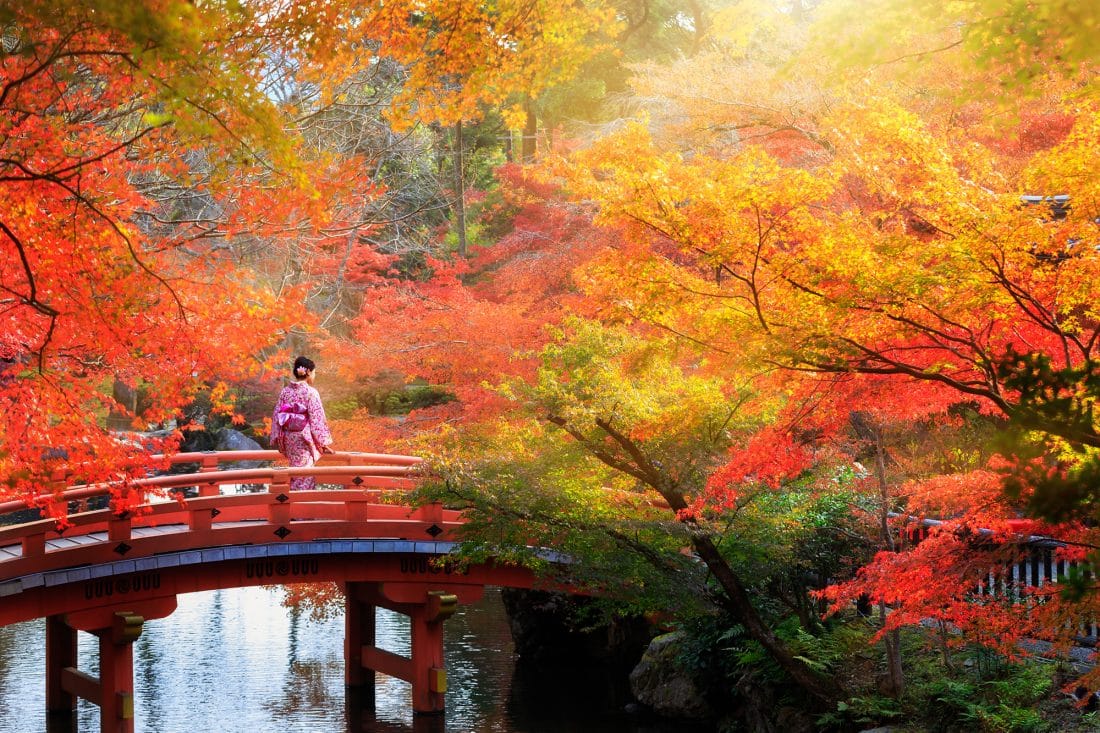
This first-timer’s Japan itinerary is perfect for your first visit to this incredible country. Discover the amazing things to do, food to eat, and places to visit in Japan in this complete guide.
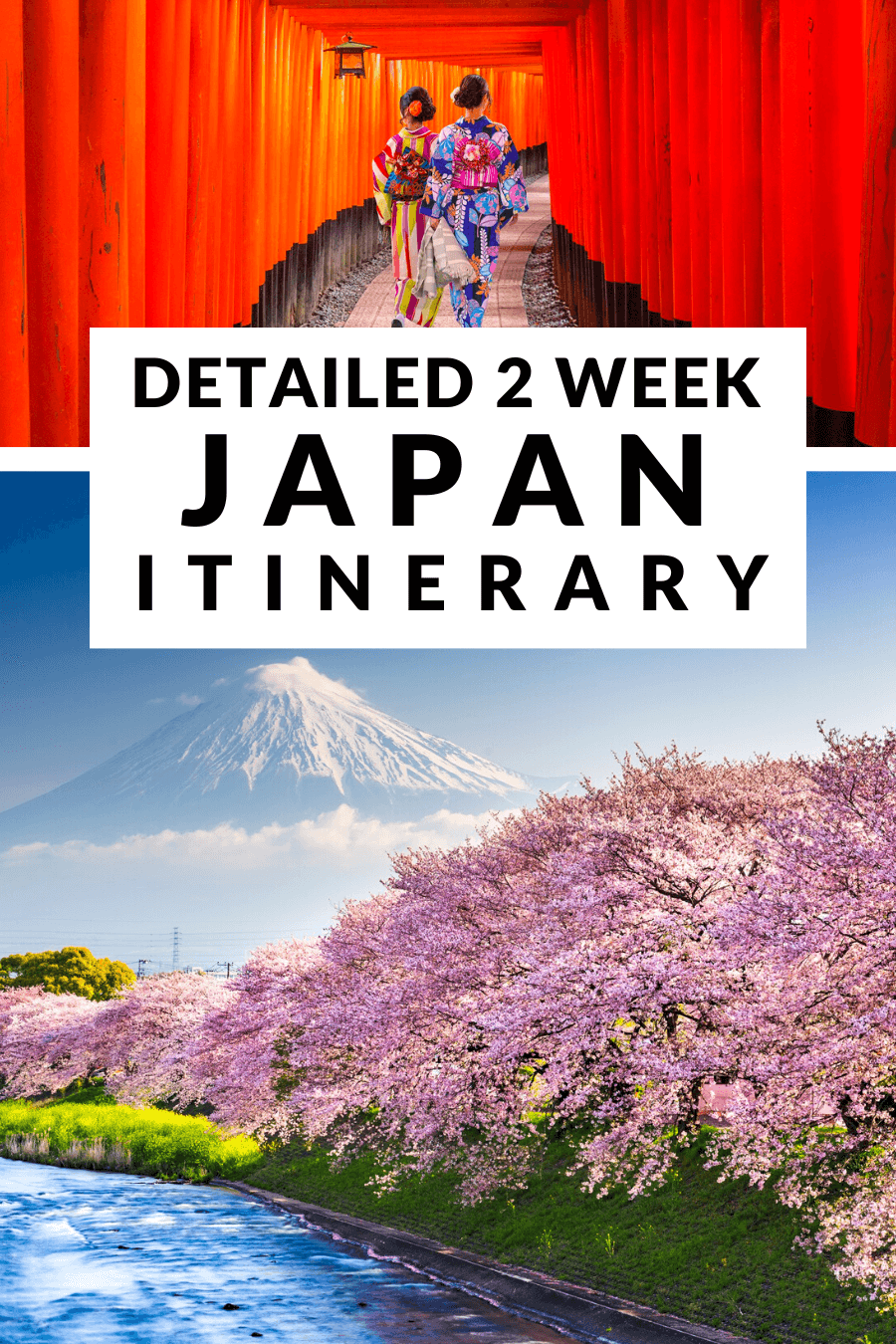
- The Perfect First Timer’s Japan Itinerary: The Best Places to Visit in Japan
This post contains affiliate links.
I’m so excited to share this Japan 2 week itinerary with you! We just booked tickets to go back to Japan again in 2024 and I’m so excited to revisit all of these places and add some new ones too! This will be our second Japan trip, and I can’t wait!
I have two good friends who live in Japan and they’ll only be there for another year, so I knew that my time to go to Japan was now! This was my first stop in Asia and I couldn’t have been more excited! While we’ve spent years in Europe, Asia has always eluded us, so I knew it was time!
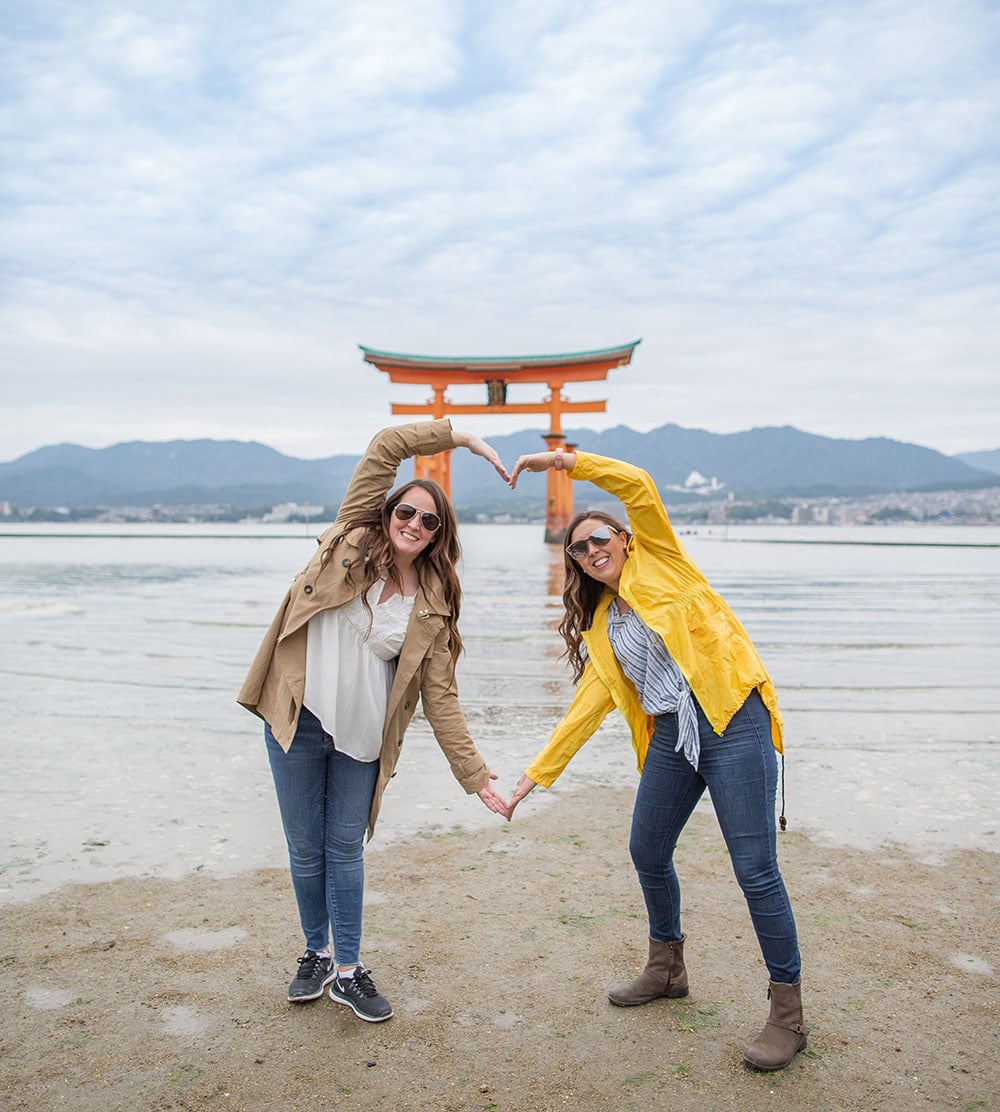
Be sure to check out our Japan Trip Planner to help you get started. It’s a great step-by-step guide to help you plan your trip.
I’ll be totally honest and tell you that I was very anxious before my trip. New continent, new language, new culture, new food. Just a fear of all the unknowns to be honest. But rest assured, once I got to Japan I was feeling great about it all. It really helped to have friends who knew the culture too and I loved these tips for visiting Japan!
Did you know that Japan is one of the safest countries in the world? If you didn’t, don’t feel bad, I didn’t either. I think the number one thing I was totally shocked by was that almost none of the bikes in Japan had locks on them! I saw maybe 3 our entire time there.
The Japanese people are so kind, respectful, and helpful. I was chatting with a British ex-pat in a Japanese garden one morning and he said: “You couldn’t get mugged in this country if you tried!” I’m pretty sure he was right. I never once felt unsafe during our time in Japan.
My friend’s 5-year-old daughter goes to “Yo Chien” or Japanese Primary School and she said that the entire first year of school is dedicated to learning how to be a good person. They serve each other, clean the school, learn manners, and generally learn how to be a respectful human being and be a productive member of society. I think that is definitely more helpful than knowing their ABC’s at 5 years old! There is just so much that we can learn from Japanese culture and its definitely a country worth visiting.
There are so many amazing and unique things to do in Japan . If you’re going for the first time and looking for the perfect Japan trip, I’ve created this Japan itinerary that will explore the basic sites that are easily accessible by train or a bullet train and offer some of the best cultural, culinary, and fun experiences the country has to offer. While there is much more to explore in Japan, this is a really good starting itinerary.
- Planning a Trip to Japan?
If you’re planning a trip to Japan, let me do the work for you. This 2 week Japan Itinerary is a detailed step-by-step guide for how to visit this amazing country.

Here's a Short Cut
Getting to Japan
What to pack when you visit japan, japan home rentals, money in japan, what to know before you go to japan, getting around japan how to use your japan rail pass, japan itinerary map, day trip to mount fuji, what to eat in japan, japan itinerary faq, more resources for japan.
Getting to Japan was fairly easy. Flying to Asia from the US can be pricey, but if you know how to get cheap flights, there are always good deals to be found. I spent quite a lot of time perfecting my cheap flight finding skills, so be sure to learn about it here . I spent $600 on tickets from San Francisco to Tokyo.
What to pack for your trip to Japan depends on what time of year you’re going and where you’ll be traveling to. I went the first two weeks of October and it was HOT! It rained on and off several of the days that we were there, but was still very warm and very humid. However, if you go to Northern Japan (great to try hot springs), the weather will be cooler. My friend lives in Misawa and they get huge snowfalls each winter. There is incredible, and affordable, skiing in Northern Japan as well.
If you’re going anywhere between April and October though, this is what I recommend taking to Japan
Here’s what I packed for our own trip to Japan in October:
- 2 sundresses
- 1 pair of jeans
- 1 pair of leggings (for the plane mostly)
- 1 jean jacket (that I hardly used)
- 1 rain jacket (I brought this one and it is great because it’s light but totally waterproof)
- 1 pair of sandals (a pair that can get wet in the rain… these are my favorite travel sandals ever )
- 1 pair of boots (I wore these only one time and regretted it)
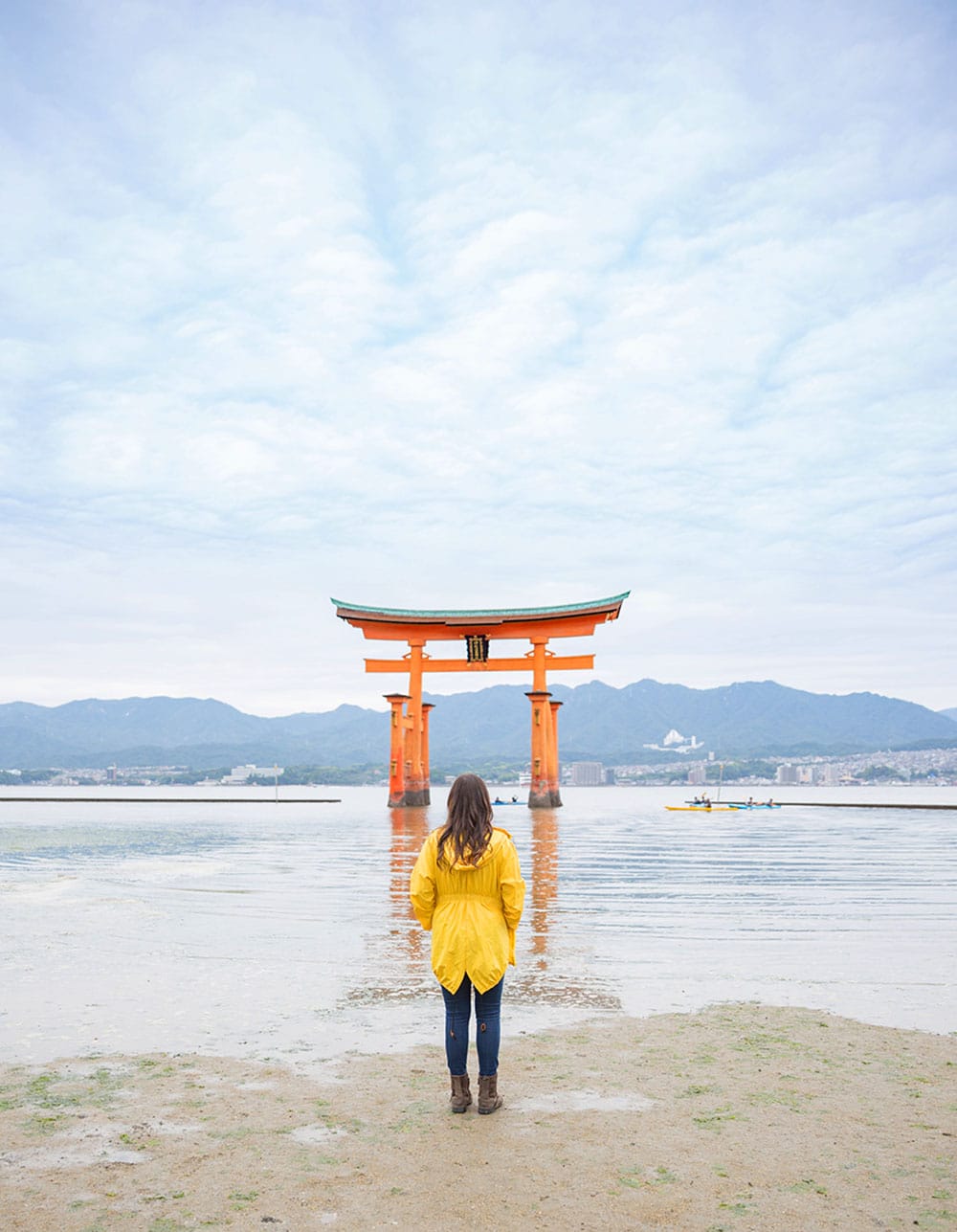
I think if you are sticking to Tokyo and south of Tokyo, this list would be appropriate from April to October. I honestly wish I would have packed more sundresses. I felt like almost everything we did could be done in a dress and it was much cooler!
Where to Stay on your Japan Trip
We were lucky and got to stay with friends at a Military Hotel for about $50/night, but we also stayed in VRBOs around the country. They were affordable, clean, and in good locations. As always, be sure to read reviews and the fine print before booking a VRBO . We love VRBO and use it around the world. I’ve also compiled this list of great and affordable VRBOs in Japan :
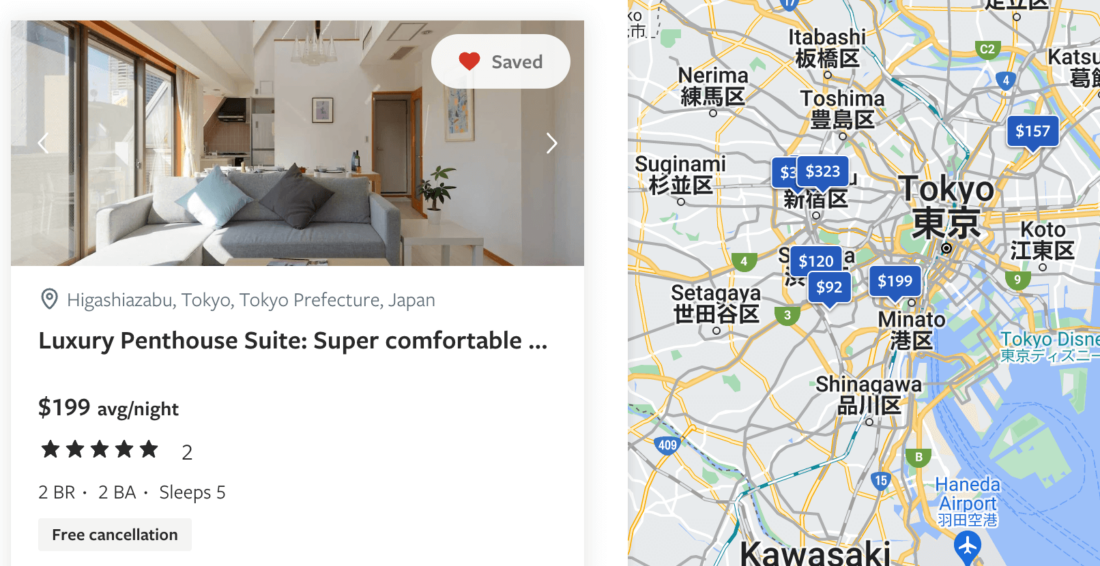
There are also some great hotels in Japan if VRBO is not your thing!
The currency in Japan is the Yen. Converting Japanese Yen to US Dollars is really simple. 100 Yen is Equal to about $0.70 USD 1000 Yen is Equal to about $7 USD Bills from the ATM or from an Airport Money Exchange come in 10000 , 5000, and 1000 increments. The coins come in 500, 100, 50, 10, 5, and 1 increments.
Most places in Japan accept cards. Just beware of any international transaction fees. We use the Chase Sapphire Card to earn double points on travel and to avoid fees while traveling. There were definitely some places that did not accept cards, so be sure to have cash on hand.
Japan is a completely different culture than what visitors may be used to. Anywhere you go in the world, it’s a good idea to learn about cultures and the best practices of your destination. You don’t want to accidentally offend anyone or make an embarrassing mistake. Be sure to read my top 20 tips for visiting Japan.
This is probably the most important information I can tell you about visiting Japan. Getting from city to city in Japan is NOT cheap! A train ticket from Tokyo to Hiroshima can cost around $180. That’s a little steep for my taste, but I knew I wanted to see more than just Tokyo.
The good news is that Japan offers an affordable “ Japan Rail Pass ” that makes traveling around the country extremely affordable for tourists. Read more about how to buy and use your JR Pass here: How to Use Your Japan Rail Pass.
Best places to visit in Japan
For your first Japan trip, it’s best to see a variety of places, but not move too quickly. For a somewhat small country, Japan packs a lot into a small geographical area. For the first time you visit Japan, I recommend seeing all the basic sites like Tokyo , Miyajima , Osaka, Hiroshima , and Kyoto. While there are many more places to visit in Japan that are just as incredible, these areas will be easily accessible using the Japan Rail Pass and are accustomed to tourists.
You can also check out some of these Japan tour packages to see what else you might be interested in. It’s a great way to see the country if you’re not up to planning your own Japan itinerary.
You can use this interactive map to navigate the best places to visit in Japan on your first visit.
No trip to Japan would be complete without visiting the Japan’s capital city, Tokyo. As polite, respectful, and mild-mannered as the Japanese are, it can also be a fun and quirky culture. Tokyo is definitely evidence of this. This huge city is full of light, color, and craziness all around mixed in with serious businessmen and women going to and fro. If you want to learn more about Tokyo, read my guide to visiting Tokyo here: Complete Guide to Tokyo
Mount Fuji is a great place to take a day trips to from Tokyo. It’s a beautiful site and you’ll want to try to plan this on a clear day if you can, however it takes a few hours to go here from Tokyo. Be sure to read this for a complete itinerary for a day trip to Mount Fuji.
This island’s name literally means “island of shrines,” and is Japan’s third most popular site. On Miyajima Island, you will be greeted by friendly deer and beautiful scenery. Read more about this UNESCO World Heritage site in my article here: What to do on Miyajima Island
Famous for being the tragic first target of the nuclear bomb during WWII, Hiroshima is a city full of history and new beginnings that is worth seeing when you visit Japan. It is heartbreaking and heartwarming at the same time. Visiting Hiroshima was hard, but I think it’s so necessary. Read about my time in Hiroshima here: Complete Guide to Hiroshima Japan
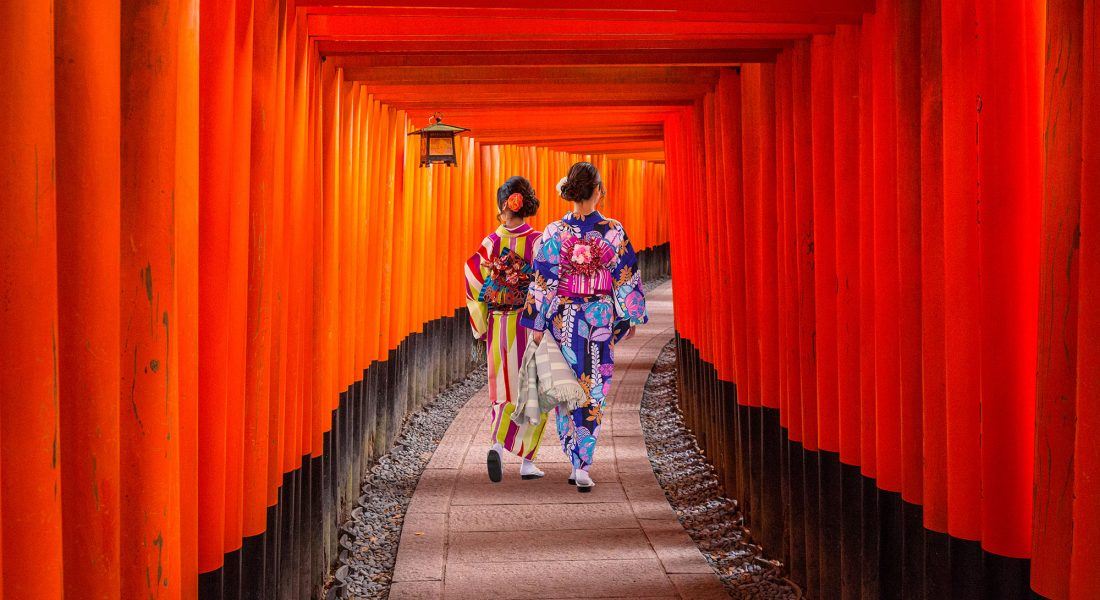
Kyoto, known as the old capital of Japan is beautiful and unique for a reason. It is one of the only places in Japan that was saved from bombing during WWII and therefore has much preserved older architecture that is not seen in other areas of the country like Hiroshima, Nagasaki, and Tokyo. Kyoto is also home to some of the last remaining Geisha in Japan. Many visitors like to come to Kyoto and rent Kimonos and walk the city. The prefecture of Kyoto is large and there is much to do. Plan at least a few days here. Learn more about what to do in Kyoto with kids here and what to do in Kyoto as a solo traveler here.
There is much to do and see in the city of Nara, including the Himuro Shrine, and Isuien Garde, but it is famous for Nara Park where wild deer roam free and are unafraid of humans. Nara is a really easy day trip from Kyoto or Osaka and a favorite with kids! You can read more about visiting Nara here .
Osaka is a great place to base yourself in Japan with Kids if you plan on visiting both Nara and Kyoto. It’s central to both and an easy train ride away. Osaka is also a great place for kids with Universal Studios, Legoland, Osaka Aquarium, Omigachi Park, Tennoji Zoo, and plenty of animal cafes around the city! You could definitely spend several days in Osaka and still not see it all. Learn more about Osaka for kids here.
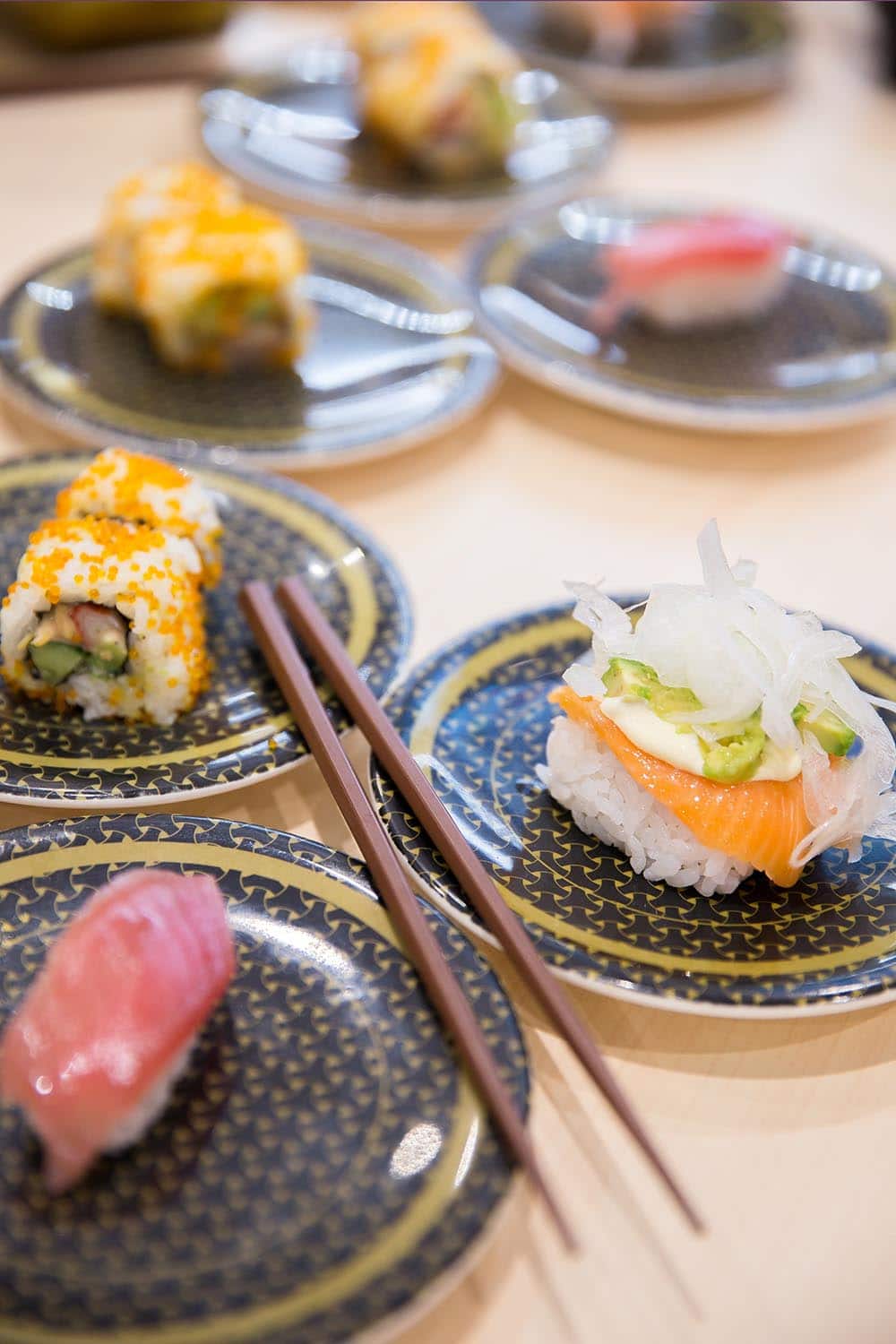
Blending many influences from the east and west along with ancient traditions, Japanese cuisine is some of the tastiest in the world. After visiting Japan for several weeks and eating my way through the country, I compiled this list of 25 foods you must try in Japan Don’t skip foods that might seem different or strange to you, especially their street food, you may just find something that you love. Be brave and have fun!
I absolutely loved my first time in Japan and grew to have a deep respect for the country and its people. I can’t wait to get back and bring the whole family next time. With so many things to do and places to visit in Japan, I think a trip back is definitely necessary, but I think this is a great first timer’s Japan itinerary to get you started.
To start, you near to specify your date of arrival, flights, and any other information required on your itinerary. Once you have that, you can then add details such as the duration of stay in each city, transportation options, and the attractions and activities planned. Make sure to include important contact information (such as your hotel address or phone number) so that it is easy to find if needed. Additionally, it’s a good idea to list any applicable fees and schedules, as well as the items you plan to bring with you. Finally, make sure to double-check all details for accuracy before submitting your itinerary so that your trip is uninterrupted.
Just like traveling to other countries, you need to make sure of your Visa requirements, have a travel insurance, and check the local customs. It is also important to research the currency exchange rates to budget properly as well as understand Japan’s language and culture. There are certain laws, such as no smoking indoors or in public spaces, which you should be aware of before travelling. Finally, it’s always best to have an itinerary ready for your trip so that you can make sure everything runs smoothly.
If you’re traveling for the first time, 7-10 days will provide you with enough time to get a feel for the country. You can take in some of the must-see attractions, visit popular cities, and explore other regions too. Of course, if you want to fully immerse yourself into Japan’s culture then it might be worth planning a longer trip with 14 days or more. That way you’ll have enough time to take in more sights and have a relaxed, enjoyable experience.
Currently, there’s no need to present a vaccination certificate upon entering Japan. However, it is important to take into account all the safety measures and regulations in place for visitors. You should also be aware of Japan’s laws regarding certain activities such as underage drinking and smoking before you arrive. Additionally, you should make sure to double-check your travel plans (including any visa requirements) before departing for your trip.
25 Foods You Must Try in Japan Guide to Miyajima Japan Guide to Hiroshima Japan Guide to Tokyo Japan Guide to Nagoya Japan Guide to Osaka Japan

Wanderlust Crew
4 thoughts on “ two weeks in japan – the best japan itinerary for first-timers ”.
This is a great overview! Thanks heaps. Japan is on my travel list but I need to convince my hubby (mainly because of the food is his reason I think). I love love love the first year of primary school! We have lots of learn from Japan (and Finland I think) for schooling. My son is going into grade 1 so I don’t think we’ll see any changes in his schooling life x
Oh man, read this for the food in Japan. It might change his mind. I was a little worried about the food as well but ended up loving it so much! https://wanderlustcrew.com/japan-food/ My friend’s kids go to a Japanese school and it’s so cool! All of kindergarten they just learn manners and how to serve each other. It’s such an amazing approach to education!
Pingback: Is Osaka Worth Visiting in Japan? What You'll Miss if You Don't Go | Sand In My Suitcase
Pingback: 10 awesome car-free vacations for families - Travel Car Seat Mom
Leave a Reply Cancel reply
Your email address will not be published. Required fields are marked *
Notify me of follow-up comments by email.
Notify me of new posts by email.
This site uses Akismet to reduce spam. Learn how your comment data is processed .

Japan 2-Week Itinerary: How To Spend 14 Days In Japan
Posted on Last updated: December 25, 2023
Want to spend two weeks in Japan, but not sure where to go? This Japan 2-week itinerary is just what you need!
Japan is an island nation located in the Pacific Ocean of Asia. It’s characterised by colourful cities, imperial palaces, ancient temples, and peaceful landscapes.
There are so many fascinating aspects of Japanese culture. For this reason, this is a country you’ll want to explore as much as possible when you visit.
Although two weeks in Japan isn’t nearly enough time to discover the whole country, it’s a great start. To help you manage your time, I’ve put together this 14-day Japan itinerary.
I included a great combination of famous Japan bucket list spots, but also some hidden gems, as well as some helpful logistics advice and travel essentials.
As someone who grew up watching Japanese cartoons and practicing Judo, one of the most popular sports in Japan, I was absolutely stoked to finally visit.
I had an incredible two weeks in Japan, and I hope you find this itinerary useful in planning your own time there! So here it is, the best way to see the glory of Japan in 2 weeks!
- 1 How to travel around Japan
- 2.1 Day 1: Arrive in Tokyo
- 2.2 Day 2: Day trip to Kamakura
- 2.3 Day 3: Exploring Tokyo
- 2.4 Day 4: Travel to Kyoto
- 2.5 Day 5: Fushimi Inari Taisha Temple in Kyoto
- 2.6 Day 6: More Kyoto temple exploring
- 2.7 Day 7: Travel to Hiroshima
- 2.8 Day 8: Ferry to Miyajima Island
- 2.9 Day 9: Travel to Osaka
- 2.10 Day 10: Day trip to Nara
- 2.11 Day 11: Explore Osaka
- 2.12 Day 12: Travel back to Tokyo
- 2.13 Day 13: Tokyo
- 2.14 Day 14: Tokyo & end of trip
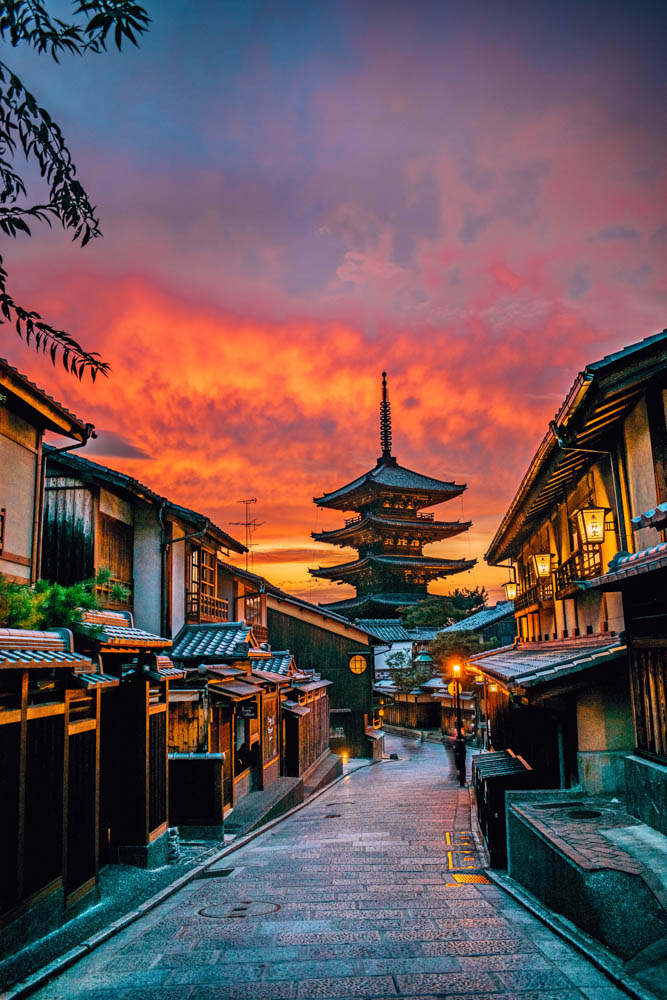
The pagoda of Hokanji temple at sunset
How to travel around Japan
The easiest way to get around Japan is by train and public transport.
Japanese trains and public transport are well known for their efficiency and punctuality, and exploring Japan with them not only will be the easiest and most cost effective way, but it will also provide you with a genuine Japanese experience.
If you’re going to travel a lot around Japan (as you will if you follow this Japan 2-week itinerary ) you’ll want to purchase a Japan Rail Pass .
This is basically the equivalent of the European Interrail Pass and allows you hop on and off as many trains as you want in Japan, within your chosen time period (7, 14 or 21 days).
With a Japan Rail Pass you don’t have to prebook trains beforehand, there are carriages for with non reserved seats.
However if you’re travelling in a group and want to be sure to sit together you should reserve seats. Reserving seats is free, and you can do it at any Japan Rail office in any train station.
Click here to purchase your Japan Rail Pass!
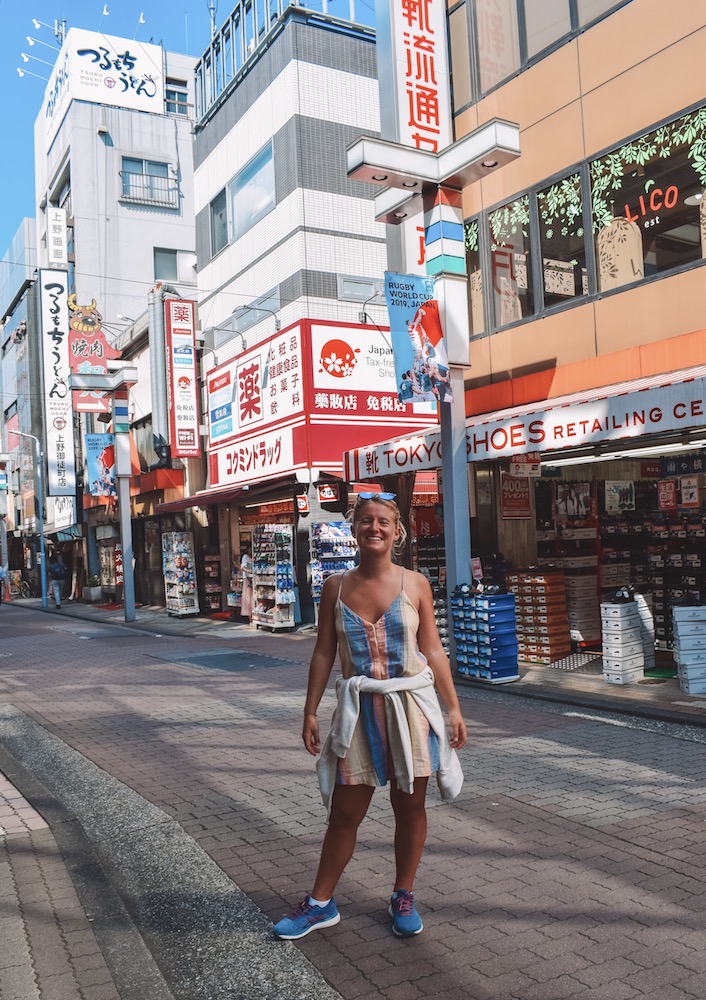
Exploring Ameyoko in Tokyo
The Japan Rail Pass will cover your long distance journeys between cities. Within cities, you will want to use public transport. Public transport is super efficient and you can easily plan your journeys with Google Maps.
Google Maps in Japan is perfectly integrated, and will display the exact train and / or bus departure times and total journey times.
I was amazed to find that it would even tell you what station entrance to go in from to be closer to your platform, the platform of your train, what carriage to choose to then be closest to your exit, and the station exit that would then be closest to your final destination.
It was a map heaven for a geographer like me! The Japan Rail Pass won’t cover public transport within cities, but you can easily either pay for the individual fares or get a daily ticket at any train station.
| READ MORE: IS THE JAPAN RAIL PASS WORTH IT? |

Reflections at Osaka Castle
How to spend 2 weeks in Japan
Day 1: arrive in tokyo.
Tokyo is the perfect place to start your two weeks in Japan. It’s the capital of the country and full of energy.
It’s full of traditional temples, shrines, renowned museums, galleries and peaceful zen gardens. It has the perfect mix of old and new.
After arriving, you’ll probably want to take it a little easy after your long flight . I checked into the Sunshine City Prince Hotel in Toshima City .
This area is a bit out of the tourist crowds, but very well connected to all the attractions. It’s a great place to really soak in authentic Japanese culture, but you won’t feel overwhelmed by the rush of the big city.
Click here to book your accommodation at the Sunshine City Prince Hotel

The view from my window at the Sunshine City Prince Hotel in Toshima City
After you’ve recharged a bit, head to Shinjuku to explore the nightlife. It’s only 15 minutes away from Toshima City, using public transportation.
Golden Gai is a pretty awesome area to check out in Shinjuku. It’s full of narrow alleys with lots of small bars. It’s a quirky and interesting place to add to your Japan itinerary.
You can also take a Shinjuku night walking tour , which will really help familiarize you with the area.
Click here to go on a Shinjuku night walking tour in Japan
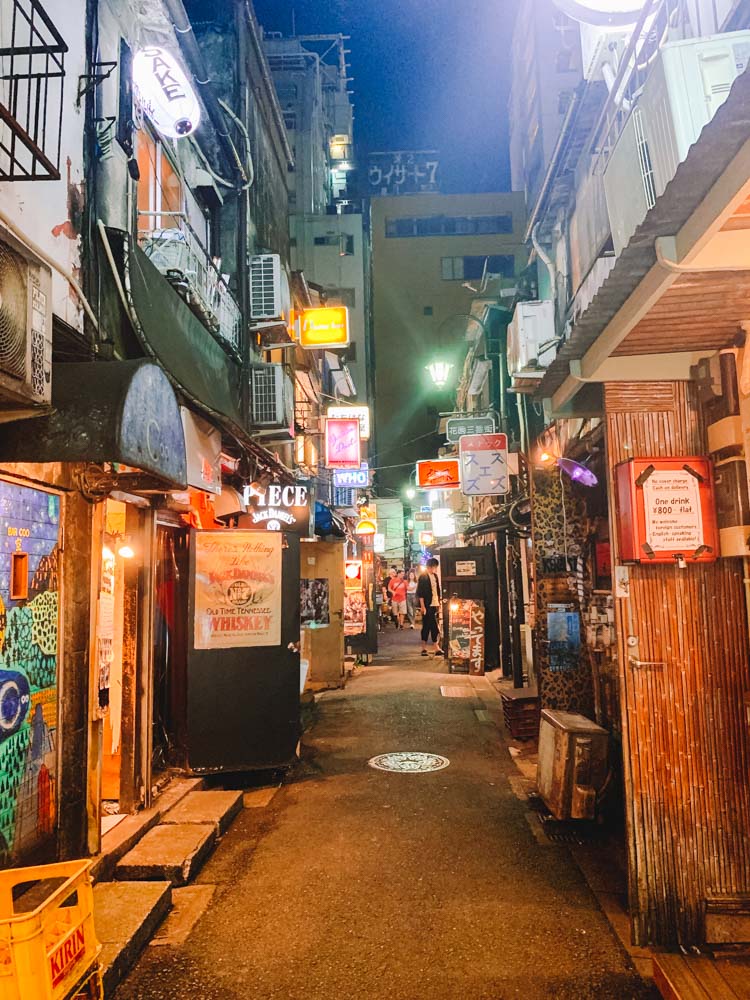
The streets and bars of Golden Gai in Shinjuku at night
Day 2: Day trip to Kamakura
On the second day of your Japan travel itinerary, take a day trip to Kamakura . This coastal city is famous for its temples and shrines. And it’s also conveniently situated only one hour from Tokyo.
Take the train from Tokyo to Kamakura station and make your first stop at the Engakuji Temple. This is one of the most important Zen Buddhist temples in Japan.
It’s an impressive complex with multiple shrines and a very peaceful atmosphere.

Exploring Engakuji temple close to Kamakura
After you’ve finished exploring, hop back on the Japan Rail and head to Komachi Street.
This area is loaded with lots of cool shops and street food options. Take some time to wander around, do a bit of shopping, and indulge in the local flavours of Kamakura.
Komachi street leads to Tsurugaoka Hachiman-gu temple. The building is very integrated with the landscape. If you’re lucky, you might be able to witness an actual ritual taking place while you’re there.
| READ MORE: THE ULTIMATE DAY TRIP TO KAMAKURA FROM TOKYO |
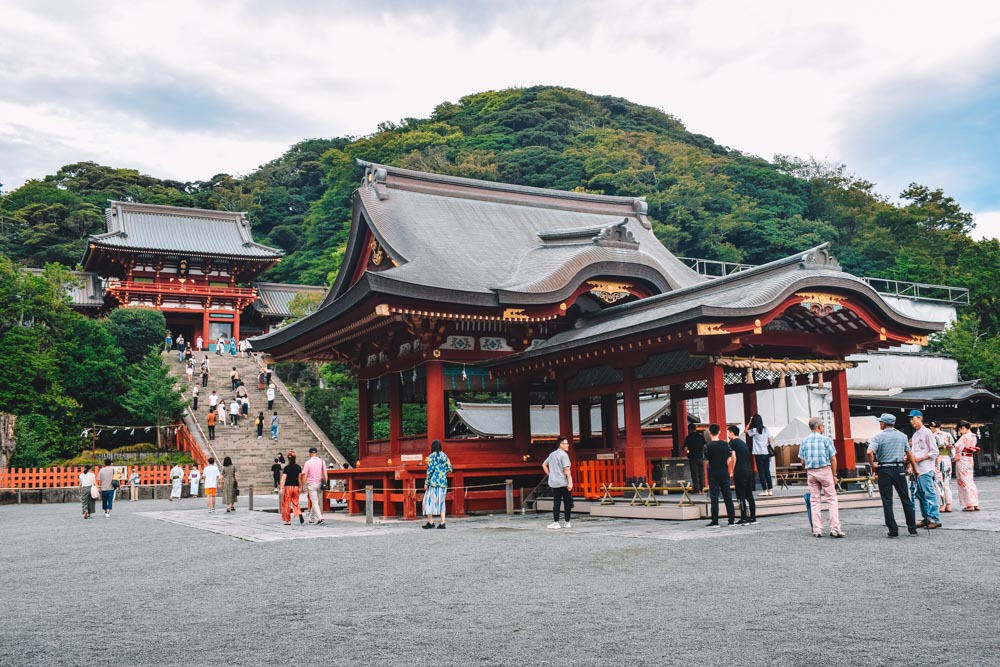
Arriving at Tsurugaoka Hachiman-gu Temple in Kamakura
Next, you should visit Kotoku-in (the big Buddha of Kamakura). You can get there easily from the Kamakura train station by bus, which should only take 10-15 minutes.
This imposing bronze statue is of Amida Buddha – one of the most famous icons of Japan. This Buddha is beautiful and you really do feel a sense of tranquillity around it.
If all this hopping on trains and buses sounds stressful, worry not, as you can also visit Kamakura on an organised day tour from Tokyo . That way you won’t have to worry about planning any logistics, and will have a local guide with you to tell you about the history of the amazing sights you’ll visit.
Click here to book your day trip to Kamakura from Tokyo!
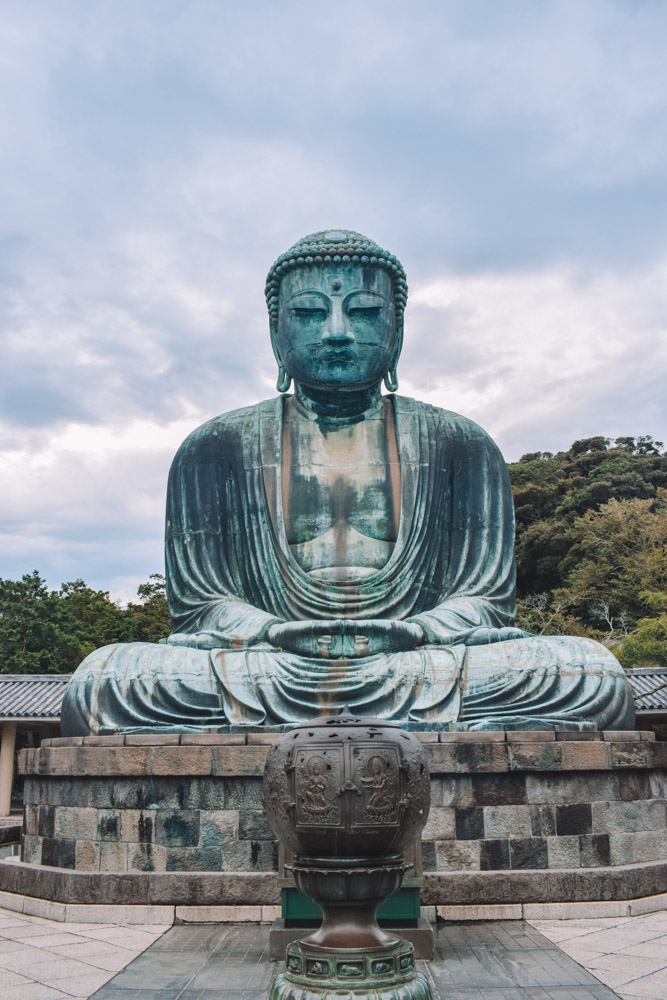
The famous big buddha of Kamakura in Japan
Day 3: Exploring Tokyo
During your first full day in Tokyo , check out some of Tokyo’s unique neighbourhoods. You can start the day by spending some more time in Shinjuku, this time by day.
The Metropolitan Government building is a must-see. There’s an observation room at the top that’s open to the public. You’ll have a complete view of the Tokyo skyline for free!
Next up, visit the Shibuya neighbourhood. This is one of Tokyo’s fashion centres. It’s a colourful district filled with lots of unique stores.
The Harajuku neighbourhood of Shibuya is famous for its ever-changing fashion scene and colourful street art. Visit Takeshita Street and check out some vintage clothing stores and cosplay shops.
Or, if you prefer shopping at high-end boutiques, Omotesando Avenue is the place for you. If you’re looking to pick up a few new clothing items during your Japan trip, this is the area to shop in.
| READ MORE: HOW TO SPEND 5 DAYS IN TOKYO |
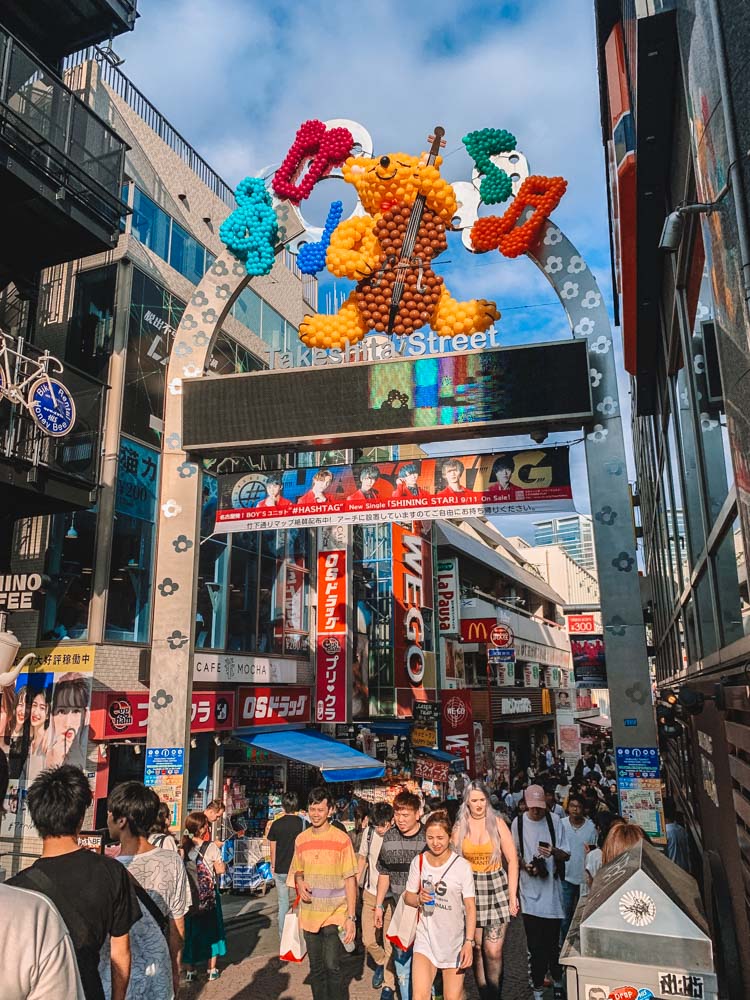
Takeshita street in Harajuku
The Shibuya neighbourhood is also famous for the iconic Shibuya crossing; which some people call the busiest road intersection in the world.
For the best view of Shibuya crossing go either to the second floor of the Starbucks just across it, or to the top floor of any of the buildings that surround it.
Shibuya is also home to the statue of Hachiko, the famous dog whose life inspired the movie “ Hachi: A Dog’s Tale” . You will find it just outside the Shibuya station.
Basically there are lots of amazing corners and neighbourhoods in Tokyo. It would take weeks to properly discover them all, but since you only have two weeks for the whole of Japan, you need to wrap up your Tokyo sightseeing quickly.
One great way to do so is to join a Tokyo sightseeing tour. That way you’ll have local guides sharing interesting insights with you, as well as handling the complicated transport situation. I listed below some of the most popular tours online.
Tokyo: Ueno Private Walking Tour with Shrine Visit – Discover the famous neighbourhood of Ueno on a private walking tour, including Toshogu Shrine, Ameyoko and Ueno Park.
Tokyo: Shinjuku Drinks and Neon Nights Nightlife Tour – This evening tour is the perfect way to discover Shinkuju like a local, and taste some delicious Japanese treats along the way!
Shinjuku: Private Guided Tour of Shinjuku’s Top Sights – If you prefer to discover Shinjuku by day, this private tour will take you to Golden Gai, the Samurai Museum and many other key sights in this neighbourhood!
Shibuya & Harajuku: Hidden Gems & Highlights Private Tour – Accompanied by a local guide, this private tour will take you to all the must-see spots of Shibuya & Harajuku, as well as including some drinks and food!

Shibuya crossing seen from the top floor of Starbucks in Tokyo
Day 4: Travel to Kyoto
After a few days in Tokyo, it’s a good idea to head out and discover more of the country. If you’re only spending two weeks in Japan, there’s a lot more you’ll want to see.
Take the morning train to Kyoto. It’s about a 2-hour and 40-minute journey from Tokyo using the Japan Rail (JR) so try and get an early start.
When you arrive, make your way to the Kiyomizu-Dera temple. The temple was founded in 778 and is famous for its large wooden terrace.
This outdoor platform juts out over the hillside and offers picturesque views of Kyoto. If you want to properly understand the history and culture of this temple, you can join a Kiyomizu-Dera temple guided tour.
Click here to book your Kiyomizu-Dera temple guided tour!
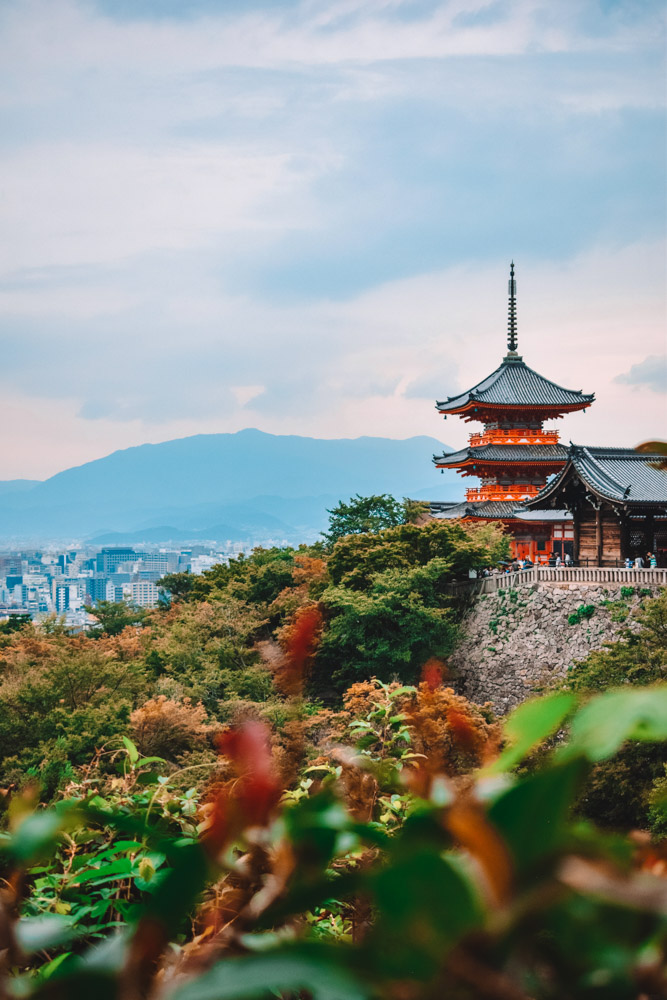
The view from Kiyomizudera temple over its main pagoda with Kyoto in the background
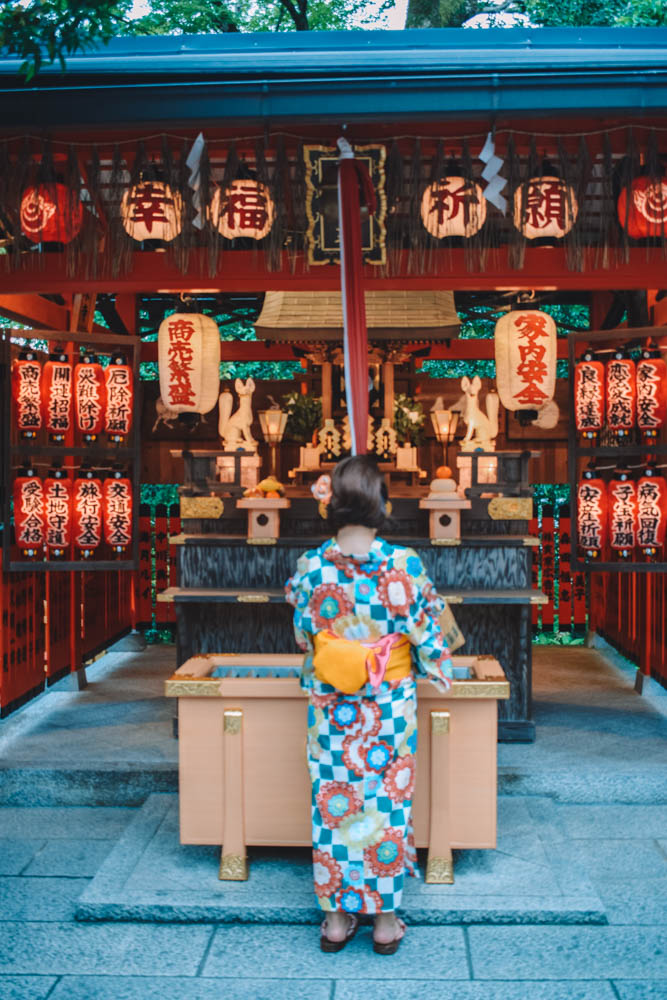
Paying homage at Kiyomizudera temple in Kyoto
When you’ve finished at the temple, take some time to explore the surrounding area. The nearby Gion neighbourhood lies at the heart of Kyoto and is known as the geisha district.
It’s packed with bars, restaurants, and traditional teahouses, You can book a walking tour and explore the culture of this historic city.
For a stunning sunset, make your way to the Hokanji Temple pagoda. This 5-story Buddhist pagoda temple offers panoramic views from the top. It’s the perfect place to watch the sun slowly fade away into the night.
Click here to book a Gion neighbourhood walking tour!

Wandering the streets of Kyoto under the distinctive Hokanji temple pagoda
After sunset, head over to Pontocho alley for dinner. This is a pedestrian street full of cosy restaurants.
It’s considered the most beautiful street in the city. Whether you’re looking for traditional, or western-style food and drink options, you’ll find it all here.
In Kyoto I stayed at Hotel Elcient Kyoto .
While it’s not particularly close to any of the main attractions, it’s very conveniently located just across the road from Kyoto main station, which makes it well connected to everything you want to see in Kyoto.
Click here to book your stay at Hotel Elcient Kyoto!

Enjoying ramen dishes in Kyoto
Day 5: Fushimi Inari Taisha Temple in Kyoto
Start day 5 of your Japan trip itinerary with an early morning hike.
There’s really no better way to appreciate the natural beauty of Japan than immersing yourself in nature. Plus, getting an early start means there will be fewer crowds.
Fushimi Inari Taisha temple is an important Shinto shrine. There’s a path with over 5000 colourful orange torii gates that wind through the hills behind the shrine.
Hiking this area is one of the most rewarding activities you’ll complete during your 2 weeks in Japan. The journey up to the summit of the mountain and back takes about 2-3 hours.
The beginning of the torii gate path is super crowded. It gets less busy and more scenic as you travel up.
Along the way, there are a few restaurants and places to buy water and snacks. At the top, you’ll be greeted with an incredible, sweeping view of Kyoto.
If you want to discover this iconic Japan bucket list sight with a knowledgeable local guide, you can join a small group cultural walking tour .
Click here to book your Kyoto small group tour to Fushimi Inari Taisha and other key sights!
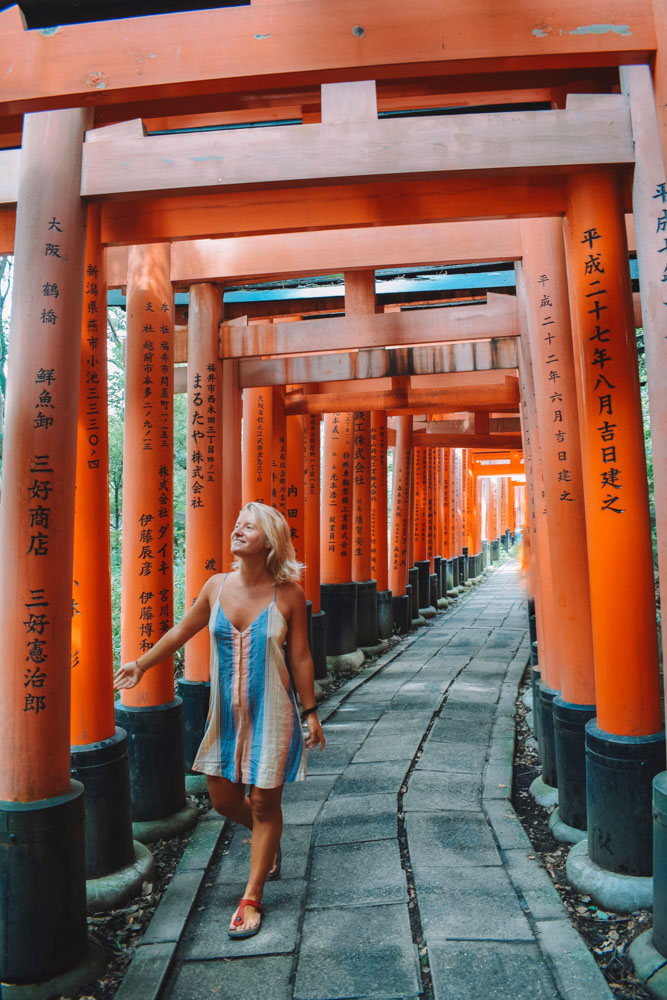
Wandering through the famous red torii gates of Fushimi Inari Taisha in Kyoto
Afterwards, enjoy a meal at the Nishiki market in downtown Kyoto. You’ll find so many good food choices, including lots of amazing Japanese delicacies at very reasonable prices.
Nishiki market is one of the main spots to visit in Kyoto, where you can not only taste amazing Japanese street food, but also shop for souvenirs and kimonos.
Discovering the narrow streets of this market was one of my favourite activities of my two weeks in Japan. If you want to make sure you eat at all the best stalls, you can join this Nishiki Market food tour!
Click here to see prices & availabilities for a Kyoto Nishiki Market food tour!
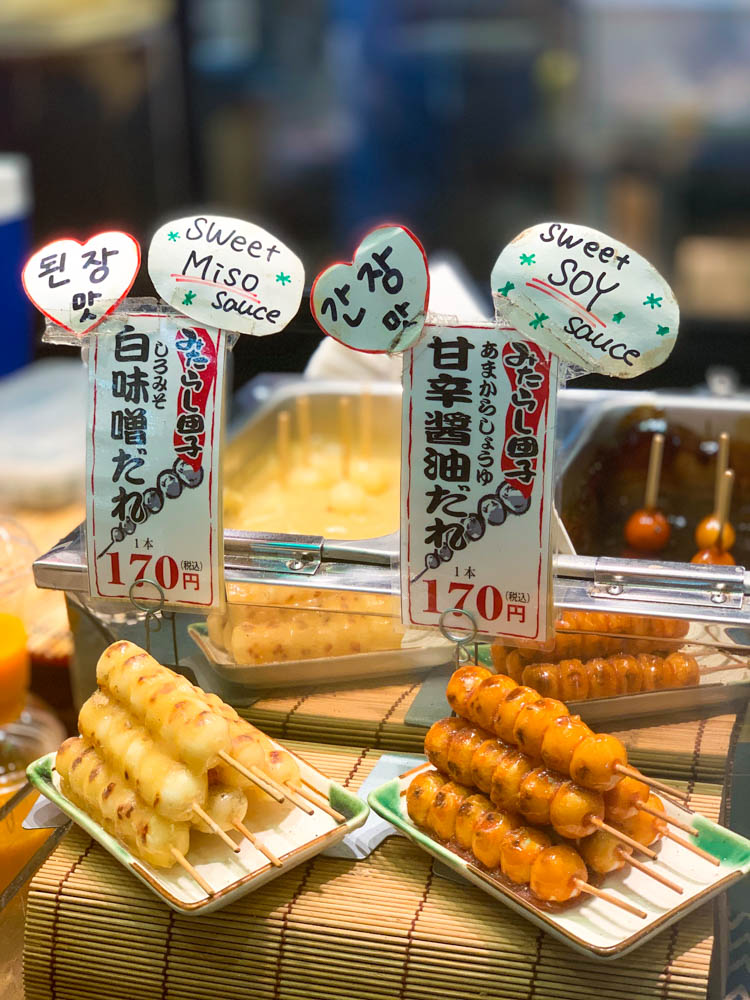
Dango skewers at Nishiki market in Kyoto – they soon became my favourite dessert in Japan!
Day 6: More Kyoto temple exploring
On your final day in Kyoto, spend some time in the Arashiyama district – on the outskirts of Kyoto. From Kyoto Station, take the Japan Rail Sagano lines to Saga-Arashiyama Station. The train ride takes about 20 minutes.
When you arrive, the Arashiyama Bamboo Forest should be your first stop.
The forest gets very crowded later on in the day, so it’s best to get there early in the morning. The forest is open 24/7, so you can arrive as early as you’d like.
Stroll the paths lined with endless rows of towering bamboo that stretch up to the sky. There’s really nothing quite like it. In my opinion, seeing a bamboo forest should be included in all Japan travel itineraries.
| READ MORE: AN EPIC KYOTO 3-DAY ITINERARY |

Arashiyama bamboo grove in Kyoto
Next, you should visit Arashiyama Monkey Park. As the name suggests, this park is famous for its monkey population. Over 170 Japanese macaque monkeys inhabit the area.
You’ll be able to see these animals up close and even feed them in a designated area. The park also offers beautiful views over Kyoto.
Personally we just wandered around Arashiyama alone, but if you prefer to have a local guide give you tips and insights, make sure to join this bamboo grove & temple tour !
Click here to book your Arashiyama bamboo grove & temple tour in Kyoto!
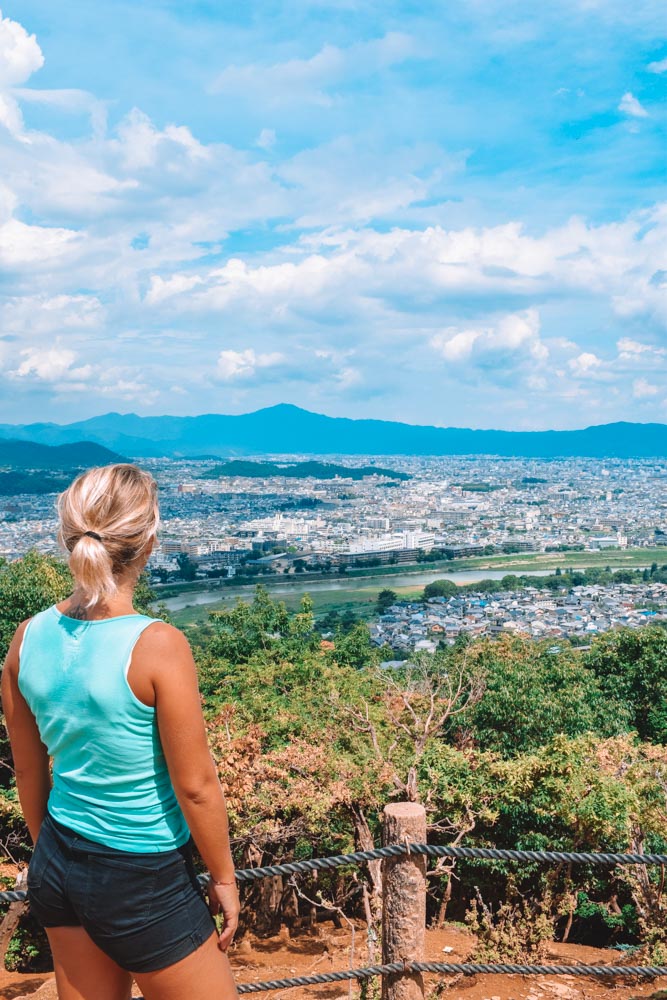
Enjoying the view over Kyoto from the top of Arashiyama Monkey Park
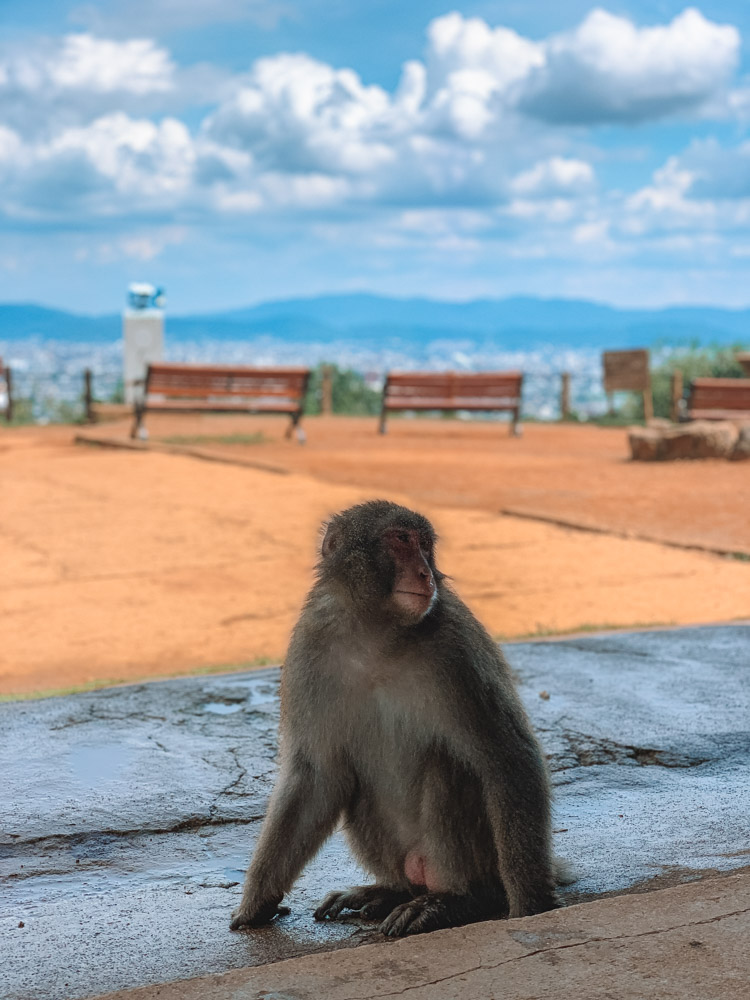
A monkey in the Arashiyama Monkey Park in Kyoto
Lastly, you should check out the Kinkaku-ji Golden temple. This beautiful gold temple is surrounded by peaceful gardens and set next to a quiet pond.
It has an enchanting appeal, especially when the golden walls shine in the sunlight.
While you’re in the area you should consider riding the famous Sagano Romantic Train. This train ride will take you through what is considered one of the most beautiful railway journeys in Japan.
Book your romantic Sagano train ride here!
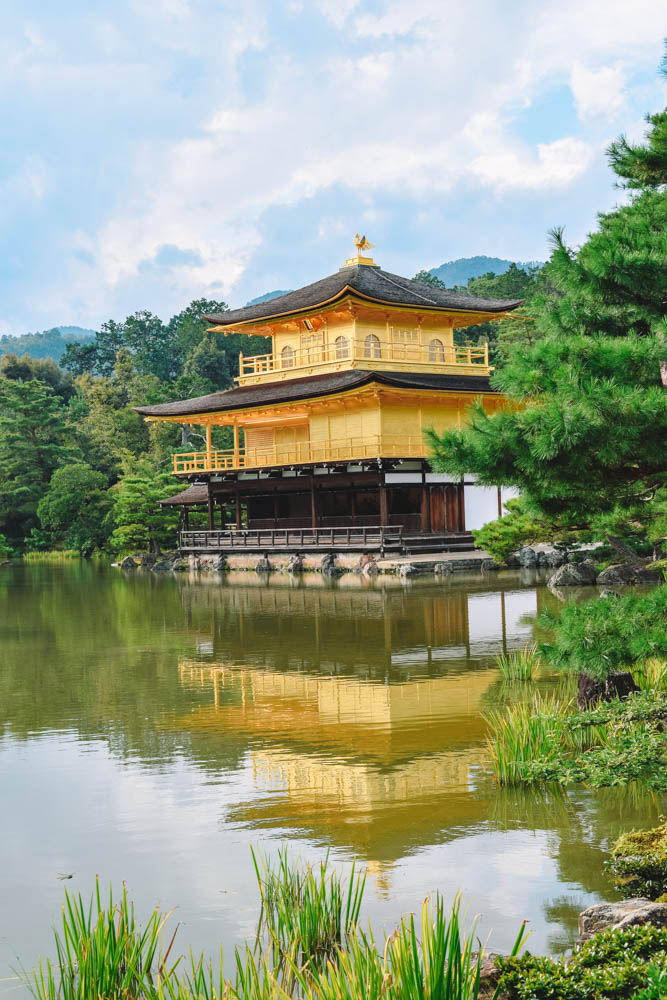
The Kinkaku-ji golden temple in Kyoto
Day 7: Travel to Hiroshima
Now that you’re halfway through your two-week Japan itinerary, it’s time to head even further east, to Hiroshima and Miyajima . It takes around 2.5 hours on the Japan Rail to get to Hiroshima from Kyoto.
First, visit the Hiroshima Peace Memorial Park. This area serves as a memorial to the people who were killed in the atomic bombing of Hiroshima, on 6 August 1945.
There are three different areas you’ll want to visit: The Atomic Bomb Dome, The Hiroshima Peace Museum, and the Peace Memorial Park.
The whole area is dedicated to documenting the atomic bombing that was dropped on Hiroshima in World War II.
You’ll want to spend at least a few hours walking around and educating yourself on this tragic, yet important, part of history. I found some of it quite tough to look at, and was surprised at seeing young children there on school trip.
The Hiroshima Peace Memorial is an example of a dark tourism site; a place where horrible things have happened, but it’s important we visit it, so as to never forget and learn from the past.
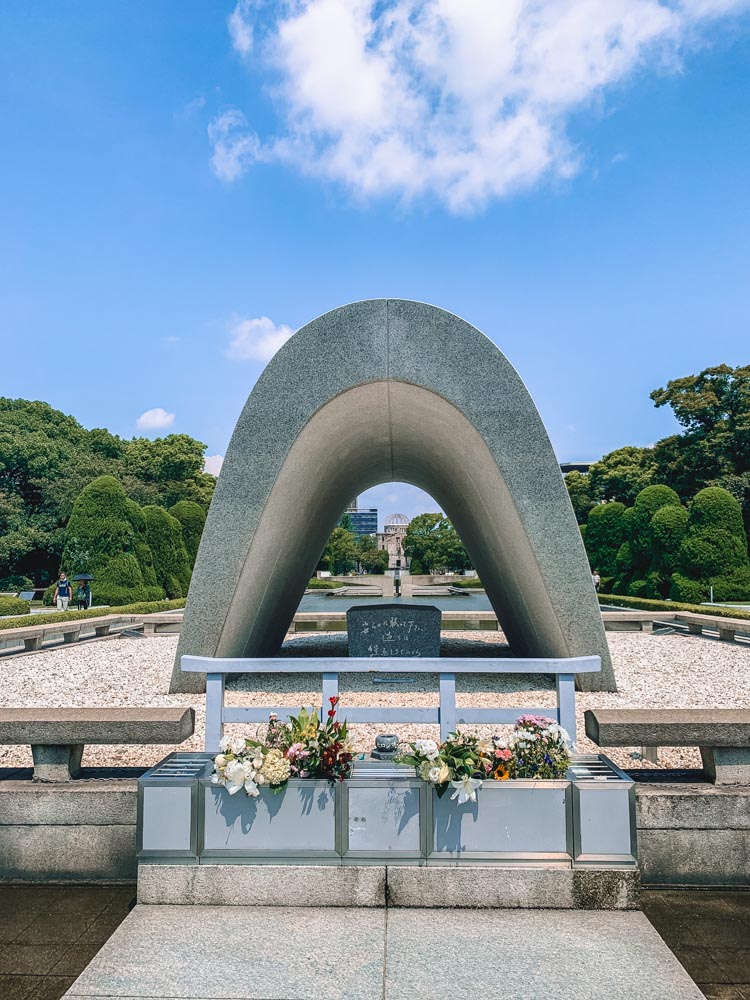
Hiroshima Peace Memorial
Next, visit Hiroshima castle. The castle was constructed in the 1590s but was unfortunately destroyed by the atomic bomb in 1945.
It was rebuilt in 1958. It’s a replica of the original and houses a museum that showcases Hiroshima’s history.
The castle also gives guests the opportunity to dress up in period outfits, including Samurai armour. This is a great stop on your Japan tour itinerary to learn about the history of the country in relation to WWII.

Hiroshima Castle – Photo by Tom Shu on Scopio
Day 8: Ferry to Miyajima Island
After enjoying a wonderful day in Hiroshima, visit the small island of Miyajima. The island is known for its forests, ancient temples, and fresh oysters – which are very popular at the street food market.
Miyajima Island is located just a quick 10-minutes from Hiroshima Bay. This ferry trip is free with your Japan Rail Pass.
For a great exercise with rewarding views, make hiking up Mount Misen your first activity. This sacred mountain is the highest mountain on the island.
It’s a steep hike up, but you can take the cable car up part of the way up and then hike down. You’ll have epic views of the islands and coast of mainland Japan from the top.
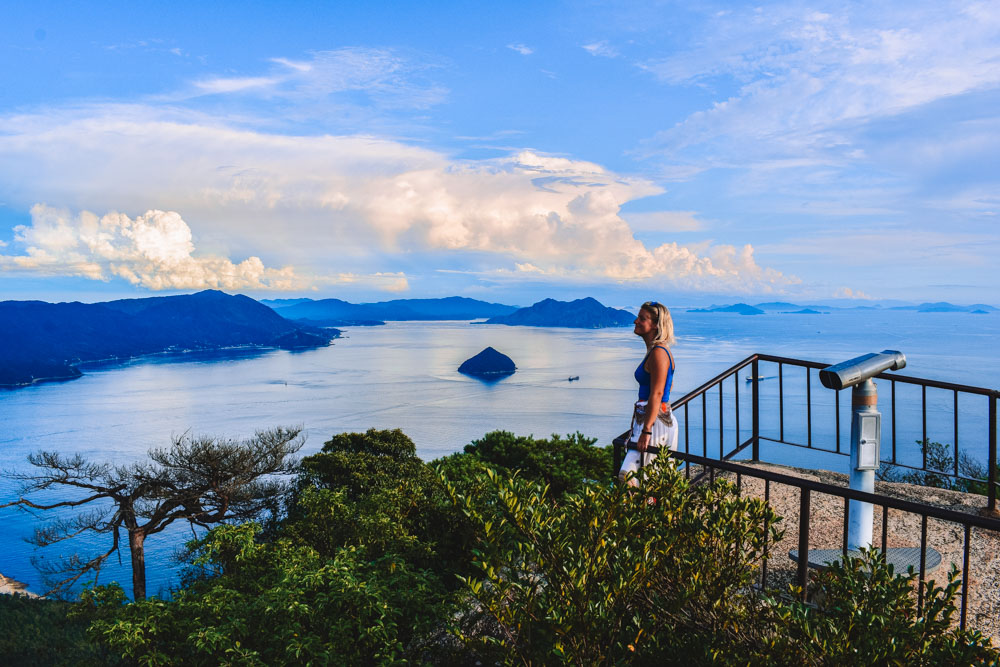
The view from the peak of Mount Misen in Miyajima Island

While you’re on Mount Misen, visit the Daishoin temple. This temple complex is spread on a slope of the mountain and features over 500 statues of varying shapes and sizes.
Next, visit the Itsukushima Shrine. The shrine and its torii gate are built over water and made to look like they’re floating in the sea during high tide.
At the time of my visit (September 2019) unfortunately it was undergoind construction, and they haven’t really said when it will end.
| READ MORE: HOW TO SPEND ONE DAY IN MIYAJIMA |

The cute market streets on Miyajima Island
The five-story pagoda on the island is a must-visit too, especially for photo lovers. It’s beautiful, peaceful, and breathtaking – another one of the many treasures found on Miyajima Island.
If you want to add a really cool cultural experience to your itinerary for Japan, spend the night in a ryokan. This is a type of traditional Japanese accommodation.
If you use AirBnb in Japan you can usually find both ryokans and normal apartment style accommodation. I stayed at the Miyajima Hotel Makoto , which is located on the island, just a 5-minute walk from Miyajima Pier.
Click here to book your stay at the Miyajima Hotel Makoto

The five story pagoda in Miyajima Island
Day 9: Travel to Osaka
Now that you’ve hit the highlights of Hiroshima, it’s time to move onto Osaka .
The best way to get there is by taking the Hello Kitty Bullet Train. As the name suggests, the train is completely themed after Japan’s beloved fictional character, Hello Kitty.
The train departs from Hiroshima just after 08:00, which might be a little early for some. But if you’re only taking a 2 week trip to Japan, the early morning call time is worth it!
The best part of all is that this train ride is included in your Japan Rail Pass.
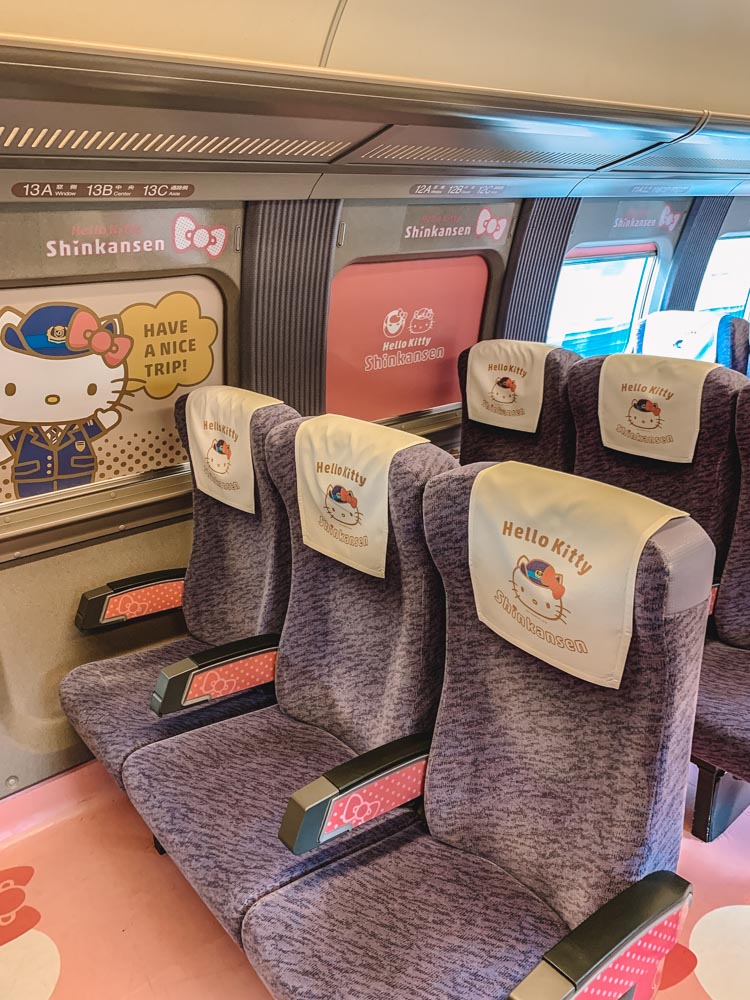
The seats on the Hello Kitty Shinkansen train from Hiroshima to Osaka
The total travel time from Hiroshima to Osaka is about three hours, but I suggest breaking up the journey at Himeji.
Visit Himeji Castle , a hilltop Japanese castle complex. The castle is a bit bare inside, but the views it offers from the top are absolutely spectacular.
It’s also a great place to visit to see authentic, preserved Japanese architecture. You can walk to the castle from the train station, so it’s a really easy stop to make along your route.
All Japan train stations have lockers where you can leave your bags on occasions like this, if you’re doing a stop along the journey before checking into your next hotel.
If you want to see more of Himeji beyond the castle, you can book a private customised tour with licensed guide like this one , to properly make the most of your time in Himeji.
Click here to book your Himeji private customised tour with local guide!
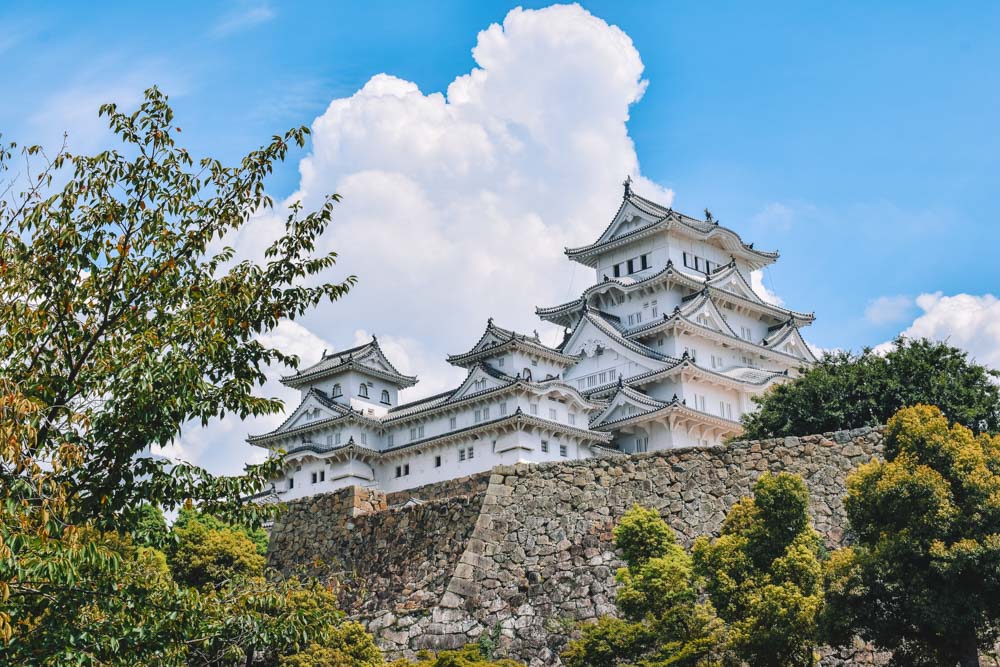
The outside of Himeji Castle
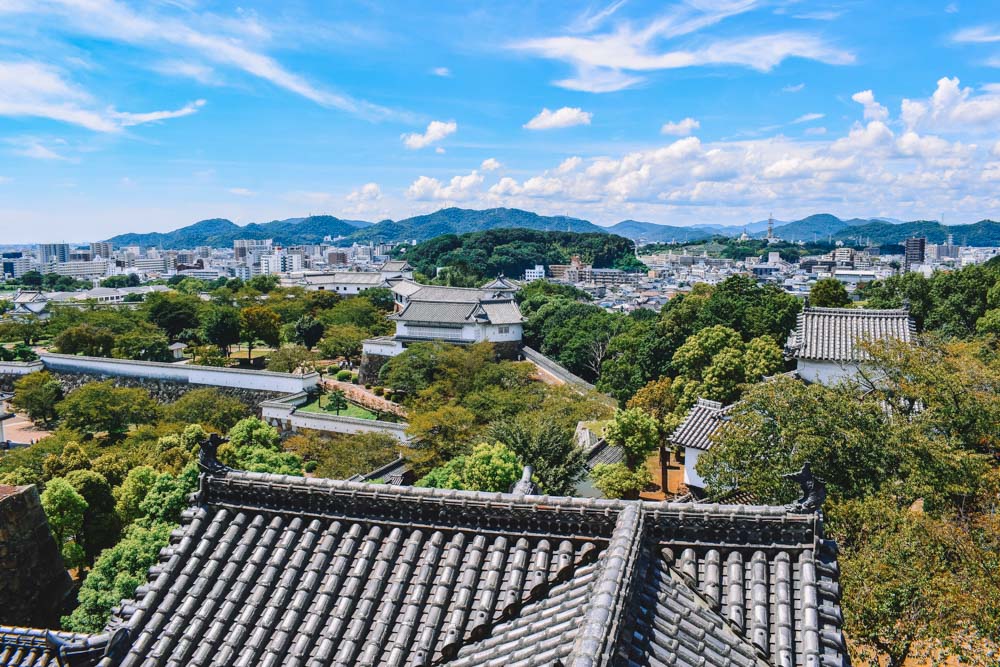
The view from the top of Himeji Castle
After you arrive in Osaka you’ll have a lot of fun attractions on offer – seeing as the city is the second-largest metropolis after Tokyo.
If you arrive early enough, you can visit the tallest skyscraper in Osaka for some pretty epic Japan photos.
Wondering where to stay in Osaka ? We stayed at Hotel Monterey La Souer Osaka . The hotel was very conveniently located close to Osaka castle, and next to a train station for public transport.
Click here to see the latest prices and availability at Hotel Monterey La Souer Osaka!


Day 10: Day trip to Nara
On day ten of your two week trip to Japan, take a day trip to the deer-filled city of Nara.
This area is famous for its tame reindeer and beautiful temples. Using your JR Pass, you’ll get from Osaka to Nara in about 50 minutes.
Once you arrive, you’ll be able to walk to several attractions from the train station.
First up, visit the Kofukuji five-storey pagoda. This large Buddhist temple is a fascinating historical tower that was constructed using wood.

Kofukuji Five-Storied Pagoda in Nara, Japan
Next, see the Todaiji temple. Inside the complex, you’ll find numerous huge Buddha statues – they’re pretty impressive!
I was feeling pretty templed out by the time I arrived here and almost didn’t go inside, but I’m glad I did! This building stands out for its sheer size and beautiful statues.
The Kasuga-taisha temple is another beautiful shrine filled with lots of lanterns.
Even if you make your own way to Nara from Osaka, you can still join a cultural tour once you reach Nara, that way you’re sure you’re hitting all the must-see spots, with a local guide to tell you about them too!
Click here to book your cultural tour of Nara!

Admiring the giant statues inside Todaiji temple in Nara, Japan
Last but not least, wander around Nara Park and see the wild reindeer that roam freely. Street vendors sell deer crackers, which you can purchase to feed the deer.
The deer in Nara are very used to being fed and having tourists around, but you should still be careful as they are still wild animals.
| READ MORE: NARA DAY TRIP GUIDE |
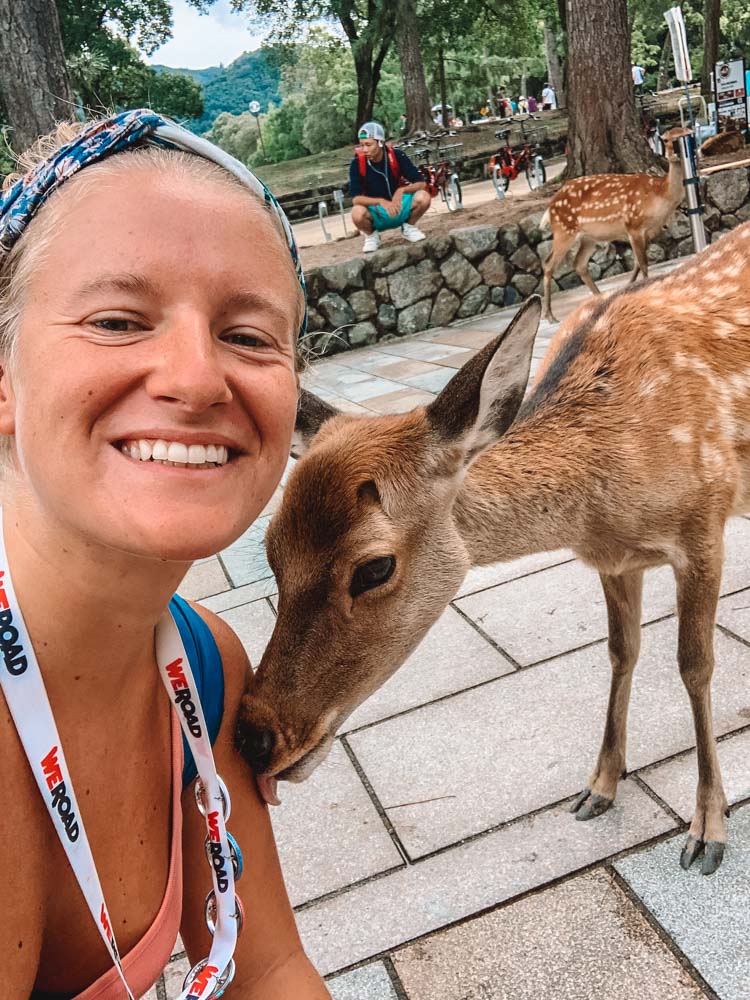
Trying to befriend one of the deer in Nara
Day 11: Explore Osaka
Spend your first full day in Osaka exploring the city.
First up head to Osaka Castle – the city’s most famous attraction. The castle is opulent from the inside out. There are lots of things to see and do, so make sure you wear your walking shoes when you visit.
The castle itself is a stunning sight. It rises high up and provides commanding views of the Osaka skyline. Osaka Castle Park covers about two square kilometres and offers plenty of green space.
The Osaka Museum is a history museum that makes a nice add-on to a castle visit. It’s a great place to get a glimpse of the history and culture of Japan.
If you want to make sure you visit all the main sights in Osaka, book yourself a full-day private guided walking tour , so that you’ll have a licensed guide all for yourself to show you all the best spots!
Click here to book your Osaka full-day private guided walking tour!
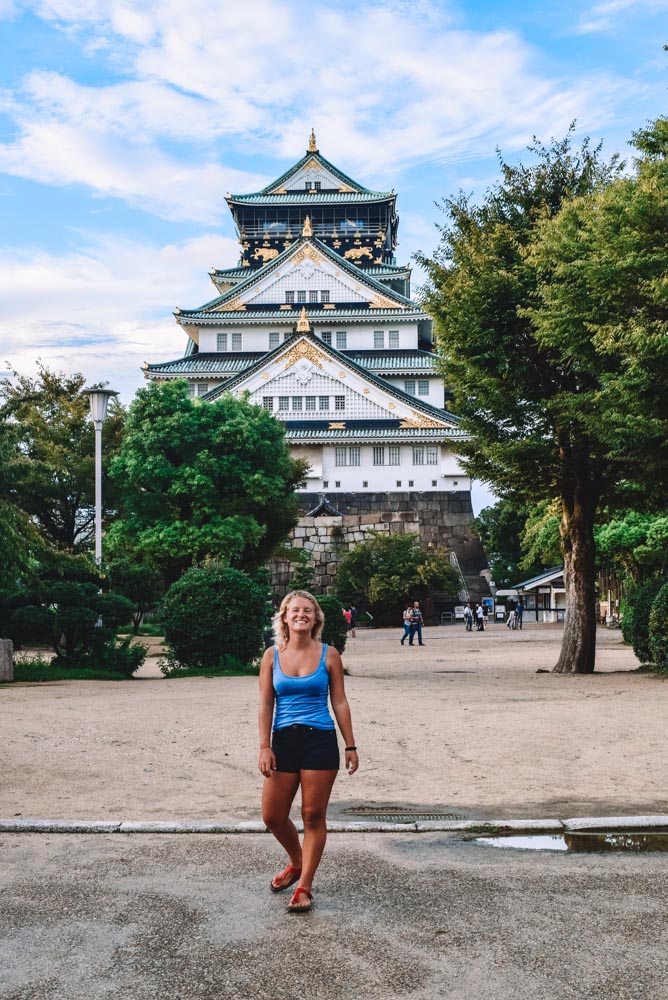
Exploring Osaka castle
After you’ve spent a few hours exploring the castle, make your way to Dotonbori Street. This is a very trendy area of Osaka that has lots of street food and shopping options.
Osaka is Japan’s food capital , and Dotonbori Street is the best place to indulge in the city’s cuisine. You’ll find street food everywhere. There are also plenty of restaurants and bars.
Most places have their own unique and colourful advertising signs. Dotonbori is also a great place to go out at night. It’s a spot in the city that’s popular with both locals and tourists alike.
There are so many places to eat at in Dotonbori that it’s hard to choose the right one. Avoid the tourist traps, and join an Osaka food tour with a local , to ensure you eat at all the best spots!
Click here to book your Osaka food tour!

Dotonbori neighbourhood in Osaka

Exploring the street food in the Dotonbori neighbourhood of Osaka
Day 12: Travel back to Tokyo
Now that your Japan two-week itinerary is in its final stages, it’s a good idea to head back to Tokyo. Take the early morning train and make a stop at Mount Fuji if you feel like breaking up the trip.
Mount Fuji is an active volcano about 100 kilometres southwest of Tokyo. it’s the country’s tallest peak and the country’s most famous mountain.
When you arrive back in Tokyo, have lunch at the Ameyoko/Americaya street markets.
This is a typical Japanese food market and a local gem, and it’s packed with delightful food stalls. You’ll find some of the best street food in Tokyo here.

The bustling and colourful street of Ameyoko in Tokyo
Nearby, you’ll find Tokyo’s electronics district – Akihabara.
If you’re into comics, anime, or video games, you’ll find the best of Japanese electronic relators here. This place is manga central (a comic genre which is huge in Japan).
Take some time to explore this buzzing district. Besides electronic shops, there are also lots of really cool stores and cafes devoted to anime and manga.
For a young Dragon Ball and One Piece lover like me (any other fans reading this?) visiting Akihabara was loads of fun.
All the shops we visited sold either comic books, video games, and all sorts of toys from my favourite childhood cartoons.

Exploring Akihabara in Tokyo
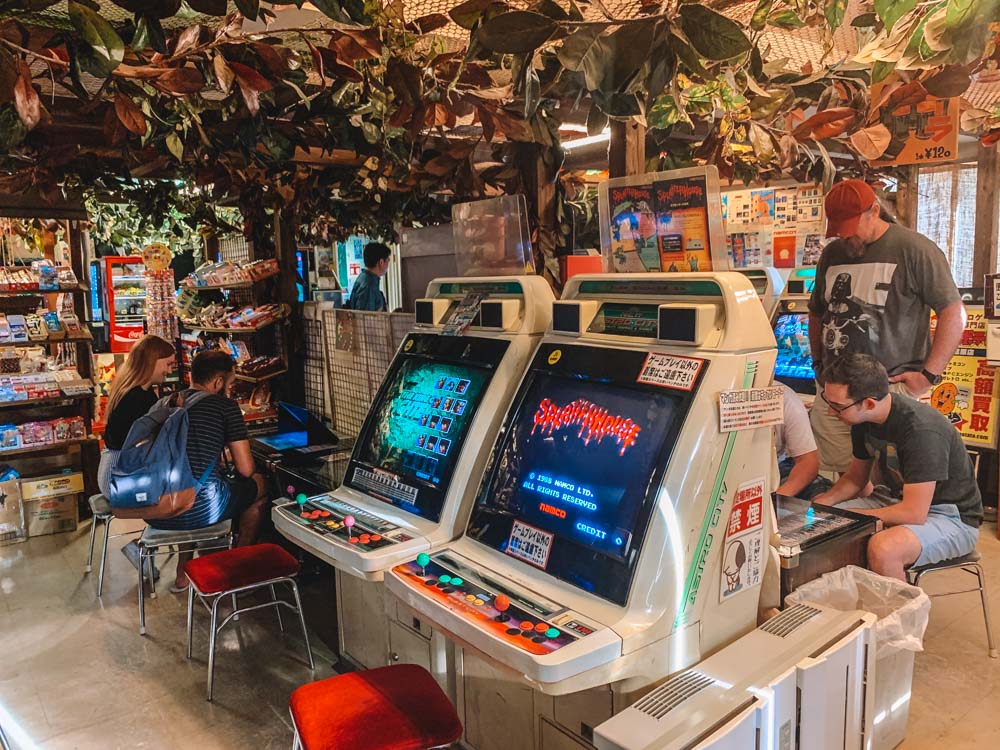
The top floor of Super Potato where you can play with vintage videogames
Day 13: Tokyo
Now that you’re on the last full day of your Japan vacation itinerary, you’ll want to do as much exploring as possible.
Visit TeamLab Borderless Museum first thing in the morning. This attraction is very popular, so it’s best to get there right when they open at 10:00 and book your tickets in advance .
This interactive art museum brings art to life in a mesmerising way. Each room has something new to offer; you’ll feel like you’re in another world!
Click here to book your ticket at TeamLab Borderless!
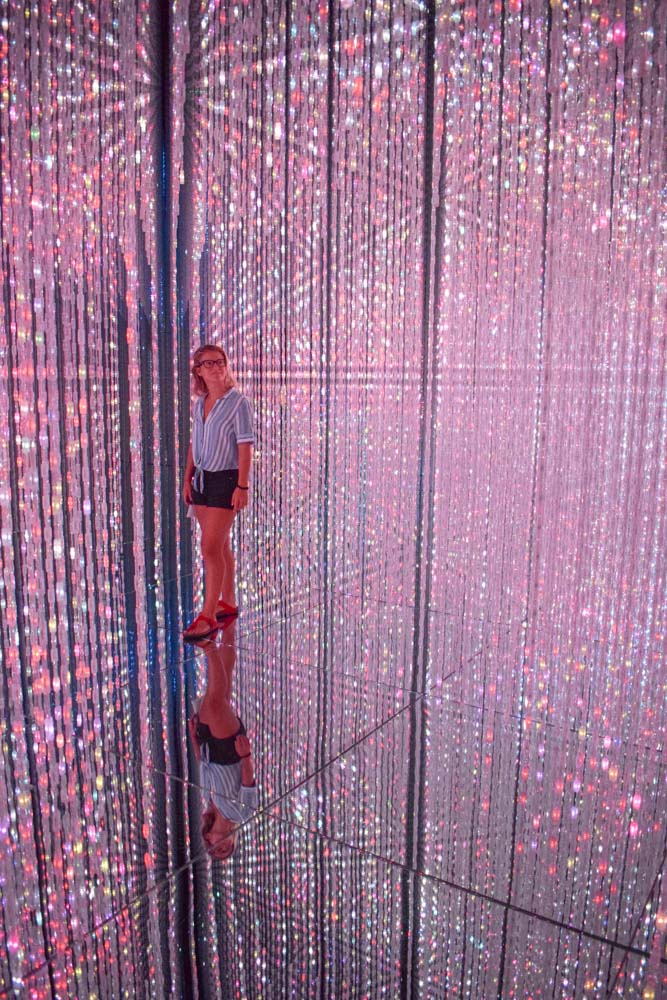
One of my favourite rooms at the Teamlab Borderless in Tokyo
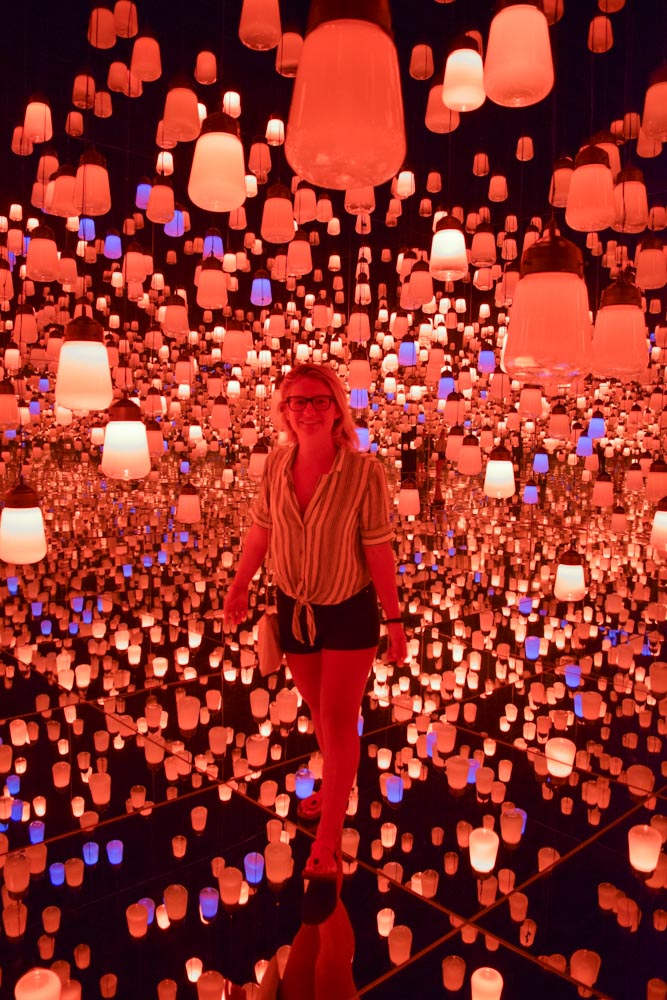
The lantern room at Teamlab Borderless in Tokyo
After you’ve finished at the museum head over to Tsukiji Fish Market for lunch. This is one of the largest seafood markets in the world, and one of the most famous attractions in Tokyo.
This is not only an area where local restaurant owners go to buy fish, but there are also lots of street food stalls and restaurants to choose from where you can eat.
Indulge in sushi, fresh crab, oysters, or whatever else you’re craving that comes from the sea. We ate at a place called Sushizanmai , and it was one of the best sushis I’ve ever had.
If you don’t fancy going for a full sit-down meal, you can also join a Tsukiji Market food & drink walking tour , and have a local take you to all the best dining spots in the market!
Click here to book your Tsukiji Market food & drink walking tour!

Sushi from Tsukiji fish market in Tokyo
Day 14: Tokyo & end of trip
Leaving a country as beautiful as Japan might be hard. But if you’ve followed this Japan travel blog you will have seen so many great areas of the country that you’ll feel enriched and happy with your trip.
Try to get an evening flight so that you have time to do some last minute exploring. You should explore the Asakusa neighbourhood and get a feel for older Tokyo.
You can tour the area on a rickshaw ride for a unique perspective. You’ll pass lots of iconic sits and see the area through the eyes of a local.
While you’re in the area, make sure to visit the Senso-ji temple. This ancient Buddhist temple was completed in 645, making it Tokyo’s oldest temple. It’s a beautiful piece of Japanese culture and a must-see when you visit Tokyo.
Click here to book your rickshaw tour of Asakusa!

Senso-ji temple in Asakusa, Tokyo
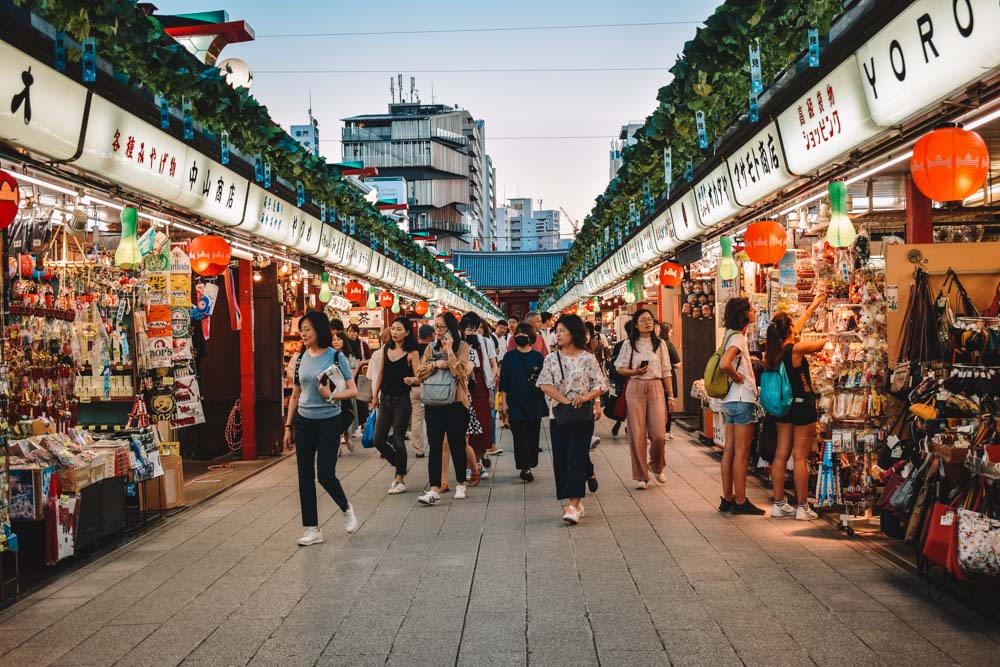
The road of cute shops leading up to Senso-ji temple in Asakusa, Tokyo
Conclusion of your 2 weeks in Japan itinerary
As you can tell from this guide, exploring Japan in two weeks is totally do-able. The size of the country and its accessible transportation options are very conducive to tourism.
The best thing about Japan is that this country has a little bit of everything. From chaotic cities to tranquil islands and scenic parks, or from ancient history to modern techno and manga scene, there’s so much to discover.
For this reason, I’ve made sure to include big cities as well as areas that are off-the-beaten-path.
Whether you’re travelling alone, with family, friends or kids, this two weeks Japan itinerary is perfect for every type of traveller. This is a country that will amaze you at every corner!
Enjoyed reading my Japan 14-day itinerary? Pin it!


- Meet the Team
- Work With Us
- Itineraries
- Italy Travel Guide
- Hawaii Travel Guide
- Travel Tips
The Perfect Japan 2 Week Itinerary: 10-14 Days in Japan
Planning a trip to Japan can be very overwhelming, because there are so many place to go and things to see. Where do you start planning the perfect Japan vacation?
You want to make sure you see everything possible in your 2 weeks in Japan, so planning each step of the way is very important. That’s why we’ve prepared the perfect Japan 2-week itinerary for you, so you have a starting point to build your dream trip from.
» Also read about Japanese Food: 45 Traditional Dishes to Look for in Japan.

You can use our itinerary to build your own independent trip to Japan, or you can leave the planning to the pros and go on a guided tour. Either way you choose, you’ll find all the information you need in this post.
Planning Your Japan Trip?
Buy flights. We recommend using Skyscanner or Expedia to find the best flight deals. Check out our guide to finding the best airfare for additional tips.
Get your Japan Rail Pass. You can buy it online here
Hotels See all hotel options
- In Tokyo: The Strings by InterContinental Tokyo
- In Kyoto: ACE Hotel Kyoto
- In Osaka: Intercontinental Osaka
Best Tours to Book
- Fully escorted 8-day Intro to Japan tour
- Private Custom Tour: Tokyo in a Day
- Tsukiji Fish Market Food and Culture Walking Tour
Table of Contents
Japan Itineraries
If you have longer to spend in Japan, you can expand this itinerary to any length you wish.
- We have a 7-day itinerary and a 2-week Japan itinerary so you can choose which length of trip suits you best.
- If you will only be visiting Tokyo, here’s a shortened 3-day itinerary for Tokyo .
- Want to add more days outside of Tokyo? Here’s a 3-day Kyoto itinerary and a 2-day Osaka itinerary .
Traveling in Japan can be expensive, but we’ve put together a list of the best budget travel tips for Japan to ease the strain.
Also keep in mind that it takes a considerable amount of time to travel between destinations and cities. So you have to be very wise in your planning to make everything fit together perfectly.

Where to Go in Japan
Japan is full of mesmerizing landscapes, incredible sights and – my favorite – amazing food!
There are a good number of tourist destinations that just about anyone planning a trip to Japan will want to include in the itinerary. Obviously, with just 10-14 days in Japan, there’s no way you can cover them all, so for this itinerary we’ve chosen the top destinations that we feel you can fit comfortably into 10+ days.
Here are the top destinations we recommend visiting in 10+ days in Japan: Tokyo , Hakone, Osaka, Kyoto, Nara, Hiroshima and Miyajima, and Kamakura.
Japan Vacation Options
There are two perfectly acceptable choices for your vacation in Japan: a self-planned individual trip or a guided trip. Either way can be quite rewarding, but which you should choose depends greatly on your travel style and how much energy you want to put into planning.
While Japan is very easy to get around and well suited for independent travelers, it can be difficult to do it on your own due to the language barrier, difficult train schedules you’ll have to navigate, and different foods and customs you’ll come across.
A pre-planned tour won’t give you the same freedom to do what you want, but it is completely planned out for you and you will always have a guide along to help you with anything you need.

1. Guided Tours of Japan
The tour company we recommend, Japan and More , offers fully escorted, small group and private tours of Japan that can be from 8 to 15 days in length.
The company is run by Japan travel specialists, Becki and Shawn, who have over 20 years of experience living, working, and traveling in Japan. They know where to go, what to see, and how to get there.
They are Americans who know Japan, understand Japanese culture, and speak the language. Their group tours book fast! So secure your place at least a year in advance.
Discover Japan Tour – 15 days
- Start out in Tokyo, then travel to Nagoya and Kiso Valley
- Stay in a traditional Japanese Ryokan
- Visit the ancient capital of Nara
- Hiroshima Peace Memorial Park
- See the famous floating torii gate at Miyajima
- Ride a cable car up Mount Koya
- Soak in a Japanese onsen bath in Hakone
- Discover Kyoto and Osaka
Intro to Japan Tour – 8 days
- Visit one of the last remaining original castles at Inuyama
- See the preserved mountain village of Takayama
- Explore Kyoto and have a traditional kaiseki dinner in Gion
For more information, check out Japan and More’s website . You’ll get $100 off the cost of your tour by using our coupon code.
Not sure about a guide tour? Read this review by someone who’s taken the trip.
Japan 13-Day Adventure
Another option we love for a guided Japan tour is this 13-day adventure by Intro Travel.
You’ll walk the streets of one of the world’s busiest and most futuristic cities, watch monkeys bathe in hot springs, roll your own sushi, visit ancient shrines and castles, get taught to wield a sword by a Samurai master, stay overnight with monks in a 1000 year old Buddhist temple, experience incredible and unique accommodation and much more!
» See more details of this trip
2. Self-Guided Two Weeks in Japan
If you want to plan your own trip and be in charge of your own trip, then a self-guided tour is the way to go.
With a good plan of action, your Japan 2-week itinerary will run smoothly and provide you with a stunning overview of this beautiful country.
If this schedule seems too ambitious for just 14 days in Japan, you can always extend your stay in the areas that interest you most and cut out a destination or two that you can save for your next trip.
There’s no right or wrong way to do it. It’s entirely up to you.

2-Week Schedule
Day 1-3: tokyo, day 4: kamakura, day 5-6: hakone and mount fuji, day 7-8: kyoto, day 9: nara, day 10-11: osaka, day 12: kobe, day 13-14: setouchi, hiroshima & miyajima.

Arrive in Tokyo. Keep in mind that Tokyo is a huge city with many different areas to explore. You won’t want to stay put in one area, but travel around and see as much as possible.
We recommend seeing these major sites:
- Tokyo Skytree
- Tsukiji outer fish market
- Hamarikyu Gardens
- Asakusa area
- Meiji Shinto Shrine
- Imperial Palace
- Shibuya Crossing
One of the best ways to see all the sights in a few days is on a day tour with a guide. We recommend this private customizable walking tour with Japan Wonder Travel. You can fit in whatever you want to see in one day or book them for a second to see even more.
Besides the main sights listed above, you have to save time for food! Tokyo is one of the best food cities in the world and there are dozens of food experiences to have. My favorites include:
- Ramen Tasting
- Tokyo Pub Crawl
- Hidden Izakaya and Sake Small-Group Pub Tour
- Sake Tasting & Seminar
⇒ Make it easy on yourself and follow this 3-day Tokyo itinerary for food lovers.
If you’ve got more time, check out these day trips from Tokyo that will get your further out into the countryside and to surrounding cities.
Where to Stay in Tokyo
We recommend the Intercontinental The Strings Tokyo Hotel. It’s a really large hotel with nice rooms, located in Shinagawa, which is really close to shopping, eating and transportation. If this doesn’t suit you, check out our full list of Tokyo hotels we recommend .
⇒ Read reviews on Trip Advisor .

For a change in pace, visit Kamakura, a seaside town south of Tokyo. It was the political center of medieval Japan, but is now a popular resort town, with dozens of Buddhist temples and Shinto shrines.
The most recognizable of these is the Great Buddha, a 42-foot-high bronze statue that has withstood the test of time.
Spend the day visiting the temples and shrines, hiking one of the many trails, enjoying Shichirigahama Beach, and the many museums around town.
Where to stay in Kamakura
For a lovely stay on the beach with a view of the ocean from your room, stay at the Kamakura Prince Hotel . ⇒ Read reviews on Trip Advisor .
▶ Transfer to Hakone via the Tokaido-Sanyo Shinkansen

Known for its traditional onsen, or hotsprings, Hakone is part of the Fuji-Hakone-Izu National Park and it has incredible mountain scenery and hikes, as well as art museums and shrines to see.
You can also take the cable car to catch a glimpse of Mt. Fuji. You’ll want a full day here to explore and stay overnight. With just one day it’s not practical to hike up Mt. Fuji. Did you know that the best time to see Mt. Fiji is in winter because of the crisp clear days? Check out other things you didn’t know about winter in Japan .
If you don’t have enough time for hiking, the best activity for visitors with only 1-2 days in the area is Lake Kawaguchiko.
One of the best views of Mt. Fuji can be found at Lake Kawaguchi, one of the largest of the 5 lakes in the region. It’s a great resort area with museums, a concert hall, and a museum shop. You can walk around it, go boating, fishing, and shopping.
- Take the JR Chuo Line from Shinjuku Station (Tokyo) to Otsuki Station
- From Otsuki, take Fujikyu Railway to Kawaguchiko Station (not covered by the JR Pass)
You can also catch amazing glimpses of Mt. Fuji from Arakurayama Sengen Park, which is located halfway up Mount Arakura.
Where to Stay in Hakone
Hyatt Regency Hakone Resort and Spa is within walking distance of the cable car that takes you toward Mt. Fuji. The hotel has very nice, classy rooms, with great views. ⇒ Read reviews on Trip Advisor .
We also recommend Hakone Mount View for a traditional Japanese ryokan experience with nice accommodations and good food. They have a rare volcanic hot spring called Nigori-yu – a fun and unique experience, especially for couples. ⇒ Read reviews on Trip Advisor .
Transfer to Kyoto.

There are many iconic and eye-catching shrines and temples in Kyoto that you’ll want to see, including the Fushimi Inari Shrine, Kinkaku-ji Golden Temple, and Kiyomizu-dera. (More in depth info on the temples of Kyoto.)
You can’t leave without visiting Nishiki Market, Arashiyama Bamboo Groves, seeing the geishas walking around the city center, participating in a tea ceremony, and eating at a traditional kaiseki restaurant for lunch or dinner.
At the right time of year – usually from early to mid-April – you can also see the cherry blossoms, which are gorgeous in Kyoto.
» See our full guide on how to spend 2-3 days in Kyoto , and then tack on these extra day trips from Kyoto if you have extra time.
Where to Stay in Kyoto
We recommend the Hyatt Regency , because it has a reliable standard for Western accommodations, however it’s not as close to the main sights as we’d like to be.
We found it more convenient to stay near Kyoto Station, since everywhere we visited we needed to go in and out of there. Our preferred hotel is the Hotel Granvia Kyoto .
Have a look at all Kyoto hotels for comparison.

Nara Park: Take a JR train to Nara Park at the base of Mount Wakakusa. The park is home to more than 1200 freely roaming deer that are domesticated enough to let you feed them.
You will also see the world’s largest bronze Buddha statue and one of the tallest pagodas in Japan, among other historic structures. Take the JR train onward to Osaka.
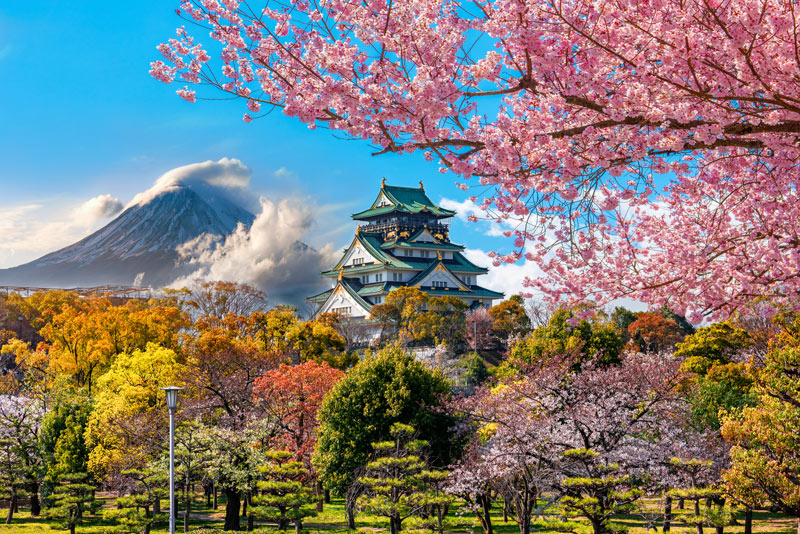
For foodies, there’s nothing quite as exciting as Dotonbori Street during the evening hours. The street comes alive with every kind of Japanese specialty street food, like okonomiyaki and takoyaki.
A great way to see a lot of Osaka during the day is on an Osaka Walking Tour . You’ll see Dotonbori during the day, visit the Hozenji temple, ride the subway, sample a local specialty, Kushikatsu, and explore traditional Shinsekai.
On your own, you can visit Osaka Castle, and check out the Instant Ramen Museum. If you have time, visit the food-focused Kuromon Ichiba Market and shop for a Japanese knife.
If you want to try the best izakaya food such as Okonomiyaki and Takoyaki and drink in Osaka, try this Osaka Bar Hopping Food Tour or go on a Foodie Walking Tour in Dotonbori and Shinsekai.
>> Read this post for an in-depth 2-day Osaka itinerary and here are some great day trips to take from Osaka if you have more time.
Where to Stay in Osaka
One of my favorite hotels is the Osaka Marriott Miyako Hotel . It is conveniently located for transportation, so you can easily get around to the top sights in Osaka and beyond. It’s got an insane view and really comfortable rooms. ⇒ Read reviews of the Osaka Marriott on Trip Advisor .
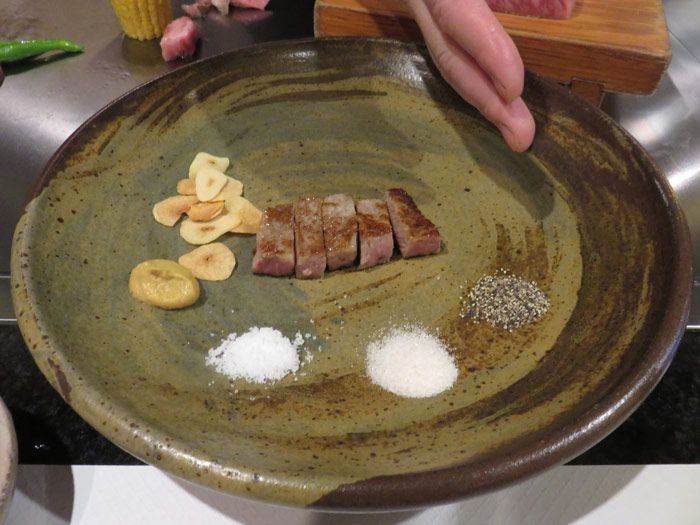
Take a 30-minute train ride to Kobe to try the famous Kobe beef. You will thank yourself for doing it – there’s nothing quite like it, and as a foodie, you owe it to yourself!
On the way back to Osaka, you can stop off in Kobe’s Nada district for a tasting and history about the making of sake at a few sake breweries . If you aren’t a sake drinker, check out the Himeji Castle, just 30 mins outside Kobe.
Stay overnight again in Osaka.
Transfer to Setouchi: Take the train from Shin-Osaka Station to Okayama Station, then the Ako line to Oku Station

The more off-the-beaten-path Setouchi region in Japan is a gem that many travelers miss in their typical itinerary, except those who make a point to visit Hiroshima (which we’ll talk about next). Setouchi has 350 islands that flank the Seto Inland Sea, so there are many hidden gems to explore.
For foodies, you don’t want to miss the oysters and the udon. With the proximity to the sea, oysters are a specialty in the area, with all-you-can-eat shacks open throughout the season.
Ritsurin Garden and Korakuen are two of the most beautiful of Japanese gardens and a must-see in Setouchi.
Hiroshima & Miyajima
Knowing that Hiroshima was effectively leveled in 1945, you will be in awe to see the city now. Hiroshima preserves the memory of the atomic bombing in the Peace Memorial Park and Museum .
Other popular sights to see in the city are the Hiroshima Castle, the city’s family shrines and temples, the Museum of Art and the Flame of Peace garden.
You can also go out to Miyajima, where the orange Great Torii Gate sits at the entrance to the Itsukushima temple, and is partially submerged in water during high tide.
If you have a Japan Rail Pass , it will cover the train and ferry between Hiroshima and Miyajima on the Japan Rail ferry.
Where to stay in Hiroshima
The Sheraton Grand Hotel in Hiroshima. The hotel is connected to Hiroshima Shinkansen station by a short, covered walkway, providing easy transportation around the city and out to Miyajima. ⇒ Read reviews on Trip Advisor .
Return to Tokyo.
Tips for planning a vacation in japan, best time to go to japan.
When you decide to go to Japan should be based on what type of experience you want to have. A lot of people make it a priority to go to Japan in the spring to see the cherry blossoms, while others wouldn’t want to be there during such a high tourist season.
If you want to catch the fireworks season in Japan, you need to go in August, but it’s really steamy and hot at that time of year. The best weather can be found from late March to May.
Another great time to visit is in autumn, when the leaves are changing, from September to November. As it can get very hot in summer in Japan, try to avoid traveling between June and August.
Getting to and Around Japan

Many top airlines have direct flights into Japan. You can check the status of flights into Japan from your home airport, to see which route and airline is best for you.
Top Japan airlines include ANA and Japan Airlines, but you can fly to Japan with most U.S. airlines that fly internationally, like United and American. Once you arrive in Japan – likely in Tokyo – you can get the train into the city center.
The best way to do it is to get on the Japan Rail (JR) Narita Express (called NEX). If you have a Japan Rail Pass , this journey is included in the pass. It goes to Tokyo Station in 60-90 minutes.
You will then likely have to change trains at Tokyo Station for the Yamanote Line, which serves most of the tourist hotels.
The best way to travel around Japan in by train. You’ll want to purchase a 14-day Japan Rail Pass . The pass allows you to travel on all JR trains throughout Japan, including the high-speed Shinkansen bullet trains. It’s the most economical and worry-free way to travel.
Travel in Japan is not cheap and the cost of buying individual tickets will far exceed the cost of the Japan Rail Pass, which you can purchase for 7, 14 or 21 consecutive days.
Just remember , you have to purchase it before entering the country and give time for it to be delivered to you. Read our guide on where to buy a Japan Rail Pass and if it’s worth it.
When planning your Japan itinerary, keep in mind the distance between each destination (for instance, the train from Tokyo to Kyoto takes 3:15). As long as there is a train linking each of your chosen cities, you’ll be able to easily travel around the country.
Traveling in Japan is not cheap, but you can save money in Japan by doing things like buying a Japan Rail Pass and eating street food.
Tipping in Japan
If you’re from the United States , Canada, or another country where tipping is customary, you should be aware that tipping in Japan is not customary.
If you do try to tip, in a restaurant or a hotel for instance, it might even be refused or considered rude. To avoid awkwardness, follow the Japanese custom and do not tip.
Eating in Japan

Japan is a country with a lot of unique foods. You will have the best overall experience if you’re willing to try the food and have an open mind that you mind really like something you’ve never tried before.
Aside from the expected and incredible sushi you’ll find all over the country, there are many specialties you should try. Some of our favorites are okonomiyaki (found mostly in Osaka), takoyaki (also from Osaka), yakitori, gyoza , and Kobe beef (only in Kobe).
You might also want to try kaiseki cuisine in Kyoto, a traditional, yet very modern preparation. Many of the top kaiseki restaurants have been awarded Michelin stars, too!
⇒ Learn the proper way to eat sushi in Japan.
Whether you take a guided tour or do this Japan 2 week itinerary on your own, I am certain it will be one of the most exciting and rewarding trips you’ll ever take. It is a fascinating country full of surprises.
Let us know how your trip to Japan turns out!
Like this post? Why not save it to Pinterest? FOLLOW US on Pinterest , Instagram , Facebook for more great travel inspiration and tips.

Laura Lynch, creator and writer of Savored Journeys, is an avid world traveler, certified wine expert, and international food specialist. She has written about travel and food for over 20 years and has visited over 75 countries. Her work has been published in numerous guidebooks, websites, and magazines.
29 thoughts on “ The Perfect Japan 2 Week Itinerary: 10-14 Days in Japan ”
Hello Nick! Your vacation in Japan is very interesting and very enjoyable. Moreover, you enjoy this holiday with the people closest to you. Thank you for sharing your experience and knowledge.
Hello! I know you wrote that summer isn’t a very ideal time to visit Japan, but my plans don’t allow me to go at any other time unfortunately. Would the beginning of July really be that bad?
Of course it’s still a great time to go as long as you don’t mind the sometimes intense heat and humidity.
Hi, we are in our 60’s so not as energetic as some! We are planning a 2 week trip to Japan in April. We arrive in Narita and initial thoughts are to stay somewhere close to airport on first night to help with jet lag and then head out to Kyoto/Nara for 3 nights, followed by Fuji five lakes for 3 nights. We want to end our stay with 3 nights in Tokyo, where would you suggest we go between our Fuji stay and return to Tokyo?
Hi Louise, I would suggest adding another day to Kyoto for a day trip to Osaka. It’s very much worth it. Then how about adding in Hakone and/or Kamakura before heading back to Tokyo.
Hi, We are a family that loves hiking, biking and outdoor activities in general. Can you suggest some places for us to visit? It’s our first time in Japan and we are staying 14 days. Thanks and I really like your website; it’s easy to understand and full of good information.
Hi Anne. I’m sure you’d love the area around Mt Fuji. There are numerous opportunities for hiking, biking and outdoor activities. Check out our post on day trips from Tokyo for more information.
Interested in a two week tour but we want to go see the snow monkeys north oh Nagano. Is there another spot to see them. We want to go in oct. and we are aware no snow then. Two couples to start tour around 10/12.
Ruth, you can visit the snow monkey park year round. There won’t be snow, but the monkeys are still there!
Hi Laura, I’m from Australia/NZ and want to say THANKS for your itineraries! I was a but lost. My hubby and I & two boys (12 & 14) are trying to plan a late January Japan trip but the boys (ie all but me :-D) want to add in a 3day snow holiday which I’m happy to do, as long as we get to at least do your 7 day itinerary! Can you please help me by suggesting an addition to your fantastic 7day itinerary that would get them their chance to try ski/boarding. Also maybe a spot that has other snow fun and a spa for me?
Hi Andrea. Glad you found the itinerary helpful! If you’re doing the 7-day trip, I would recommend a ski resort near Mt. Fuji. There’s Snowtown Yeti and Fujimi Panorama Resort nearby that are fantastic for International visitors. There are many hot springs and tons of other things to do nearby. Plus amazing views.
Thanks!! So if we add in 3 days at Hakone/Mt Fuji that would work? 10 days total. So excited! Thanks for your help.
Absolutely. And it won’t require additional travel time. Have a great time. Come back and let us know how it was!
Hello Savoredjourneys Team,
I hope you are doing well. I’ve been following your post on “Savoredjourneys.com”, for quite some time now. Every time I read a post, I feel like I’m able to take a single, clear lesson away from it, which is why I think it’s so great. I, Kousik author at “Value Walk”. Working all around the globe. We are always looking for many resources for our business development.
Our goal is an only satisfied client. I saw your post on “Savoredjourneys”, It looks good. So I contact you for this purpose if you want to work for our company. When we can always increase when we grow:)
Looking forward to working with you.
Warm Regards! Kousik
Oh, this itinerary is everything I was looking for. Thanks for coming up with this comprehensive itinerary.
Regards Anshul www.dailypassengerr.com
So I am planning a trip to go to Japan with my coworker and friend. Basically we want to go when there when is less tourists is that possible? We are planning to stay for two weeks as well. Also really good itinerary it is very helpful.
Paul – the main tourist spots will always be very busy, but those are likely the places you’ll want to see. I suggest following our 2 week plan and adjusting it to fit your interests. You can get off the beaten path in those places sometimes.
Hi Laura, thanks for the great guide! there’s just one thing that consearns me about this. How did you go all around with all the luggages? Since most hotels only check in at 12pm, that leaves you touristing with a lot of backpacks and luggages. If we stop to shop, that would just go heavier and heavier to go from place to place. How did you solved this? Thanks
Hi Thiago. Even if you can’t check into the hotel before afternoon, you can always check your bags with the hotel and go out exploring. We tend to pack really light so we don’t have a lot of luggage to trek around. It gets old when you’re on the train. I suggest taking a single piece of luggage, if possible.
Hi there! My trip is in October and we wanted buy the JR pass. I’m wondering if the JR pass will get us to all of these locations without purchasing extra train tickets? I woukd greatly appreciate hearing from you.
Hi Jouberte. All of the places in the itinerary are covered by the JR Pass. You would only need to purchase extra tickets if you want to take a train that isn’t a JR train, but there is a way to get to each place using JR trains.
Hi! We are heading to Japan in April 2020. We arrive in Tokyo on the 3rd and leave on the 7th. We are scheduled to be in Okinawa on the 10th to the 15th. We are trying to figure out the “best” place to visit in those 3 days (the 7th to the 10th), and need to keep in mind we need to fly into Okinawa in the 10th. Where do you recommend? We want somewhere either countryside or mountain town, but my wife seems to think Nagano is too “winter focused” so we’re looking elsewhere. We want traditional Japanese culture, a peaceful, country-like setting, and of course, great food and sites! Thanks!!
Hi. Read through your travel guide and would be trying out with my Mum. Would like your advise on how is it like to travel with luggage on train and buses as we would be planning to visit the Hakone for the hot springs. Also on day 7 it says that you in Nara. Did you spend the night there or in Osaka?
Gabriel, The trains and buses are usually packed full. While it’s absolutely possible to travel with luggage, I would advise taking the smallest form or luggage you can. We prefer backpacks, but you can get away with wheeled luggage. The biggest issue is just getting through the crowd easily, so suitcases with spinner wheels are the best option. When going to Nara, we always stay overnight in Osaka or Kyoto. It’s easy to get back and forth.
I am planning on going to Japan for 2 weeks in october this year, I really want to visit rabbit island (Ōkunoshima) but am unsure how to fit this in as it is not included on any online itinerarys I have seen – what would you suggest? Thank you!
Rachelle, it’s fairly easy to get there from Hiroshima, so I’d tack it on as an extra day in that area. You have to skip something else to fit it in, probably Kobe. If you go there directly from Osaka, then on to Hiroshima, it’ll fit right in.
Thank you!!
We are coming this December and have 16 nights between 12/18 – 1/3. Would your two week plan work at that time of year with maybe more time in Tokyo and a few modifications since no way to know the weather. We are from Colorado and our son is doing 1st semester of his Senior Year in College there in Osaka so a truly Once in a Lifetime Christmas Family Vacation! Thank you soo much!
Yes, I think you could do all of our itinerary in the winter time, though maybe not some of the things around Fuji. It’s always great to have more time in Tokyo, I think. Enjoy your trip!
Leave a Reply Cancel reply
Your email address will not be published. Required fields are marked *
Save my name, email, and website in this browser for the next time I comment.
- Travel Resources

2 Week Japan Itinerary | With Budget and Top Tips
by Bex Band | Last modified on Mar 3, 2024 | Japan

I put together this comprehensive itinerary for 2 weeks in Japan based on my first time visiting the country (with a few tweaks based on my subsequent visits). I’ve shared what were the highlights and what you should leave out….specifically for someone visiting Japan for the first time. To make the planning as easy as possible for you, I’ve also included a budget breakdown and top tips for travelling in the country.
From cat cafes to cherry blossom picnics and robot shows to bowing deer….Japan is like nowhere else on the planet. It’s one of my favourite countries!
2 weeks isn’t a lot of time to explore Japan. Thankfully though, the efficient transport system makes it possible to fit in a lot during that time. Most visitors will have a budget to stick to as it is a pricey destination. So you’ll want to do a fair bit of planning to ensure make the most of your perfect Japan itinerary.
A few notes on my budget and travelling style
I’d describe my itinerary as energetic and diverse. I wanted to fit in as much of Japan as possible (while ensuring it wasn’t so fast you couldn’t get a feel for the places) with a good mix of city and towns, old and new.
I was travelling on a low-medium budget….with a splash of luxury. It’s really worth stretching the budget for a couple of top-end nights in Japan! If you are 2 people (as I was – travelling with my husband) often the price of a double in a simple hotel works out the same as 2 people in a hostel room.
A lot of the Ryokans (traditional Japanese Inns) also include meals so while they might initially seem expensive, once you’ve factored in the food, and the experience, they are actually quite reasonable.
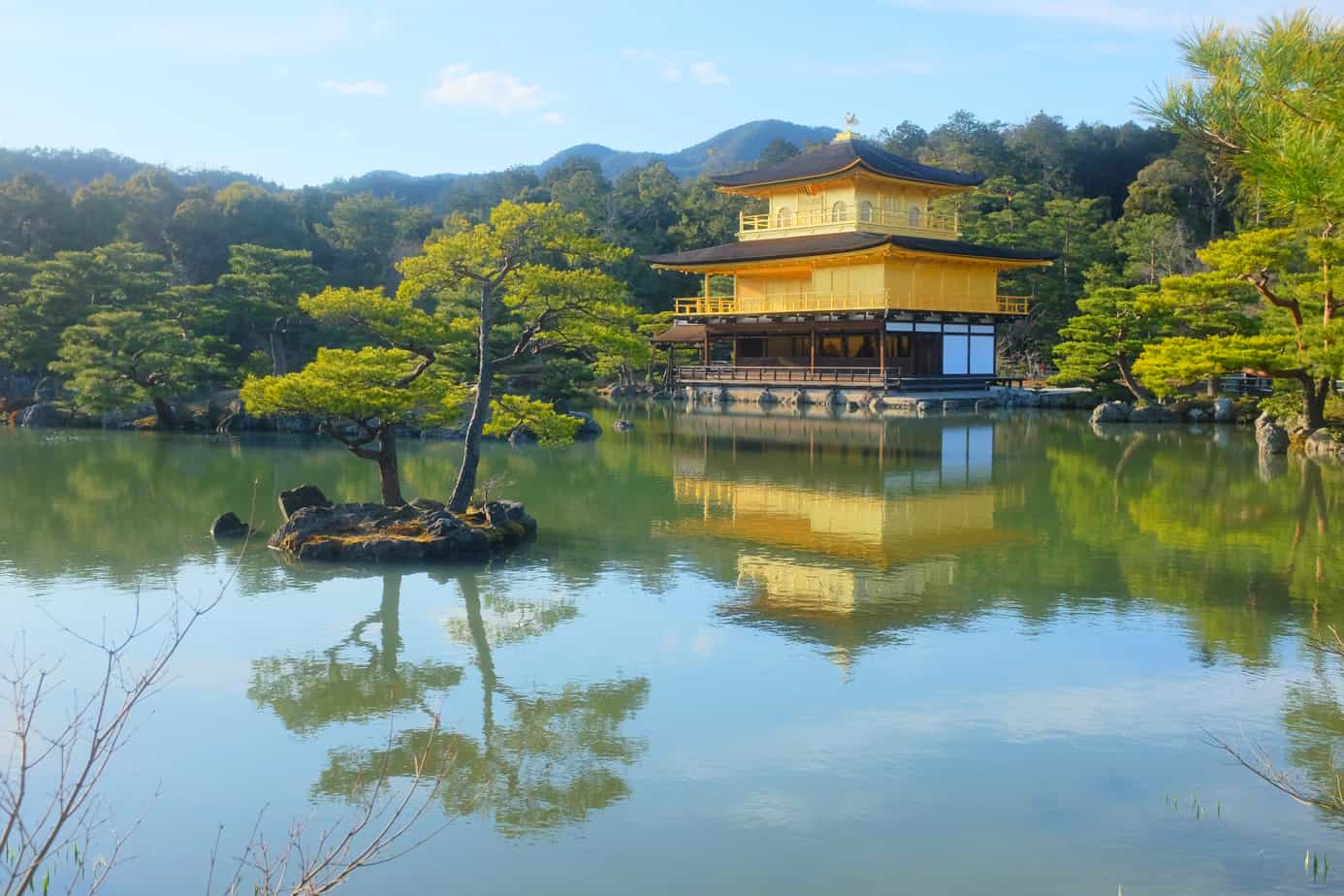
Before we start….
If you are new to this blog, I’m Bex Band – a full-time UK adventurer and founder of the women’s adventure community, Love Her Wild . I’m on a mission to make the travelling and going on adventures as easy as possible. You can read more about me here .
If you have any questions, please do use the comments box below. And for ongoing tips and inspiration, make sure you follow me on Facebook and Instagram.
2 week Japan itinerary
This is the exact itinerary of my 2 week Japan visit (note the changes I’d make below). Prices below from my Japan 2 week itinerary are all per night for 2 people sharing a double room (updated 2022). I made all the bookings online in advance.
- Tokyo – 2 nights
- Osaka – 2 nights
- Koya San – 1 night
- Miyajima – 1 night
- Kyoto – 3 nights
- Hakuba – 2 nights
- Yudanaka – 1 night
2 x nights TOKYO
What did we do: I used these 2 days to see the highlights of the city going to Shibuya park (and the crossing), taking a boat ride, seeing the markets of Asakusa and catching a show at the Robot Restaurant.
Where did we stay: Kiba Capsules Hotel – $45 A capsules hotel offering couples and single capsules. Such a great Japanese experience!!! Only worth staying here if you are a couple and looking to share as there are nicer capsule hotels available for singles. If you are looking for the best single room capsule you’ll want to check out Nine Hours .
If staying in a capsule hotel isn’t your thing I’d recommend the Knot Hotel Shinjuku ($75) which is in a great location and is a really nice hotel at a good price.
2 x nights OSAKA
What did we do: The first day I saw a sumo wrestling match and spent the evening in Dotonbori, a packed district full of restaurants, shops and lights. The second day I spent at Universal Studios.
Where did we stay: Drop Inn Osaka – $60 Basic private Ryokan rooms at an affordable price. It is a very modern hotel with a great location (walking distance from the station, which is handy) and helpful staff. I would definitely stay here again.
1 x night KOYA SAN
What did we do: This was my favourite place of the trip, don’t hesitate to visit. The journey initially seems complicated but was very easy and didn’t take long.
While there we saw the Okunoin Cemetery both in the day and at night (completely different experiences) and spent the rest of the time enjoying our temple lodgings with its traditional monk cuisine.
Where did we stay: Shukubo Fudoin – $240 (dinner & breakfast included) Incredible Temple lodgings with beautiful grounds, delicious vegan cuisine, a modern onsen and friendly monks. I loved staying here, it was a highlight of the trip. You can even join the monks in the morning to observe the morning prayer.
All the temples in the area are expensive but it is well worth the money. They also include an impressive breakfast and dinner experience.
1 x night MIYAJIMA
What did we do: We arrived on the island by early afternoon to get the cable car to the top of Mt Misen before watching the sunset behind the Torii gate.
Where did we stay: Coral Hotel – $65 (breakfast included) A simple western hotel right by the Miyajima ferry port, offering good views of the island. Basic but comfortable and cheap. We saved a lot of money by not staying on the island. The ferry is easy to catch and runs until quite late so I don’t think it’s worth spending the extra to be on Miyajima Island unless you really want to.
Another option would be to use Hiroshima as your base as you need to pass through here to get to Miyajima Island. You are then conveniently located for visiting the Atomic Bomb museum with more restaurant and nightlife options for the evenings. I’d suggest staying at Hatchobori Hiroshima ($120 breakfast included) for its convenient location.
3 x nights KYOTO
What did we do: On the way to Kyoto, we broke up the journey and stopped at Hiroshima to see the A-Bomb memorial and museum (taking about 3 hours total….it was enough time as it’s not an easy museum to take in).
We also stopped at Himeji to visit the castle (we had 3 hours in the castle). For both, you can use railway lockers at the train stations to store suitcases.
For our 3 nights in Kyoto, we hired an electric bike (about $15 a day) which provided a great way to see the never-ending temples and the palaces.
Seeing a Geisha dance was particularly memorable (only available during cherry blossom season. Tickets are hard to come by, but we used this website and asked them to organise the tickets for us). On our final morning in Kyoto, we visited NARA to see the giant Buddha and the bowing dear.
Where did we stay: Kyoto Tower Hotel – $110 A great value hotel for Kyoto which is an expensive city. The location near the station makes it a perfect base for exploring.
On a later trip to Kyoto, we stayed at Hotel tou nishinotoin kyoto ($70), a relatively new hotel that propped up in 2023. Its beautiful, comfy rooms and a beautiful hot bath.
If you want somewhere more budget then Piece Hostel ($50) is the place for you! There are also some really good Airbnb options in the area, which have the advantage of a kitchen, so you can save a lot of money on food as well.
2 x nights HAKUBA
What did we do: We arrived late in Hakuba, so we spent the evening enjoying the mountainous views and having numerous hot spring baths. The following day, I went to see the Olympic jump before having my first ever skiing lesson.
Where did we stay: Hakuba Onsen Ryokan Shiroumaso – $190 (breakfast and dinner) Just amazing! A really fantastic family-run Ryokan – don’t hesitate to stay here. This felt like traditional Japan with a lot of luxury. The food here was also great. I loved my stay here; definitely worth the price for a bit of luxury.
1 x night YUDANAKA
What did we do: We spent a night in Yudanaka, which is the closest town to see the famous Snow Monkeys. Check my review below, though, to hear my thoughts on the snow monkeys….you’ll probably want to skip this!
Where did we stay: Yudanaka Seifuso – $110 A very traditional family-run ryokan. The family don’t speak a word of English but are sweet and welcoming. The rooms were just ok. Being around the family was what made this stay nice.
What did we do: Returning to Tokyo, we spent the first day in Uneo Park, experiencing the cherry blossom in full bloom and all the festivities. The final day was spent at DisneySea – a lot of fun!
Where did we stay: Tokyo Hilton Odaiba – $220 Top, luxurious hotel – we like to finish our holidays in style. A comfortable location for the bay, close to Disney, offering a free shuttle. Well worth splashing out on. With a rooftop infinity pool (AMAZING), phenomenal service and the biggest breakfast layout I’ve seen.
What would I change?
We managed to fit in a lot more than I thought was possible because trains are just so quick and easy. They are also very comfortable and clean so I didn’t feel tired from the long journeys.
The train station lockers are great for fitting in quick stops to see sights along the way without needing to stay overnight.
This 2 week Japan itinerary was busy but I felt like it was a good pace. The hot onsen most evenings meant that I felt like I got lots of relaxation time even though most days we were on the move and seeing lots.
Koya San, although a bit tricky to get to, really is a definite. Miyajima makes a great day out, but I wouldn’t spend any more than a day there.
Hakuba also turned out to be really fun, and I loved skiing, seeing the mountains and also experiencing a different side to Japan. If you weren’t keen on skiing, though, I would skip Hakuba in favour of Kanazawa.
The biggest disappointment was Yudanaka . It was expensive to get to (it wasn’t covered by the JR Pass) and took a long time. The monkeys themselves are in a grotty area, and there really is nothing else to do in the area. They throw rice into the pools to make the monkeys go in them as it wasn’t that cold when I was there. Don’t go – it’s not worth it!
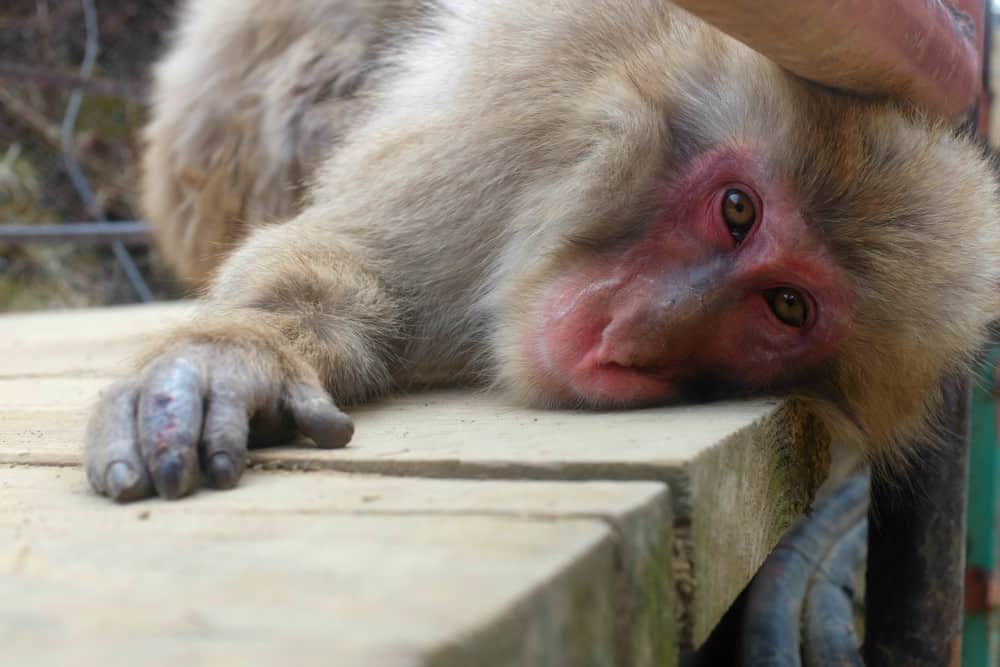
If I dropped Yudanaka and Hakuba from the 2 week Japan Itinerary, I would have spent the extra days in Kanazawa visiting the famous garden and art museum with an overnight visit to Shirakawa-go and Gokayama on the way back to Toyko (see my suggested alternative Japan 2 week itinerary below).
Some people suggest spending more time in Tokyo and Kyoto. For me, 3 days exploring both was enough time. Although there was more I wanted to see in Kyoto, it is also very touristy, so I was happy to have a change after a few days.
Alternative Japan 2-week itinerary
With all that in mind – if you weren’t desperate to see the snow monkeys or try your hand skiing, then this could be an alternative itinerary:
- Koy San – 1 night
- Miyajima – 1 night (staying in Hiroshima and doing Miyajima as a day trip)
- Kyoto – 3 nights (day trip to Nara)
- Kanazawa – 2 nights
- Shirakawa-go and Gokayama – 1 night
Travel insurance for Japan
On my most recent journey, my luggage was misplaced during the connecting flight to Tokyo, resulting in me spending the first five days of my trip without my checked bag. Fortunately, the airport located my bag and sent it to my hotel. This experience underscores the crucial importance of travel insurance. It’s advisable to purchase it as soon as you book your flights.
World Nomads Travel Insurance
It’s important that you have travel insurance for your travels. World Nomads are a travel insurer that I’ve used multiple times before for my adventures. World Nomads covers more than 150 adventure sports and activities and worldwide coverage.
I’m part of World Nomads’ affiliate program (which means I get a small recommenders fee if you choose to use them, at no extra cost to you). Get a quote here .
When is the best time to visit Japan?
The most obvious answer is Spring to see the cherry blossom. Although it was busy, it was mostly with Japanese tourists who were quiet and considerate, so the crowds didn’t feel too much.
It is well worth going for the blossom as it makes the whole country look so pretty and there is a real sense of excitement and celebration. It will also give you an opportunity to see the Geisha Spring Dance. Weatherwise it was sunny and pleasant but still a bit cold. Most days I was wearing my coat. It didn’t rain once while we were there.
Japan has very defined seasons. Summer can get very hot and uncomfortable and winter can be bitterly cold, even snowing. For this reason, Autumn is a more comfortable time to travel if you don’t want to go in spring. The Autumn colours across the country are also very pretty!
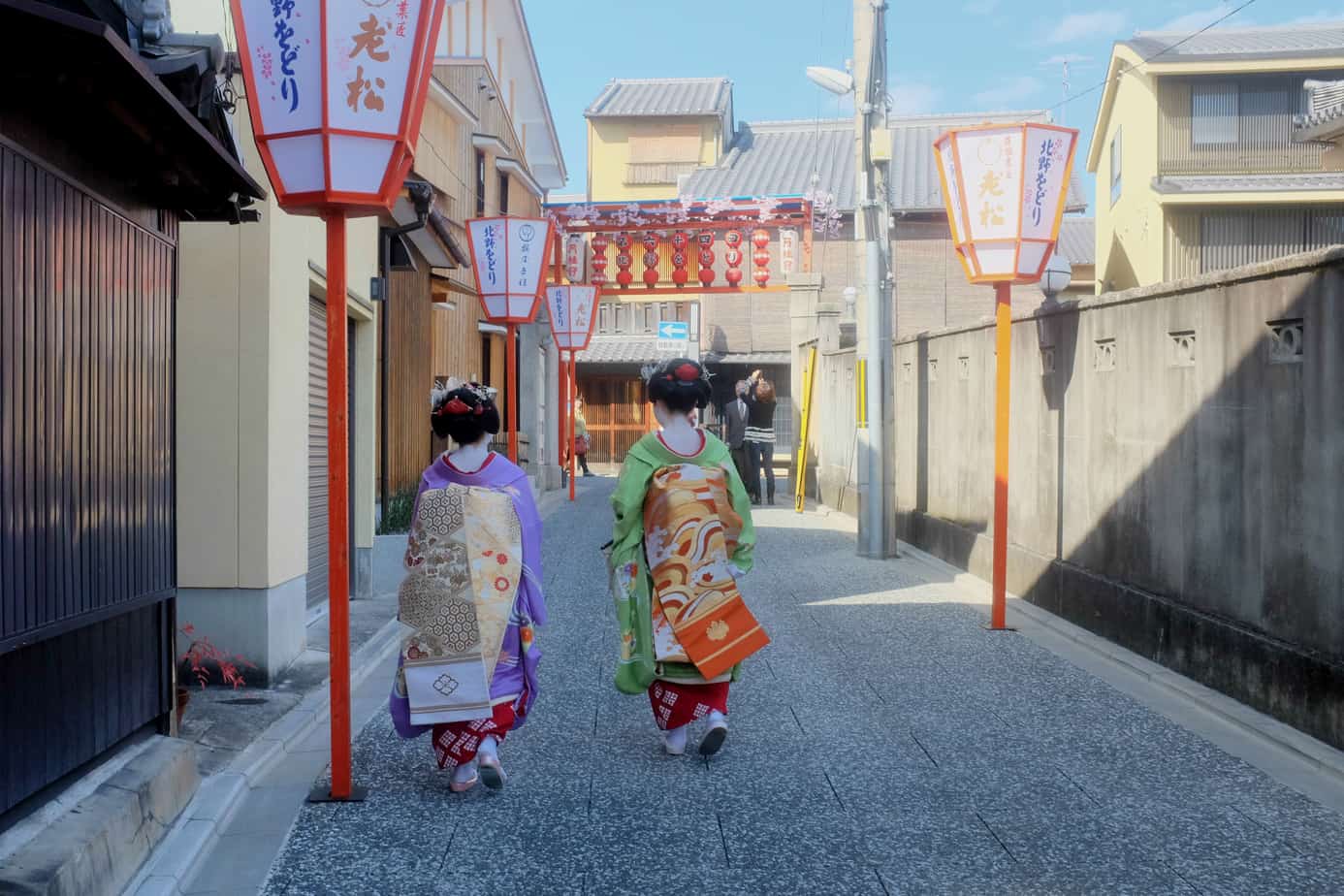
Japan Rail Pass – a must!!
The trains in Japan are very expensive. But if you are a visiting tourist, you are eligible for a Japan Rail Pass. Getting this card is a no-brainer. It will give you unlimited travel across most of Japan’s rail network, allowing you free access to visit all the major places – Tokyo, Kyoto, Hiroshima, Kanazawa, Osaka, etc, etc.
The cost for the pass is:
7 Days – $279 14 Days – $445 21 Days – $570
To get a railcard, just follow this link and purchase the length of time that you want. Do this in advance of your holiday. When you arrive in Japan, head to the JRP help desk (you’ll find them in airports and train stations) and swap your receipt for your bass booklet. There can sometimes be a bit of a queue so factor this in.
I’d suggest reading this helpful guide to using the pass, which says where you can exchange your pass, where it is valid and how to reserve your seats. It is helpful to reserve seats if you can (it’s easy to do) as some of the journeys we took were busy, and we would have been standing otherwise.
How much does 2 weeks in Japan cost?
The budget below is based per person for the entire 2 week Japan Itinerary laid out above.
The accommodation, which was double rooms shared between 2, has been split in half.
Our accommodation was a mix of budget stays with a few nights of luxury. We didn’t hold back on tickets or events…they’re just too good to miss. Food-wise I was more on the lower end budget (especially as I am a vegetarian) – eating from bakeries, supermarkets, and street food to save costs – with a few exceptions on expensive set menu meals.
Japan being expensive is a bit of a misconception!
I was really surprised by how cheap the holiday worked out to be. The Japan Rail Pass meant that we were able to travel a huge amount at a set price (we definitely got our money’s worth!) and most of the attractions we visited (like temples and museums) only cost a couple of pounds to go in or were free.
It’s not what you would call a cheap destination but it also wasn’t crazy expensive. I found it cheaper than London prices.
Breakdown of budget for 2 weeks in Japan:
Flights (from London to Tokyo return, via Warsaw on using Lot airlines)- $830 Accommodation – $870 Transport (14-day Japan Rail pass) – $360 Food (Daily cost averaged $30, which in most cases was street food lunch/snacks and a low-average priced dinner) – $420 Sumo Wrestling tickets – $80 Geisha Dance Tickets – $60 Universal Studio Tickets (with express 7 pass) – $80 DisneySea Ticket – $60 Skiing (equipment hire, lift pass and a private 2-hour lesson) – $150 Daily costs (averaging $20 a day for entry to temples, drinks, and small souvenirs) – $280
TOTAL – $3190 (roughly £2,553)
Top tips for visiting Japan
…….Buying the tickets in advance is essential as everything sells out – but problematic because the sites are all in Japanese. We used Buy Sumo Tickets who were brilliant. Not only did they get us sumo tickets but they also brought our Geisha show and Universal Studio tickets for just a small fee.
………I struggled with the food, especially as I am a vegetarian and wish I had brought some snack bars with me to save me the hassle of finding something for the journeys. The supermarkets are bizarre and I often had no idea what I was buying!
……….vegetarian? It’s not an easy country to be veggie in. Check out my Guide to being a vegetarian in Japan for some top tips.
…….If you eat fish, bento boxes are great. These are packed lunches that you can buy for journeys or picnics. You can get them from stall holders and shops in rail stations and shopping malls.
……Tipping is not the done thing in Japan and is even considered rude.
…..Ryokan’s are traditional Japanese inns. You should try to stay in at least one for the experience. They are often cheaper than in Western hotels. I can also recommend checking out Airbnb, especially for longer stays, if you are trying to save money.
……If you stay in a ryokan, you will need to take your shoes off before entering either the building or the room. There will be slippers available for you to use and somewhere to store your shoes.
……I was surprised that barely anyone spoke English. People are incredibly kind and helpful, though, so I never got stuck. If there is something you need to communicate (like eating preferences), get someone with good English to write it down in Japanese on a piece of paper that you can show people.
……Unless you are happy being naked in front of other people, you will need to book hotels with private onsen which are considerably more expensive. The Japanese are incredibly polite and discrete so public bathing isn’t daunting. Learn the etiquette before you go through it.
…….There are lots of new customs to get used to in Japan but don’t worry about offending people. The Japanese are very forgiving and understanding!
……..I’d recommend reading these books before heading to Japan:
- Lonely Planet Japan – offers the most comprehensive guide to travelling around Japan
- Memoirs of a Geisha – the streets of Kyoto come alive in this gripping story told from the perspective of a Geisha living in Japan
- Shogun – another gripping international bestseller set in Japan!
- Death Note – anime is everywhere in Japan and is read by people of all ages. Don’t knock it till you’ve tried it! The Death Note series is a really good anime book to start with.
You can stay updated with my adventures and advice on Facebook and Instagram . Or you can subscribe to my YouTube channel . I give all my advice for free on my website. If you want to say thanks, you can buy me a coffee !
Good luck with your Japan travels……please use the comments below to ask questions or to let me know how you get on 🙂

- Follow Follow
24 Comments
Great post!
Thanks Explore 🙂
Really useful post, thank you. Your travelling style is very much like ours, a mix of local and luxury.
Thank you Carole…I’m glad it was helpful! I think a mix of local and luxury makes for the perfect hol. Enjoy Japan!! 🙂
I really liked the info here thanks. I am thinking of visiting Japan next year alone but I’m a fit 72 and wondered if you, as an experienced traveller to Japan, could advise if would be okay with the travelling and also the hostel accommodation. I would appreciate any comments you may have thanks Tess
Thank you Tess. Absolutely….I can’t see any reason why you can’t travel Japan and use the hostel accommodation. Japan is very clean and comfortable no matter what budget level you use! Most of the travellers I met there were a little older. Good luck with your trip. Japan is a brilliant country! 🙂
Thanks Bex. I love traveling alone as I find I meet more people that way and get a better insight into the culture and people. When I go I’ll let you know how I get on thanks again
I think so too! Do let me know how you get on 🙂
Hello Bex, as I am planning a trip to Japan, I made a search and your site popped up. Not only did I find this post particularly useful, but I found your whole site very enjoyable. You have a very nice writing style, keep it up! Cheers Ged
Thank you so much Ged!! Your kind words made my day 🙂
Good blog thanks, very useful tips. Had a couple of gripes about grammar but hey I am the grammar police! Thanks for the insights. Not sure about if it’s worth buying a JR pass if you don’t want to run from one place to another, still weighing that up. Hoping to go to Japan in the fall.
I’m dyslexic so there’s not much I can do about that I’m afraid! It’s probably worth calculating the cost of individual journeys you may take and then comparing it to the railcard. Usually the railcard works out cheaper even if only for a couple of day trips.
Hey, thanks for this post! Maybe I missed it but I wasn’t sure what currency your budget was? Is it USD?
Budget is in USD 🙂
Very informative! Thanks!
Thank you Joanne. Really happy it was of help! 🙂
Hi. We’re planning a trip to Japan for my birthday. This is really helpful. Thank you. Quick question though… is the $2300 per person or for both of you already? Thanks in advance for your reply. ^^
Glad it is helpful! It was $2300 for each of us….so $4600 in total for 2 🙂
Great post! Thanks for sharing the knowledge and keep up the good work.
Thank you Brian!
I’ve been looking around at a bunch of different websites and they say around $4,000 per person, but you say about $2,300 per person. Would it be a better trip if a saved more than what you had?
It’s hard to say as traveling is always very personal. We did a mix of cheap places and then splashed out in some luxury places. So it would depend on your spending habits. I didn’t feel like I needed to spend any more money though.
I’m planning my first trip to Japan in November, and I think I will follow a similar itinerary to the one you propose (skipping the monkeys!) so I was delighted to find your very informative post 🙂 I have one question: did you go straight from Koy San to Miyajima, or did you stop in Osaka or Hiroshima in between? Many thanks!
We stopped in Hiroshima to see the museum then stayed at a hotel by the ferry port to Miyajima. You can get from Koya San to the island in a day but accomodation on Miyajima is very expensive so it’s cheaper to stay in Hiroshima.
Submit a Comment Cancel reply
Your email address will not be published. Required fields are marked *
Submit Comment
Related Posts
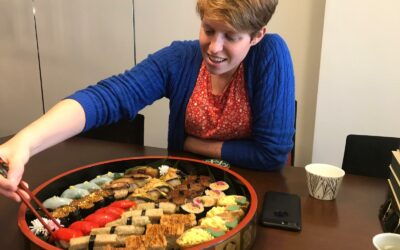
Vegan & vegetarian in Japan | Ultimate Guide (2024)
Being a vegan or vegetarian in Japan is definitely not easy at times. I knew that fish featured highly in Japanese cusine, but it amazed me just how...
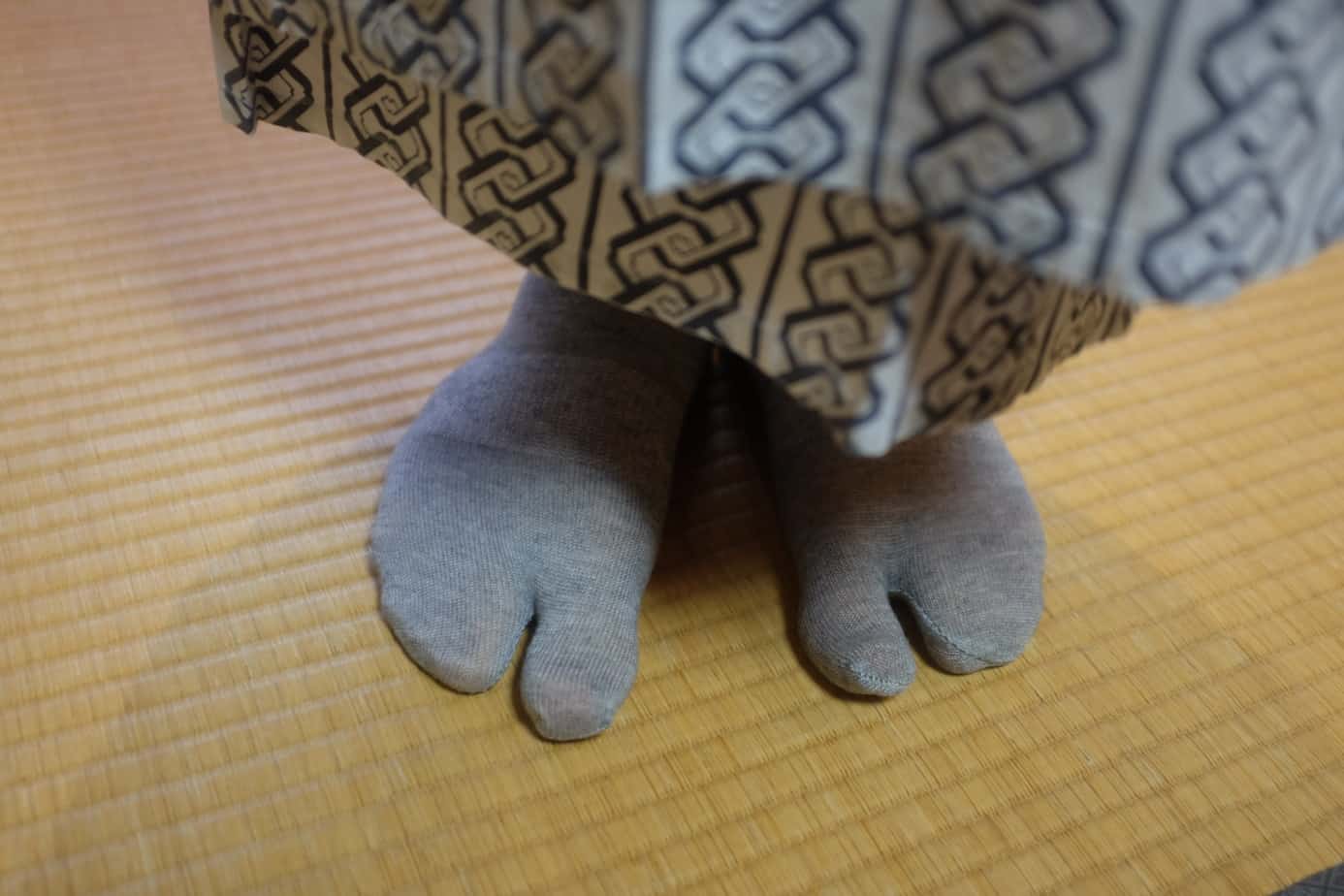
Japan: Hakuba, the Snow Monkeys and Tokyo
Catch up with the final travel Journal from our 2 weeks trip to Japan (for a full breakdown of our itinerary and budget, check out Japan itinerary 2...
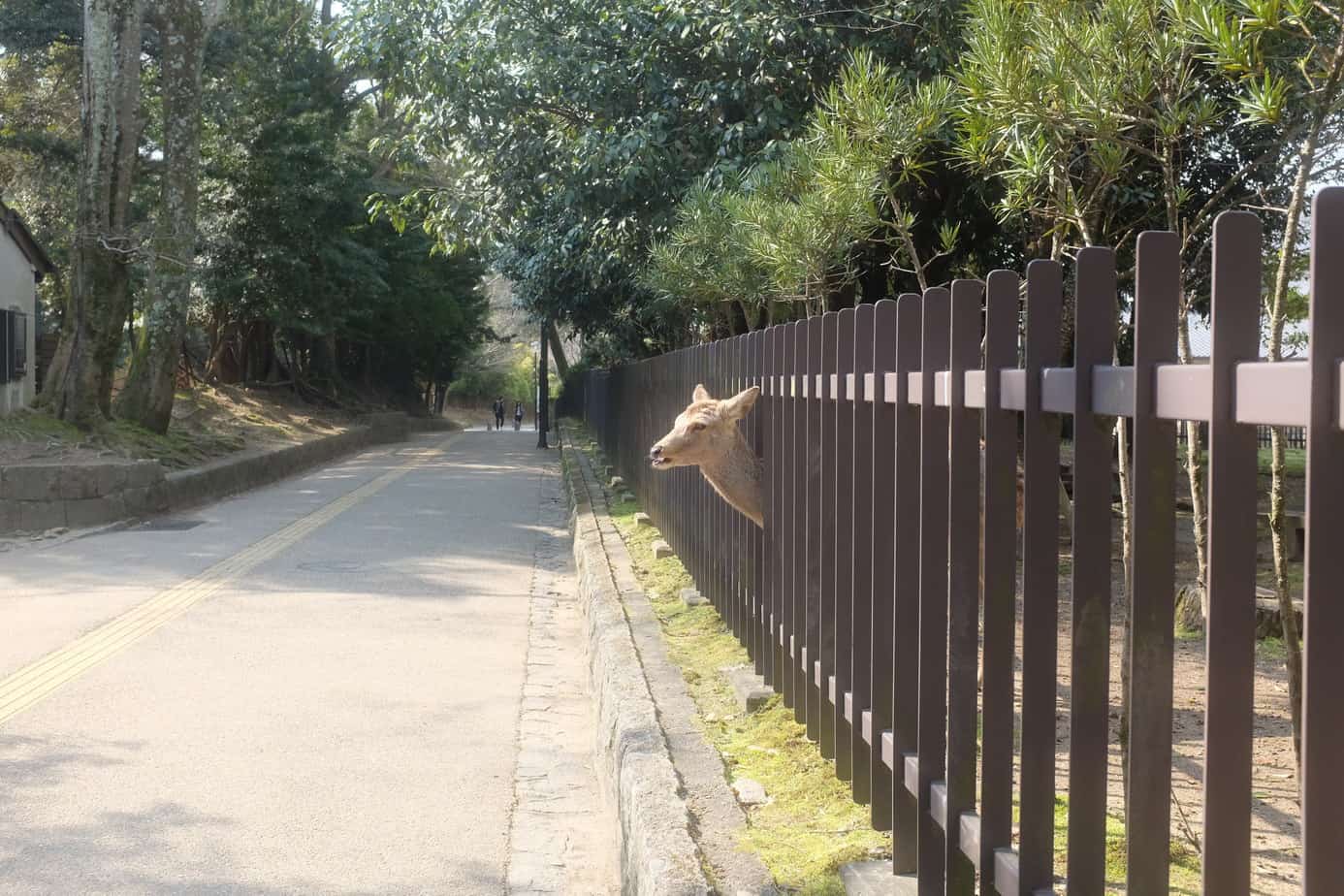
Japan: Miyajima, Hiroshima and Kyoto
This is my second journal from my 2-week visit to Japan. For a full breakdown of our itinerary and budget, check out Japan itinerary 2 weeks. We had...

Adventures, updates and tips to your inbox!
Join over 3,500+ others and subscribe to my newsletter., you have successfully subscribed.
By subscribing, you consent to the processing of your personal data in according with our privacy policy - link in the footer.

2 Weeks in Japan – An Alternative Itinerary
Updated December 4, 2020
// By Margherita
Oh Japan! One of our favourite travel destinations EVER! This guest post is brought to you by Martina from The Global Curious – if you’re planning to spend 2 weeks in Japan but want to escape tourist traps, this alternative Japan itinerary should be just what you need!
Regardless of your travel expertise, deciding how to spend 2 weeks in Japan is tough! There’s just SO much to do and discover. Of course, you could easily follow the classic itinerary. But mind you, when trying to figure out your own version of a perfect Japan trip, you’ll likely end up suffering from Backpacker’s Indecision.
One of the most common ways for touring Japan is to buy the JR Pass – Japan Rail Pass – and hop on a bullet train every morning to go on a day trip. Believe it or not, there are other ways to come face to face with the land of the rising sun.
In this article, you’ll find a bit of an alternative 2 weeks itinerary to Japan. No JR Pass and Shinkansen bullet trains, just your classic public buses and local trains. You’ll still visit some of Japan’s main highlights but will also find off-the-beaten-path destinations – plus a dose of hiking and nature!
If you’re planning to visit Fukuoka as well, make sure you bookmark our post about the best day trips from Fukuoka !
How to Get to Japan
With Japan’s 2 main international airports located around Tokyo , this is where most visitors begin their trip. Narita Airpor t receives about 50% of the international flights. Haneda Airport also operates overseas flights from the US and neighbouring countries, and it’s the main domestic airport in Japan.
It’s also possible to reach Japan by ferry from South Korea , China, and Russia. There used to be a ferry connecting Taiwan and Japan, but it’s not operating anymore.

How to Travel Around Japan
Japan rail pass.
The JR Pass is an extensive travel pass covering both Shinkansen -bullet trains-, local trains, buses, and ferries all over Japan. It is, for most types of itineraries, the best way to get around, especially if you are planning to go on day trips, or cover long distances.
The JR Pass is valid for 7 days – 269 USD -, 14 days -428 USD – and 21 days -549 USD. The main drawback is that you must purchase your pass before your trip starts. It’s not possible to pick up the pass once you are in Japan as it is sent to your address overseas, so it’s essential to plan ahead!
You can also get it from an authorised re-seller outside Japan. The point is, you need to have the pass before arriving in the country.
Another thing to consider before purchasing the JR Pass is that it’s valid only for consecutive days instead of travel days. This means that once you activate the pass, you can use it as much as you can for 7, 14, or 21 days in a row.
You won’t need the JR Pass for this 2 weeks itinerary to Japan as some trips are not fully covered. Some visitors find it hard to get around without the pass, so simply avoid trips not included in it.
In a way, by going to spots ‘beyond’ the JR, you’ll be beating the crowds a bit!
If you still wanted to get the JR Pass but just realised you are not able to get it on time, then let this article come to your travel-planning rescue!
Japan’s Transport Network
A great tip for getting around Japan is simply to search for directions on Google Maps. All the travel network is loaded there: costs, options, frequency. You can absolutely trust the information.
What’s more, public transport workers are extremely efficient. If you get lost, just ask them, they will even run next to you to get you into the right train -true story.
Apart from Shinkansen trains -bullet trains- there are also local trains, buses, and ferries. It’s possible to rent a car, but the cost of road tolls on the main highways can be extremely expensive.
Best Time to Visit Japan
Long story short: Japan is astounding year-round!
You can go on a skiing adventure over winter , relish on the cherry blossoms during spring , or count autumn’s intense shades of red.
The one season that’s a bit neglected by travellers is summer ! Fair enough. It gets boiling hot. Still, summer is a fantastic time of the year to visit. Especially over July as you get to enjoy the country’s unique summer festivals .
Currency and Types of Payment
Japan’s currency is the Japanese Yen. 1000 ¥ equal, roughly, 10 USD.
When it comes to paying with an international credit card, you’d be surprised to know that foreign cards are not so widely accepted. They are quite cash-based, so it’s better to either exchange currency or withdraw cash from an ATM to get around easily.

What Makes This Japan 2 Weeks Itinerary Special?
As mentioned before, this itinerary doesn’t use the Japan Rail Pass.
Also, Hiroshima is not included in this trip. Many people visiting Japan use the JR Pass to visit Hiroshima for a few hours. This itinerary will, instead, focus on a balance between main sights, nature, and sacred places.
Japanese culture is extremely rich, and a visit to the southern regions -where Hiroshima is- deserves a trip on their own.
As you’ve read at the beginning, it’s tough sometimes to decide and pick priorities when planning a trip! So forget everything you’ve read about how to travel in Japan and check this itinerary with an open mind -you won’t regret it.
What to Pack for This 2 Week Itinerary in Japan?
We followed this itinerary over summer -it was part of a 6 weeks trip actually- but you can do it year-round.
Some of the hikes we did, like a section of Mt Fuji and the Nakasendo Trail from Nakatsugawa, are not included in this trip. If you were visiting between July to early September, you can do the Mt Fuji ascent and even spend the night there.
As there’s going to be a bit of hiking in this itinerary , you’ll need some outdoor gear staples like your hiking boots , and, obviously, your backpack.
2 Weeks Japan Itinerary
Day 1 – arriving in tokyo.
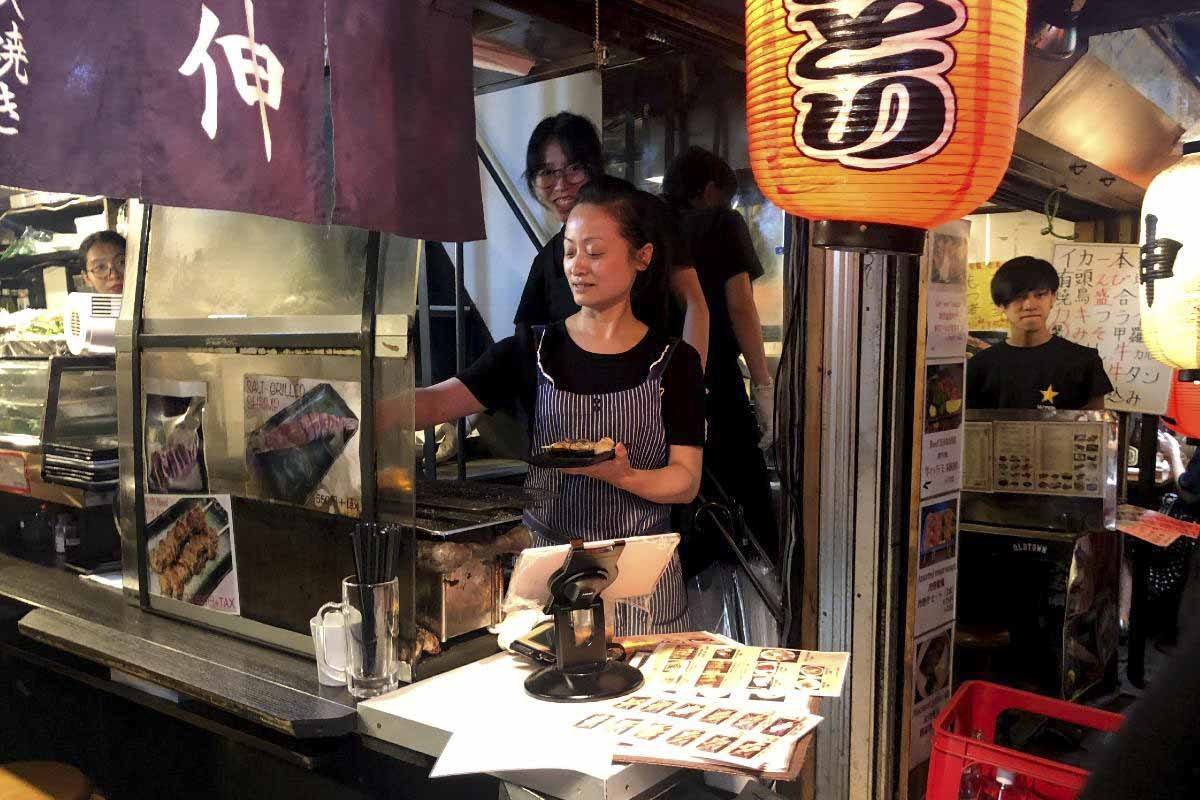
After arriving at either Narita or Haneda airports, hop on any of the many trains and buses heading to Tokyo. The trip from Narita takes about one hour. From Haneda, it’s about twenty minutes to one hour.
Of course, it will depend on your arrival time how much you get to enjoy the first day of your trip. But start big and go check out Shinjuku, Tokyo’s nightlife hub.
A great option to kickstart your Japanese travels is to book a free walking tour of Shinjuku or take a walking tour with a local , where you’ll learn about the history of this cool, quirky, and also shady neighbourhood.
The Shinjuku night tours usually end at Omoide Yokocho, a group of alleys crammed with Izakaya pubs -sort of tapas, Japanese style. You can also take Izakaya tours if you don’t feel like exploring independently.
The magic happens when you sit at one of these informal eateries with only ten seats or so and order assorted grilled nibbles that are beyond delish. Finish it up with a sip of sake, yay! Welcome to Japan!
Day 2 – Shibuya, Meiji Shrine, Harajuku, and Takeshita Street
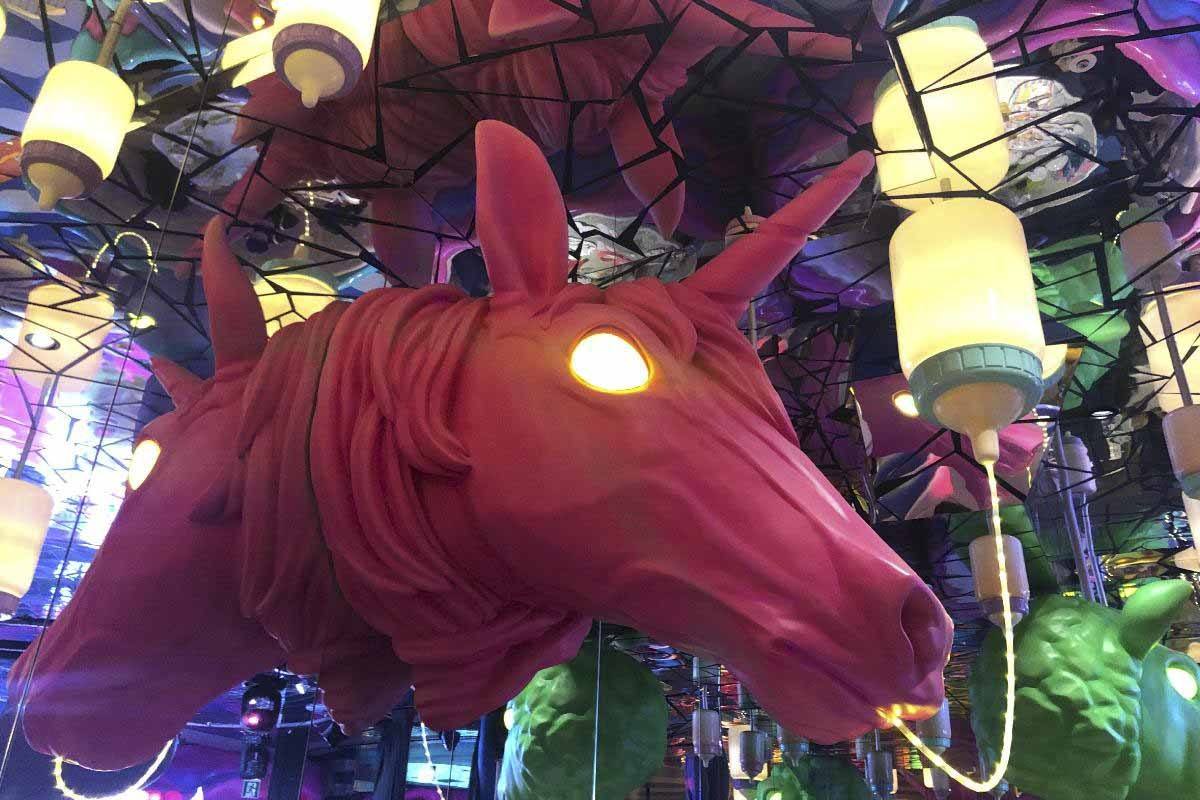
Kick-off day 2 at the Shibuya crossing . This intersection is the busiest in the world ! All traffic stops every couple of minutes to allow over 2500 people to cross in all directions at the time.
The most shocking thins about this crossing is how silent it is despite the crowds -pay attention, you’ll see!
You’ll spend most of this day wandering the streets of Shibuya, leading to Takeshita Street, in the Harajuku district. Takeshita Street is packed with people, costumes, fun stores, bubble tea shops, and sushi-train restaurants. You could spend the whole day here just loving Japanese ingenuity and pop culture.
Devote 1 or 2 hours to wander the forests of the Meiji Shrine. This will probably be your first of many visits to a Shinto Shrine.
If you are in for something truly unique but lack the budget or time to go to the Tokyo Robot Restaurant, visit the Kawaii Monster Cafe. Think Andy Warhol, Alice in Wonderland, and Hello Kitty on steroids. Then multiply it by 10. There you go! Book a time-slot online as it will save you time on the line.
Day 3 – Akihabara, Ueno, and Asakusa
Anime and games aficionados will be in heaven in any of Akihabara’s huge stores and exhibits. We highly recommend taking a tour of Akibahara to discover Otaku culture – or else you can just wander around these huge department stores independently!
However, the day must go on and Ueno’s park is -just near Akihabara- a great stop. Both neighbourhoods can be toured with a free walking tour that will take you to the main highlights of both. History buffs will enjoy a stroll around Asakusa, one of Tokyo’s historic districts.
Enjoy the last few hours left in Tokyo as it’s time to head to Kyoto on the night bus.
If you don’t have the Japan Rail Pass, you’ll likely head to Kyoto by bus. Several companies offer the night service from Tokyo to Kyoto. We chose Kosokubus and purchased 2 tickets for a total of 55 USD. Plus, we also saved one night of accommodation.
As this itinerary focuses on nature sights, you won’t be hanging out in cities too much. Still, if you have more time to spare or want to get to know Tokyo to the core , then be my guest!
Day 4 – Sightseeing Kyoto

Let’s have an easy day today. If you took the night bus, you’ll arrive in Kyoto around 6/8 am. You can leave your backpack in the lockers at the station, or head to your accommodation and drop your luggage there.
Take the morning to stroll around town, and have brekkie at the Nishiki Market . You can also join Kyoto’s free walking tour or visit one of the city’s main highlights.
One of my personal spots was Kinkaku-Ji, The Golden Pavilion . In all honesty, it’s quite touristy, but it’s unique. It’s not possible to go inside the temple, so follow the crowds circling around the temple’s pond. Allow about 1 hour for your visit.
Head to Gion at nighttime . This area, known as the ‘Geisha neighbourhood,’ encompasses all the charm of ancient times. Traditional Japanese lanterns, red bridges crossing the Kamo river, and people buzzing around looking for a dining spot will draw you into the beauty of Japan.
Day 5 – Visiting Kyoto’s Most Famous Temples
Choose 2 or 3 temples and shrines and devote your day to exploring these. There are 17 UNESCO World Heritage sites in Kyoto , so pick wisely!
After a hearty breakfast and a restful night, start exploring the Higashiyama Ward , one of Kyoto’s historic districts. Many temples and shrines -like Kiyomizu-Dera- are within walking distance, so plan to spend quite a bit of your day here.
Once you are ready to keep going, make your way south and visit the Fushimi-Inari Shrine. This is my personal favorite spot in Kyoto. You can hike up to the summit of Mt. Inari-san walking under a gazillion Tori gates surrounded by sculptures, little shrines, trees, and just total forest-magic.
This shrine is very touristic, but you’ll leave the crowds behind as you ascent. Doing the whole hike can take up to 3 hours, but you can come back at any stage, so just do as you please.
Consider this your first experience combining a bit of hiking with sacred sites . Both are very important in the Japanese ancient culture of pilgrims and spirituality.
Fushimi-Inari is always open and it’s free of cost. Head there in the late hours of the afternoon and catch the beautiful sunset views from the hills.
If you want to know more about this fascinating city, check out our Kyoto off the beaten path post!
Day 5 – Heading to Osaka and Exploring the City
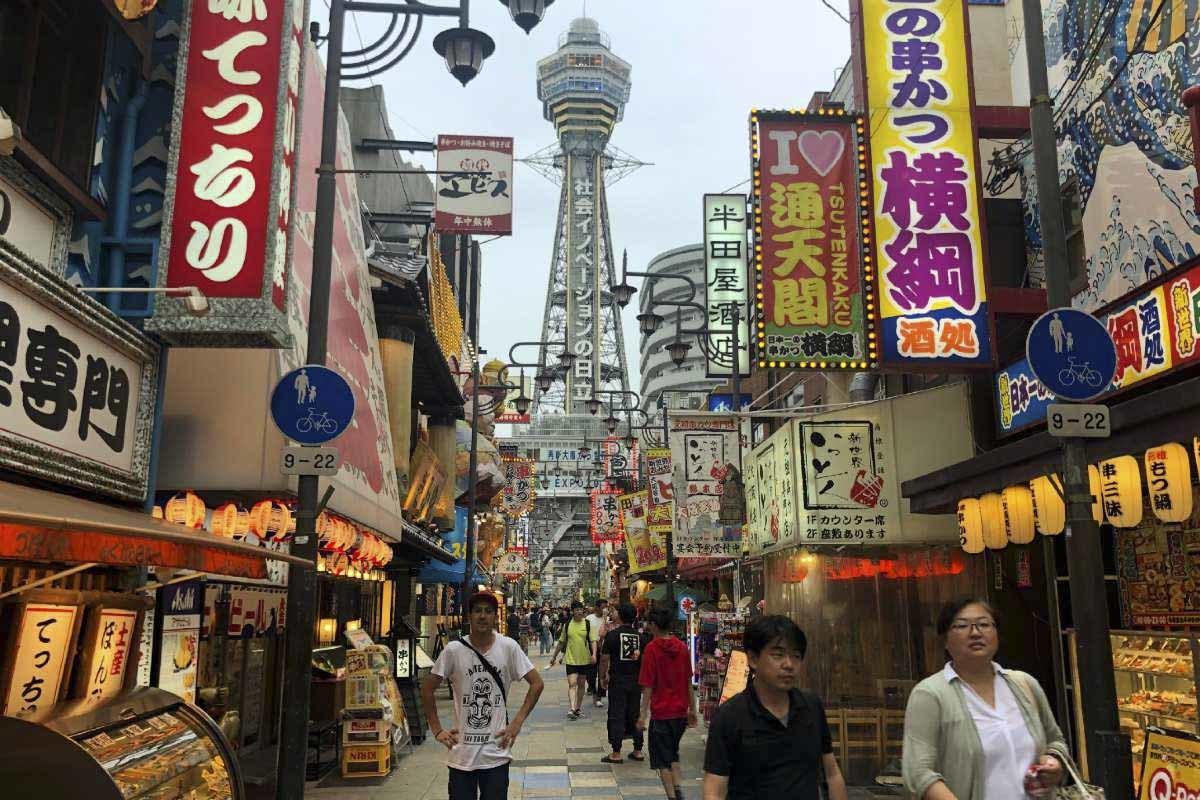
Time to wave Kyoto goodbye and head to Osaka!
You’ll travel by train from Kyoto Station to Shin-Osaka station. Of course, this can vary according to where you’ve booked your accommodation.
For a quick, easy, and cheap Shinkansen experience, buy your tickets for about 30 USD and hop on a 12-minutes trip. If you rather stay on the cheap -hola!- get a 5 USD train ticket and enjoy a 23-minutes ride.
Osaka is very easy to navigate! I personally prefer it to Tokyo. It’s really funky, and the food is glorious, regardless of your budget.
Most itineraries include the Osaka Castle but, you must know it’s a replica. The people I talked to said the entrance fee is not worth it. So just head there if you are keen, walk around the castle’s precinct, and learn about its history and relevance.
Spend the rest of your day enjoying Osaka’s eclectic and quirky vibes! Explore the streets of Shinsekai. Snack your way across the town’s covered markets . Take the mandatory pics at Doton-Bori. Have your ramen fix at famous Ichiran and just have fun!
If you visit in July, check out the dates for the Tenjin Matsuri , and try to plan around it. The Tenjin Matsuri is one of the 3 most important festivals in the country, and, simply put, a surreal experience. You’ll see.
Day 6 – Day Trip From Osaka to Koyasan
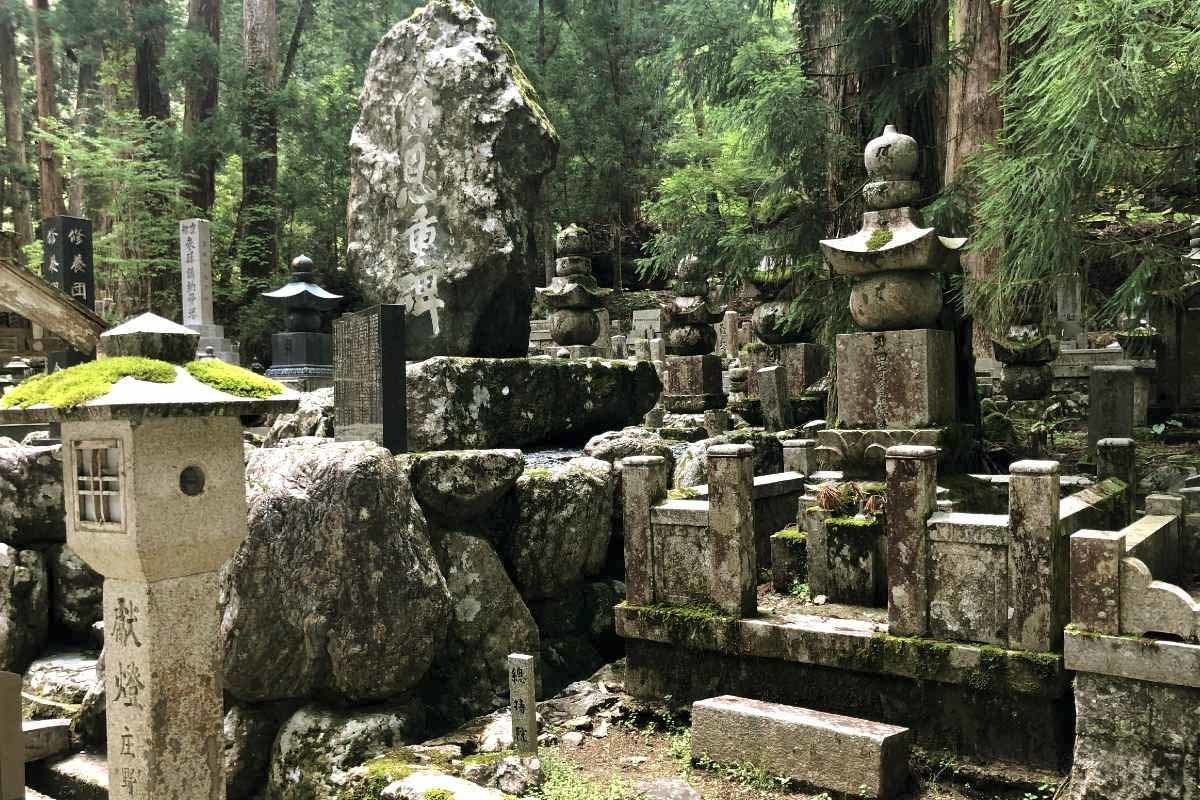
In most travel guides, you’d find the option of a day trip from Osaka to Nara. However, even though Nara is lovely and famous for good reason -the town’s sacred deers- it didn’t blow my mind.
This is why if you want to get to know the heart of Japan, even if only on a 2 weeks trip, you should definitely head to Koyasan.
Koyasan is not as touristy, and it’s still considered to be a bit off-the-beaten-path. This 2 hours trip is not fully covered by the Japan Rail Pass, so many people skip it as an option.
But not you!
In a few words, Koyasan -aka Mt Koya- is one of Japan’s most sacred places, sitting on the mountains of the country’s spiritual heart, the Wakayama Peninsula . Plan to spend the whole day here, visiting the area’s sights at your own leisure.
The main highlight here is the Okunoin Cemetery , where Kobo Daishi, founder of the millenary Shingon Buddhism, rests in eternal meditation.
The cemetery is nestled amongst the mountains and the forest. It holds over 200,000 graveyards, and after your traverse its length, you’ll encounter a series of stunning temples, shrines, and monks in meditation.
Koyasan sits 64 km south of Osaka. The best way to get there is to get the Nankai Railways’ Pass that connects the city with Koyasan. The pass includes round-trip train rides, the cablecar, local buses to get around Koyasan, and ticket discounts. You can buy it at the station counter on the same day of your trip, cash only.
Day 7 – Going from Osaka to Tanabe
Time to get ready for hiking some sections of the Kumano Kodo ! As promised, this Japan 2 week itinerary will take you to nature spots where you can get to know the Japanese culture and its ancient traditions.
On this day, you’ll go from Osaka to Tanabe . Tanabe is a city within the Wakayama Prefecture, overlooking the Pacific Ocean. In all honesty, the city is quite dull and even a bit grim. Still, it’s the perfect base for exploring one of Japan’s most regarded natural and spiritual treasures: the Kumano Kodo.
The Kumano Kodo is the name of a pilgrimage route network that has been traversed by people from all walks of life for over 1000 years.
This is the only route, apart from the Camino de Santiago that’s been recognised as UNESCO World Heritage. Many original tracks still remain, but the most popular one is the Nakahechi route. The trail starts in Tanabe and finishes in Nachi Taisha, just by the glorious Nachi Falls.
So on this day, you’ll focus on arriving in Tanabe , resting a bit, and getting ready for day 8!
Organizing Your Kumano Kodo Experience
It can be confusing to organise this leg of the trip as buses stop on different parts of the trail. There are also many side trips, and people do it either as a day or a multi day trip. There are no campsites, but you can book accommodation along the way.
The walk is not just nature. You’ll also go through small beautiful villages, Tori gates, little shrines, big shrines, hot springs, hills, forest, and all the magic of Japan.
For this itinerary, we won’t focus on the overnight options of the trail, but on doing some of the hikes on the west side of the Nakahechi route, with base in Tanabe , and then heading to the east of the Kii Peninsula and do one of the sections closer to it.
To go from Osaka to Tanabe, you can take the train from Shin-Osak a and be there in about 2.5 or 4 hours. The faster options takes 2.5 hours and cost around 45 USD.
However, you could also take the Osaka Loop Line from Osaka Station -not Shin-Osaka- and then combine with the Kinokuni Line. The trip will take nearly 4 hours, and costs about 30 USD.
Try to arrive early-ish so you can go confirm all the details of your trip at the Kumano Travel Support Center.
In there, you can get the local bus schedule and ask any questions about logistics, hiking distances, and circuits.
The Nakahechi route remains as the most important as it links the trail’s main 3 shrines: Hayatama Taisha, Nachi Taisha, and Hongu Taisha.
Day 8 – Hiking the Kumano Kodo – Day 1
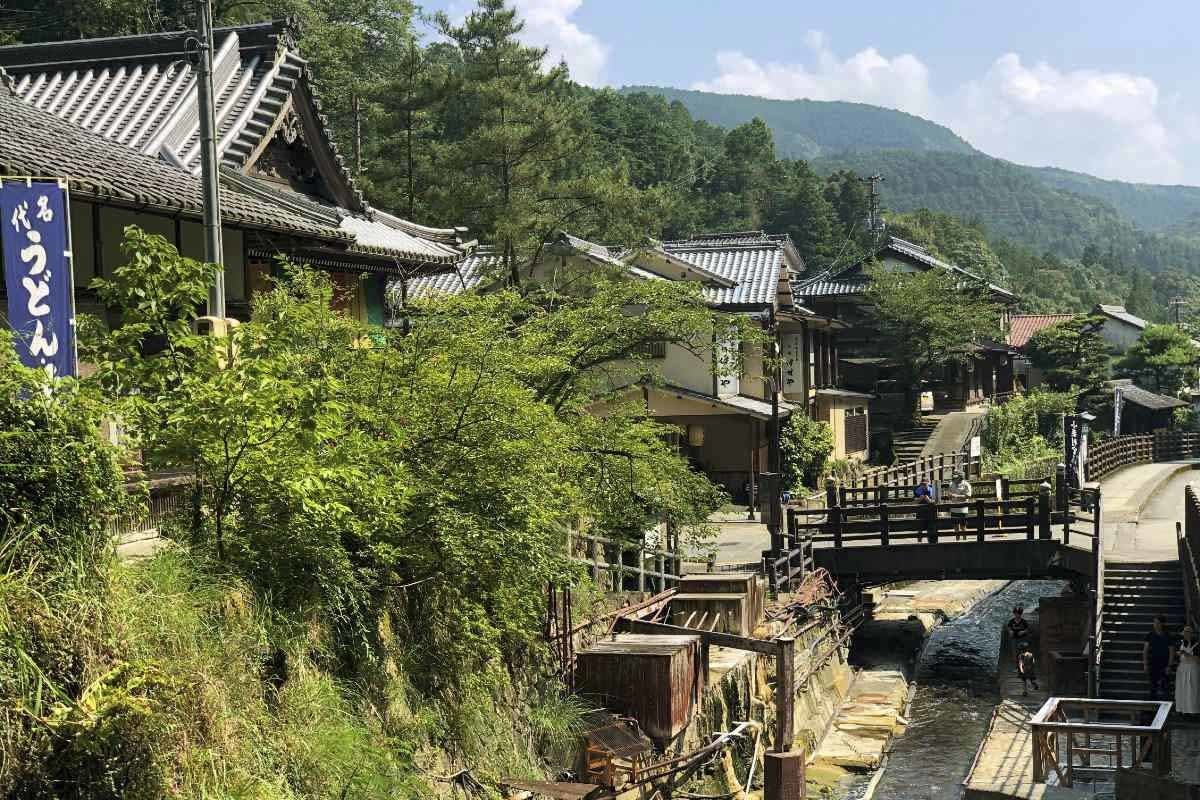
Rise and shine fellow hikers! Again, with so many awesome places to visit in the Kumano Kodo, you can either walk for hours or take it easy and focus on some of the main sights.
I’ll share what we did this day to give you an idea. We took the local bus from Tanabe to Hosshinmon Oji. Our bus driver crashed with a car, so we lost about 3 hours that day, hence couldn’t do all we had planned. Life happens!
In any case, I’d suggest you take your time. There’s a lot to learn across the trail about the history and myths of Japan. Once we got to Hosshinmon Oji, we walked 11 km to Yumomine Onsen and stopped by Hongu Taisha . About a 3 hours hike traversing forests and rolling hills.
By all means, whatever you do, don’t skip Yumomine. This is one of the most important stops along the hike. Yumomine is a tiny onsen village , considered to be Japan’s spiritual hot spring. These hot springs were discovered nearly 2000 years ago. Pilgrims have been using them since then to perform purification rituals.
To top it all up, you can take a bath in the tiny Tsuboyu Onsen. This is a little rock bath covered by a shed on the river bank. This specific tiny spot is also a UNESCO World Heritage site as it was the first discovered in the country.
Day 9 – Hiking the Kumano Kodo – Day 2
Hopefully, you’ve planned your days a little bit with the help of the staff at the Kumano Kodo Tourist Center.
For this day, choose another section of the trail. A great option is to go from Takijiri-Oji -the beginning of the Nakahechi route- and finish in Tsugizakura-Oji. This would be a long day, so pick wisely if you’ll start from the very beginning, or rather skip a few km. Check out the bus schedules! Their stops at some times of the day seem to be a bit random.
Takijiri-Oji is only 15 km from Tanabe. The section you did yesterday was closer to the middle of the trail, and this one will take you through the start of the pilgrimage trail. Unfortunately, we missed this day because of an infected wisdom tooth – again, life happens!
Note that the local bus network is not covered by the Japan Rail Pass. The cost of the buses varies depending on where you hop on and off, ranging from a couple USD to about 25 USD, one way.
Day 10 – Heading to Nachi-Katsuura (aka Kii Katsuura)

Today, it’s time to see a different face of Japan. The trip from Tanabe to Kii Katsura will take you through a rugged coastline, fishing villages, and beautiful beaches.
It’s a 2.5 hr train ride, with a cost of about 15 USD. We were lucky to make friends at the guesthouse in Tanabe and got to do the trip by car, stopping along the way.
Once you get off the train, you’ll discover a sleepy little fishing town with 2 best-kept secrets – this is onsen -hot spring- heaven! And it’s also home to the most important Tuna fish market in Japan.
If you were hiking all day yesterday, then take this day to relax , unwind, and relish in some well-deserved thermal action. Some hotels and guesthouses have their own natural hot springs.
We stayed at a simple but cute guesthouse next to the train station, and they had a lovely onsen Japanese style bath -yay! Otherwise, head to Nanki Katsuura Onsen, just 2 km from the port and center.
Head to the cute fish market by the port -open till 4 pm every day except Tuesdays- and get your sashimi-fix for the day. If you are a sushi fan, then this is the place to try premier raw tuna fish, at a backpacker price.
Day 11 – Visiting Nachi Falls

I actually found about the Kumano Kodo thanks to a Lonely Planet cover featuring a big pagoda with a waterfall on the background . If you’ve been doing your research about Japan, for sure you’ve seen this marvel.
The Nachi Falls is part of the Nachi Taisha Grand Shrine. To get there, simply head to Diamon-Zaka -about 8 km out of town. You’ll see a cobblestone staircase that climbs among 800-year old cedar trees.
After climbing the 267-steps staircase, you’ll come across another staircase leading to the shrine’s entrance. There’s a lot to see here, and, as this is quite a popular site, you’ll come across a fair share of people. I’d recommend spending about 3 hours soaking all this beauty in.
Once you are back into town, if it’s still day time, devote 1 or 2 hours to walk along the coastline heading outside town.
Day 11 – Heading to Takayama
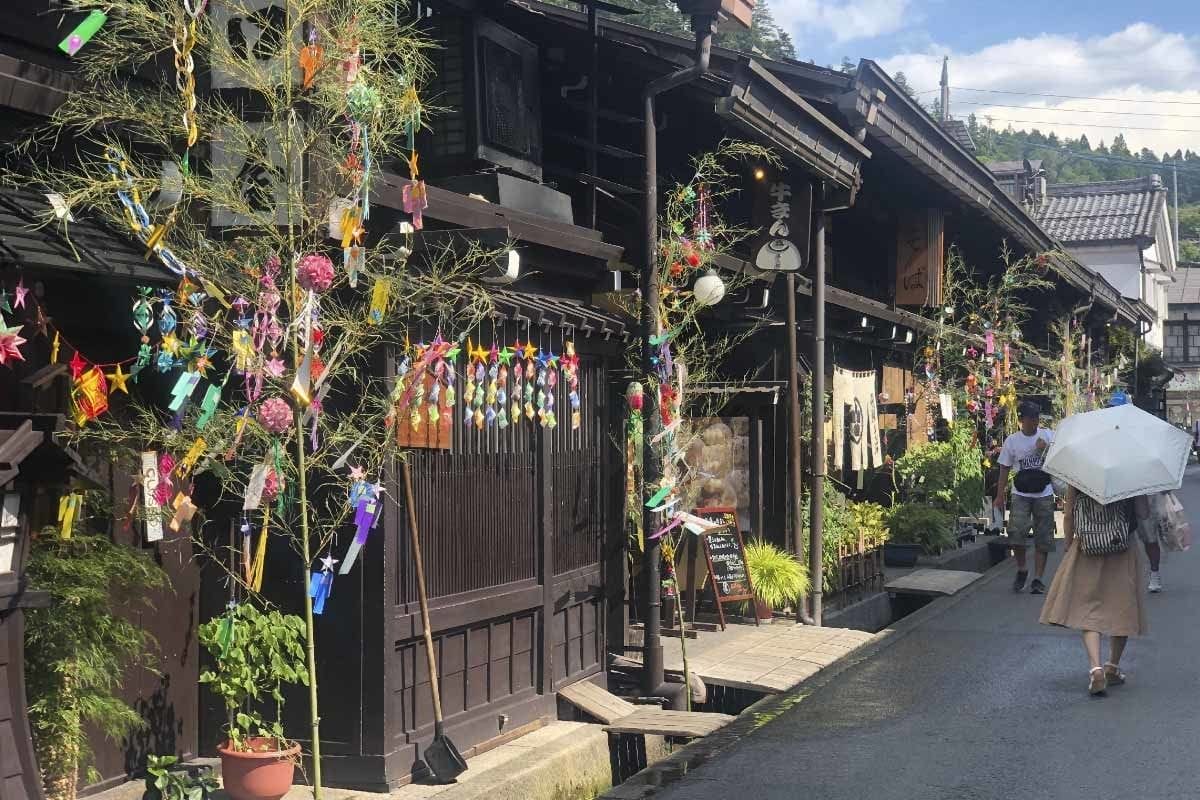
This is the day you’ll travel the most as you’ll traverse nearly 400 km going from Nachi Katsuura to Takayama.
There’s no direct transport for this route, so you’ll have to combine trains and buses. It takes from 7 to 8 hours and the trip costs between 80 USD to 120 USD.
Don’t be discouraged by the long ride! The scenery along the road is really beautiful, especially once you start going uphill.
It was so hard for me to pick the next destination after Wakayama! I’m leaving out another of my favorite places, the trail between Nakatsugawa, Magome, and Tsumago. This is called the Nakansendo Trail. I recommend you check it out before making a final call on your 2 weeks itinerary to Japan.
In the end, I decided to include Takayama , as from there you’ll visit the traditional villages of gasshō-zukuri houses , which are simply unique. Plus, I fell in love with Takayama.
Day 12 – Visiting Shirakawago and Gokayama

Get an early start today! To reach the traditional gasshō-zukuri villages, nestled deep in the mountains, you’ll need to take the bus departing from the Takayama Nohi Bus Center station.
It’s a 1-hour ride, not included in the Japan Rail Pass. It’s possible to book in advance. However, if you can’t book beforehand, make sure to be at the station about 1 hour before you intend to start your trip. Although quite remote, these World Heritage villages are very popular.
Make sure to check the whole bus schedule to plan your visit with ease. Otherwise, you could spend hours waiting for the next bus.
Both Shirakawa-go and Gokayama are regions within the Gifu and Toyama Prefectures. Each of them hosts small villages made up of thatched roofs. If you thought you’d nail your IG with this 2 weeks trip to Japan, wait till you get here. The views are otherwordly.
You’ll likely spend the whole day exploring the area, nature, and jumping from village to village. If time and budget allow, you may want to book a stay and spend the night at a traditional guesthouse!
Day 14 – Exploring Takayama
After an intense day surrounded by nature and tradition, I’d strongly recommend you take time to explore Takayama.
Renting a bicycle is a great way to explore Takayama’s parks, temples, and shrines, some of the loveliest we saw during our trip. Stop by a traditional tea house, and spend an afternoon eating your heart out in any of the historical district fabulous eateries.
Takayama’s old town is a little bit like Kyoto , but we liked it much more!
Day 15 – Back to Tokyo
Oh well…you may not be too excited to leave Japan, but life goes on, and now you have a huge pile of amazing memories to bring home.
On this day you’ll make your way back to Tokyo -assuming you’ll leave the country flying out from there. The only direct and easy way to go from Takayama to Tokyo is to take the Keio or Nohi Bus. You can purchase your ticket online -costs about 60 USD to 70 USD. It’s a 6 hours trip.
Another option is to travel by train via Nagoya. There are no direct services, and you wouldn’t be saving any time. So I highly recommend going for the bus option.
Final Thoughts on This Japan 2 Weeks Itinerary
You could clearly shuffle things around, but I assure you this is a nature-packed itinerary where you will bond with this unique country, its culture, beliefs, and ways of living.
One of the main issues we had when planning our trip was to discern between so many amazing places -plus figuring out how to get around without the pass. Luckily, now you have an alternative Japan itinerary for your trip -yay!
Japan is a place to experience wholeheartedly. I hope I’ve contributed my grain of sand to make you fall in love with it , even before your arrival.
Awesome, you're subscribed!
Thanks for subscribing! Look out for your first newsletter in your inbox soon!
The best things in life are free.
Sign up for our email to enjoy your city without spending a thing (as well as some options when you’re feeling flush).
Déjà vu! We already have this email. Try another?
By entering your email address you agree to our Terms of Use and Privacy Policy and consent to receive emails from Time Out about news, events, offers and partner promotions.
Love the mag?
Our newsletter hand-delivers the best bits to your inbox. Sign up to unlock our digital magazines and also receive the latest news, events, offers and partner promotions.
- Los Angeles
Get us in your inbox
🙌 Awesome, you're subscribed!

Two weeks in Japan: the ultimate rail itinerary for first-time visitors
Got two weeks to explore Japan? Lucky you. Here’s how to spend your time in the island nation using the 14-day Japan Rail Pass

It’s cliché to say you could spend forever in Japan and not get bored. What I will say is that two weeks in Japan will never feel like enough, but makes for a great introduction to this endlessly fascinating country. Using the Japan Rail pass, you can take in the lights and buzz of Tokyo before experiencing the country’s rich local culture.
This two-week Japan itinerary takes you on a round-trip from Japan’s delightfully disorienting capital, whisking you from castle towns in the north to the cities of Osaka , Kyoto and Hiroshima in the south – and finishing off with a relaxing break in the hot spring town of Beppu. You’ll travel the length of Japan’s main island of Honshu and experience the onsen island of Kyushu, visiting craftspeople, rolling through rice paddies, marveling at mountain temples, feasting on local specialties like okonomiyaki – and much, much more.

Spoiler: some of the best places in Japan are the ones that you stumble upon in between hitting the major attractions. Do treat this as a guide and feel free to go your own way – that’s the flexibility the Japan Rail Pass can offer (more on that below).
How to travel around Japan
There’s no more natural way to travel in Japan than by train. I’ve traveled extensively from north to south using Japan’s famously efficient, modern rail system, which reaches nearly every corner of the country.
For maximum freedom and flexibility, a rail pass is a great way to go. The best pass for visitors is the Japan Rail Pass or JR pass, an all-inclusive ticket covering almost any Japan Rail train in the country – including most high-speed trains.
The current price for a 14-day adult pass purchased outside of Japan is ¥47,250 (£275, $341); ¥52,960 (£302; $380) if purchased inside Japan. Note that the price will rise in October 2023 to ¥80,000 ( £457; $575) for a 14-day pass. Before the increase, the pass is excellent value; after the hike, the pass is still a good choice if you want to travel all over Japan, visit several different places, and plan to spend no more than a few days in each location.
You should order your passes well in advance of your trip, as shipping can take a while. Note that passes are only open to foreign visitors, and cannot be purchased by residents of Japan or those with Japanese passports.
If you’d rather concentrate on seeing one area, a regional pass is a good bet. Choices include the JR East Pass (Tohoku), the JR Tokyo Wide Pass (Area surrounding Tokyo), the JR West All-Area Pass (Western Honshu), as well as passes covering Kyushu , Shikoku , and Hokkaido .
The following itinerary uses the nationwide Japan Rail Pass.
Selena Takigawa Hoy is a Japanese-American writer based in Tokyo. A t Time Out, all of our travel guides are written by local writers who know their cities inside out. For more about how we curate, see our editorial guidelines and check out our latest travel guides written by local experts.
RECOMMENDED:
🇯🇵 The best things to do in Japan 🏨 The best hotels in Japan
An email you’ll actually love
The ultimate two-week Japan itinerary

Days 1-3: Tokyo
Welcome to Tokyo! It’s time to start your trip with a few days in Japan’s exhilarating capital. Most of central Tokyo is accessible by the metro – this is a separate system from Japan Rail and does not fall under the pass, so we recommend you don’t activate your rail pass yet (more on that later).
Shop your way through bustling Shibuya , stroll through Yoyogi Park , visit Meiji Shrine , look for toys and anime goods in Akihabara , and eat and drink your way through the city, from Michelin-starred restaurants to cheap noodle stands and quirky street food (make sure to snap a photo of the crazy cotton candy from Momi & Toys ).
Where to stay in Tokyo
The Asakusa Kokono Club Hotel is spacious by Tokyo standards, close to the famous Sensō-ji (temple), and loaded with delightful design details. On a tight budget? The Toyoko Inn chain has locations all over the city. Quarters are on the smaller side, but rooms are clean and serviceable, and there’s a basic free breakfast.
Next stop… Hirosaki
It’s time to activate your rail pass! Take it to the ticket office of a major Japan Rail station to activate, then book a seat on your northbound train. You can travel from either Tokyo Station or Ueno Station. Reservations (free) are required on the Tohoku Shinkansen, so be sure to secure a booking as soon as you validate your pass.
Ride the Tohoku Shinkansen to Shin-Aomori Station, then switch to the limited express Ou Line to Hirosaki Station. The journey takes four hours.

Days 3-4: Hirosaki
Hirosaki is a castle town in Aomori Prefecture, the northernmost prefecture in Honshu. Once there, stroll the grounds of Hirosaki Castle and the adjacent park, and visit the Neputa Village to learn about the fascinating culture of neputa : huge paper lanterns covered with depictions of gods and warriors that grace the summer Neputa Festival floats. Don’t leave without sampling the city’s famous apple pastries and hard cider.
Where to stay in Hirosaki
The Good Old Hotel , in the heart of the drinking and nightlife district, is a row of tiny former ‘snack’ bars converted into accommodation. The Dormy Inn is an efficient chain known for its on-site hot spring baths and free late-night instant ramen.
Next stop… Akita and Sendai
Train enthusiasts will want to reserve a seat on the scenic Resort Shirakami , running between Hirosaki and Akita. The one-way trip takes under five hours, spent gazing out at the ocean and enjoying some of the onboard interludes, such as a Tsugaru-jamisen performance and a puppet show. Change in Akita , where you can spend a few hours visiting Akita Museum of Art and Senshu Park , adjacent to the station, before boarding a southbound shinkansen (don’t forget your reservation) to Sendai , the capital city of Miyagi Prefecture. The Akita-Sendai train takes two hours 20 minutes.

Days 4-5: Sendai
Delve into Sendai’s samurai history, learning about the exploits of Masamune Date and the Date Clan, whose mausoleum and statues dot the city. Spirits fans will enjoy visits to the Nikka Whisky Distillery or touring some of the many local sake breweries. In the hot spring enclave of Sakunami Onsen , you’ll find traditional artisans making carved wooden kokeshi dolls and other crafts.
Where to stay in Sendai
A fun choice in Sendai is the Hen-na Hotel (literally ‘Strange Hotel’) featuring a high-tech, hologram-driven check-in.
Next stop... Kanazawa
You’ll need two shinkansen to get to Kanazawa on the west coast of Honshu: the Tohoku or Akita Shinkansen from Sendai to Omiya (just over an hour) and the Hokuriku Shinkansen from Omiya to Kanazawa (about two hours).

Days 5-7: Kanazawa
The capital of Ishikawa Prefecture, Kanazawa has loads of traditional charm and well-preserved areas with a fraction of the tourists of Kyoto or Tokyo. There’s a lot to pack in here. Stroll around Kanazawa Castle and the colourful Edo-era gardens of Kenroku-en , admire the handsome wooden buildings in the teahouse districts of Higashi Chaya and Nishi Chaya , browse the stalls at Omicho Market , learn about the art of gold leaf and its history in the region, and check out the 21st Century Museum of Contemporary Art .
Where to stay in Kanazawa
A new(ish) opening in May 2023, Omo5 Kanazawa Katamachi is a boutique mid-range option not far from the 21st Century Museum of Contemporary Art.
Next stop... Kyoto
You have a few options to get between Kanazawa and Kyoto; the most direct is the Thunderbird Express, taking about two hours 15 minutes.

Days 7-10: Kyoto, Osaka and Nara
There’s so much to see in Kyoto – and everyone else wants to see it too. If possible, visit during the week for slightly fewer crowds. Highlights include Kinkaku-ji (the Golden Pavilion), the pagoda and shopping street at Kiyomizu-dera , and the Zen garden at Ryōan-ji . Use Kyoto as a base to visit nearby cities as well: head over to Osaka (30 minutes by shinkansen) to explore foodie neighborhoods like Dotonbori , Shinsekai , and Kuromon Market . You might also want to visit the ancient capital of Nara to see the enormous Buddhist temple Todaiji and its accompanying tame deer.
Where to stay in Kyoto
For a nice midrange hotel right near Kyoto Station, try the Rihga Royal Hotel Kyoto , which has an indoor swimming pool and several dining options onsite. For something more classic, there’s Kyomachiya Ryokan Sakura Urushitei , with futon bedding, tatami mats, and traditional furnishings. Do opt in for the excellent Japanese breakfast.
Next stop... Hiroshima
Time to board the Tokaido Shinkansen from Kyoto to Hiroshima; 1 hour 40 minutes. Reservations are recommended, but not required.

Days 10-12: Hiroshima
The focus of any Hiroshima visit is of course Peace Park , the A-Bomb Dome , and Hiroshima Peace Memorial Museum . Hiroshima is also a beautiful, resilient, and thriving city.
Spend at least half a day visiting the island of Miyajima ; with a moderate hike, you’ll catch sight of roaming deer and monkeys, as well as Itsukushima Shrine , a Unesco World Heritage Site famous for its ‘floating’ torii (the red shrine gate that rises from the sea off the coast).
Don’t forget to get your fill of okonomiyaki , Hiroshima’s most famous food, a thick savory pancake made with batter, noodles, vegetables, meat or seafood, and more. Vegan versions are available at several locations including Okonomimura .
Where to stay in Hiroshima
The Knot Hiroshima is a stylish, affordable option near Peace Park; or if you don’t mind tight spaces, why not try a budget capsule hotel? The Sejour Inn Capsule offers pods for all genders (some capsule hotels only accept men), with compact sleeping quarters, lockers, and shared bathing facilities.
Next stop... Beppu
Take the Tokaido Shinkansen to Kokura Station, then change to the Sonic Nichiren Express to Beppu Station; 2 hours 30 minutes.

Days 12-14: Beppu
The island of Kyushu generally has a more laid-back vibe than much of Honshu (Japan’s main island), and in the hot spring resort town of Beppu , relaxation is the name of the game. Check out the sulfuric pools and geysers called the ‘Hells’ of Beppu and soar over the active volcano of Mt. Tsurumi on the Beppu Ropeway – then unwind in the region’s famous hot spring baths. Each has different mineral properties that are believed to soothe various ailments.
Where to stay in Beppu
When in a hot spring town, staying at a ryokan is a must. Try Beppu Nagomitsuki or Ryokan Sennari , both of which offer sumptuous multi-course meals and on-site open-air hot spring baths.
Next stop... back to Tokyo
Use the last day on your pass to return to Tokyo . Take the Sonic Nichiren Express back to Kokuro, then the Tokaido Shinkansen all the way back to Tokyo; about 6 hours. Don’t forget to pick up a bento at the station or buy one on the train.
[image] [title]
Discover Time Out original video
- Press office
- Investor relations
- Work for Time Out
- Editorial guidelines
- Privacy notice
- Do not sell my information
- Cookie policy
- Accessibility statement
- Terms of use
- Modern slavery statement
- Manage cookies
- Advertising
- Time Out Market
Boutique Japan
Sample Trip: 2-Week Japan Itinerary
If you’re planning on visiting Japan for around two weeks, you’re in the right place! This sample 14-day Japan itinerary includes a unique mix of the country’s best destinations , from Tokyo to Kyoto and beyond.
Of course, even if you’re traveling for more (or less) time, you can easily modify this sample trip – and make sure to see more of our Japan trips for additional travel inspiration!
Even for the most experienced travelers, planning a first or second trip to Japan can feel overwhelming at times. Apart from things like the language barrier and deciding when to visit , it can be hard to decide where to go with so many remarkable places to choose from.
Originally written in 2017, this post was updated and republished on April 30, 2019.
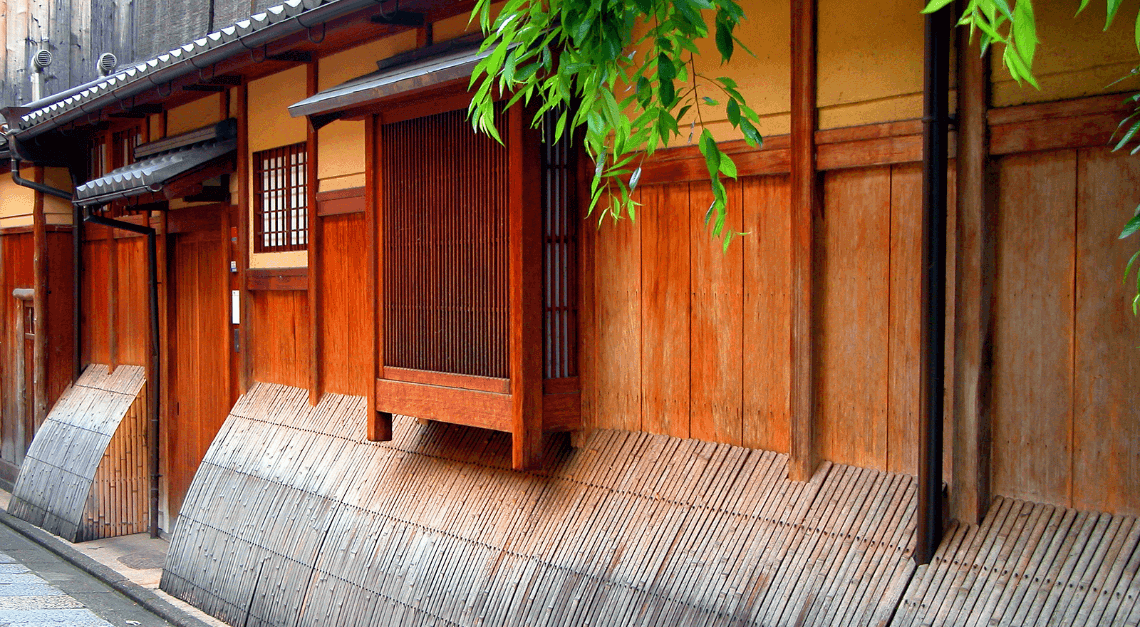
For the full experience (and context), we recommend reading the whole trip from start to finish. But if you can’t resist, feel free to click on the below to skip to a specific destination.
- Day 1. Tokyo’s lively Ebisu district
- Day 2. Omotesando and Aoyama
- Day 3. Ramen
- Day 4. Tsukiji Market
- Day 5. Kanazawa
- Day 6. The Japanese Alps or rugged Noto Peninsula
- Day 7. Kyoto
- Day 8. Nishiki Market
- Day 9. Osaka
- Day 10. Zen and Pottery
- Days 11 & 12. Naoshima and Teshima
- Day 13. The Izu Peninsula
Day 14. Depart Japan
Is this itinerary perfect for you?
Possibly not. In our years of trip planning, we’ve found that every Japan traveler is different, with unique interests, priorities, and travel styles.
But we are confident that you’ll find this a perfect place to begin, and hope it provides you with inspiration for your Japan adventure, whether it’s a solo trip, a family vacation, or a honeymoon in Japan .
So, get ready for takeoff… we’re headed to Tokyo!

Day 1. Tokyo’s lively Ebisu district: An evening of food and drink at an authentic izakaya
Japanese food is reason enough to visit, but you don’t need to hit the high-end, Michelin-starred restaurants to have an amazing meal. Tokyo’s izakayas , or Japanese-style gastropubs, are the best way to experience authentic Japanese cuisine in a friendly, casual environment (think Japanese tapas).
Tokyo has a well-deserved reputation as a city that never sleeps. The nightlife in Tokyo is vibrant, eclectic, and unlike anywhere else on the planet.There are too many great Tokyo neighborhoods to name, and Ebisu is always one of our favorites. The hip and lively Ebisu district is brimming with cocktail bars, hole-in-the-wall restaurants, and boisterous izakayas . End the night at Bar Trench , or the rambunctious Ebisu Yokocho.
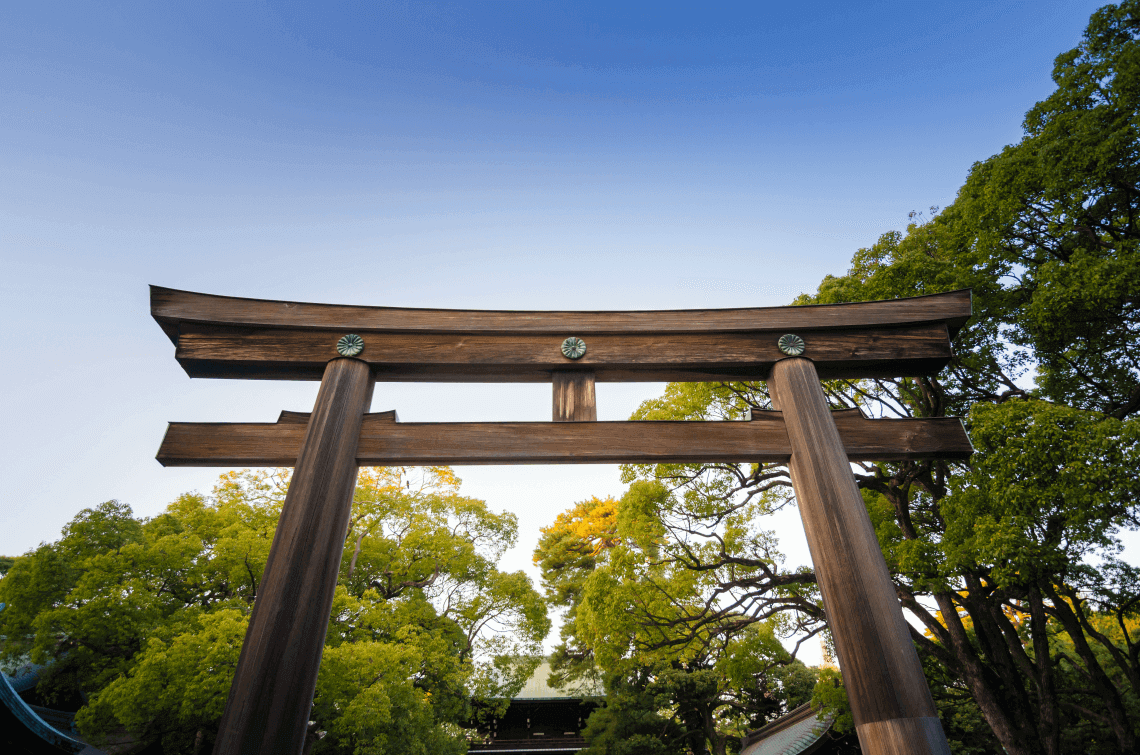
Day 2. Omotesando and Aoyama: Immerse yourself in fashion and design
Central Tokyo’s west side — where you’ll find notable neighborhoods such as Shibuya, Shinjuku, and Harajuku — is also home to many of the city’s most fashionable districts.
Begin at the serene Meiji Jingu shrine, then stroll through the colorful backstreets of Harajuku, a neighborhood known around the world for its outlandish fashions, vintage shops, and easy eats.
Wander down the Omotesando, a wide tree-lined boulevard featuring some of Tokyo’s most outstanding modern architecture. Then wander into Omotesando’s charming side streets, which are full of lovely boutiques and cafes.
Grab a snack at Commune 2nd , a stylish outdoor food court perfect for a cold beer, delicious street food, and some of the best people watching in the city. You’re in Aoyama now, home to many of the city’s most remarkable shops (Maison Kitsune, Issey Miyake, Miu Miu, Louboutin, and Hanae Mori have cutting-edge fashion outlets here). The stylish Aoyama is also a wonderful place to enjoy Japan’s coffee culture .

Day 3. Ramen: Learn to slurp like a pro on a private “ramen safari”
If you’ve been to New York or Melbourne lately (make that any great world city), chances are you’ve experienced just how glorious ramen can be. But if ramen makes you think of Momofuku Ando and instant ramen cup noodles, you’re in for a delightful surprise.
As far as popularity goes, ramen is the new sushi, inspiring the same passion in its enthusiasts, and a plethora of ramen shops around the world.
Of course, ramen in Japan is on a completely different level! To help immerse you in the delicious (and surprisingly fascinating) world of ramen in Tokyo, you’ll head out with a ramen expert who will take you to a couple of unique ramen shops, specializing in different varieties of ramen.
Learn how to order, how to customize your noodles and select toppings, and basic ramen etiquette – including how to slurp like a local.
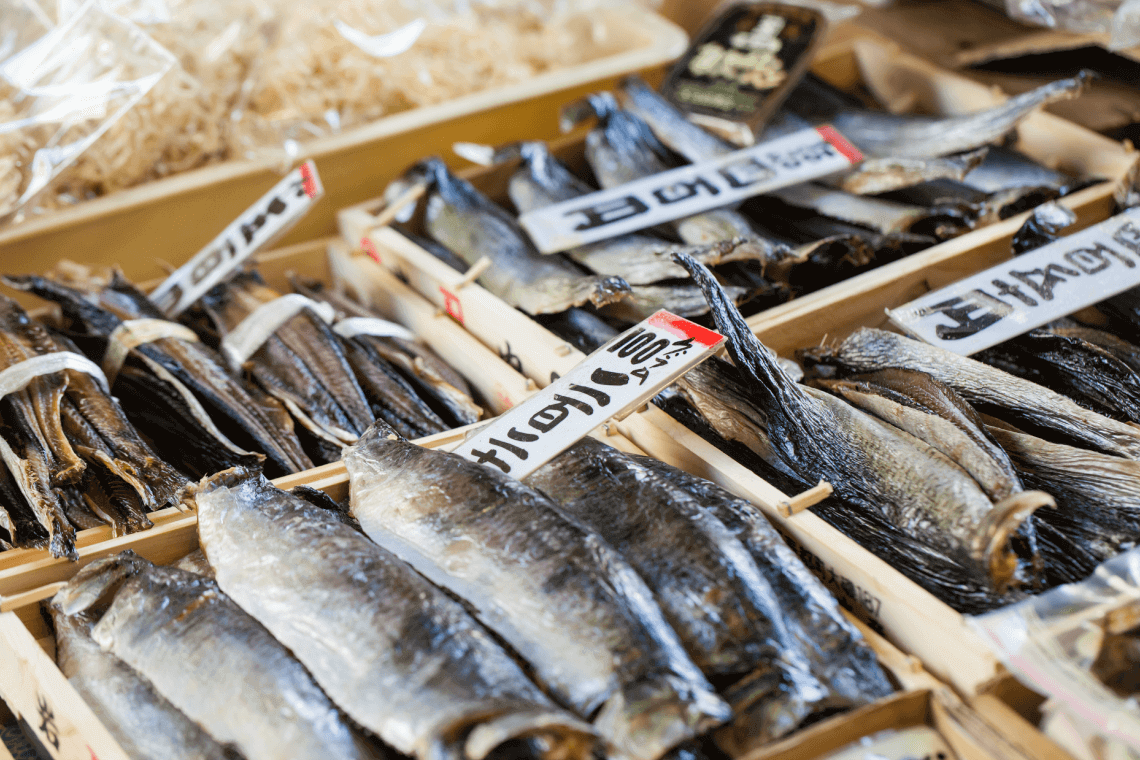
Day 4. Tsukiji Market: Still Tokyo’s best market
In 2018, the fish market’s wholesale operations moved from historic Tsukiji to the gleaming new Toyosu Fish Market.
But as anyone who has visited can attest, Toyosu is no match for Tsukiji when it comes to old-fashioned charm and atmosphere.
Even after the move, Tsukiji Market is one of Tokyo’s highlights, and you could easily spend a couple of hours wandering the market sampling mouthwatering Japanese street food , and shopping for knives and Japanese spices.
Find more ideas for your visit to Tokyo in our guide to One Day in Tokyo or our 25 Amazing Tokyo Sushi Restaurants .
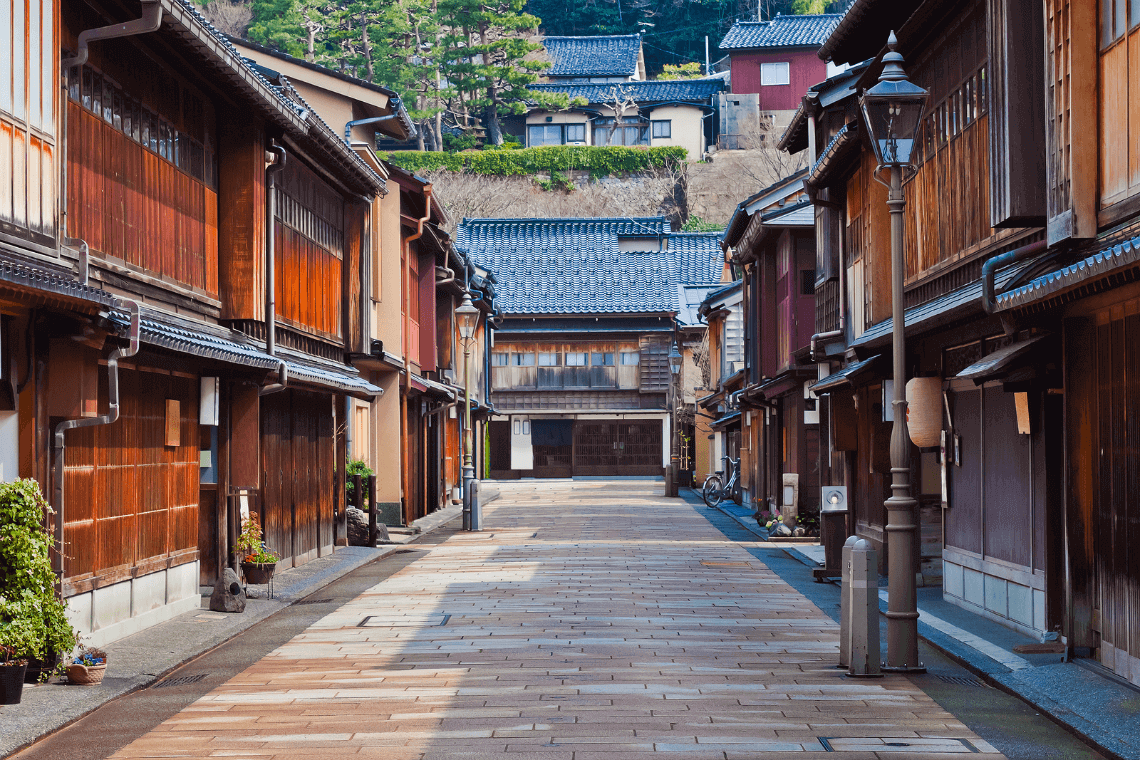
Day 5. Kanazawa: Incredible food and historical gems
Kanazawa is a lovely old city famed for its sushi and seafood (widely considered the best in Japan), traditional crafts, and impeccably well-preserved historical geisha and samurai districts.
Kanazawa is also home to one of Japan’s most famous gardens , Kenrokuen. In addition to all its highlights, part of the experience is getting here.
You’ll be taking Japan’s world-famous shinkansen (the bullet train), and you’re in for a special treat on this particular journey.
While most of Japan’s shinkansen offer only standard and first class, the Hokuriku Shinkansen, which connects Tokyo to Kanazawa, offers a special carriage known as Gran Class.
Be forewarned: a ride in Gran Class will spoil you! It is one of the most worthwhile train journeys in Japan , including outrageously comfortable seats, complimentary snacks and bento boxes, and — of course — free drinks, including beer, sake, Japanese whisky , and wine.
Day 6. Day trip to the Japanese Alps or rugged Noto Peninsula
Day six of your Japan itinerary allows you to spend another day exploring Kanazawa’s many highlights, or take a day trip to the mountains or the sea.
To the south of Kanazawa, deep in the Japanese Alps, you’ll find the historic town of Takayama, the UNESCO World Heritage villages of Shirakawago and Gokayama , and the off-the-beaten-path Hida-Furukawa.
To the north of Kanazawa is the rugged Noto Hanto (Noto Peninsula), renowned for its wild coastal scenery, remote onsen (hot springs), and the colorful Wajima Market, where you’ll find the region’s bounty of seafood and produce on display (including the wondrous Noto gelato ).
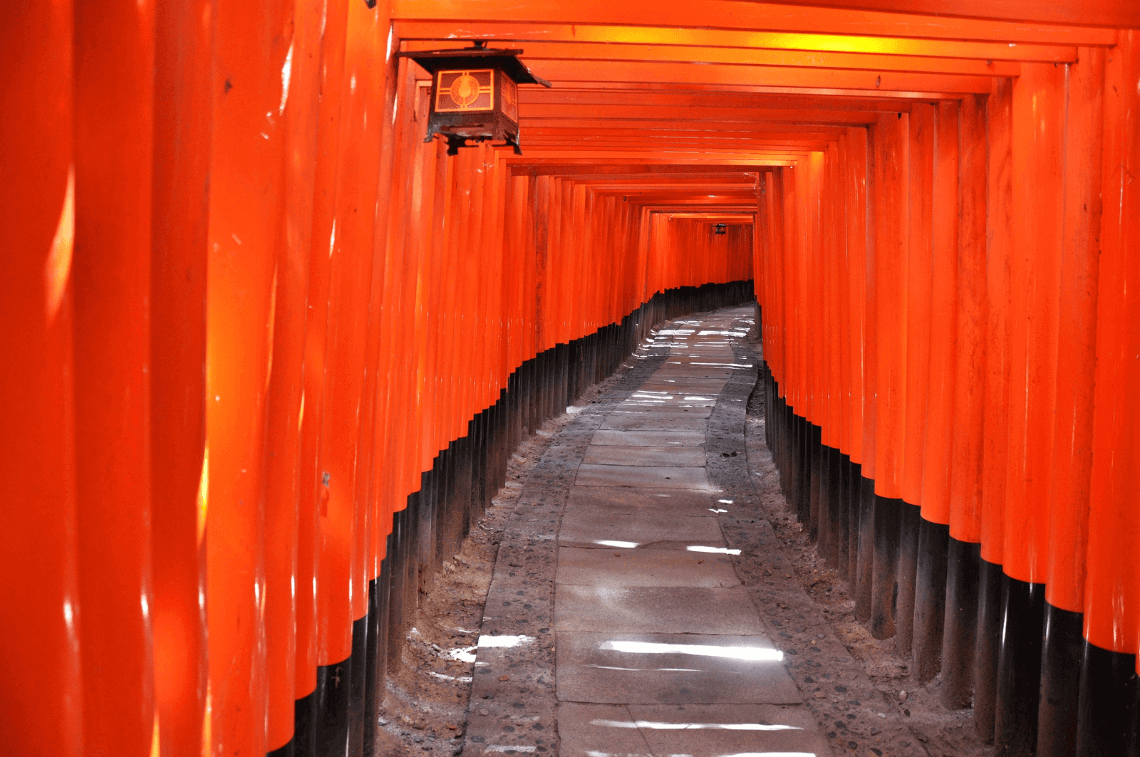
Day 7. Kyoto: Cycle — and eat — your way around the ancient capital
Kyoto was the capital of Japan for over a thousand years, and its cultural heritage is evident in every corner of the city – making it an essential destination on any Japan itinerary.
Kyoto is full of UNESCO World Heritage sites , though these days — with how popular the destination has become for visitors from around the world — it is often even more rewarding to explore Kyoto’s best off-the-beaten-path temples and shrines .
While also an excellent walking city, there is perhaps no better way to explore Kyoto than on two wheels.
Venture out on a private bicycle tour through Kyoto’s picturesque historical districts, winding through charming backstreets, and sampling Kyoto’s delectable cuisines along the way.
End at the iconic Fushimi Inari Taisha. While deservingly popular with travelers, the thousands of vermilion torii form one of the most memorable sights in all of Japan.
Day 8. Nishiki Market: Treat yourself to a once-in-a-lifetime culinary adventure
Nishiki Market got its start as a 14th century fish market, and today represents the epitome of Kyoto’s culinary abundance .
Fish, squid, vegetables, tea, pickles, and wagashi (traditional sweets) jostle for prominence in a gloriously colorful and crowded yet orderly array of vendor stalls.
Following your stroll through the market (make sure to enjoy some samples as you walk!), head for lunch at a tiny counter-only restaurant, where a detail-obsessed shokunin (master) painstakingly prepares locally-sourced ingredients – a culinary experience you won’t soon forget.
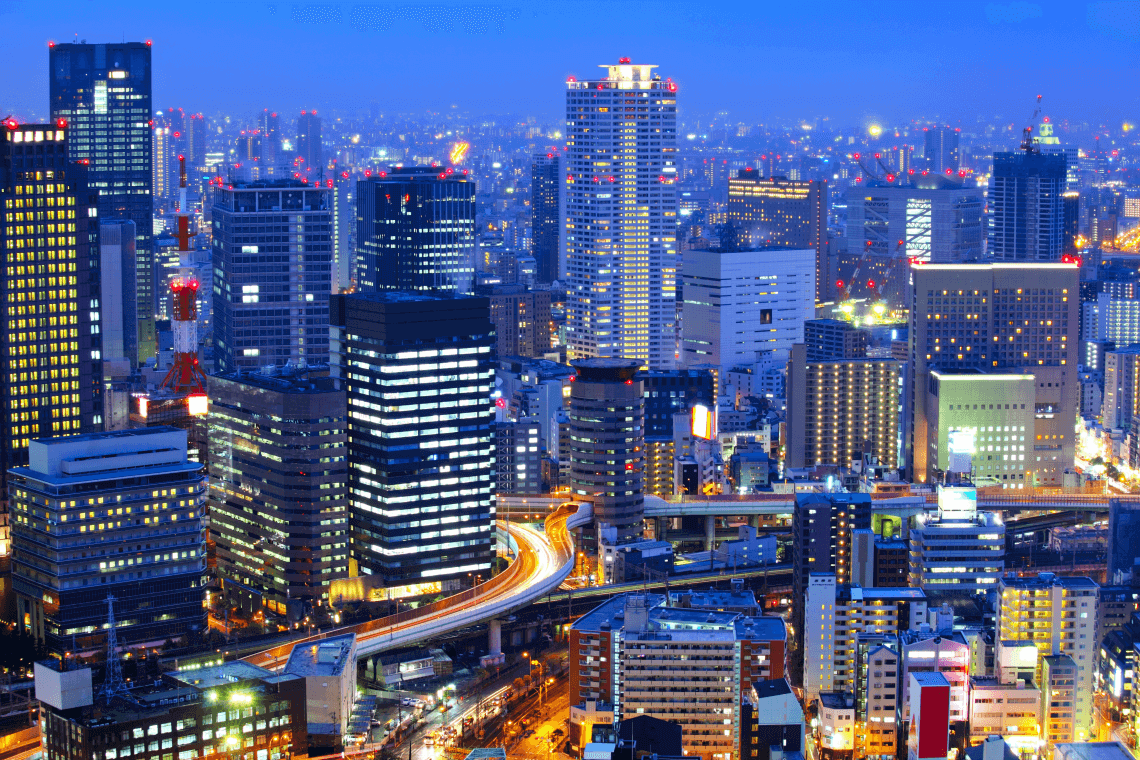
Day 9. Osaka: Immerse yourself in Japan’s most food-obsessed city
Speaking of food, there’s nowhere in Japan where the locals are more unabashedly passionate about eating than in the city of Osaka .
Just thirty miles from Kyoto, a short train ride away, Osaka can feel like a different planet – as anyone from Kyoto or Osaka would agree!
While the ancient capital is often considered more formal, the merchant city of Osaka seems to be all about fun. Japanese whisky distilleries can be lively places to tour, and Osaka’s outgoing people are not shy when it comes to their obsession with food – hence the infamous local term kuidaore , “to eat oneself to ruin.”
Fewer Clients, Richer Experiences
We live and breathe Japan, and want you to experience the Japan we know and love. If you’re as obsessed with the details as we are, chances are we will be a good fit.
Get Started
Osaka’s food is a delectable mishmash of unique and addictive treats: takoyaki , golf ball-sized octopus fritters; okonomiyaki , savory pancakes stuffed with seafood, pork, and kimchi; and kushikatsu , deep-fried meats and veggies on a skewer (perfect with a cold beer); among so many others.
Osaka really comes alive at night, and tonight you’ll venture out on a private sake crawl, visiting amazing izakayas, and bars specializing in premium sake paired with tapas-style bites.
If you happen to be here in March, when the spring sumo basho (tournament) takes place in Osaka, you may even come across rikishi (sumo wrestlers) out and about on the town!
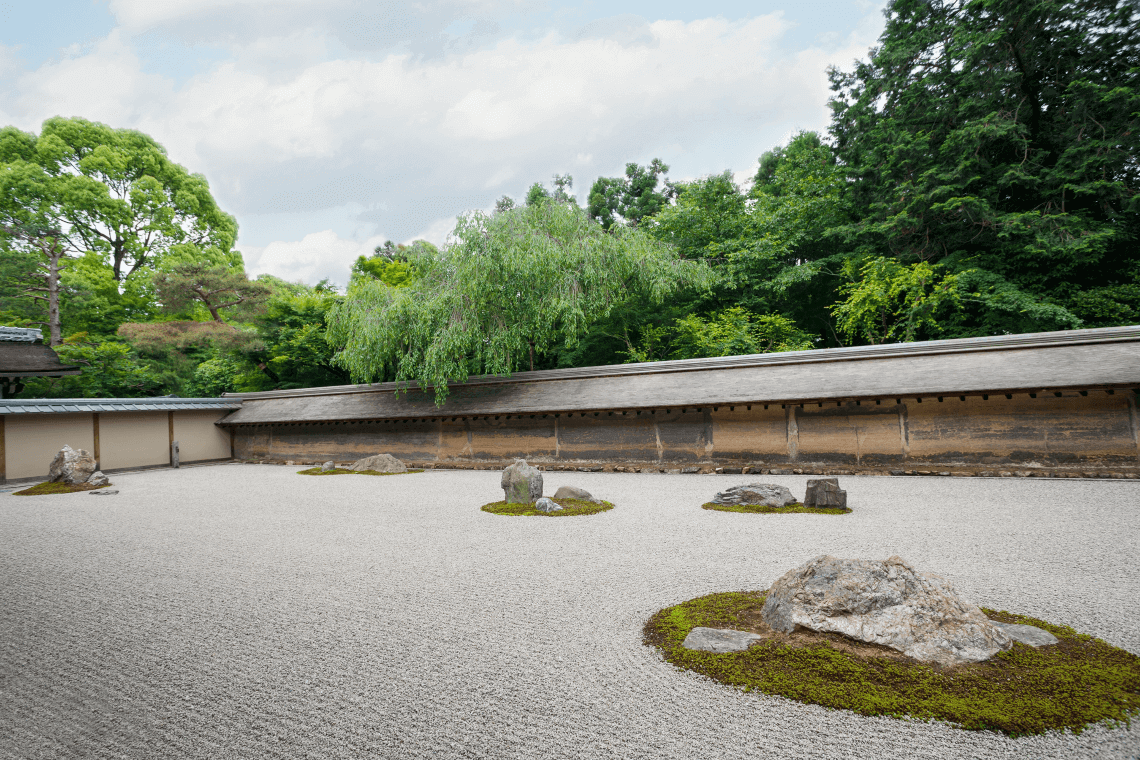
Day 10. Zen and Pottery: A day of tradition in Kyoto
After an evening out in Osaka, it’s always nice to enjoy a leisurely morning, and a relaxing coffee at one of Kyoto’s many excellent cafes .
After lunch, you’ll have the unique chance to visit a working Buddhist temple for a private session with an irreverent monk who will introduce you to Zen (minus the cliches) and lead you on a fluff-free meditation. Cap it off with a lovingly prepared cup of Japanese tea , which you can enjoy in peace in a tranquil Japanese-style room.
You’ll have a smooth transition from tea to sake via the beauty of Japanese pottery, new and old.
Meet a Japanese pottery expert for a primer on the history and aesthetics of Japanese pottery, while enjoying sake from meditation-worthy pieces.
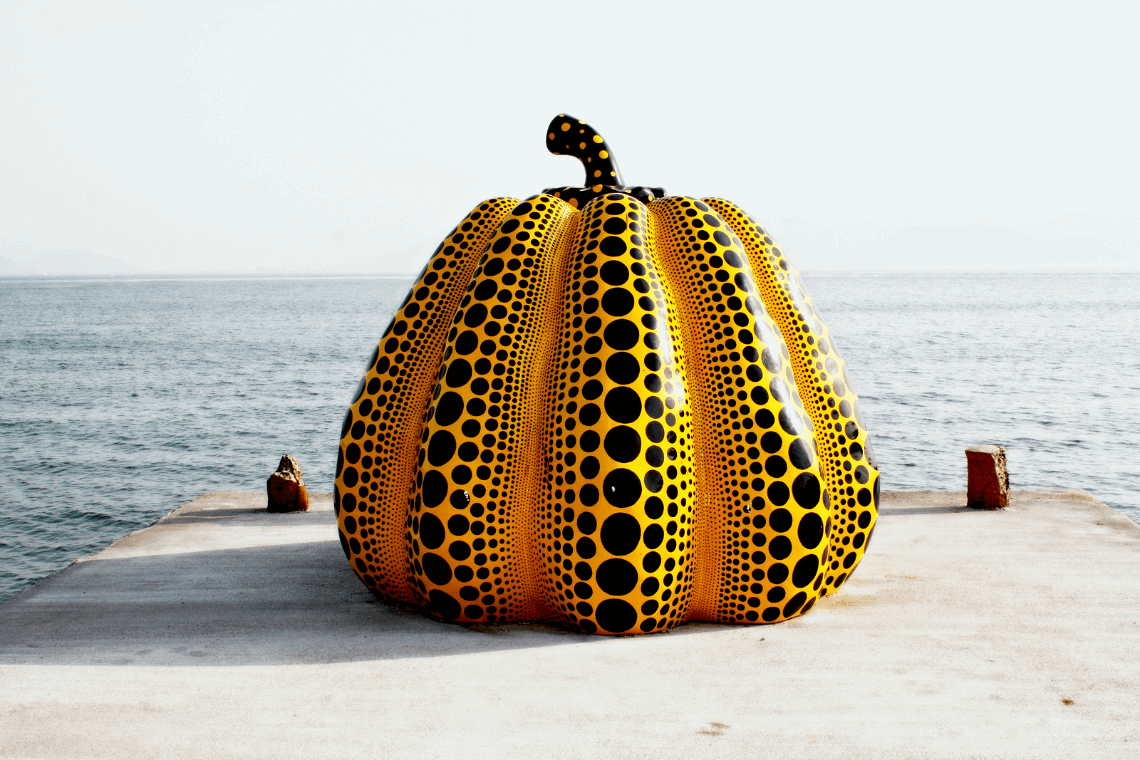
Days 11 & 12. Naoshima and Teshima: Art and architecture in the Inland Sea
The art island of Naoshima is a small, formerly remote island that has become one of the world’s most noteworthy art destinations.
Enjoy the natural beauty of the island-filled Inland Sea, quaint fishing villages, and stunning modern architecture that blends into the landscape.
The incredible Chichu Art Museum alone is worth the visit, but in addition to the island’s many art offerings, one of the highlights is a stay at the coveted Benesse House , which doubles as a museum and hotel.
Don’t miss the day trip from Naoshima to the neighboring art island of Teshima, home to — among other highlights — the breathtaking Teshima Art Museum .
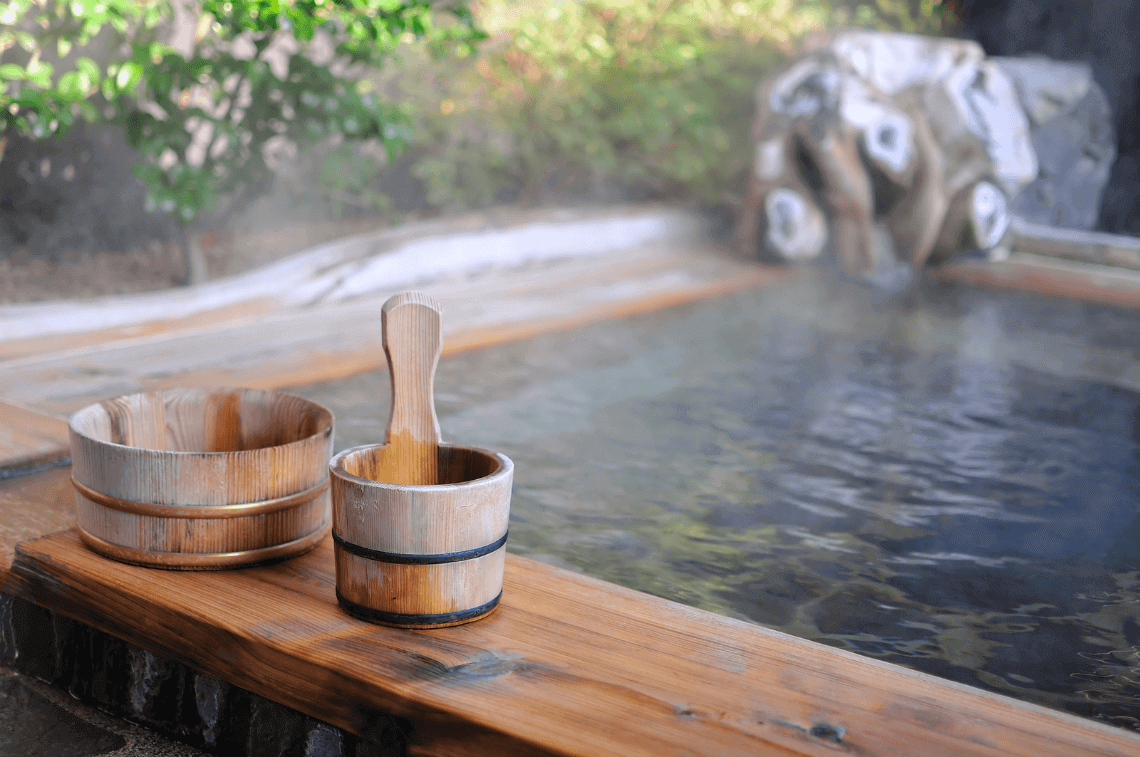
Day 13. The Izu Peninsula: Slow down at a luxurious traditional ryokan
As your Japan adventure begins to wind down, there is no better stop than a traditional ryokan (Japanese-style inn) with soothing onsen. Japan is blessed with more than its fair share of rejuvenating hot springs, and a wonderful culture of hospitality has arisen around them.
One of the best places to experience a luxury ryokan stay is in the Izu Peninsula (located within easy reach of Tokyo), home to pristine forests, rugged coastlines, and dozens of top-quality ryokans.
After a rejuvenating soak in the healing waters, put on your yukata (robe) and you’ll be treated to a lavish, multi-course kaiseki dinner. Enjoy a dreamy sleep before your return to Tokyo tomorrow.
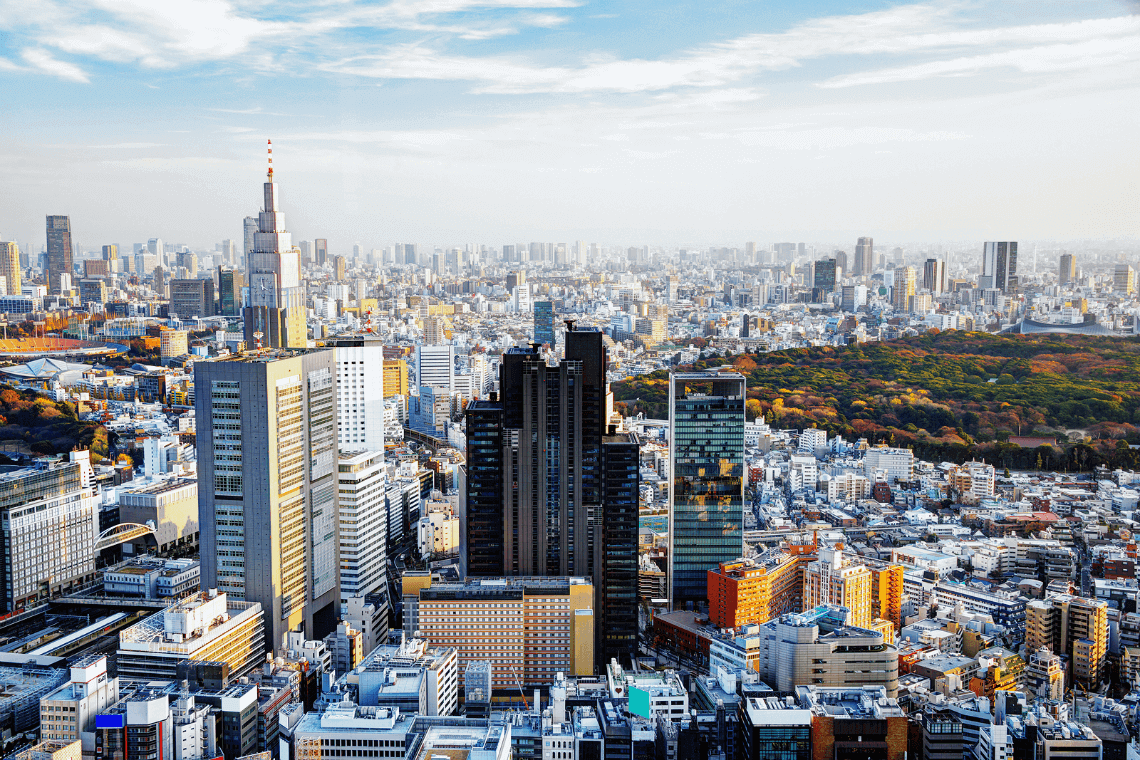
Begin your final day with an early-morning soak in the onsen, and an unforgettable Japanese-style breakfast.
Then it’s time for your easy and pleasant trip back to Tokyo, where you’ll spend your last few hours in Japan.
Enjoy one final stroll, and another meal, before it’s time to head to the airport.
Come back again soon! Arigatou gozaimashita !
Looking for more Japan itinerary ideas?
If you are looking to embark on a once-in-a-lifetime trip to Japan, we have resources that can help.
Start by checking out our sample travel itineraries and learning about our process of crafting customized trips for travelers seeking unique, authentic experiences.
More Great Posts

Japan’s Best Boutique and Luxury Hotels & Ryokans
The best hotels and ryokans in Japan range from charming traditional inns in the countryside, to stylish design hotels and…

Traveler’s Guide to the JR Pass (Is It Worth It?)
The Japan Rail Pass (or JR Pass, for short) can be a good way to get around Japan, but many…

Major Holidays and Peak Travel Seasons in Japan
If you’re considering a trip to Japan during one of the country’s peak travel seasons, be aware that things can…
Plan Your Japan Trip
Learn more and contact us to discuss your unique trip.
- The Process
- Testimonials

- Liechtenstein
- Netherlands
- Switzerland
- Solo Location Guides
- Solo Travel Advice
- Solo Inspiration
- Luxury travel
ASIA , DESTINATIONS , JAPAN
The best 2-week japan itinerary for first-time visitors.
Japan seduces you with its seamless blend of the ancient and modern.
Shinto shrines are shoehorned between skyscrapers; traditional teahouses co-exist with coffee shops. Japanese people cling as firmly to their ancient rituals as their smartphones.
The so-called Golden Route is a good start if you are visiting Japan for the first time. Following in the footsteps of samurai along the old Tokaido Road, this route along the Pacific Coast is the perfect introduction to Japan’s landscape, history and modern culture.

Some articles on this website contain affiliate links. This means that I may earn a small commission if you make a purchase through these links. As an Amazon Associate, I earn from qualifying purchases . Read the full disclosure here .
IN THIS ARTICLE
2-Week Japan Itinerary at a Glance
Two weeks in Japan will allow you to experience the country’s highlights as a first-time visitor. You will use Japan’s two most famous cities: Tokyo and Kyoto .
Using the country’s high-speed shinkansen, you will take day trips to the historic cities of Nikko, Kamakura, Nara and Kanazawa . You can experience the landscape immortalised in colour woodblock prints by Hokusai by visiting Mount Fuji and the Hakone region
- DAY 1: Arrive in Tokyo
- DAY 2 & 3: Tokyo
- DAY 4 : Day trip to Nikko
- DAY 5: Day trip to Kamakura
- DAY 6 : Day trip to Hakone
- DAY 7: Travel to Kyoto
- DAYS 8 – 10: Kyoto
- DAY 11: Day trip to Nara
- DAY 12: Day trip to Hiroshima and Miyajima
- DAY 13: Day trip to Himeji and Osaka
- DAY 14: Day trip to Kanazawa
Eat the best meal of your life in Osaka and marvel at Himeji Castle , one of Japan’s finest. Finally, visit Hiroshima followed by Miyajima Island , for a sombre remembrance and to see the bright red Tori gate ‘floating’ in the sea, one of Japan’s biggest tourist attractions.

My Experiences in Japan
Make no mistake. A Google search will churn out hundreds of Japan itineraries for first-time visitors, so why should you trust this one?
I have visited Japan twice and at the time of updating this guide, I am about to go for the third time. Being an utter travel geek I planned very hard for my first trip to Japan, spending weeks researching destinations to ensure that I would have the best time possible.
I didn’t get it all right the first time around. But I did learn from my mistakes and this itinerary has been tweaked to reflect that. I made the mistakes so that you don’t have to.
As a self-confessed flashpacker, I travelled independently on a mid-range budget with splashes of luxury. To avoid wasting precious time changing hotels when travelling, I stayed in two hotels only.
On each occasion, I travelled solo and Japan is an ideal destination if you are travelling alone for the first time .

Day 1: Arrival in Tokyo
I’ve learned from my mistakes and don’t have lofty sightseeing ambitions just after stepping off a long-haul flight.
Be kind to yourself. Check into your Tokyo hotel and start to acclimatise to Japan. Tokyo will be your base for the first six nights in Japan.

How to get from Narita Airport
The easiest way to get from Narita Airport is on the Narita Express , connecting the airport to Tokyo. The train departs from beneath Terminal 2 and stops at Ikebukuro, Shinjuku, Shibuya, Shinagawa and finally Tokyo.
The Narita Express is included in the JR Pass. Seat reservations are compulsory, but if you are activating your Japan Rail Pass at Narita Airport, the clerk there will take care of this for you.

How to get from Haneda Airport
From Haneda airport, take the Tokyo Monorail to Hamamatsucho station, from where you can continue your journey on the Yamanote line. All three terminals of Haneda Airport are served by the monorail.
Again the Japan Rail Pass is valid on this service.
Day 2 & 3: Tokyo

Your Japan itinerary starts in the nation’s capital, the ultra-modern yet historic city of Tokyo. Its brightly spangled cityscape is one of the things that Japan is famous for .
Swirling with people and brimming with densely packed buildings lit by garish neon, this home to 14 million souls has it all. World-beating cuisine, traditional shrines and temples, first-rate (and sometimes downright quirky) museums and galleries, sublime Zen gardens and, of course, that Blade Runner cityscape.
I’ll level with you. However long you spend in Tokyo, it won’t be enough. However, two full days will allow you to scratch the surface of the city’s highlights.
Here are my recommendations for what to see and do in Tokyo.
SHINJUKU AT NIGHT

After the sun goes down, head to the neon lights of Shinjuku.
Test your skills at one of the pachinko (vertical pinball machine) parlours or channel your inner Celine Dion in a karaoke bar. Then, for a glimpse of old Tokyo, dive into the narrow alleys of Golden Gai and Memory Lane that are unchanged since the Second World War.
SHIBUYA CROSSING

For an iconic Tokyo experience, head to vibrant Shibuya, home to the world´s busiest pedestrian crossing. Each time the light turns green hundreds of people come from all directions at once, skilfully avoiding bumping into each other with graceful agility.
For a bird’s eye view, take a seat in the Starbucks café on the 2 nd floor of the building across the street and watch the never-ending show.
TSUKIJI FISH MARKET

Famous for its tuna auctions, Tsukiji Central Fish Market was Tokyo’s top sight. Sadly, it closed its doors in 2018 and moved to a new site in Toyosu, reopening as Toyosu Market.
The good news is that Tsukiji’s outer market, with its many shops and restaurants, remains in business.
For the freshest sushi in the world, combine a visit with breakfast or lunch at one of its restaurants. Restaurants are typically open from 5 am until lunchtime or early afternoon.
TOKYO SKY TREE

Enjoy a panoramic view of the Tokyo skyline from the observation deck of the Tokyo Sky Tree. Visit at sunset for the best views.
MEIJI SHRINE

Don’t leave Tokyo without visiting this Shinto shrine dedicated to the deified spirits of Emperor Meiji and his consort, Empress Shoken.
Surrounded by a tranquil forest, Meiji-jingu feels worlds away from the city outside its walls.
TAKESHITA STREET (TAKESHITA DÕRI)

In the same district as the Meiji Shrine is Takeshita Dõri, where Tokyo’s goths and Lolitas come to shop. Teenagers from all across Japan make a pilgrimage to this fashion subculture bazaar.
IMPERIAL PALACE
Although the palace is usually closed to the public, its free garden is a peaceful respite from the city.

This Buddhist temple in Asakusa is one of the most popular and lively temples in Tokyo. Completed in 645 AD and dedicated to Kannon, the goddess of mercy, it is also the city’s oldest temple.

A 200-meter-long shopping street, brimming with stalls selling tacky souvenirs and snacks, connects the outer gate to the temple’s second gate. The heady mix of secular and sacred may not be to everyone’s taste – it wasn’t my cup of tea – but it is undeniably vibrant.
HAMA RIKYU GARDENS

Sitting alongside Tokyo Bay, Hama Rikyu is a large landscape garden in central Tokyo, featuring seawater ponds that change level with the tides and a traditional teahouse.
If it wasn’t for the coronavirus pandemic disrupting travel plans, I would have based myself in Ueno on my second visit to Japan. This northern Tokyo neighbourhood is home to several museums, including the Tokyo National Museum, art galleries and Ueno Park.
Day 4: Day Trip to Nikko from Tokyo

Your first day trip from Tokyo is to Nikko, a UNESCO World Heritage Site.
Nikko’s cluster of Sinto shrines and temples, set amongst towering cedar trees, dates from the Edo period (1603-1868). The most famous of these is the Toshogu Shrine , built in 1617 as a memorial for Tokugawa Ieyasu, the founder of the Tokugawa shogunate.
Be warned; Nikko is not exactly a well-kept secret and visitors descend in their hordes.
To avoid the worst of the crowds, tweak your itinerary to visit early on a weekday. Whilst Nikko’s main attractions can be covered on foot in the space of a morning or afternoon, it’s worth factoring in a few more hours to explore the less-visited smaller sights scattered in the hills.
From Tokyo Station or Ueno Station, take the shinkansen to Utsunomiya Station and transfer to the JR Nikko Line to JR Nikko Station. The journey time is around 100 minutes.
From Nikko train station, walk uphill for about 30 minutes to the Futarasan Jinja Shrine at the far end of the shrine area. If you don’t fancy the walk, catch a bus 1B from the train station.
Day 5: Day Trip to Kamakura from Tokyo

Formally the seat of the Shoguns and Japan’s first feudal capital, Kamakura is a small coastal town 30 miles south of Tokyo. Graced with dozens of temples – a legacy of those glory days – it is easy to visit on foot.
Its most iconic sight is the Daibutsu , an 11.4 m bronze statue of Amida Buddha, which dates from the 13 th Century. Second only to the Daibutsu is the Tsurugaoka Hachimangu Shrine , founded in 1180 and dedicated to Hachiman, the god of war.
Take time also to visit the numerous smaller temples and shrines off the beaten path.
There are several options for travelling between Tokyo and Kamakura. Although there’s not much in it, the easiest option is not necessarily the quickest.
There are direct services between Tokyo and Kamakura that cover the journey in just under an hour.
- JR Yokosuka Line service from Tokyo Station
- JR Shonan-Shinjuku Line from Shinjuku Station
For a slightly faster journey (45 – 50 minutes) you will need to change trains.
From Tokyo Station, take the JR Ueno-Tokyo Line to Ofuna Station and transfer to the JR Yokosuka Line to Kamakura Station. Alternatively, change trains at Totsuka Station and take the JR Shonan-Shinjuku Line from there.
You can also take an indirect route from Shinjuku Stati
Day 6: Day Trip to Hakone from Tokyo

On Day 6 of your Japan itinerary, you are faced with a choice.
You can check out of your hotel and spend the night in Hakone, in the heart of the Fuji-Hakone-Izu National Park, and travel onwards to Kyoto the following morning. Alternatively, you can visit Hakone and Mount Fuji on a day trip from Tokyo.
I didn’t stay overnight but given the choice again, I think that I would do so.
This area is very popular and it’s a busy day trip. There’s a lot to be said for experiencing this scenic place at a more relaxed pace and taking advantage of the onsen (hot spring baths) that Hakone is known for.
Highlights of this region are Mount Fuji , one of Japan`s three sacred mountains, and Ashino-ko Lake with its red Torii gate. There are also Odawara Castle, Hakone Open Air Museum, Hakone Shrine , and Choanji Temple.
To make the most of your day in Hakone, follow the so-called Hakone Loop , which brings you to most of the main attractions in one day. Completing the circuit takes between six and eight hours if you don’t linger too long at the sights along the way.
How to get to Hakone from Tokyo
If you are travelling around Japan on the JR Pass, this will limit your choices for getting to Hakone unless you are prepared to spend more money. Here are your options.
Using a JR Pass to get to Hakone from Tokyo
From Tokyo Station, take a shinkansen on the JR Tokaido line to Odawara Station. From Odawara Station, it’s a four-minute journey on the private Hakone Tozan line to Hakone-Itabashi Station (not included in the JR Pass).
Alternatively, you can hop on a bus from Odawara Station to Hakone. This journey from Tokyo to Hakone will take just under two hours.
Take the Odakyu Limited Express Romancecar
The faster route from Tokyo to Hakone is via the Odakyu Electric Railway.
The direct Odakyu Limited Express Romancecar departs from Shinjuku Station in Tokyo to Hakone-Yumoto Station. However, as this is part of the Japan Railways network it is not covered by the JR Pass.
It takes the Romancecar train 80 minutes to travel between Tokyo and Hakone. To ride the Odakyu Limited Express Romancecar you need both a regular ticket and a limited express (surcharge) ticket.
It costs 2,420 yen for a one-way journey (December 2022 price). There is a small discount for booking online.
Make seat reservations at the Odakyu Sightseeing Service Center (near the West Exit of Shinjuku Station), at Odakyu Line ticket machines or through the website of the Limited Express Romancecar .
Visiting Hakone on an organised day trip from Tokyo
If you want someone to take care of the arrangements for you, it is easy to join an organised excursion from Tokyo to Hakone. Here is a selection of Hakone day trips that will fit the bill.
How to get around Hakone
There is an efficient network of trains, buses, cable cars, ropeways and sightseeing boats to get around the Hakone and Fuji Five Lake (Mt Fuji) area. If you are just in Hakone for one day, your best bet is to buy a Hakone Free Pass .
This two or three-day pass provides unlimited use of all Odakyu-affiliated trains, buses, boats, cable cars, and ropeways in the Hakone area. Even if you are in the area for just a day, you are still likely to save a small amount of money.
As the Hakone Free Pass includes the regular return ticket from Shinjuku, it will also save you money on the Odakyu Limited Express Romancecar.
>>> BUY YOUR PASS HERE
How to travel from Hakone to Kyoto
Make your way back to Odawara station and then catch the infrequent direct Hikari shinkansen to Kyoto. The journey time is just over two hours.
Although the Kodama bullet train travels the same route, it will take you an extra hour to complete the journey.
Day 7: Travel from Tokyo to Kyoto
It’s time to leave the neon lights of Tokyo behind you and make the journey to Kyoto on the Hikari shinkansen . This journey should take you just under three hours.
If you keep your eyes peeled, you’ll be treated to further views of Mount Fuji from the comfort of your window seat.

Exploring this Imperial capital begins in earnest tomorrow, but today check in to your hotel and get your bearings.
Day 8 – 10: Kyoto

Kyoto is Japan’s historical, cultural and spiritual heart.
Home to 400 Shinto shrines, more than1,600 Buddhist temples and 17 UNESCO World Heritage Sites, Kyoto is a feast for the senses. Prayer chants echo across manicured Zen gardens; clouds of incense waft from temple complexes; geishas scurry along dimly lit streets to their next appointment.
Here are my recommendations for what to see and do in Kyoto, based on my 3-Day Kyoto itinerary . However, if you only have two days in town, take a look at this two-day Kyoto itinerary instead.
GINKAKU-JI (HIGASHIYAMA JISJO-JI)

Ginkaku-ji, or the Silver Pavilion, was once the home of shogun Ashikaga Yoshimasa (1436 – 1490). It owes its name to the silver leaf encasing its roof made from native cypress trees.
PATH OF PHILOSOPHY (TETSUGAKU NO MICHI)

The Path of Philosophy is an ancient stone path that runs alongside the Lake Biwa Canal, connecting Ginkaku-ji to Nanzen-ji. Without stops, it takes 30 – 40 minutes to walk its 1.8km length.
This is a spectacular spot in sakura season when the banks of the canal are an explosion of white and pink blossoms.

To appreciate Eikan-do’s varied architecture, gardens and works of art, follow wooden walkways around the temple’s buildings. These are home to elaborate gold leaf silkscreens from the Edo and Momoyama periods and to painted sliding doors.
Don’t miss Eikan-do’s showstopper, the famous Amida Statue , with his face turned to look over his shoulder.

This complex of Zen temples and sub-temples has it all: a scenic location, an imposing two-storey entrance gate, a serene zen garden, a magnificent main hall and secluded sub-temples. Nanzen-ji is also home to a striking red-brick aqueduct, built in1890.
KIYOMIZU-DERA

Occupying a commanding position overlooking Kyoto, the UNESCO World Heritage site of Kiyomizu-dera is one of the most celebrated temples in Japan. Founded at the end of the 8th Century, it is best known for its immense wooden veranda, jutting out from the temple’s main hall.

The geisha district of Gion is synonymous with Kyoto itself. Starting life as home to the teahouses catering to those visiting the nearby Yasaka Shrine, Gion grew to be Kyoto’s prime entertainment district.
Gion’s wooden-fronted teahouses, understated townhouses, temples and shrines are best explored in the evening when its narrow streets take on a dimly illuminated beauty.
ARASHIYAMA BAMBOO GROVE

Welcome to one of my favourite places in Japan. Whilst it is not exactly a well-kept secret, not even the most enthusiastic Instagrammers can detract from the serenity of the Arashiyama Bamboo Grove.
KINKAKU-JI (GOLDEN PAVILION)

Formally the retirement villa of the shogun Ashikaga Yoshimitsu, the UNESCO World Heritage site of Kinkaku-ji became a Zen temple upon his death in 1408. Trust me; you will never forget the sight of the temple’s shimmering reflection in a large pond, fringed by pine and cherry blossom trees, with a lush bamboo forest as a backdrop.
FUSHIMI-INARI-TAISHA SHRINE

The Fushimi-Inari-Taisha Shrine is Kyoto’s superstar.
Dedicated to Inari, the Shinto God of Rice, the complex houses five shrines that are sprinkled across the wooded slopes of Mount Inari. From the main shrine, hundreds of vermillion torii (Shinto shrine gates) line the 4km pathway that winds its way to the summit.
Day 11: Day Trip to Nara from Kyoto
Nara is a rewarding city to include in your 2-week Japan itinerary.
Japan’s first permanent capital is stuffed full of historic treasures and is home to no less than three UNESCO World Heritage Sites, some of Japan’s oldest temples and the world’s friendliest deer.
As Nara is a small city and all the sights are located within walking distance of each other, you won’t need to use public transport. Make sure that you pick up a copy of the free map at the Nara City Tourist Information Centre at Nara Station. Mine was excellent until a passing deer fancied it for lunch.

The main draw of Todai-ji , a massive temple complex, is the daibutsu ( Great Buddha ) housed within the Daibutsu-den, the largest wooden building in the world. Nara’s most beautiful garden, Isui-en , which dates from the Meiji era, is nearby.
From Kyoto, the JR Nara Line Rapid Service will take you to Nara in 45 minutes. There is also a JR Nara Line Local service which takes over 70 minutes to make the journey.
The private Kintetsu Limited Express service is the fastest way to get from Kyoto to Nara (35 minutes) but it is not covered by the JR Pass.
Day 12: Day Trip to Hiroshima & Miyajima from Kyoto

Hiroshima and Miyajima are a long day trip from Kyoto and you will need to make an early start. But it will be so worth it.
Start your day in Hiroshima, a modern city that is the site of the world’s first atomic bomb. The Peace Memorial Park and Peace Memorial Museum are moving reminders of the events of August 6th, 1945.
Hiroshima’s eight tramlines connect Hiroshima Station with the city’s main attractions. You can pay with cash or use an IC card, including Suica and Icoca. One-day passes are also available.
From here, head to Miyajima Island (Itsukushima ). This small island is another UNESCO World Heritage site and home to one of Japan’s most popular tourist attractions, the red Torii gate of Itsukushima-jinja shrine which appears to be floating in the sea.

From Kyoto Station, take the Shinkansen Hikari to Shin-Kobe and then change to the Shinkansen Sakura to Hiroshima. The journey time is a little under two hours.
There are alternative routes via Osaka and Okayama but these are slower services.
At the time of updating this article (January 2024), the only direct service between Kyoto and Hiroshima Station was on the Nozomi train which is not covered by the JR Pass.
Catch the JR Sanyo line to Miyajima-guchi Station. From here, the JR ferry takes about 10 minutes to reach Miyajima Island.
Day 13: Day Trip to Himeji & Osaka from Kyoto
You’re nearing the end of your two weeks in Japan and today you’ll visit two great cities in one easy day trip from Kyoto.
Start your day in Himeji , home to Japan’s most magnificent castle.

After exploring Himeji Castle, make your way to the adjacent Koko-en garden. Comprising nine separate walled gardens, each with a different theme, this modern reimagining of an Edo-period samurai residence is a delight.
After trying some l ocal sake ( nihonshu) , take the train back to Osaka .

Although this modern city has a castle, it’s not a patch on the one in Himeji. Instead, head to the Minami neighbourhood and the Tombori Riverwalk and step into Osaka’s past in Hozenji Yokocho.

Before you head back to Kyoto, visit Yakizen on Hozenji Yokocho okonomiyaki , a sublime savoury pancake.
From Kyoto Station take the direct Shinkansen Hikari to Himeji, a journey time of 55 minutes. The Nozomi train does this journey in 43 minutes but it is not covered by the JR Pass.
To get from Himeji to Osaka, jump back on the Hikari train to Shin-Osaka, a journey time of 37 minutes. The JR Special Rapid Service also travels along the same line but takes over an hour.
When you are ready to return to Kyoto, simply hop back on the train at Shin-Osaka. The Hikari will get you back in under 15 minutes; the JR Special Rapid Service takes ten minutes longer.
As Himeji Castle and Koko-en Garden are within easy walking distance of the train station you shouldn’t need to use public transport in Himeji.
Getting from Shin-Osaka station to Minami is easy using the city’s subway system. The closest subway station is Namba.
Day 14: Day Trip to Kanazawa from Kyoto

During my most recent trip to Japan, I spent two days in Kanazawa . However, with a little planning, you can easily explore the city’s highlights in just one day.
On arrival at Kanazawa’s extraordinary station, make a beeline for Kenroku-en , considered one of Japan’s most beautiful gardens (and there’s stiff competition!).

From this Edo-period strolling-style landscape garden there are panoramic views over Kanazawa. It features crystal-clear streams, crisscrossed with graceful stone bridges, majestic ancient pine trees and an abundance of cherry and plum blossom trees.
Don’t miss Kanazawa’s traditional entertainment districts, which rival those in Kyoto. Higashi Chaya (East Chaya), the largest of these, is the most seductive with its narrow streets and Edo-period houses.
From Kyoto Station take the direct Limited Express Thunderbird service to Kanazawa, a journey time of just over two hours.
If you have less than two weeks in Japan or want a more relaxed itinerary
If you have fewer days or want to take the pace down a notch or two, you can tweak this 2-week Japan itinerary accordingly.
You will visit your fair share of temples and historic cities, so consider cutting a few of these from your schedule. For example; choose between Nikko or Nara (but I would keep Kamakura).
As lovely as Kanazawa is, I would be tempted to remove this from your itinerary if you are tight on time. Not because it doesn’t deserve it, but you can visit when you next go to Japan, including it in an itinerary that takes in destinations in Central Honshu.
It’s tempting to also put Hiroshima and Miyajima in this category as it would be easier to include them on a second-time itinerary that includes places like Fukuoka and Kagoshima on Kyushu. That said, Hiroshima and Miyajima are so important that I would omit them from a first-time Japan itinerary with a heavy heart.
I wouldn’t recommend sacrificing days in either Kyoto or Tokyo to the altar of time. Although it is possible to see many of Kyoto’s highlights in two days, this will feel rushed.

Suggestions for extending your 14-day Japan itinerary
If you have more than two weeks in Japan, the sky’s the limit. My priority would be to travel at a slower pace, giving you more time to savour each place and enjoy an onsen or two.
But if you are looking for other places to visit, Kyushu is a worthy addition to your itinerary. For example; base yourself in the lovely city of Fukuoka and take a day trip to Kagoshima , visit the pottery towns of Arita and Imari or soak in the hot springs at Beppu.

Is it a beach that you’re dreaming of? If so, you could end your trip to Japan by relaxing on Anami Oshima Island , located between Kyushu and Okinawa, or far-flung Miyako-jima .
The Best Time to Visit Japan
Although Japan is a year-round destination, the best time of year to visit depends on where in the country you’re headed and your interests. However, generally speaking, spring and autumn are considered the best times to visit Japan.
Visit in April and May for temperate weather and to welcome the cherry blossom . My most recent visit took place in March when sightseeing conditions were perfect and prices moderate. Although the cherry blossoms hadn’t come out to play, it was peak time for the weeping cherry and plum blossom in Imperial Palace Park.

Given the choice again, I would visit Kyoto in autumn. Although a busy time of year, the fall foliage is a kaleidoscope of vibrant colours, from the deep russet of the city’s maple trees through to vibrant reds, oranges, and yellows.
Getting Around Japan by Rail: The JR Pass

Thanks to Japan’s excellent railway network, it’s easy to travel around the country independently and a Japan Rail Pass (JR Pass) is a convenient and flexible way of travelling by train.
This golden ticket gives you unlimited access to all JR trains, as well as some partner railways, buses and ferries for 7, 14 or 21 consecutive days. Private trains and a handful of high-speed shinkansen (bullet trains) aren’t covered.
If you want the lowdown on how the pass works, take a look at my JR Pass explainer . However, the JR Pass is not the bargain it once was.
To decide whether a JR Pass is worth it , it pays to do your research. Unless you are travelling long distances over a short space of time, the Japan Rail Pass is unlikely to be good value.
Where to stay in Tokyo
As Tokyo is an enormous and sprawling city, you need to stay somewhere convenient. Transport links are all-important. If you can, try to stay near a Yamanote Line (Tokyo loop line) station. Failing that, make sure that you’re near a subway station.
As a first-time visitor, I stayed in Shinjuku, which I recommend due to its excellent transport links and lively nightlife.
Newsflash! Tokyo hotels don’t come cheap and price may be your deciding factor.
Hotel Gracery Shinjuku
I stayed at this 4-star hotel, a 5-minute walk from Shinjuku Station, which was an excellent standard for its price point. The room was comfortable, the service was gracious and the location was excellent.
>>> FIND OUT MORE HERE
Nohga Hotel Ueno Tokyo
I was all set to stay here in March 2020. However, Covid-19 had other ideas.
Located in the heart of Ueno, a 5-minute walk from the station, this boutique hotel has garnered great reviews.
Hotel Gracery Asakusa
This 4-star hotel is located close to Senso-ji temple and offers good value rooms for its central location. Some rooms have a view of the Sky Tree.
>>> None of these places take your fancy? Search for other great places to stay in Tokyo here .
Where to stay in Kyoto
I recommend staying near Kyoto Station or in the downtown area.
Kyoto Station is the city’s main transport hub and a convenient location if you are taking day trips by train. The disadvantage of staying near the train station is that this area is not flush with good restaurants.
Although not so convenient for travelling out of Kyoto by train, the downtown area is within walking distance of the restaurants of Pontocho Alley and Gion and is on many of the main bus routes.
I have stayed in both of these areas and have stayed in all of these recommended hotels. They will suit a traveller on a mid to high-end budget (like Tokyo, accommodation in Kyoto is not cheap).
KYOTO STATION AREA
Hotel Granvia Kyoto
This 5-star hotel was my base during my first trip to Kyoto.
Located within the railway station, Hotel Granvia has spacious rooms are spacious (unusual for a Japanese hotel), service is top-notch and it has an indoor swimming pool.
>>> CLICK HERE FOR MORE INFORMATION
KYOTO DOWNTOWN AREA
Cross Hotel Kyoto
This superb hotel was my base on my second visit to Kyoto.
The Cross Hotel is in a perfect location and, in terms of luxury, the hotel punches well above its 4-star rating with stylish and comfortable interiors and stellar service.

Hotel Gracery Kyoto Sanjo
Whilst not as luxurious as the Cross Hotel, this is a great choice of comfortable accommodation in the same convenient area at a lower price. Free coffee is available in the guest lounge.
Is Japan Safe for Solo Travellers?
It’s easy to understand why Japan is one of the favourite destinations for solo travellers. Japan is one of the safest solo travel destinations in Asia, if not the world. This is a country that takes pride in its safety, uniformity and order and has a very low crime rate . Whilst you shouldn’t be complacent, you don’t have to be as concerned about pickpocketing or walking alone at night as you would in other countries. Safety as a solo traveller is a particular concern of women travelling alone. Use your common sense. Share your itinerary with someone back home, keep an eye on your belongings, drink alcohol in moderation and, your trip to Japan should be trouble-free. Whilst it is highly unlikely that you will be subjected to the catcalling experienced in other countries, women have been the recipients of unwelcome male attention when riding the subways in Japan. Chikan , or public groping, has been a dark cloud hovering over the country for many years. This has led to railway companies introducing designated women-only cars. In Kyoto and Tokyo, there are cars reserved for women on commuter trains. One of my least favourite aspects of travelling alone is solo dining. As eating out alone is more culturally acceptable in Japan, you don’t need to fear the dreaded table for one!
Enjoy your first visit to Japan!
Whichever way you tweak it and wherever you end up, I hope that this 2-week Japan itinerary helps you plan an unforgettable trip to the Land of the Rising Sun.
If you have any questions or comments, please feel free to ping me an email and I’ll do my best to help. Finally, if you have found this article useful, please share it with your friends or on your favourite social media channel.

- What is Japan Famous For? 30 Reasons to Visit Japan
- Is The Japan Rail Pass Worth it?
- The Ultimate 3-Day Kyoto Itinerary
- Kyoto 2-Day Itinerary: Highlights of Japan’s Cultural Heart
- Best Things To Do in Kagoshima, Japan in One Day: Itinerary & Guide
- 2-Day Kanazawa Itinerary: Best Things to Do in Japan’s Samurai Town
- One Day in Osaka, Japan
- The Best Things To Do in Himeji in One Day

About Bridget
Bridget Coleman has been a passionate traveller for more than 30 years. She has visited 70+ countries, most as a solo traveller.
Articles on this site reflect her first-hand experiences.
To get in touch, email her at [email protected] or follow her on social media.
Japan Two Week Itinerary: The Best of Japan!
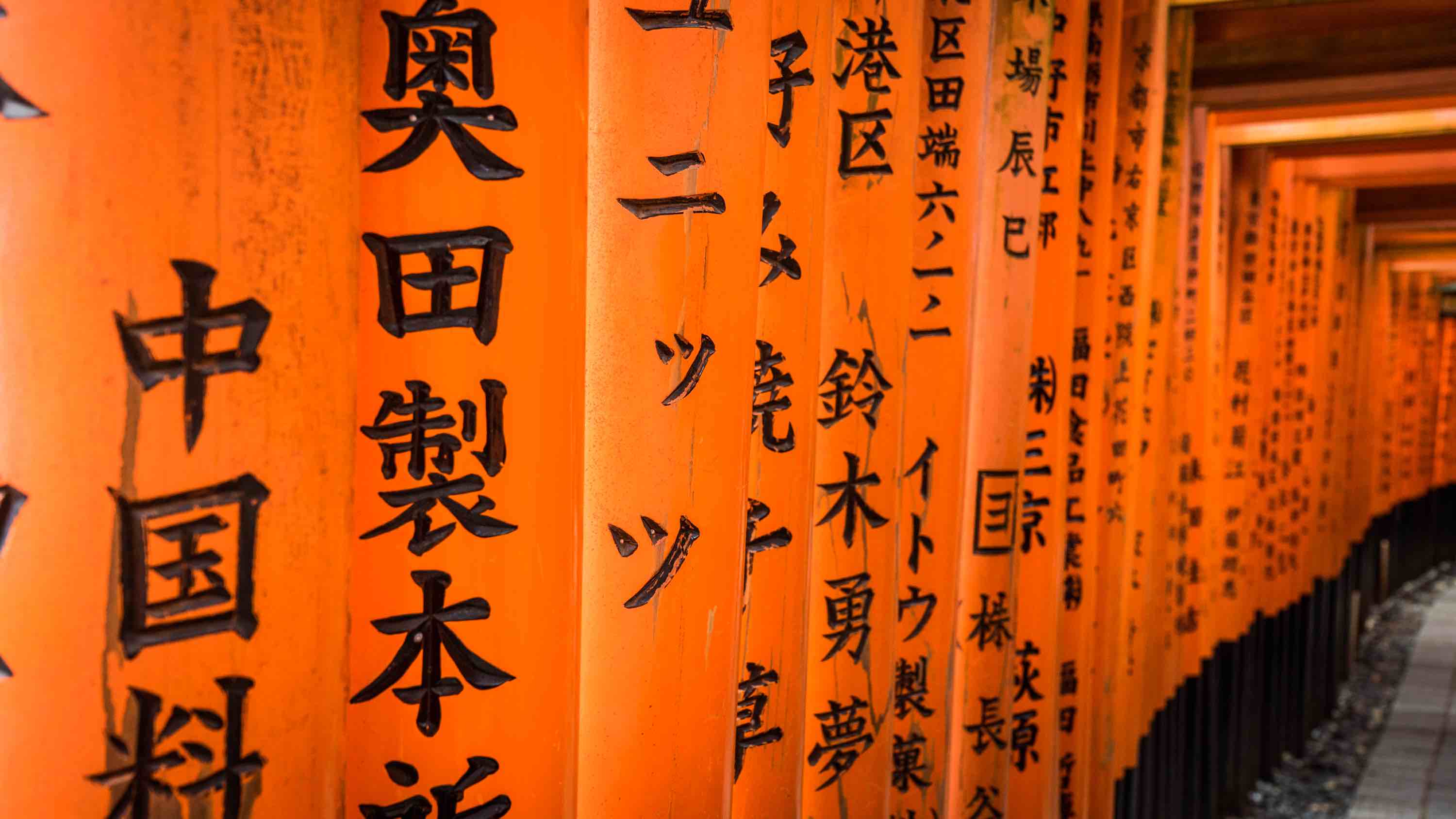
Struggling with your Japan itinerary? I feel you! If it’s your first time to Japan, chances are you’re feeling overwhelmed with where to go. Here is a simple Japan two week itinerary to help plan your trip to this fascinating country!
I’ve been to Japan twice and in both occasions it felt like truly special and enriching experiences.
I indulged in the delicious and rich food. Fell in love with their fascinating but also wacky culture. Hiked mountains, relaxed in onsens , and did my fair share of temple-hopping. I learned a ton about the way Japanese live, act and think and honestly, can’t wait to be back!
Japan Itinerary for a two-week trip
This Japan itinerary starts in Tokyo with a day trip to Kamakura . Then it’s headed up north to the mountains to visit Takayama and Shirakawago . Later, arrives Kyoto before venturing west to Osaka and Hiroshima . Finally, a day trip to magical Nara .
Japan two week itinerary for first-timers
- Tokyo (4 nights)
- Kanazawa (1 night)
- Takayama (2 nights)
- Kyoto (4 nights)
- Hiroshima (1 night)
- Osaka (3 nights)
Japan Itinerary On A Map
To make things easier, I’ve put all these places on this custom map I used during my trip. It also contains restaurants, main sights and even a list of wacky stores and places to visit.
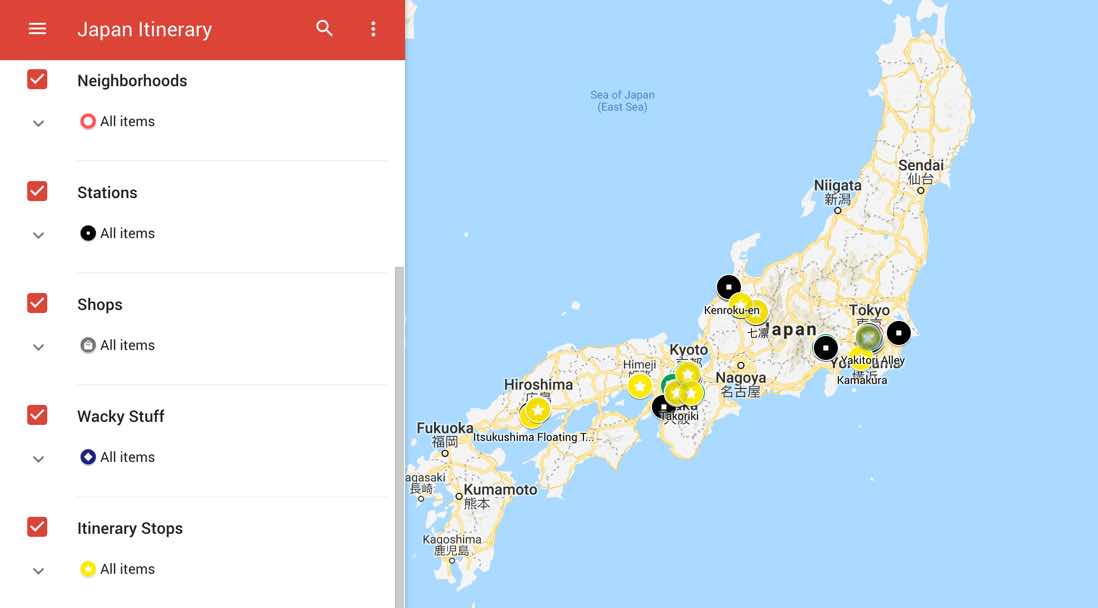
The top-rated places to stay in Japan
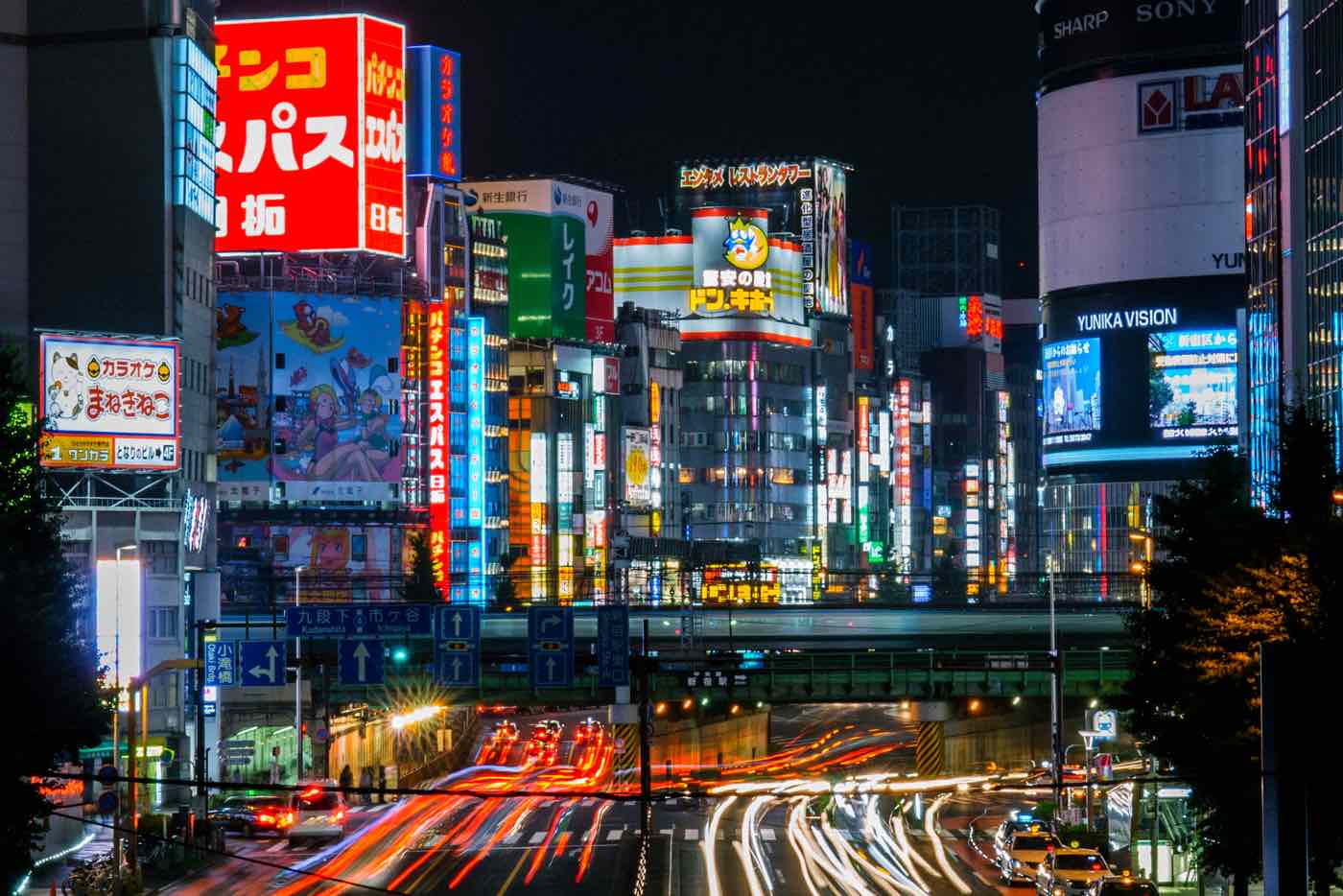
First stop: crazy and energetic Tokyo !
No matter what other big cities you’ve visited – London , Dubai or even New York City – nothing can really prepare you for Tokyo. With a suburban area of over 35M people and home to the largest train stations in the world, I felt tiny. Extremely tiny.
The great thing about Tokyo is that is extremely efficient to get around. Once you start going with the same flow of locals, it’s very easy to go from the massive electronic department stores of Akihabara to the vibrant neon district in Shinjuku . Plan at least 3/4 full days to have the chance to visit the different sides of Tokyo.
What to visit in Tokyo
You can easily spend a whole month in Tokyo without getting bored. Or you can just feel urban anxiety and ready to leave after 2 days. That’s the thing about Japanese cities – they are INTENSE, up to you to decide if you like or not.
For a first-timer, make sure you go to Senso-ji Temple complex . Temples are more impressive elsewhere in Japan, but this is a great first taste and the Asakusa neighborhood turned out to be one of my favorites in Tokyo!
Quite frankly, Shibuya – the “Japanese Times Square”, whatever that means – intersection was slightly underwhelming to me but Shinjuku district blew my mind.
It was in Shinjuku , my very first night in Tokyo, that I realized one can get sucked into the wackiness of Japanese culture pretty easily. Suddenly, I was inside a vortex of delicious ramen , cartoons everywhere, deafening music, giant skyscrapers, and neon lights of all colors. Got to admit I loved it.
Places to visit in Tokyo in a first-time visit 🇯🇵
- Senso-ji – Suddenly, a wave of old traditions immerses the concrete jungle of Tokyo. Take some time to find your luck by drawing omikuji .
- Shibuya crossing – Iconic but slightly underwhelming to me. Go to the nearby Starbucks for the best view (you’ll need to order something).
- Akihabara – A paradise for gamers and electronic geeks, but there’s something for everyone here. Retro lovers should pay a visit to Super Potato shop (I got a super cool Super Mario card deck!)
- Omoide Yokocho – Alley specializing in (really) tiny yakitori restaurants. Say osusume to get chef’s recommendations.
- Shinjuku – The beating heart of Tokyo with thousands of shops, restaurants, bars and arcades to get lost in.
- Meiji Jingu Shrine – Beautiful temple in the middle of a park halfway between Shibuya and Shinjuku.
- Tokyo Government Building – No need to queue up in Tokyo Skytree for the best views of the city. Head straight to the 45th floor, no entry fee!
- Harajuku – The epicenter of the kawaii culture. Lots of animal cafés, even though there are strong reasons to avoid them .
- TeamLab Borderless – One of the most fantastic modern art museums (¥3200 entry fee) I’ve been. Huge digital exhibits – think LEDs and projections – in a variety of scenes. Neat material – check this out !
Best areas to stay in Tokyo
Basically anywhere close to the circular JR Yamamote Line is a good bet. You can get to any area of the city efficiently. Shinjuku and Shibuya are popular areas to stay in, with a lot to see, eat and do but can also be the most expensive. Ginza and Tokyo Station are extremely convenient transport-wise but lack the fun factor in my opinion.
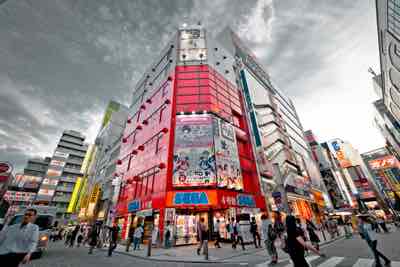
Where to stay in Shinjuku, Tokyo, Japan
Check out this pre-filtered list of the highest-rated places to stay in Shinjuku area in Tokyo.
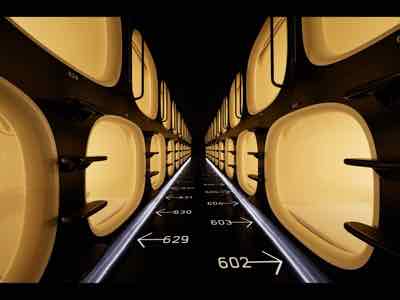
Nine Hours Capsule Hotel, Tokyo
Looking for an experience straight out of a sci-fi movie. This is it.
I stayed in Shin-Okubo area, one stop north from Shinjuku on the JR Yamamote Line. Close enough to everything, but felt good coming back home in a quieter – for Tokyo standards – part of the city.
In this area, I recommend staying in the neo-futuristic capsule hotel Nine Hours or the charming Oyado Cocochi .
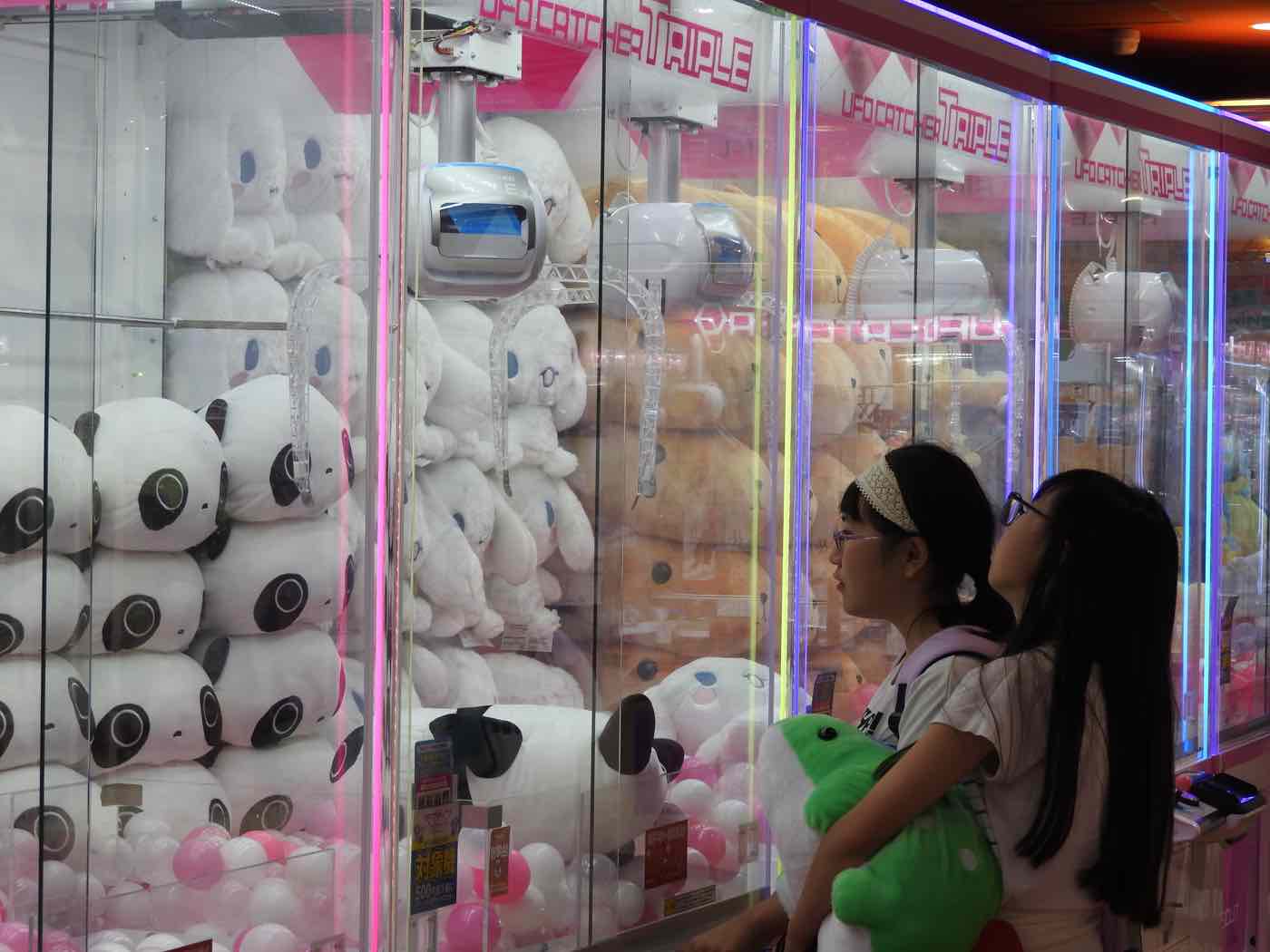
The best food experiences in Tokyo
Tokyo is a true paradise for foodies with thousands of great restaurants serving whatever you’re ready to try, from low-cost ramen places to 5-star Michelin restaurants.
Looking back, my best food experiences in Tokyo were:
- Uobei Shibuya – Sushi delivered to your seat in cute little bullet trains. Ridiculously cheap.
- Standing Sushi Bar – order your sushi pieces directly to the chefs. Incredible experience and a cheaper alternative to Jiro’s restaurant, the most expensive in the world.
- Coco Ichibanya – recommended to me by a local. Definitely a delicious and unique curry, but gotta say y tummy wasn’t a big fan.
- Ichiran – Order from a ticketing machine, get served on booths without seeing the chef or waiters. Slightly disturbing experience, but hey, they nailed on what it matters the most: delicious hakata ramen .
- Tsunahachi – Great place to try tempura in Tokyo.
- 7/11, FamilyMart or Lawson – Sounds weird but egg salad sandwiches and/or pancakes with maple syrup/butter inside these convenience stores are surprisingly amazing value.
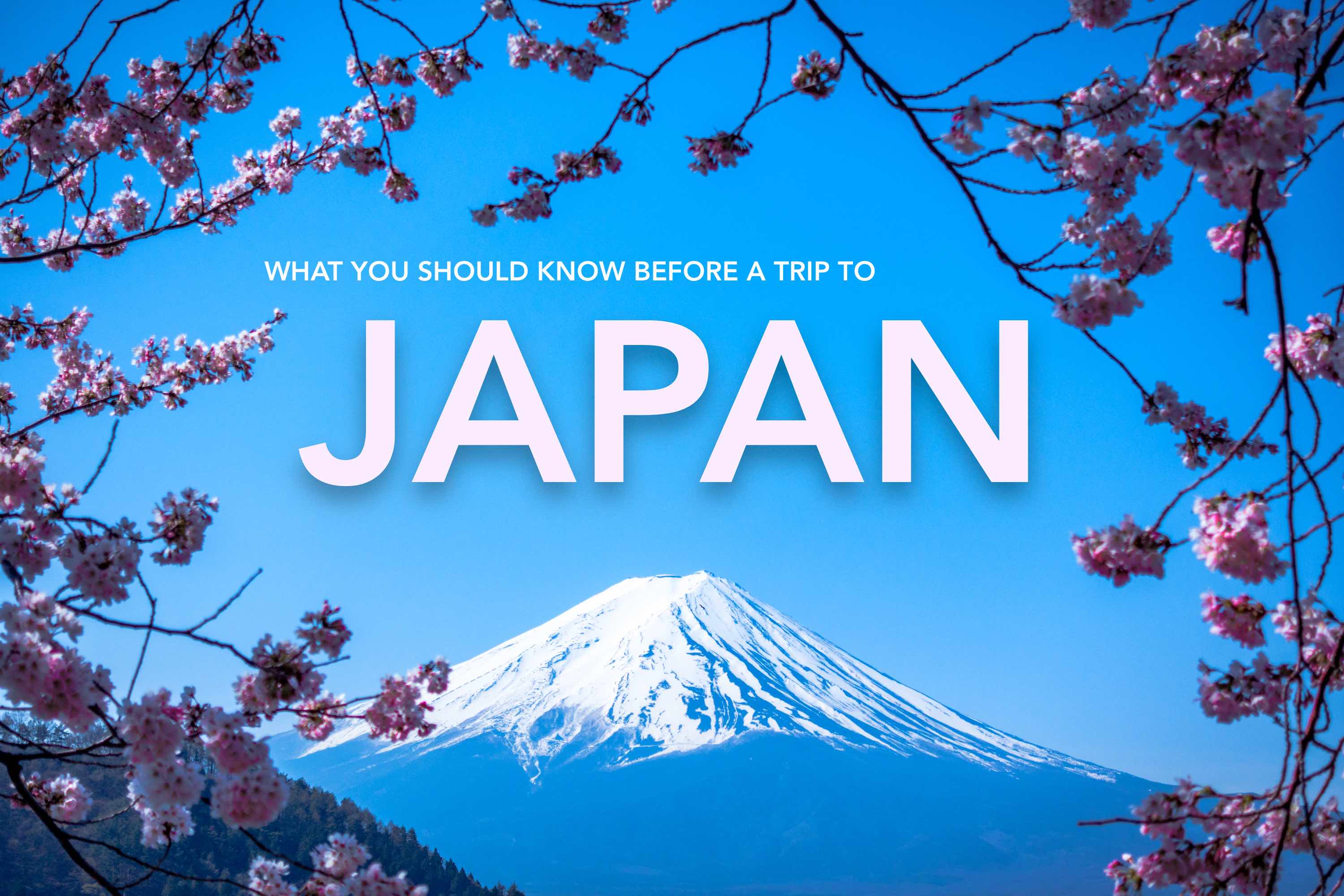
34 Essential things to know before visiting Japan
These tips are bound to give you extra peace of mind on your travels. 34 tips to help you make the best out of your Japan trip!
Time for the first bullet train ride! Shinkansen trains from Tokyo to Kanazawa (duration 2h30) depart from both Tokyo Station and Shinjuku . Grab a bento box or sushi tray from one of the stores. Don’t get late though – these trains leave BY THE SECOND and don’t wait for anyone.
Like everything else in life, we got to pick our battles. So I decided to skip Kanazawa entirely and used it only as a quick night stop before getting to Shirakawa-go and Takayama the following day.
If you have some time in Kanazawa, definitely head to Kenroku-en garden, one of the 3 Great Gardens in Japan and to the Nagamachi Samurai district , albeit I’ve heard Takayama’s old town is more impressive.
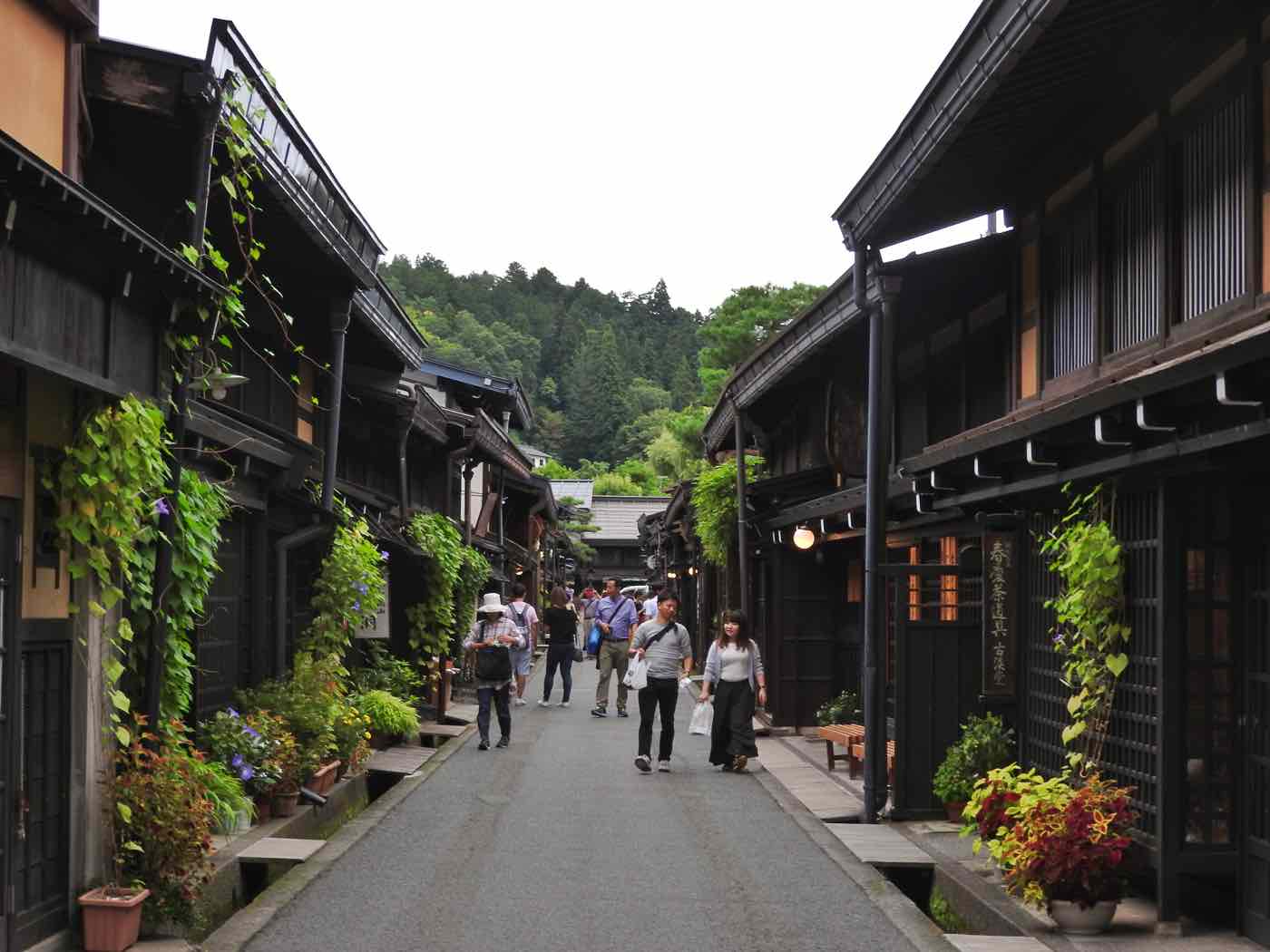
In the heart of Gifu’s mountain region, Takayama is a sneak peek into the past. The black wooden merchant houses in downtown are extremely well-preserved and date back to the Edo Period (when Japan was essentially isolated from the rest of the world).
Adding Takayama to your itinerary is giving yourself a chill pill. The pace of life here is very different than big cities and it’s a great opportunity to see a glimpse of a more authentic and rural Japan. And to stay in a traditional ryokan !
What to do in Takayama
The highlight of Takayama is definitely the well preserved old town, a series of streets with 17th-century houses. Today these are mostly shops and restaurants and trust me: a fully black street is quite a unique sight!
Rent a bike and go to the Hida Folk Village . This open-air museum is filled with traditional wooden houses and huts that were brought over from elsewhere in the Hida mountain region. Feels like a remote village, smells like an open forest, but it’s, in fact, a museum.
Oh, and of course, the food. The Morning Street Market, held daily on the riverside until noon sells not only arts and crafts but local foods and snacks worth to try. And don’t leave Takayama without trying the local Hida beef. The meal I had in Kyoya, consisting of Hida beef with mountain vegetables, in a delicious miso sauce, was absolutely delicious!
Where to stay in Takayama
Ryokans , authentic Japanese guesthouses, can be very expensive, but they are a must-do in Japan. And if you have to pick a place on this itinerary to do it, go for Takayama .
Family-owned Sumiyoshi Ryokan was by far the best place I’ve stayed on my whole trip. The best compliment I can give is that we were treated like true family members.

Sumiyoshi Ryokan, Takayama, Japan
They’ll dress you in a traditional kimono , give you dinner and breakfast inside your room. There’s also free access to a private onsen that is a great idea after a day of walking.
Just a 2-min walk from Takayama’s sunday street market and the old town area.
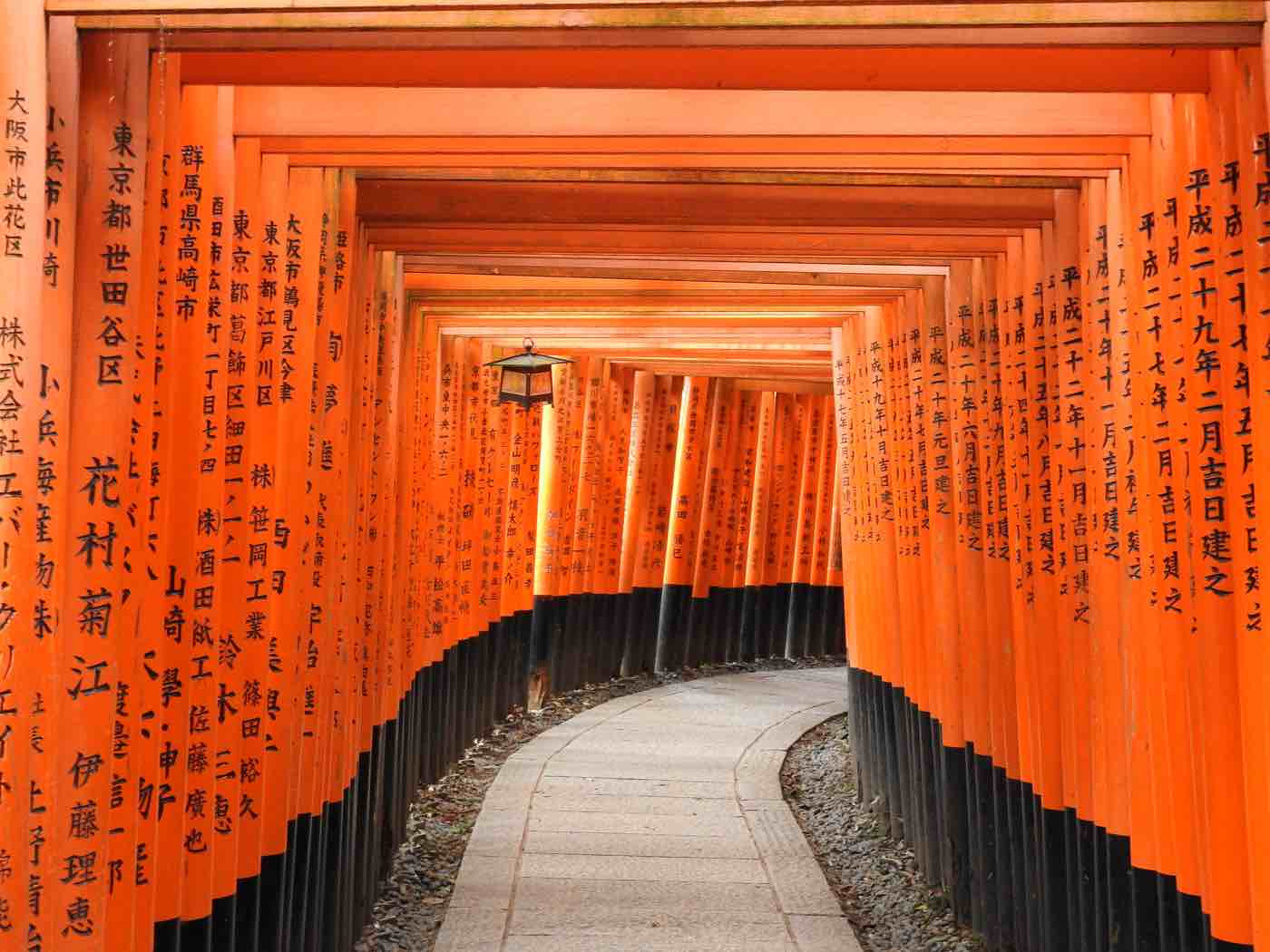
Now, Kyoto . Maybe it was all those dreamy Instagram posts with temples, forests, and cherry blossom trees, but Kyoto surprised me by being a much bigger metropolis than I anticipated.
If first-time travelers to Japan have to visit only place in the country, this is it. The capital of Honshu is a showcase of everything Japan has to offer, from imperial palaces and Buddhist temples to lush forests and traditional geisha performances.
Plan at the very least 3 full days in Kyoto to have the chance to take it all in.
What not to miss in Kyoto
There is no shortage of places to visit and mesmerize in Kyoto . My favorite experience was Fushimi Inari , a set of over 10,000 Shinto shrines that lead the way to the top of a sacred mountain. It’s a special place beaming a special kind of energy in the air so I recommend do it as early as possible to skip crowds. By 9am, the path starts to get impossibly busy and the experience starts to get more stressful than relaxing.
Same with Arashiyama Bamboo Grove . The pathways that go through this natural bamboo forest are incredibly scenic and camera-friendly but herds of tourists in front of you can quickly take away the beauty of the place. Come very early – you don’t want to ruin the cool breeze and chirping of birds.
Other highlights in Kyoto include (LOTS OF) temples, Kiyomizu-dera and Kinkaju-in being the most iconic. I also definitely recommend a visit to Gion, the historic geisha neighborhood, and to the main market in town: Nishiki Market . It’s a great chance to indulge in into unique Japanese delicacies.
Places to visit in Kyoto in a first-time visit 🇯🇵
- Fushimi Inari Taisha – The more you go up the mountain, the less crowded it will be and the more special your experience. Arriving before 9am makes a huge difference.
- Gion – The iconic geisha district. Now, you’ll likely see tourists dressed up in kimonos, but real-life geishas are very hard to spot. They mysteriously appear around dusk on the short path from their taxi to their performance venues. Overall they don’t like to be disturbed or photographed, respect that!
- Arashiyama Bamboo Forest – The pathway is shorter than I expected (only about 10-15 min), but this a delight to all the senses. Come as early as possible and bring a wide-angle lens camera, if possible.
- Kinkaju-in (Golden Pavillion) (¥400 entry fee) – Temple covered in freaking GOLD LEAF. It’s stunning from every angle or time of the year. In between the few moments the sun peeked through the clouds, the whole structure shined beautifully.
- Kiyomizu-dera – You’ll need a significant walk uphill to get there but the view overlooking Kyoto’s valley is stunning and the bright orange architecture is quite a statement.
- Arashiyama Monkey Park (¥550 entry fee) – After a 20-min uphill walk you’ll be rewarded with a park with dozens of monkeys – yes, adorable babies included – and open views over Kyoto.
- Nishiki Market – In the heart of Kyoto’s downtown, this massive market is filled with food stalls with the wackiest delicacies. Try tako tamago – baby octopus with a stuffed quail egg head.
Also check this comprehensive list of the best things to do in Kyoto .
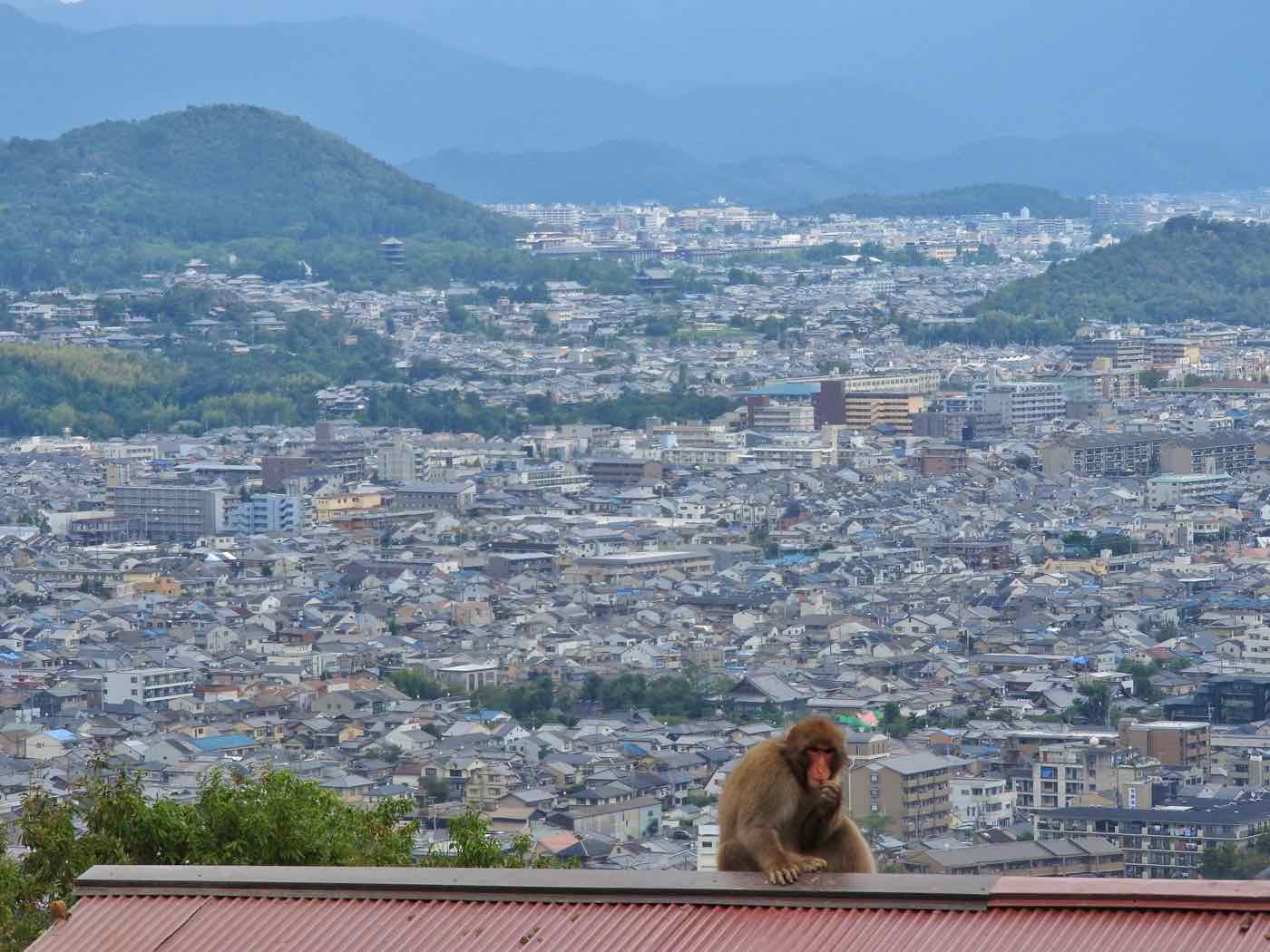
Where to stay in Kyoto
The area around Nishiki Market is the most convenient to get to the major attractions of Kyoto. You’ll also be in walking distance to hundreds of malls, bars, shops, and restaurants.
If you seek a more unique experience amongst well-preserved architecture and century-old traditions, Arashiyama or Gion districts are better options. The first is a quieter area, closer to the forest. The second is the famous Geisha district. It’s not every day you get the chance to bump into an authentic geisha and her maiko on the way to your hotel.
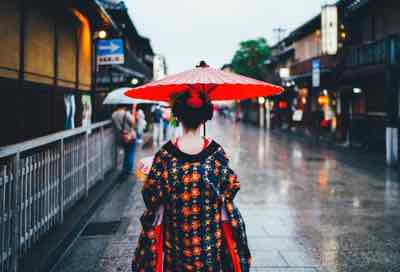
Where to stay in Kyoto, Japan
Check out this pre-filtered list of the highest-rated places to stay in the Gion district, Kyoto.
Getting around in Kyoto
Not only Kyoto is a massive urban area, but the main sights are all in different areas of the city, far away from each other. Keep in mind public transportation is optimized for local commutes, not for tourists. So there aren’t direct subway lines or easy transitions from Arashiyama to Fushimi Inari or to Kinkaku-ji .
As a result and contrarily to other Japanese cities, buses will likely come into play. And a ride can easily take 40 minutes. My best tip is to not underestimate the time you take from A to B and avoid planning too many things for each day. Kyoto is definitely a place to study how to get around.
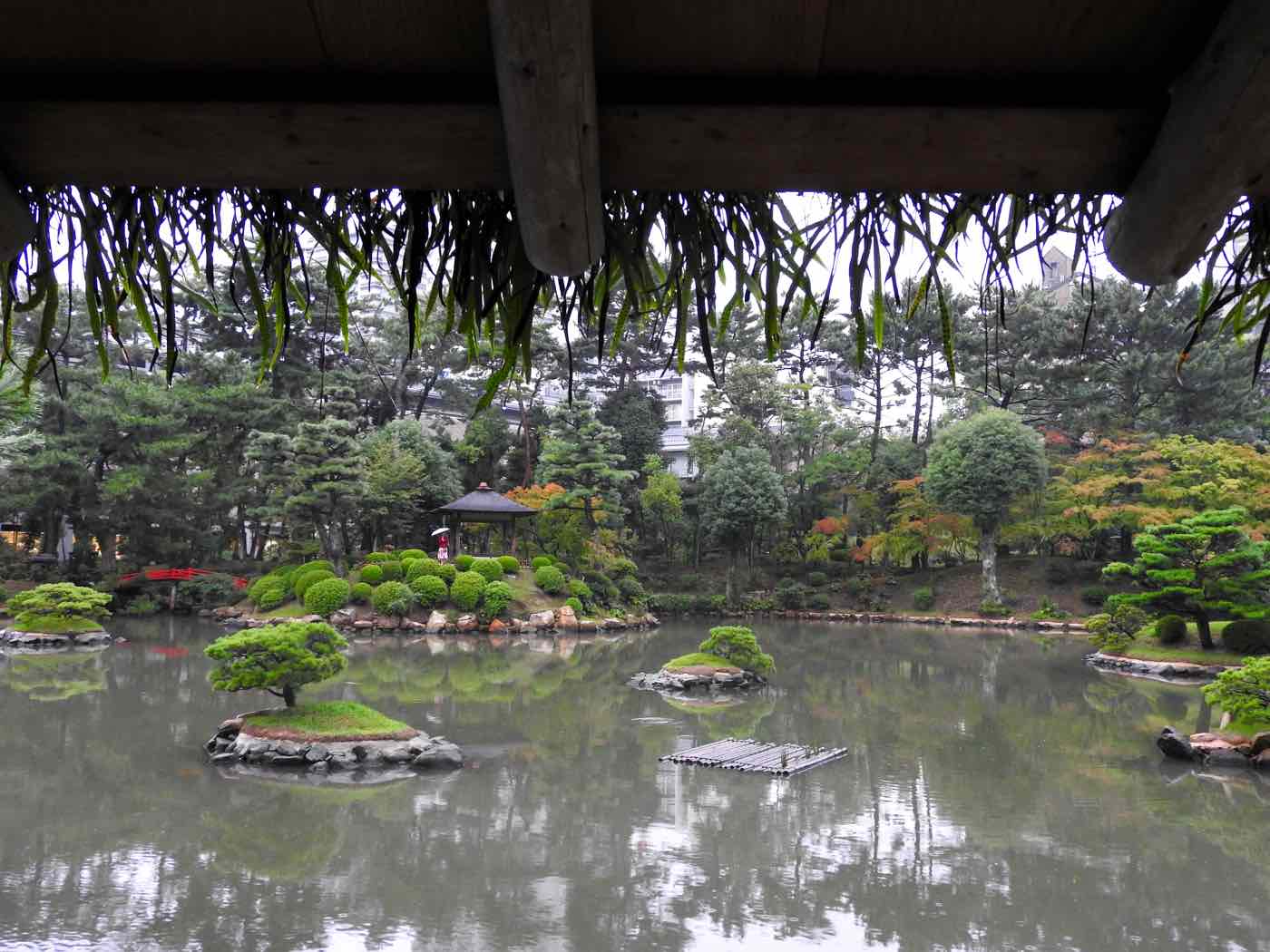
I knew beforehand that being in the impact area of an atomic bomb and that killed 200,000 people would be a powerful and moving experience. The iconic Genbaku Dome , the only structure left standing after the bombing, gave me a bit of chill.
The Peace Memorial Park and Museum has loads of interesting and easy-to-digest information about the events that led to the bombing of both Hiroshima and Nagasaki , as well as effects of radiation in the population and environment.
However, and maybe the gloomy rainy weather had a big part in it, but I’m sorry to say this was my least favorite place in Japan (not even having the best okonomiyaki saved it!). With all due respect to the tragic happenings back in Summer of 1945, Hiroshima is a stop-and-go place for me.
Thing is I’ve made the (wrong) choice of staying in Hiroshima for the night. It helped the budget and is more convenient in terms of logistics. But quite frankly you’re better off spending time in Itsukushima , better known as Miyajima (see the next section !).
Hiroshima, the place for okonomiyaki
Okonomiyaki is a type of Japanese savory pancake that can basically contain anything you like. I mean literally – the name means “cooked as you like it”. It usually contains shredded cabbage, eggs and a meat (pork or squid) and topped with several condiments and a special sauce.
When you’re around in Hiroshima, try the local okonomiyaki recipe, which is layered rather than mixed and made with noodles (either yakisoba or udon ). Sounds weird, but it’s delicious. It’s so popular that Hiroshima even has an okonomiyaki mall – Okonomimura – consisting of 3 floors of restaurants making this delicacy.
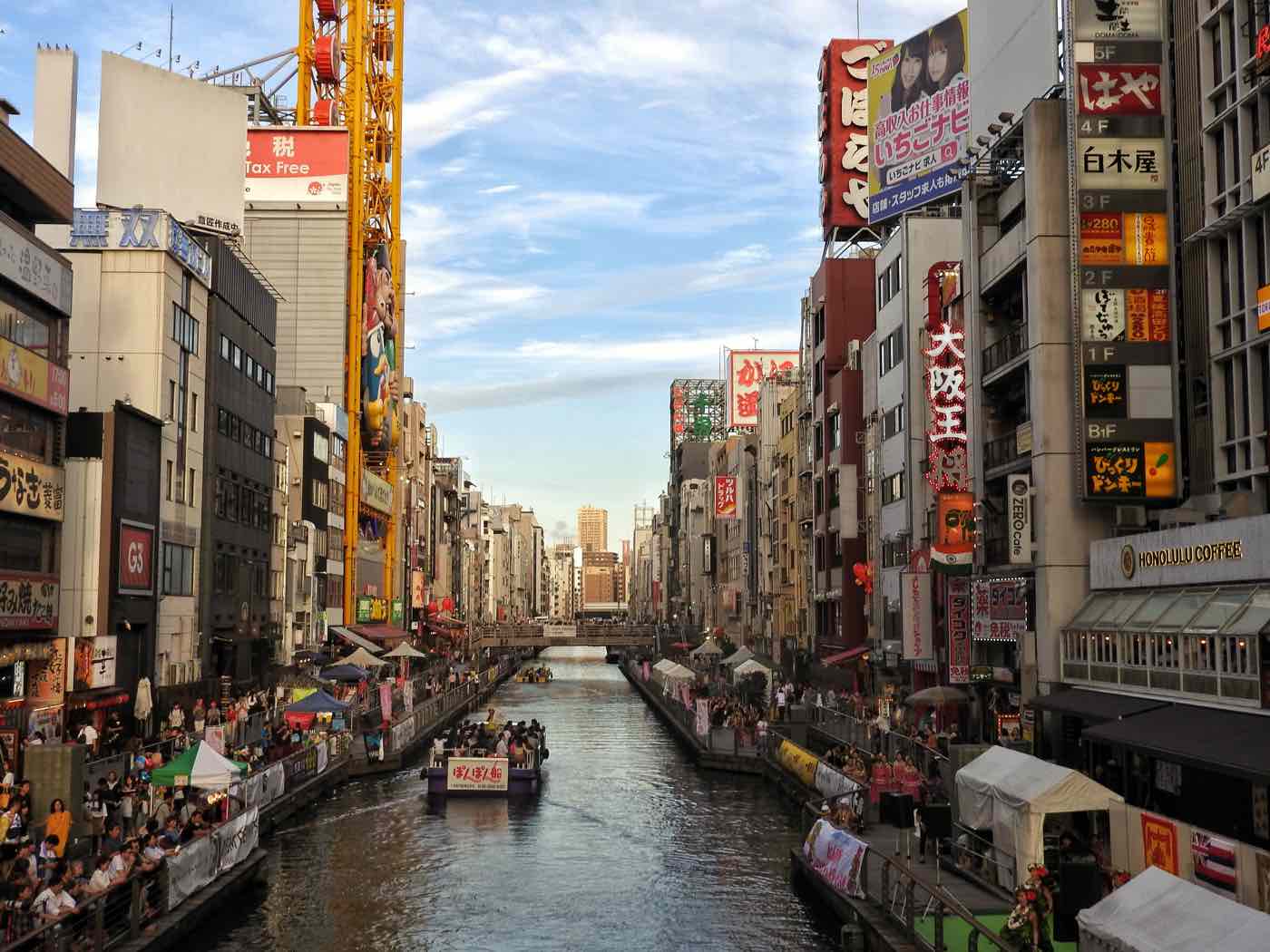
Many choose to overlook Osaka on their trips to Japan but I think it deserves a visit for several reasons. It has a top-notch food scene – some chefs even consider it the best city for foodies in the world – and can be a great base to explore other places as day trips (see next section).
Lastly, it is the antipode of everywhere else I’ve been in Japan. People speak out loud on the trains. Everyone acts looser and more chilled (and they even queue on the right, not on the left like everywhere else 🤔). It’s definitely more rough around the edges, but after weeks of Japanese strict behavior, somehow this felt refreshing.
What not to miss in Osaka
The beating heart of Osaka is definitely the Dotonbori area. It’s filled with party goers, extravagant neons, crazy arcades, and huge department stores. The river views from Ebisubashi Bridge are beautiful and just a bit surreal. Even though it may not be for everyone, the iconic Glico running man can’t be missed.
That said, what makes Dotonbori really special is the food. Osaka is absolutely obsessed with food and the thousands of restaurants, bars, and street vendor stalls here is a delicious mix. Don’t miss takoyaki , octopus dumplings served with bonito flakes on top, okonomiyaki , and other million seafood dishes.
shopping for souvenirs and gifts back home .
Places to visit in Osaka in a first-time visit 🇯🇵
- Dotonbori St – The more you go up the mountain, the less crowded it will be and the more special your experience.
- Glico Running Man – The icon of Osaka.
- Umeda Sky Building – Impressive views from the observatory on the top.
- Osaka Castle – A peek onto japanese castle architecture, although Himeji ‘s is much more impressive.
- Himeji Castle – If you have extra time to spare, make use of your JR pass and take the train to Himeji to see a giant white castle worthy of your best dreams.
Where to stay in Osaka
There are 2 main “city centers” in Osaka – Umeda and Namba – which correspond to the main transport hubs.
Namba is superior in nightlife and food, it’s bright, busy and loud unlike the rest of Japan.
Umeda is more business-y, but with great food options too. It’s also close to some sights and it’s more strategic for shopping. Be careful though, I got lost twice on the HUGE underground malls!
I stayed in Umeda , in Washington Hotel which caters to a more professional and high-end clientele. I’m not complaining though: had AMAZING views from my room on the 14th floor.
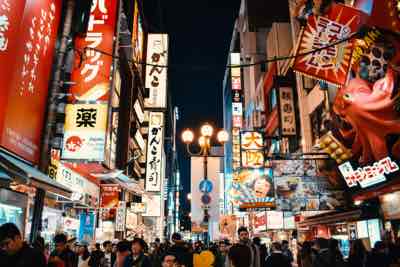
Check out this pre-filtered list of the highest-rated places to stay in the Namba and Umeda areas in Osaka.
Day trips to do in this itinerary
Kamakura (from tokyo).
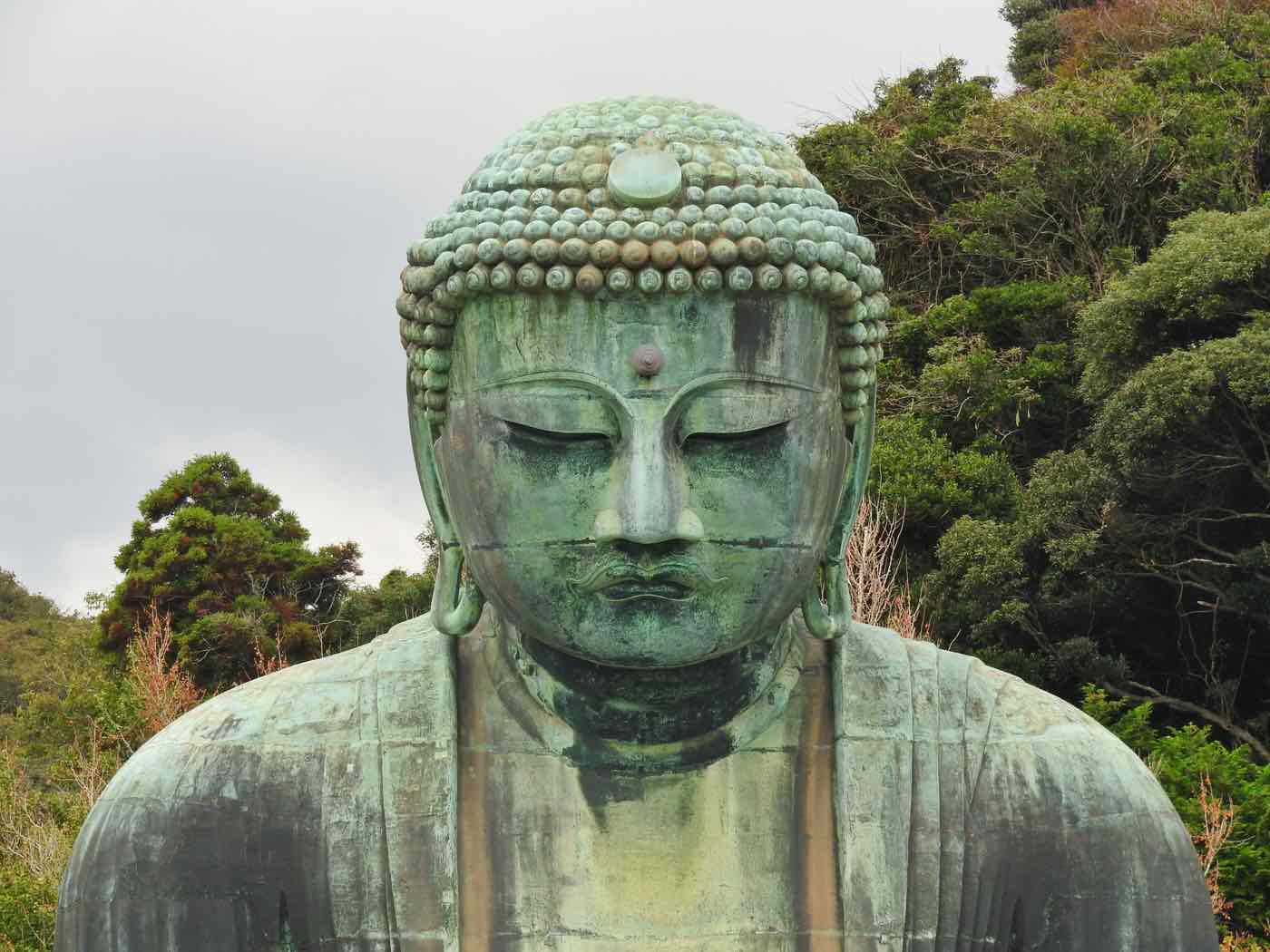
Out of all the day trips you can do from Tokyo , Kamakura is the closest and more convenient to get to: just a short 35-min trip by train. If you don’t want to spent too much time planning and want a small getaway from the city madness, Kamakura is a nice and pleasant option.
There are over 100 small temples and shrines in this area but the highlight of this town is definitely Kōtoku-in . This monumental bronze Buddha statue is reachable via a 20-min walk or a short bike or bus ride (IC cards accepted!) from Kamakura train station. You can even enter inside the statue for a small 20¥ fee. Worth it, considering “I’ve been inside a Buddha” could be a good icebreaker at parties.
Hase-dera (300¥ entry fee) temple and garden complex is a great place for a stroll exploring caves, Buddha statues perfectly mashed with beautiful architecture.
I’ve missed other temples and the entire downtown Kamakura and the busy Homachi street and decided to walk all the way to the coast instead, through the cute little streets, local railways, and beaches. There are many more options for temple hopping around though.
Temples and shrines in Kamakura
- Hase-dera – no one mixes architecture with nature as well as Japanese and this is just another proof.
- Hokokuji – a bamboo garden with a café inside awaits.
- Engakuji – popular for autumn leaves viewing!
- Tsurugaoka Hachimangu Shrine – the most popular Shrine in Kamakura
Shirakawa-go (from Takayama or Kanazawa)
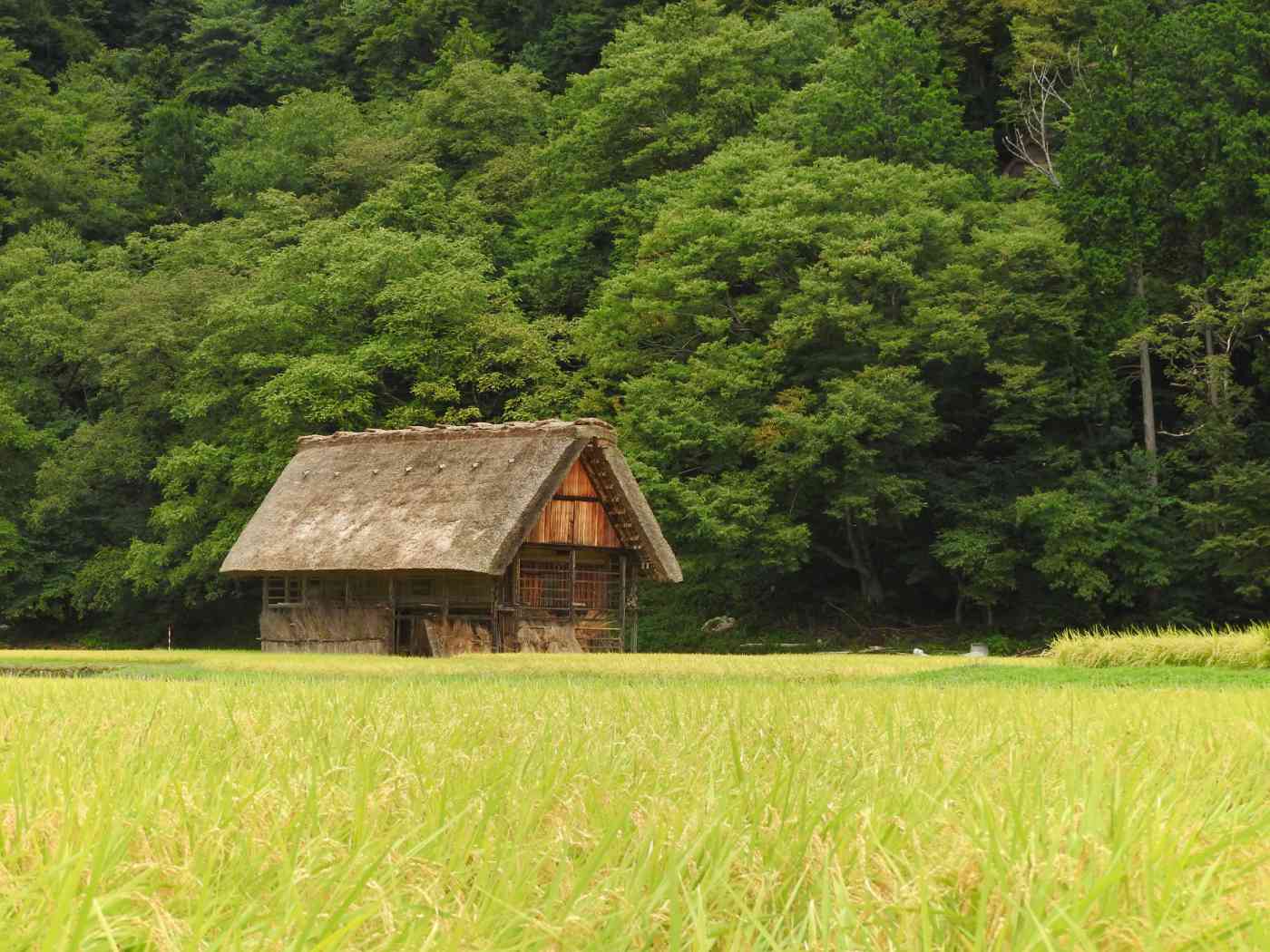
Do you know these tacky white postcards we used to send in Christmas with a hobbit village covered in snow? I’m pretty sure they’ve inspired in Shirakawa-go .
This tiny traditional Japanese village located in remote mountains is famous for its 100+ houses built to withstand rough winters and big layers of snow. This architectural style is known as gasshō-zukuri and means “hands in prayer”. This place is beautiful at any time of the year and is a UNESCO World Heritage site since 1995.
Not gonna lie – there isn’t much around “to do” here. And that’s fine. It’s good enough to just walk around the village for a few hours. See the rice fields, the Shogawa river bridge, and walk all the way up to the viewpoint with a view that you’ll surely remember for years to come.
If you want to visit Shirakawa-go , study your itinerary beforehand. Staying for the night in one of the farmhouses might be a bit too boring for some and buying a return trip from Takayama is not very efficient in terms of logistics. See an alternative below.
How to make a stop at Shirakawa-go 🗾
The easiest way to get to Shirakawa-go is by bus from either Takayama or Kanazawa . So coming from Tokyo, I took the late evening Shinkansen to Kanazawa and stayed there for the night.
On the following morning, I hopped on the Nohi bus to Shirakawa-go and left the luggage at the bus station and visited the village. If there aren’t enough coin lockers, you can leave it with the staff. Later in the afternoon, picked it up again and got on the bus to Takayama . Easy peasy!
I recommend to buy your tickets in advance online – you’ll need two separate tickets for each leg of the journey. If you can’t be bothered about your luggage, you can send it directly to your following hotel via a luggage forwarding service.
Miyajima/Itsukushima (from Hiroshima)
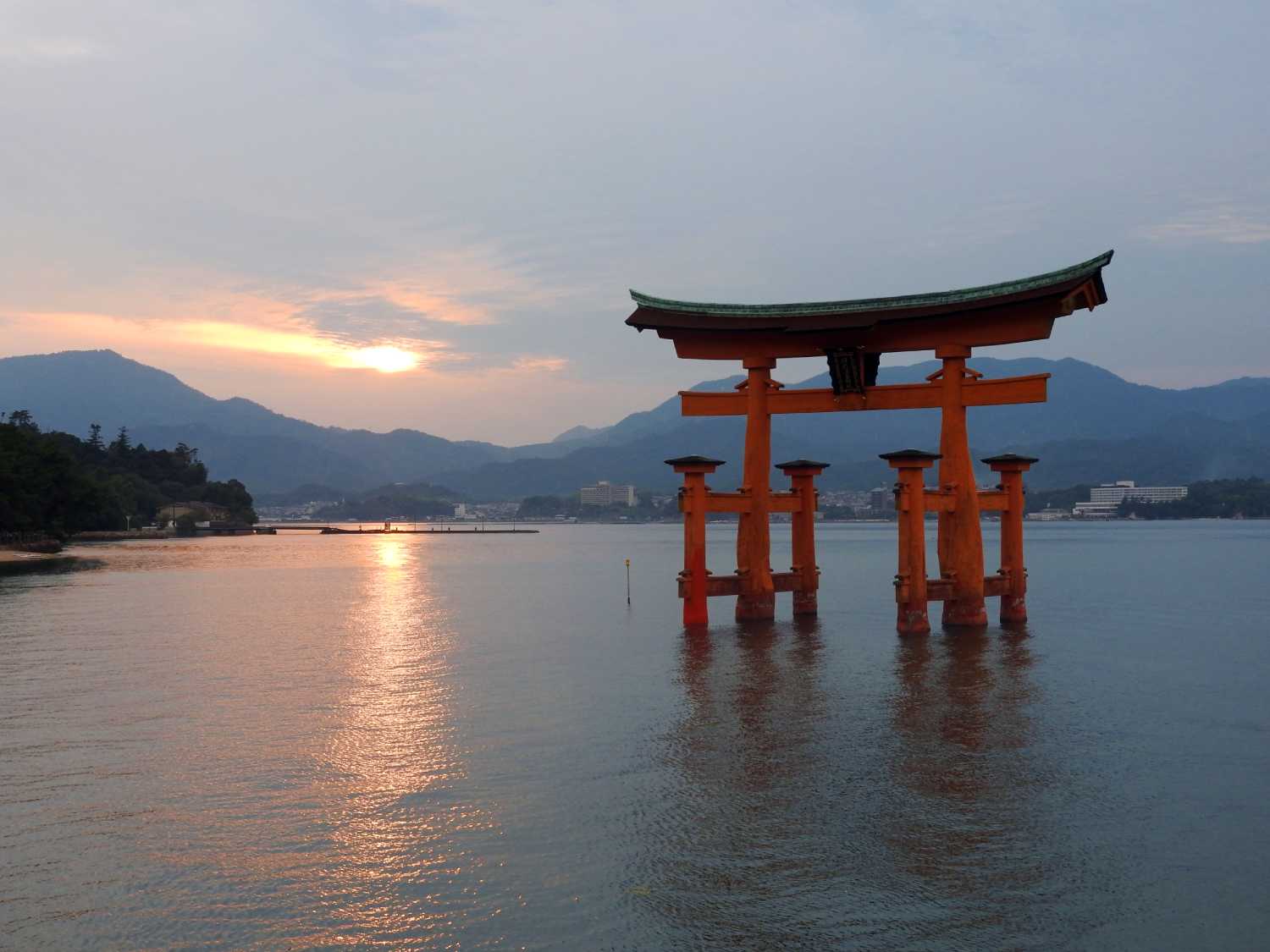
If there’s something I regret from my Japan trip is not staying overnight in Miyajima . Yes, it’s less convenient to carry your luggage or backpack there. Yes, it’s more expensive. But it’s entirely worth it to spend here at least 1 night.
From the moment the ferry (one of the operators is included in JR pass btw) departs Miyajimaguchi towards Miyajima, you already have a glimpse of how amazing this island is. Mostly covered in forest, from the coast all the way up to the mountains with a giant orange torii gate just offshore. It’s a tropical paradise of its own kind: drenched in history and tradition of its shrines and pagodas.
Once you get out of the station, cuteness overload. Hundreds of deer wander around the island; they’re kind, chilled and some can even come to greet (even though they have real intentions to steal with your food). Miyajima is a place I didn’t want to leave.
What to do in Miyajima
You mean, apart from hanging out with deer? Well if you’re coming to Miyajima island , the floating Great Torii Gate is a mandatory stop. Check for tide schedule and come when the high tide submerges part of the structure and chill out at the nearby quay.
Miyajima is also a perfect place to greet nature in hiking trails, with dense forests and great views over Hiroshima Bay .
The restaurants on the island are not exactly cheap, but you can indulge in some unique food delicacies such as oysters and clams as big as your face. Seriously.
Places to visit in Miyajima in a first-time visit 🇯🇵
- Mount Misen – Hop on the Miyajima Ropeway (¥1800 round trip) to the top of this sacred mountain and take in the breathtaking views.
- Floating Torii Gate – One of the most beautiful sights in Japan. Check tides beforehand to get come here for sunset for the best photos.
- Itsukushima Shrine – Seaside 12th century shrine.
- Daishō-in – Another beautiful Japanese temple complex located in Mount Misen.
Nara (from Osaka or Kyoto)
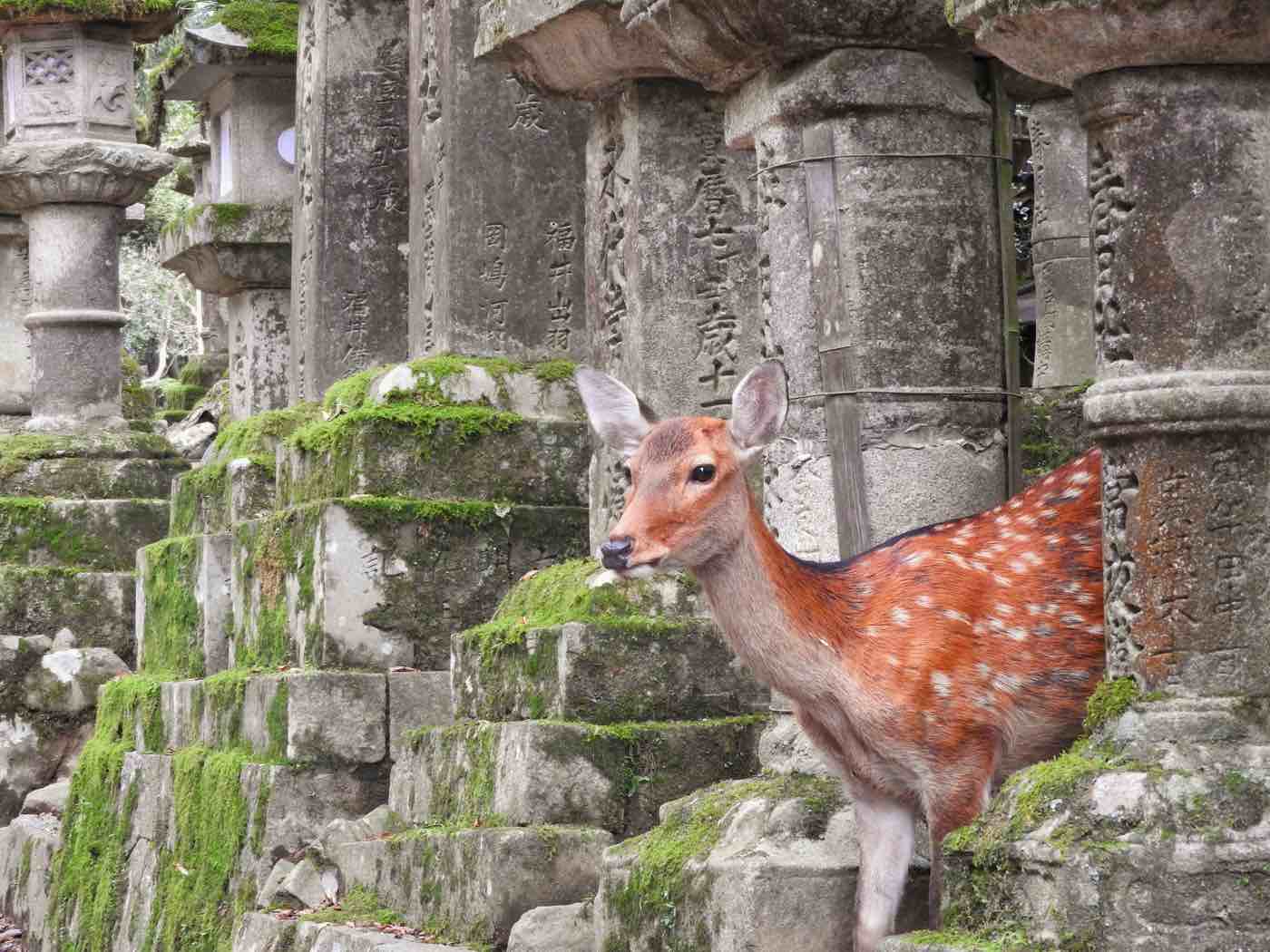
The ancient capital of Japan, Nara is world famous for two things: temples and deer. Yes, more deer! 🦌
On one hand, some of the largest Japanese temples and shrines can be found here. In between these amazing historical sites, thousands of deer roam freely, making it a magical and eerie site. You can buy cookies to feed the deer from street vendor stalls. Some of them can be a bit too eager (and aggressive?) but most are nice and will even BOW TO RECEIVE A COOKIE. How cute is that?!
Nara is a fantastic day trip and one of my most memorable travel experiences ever. If you have some more time, stay in the area for a night or two to explore more temples and feed on its beautiful vibe.
Best temples in Nara ⛩️
- Tōdai-ji (¥600 entry fee) – enough to say this is the tallest wooden structure IN THE WORLD. Don’t miss the huge wooden guards at the entrance. Admission: 500¥.
- Horyu-ji – A little more sober but with an equally fascinating wooden architecture to admire. Admission: 1500¥.
- Kōfuku-ji – A Buddhist temple and also a UNESCO World Heritage Site and one of the Powerful Seven Temples. Admission: from 500¥.
Japan itinerary budget & costs
Cost breakdown of a japan trip 💸.
Here is my cost breakdown, based on real numbers of my trip to Japan. Unless stated otherwise, prices in yen (JPY) and per person.
- 🏨 Accommodation: I stayed in a rather eclectic mix: a capsule hotel for 1 night, ryokan for 2 nights, guesthouses and business hotels. The average price of my accommodation for two people was roughly ¥10,000 per night. Because single rooms are usually not exactly half the price of doubles, I imagine per person, this would cost around ¥6,000 per night or a total of ¥84,000 for 14 full days.
- 🚆 Transportation: I bought the JR Rail pass that covered all the train rides throughout Japan + some urban journeys using the JR trains. The pass costed ¥46,000. Add an extra ¥7,000 for additional trips on other trains, subways and buses.
- 🥘 Food: Especially in big cities, I easily got away with meals costing less than $20/person. Sometimes half of that. ¥6,000 per person per day, or ¥84,000 for 14 full days, will be more than enough for most travelers.
- 🛍️ Others: Let’s add an extra ¥3,000 per day (¥42,000 in total) for entrance fees or other miscellaneous spending. If you’re a shopper, consider adding more.
- 💰 Total cost: Altogether, you can expect a two-week Japan trip to cost around ¥263,000. Take these numbers just an estimation – speak to your accountant! 😜 – and remember they don’t include flight costs.
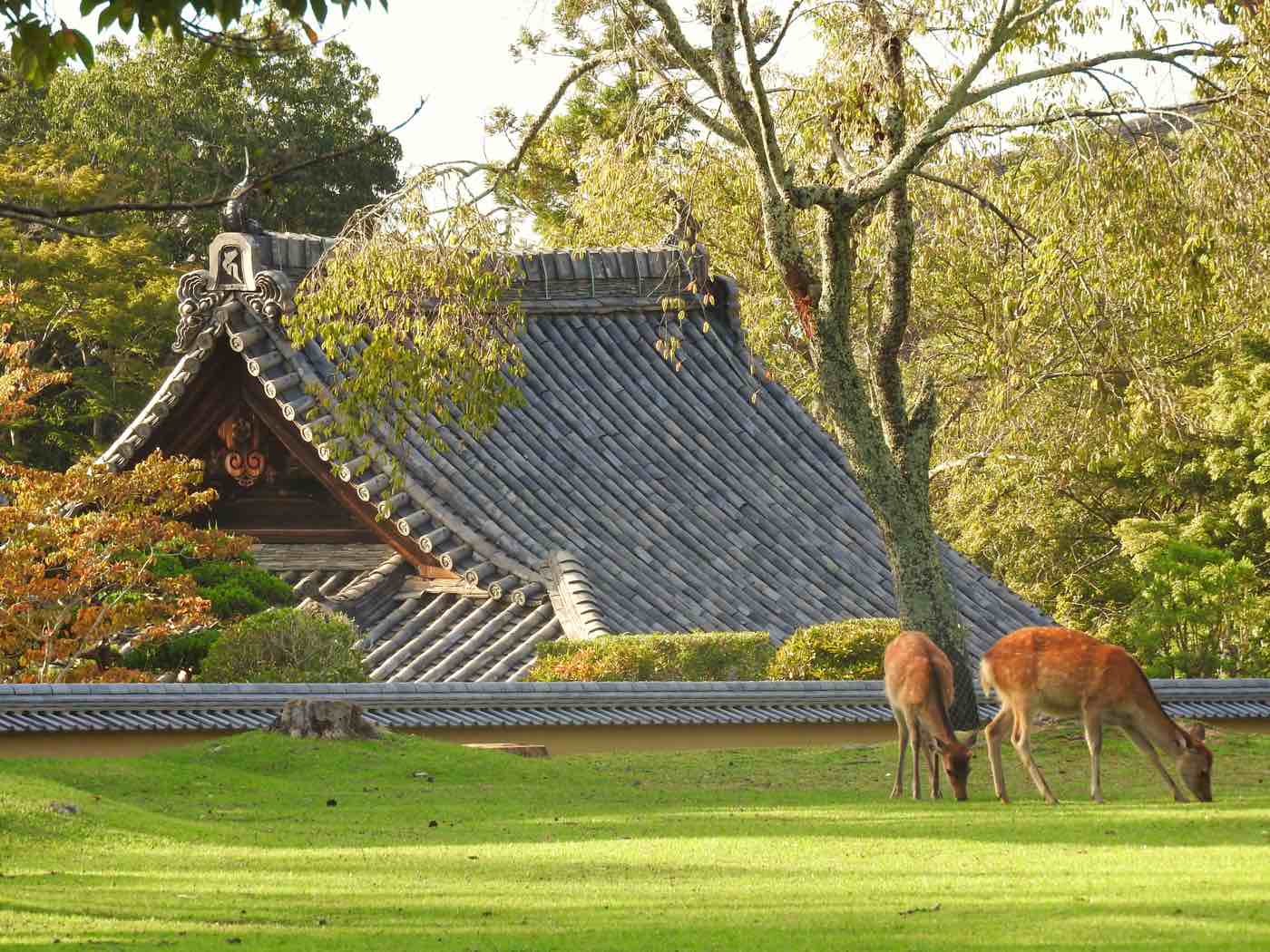
Japan Itinerary FAQ
Who is this itinerary for? This itinerary is tailored for first-time travelers to Japan . I tried to achieve not only a good overview of the country but also a balance between urban vs countryside, between big city vs village. That said, obviously tweak the itinerary to favor more time in the places that resonate with you the most.
Will I see everything in Japan with this itinerary? No. Ditch any FOMO. It’s impossible to see everything in Japan in such a short amount of time.
Is it jam-packed or more relaxed? I wouldn’t say this a rally course, but it’s not entirely a breeze. There are some day trips and there are some stops where you’d only be staying 1 night. If you’re traveling with kids or want a more relaxed trip, consider tweaking it.
Where did you arrive and leave Japan? I arrived in Tokyo (Narita airport) and got my flight back from Osaka .
How did you get around? I traveled mostly by train, using a JR Pass . In the end, I did some math and figured it save me some – not much – money but mostly it saved me time . It’s very convenient not to have to buy individual tickets every time.
I’ve also used buses to get to Shirakawa-go , ferry to Miyajima and subway/local trains inside the cities.
How much does a trip like this cost? Make sure you check my budget breakdown .
When is the best time to go to Japan?
Every season of the year brings out a new kind of beauty in Japanese landscapes and traditions. Note the weather varies a lot depending on the region you’re visiting.
Overall, spring and fall months, when temperatures are milder and there is less rainfall, are the best times of the year to visit Japan .
- Spring (March to May) – Magical time to visit. However prices skyrocket close to hanami (cherry blossom) season (see below).
- Summer (June to August) – Weather can get a little crazy with the peak of typhoon season and high temperatures. Hiking season in Mount Fuji .
- Fall (September to November) – Great chance of seeing the vibrant color spectrum of autumn leaves. Mild temperatures.
- Winter (December to February) – The coolest months bring less visitors to Japan, but prices are also considerably cheaper. Best time to visit the snow monkeys in Jigokudani and to hit the slopes in snow sports.
When is cherry blossom (hanami) season in Japan? 🌸
As a natural event, there are no fixed dates when does hanami takes place each year. Generally, the more south you are geographically in Japan , the earlier the blossoms open. In big cities like Osaka , Kyoto and Kyoto cherry blossom happen in early April. But it can go as early as January in the southern islands of Okinawa and as late as May in northern Hokkaido .
Japanese people are healthily obsessed with cherry blossom season and is deeply rooted in their culture and nationwide traditions. It represents the ephemerality, fragility of life: so beautiful but so short at the same time.
Problem is: everyone is traveling to and in Japan during this time of the year. Prices will be inflated so make sure you book your trip with extra time in advance.
Places I’ve missed in this trip to Japan
I had to leave some places out of this itinerary. Japan is massive and has a ton of things to see and do that you got to make choices. If you’re lucky enough to have more time to travel through Japan, find below some more ideas:
It can be done as a day trip from Tokyo, but IMO it’s too rushed and staying in one of the ryokans is the highlight. I’d either do Hakone or Takayama , although my personal preference is the latter.
Kawaguchiko
The best views of Mount Fuji are here and this is enough of a reason to visit. Going just for a day is very risky specially outside the winter period – check visibility forecasts to optimize your chances of seeing more than just fog. If this is a must, I’d consider staying in the area for at least one night.
The northernmost island in Japan is a must go for me. Known for its ski areas, volcanoes, hot springs, and other beautiful forms of unspoiled nature.
Who would have thought Japan is capable of doing tropical islands with white soft sandy beaches? On my bucket list and not only because I’m a beach bum. To add to the fascination factor, they’re one of 5 Blue Zones where people live the longest worldwide.
I skipped this place on purpose because I want to visit it during the fall season. A harmonious mix of lavishly-decorated temples and shrines, relaxing onsen (hot springs) and top-notch hiking opportunities around. Like Hakone, can be done as a day trip from Tokyo.
30+ tips to help you make the best out of your Japan trip.
Are you planning your Japan two week itinerary? Which other places do you recommend adding to a first-time trip? Let me know in the comments below!
You might also like these articles 💬
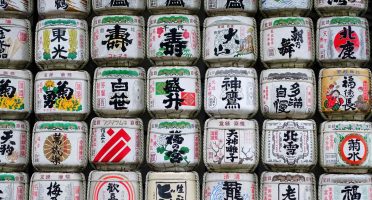
Japan Travel Tips: 34 Things to Know In 2024
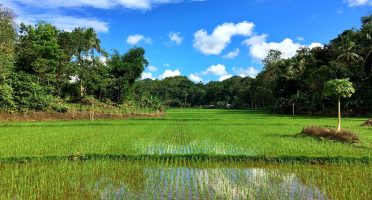
Travel Guide to Bohol, Philippines – Budget & Itinerary
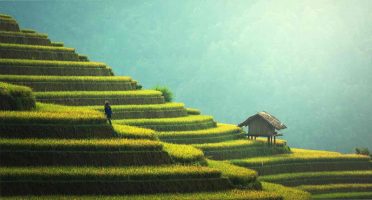
Vietnam Tips And Tricks: 26 Key Things To Know Before Your Trip
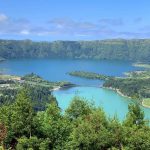
Destinations🌎

- Skip to main content
- Skip to primary sidebar

Destinations
- Plan Your Trip
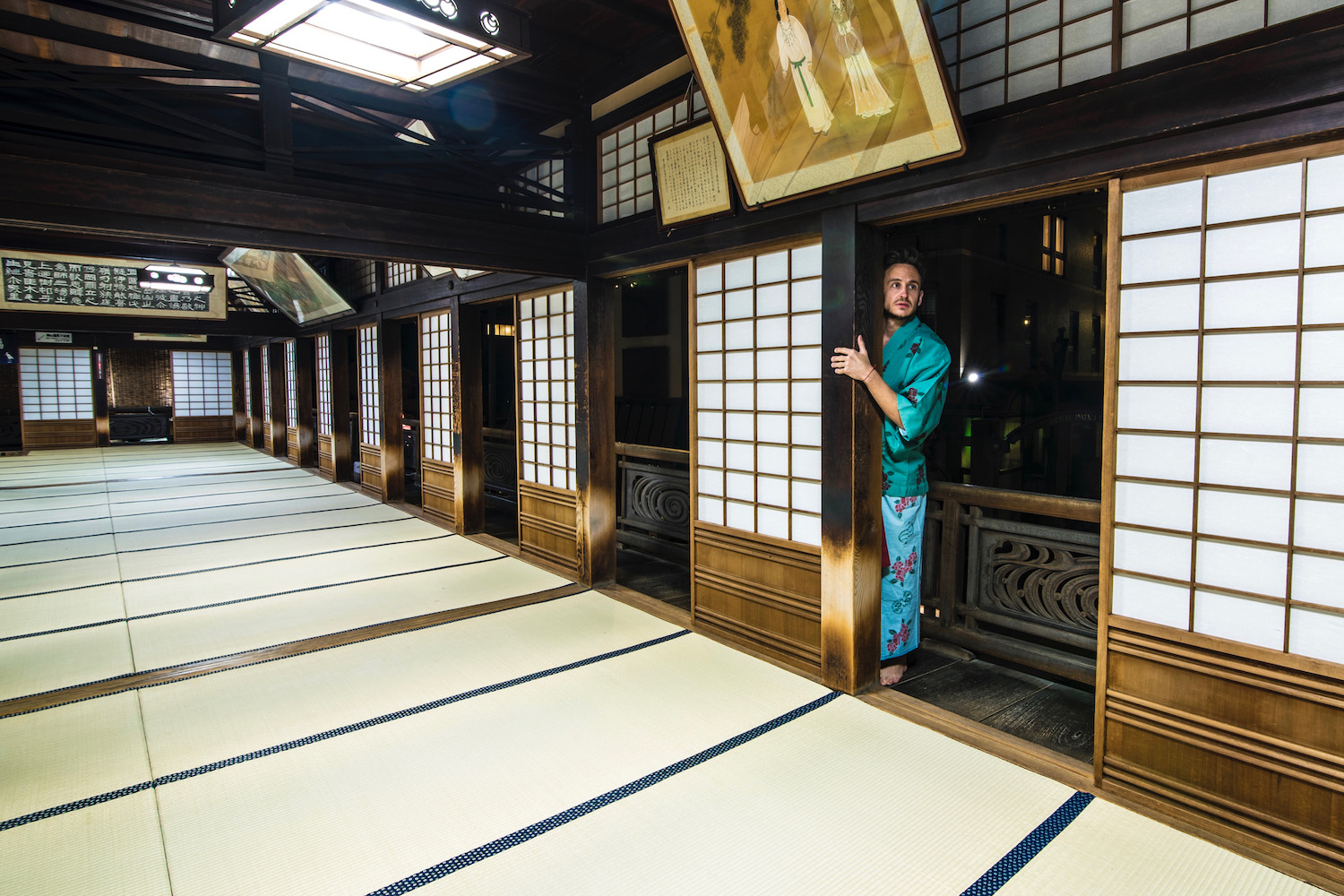
Japan in Just Two Weeks
As you search through travel guides for Japan, you find a lot of information about destinations and experiences, but probably not a concrete idea of where to go, for how long and in what order. Most every traveler who spends 2 weeks in Japan starts in Tokyo , and goes to Kyoto from there, but then what?
Over the next several paragraphs, I’ll not only talk you through the highlights of Japan’s most essential cities and regions—in order—but give my recommendations on how long to spend in each. Without further ado, here’s the best way to spend two weeks in Japan.
Where to Stay During Your 2 Weeks in Japan
One way to keep your Japan two week itinerary exciting (as if all the incredible Japan destinations I’m about to describe to you aren’t enough) is to stay in a variety of different accommodations. This means boutique city hotels like Hotel Felice in Tokyo’s Akasaka ward to picturesque ryokan guest houses like Ryokan Kyoraku in Kyoto.
You can also, of course, vary the relative luxury of your accommodation. Whether you plan a Tokyo Kyoto Hokkaido itinerary or focus on southern Japan like Kyushu and Shikoku, juxtaposing luxuries properties like The Conrad Osaka with simple stays at places such as Super Hotel Takamatsu will add further texture to your Japan trip.
Places to Go With 2 Weeks in Japan
The question of how long to be spend in Tokyo is a contentious one, so allow me to be blunt: Three days in Tokyo should be your maximum if you’ve only got two weeks in Japan, though how many days in Tokyo you should spend becomes a more open question if you have three weeks in Japan or longer. From day-time attractions like Senso-ji Temple and Takeshita Street , to nights spend in the neon-washed districts of Shinjuku , Shibuya and Akihabara , Tokyo becomes a surprisingly manageable destination when you break it down.
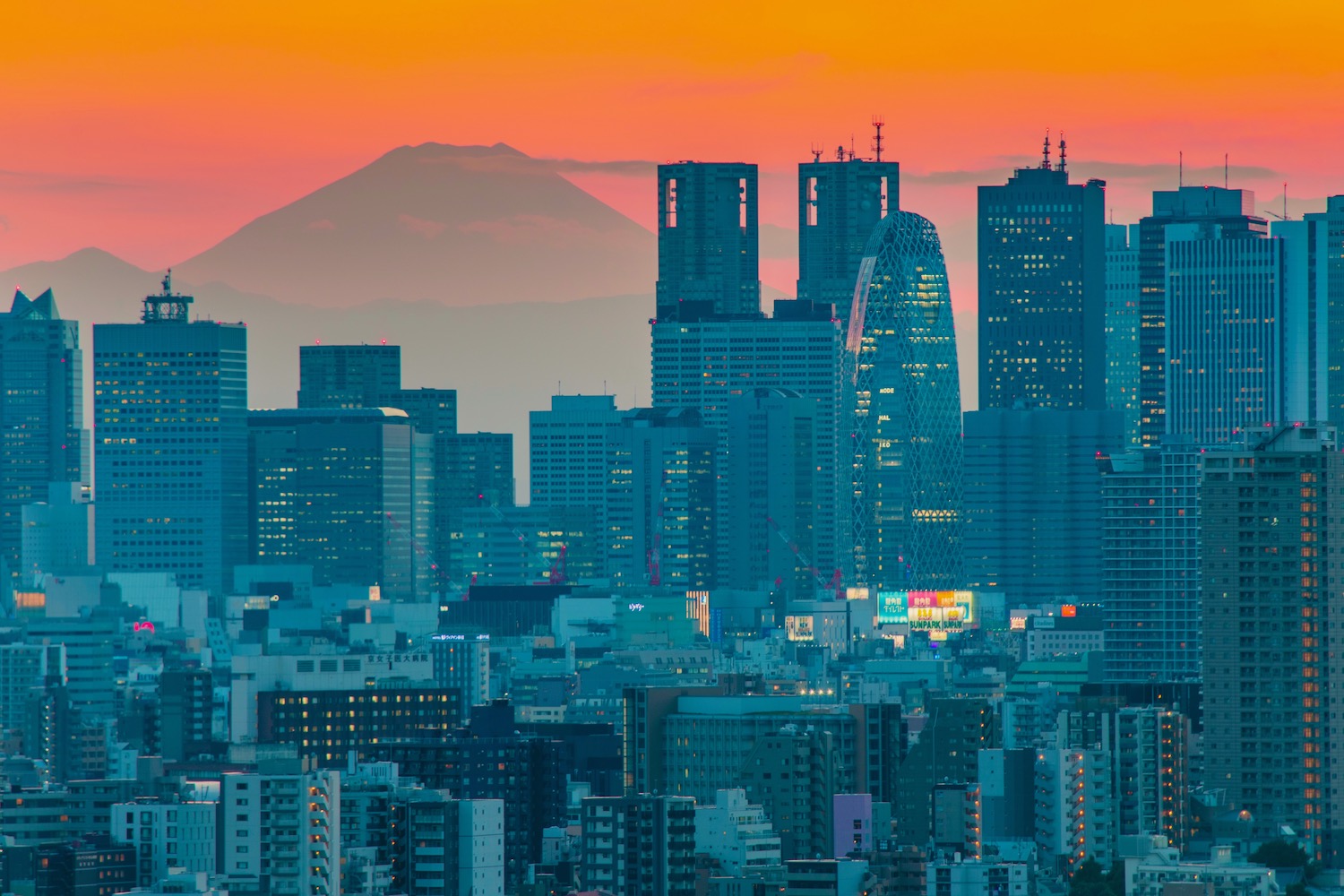
Even more specifically, I’d recommend spending two days in Tokyo proper, then taking a day trip to either Nikko or Kamakura , but not both. In general, I’d say Kamakura boasts a greater variety of attractions, while Nikko’s mountain scenery is more impressive. If you plan to see Japan in 2 weeks, definitely start in the Tokyo area.
READ MORE: Tokyo Starts Here
You’ll need a minimum of two full days in Kyoto, regardless of whether you decide to explore the rest of Japan’s Kansai region during your two weeks Japan trip or not. A morning each along the Philosopher’s Path and under the gates of Fushimi Inari Shrine ; afternoons traipsing through Arashiyama Bamboo Forest and through the grounds of Nijo Castle ; evenings watching sunset at Kiyomizu-dera Temple and geisha hunting in Gion before retreating to your Kyoto ryokan for a well-deserved rest.
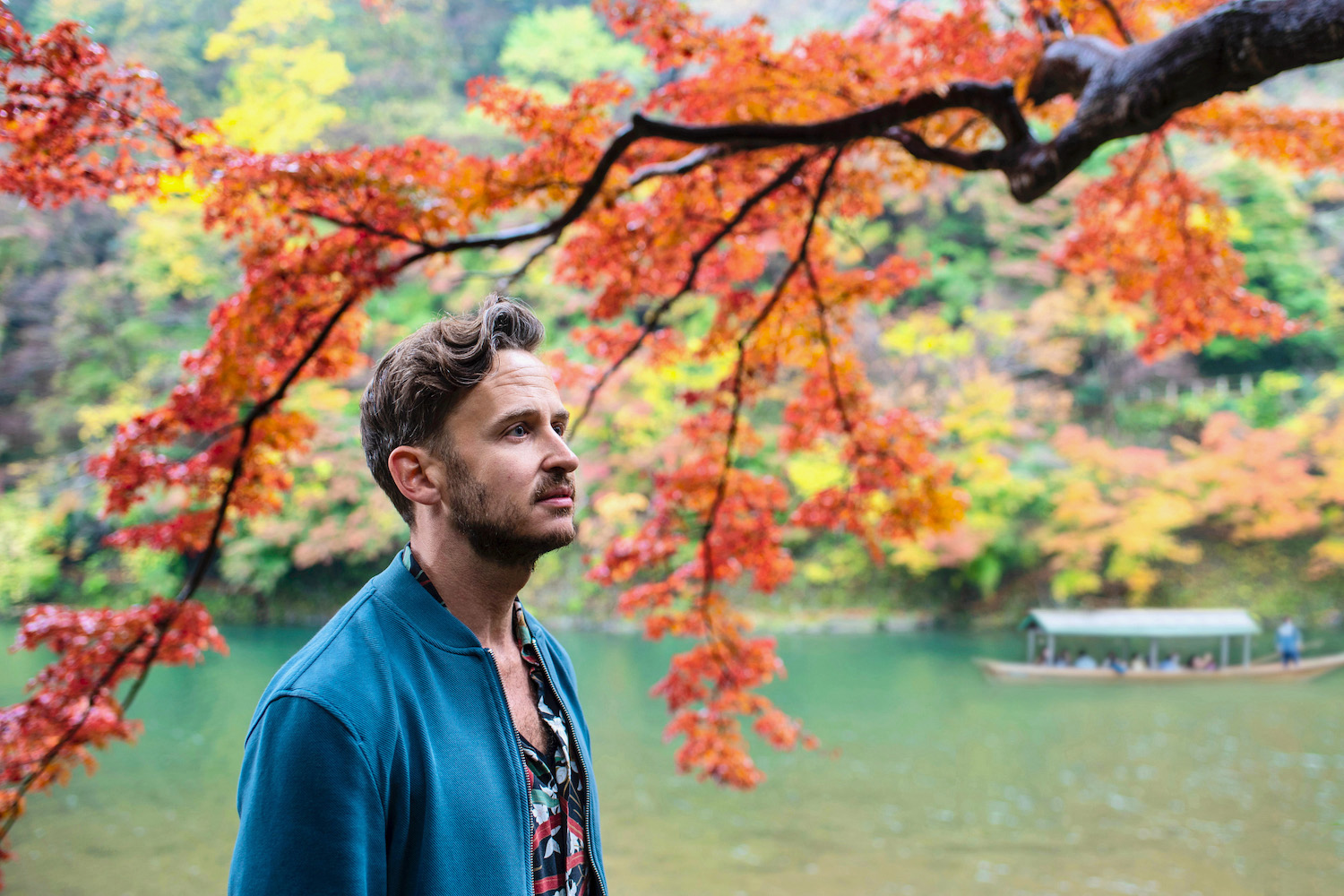
With two weeks in Japan, you’ll have time for a day trip from Kyoto to Nara (deer and ancient wooden structures), Osaka (street food and quirky urban landscapes) or Himeji (Japan’s most picturesque castle). Unless you plan to cut out one of the other destinations I discuss in this post, you unfortunately won’t have a chance to visit all three, which might (sadly) prevent you from comparing Tokyo vs Osaka or Tokyo vs Kyoto . If you have only one week in Japan , on the other hand, you might not be able to see any of them.
READ MORE: Plan Your Trip to Kyoto
Chugoku or Tohoku
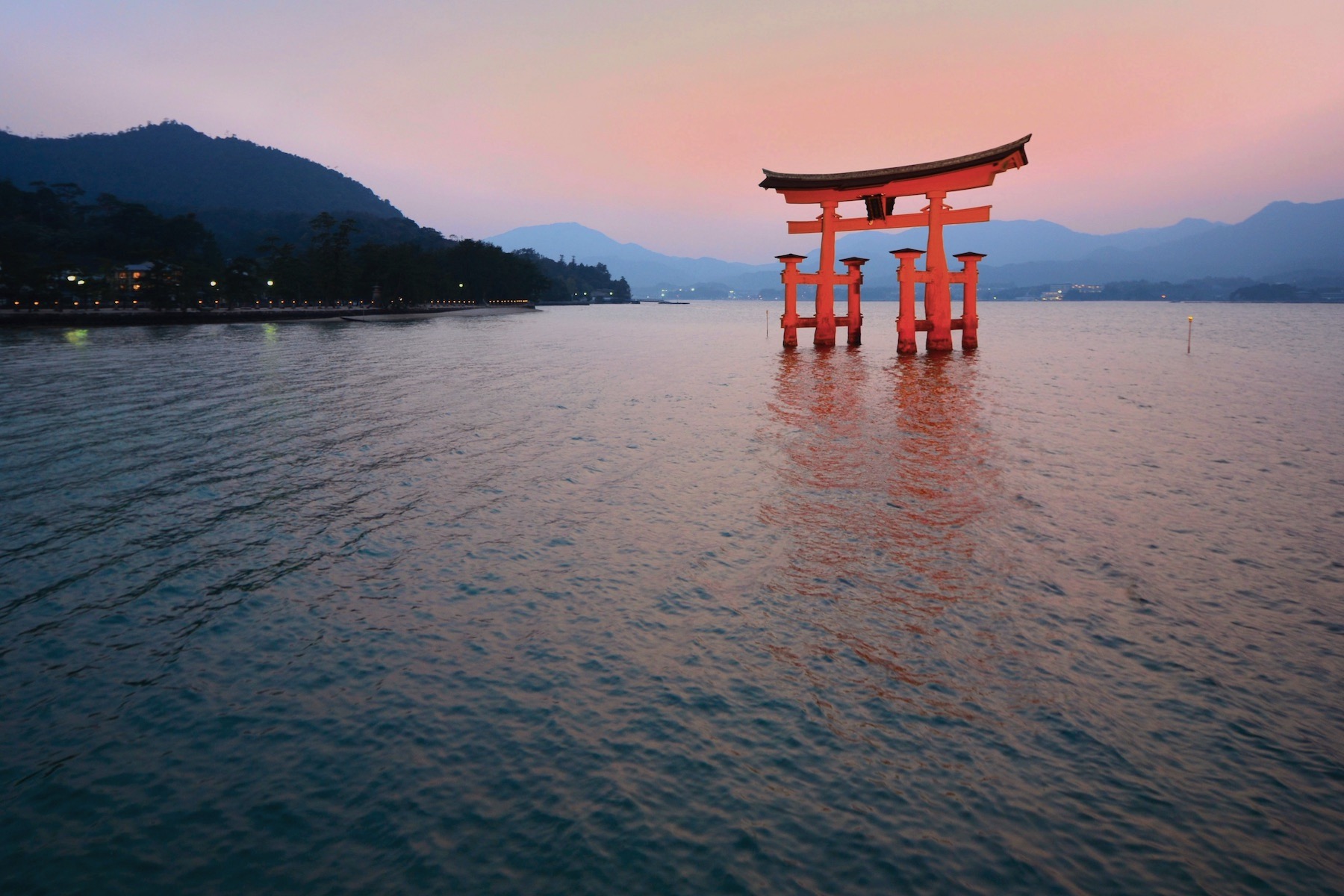
Hiroshima Peace Park is necessary stop on any Japan trip, be it two weeks in Japan, 1 week in Japan or otherwise. With this being said, I find the city-proper of Hiroshima , the largest in the Chugoku region, somewhat underwhelming, even if its streetcars are charming and its okonomiyaki pancakes are delicious. For my money, the biggest draw of spending 2-3 days in the Hiroshima area after you finish up in Tokyo and Kyoto is Miyajima Island and its floating torii gate, or potentially the charming port city of Onomichi . Alternatively, spend part of your 2 weeks in Japan exploring off the beaten path in San’in .

Alternatively, follow up Tokyo and Kyoto with 2-3 days in the underrated Tohoku region in Japan’s northeast. Spend a day exploring Aomori City and nearby Hirosaki Castle , whose moat fills with sakura petals in late spring. In winter travel to Yamagata prefecture, sleeping at top-rated hot spring Zao Onsen to walk amid its so-called “snow monsters” and visit nearby Zao Fox Village . These options are particularly alluring (and slow in especially well) when Japan 3 weeks trips (or longer) are on the table.
Kyushu, Shikoku or Hokkaido
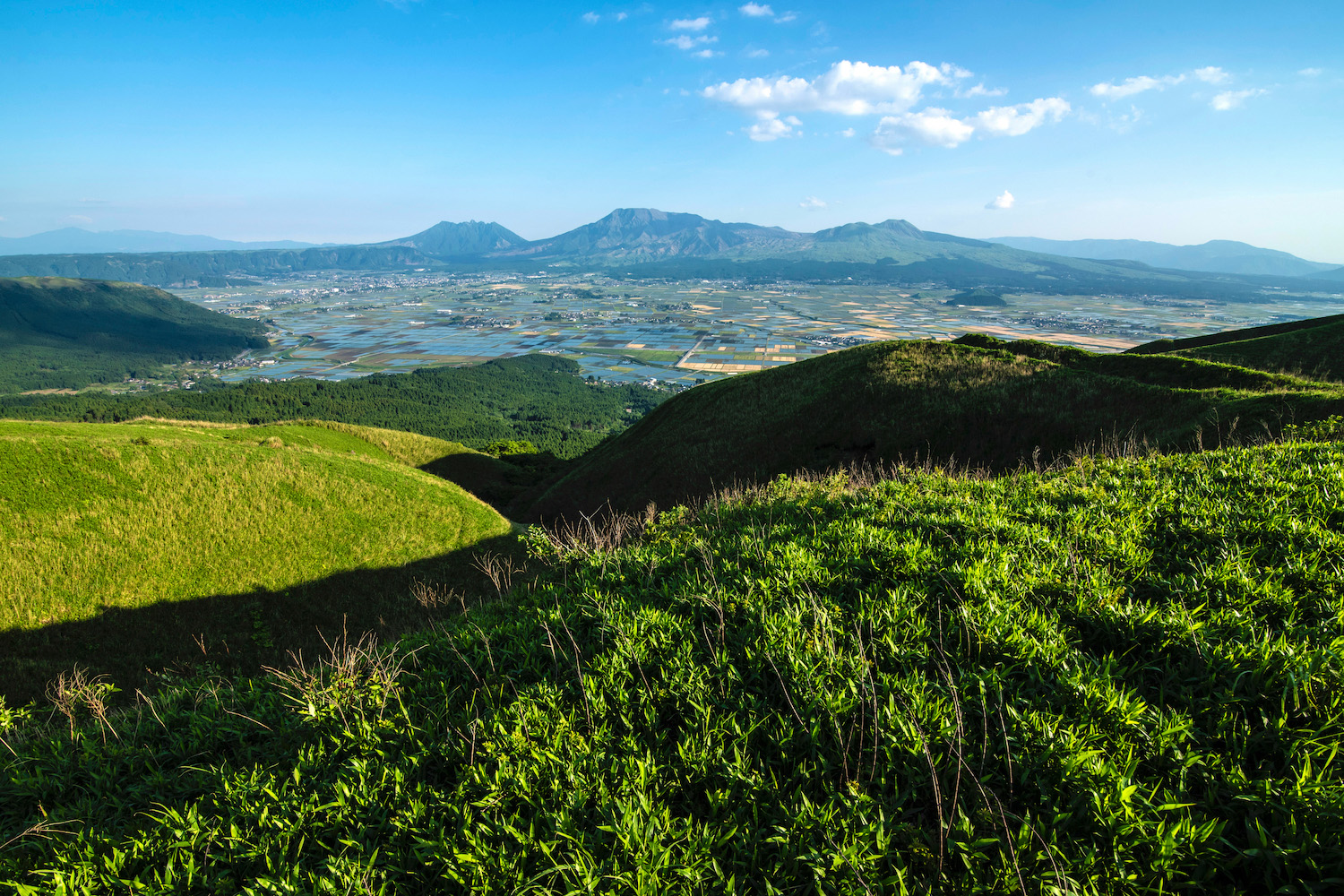
You’ll likewise need to pick and choose which Japanese island (besides Honshu) you plan to visit during your two weeks in Japan. If you head to Hiroshima as described above, spend 3-4 days in either Kyushu or Shihoku . Things to do in Kyushu include scenic Nanzo-in Temple , emotional Nagasaki and picturesque Kumamoto Castle , while Shikoku sightseeing blends pristine nature and perfect cities, and is perhaps my favorite part of any Japan two weeks itinerary.

From Tohoku, ride the Hokkaido Shinkansen to Hakodate , home to a morning market, extensive colonial architecture and Japan’s most famous night view. In winter, head further north to Sapporo to experience its iconic snow festival, the icicle-lined canals of Otaru and world-famous Hokkaido skiing; in summer, experience Hokkaido’s colorful wildflowers —the lavender of Furano is a particularly stunning addition to your two week Japan itinerary.
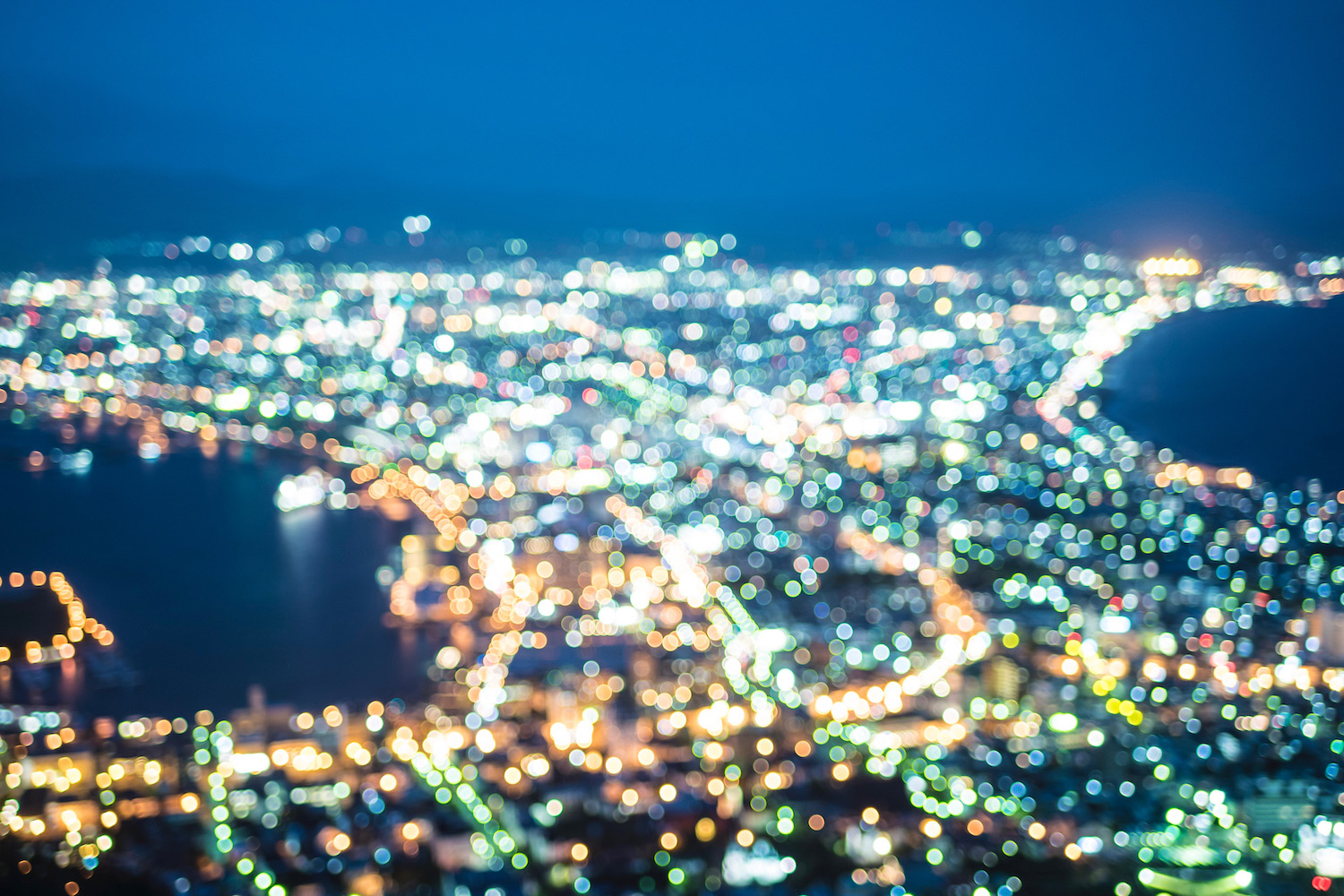
How to Get Around During You Two Weeks in Japan
Make sure your trip runs smoothly and affordably— order your two week Japan Rail Pass before you depart . This will enable you to ride the Shinkansen between major cities, and make use of JR trains , buses and select ferry services within cities.
Note that a JR pass doesn’t cover travel on the Tokyo Metro or other urban rail systems, but is still an unbeatable value, whether you spend two weeks in Japan, 3 weeks in Japan or any other length of time. It can help save money for you to stay at some of the best ryokans in Japan , though.
When to Spend 2 Weeks in Japan
As is the case with the best time to visit Japan in general, there is some subjectivity to the perfect timing for your 2 weeks Japan trip. An obvious answer would be to come during cherry blossom season or to enjoy koyo leaf view during Japan’s amazing autumn , though these are also very crowded (and expensive) periods for travel.
Of course, you could take a more non-traditional approach to your 2 week Japan itinerary. For instance, if cold doesn’t bother you, enjoy the beauty of winter in Japan , which is both underrated and also sees the country mostly empty. The summer monsoon is less visually rewarding (with the exception of a brief hydrangea season in June), but is nonetheless a unique time to visit Japan.
Other FAQ About 2 Weeks in Japan
Is 2 weeks enough in japan.
If you manage your time well and limit the array of destinations you visit, 2 weeks in Japan is a perfect amount of time you spend. This allows you either to explore all of Japan’s tourist trail, or to dig deep into outlying islands and secondary regions off Japan’s beaten path .
What can do you do in 14 days in Japan?
First-time travelers to Japan focus their Japan 2 week itinerary on the Tokyo-Kyoto/Osaka/Hiroshima tourist trail, while two weeks is also ideal for discover secondary islands like Kyushu, Shikoku and Hokkaido, as well as underrated regions such as San’in and Tohoku.
How much money do I need for 2 weeks in Japan?
The minimum amount of money you need for a 2 week Japan itinerary is $1,000 or ¥140,000, based on the fact that you need at least 100 USD per person, per day to travel in Japan.
The Bottom Line
Two weeks in Japan isn’t an incredibly long time, but it’s enough to cover the basics of the country. After spending three days each in Tokyo and Kyoto, head either southward for a week in Hiroshima and Kyushu or Shikoku (but not both), or northward for 7-8 days in the Tohoku region and Hokkaido. Travel back to Tokyo to catch your flight home—and come back here to get inspired for your inevitable future trips. Want to make sure your Japan 2 week itinerary is one for the record books? Consider hiring me to plan your 2 weeks Japan itinerary!
Plan Your Japan Trip

Subscribe to email updates!
Words, images and design ©2018-2024 Robert Schrader, All rights reserved. Read Privacy Policy or view sitemap .

From Tokyo to Mount Fuji: A comprehensive two-week travel guide to Japan
I t’s Friday night and I’m sat in the corner of a dive bar in Hiroshima sipping a local plum wine and cheering on a group of three Japanese businessmen, dressed in full suit-and-briefcase attire, battling it out playing Pac-Man on an old arcade machine next to me.
I can’t help but wonder, has my Japan trip peaked?
Travelling across five main locations, the aim of my two-and-a-half-week trip is to immerse myself in Japanese culture, cuisine and history – and learn more about what this fascinating country has to offer .
It seems my idea isn’t the most original either – what with Japan now ranking as one of the highest trending destinations for 2024 , as well as recently being named the top spot for solo travellers.
For those considering a trip there soon, know that you can cram a lot into just a couple of weeks – mainly thanks to the country’s high-speed bullet trains, which whiz you from one location to the next.
For example, my 16-day holiday covered Tokyo, Mount Fuji, Kyoto, Osaka and Hiroshima – taking between 1-3 hours to jump from one location to the next. It’s also worth pointing out that now Japan Rail Pass prices have risen by 70%, it actually might be cheaper for you to pay for single journeys, depending on your route.
If the country’s bountiful offering is enough to make you feel overwhelmed, here’s a two-and-a-half-week itinerary mapped out for you…
Tokyo (1-5 days)
Our trip started in Tokyo , and for Japan first timers the sheer size of the city is likely to be your main takeaway – it was the first thing that blew me away when we touched down in Haneda airport. It’s the largest city by metropolitan area in the world, with a population of 37.3 million.
The best way to soak this up is by visiting one of the city’s many viewpoints and Shibuya Sky should be top of your list for the 360-degree open-air factor. Just be sure to book in advance and sunset is widely considered one of the best times to go, so you can witness the city skyline by day and night.
While visiting Shibuya be sure to tick off the Meiji Jingu shrine and the Shibuya Crossing, which is often dubbed as ‘the busiest pedestrian intersection in the world.’
One of our Tokyo highlights was the vibrant neighbourhood of Shinjuku, including the tranquil national garden (with the concrete jungle skyscrapers as the backdrop) as well as the tastiest, no-fuss (but delicious) ramen you’ll ever have at Tatsunoya, where the tonkotsu broth (pork bones and water) is simmered for 15 plus hours. Our two ramen bowls, plus a beer and two cokes, cost us just £15.
Food in Tokyo comes in two extremes, from authentic street food – like the sensational yakitori (grilled meat skewers) at Omoide Yokocho – to Michelin-starred dining , including the likes of Narisawa (which is the ultimate luxurious dining experience). Both showing the city’s offering through completely different culinary lenses.
Michelin-starred restaurant Est, located in Four Seasons Otemachi , was an absolute standout though – with wagyu, Hokkaido scallops and miso monkfish on the menu. This was my first time trying Japanese wine too – let alone a Japanese Chardonnay – and it was an unexpected delight.
You don’t see much Japanese wine in the UK, or even in other parts of the world for that matter. That’s because, as our sommelier tells us, the country’s produce is so good, winemakers prefer to share it with the population rather than export it en masse.
On the topic of drinks, while you’re at the Four Seasons a visit to award-winning VIRTÙ – headed up by the talented Keith Motsi – is a must. Keith’s passion for giving Japanese bars the attention they deserve shines through and his cocktail wizardry and outstanding drinks knowledge, as well as the doting bar staff, makes leaving this opulent Art Deco watering hole pretty impossible.
For a boozy night, bar-hop around Golden Gai, a network of six narrow alleys with little bars peppered throughout.
Tokyo checklist:
- Shibuja Sky for views of Tokyo
- Lunch at est (in the Four Seasons Otemachti)
- Shibuja crossing
- Shinjuku National garden
- Drinks at Virtu
- Eat yakatori at Omoide Yokocho
- Bar hop around Golden Gai
- Kabukiza Theatre
- Tokyo station
Mount Fuji (2 days)
It may be a slight detour from bullet train routes, but spending a portion of your trip in Japan’s natural beauty is a must. After all, what trip to the country would be complete without seeing the majestic Mount Fuji in all its glory? Among the Fuji Five Lakes – which are designated as a World Cultural Heritage – Lake Kawaguchiko is the easiest to access (a two-hour bus from Tokyo).
Once you’re there, Villa Hanz Glamping is the perfect base for the rural part of your itinerary, particularly with the 3,776-metre high stratovolcano as the backdrop to this resort.
This luxury glamping site (think bougie pods with heaters and mini fridges) will make you feel right at home, while the resort’s activity offering of hiking, kayaking and stargazing will ensure you make the most of rural retreat.
Kyoto (1-3 days)
My first impression of Kyoto was how it was the perfect example of old meets new, but the thing that stood out the most was simply how stunning it was – a respite from Tokyo’s concrete jungle.
The former Japanese capital has historic temples and sublime gardens nestled alongside bustling new food markets and shopping districts. It’s a city with a lot of natural beauty that also somehow spotlights the area’s rich history, from the Arashiyama Bamboo Forest to the ‘Golden Pavilion’.
If you tick off one attraction in Kyoto, let it be the famous Fushimi Inari-Taisha . The red shrine gates follow a pathway that wanders 4km up the mountain – which, after a whole day of sightseeing, was pretty knackering. Nevertheless, was worth it for the view at the top – even in the dark.
Kyoto is also an excellent spot to sample some of the country’s vast cuisine. Comfort food doesn’t get much better than the curry udon at Mimikou – where a Kyoto-style curry soup marries thick wheat noodles in a curry powder-thickened Japanese soup stock called ‘dashi’.
You also can’t visit Japan without trying traditional okonomiyaki (a Japanese teppanyaki, savory pancake dish made with cabbage, meat and cheese) and Kyo Chabana is the spot to sample it in Kyoto.
Kyoto checklist:
- Arashiyama Bamboo Forest
- The ‘Golden Pavilion’
- Fushimi Inari-Taisha
- Curry udon at Mimikou
- Okonomiyaki at Kyo Chabana
Hiroshima (2 days)
It might seem slightly out of the way, geographically, for a two-week Japan trip but believe me when I say this stop should definitely be on your itinerary. Plus, it’s only a tour-hour train on the trusty (literally, it’s never late) bullet train.
As someone who has always been interested in WW2 history, visiting Hiroshima felt more than just an itinerary pit spot, it felt like a necessity – and it was a sobering reminder of what took place at 8.15am on the morning of August 6 1945, and its aftermath.
The bomb obliterated nearly everything within a two kilometer radius – now the city’s re-built legacy urges one crucial message: never again.
The A-Bomb Dome, still in its original bombed-out condition with pieces of 1945 rubble on the ground, remains in tact – but really that’s it. Everything else has been rebuilt. Now there’s a well-manicured Hiroshima Peace Memorial Park and a Museum – which houses belongings and artefacts, and tells the stories of the victims.
But what caught me off-guard the most was the city’s incredible underground nightlife scene – dive bars like Mac Bar and Stevie Wonderland, in particular, where you can while away the hours listening to vinyls while sipping on local beers and traditional plum wine.
Hiroshima checklist:
- A-Bomb Dome
- Hiroshima Peace Memorial Park and a Museum
- Stevie Wonderland
Osaka and Nara (3-4 days)
An hour-and-a-half away from Hiroshima and on the way back to Tokyo, neon playground Osaka is the ideal spot for your trip’s finale.
What can only be described as Japan’s equivalent to Time Square, the Dōtonbori district comes alive at nighttime with eye-catching signage and riverside shops and restaurants.
A day trip to Nara Park will also see you get up close and personal with TikTok’s famous ‘polite’ deer, which bow to you in return for crackers.
Top tip, try to feed a solo deer, otherwise you might be subjected to a herd showdown, with multiple chasing you for your crumbs (trust me, I speak from experience here).
Osaka checklist:
- Dōtonbori district
- Day trip to Nara Park
My main takeaway from my two-week trip, however, is simply how everything is better in Japan: from self-flushing toilets and exceptional hospitality, to the highest standard of foods – beyond anything I’ve ever tasted.
It’s a country that’s stolen a piece of my heart – and has left me dreaming of those efficient bullet trains while I’m waiting 10 minutes for the dreaded Circle Line back home.
Where to stay in Japan:
From glass lifts, to hot spring baths and a swim over Tokyo, here are six hotels that made my two-week holiday to Japan …
Bellustar Tokyo
Located in the heart of Shinjuku, this lavish skyscraper hotel is an excellent base point for a Tokyo first-timer or a seasoned visitor. The 97-room hotel is spread out across three floors, which also houses the five deluxe penthouses (some of which are double-storey)
panpacific.com
Hotel Groove
While Bellustar occupies the upper half of Tokyo’s 48-storey Kabukicho tower, Hotel Groove lies in the lower one – and it’s the quirky and playful younger sibling of the two – with smaller rooms, bar and dining space, JAM17 and a roof terrace.
panpacific.coml
Four Seasons Otemachi
For a hotel that ticks all the boxes, look no further than the Four Seasons Otematchi. From a Michelin-star restaurant to an award-winning bar, not to mention sensational views of Tokyo.
fourseasons.com/otemachi
Villa Hanz Glamping
Villa Hanz offers rural respite from city chaos. With both glamping and villa options available, you can stay with views of the 3,776-metre high stratovolcano. The site’s Pao pods offers a camping experience with a luxury twist.
gv-hanz.com/en/
Roku Kyoto, LXR Hotels & Resorts
This spot is nestled in rolling foothills of the ancient capital’s north western mountain range, offering a natural sanctuary. Guests have five different room types to choose from. A firm favourite, however, is the Garden Deluxe rooms, which come with their own small Japanese-style garden, plus a roomy bath inside supplied with hot spring onsen water.
hilton.com/en/hotels/itmolol-roku-kyoto
Hiroshima and Osaka
Hilton Hiroshima and Hilton Osaka
For creatures of habit when they’re abroad, Hilton has a number of hotels across Japan, each offering something a little different.
Hilton Hiroshima for example, is one of the newest additions. The hotel is also situated in the centre of Hiroshima City, so is the ideal base point for exploring what this destination has to offer.
Hilton Osaka is another great choice, nestled amongst the city’s vibrant Umeda district and train station – so is particularly convenient if you’re planning on heading to Nara for the day.
Getting there:
Flights to Japan start from £460 return on Skyscanner with one stopover.
Do you have a story to share?
Get in touch by emailing [email protected] .
For even more unmissable travel news, features and inspiration in your inbox each week, sign up to Metro's The Getaway newsletter
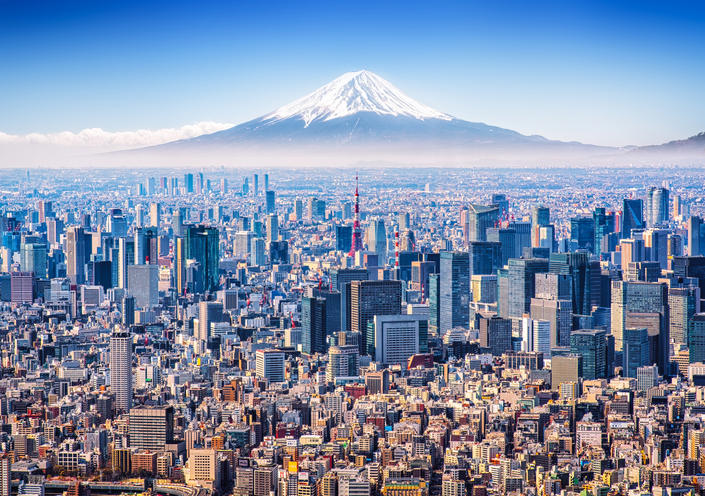
The Ultimate Japan Winter Itinerary (2 Weeks, 4 Cities)
02/27/2023 by Kristin Addis 2 Comments
When I think of the Japanese winter, I picture that feeling of being in a snow globe, or sitting in a steaming onsen (hot springs), or beautiful views of Mt. Fuji. It’s a tall order, to be sure, but like always, Japan delivered.
We recently spent two delicious weeks there, getting a taste of big cities, tiny villages, some of the most famous sights, and of course, delicious food. Honestly? I think we did a great job.
This is the ultimate two-week Japanese winter itinerary:
Table of Contents
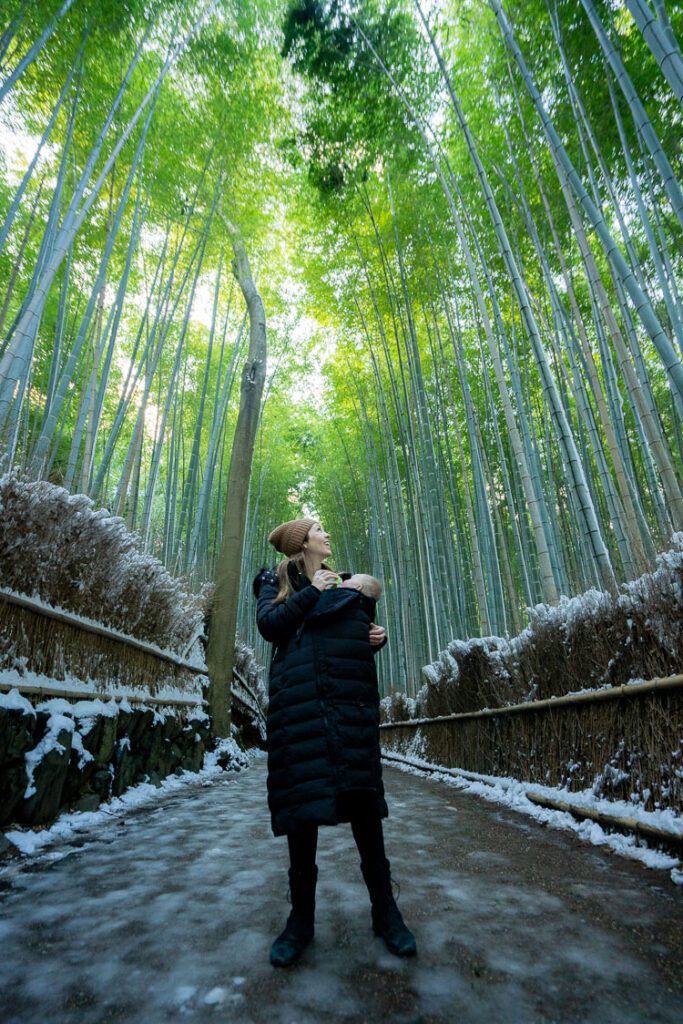
Our journey began in Kyoto and finished in Tokyo. If you can book one-way flights, this eliminates a transit day. You can also consider taking the two-hour bullet train from Tokyo over to Kyoto for the start of your trip.
Though it’s never a guarantee that you will get snow in Kyoto — in fact, it’s a rarity — seeing some of the most famous sites with the white stuff was magical.
Day 1: Bamboo grove
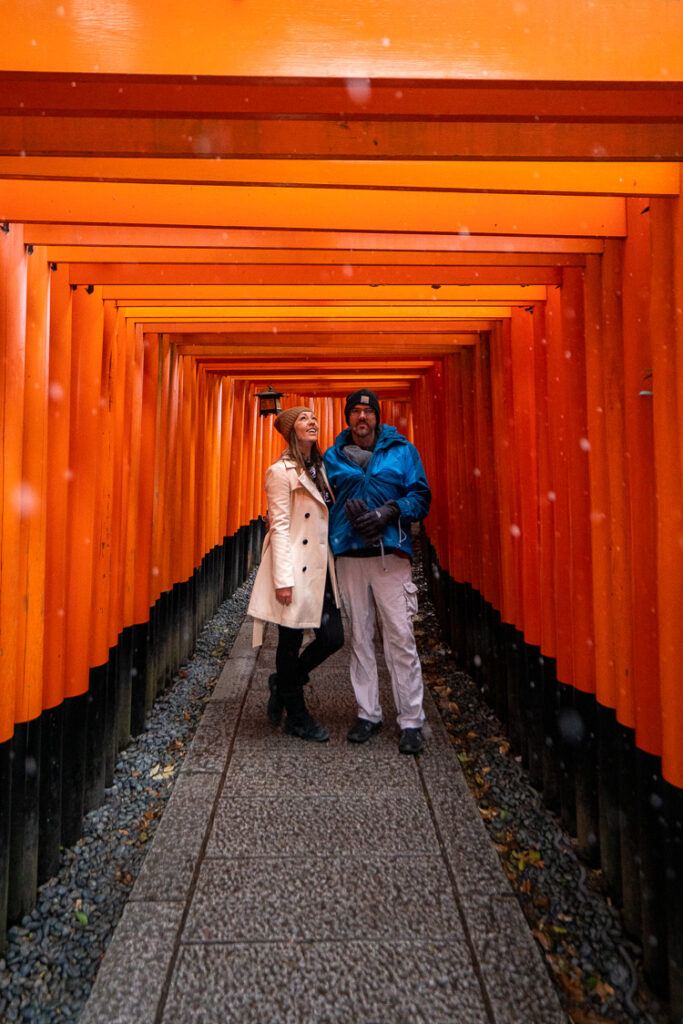
Head to Arashiyama as early as you can to walk through the bamboo forest and check out some of the shrines. The earlier you go, the smaller the crowds should be — however, the bamboo is thick and it can be dark super early in the morning. Though the shrines often have entrance fees that are usually around ¥500, the bamboo is free to walk through and enjoy.
You’ll see busy stands selling snacks close to the entrance, but honestly, they were a bit on the pricey side, and we found better ones elsewhere.
Jet lag took up more of the early part of our journey than intended, but if you are able, try to see the Kinkaku-ji temple, a golden pagoda surrounded by tranquil gardens and a pond. Finish the day with sunset on the famous street leading up to Hokan-ji temple.
Day 2: Kaiseki and torii
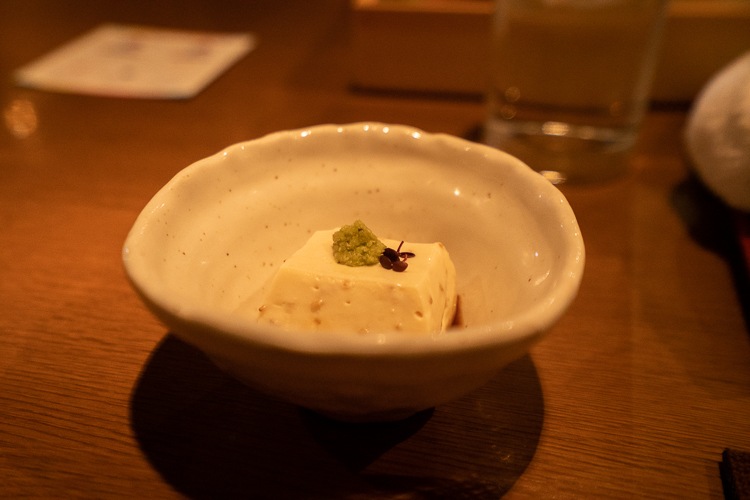
Our second day began with an early journey to Fushimi Inari Taisha, a Shinto shrine dating from 711 CE, with its famous walkways straddled by thousands of torii gates, and is free to enjoy. This and the bamboo forest were the sites I most hoped to see in Kyoto, and it was just as magical in person as I’d dreamed it would be.
It’s open 24 hours, as is the bamboo forest, so heading there early is a great idea. We happened to get there around 8am on one of the coldest, snowiest days of the year in the lowest season, and therefore had it almost to ourselves for a few minutes, but by 9am, busloads of people were showing up.
From there, check out the Kojingamine outlook for an overview of the city, followed by a visit to the Tō-ji temple, the tallest wooden pagoda in Japan dating back to the year 796.
Finish the evening with a stroll through the historic Gion district, or better yet, take a food tour. Ours involved a few hours of walking around, learning about the local culinary history, tasting traditional snacks and spices unique to Kyoto, and finishing with a kaiseki dinner, a ritual meal consisting of several courses created by a team of chefs. Each one features a different cooking style, though you can usually count on a rice dish, miso, sushi, and some kind of dessert. This is the highest level of dining in Japan and should not be missed! (The exact tour we took is no longer available, but you can book something similar .)
Day 3: Tea ceremony and shrines
Have you ever wanted to don a kimono? Participating in a tea ceremony is one of the best ways to get your chance. You’ll have the opportunity to learn the ritual around drinking green tea while wearing this traditional garment, plus get a photo doing so.
Finish the evening with sunset at Kiyomizu-dera, a Buddhist temple that is part of the Historic Monuments of Ancient Kyoto UNESCO World Heritage site.
Where to stay : Since we have a little one and arrived late at night into Kyoto, I booked a nice, affordable Airbnb near Kyoto Station. We loved our little spot!
(Due to our desire to catch an event that I’ll discuss later on in the post, we could only spend three nights in Kyoto, but it deserved so much more! I’d recommend staying at least three, if not more.)
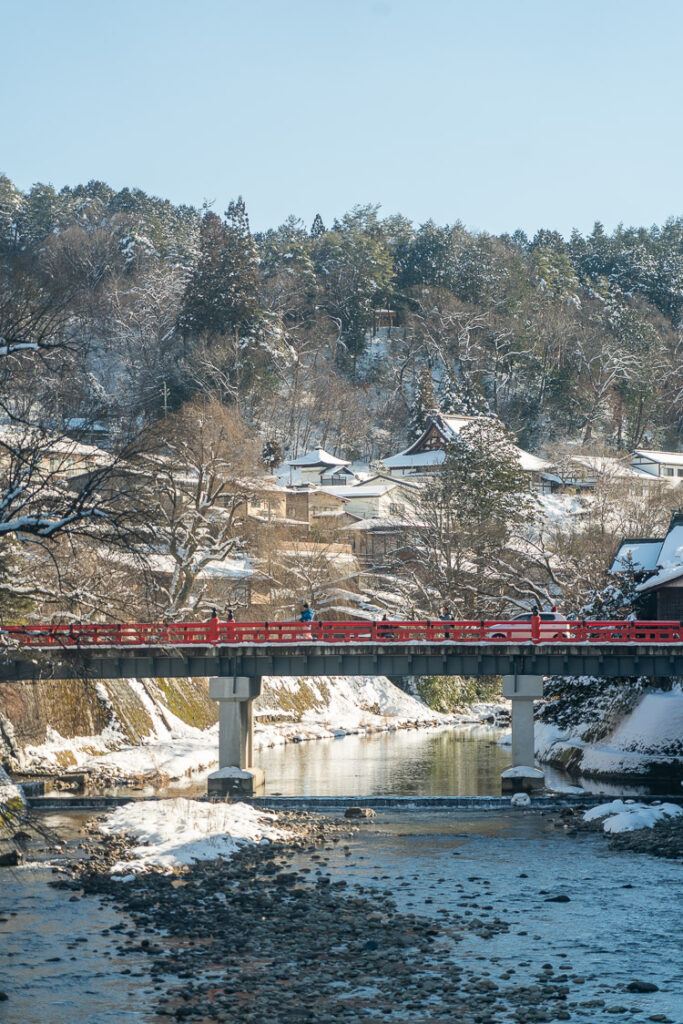
This adorable town full of friendly people is the gateway to the Japanese Northern Alps, as they’re called. We picked this town for its historic feel and famous food, and the likelihood of it being a winter wonderland (it was!).
Day 4: Journey to Takayama, known for delicious Hida beef
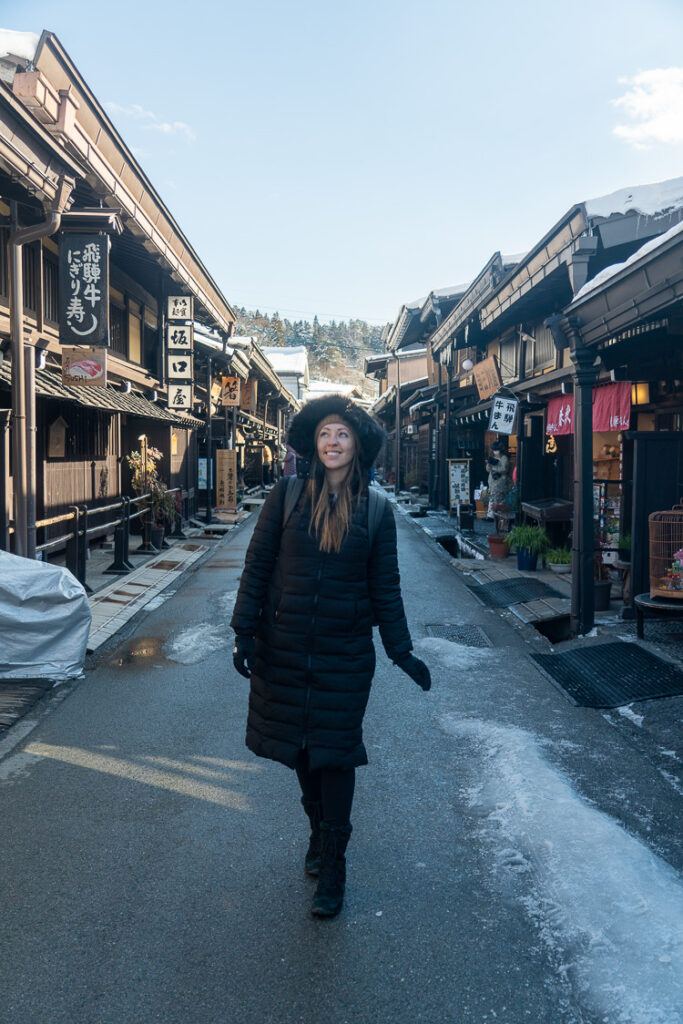
You’ll spend a good chunk of the day getting to Takayama, which is best accessed on Japan Rail (JR) via Nagoya. The ride there is beautiful, most of it alongside a deeply blue river. (Sometimes there’s also a direct bus, though, so be sure to check! We tended to use Google Maps for our planning, which I suggest doing when weighing your options.)
Spend the afternoon and evening sampling some local Hida beef, which is incredibly flavorful and tender, at Kyoya restaurant, where you cook your meal over a charcoal grill at your table! It was a delicious experience at a place we didn’t even realize was famous — we just stopped by, since it was near our Airbnb. Apparently a reservation is normally essential, so be sure to call ahead.
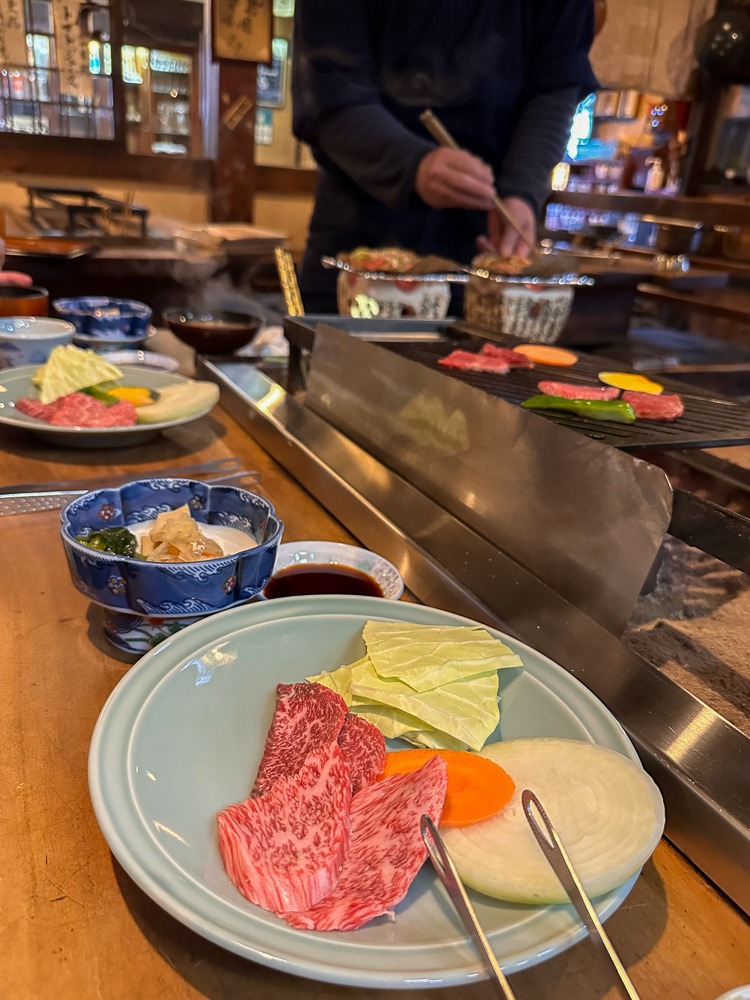
Day 5: Sanmachi and Hida no Sato folk village
Check out the historical houses (pictured below the subheading above) in Sanmachi, a neighborhood with traditional Edo-era architecture dating back to the 1600s through the 1800s. You’ll find small eateries, shops, and houses all along the way.
There’s a morning market along the river as well, where you can find food vendors. It’s perfect for an early stroll.
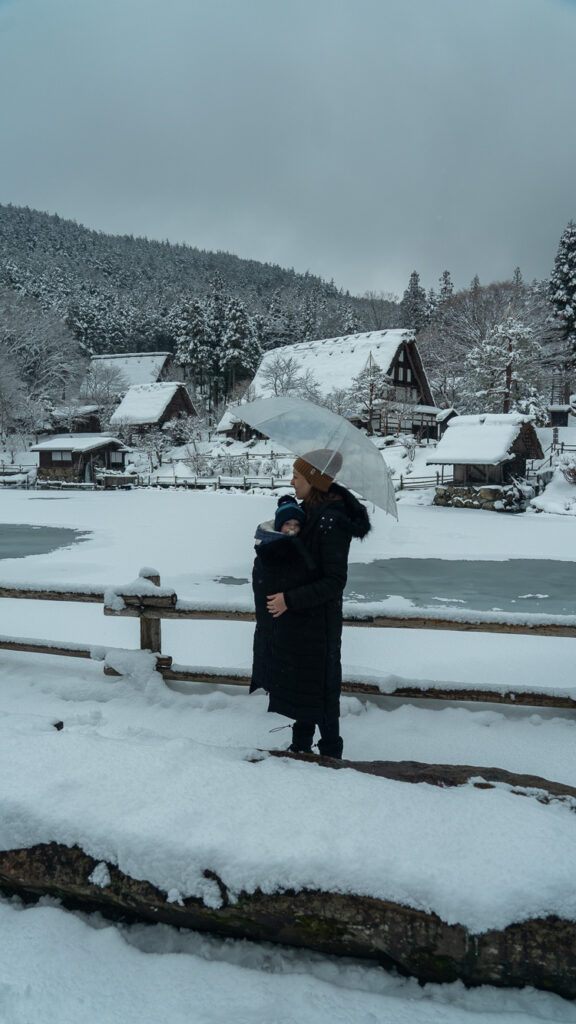
Spend the afternoon checking out the Hida no Sato folk village, an open-air museum featuring more Edo-era farmhouses. In the summer months, you’ll see grass growing on the thatched roofs, and in the winter, the village is famous for having feet of snow packed to the tops of the houses. It was magical to see them that way! Entrance is ¥700.
(The village also a great primer for the next stop, Shirakawa-go, a larger UNESCO World Heritage village from the same era.)
– Read More –
Traveling in Japan with a Baby
Day 6: Shinotaka ropeway or Gero onsen
Head out of town to the Shinotaka Ropeway (¥3,300 per adult), about a 1.5-hour bus ride each way, or consider heading to the town of Gero, south of Takayama, for a night. It’s one of the most famous onsen towns in Japan, known for its particularly smooth water.
(Due to my tattoos I can’t use most onsen , which I’ll discuss later, but for this reason, we opted to skip Gero.)
Where to eat: In Takayama, we loved the Tori Coffee and Sabou Usagi cafés, as well as Uemura for dinner. The latter is a truly tiny restaurant serving organic food the chef grows himself. I cannot recommend it enough! I messaged him via Instagram to book. Sakurajaya is also a fun experience, sitting at the bar and watching the chef make the food in izakaya fashion (informal, small dishes).
Where to stay : I loved our Airbnb here! It was the cheapest of the trip, at around $90/night, and had its own outdoor bathtub, which was magical with the snow!
Shirakawa-go
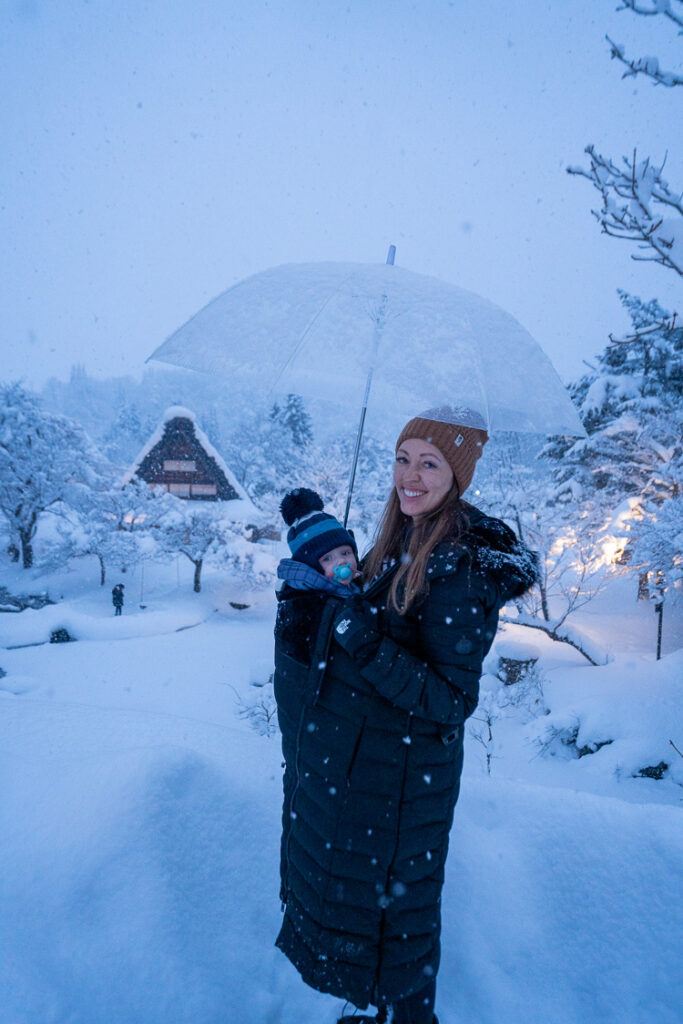
Day 7: UNESCO site Shirakawa-go
Light Up Shirakawa-go was the event I mentioned that caused us to leave Kyoto a bit earlier than I normally would have. Each winter, for six Sundays over January and February, Shirakawa-go lights up all of its buildings in the evening. If you are planning way ahead and can snag a reservation to stay overnight, do it, but if not, you can take a bus tour to the event from Takayama.
Tickets for this may sell out, as the number of visitors is capped. I logged on right when they went on sale in November and had to refresh the page for a couple of hours before finally getting through, but I’m happy to say that it was worth it. It truly felt like we were in a snow globe.
If you can’t get tickets for the light-up event, be sure to head there during the day. It is easy to access from Takayama via a bus that runs hourly (the bus costs ¥700, village admission is free). The village and buildings are quaint, there are a few museums you can enter for a couple hundred yen, and there’s an observation deck as well. The village would be delightful in every season, though I loved seeing it so snowy!
Stay: it’s possible to overnight in Shrakawa-go in the traditional houses . They book up well in advance for the light up event, though other times of year or other evenings would be easier. You’re only allowed to stay for one night in each house and they ask that you don’t bring large suitcases as there isn’t room for storage.
Day 8: Journey to Mt. Fuji
This was our longest travel day, making our way down to Yamanashi prefecture. It was so worth the journey, though, as staying on a lake with a view of Mt. Fuji was a highlight for us.
There were dozens of ways we could have chosen to get there, though we opted for the JR back through Nagoya, followed by a bus. (In 2023, the bus that runs between Takayama and Kawaguchiko was not running, but it would be by far the best and cheapest way in the future.)
Kawaguchiko
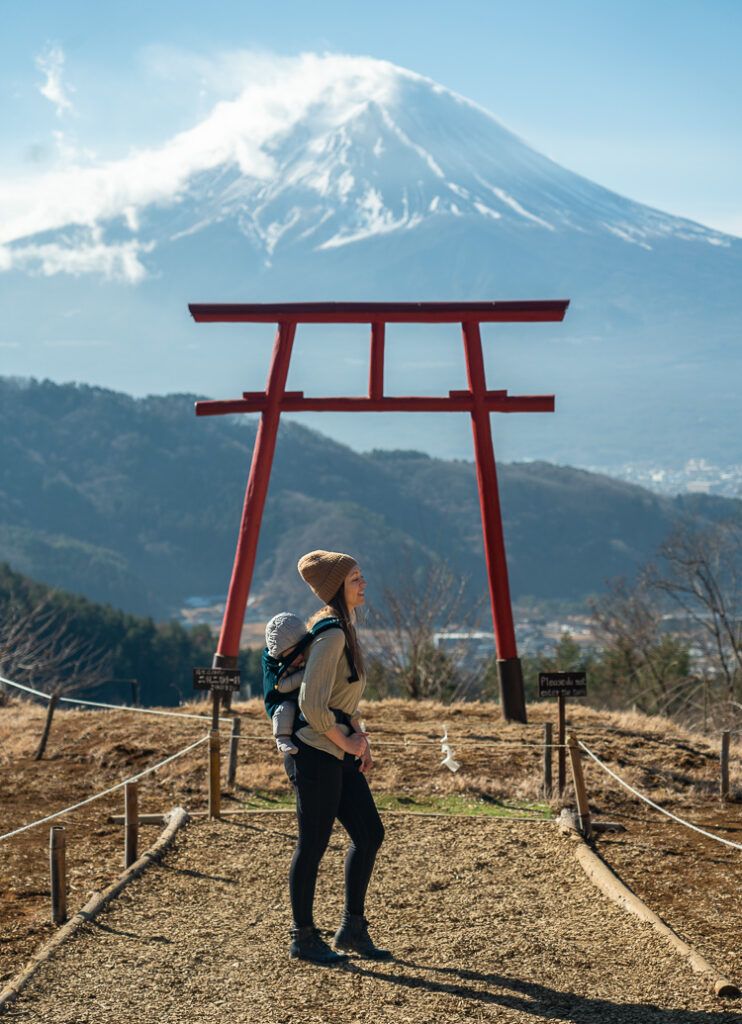
Wintertime is generally the clearest time of year and offers the best chance to see Mt. Fuji, one of the most famous sights in Japan.
When we were deciding between Kawaguchiko and Hakone, another popular spot an hour south, one of my Instagram followers suggested Kawaguchiko (and Takayama!), and I’m so glad we took her advice. We had gorgeous mountain views over the lake day after day.
Day 9: Chureito Pagoda
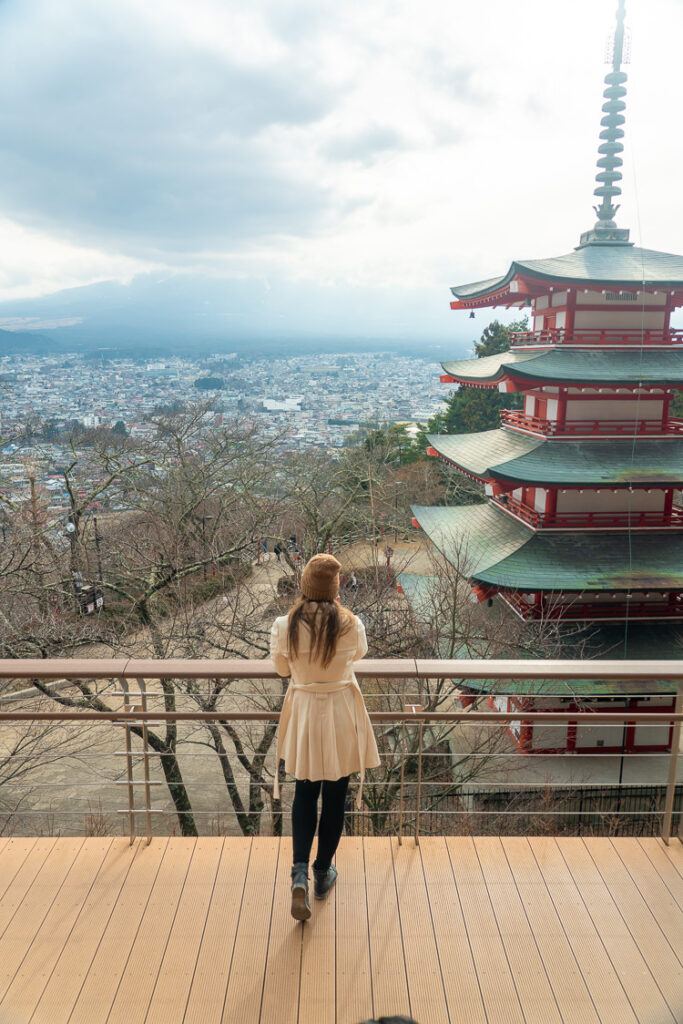
You can’t visit Kawaguchiko without seeing the Chureito Pagoda, which as one of the most iconic views in Japan.
That said, it was also my biggest heartbreak of the trip, having wanted to see this view of Mt. Fuji for years. The clouds rolled in just as we were getting off the train. C’est la vie!
The pagoda is free to visit. You’ll have to climb quite a few stairs to get there, though, but it’s worth it.
Consider also stopping by Oishi Park, which is easy to access from the sightseeing-loop bus, for another iconic Fuji view.
Day 10: Soak and stare at Fuji
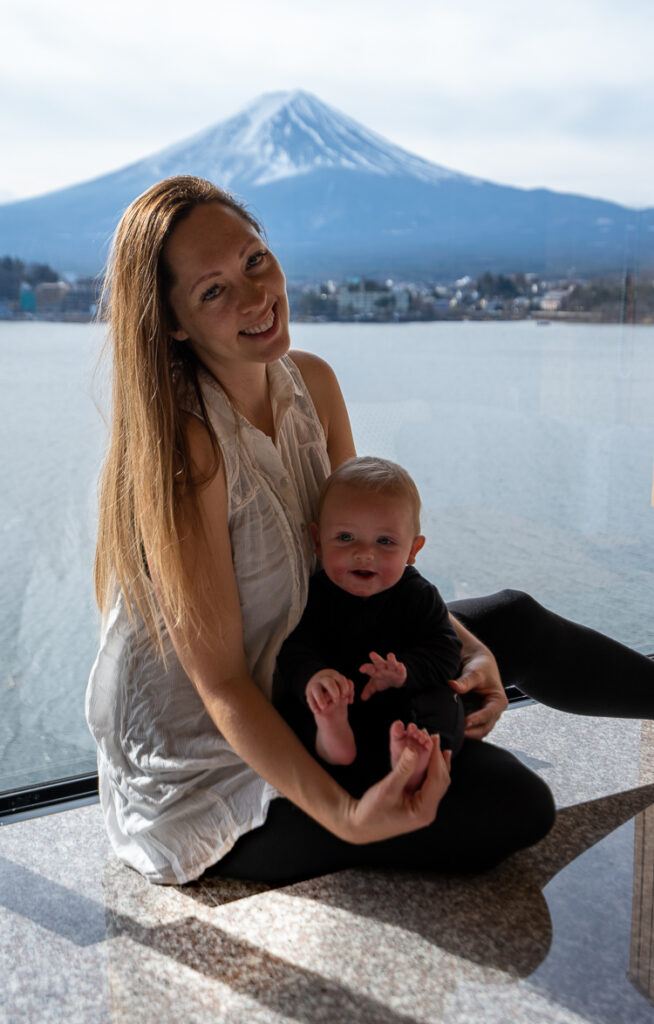
We spent a good chunk of our tenth day hanging out at our hotel, to be honest. I recommend booking a place to stay on the opposite side of the lake from Mt. Fuji (the northern side), so that you can take a day or so to just relax and enjoy the view.
We booked Ubuya , a ryokan (traditional Japanese inn that typically features tatami-matted rooms) that had private hot springs on the balconies. Since I have tattoos, this was the only way that I was going to get to enjoy onsen that are so iconic in Japan in the winter.
Due to tattoos’ association with gang culture, almost all onsen and even hotel spas in Japan ban those with tattoos, unless it’s very small and can easily be covered with a Band-Aid. You can’t cover them up with a swimsuit, either, as one is fully nude in onsen .
This ryokan was definitely a splurge for our trip, but it was worth it! We also ate breakfast and dinner in the hotel, the latter a kaiseki meal in a private room set up for us and the baby.
Day 11: Fuji ropeway and Asama shrine
Are you down for an Insta-famous photo opportunity? There are two big ones in the area, including the Mt. Fuji Panoramic Ropeway. It’s a short journey, so I normally would not feel the ¥1,800 per person round-trip is worth it, since you can get a great view of the mountain from the lakeside. But you can get some pretty cool pictures swinging with Mt. Fuji at a swingset at the top. You’ll have to queue up and pay an additional ¥500 for the photo op, which we didn’t do, but part of me wishes we had.
Next, take the bus bound for the Asama shrine and either walk from there, which is a 30-ish-minute uphill climb, or take a taxi to Tenku no torii. They’ll ask for ¥100 per person at the entrance and there will be another queue, but I loved the photos we got! (pictured at the beginning of the Kawaguchiko section).
Note: The “suicide forest” is also in the Kawaguchiko area, but it’s generally regarded as disrespectful to visit. Please pick other activities instead. There are many other beautiful forests in Japan!
Stay : As mentioned above, we booked Ubuya and loved the experience. If it’s out of your price range, I re commend staying on the same side of the lake and booking another hotel nearby so that you can still get the Fuji view from your room.
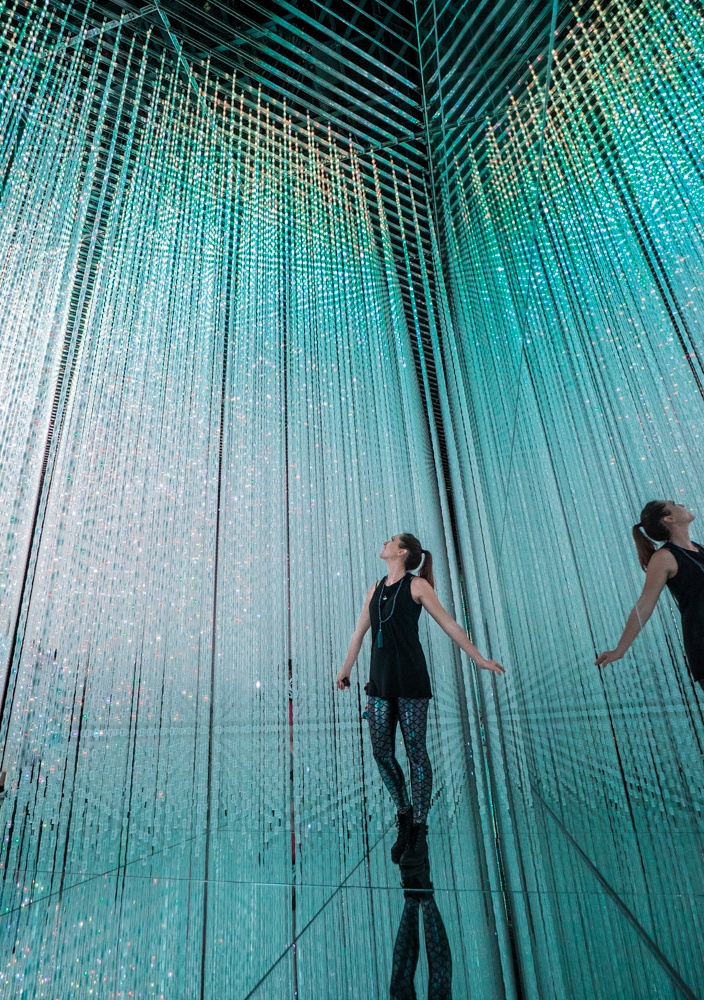
Welcome to the largest city in the world! I am usually not a big-city person, but Tokyo is a different animal. It’s one of the most unique places I’ve ever been, and there’s almost a limitless supply of things to do. Though you can only ever scratch the surface, these are some of my favorites:
Day 12: TeamLab and Harajuku
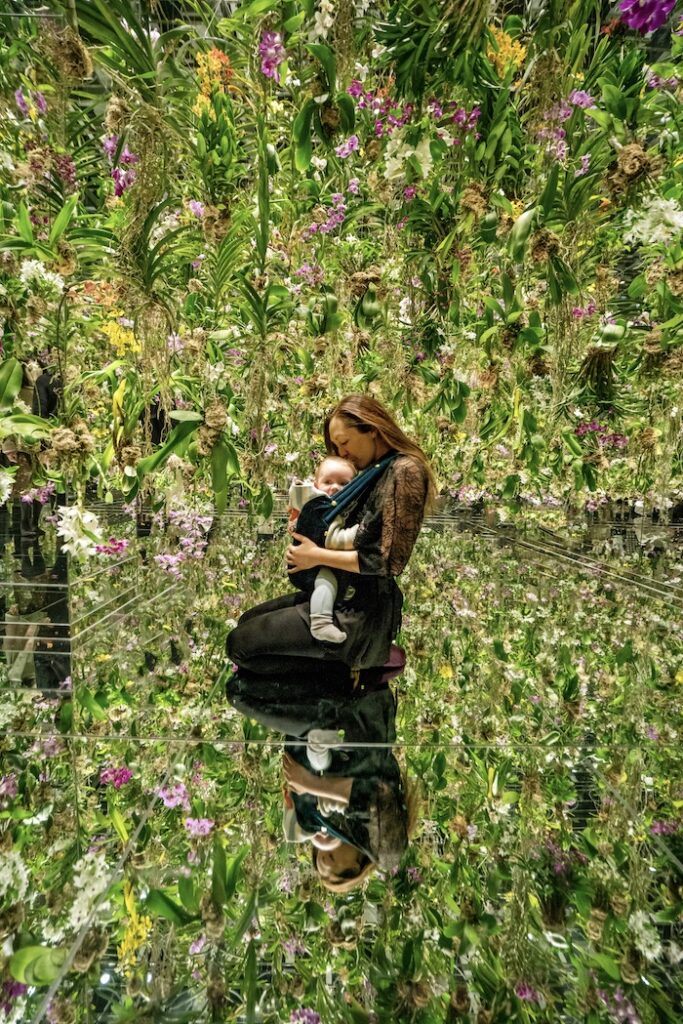
Harajuku is one of the most famous areas of Tokyo — and for good reason. There’s awesome shopping, creative cafés, and some famous local culture to check out. If you’re looking for something more traditional, in the same area, you can walk around the Meiji Jingu Shinto shrine.
From there, pop by the Hie shrine for another opportunity to walk through a smaller version of the Kyoto torii gates, as well as view one of the lovelier shrines in Tokyo, featuring white walls and a green roof.
Finally, do not miss a TeamLab exhibit! This art collective’s immersive art experiences get me every time. They tend to only remain open for a few years; TeamLab Planets should be open for another year or so, and it’s a must-see. I highly recommend going in the hours before closing so as to have fewer people in your photos. Book your ticket ahead of time too: this one somehow let us skip the whole line! Entrance is ¥3200.
Day 13: Nakano, Shibuya crossing, and ramen
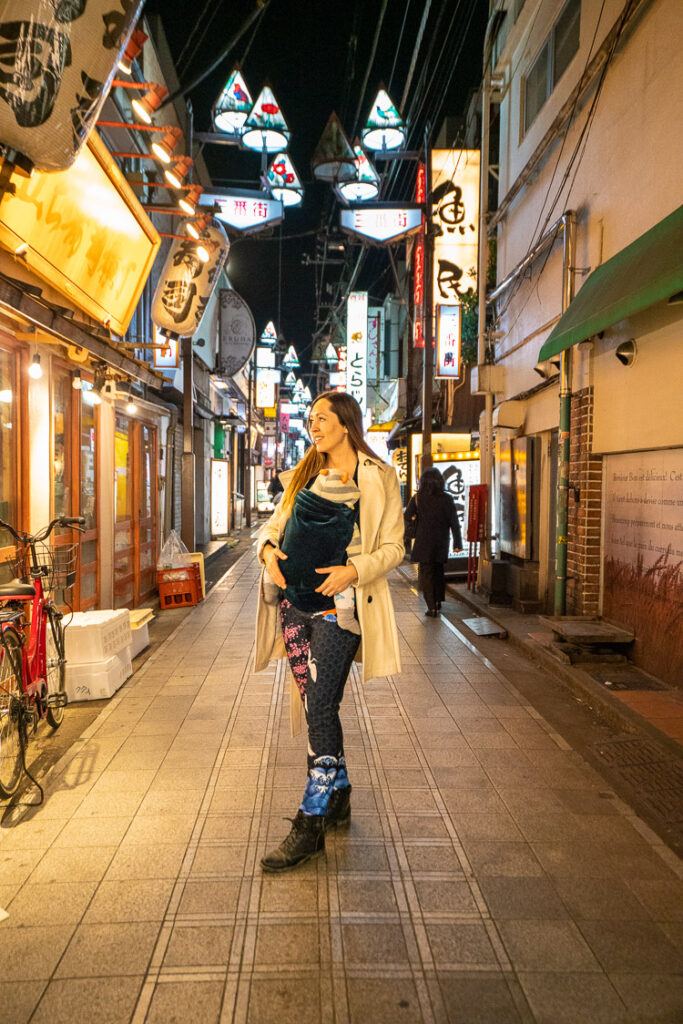
On our second-to-last day, I knew I wanted to do another food experience. There are a couple that I was looking at, including a walking tour in the famous Tsukiji fish market and a six-bowl ramen tasting . The latter just happened to fit better with our schedule, and it was delicious! We visited three ramen shops, all of which featured several unique flavors and styles. Garrett and I also shared each of our bowls, so that we could sample all of the flavors, so we ended up having 12 ramen samplings. Our favorite was the inventive pesto ramen, though I always love the curry version and was surprised by how much I enjoyed the squid ink as well.
Give yourself some extra time to check out Shibuya crossing, where the tour begins, which is the famous all-direction crosswalk that as many as 3,000 people use at a time! It’s quite a sight. If you want to see it from above, the Starbucks is a popular place to check it out.
We followed our ramen tour with a giant ice cream at Daily Chico at the Nakano broadway, pausing to take the photo featured above on one of the adjacent streets, which you can find by glancing to your right as you walk up the broadway.
Day 14: Imperial Palace, Disney, and unique kaiseki in Ginza
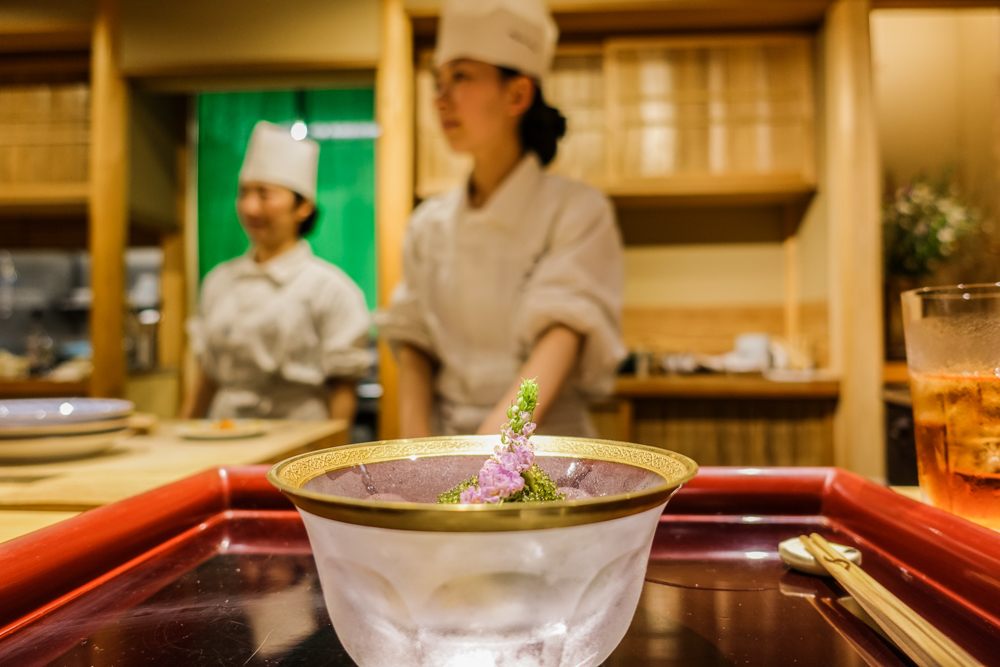
On your last day, you’ll have to make a difficult choice about what to see. I have a complete Tokyo itinerary here with a bunch of options. If our son were a bit older, we would have loved to go to Tokyo Disney or Disney Sea. Better believe it’s on the docket for the future!
Since our hotel was near the Imperial Palace, we opted to take a walk around the grounds. Keep in mind that you actually have to take a tour in order to get closer. The gardens are lovely, though, and the trees lining the streets near Tokyo Station are a great winter photo op.
I’d finish your trip with one of the most unique kaiseki experiences, in the high-end Ginza district of Tokyo: Tsurutokame , the only all-female kaiseki restaurant in Japan, featuring not only delicious food but incredible presentation. I was vegan when I visited a few years ago, and they even created a completely vegan menu for me! It was a highlight of all of my trips to Japan. It’s also popular, so book well in advance!
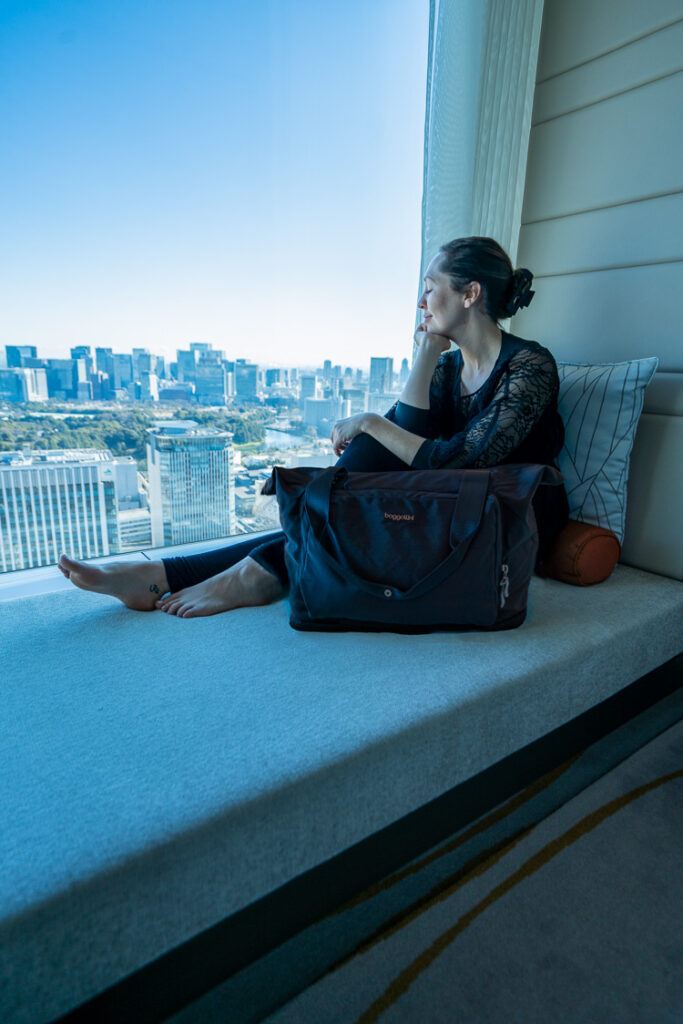
Where to stay : I splurged a bit on this part of the trip as well, booking us at the Prince Gallery Kioicho Hotel . The view from the room made it so worth it! The breakfast was delicious, and the location was central, but the best part about it was definitely the service, which was top-notch.
Although many of you won’t need to worry about this, it was also the only place we stayed in Japan that had a crib!
Hokkaido, Japan’s northernmost major island, is important to mention. Many people choose to ski its famous powder (known in the ski world as Ja-pow), during all or at least part of their winter trip.
From Tokyo, you can take the bullet train and be in Hokkaido in about four hours. Although it was under consideration for us, since we are not really ski people (who live in a ski town — it’s weird, I know) and had a baby with us, we passed.
But there’s good reason to visit. Sapporo, the largest city, has a snow festival each year that features massive ice and snow sculptures. It usually only lasts for a week, so plan your trip accordingly if you’d like to see it.
Getting Around

Getting around Japan was pretty straightforward using Google Maps. I would sometimes cross-reference with blog posts that specifically discussed the journey between certain destinations, just to be sure, but Google Maps was almost always correct. I also appreciated that it would usually give me the exact platform and even car to use in order to make a quick exit.
That said, both Kyoto Station and Tokyo’s larger metros can be confusing, although there were information desks scattered throughout, and they were super helpful — I would just show them where I was trying to go, and the staff person would point in the right direction.
To Rail Pass or not to Rail Pass?
Should you get the Japan Rail Pass ? Only foreigners are allowed to get this pass, which for a one-time fee gives you unlimited rides on the Shinkansen (bullet train) and Japan Rail lines. If you are going to be taking long-distance trains between Kyoto and Tokyo or Hokkaido, for example, it could make a lot of sense.
We opted not to do it, however, since two of the towns we visited — Takayama and Kawaguchiko — involved bus travel. It didn’t work out to be financially advantageous for us, just barely. We did, however, get the Tokyo metro pass , and I recommend the Hakone pass if you opt to go there.
If you do plan to take trains during the high season, it will probably make sense to get the JR pass and book your seats ahead of time. There are only a few cars on each train that are unreserved, which only worked out for us because we were there during low season. Book highway buses ahead of time as well, either in person at the station or online. I hadn’t realized this was important — we were lucky to grab the last seats on our bus to Kawaguchiko, which would’ve been such a pain to have missed!
Also, be sure to have cash on hand. There are ATMs in most convenience stores and train stations. We found that the ticket machine did not take our foreign credit cards, but if we waited in line for in-person service, we could buy a train or bus ticket with a card. Many restaurants also prefer cash.
Language and other notes
Although I can read a bit of Japanese, thanks to my years studying Mandarin and the similarities between the two, I don’t speak it beyond hello ( konnichiwa ) and thank you ( arigato ). Thanks to Felix, I learned that the word for “cute” is kawaii .
I found that people were always willing to try to communicate, though, since Japanese people are friendly and wonderful hosts. So I highly recommend downloading Japanese on Google Translate before you go. That way you can access it offline if you need to show somebody something or ask a question.
Also keep in mind that people bow as a sign of respect, a greeting, or thank you. Be sure to bow back, fully facing the person.
Japan is easily one of my favorite countries to explore because it’s just so different from anywhere else on earth. You get the opportunity to travel back in time, to feel blasted to the future in the big cities, and the friendliness is incredible.
Note: Some links in this post are affiliate links to the hotels and activities that we participated in. Purchasing through these links supports us at no extra cost to you
About Kristin Addis
Kristin Addis is the founder and CEO of Be My Travel Muse, a resource for female travelers all around the world since 2012. She's traveled solo to over 65 countries and has brought over 150 women on her all-female adventure tours from Botswana to the Alaskan tundra.
Leave a Reply Cancel reply
Your email address will not be published. Required fields are marked *
Save my name, email, and website in this browser for the next time I comment.
subscribe to our newsletter
This site uses Akismet to reduce spam. Learn how your comment data is processed .
06/21/2023 at 11:50 am
Hello! I enjoyed reading about your trip, the photos are amazing. I am starting to come around to the idea of going to Japan during winter. What dates/month did you travel?
Kristin says
07/01/2023 at 10:40 am
This was end of January into February 🙂
- Japan Tourism
- Japan Hotels
- Japan Bed and Breakfast
- Japan Vacation Rentals
- Flights to Japan
- Japan Restaurants
- Things to Do in Japan
- Japan Travel Forum
- Japan Photos
- All Japan Hotels
- Japan Hotel Deals
- Last Minute Hotels in Japan
- Things to Do
- Restaurants
- Vacation Rentals
- Travel Stories
- Rental Cars
- Add a Place
- Travel Forum
- Travelers' Choice
- Help Center
2 weeks in Japan, 1 week in Philippines - Japan Forum
- Asia
- Japan
2 weeks in Japan, 1 week in Philippines
- United States Forums
- Europe Forums
- Canada Forums
- Asia Forums
- Central America Forums
- Africa Forums
- Caribbean Forums
- Mexico Forums
- South Pacific Forums
- South America Forums
- Middle East Forums
- Honeymoons and Romance
- Business Travel
- Train Travel
- Traveling With Disabilities
- Tripadvisor Support
- Solo Travel
- Bargain Travel
- Timeshares / Vacation Rentals
- Asia forums
- Japan forum

Currently we are thinking:
5n or 7n Kyoto (how long do we need? we're planning to base ourselves here and do day trips)
3n Mijayami (1 day visit to Hiroshima )
3n Alpes - not sure what to do here, tour Takayama , Matsumoto, or base ourselves in Nikko and do day trips
Then we wanted a week at a beach somewhere and were thinking the Philippines as we haven't been there.
We are trying not to travel every couple of days, so wanted to base ourselves in locations and trip from these if that makes sense, as we thought this would be more relaxing.
Does this itinerary sound good? Could you advise on best way to spend three days in the Alps, and is Philippines a good choice for a beach holiday at the end? If it is where would be best to stay there?
5 replies to this topic

https://www.hida.jp/english/index.html
https://www.japan.travel/en/destinations/tokai/gifu/takayama-and-around/
You can look up your choices at this site, too. https://www.japan-guide.com
Japan and the Philippines are night and day... different. You need to go through Manila to get anywhere. Not my favorite city.
Maybe you can look at Okinawa for a beach resort. The outer islands are lovely for doing nothing.
https://japancheapo.com/places-to-stay/okinawa-resorts-private-beaches/
Of course, there's always Guam, which just a short plane ride away.......
We had considered going to Okinawa, but were told the beaches weren't amazing and the weather would be warm rather than hot, so thought we'd go somewhere completely different. If we fly into Manilla is it easy to get to a beach resort, or is it another flight ?
You can take the Shin Hotaka ropeway and walk around there (top of the mountain) -- but be prepared for COLD.
https://shinhotaka-ropeway.jp/en/
You would need to take another plane to get to a proper resort in the Philippines. https://guidetothephilippines.ph/articles/islands-and-beaches/philippines-beach-resorts
If you go to the outer islands of Okinawa, the beaches are pristine and the water is clear. That said,, March might be cold. April, around now, is nicer. The weather is warm, not hot. It's spring.
Thanks for your links, I hadn't realised the alpes would be so cold, is it worth including them in our itinerary bearing in mind when we are going, or would you visit somewhere else instead?
March is still ski season (still winter). It finally starts getting warmer at the end of April / May. Of course, the weather has been playing crazy games, so it could be warm. Nevertheless, the Alps will still be in winter mode. End of March means you might get lucky and be hitting the Somei Yoshino cherry blossom season.
Here's this year's forecast. Note that it could be a week earlier, if the temperatures are warm from Feb. 1 onwards. Every year is different. And things could change at the last minute. https://www.japan-guide.com/sakura/
Takayama is a lovely town. Very "old style Japanesque." Certainly worth going to.
Japan is very easy to do on your own. But if you want "tours," take a look at Sunrise Tours. https://www.sunrise-tours.jp/en/
- Trip Report - April 2024 8:11 am
- 5 nights in Tohoku. Sendai as a base, or not? 8:10 am
- Fukuoka buses. Or stick with subway? 8:04 am
- Hierarchy: Mimaru, Monday, Minn, MyStays, Sakura 7:56 am
- How early to arrive before Shinkansen? 7:51 am
- Hiking volcanic region Yufu-dake / Aso-Kuju National Park 7:34 am
- Buy yen for November trip? 7:02 am
- Gifu - Kyoto - Osaka Itinerary help 6:41 am
- Aso crater alert level lowered to 1 on Apr 26 6:30 am
- Pasmo IC and Narita Express 5:46 am
- Tokyo day trip to Nikko, Kamakura and Hakone 4:56 am
- Train tokyo to Yokohama 4:54 am
- Suica Card availability 4:50 am
- Where to stay area/hotels for family of 6? 4:49 am
- 'semi double' rooms 5 replies
- Pocket WiFi Rental Experience? 315 replies
- kyoto-takayama JR or Lmtd express??? 6 replies
- Best Japan travel guide book? 29 replies
- Best/cheapest time of year to visit?? 3 replies
- Radiation danger in Tokyo? 37 replies
- Best Skiing in Japan? And When? 3 replies
- Japan in 10 days 3 replies
- How far is Nara from Kyoto 8 replies
- how to get to Hokkaido from Tokyo? confused..pls HELP. 5 replies
- 2024 public holiday chart in East Asian countries
- Where can I find more onsen in Japan?
- Driving Information
- Catholic mass in English and other languages
- How can we access tourist attraction from cruise port?
- Pocket WiFi Rental Experience?
- Halal Information
- Tokyo trip report here
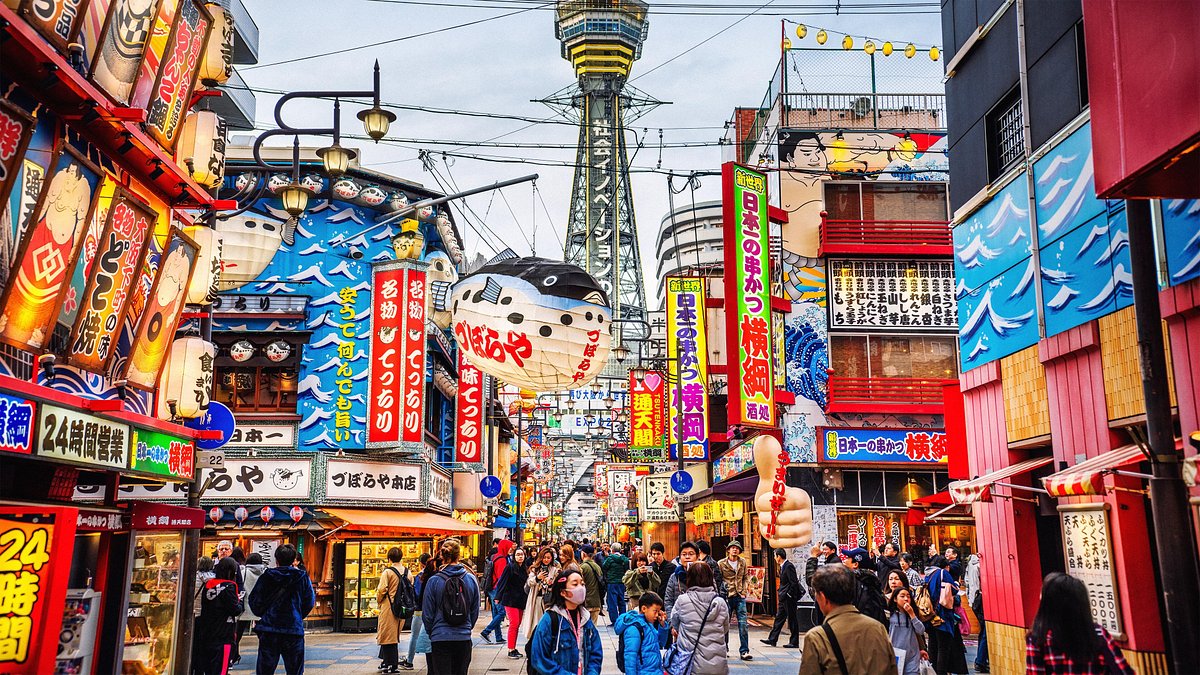
- Account Details
- Newsletters
- Group Subscription
Japan's Golden Week holidays begin amid post-COVID tourism boom, weak yen
Outbound tourists worry currency depreciation means higher costs overseas
TOKYO (Kyodo) -- Japan's Golden Week holidays started Saturday, with train stations and airports across the country crowded with tourists amid easing fears of COVID-19, while the yen's sharp fall against other currencies has made overseas travel more expensive.
"I'm going on a graduation trip that I couldn't make due to the coronavirus pandemic. I want to enjoy a night safari," Rika Uechi, 26, said at Tokyo's Haneda airport before leaving for Singapore with a friend from university.
In the airport's Terminal 2, tourists flooded the international departures hall, which resumed operation in July last year after being shut for more than three years due to the pandemic.
A woman who works in Japan and was returning to Taiwan said, "I'm worried that the cost of souvenirs will be higher (due to the weak yen) when I return to Japan. I've prepared more money than usual."
It is almost a year since Japan downgraded the threat level of COVID-19 to the same category as seasonal influenza and significantly relaxed health measures that had discouraged people from going out.
"It's still hard to take off my facemask (because of the risk of infection). But I'm looking forward to meeting my parents," Chiho Okamura said at Tokyo Station before departing for Hyogo Prefecture, western Japan, with her three-month-old son.
Over 2.6 million people were booked for domestic flights between Saturday and May 6, almost the same level as the holiday period last year, and 490,000 for international flights, up about 20 percent, airlines said April 19.
As for shinkansen bullet train and other rail services, a total of 2.96 million seats had been reserved for Friday through May 6, up 16 percent from a year earlier, according to an announcement by six Japan Railway operators on April 11. The figure represents a 7 percent increase compared with 2018, before the coronavirus pandemic.
Congestion is expected to peak on May 3 and 6, the railway companies said.
Yen tumbles past 158 against dollar on stubborn U.S. inflation
Japan foreign tourists top 3m in march, fueling record spending boom, hotels are new darling of foreign investors in japanese property, yen's decline will inevitably affect confidence in japan's economy, rural japan leads growth in inbound tourism spending, latest on travel & leisure, niseko gin shows japanese resort offers more than skiing, from kyoto to kamakura, japan braces for new surge in overtourism, translation screens a godsend for overseas tourists in japan, sponsored content, about sponsored content this content was commissioned by nikkei's global business bureau..
Nikkei Asian Review, now known as Nikkei Asia, will be the voice of the Asian Century.
Celebrate our next chapter Free access for everyone - Sep. 30
Skip to content
Your browser does not support JavaScript, or it is disabled.Please check the site policy for more information.
National Report
- Korean Peninsula
- Around Asia
- Manga & Anime
The Asahi Shimbun
Travel bug hits millions as Golden Week kicks off in Japan
THE ASAHI SHIMBUN
April 28, 2024 at 13:24 JST

Millions of Japanese started their Golden Week holidays by crowding train stations and airports as they headed to their holiday destinations and hometowns.
Overseas travel was out of the question for many people due to the weak yen.
Predictably, JR Tokyo Station was packed to the rafters as people started fleeing the capital April 27 to spend the holiday period with family members and friends.
Travel departures are expected to reach their peak on May 3, with return trips hitting their busiest on May 5 and 6, according to Japan Railway group companies. The Nozomi trains on Tokaido and Sanyo Shinkansen lines will operate with all seats reserved until May 6.
The platform of the Hokuriku Shinkansen Line, which was extended in March from Kanazawa Station in Ishikawa Prefecture to Tsuruga Station in Fukui Prefecture, was crowded with families holding souvenir bags and other items.
Makiko Awano, 45, a self-employed woman from Tsukuba in Ibaraki Prefecture, and her 7-year-old son were off to visit her eldest son, who is attending senior high school in Kanazawa.
“We will visit a library and a museum, and enjoy delicious food,” she said, adding that she hoped her sightseeing trip would contribute to reconstruction efforts in areas devastated by the Jan. 1 earthquake.
Related News

Hokuriku Line severed after 10 bullet trains flooded

Entire Hokuriku bullet train line to be back on track on Oct. 25

Shinkansen line linking Tokyo and Kanazawa fully restored

Eerily quiet start to Golden Week as Japanese heed call to stay home

Power outage disrupts bullet train services for up to 4 hours

Deliveries via Hokuriku bullet train to include fresh food, parts
Trending Now

Eiheiji temple scanned to make breathtaking virtual twin
April 26, 2024

A rare Hokkaido scene: Camera captures ito in spawning season

Eight injured after earthquake rocks Shikoku and Kyushu
April 18, 2024
Recommended

Stories about memories of cherry blossoms solicited from readers

Cooking experts, chefs and others involved in the field of food introduce their special recipes intertwined with their paths in life.

A series based on diplomatic documents declassified by Japan’s Foreign Ministry

A series on the death of a Japanese woman that sparked a debate about criminal justice policy in the United States

A series about Japanese-Americans and their memories of World War II

Here is a collection of first-hand accounts by “hibakusha” atomic bomb survivors.
Learning English
- Asahi Weekly
In-house News and Messages
- The New York Times
BACK TO TOP
- Site Policy
- Transmission of user information to external service providers(利用者情報の外部送信)
Copyright © The Asahi Shimbun Company. All rights reserved. No reproduction or republication without written permission.

IMAGES
VIDEO
COMMENTS
Day 1: Arrive in Tokyo. Day 2: Take the train to Kyoto. Day 3: Enjoy the highlights of Kyoto. Day 4: Day trips to Fushimi Inari Shrine & Nara Deer Park. Day 5: Remember the history of Hiroshima. Day 6: Miyajima, Himeji, Osaka. Day 7: Take the train to Takayam in the Japan Alps. Day 8: Day trip to Shirakawa-go.
2 weeks in Japan cost for two adults. Flights - Vary wildly depending where you're flying from! From Sydney, Australia to Tokyo Narita or Haneda, these days 1,500 AUD or less for direct is a good deal. Flights are much more expensive since Japan reopened their borders in October 2022. Hotels - USD 2,148 approx / JPY 288,286 All 3-4 star ...
SHIRAKAWA-GO (day 7, day trip) TAKAYAMA (day 7 - 9, 2 nights) KYOTO (day 9 - 12, 3 nights) HIROSHIMA & MIYAJIMA ISLAND (day 12 - 13, 1 night) NARA (day 13 - 14, 1 night) Grab a cup of tea, coffee, or a glass of something stronger, and read on to learn the details of visiting each of these ten highlights of Japan. 🙂.
On our first trip to Japan, we booked in over two weeks and we felt we had really gotten a taste of the country. By the end of the trip, we were ready to go home. Our most recent trip was around 12 nights long and we felt we could have stayed the full two weeks. So my suggestion based on experience is that two weeks is the golden number.
Two weeks is enough time to see some of Japan's main highlights. In this two week Japan itinerary, you'll visit Tokyo, Hakone, Kyoto, Osaka, Nara, Himeji, Hiroshima and Miyajima - it's the perfect amount of time when you're visiting Japan for the first time. If you'd like to spend more time in Japan, please check out my 3 week Japan ...
Akihabara is the best place to be if you like manga and games. It's one of the coolest neighbourhoods in Tokyo and definitely earns a spot on this 2 weeks in Japan itinerary. You'll find the big Sega building and many electronic shops and it's literally a paradise for manga, anime and video game fans! Klook.com.
For your first visit, this is my recommended 2 weeks in Japan itinerary: Tokyo, 4 days. Mount Fuji, 1 day (day trip from Tokyo) Nikko, 1 day (day trip from Tokyo) Kyoto, 4 days. Nara, 1 day (day trip from Kyoto) Osaka, 2 days. Hiroshima & Miyajima, 1day (day trip from Osaka) My two weeks in Japan itinerary focuses on the very best places of ...
Hi guys, such valuable information. Thank you! I am hoping you could help me make a decision on which places to visit, if I am planning to visit Japan for 10 days. I was going through your blog and every place listed in the 2 weeks trip to Japan seems unmissable. Can you please suggest, places to visit for 10 days.
Itinerary 1: For Families with Teenagers, Featuring Hands-On Activities. 3 nights in Tokyo. 1 night in Takayama. 1 night in Kanazawa. 2 nights in Kyoto (side trip to Nara) 1 night in Hiroshima. 4 nights in Osaka. This 2-week Japan itinerary is excellent for families with teenagers.
Two weeks is the perfect amount of time for your first trip to Japan. You'll be able to explore this wonderful country from the mountains to the sea, wandering through chaotic neon-lined streets and serene Zen temples, soaking in onsens and filling yourself with more ramen and sushi than you ever thought possible.
Converting Japanese Yen to US Dollars is really simple. 100 Yen is Equal to about $0.70 USD. 1000 Yen is Equal to about $7 USD. Bills from the ATM or from an Airport Money Exchange come in 10000 , 5000, and 1000 increments. The coins come in 500, 100, 50, 10, 5, and 1 increments. Most places in Japan accept cards.
2 How to spend 2 weeks in Japan. 2.1 Day 1: Arrive in Tokyo. 2.2 Day 2: Day trip to Kamakura. 2.3 Day 3: Exploring Tokyo. 2.4 Day 4: Travel to Kyoto. 2.5 Day 5: Fushimi Inari Taisha Temple in Kyoto. 2.6 Day 6: More Kyoto temple exploring. 2.7 Day 7: Travel to Hiroshima. 2.8 Day 8: Ferry to Miyajima Island.
» See more details of this trip. 2. Self-Guided Two Weeks in Japan. If you want to plan your own trip and be in charge of your own trip, then a self-guided tour is the way to go. With a good plan of action, your Japan 2-week itinerary will run smoothly and provide you with a stunning overview of this beautiful country.
Day 2 - Explore Tokyo - Tour. Day 3 - Explore Tokyo. Day 4 - Disneysea/Disneyland or day tour to Mt Fuji. Click here to check out our detailed article on the best day tours to visit Mt Fuji. Day 5 - Explore Tokyo. Day 6 - Explore Tokyo. Day 7 - Catch train to Kyoto (2:30 hrs), Gion evening tour. Day 8 - Explore Kyoto.
Alternative Japan 2-week itinerary. With all that in mind - if you weren't desperate to see the snow monkeys or try your hand skiing, then this could be an alternative itinerary: Tokyo - 2 nights. Osaka - 2 nights. Koy San - 1 night. Miyajima - 1 night (staying in Hiroshima and doing Miyajima as a day trip)
Get ready for lots of nature on this 2 weeks in Japan itinerary! How to Travel Around Japan Japan Rail Pass. The JR Pass is an extensive travel pass covering both Shinkansen -bullet trains-, local trains, buses, and ferries all over Japan. It is, for most types of itineraries, the best way to get around, especially if you are planning to go on day trips, or cover long distances.
For maximum freedom and flexibility, a rail pass is a great way to go. The best pass for visitors is the Japan Rail Pass or JR pass, an all-inclusive ticket covering almost any Japan Rail train in ...
Sample Trip: 2-Week Japan Itinerary. If you're planning on visiting Japan for around two weeks, you're in the right place! This sample 14-day Japan itinerary includes a unique mix of the country's best destinations, from Tokyo to Kyoto and beyond. Of course, even if you're traveling for more (or less) time, you can easily modify this ...
DAY 6: Day trip to Hakone. DAY 7: Travel to Kyoto. DAYS 8 - 10: Kyoto. DAY 11: Day trip to Nara. DAY 12: Day trip to Hiroshima and Miyajima. DAY 13: Day trip to Himeji and Osaka. DAY 14: Day trip to Kanazawa. Eat the best meal of your life in Osaka and marvel at Himeji Castle, one of Japan's finest.
Japan Itinerary for a two-week trip. This Japan itinerary starts in Tokyo with a day trip to Kamakura. Then it's headed up north to the mountains to visit Takayama and Shirakawago. Later, arrives Kyoto before venturing west to Osaka and Hiroshima. Finally, a day trip to magical Nara. Japan two week itinerary for first-timers. Tokyo (4 nights)
In a two-week Japan trip, divide your days among Tokyo, Kyoto, Osaka, and Okinawa for a highlights tour, or indulge in culinary delights with street food, tea ceremonies, and Michelin-starred dining. Those seeking traditional Japan should not miss Honshu's historical treasures, while off-the-beaten-path explorers will find solace in Izumo and the Goto Islands. Meanwhile, active travelers can ...
Hiroshima Peace Park is necessary stop on any Japan trip, be it two weeks in Japan, 1 week in Japan or otherwise. With this being said, I find the city-proper of Hiroshima, the largest in the Chugoku region, somewhat underwhelming, even if its streetcars are charming and its okonomiyaki pancakes are delicious. For my money, the biggest draw of spending 2-3 days in the Hiroshima area after you ...
My main takeaway from my two-week trip, however, is simply how everything is better in Japan: from self-flushing toilets and exceptional hospitality, to the highest standard of foods - beyond ...
Day 4: Journey to Takayama, known for delicious Hida beef. You'll spend a good chunk of the day getting to Takayama, which is best accessed on Japan Rail (JR) via Nagoya. The ride there is beautiful, most of it alongside a deeply blue river. (Sometimes there's also a direct bus, though, so be sure to check!
A visit to the busy streets of Tokyo or the tranquil slower pace of Kyoto necessitates staying connected for an optimal and stress-free experience in Japan. With an eSim or Pocket Wifi, you'll be able to stay in the loop and navigate easily with information at your fingertips, enhancing your overall travel experience.You also won't worry about language barriers much because you'll be able to ...
Hi, We are looking to travel to Japan for the first time at the end of next March with another couple, I wondered if anyone could help with our itinerary?. Currently we are thinking: 3n Tokyo. 2n Hakone. 5n or 7n Kyoto (how long do we need? we're planning to base ourselves here and do day trips). 3n Mijayami (1 day visit to Hiroshima). 3n Alpes - not sure what to do here, tour Takayama ...
TOKYO (Kyodo) -- Japan's Golden Week holidays started Saturday, with train stations and airports across the country crowded with tourists amid easing fears of COVID-19, while the yen's sharp fall ...
Travel departures are expected to reach their peak on May 3, with return trips hitting their busiest on May 5 and 6, according to Japan Railway group companies. The Nozomi trains on Tokaido and ...